MINE TRAIN THRU NATURE'S WONDERLAND (RAINBOW CAVERNS MINE TRAIN)
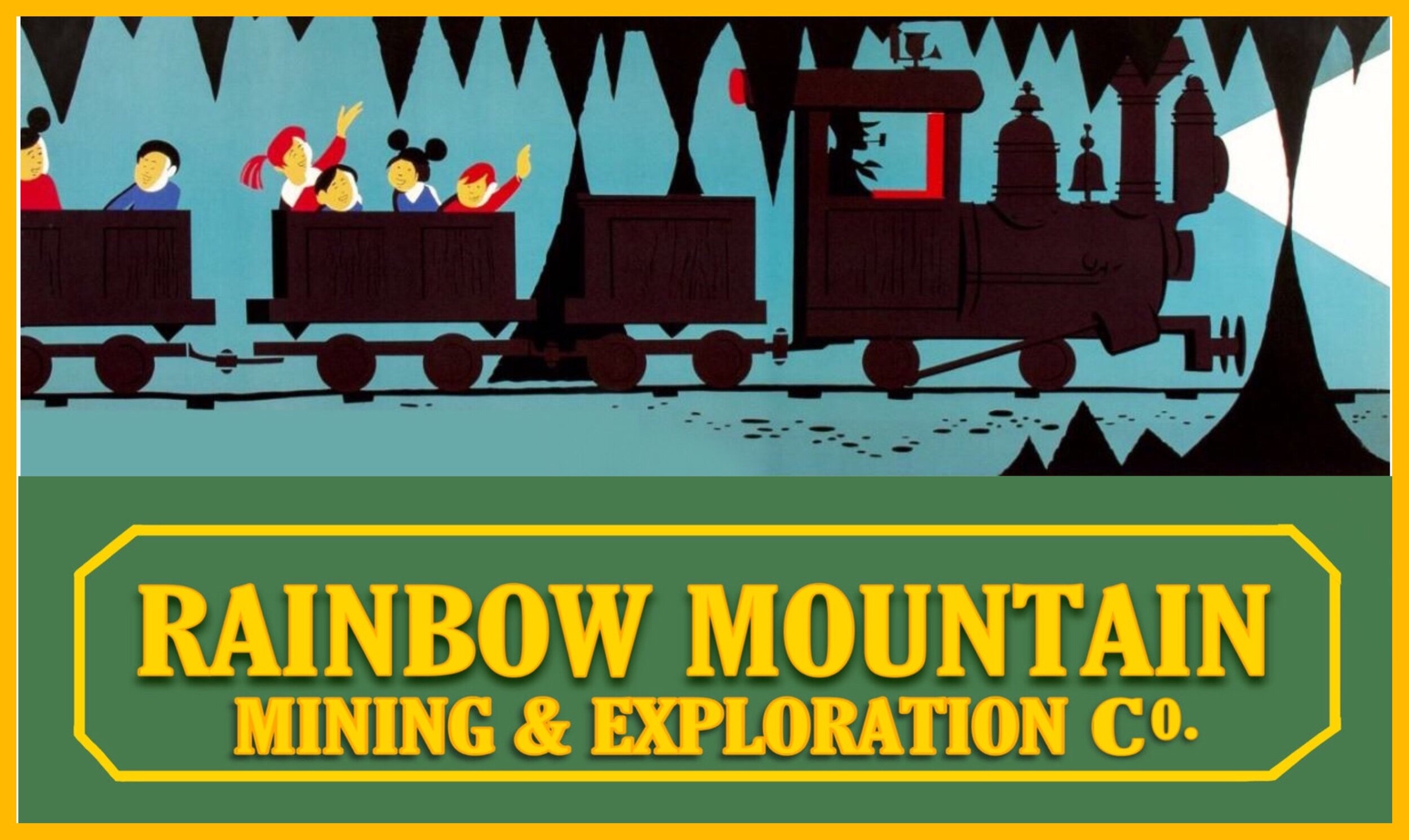
Rainbow Caverns Mine Train (July 2nd*, 1956 - October 11, 1959)
*Some sources (i.e. “Disneyland Rides & Attractions and Attendance Report” Fiscal Year 1981) cite July 1st, 1956
“HOWDY FOLKS! Welcome to the little mining town of Rainbow Ridge - the gateway to Nature’s Wonderland.” When Disneyland first opened there were only a few ways to explore this portion of Frontierland - all of them by horse or mule. There were Stagecoaches, Conestoga Wagons, Yellowstone Coaches, and mule trains which traversed seven acres of Disneyland to bring it all to life.
“New Pages of the Disneyland Story”
Now, on the eve of Disneyland’s first day of operation, Walt had promised that “Disneyland will never be completed. It will continue to grow, to add new things, as long as there is imagination left in the world.” So it must have seemed strange to some when a year later (during 1956), “a few of Disneyland’s fabulous rides closed temporarily, [when] construction operations in Frontierland… made it necessary to shut down the three ‘Painted Desert’ rides - the Stage Coach, the Mule Pack Train and the Conestoga wagon,” according to “The Disneyland News” (Extra Edition). Only a few days prior, at a meeting of the Disneyland Merchant's Association (held January 25, 1956), a momentous announcement was made: “All horsedrawn vehicles in the Frontierland area will be shutdown for approximately two months, during the redesign and reconstruction of this area. This will be a whole new development to increase ride capacity. We are building a mountain to be called Rainbow Mountain. This will be seen from the River and the Mark Twain. The existing corral and Black smith Show will be the entrance to a new ‘Mine Train’ ride. This will be an old fashioned Mining Train with 6 open cars. The engine will look like a real engine. The ride will go through a canyon out into the desert; then into a Rainbow Mountain where you tunnell with stalagmites and stalactities and three different water falls of different colors, joining in the river. This ride will take about 6 minutes. One of the most interesting rides we have in the park is the True Life Boat Ride. Me hope to make the ‘Mine Ride’ an equal to that one.”
Though Walt set the “Painted Desert” budget at $400,000, nearly $500,000 of improvements (of a total $1.5 million total Park investments for 1956) brought major developments and “reconditioning” to the Painted Desert area of Frontierland! A new town sprang up in the hills overlooking Frontierland, newly rails were laid, and the opportunity arose to head past rushing rivers and into the uncharted caverns and caves of the Painted Desert! “Towering above the scene, Rainbow Mountain provides a snow-capped background for all this action,” according to the “Disneyland 1st Anniversary Souvenir Pictorial,” published 1956.
As some of these new Frontierland attractions appeared on page 5 of The Disneyland News (published June of 1956), the Rainbow Caverns Mine Train began to prove the truth of Walt Disney’s promise of an ever-expanding Disneyland! Similar to how Walt Disney’s True Life Adventure series spawned True Life Adventureland, Nature’s Wonderland (and its refurbishment) were directly influenced by films released from 1950 to 1954. But while those films were “two-dimensional in scope, the Theme Park surrounds the guests with the story and impacts all of their senses”, according to “Disney By Design” Tour scripts. Artists like set designer Wilson “Bill” Martin (who had left 20th Century Fox, to work on Walt Disney Productions’ Disneyland project) was influential in the design of Nature’s Wonderland, his talents as art director applied to the attraction.
Though total investment for Disneyland had now reached $18,500,000, the rich story of the Mine Train was among the attractions that were projected to add a 40% ride capacity to the Park!
Today, our story begins at a junction in the small mining town of Rainbow Ridge. Instead of saddling up atop a dusty pack mule, we’ll load into a mine train gondola for what would typically be a seven minute excursion, en route to a “wondrous” destination tucked deep in the earth! A place where (according to Holiday magazine, published Summer, 1958), “seven multicolored waterfalls cascade and stalactites and stalagmites form beautiful patterns.” However, today we won’t look at our watches, or worry about the uniform “trip time.” We won’t heavily rely on the pre-recorded voice-over narration of Dallas McKinnon, or the script. Instead, I’ll be providing a custom spiel along our journey, which will be of an undetermined time length.
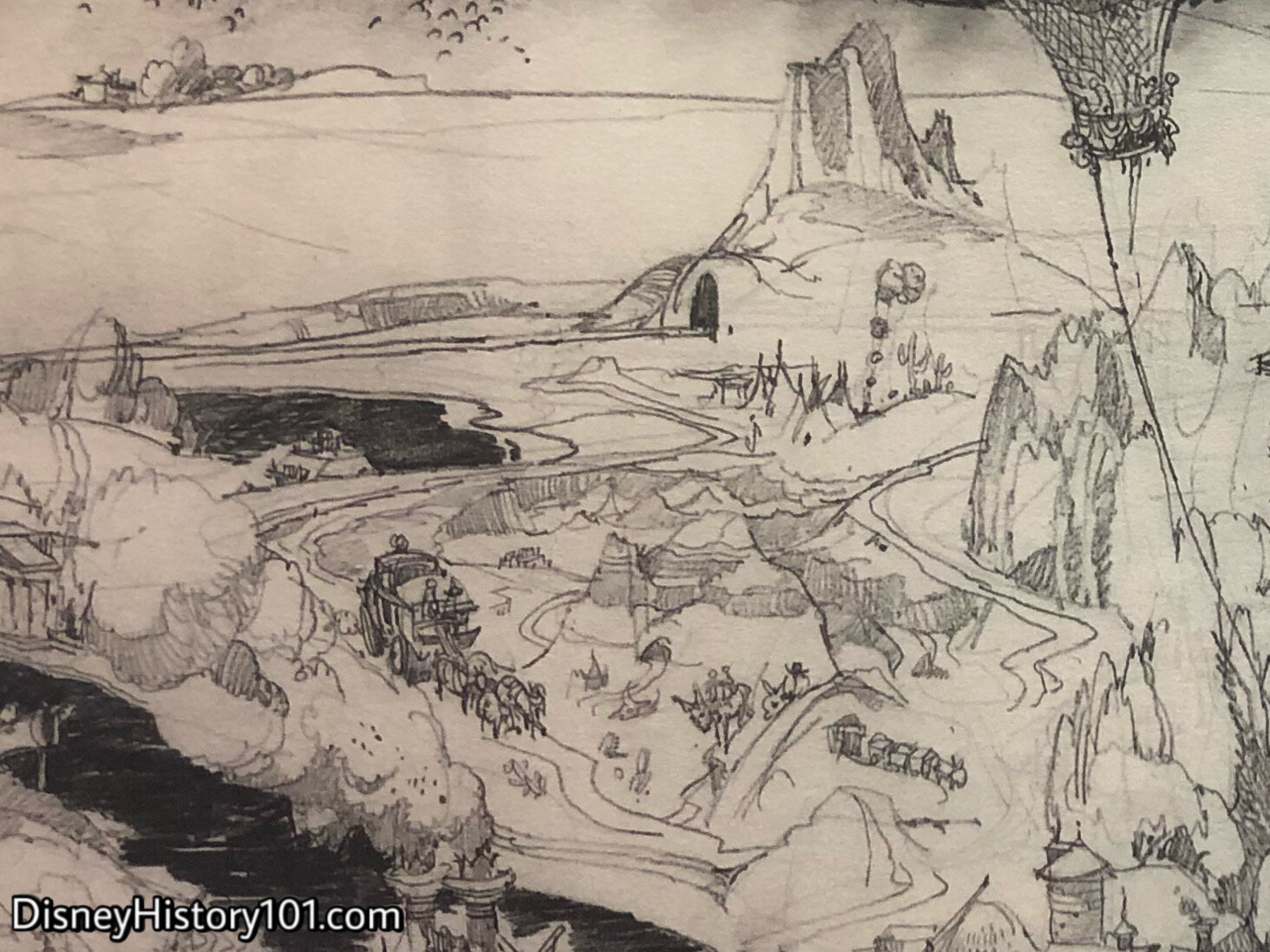
Herb Ryman "Aerial Over Disneyland" Concept Drawing Excerpt, (c. 1953 - 1955)
Herb Ryman hand-inked, and hand-colored one of the original Disneyland concept drawings between September 26th and 27th, 1953. Subsequently, hundreds of drawings were made, based on the original (with constant modifications being made, as Walt Disney’s “Disneyland” developed). Some of these viable project Concepts (as above), were supported by a well-developed business case and built expectation.
“The Painted Desert” (the name used to identify this region during 1955), appeared on the early drawings of Disneyland that were shown to potential investors as early as 1953. However, it seems (as depicted in the drawings) that it was only meant to be traversed and explored by way of a Stagecoach or Mule Train. The “The Disneyland Story” describes the scenery of the “Painted Desert” : “As you go into the Painted Desert you will pass the Indian encampment, go through a Pine Forest, and Ford a stream. When you get to the Painted Desert you will see the things you usually find there, such as the beautiful cactus plants, trees, probably the water hole with the ‘poison sign’, the skeleton of a steer, and other appropriate dressings of the desert. As well as the stage coach ride, you will be able to take the Conestoga Wagon and Mule Pack ride into the Painted Desert.” For a time, it does not appear that a Mine Train was considered an option to explore the Painted Desert.

Official Guide to Disneyland Illustration, 1956.
Above is a Walt Disney Artist's conception of a section of FRONTIER-LAND in Disneyland, featuring the awe inspiring Mine Train Ride, the exciting Stagecoach and Mule Pack Rides, where one can journey through the many fantastic sights of the Rainbow Desert and Rainbow Mountain areas, returning with a view of the famous Mark Twain River Boat and Tom Sawyer Island. Just outside the mining town of Rainbow Ridge sat the boarding station for the pack mule train. Now, there were “three wonderful ways” to enjoy the Painted Desert at Disneyland.
This illustration (created for Guide Books and merchandising) gave us a clear view of the ‘natural wonders’ that await Mule Trains, Stagecoahes, and little dark-green Mine Trains in the “Rainbow Desert” (the name used for this region from 1956 to 1959)! If you look real careful, you can see the destination reserved for the passengers of mine trains. A small cutaway on the side of Rainbow Mountain, reveals a preview of the magnificent Rainbow Caverns!
Elevation drawings were still being prepared as late as May of 1956, to assist in land grading, and the integration of the paths of the “Stage Road,” the “Mule Overpasses” and “Mule Crossings,” and railroad tracks. Soon, the “bandsawn” shadowy forms of Rainbow Caverns, and pipe water sources were installed to flow over “metal cones” for form. Then, the headline of “The Disneyland News” (Vol. 2, No.2 ; August, 1956) heralded the “Mine Train Ride Now Open!”
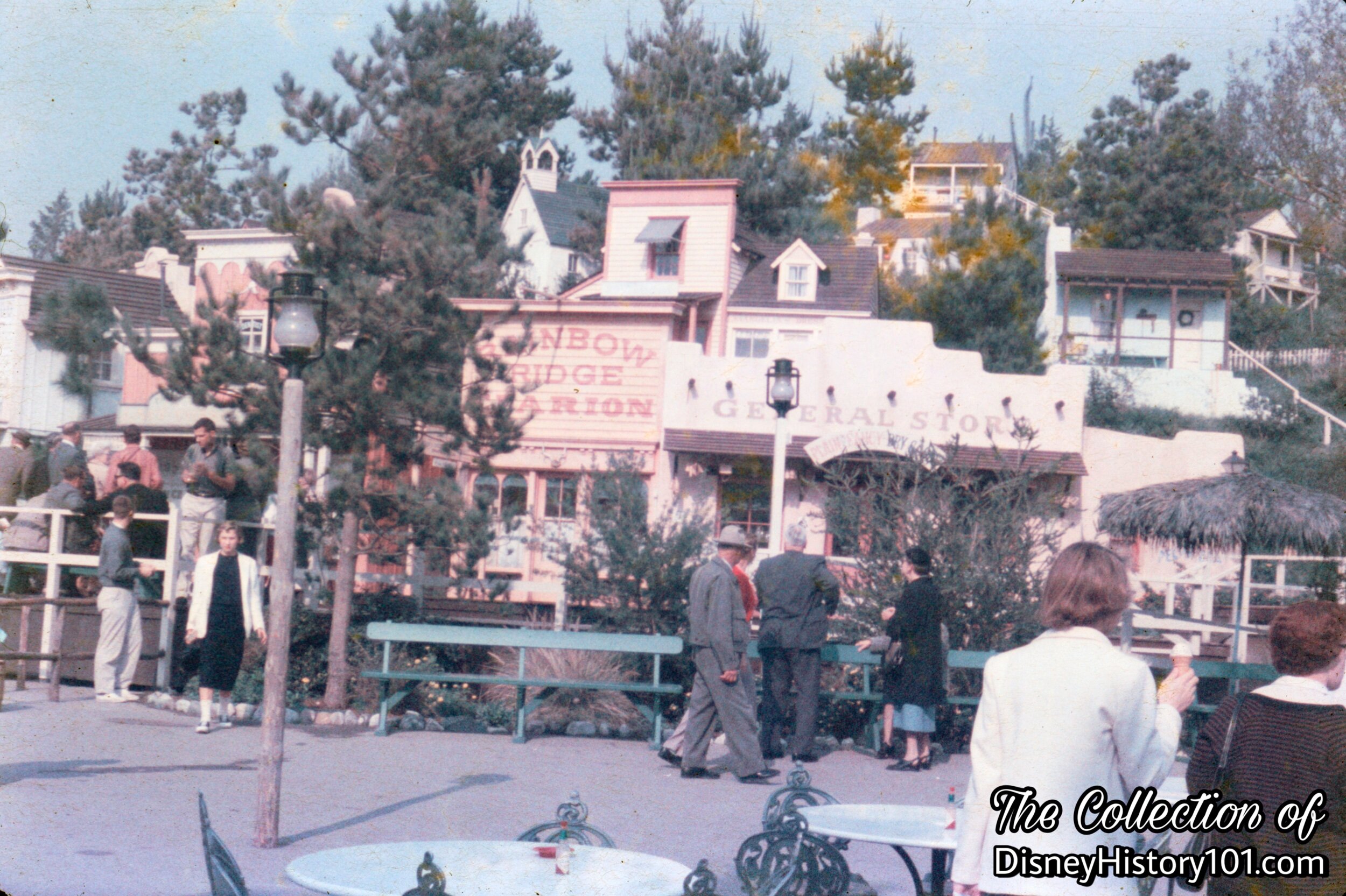
The Little Mining Town of Rainbow Ridge From Casa de Fritos' Patio
The Town was built in miniature with forced perspective on the side of Rainbow Mountain.
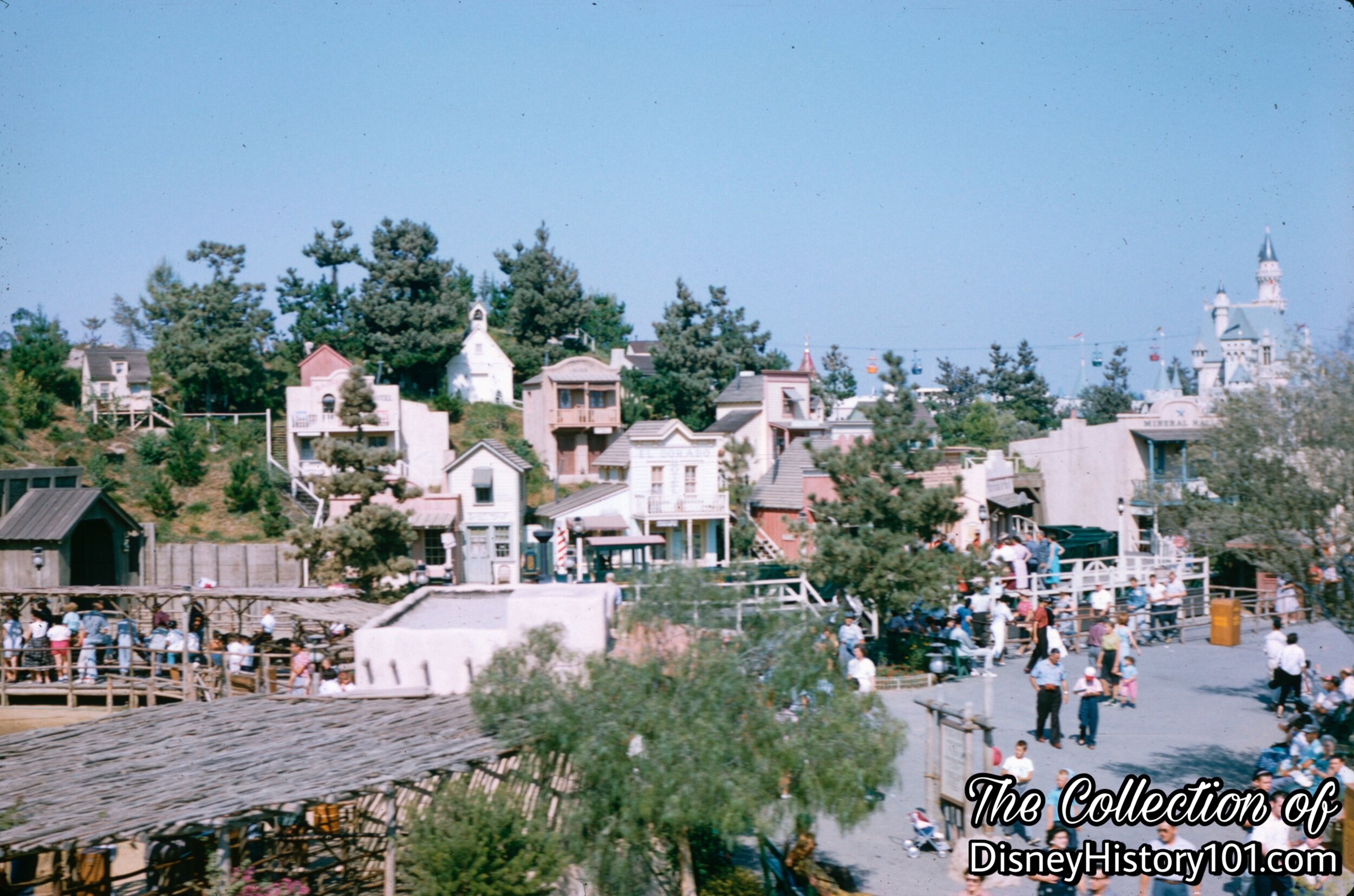
The Little Mining Town of Rainbow Ridge
The Rainbow Caverns Mine Train was one of several exciting attractions debuting during 1956, that increased ride capacity (with all it’s gondolas). By the release of the “Disneyland 1st Anniversary Souvenir Pictorial,” it was reported that “new rides have added some 40 percent to the Park’s ride capacity,” listing “the Rainbow Caverns ride” among the contributors. Owing to this, one day in August of 1956 saw a peak total of “197,547 individual rides” enjoyed by Guests (according to a letter from Walt to Ward Kimball, dated January 23, 1957).

(Pictured above : Adult & Child Rainbow Caverns Mine Train Tickets)
Our “tickets for today’s adventure”, and a rare view of the magnificent Rainbow Caverns tickets (pictured above), come courtesy of collector and historian James Keeline. Further, James is “just the ticket” when it comes to the facts about these rare Rainbow Mountain attraction admission tickets!
What were the earliest Disneyland tickets like?
“In the first few years of Disneyland the tickets sold inside the park were often for specific attractions. There were also tickets sold, perhaps at a later date, with A-B-C-D-E.”
What was the original price of one admission to the “Rainbow Caverns”?
“We can fine tune it by noticing the adult price…on the ticket…(50¢). The price stayed the same for a few years but the lettered individual tickets started to appear in this era too.”
Why are these (previously pictured) tickets labeled ‘Rainbow Caverns’?
“The region was initially called the ‘Painted Desert’ [in 1955]. It was redeveloped to add the Mine Train and the name became the ‘Rainbow Desert.’ The desert portion was called the ‘Living Desert’ for the Nature's Wonderland era.”
What do those punched holes (in the previous photo) indicate?
”The hole in each ticket was part of the distribution mechanism. ‘VOID’ was used when they wanted to have tickets to put on display in the park ticket booths if people wanted to trade them in towards passports, etc.”
Later, admission during 1958 was one “jumbo” “D” coupon (the price of 35 cents, for one child), the same as the Jungle Cruise, Indian War Canoes, or the Tom Sawyer Island Rafts.
Ticket inspectors - you’ve got to hand it to them! After you hand your ticket to them, they place it in the Ticket Box. The Ticket Box was usually made of fiberglass or metal and supported a ticket bag or container, and in which torn admission coupons are de-posited. The Ticket Bag was a canvas liner of a ticket box used to collect torn admission coupons. The Ticket Container was a plastic container which fit inside a ticket box (in place of a ticket bag) and was used to collect torn admission coupons.
Our Rainbow Caverns tickets will be taken by the Ticket Receptionist, on the Rainbow Ridge Boarding Platform, before embarking on our journey.
People like Dick Tryon (Manager of Ticket Sales, 1955-59) would have somewhat familiar with these tools and procedures.
Now, we’re ready to “get back on track” and take a ride!
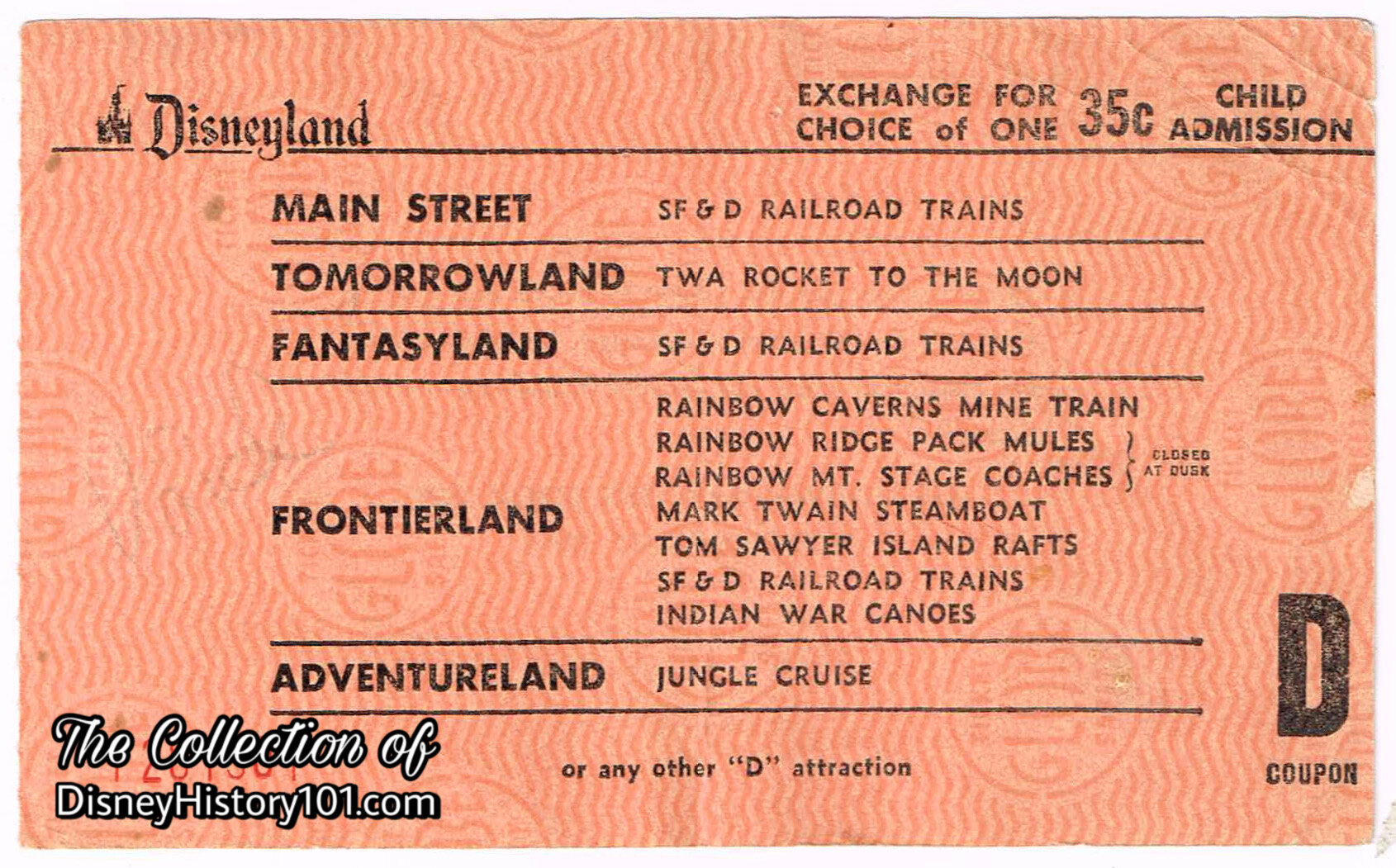
Disneyland “D” Adult Admission Coupon (Value 35¢)
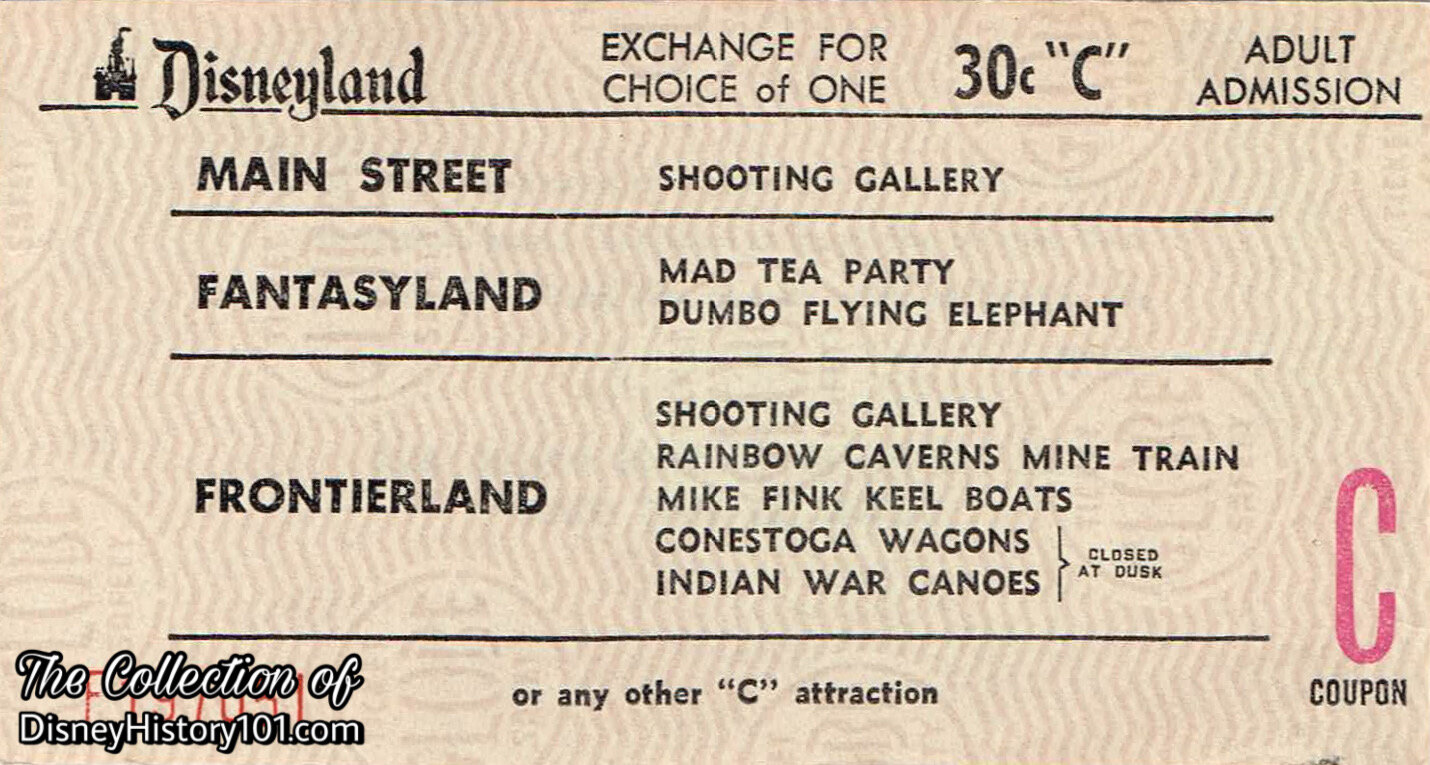
Disneyland “C” Adult Admission Coupon (Value 30¢)
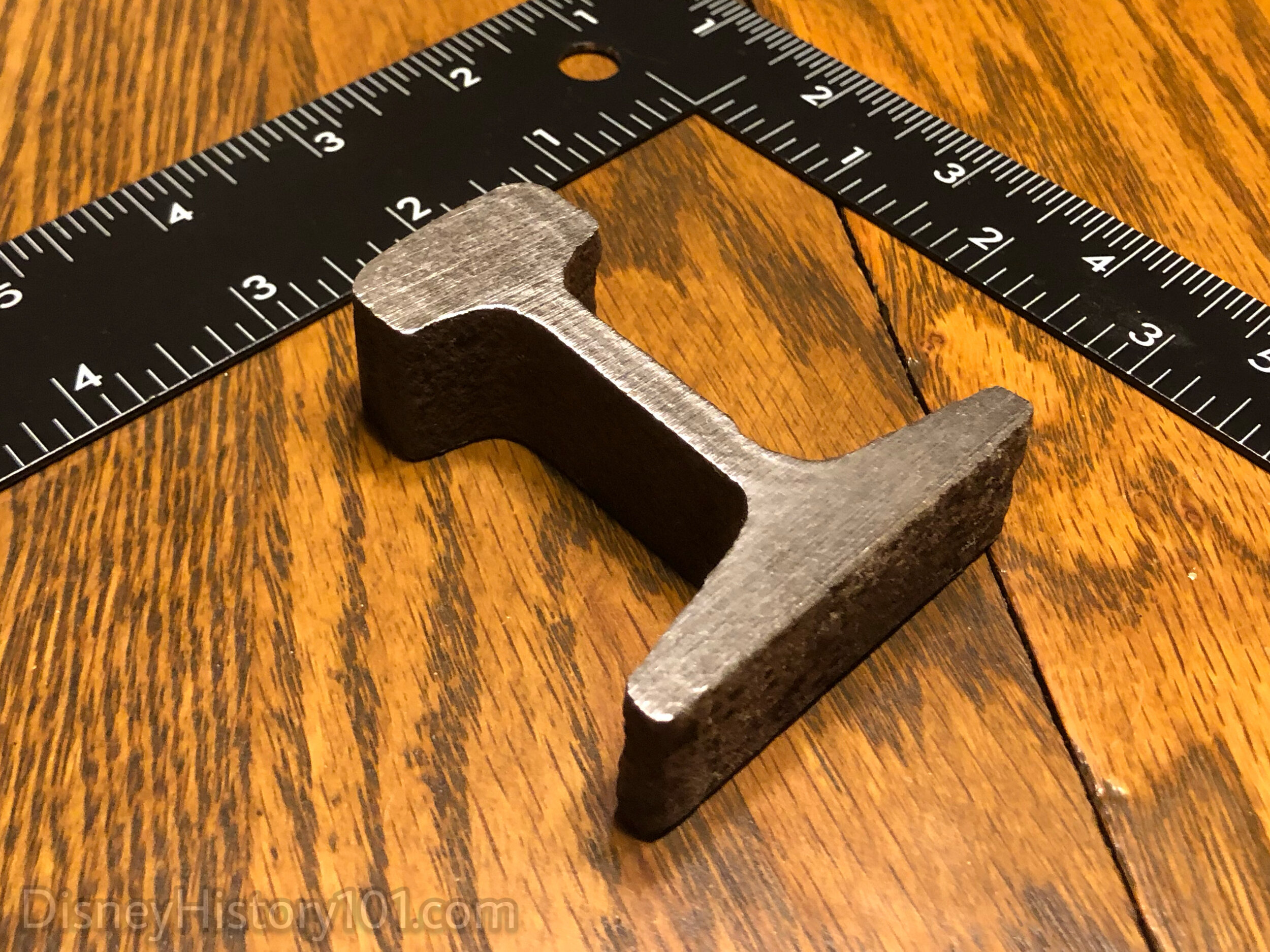
Narrow-Gauge Rail, Courtesy of James Keeline
Can you believe that 30” rail similar gauge to the one pictured, supported the weight of those mine trains and gondolas that ran thru the Painted Dessert (and the rest of Nature’s Wonderland)? The weight of the rails was roughly 20 pounds per yard.
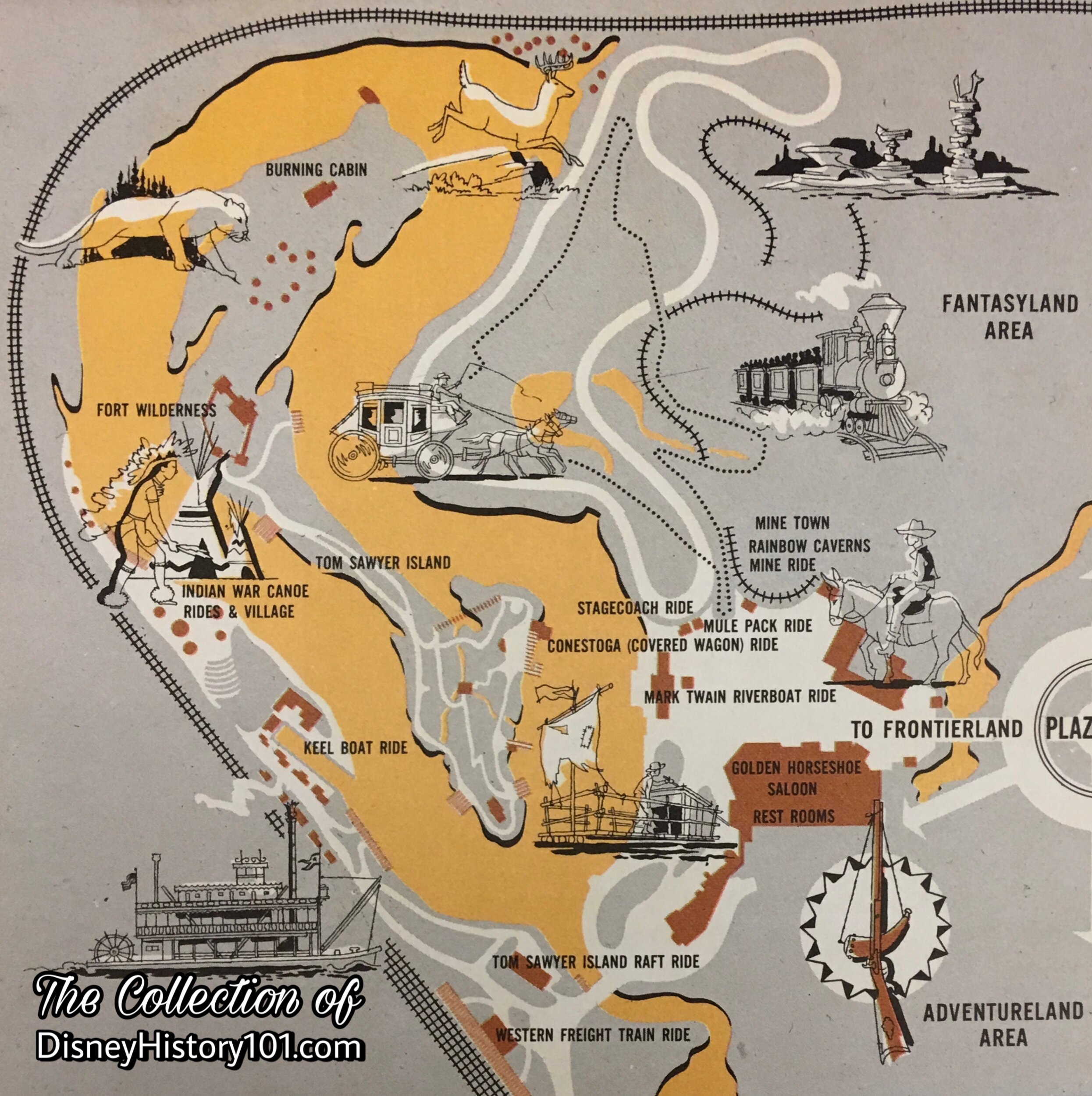
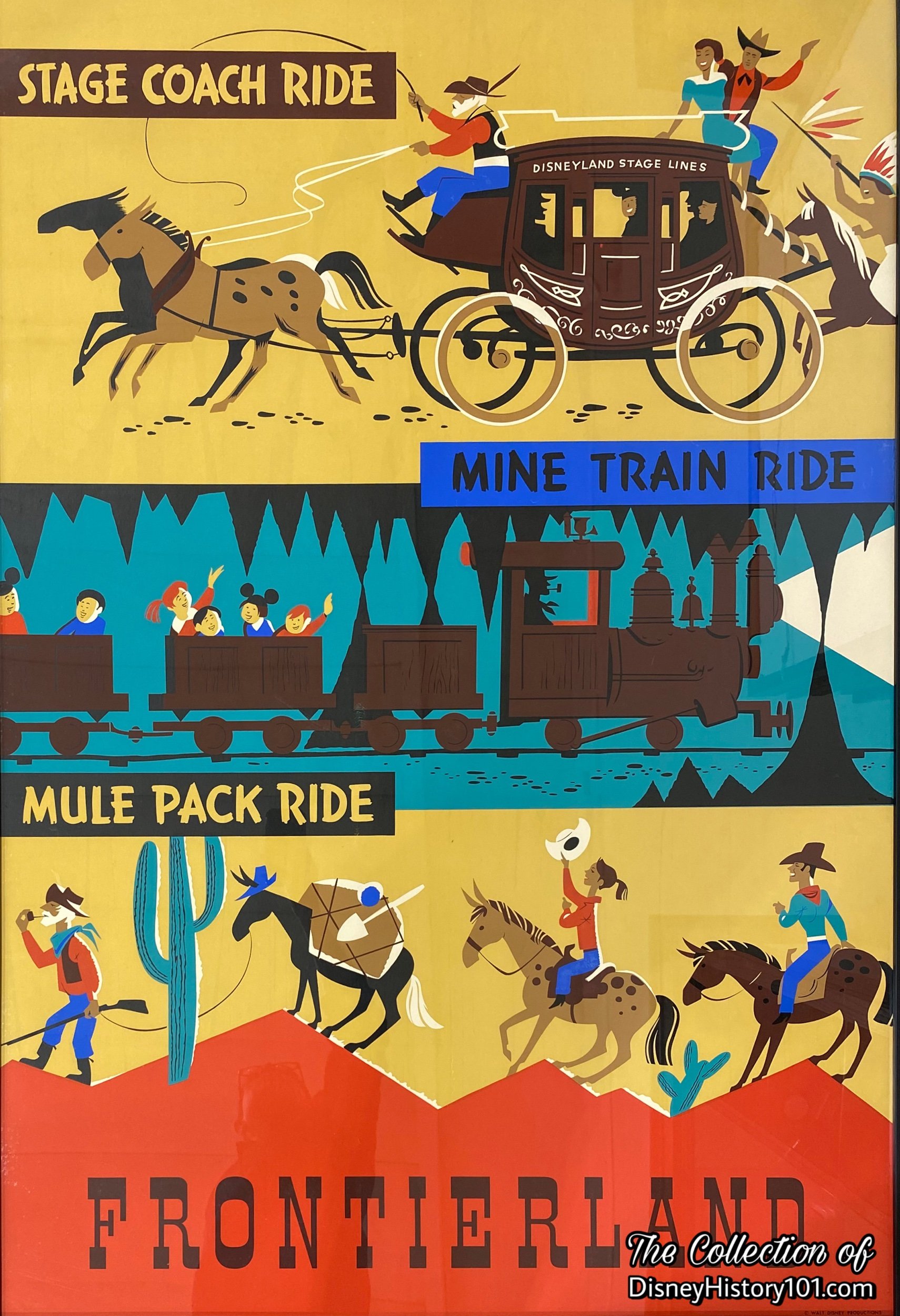
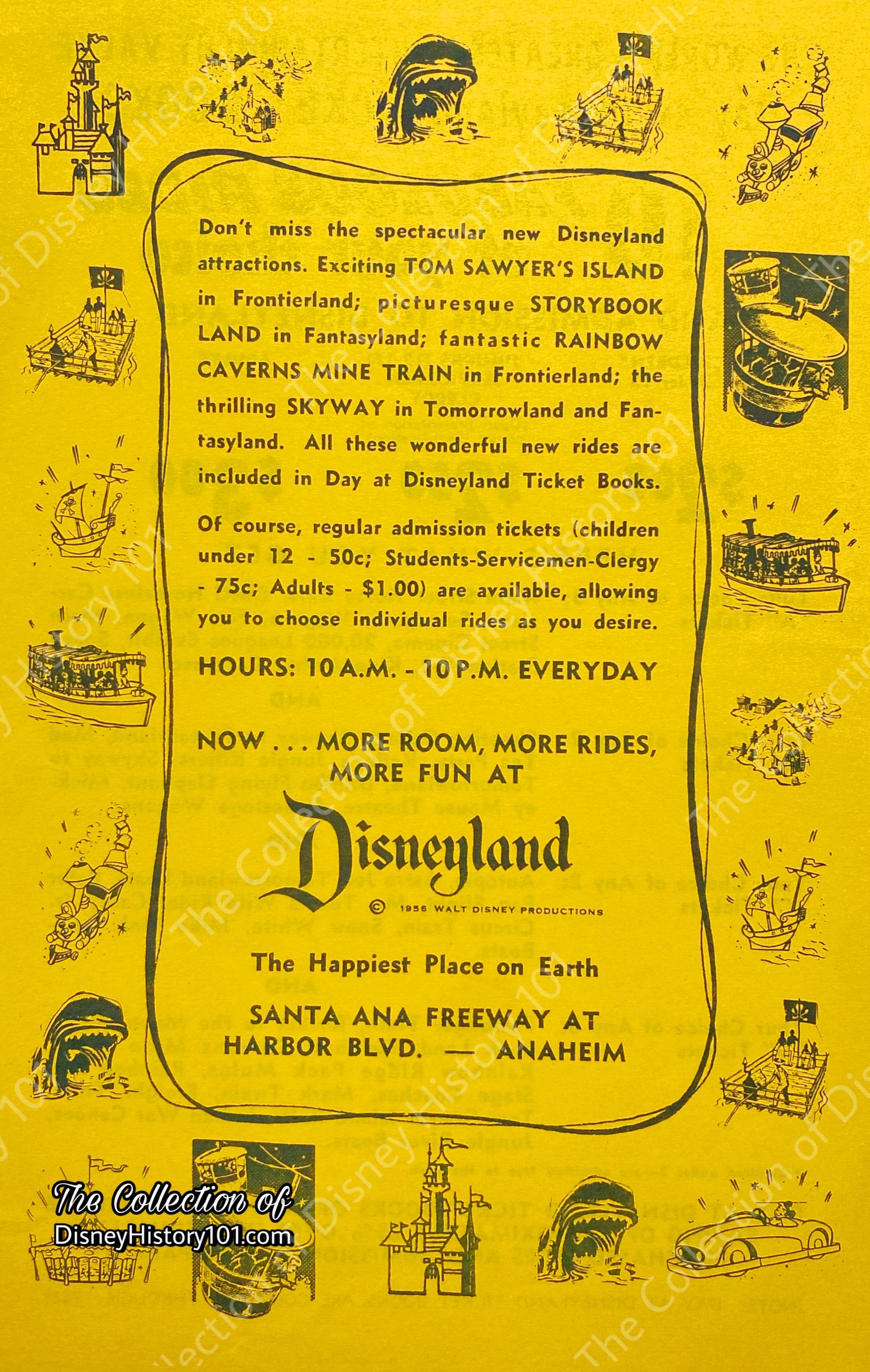
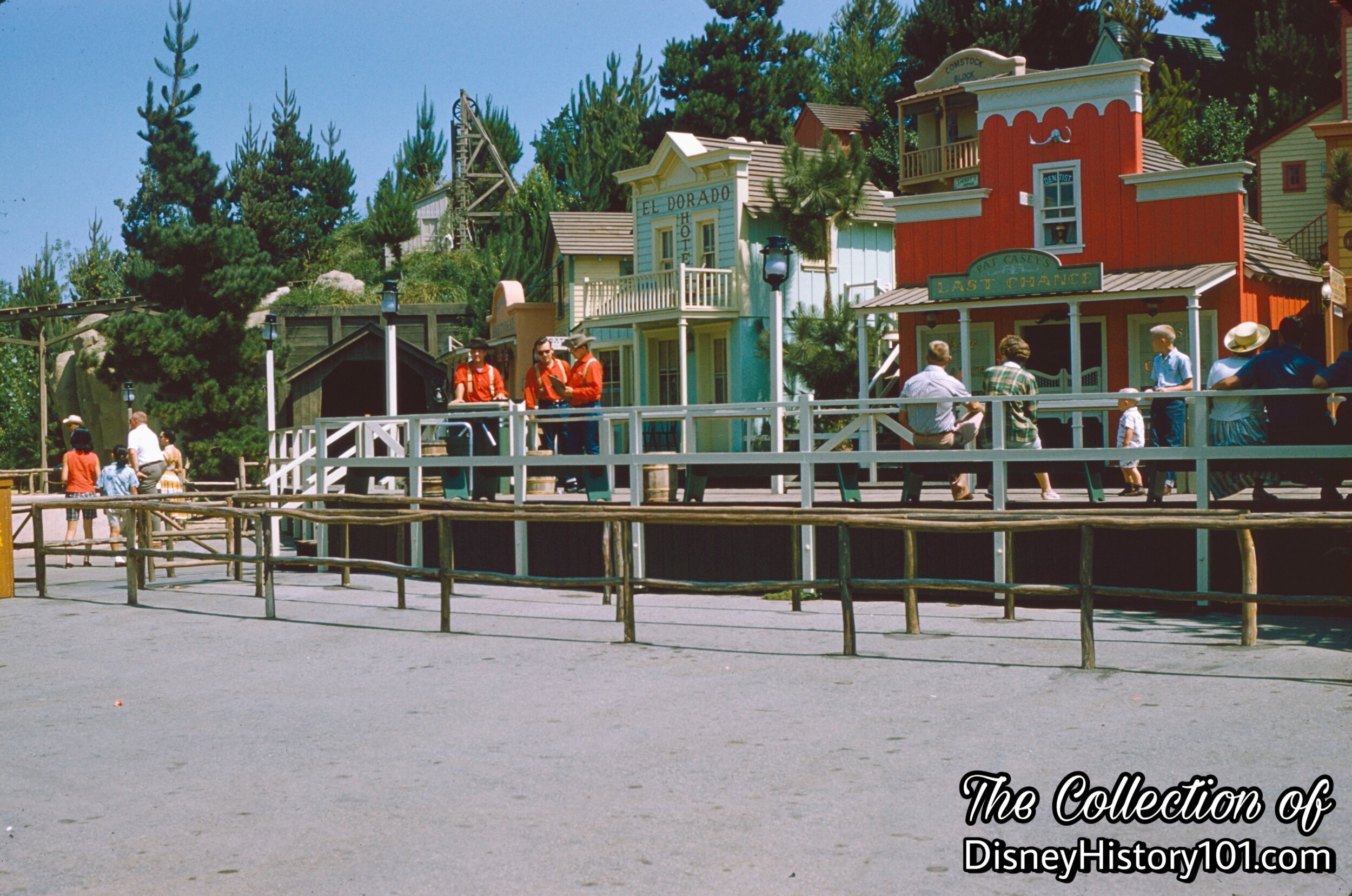
A Host of Ticket Hosts, Station Hosts and Engine Operators near the Audience Waiting Area (Guest Control queue) at Rainbow Ridge, 1958.

The Little Mining Town of Rainbow Ridge
Guests board the dark green gondolas.
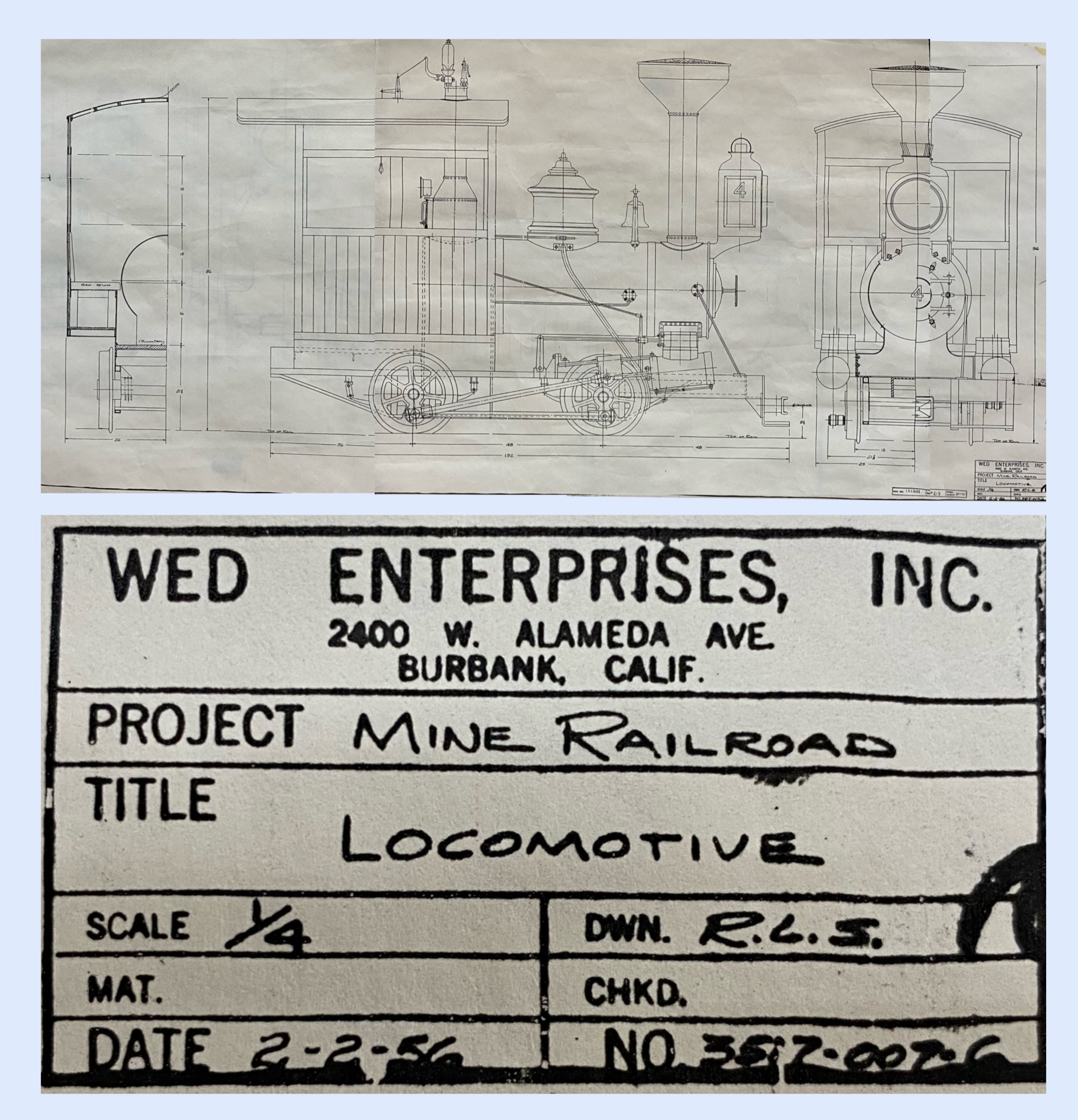
The Rainbow Mountain Mining & Exploration Co.
(Mine Ride-Frontierland) had two engines. Each engine was designed and built at the Walt Disney Studios under the supervision of machinist Roger Broggie, Jr. (who understood narrow gauge railroads, because he had his own at home and helped fabricate Walt Disney’s Lilly Belle engine)!
Mine Train historian James Keeline shares some of the likely inspiration for these iconic locomotives :
“The locomotive that is the most likely inspiration for the Mine Train was the 0-4-2 called the Joe Douglass. It was used to help build the dam at Lake Arrowhead. Afterward it was left as a static display. The Broggie family notes that they visited this. It was moved at some point to the La Paz guest ranch in Palm Springs, CA. It is possible that Walt Disney saw it there during one of his visits to his property on Smoke Tree Ranch which was nearby. The locomotive was later donated to the Nevada State Railroad Museum in Carson, NV. The similarity in shape and the connections with the Broggie family, and perhaps Walt, make this the most likely inspiration when the Mine Trains were being designed.
The particular design of the locomotives was a little different from what was normally used. Typically, a small "pony engine" would have a saddle tank over the boiler….Note that Big Thunder (and the Calico Mine Train) use saddle tank versions….There was a family member of someone whose father worked for Mancha (later Goodman) who supplied the electric mining locomotives which were used.”
Each engine was powered by 530 amp electric batteries.
Each engine had a capacity of 64 Guests.
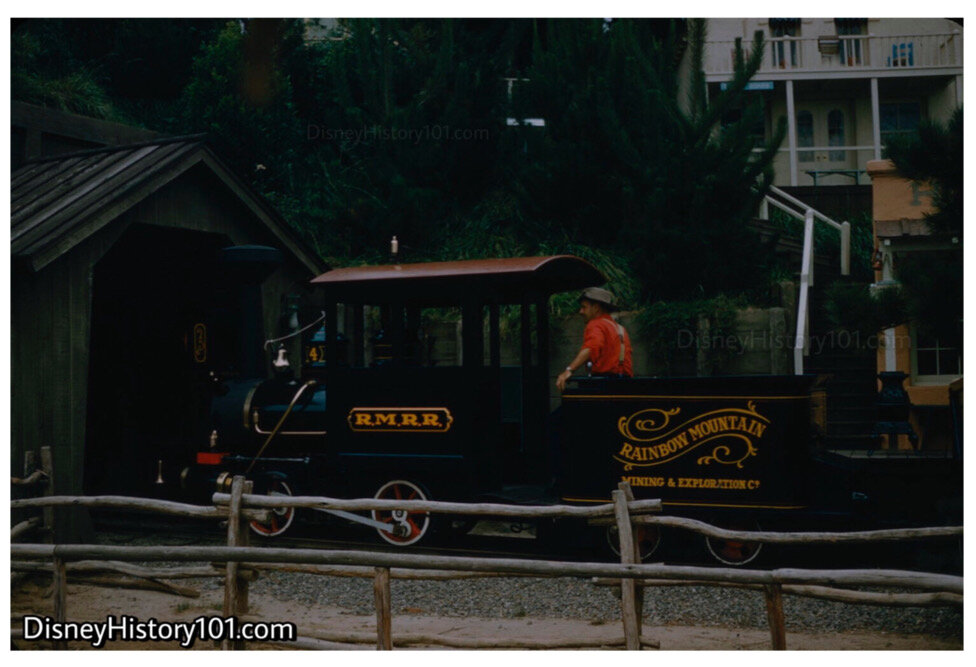
"Rainbow Mountain Mining & Exploration Co." Train Engine, c. 1959
Originally (from 1956 to 1959), dark green locomotives (powered by 530 amp electric batteries) pulled the open ore cars of Rainbow Mountain Mining and Exploration Company. These transported a capacity of 64 Guests through the Painted Desert and mother-lode country of the old West, through Rainbow Caverns with its multi-colored fountains and falls.
“The climax for the ride was the trip through Rainbow Caverns. However, to give it more of a reason to be there, they came up with the name ‘Rainbow Mountain’ to describe the area where the mine (and Rainbow Caverns) was located.”
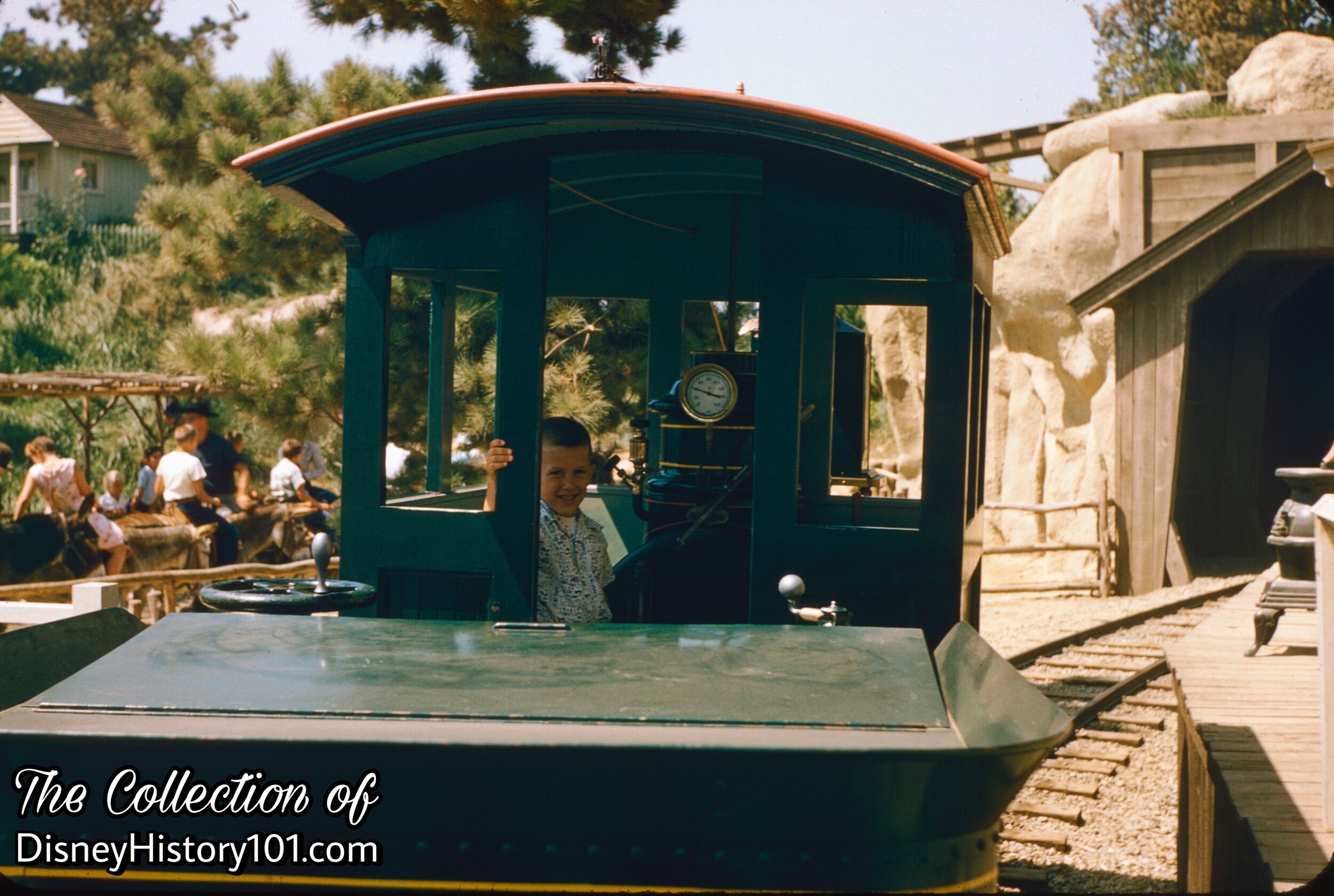
"Rainbow Mountain Mining & Exploration Co." Train Locomotive and Tender
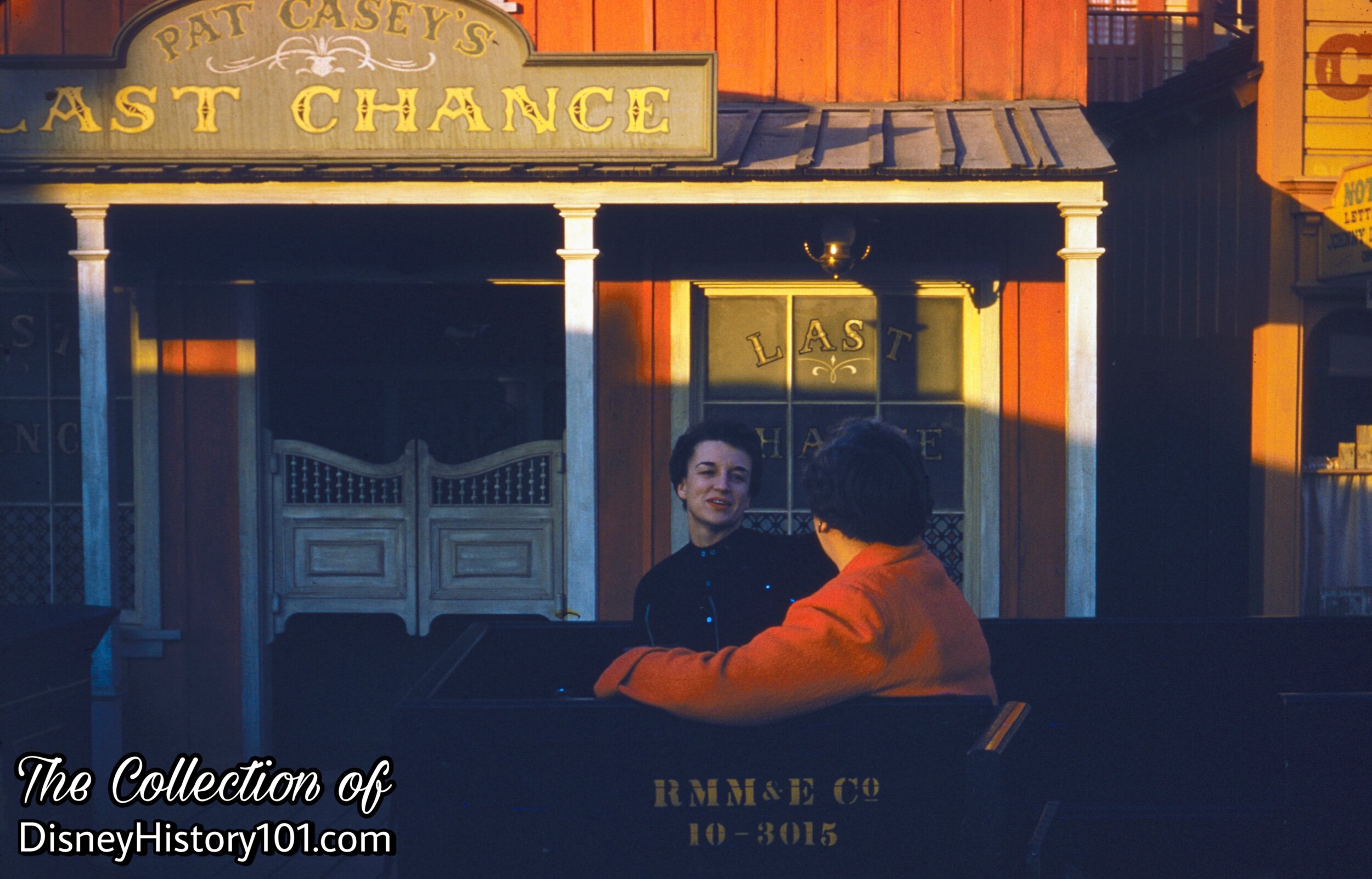
"Rainbow Mountain Mining & Exploration Co." Train Gondola and Guests
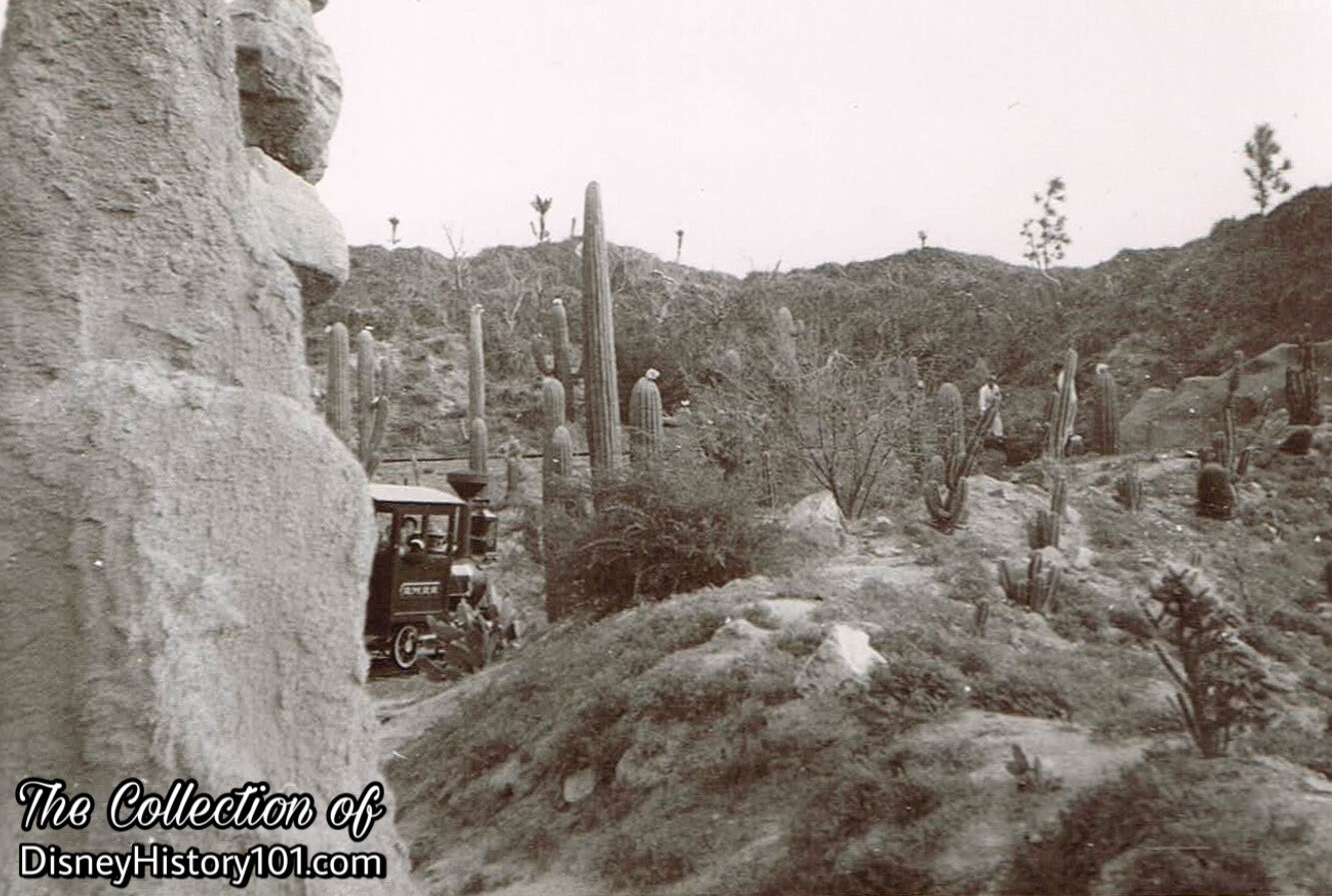
"Rainbow Mountain Mining & Exploration Co." Train and Painted Desert
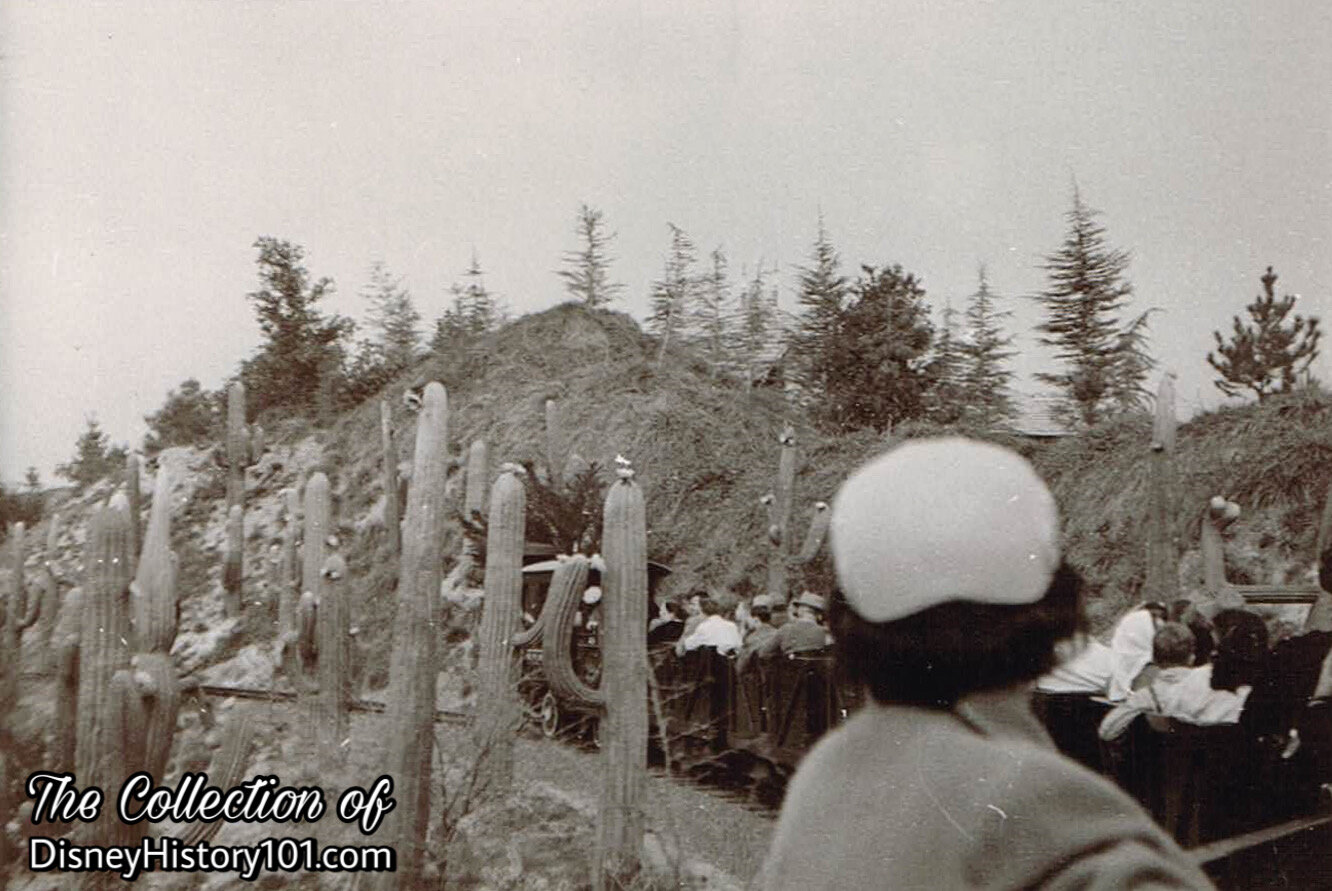
"Rainbow Mountain Mining & Exploration Co." Train and Giant Seguaro Cactus Forest

Giant Saguaro Cactus Forest from Mine Train Gondola
Even in these early days, the desert heat was known to “get” to guests. Sometimes the cacti appear to be “thumbing a ride”, or look like an eight-armed octopus! At times, the bellowing from these old pipe organ cacti sometimes even appear to form symphonies as the desert wind passes through them.
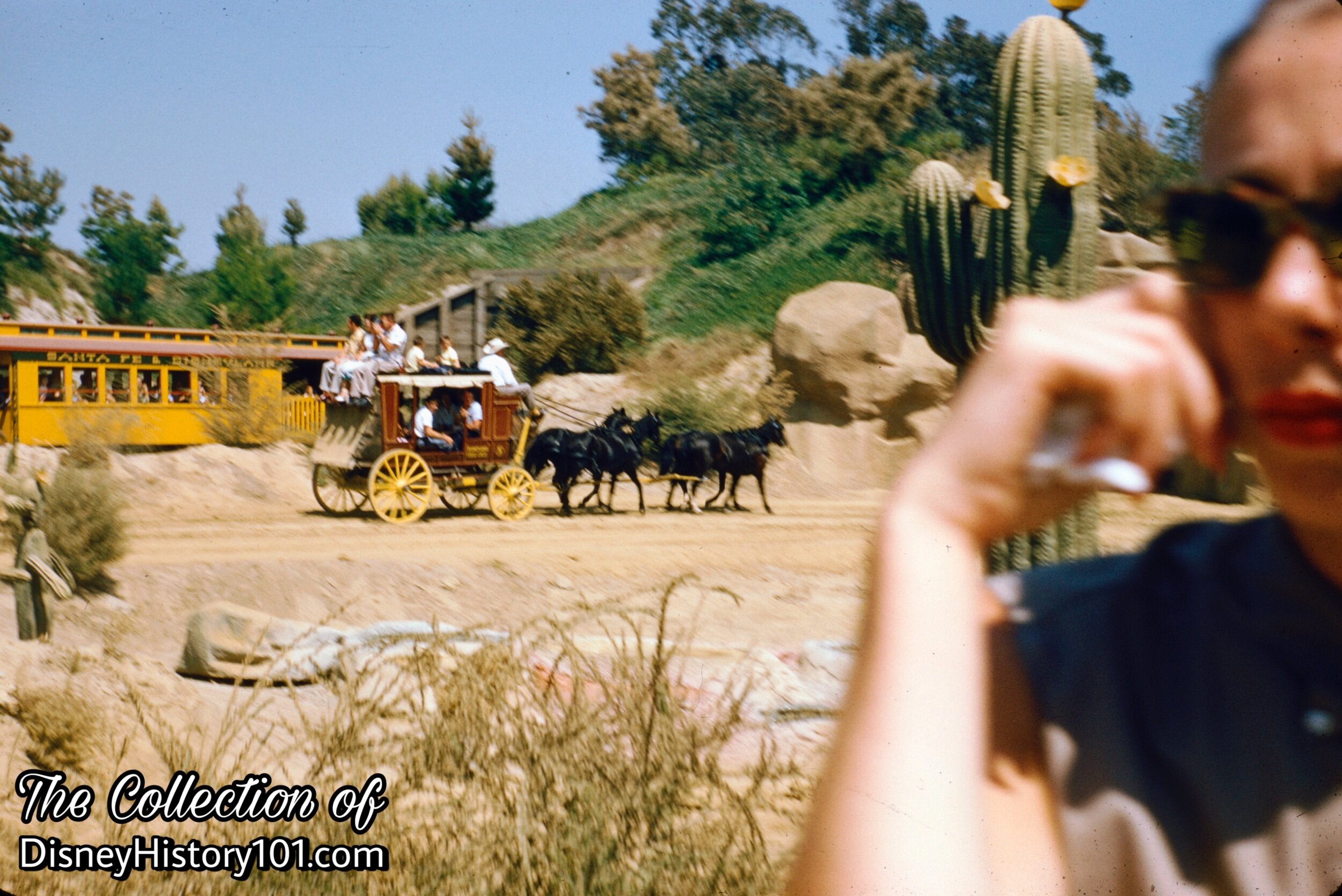
Painted Desert
The proximity of multiple paths cut through the Painted Desert (or, “three fabulous ways to enjoy the Painted Desert”) are depicted in this Vintage View!
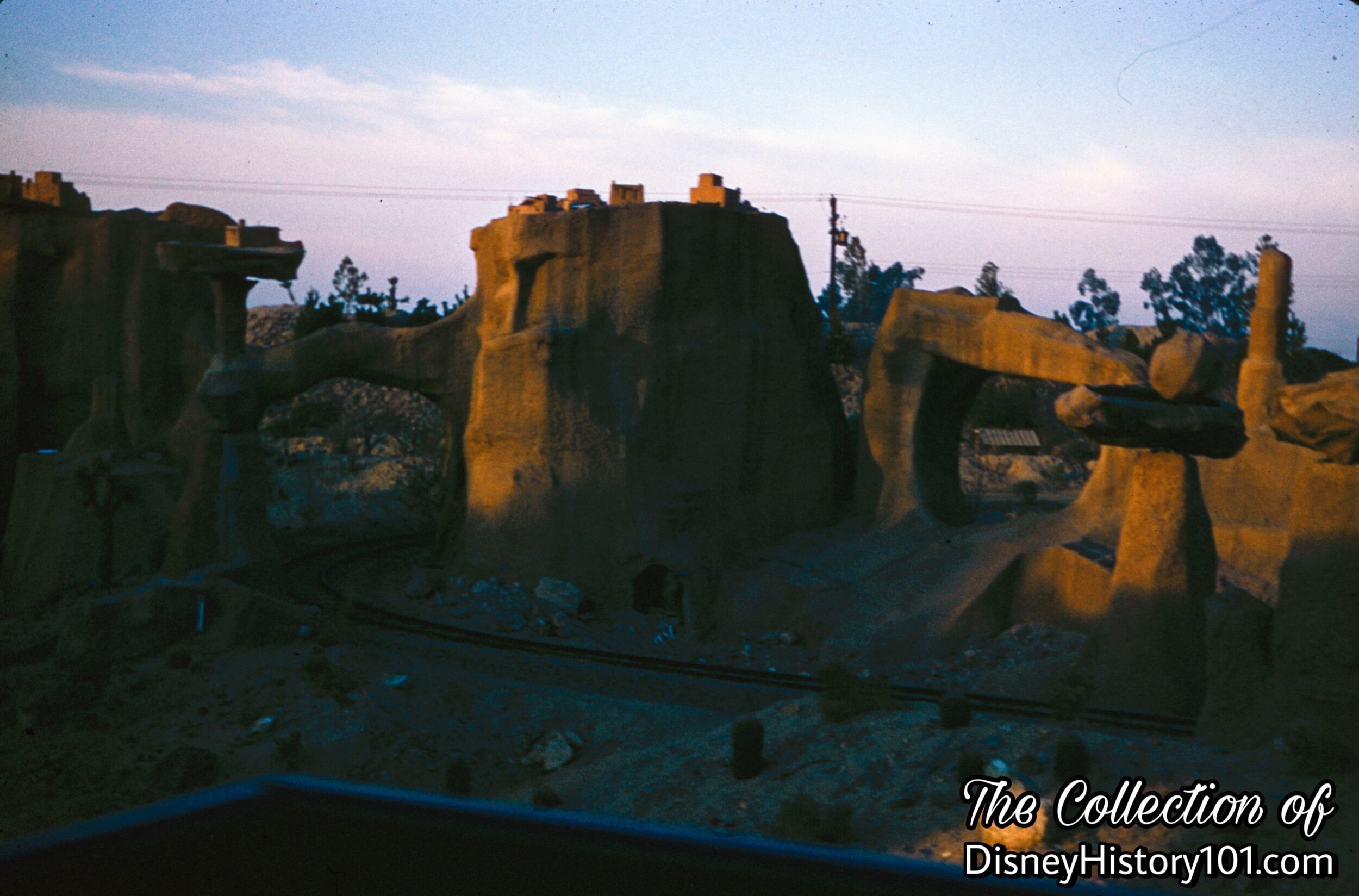
Rocky Gorge
Passing Dead Man’s Spring, we come to Rocky Gorge with such formations as Coyote Rock, Inscription Rock, Elephant Rock, Natural Window Rock, and the Balancing Rocks, “teetering precariously on wind and sand worn points”, according to “News From Disneyland”, a press release published 1956).
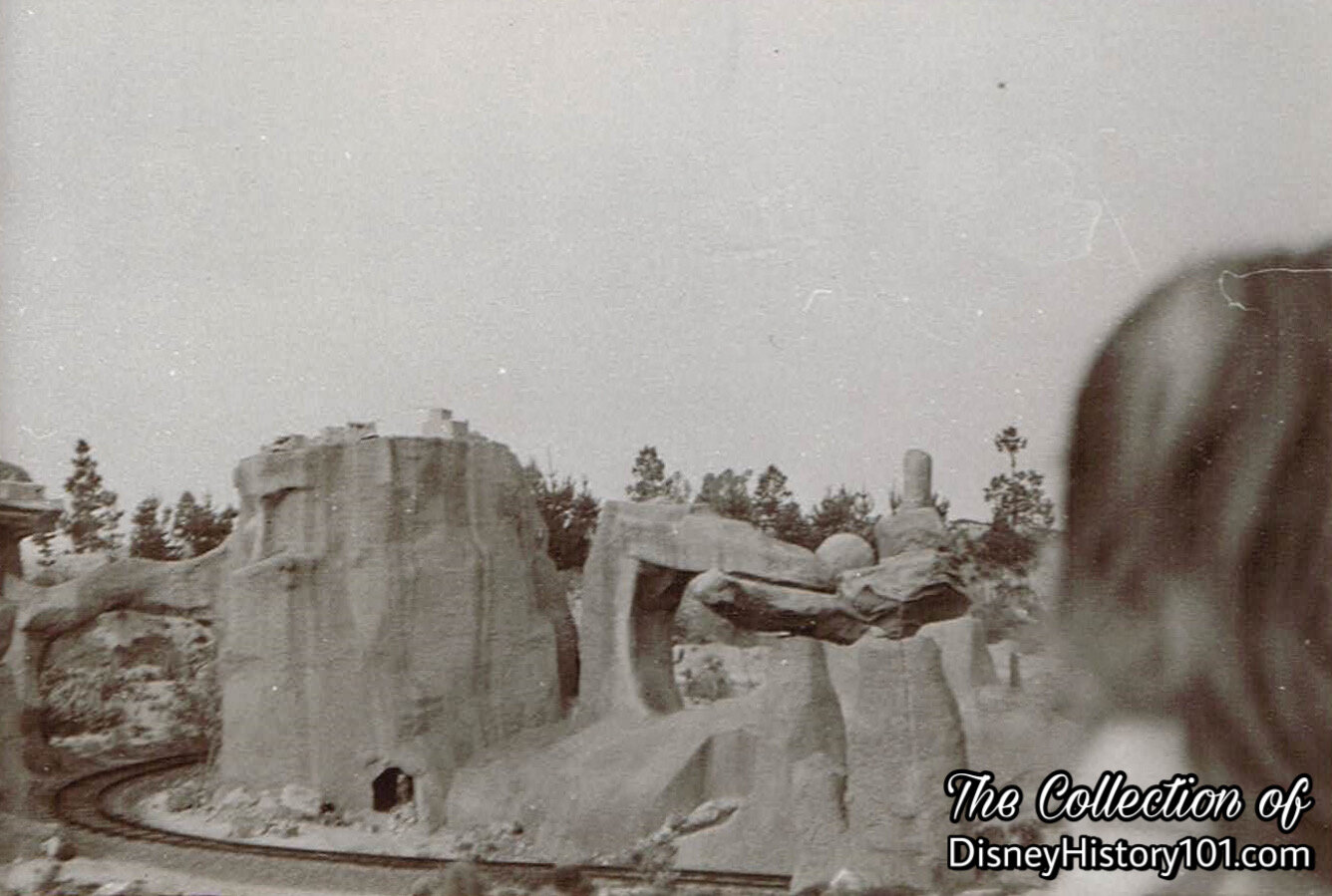
"Natural Window", Pueblo & Balancing Rock Canyon
While the tracks run through the shadows of desert canyons (like Horse Thief Canyon), Hopi dwellings can be seen high above the wind-swept cliffs. These stand “in silent tribute to the artistry of an ancient people”.
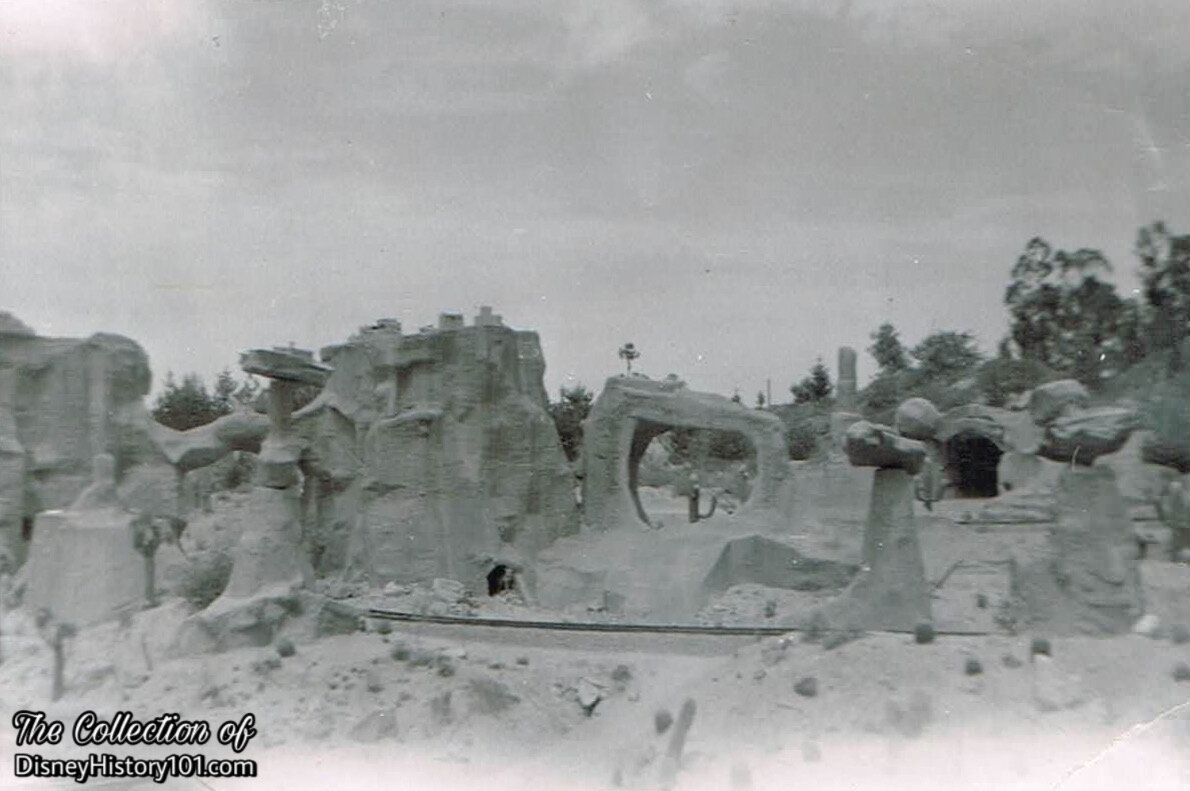
"Natural Window", Pueblo & Balancing Rock Canyon
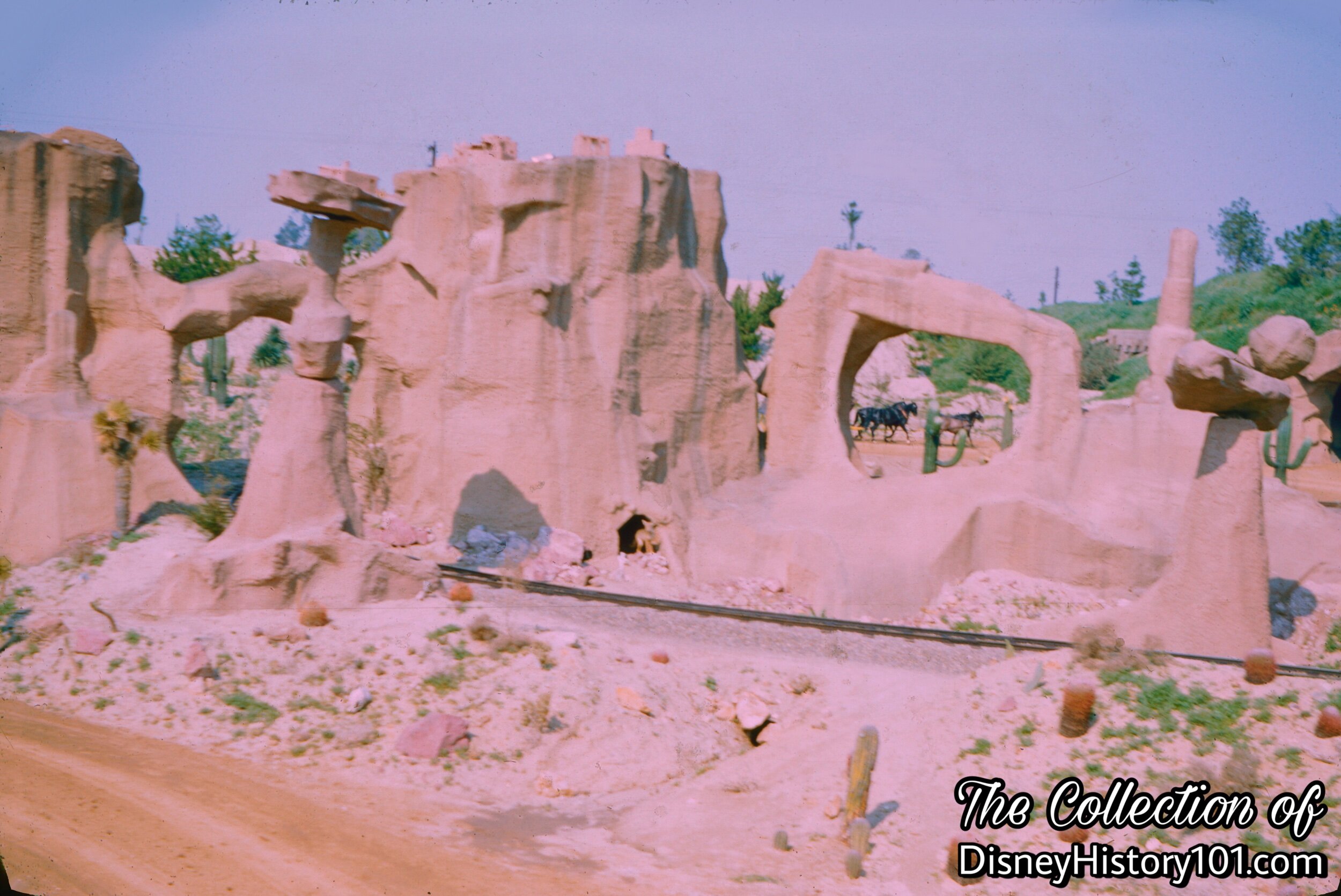
"Natural Window" Rock, Pueblo & Balancing Rock Canyon, (1957)
“Now folks, we gotta git through Balancing Rock Canyon!”
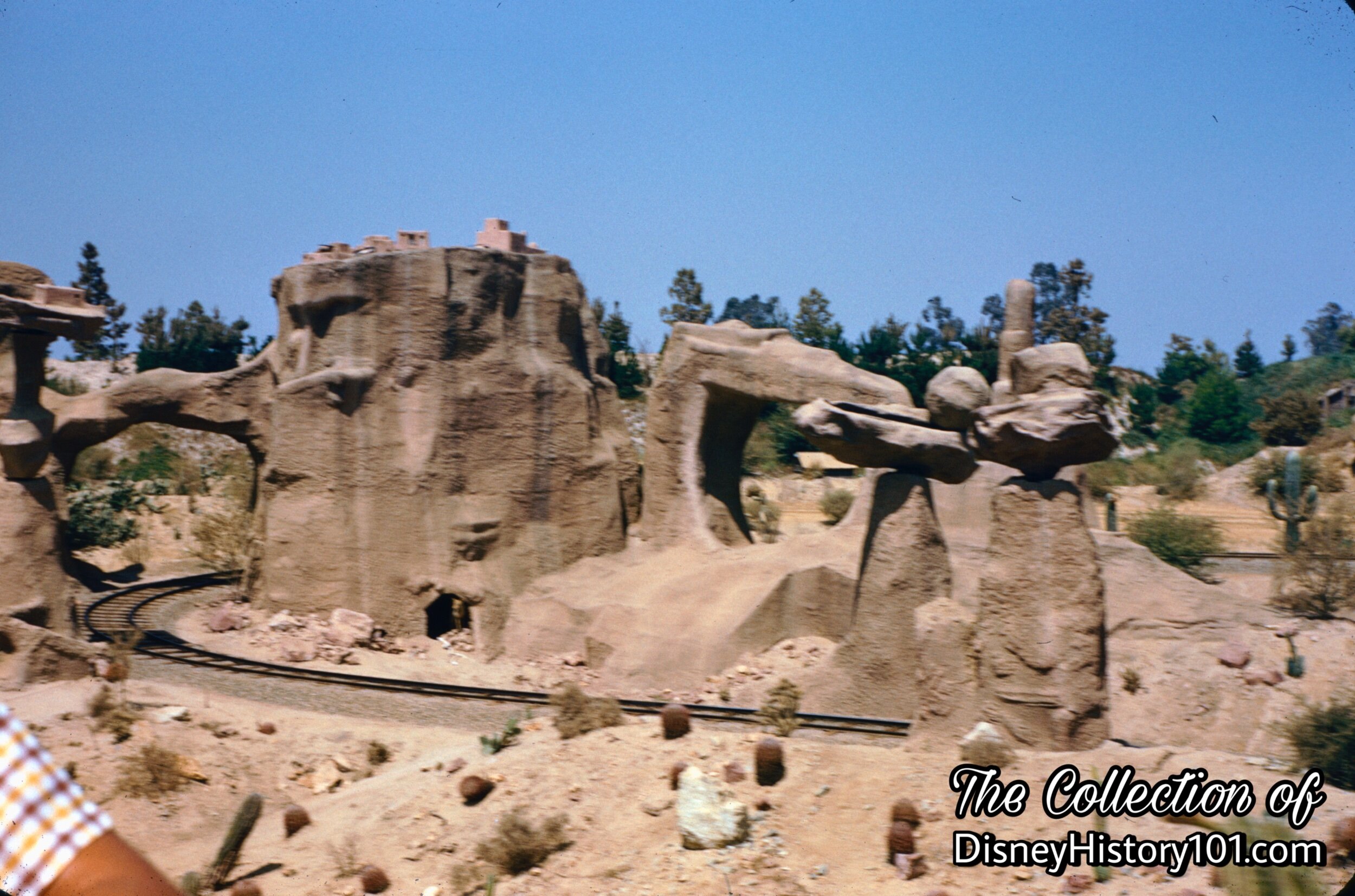
"Natural Window", Pueblo & Balancing Rock Canyon
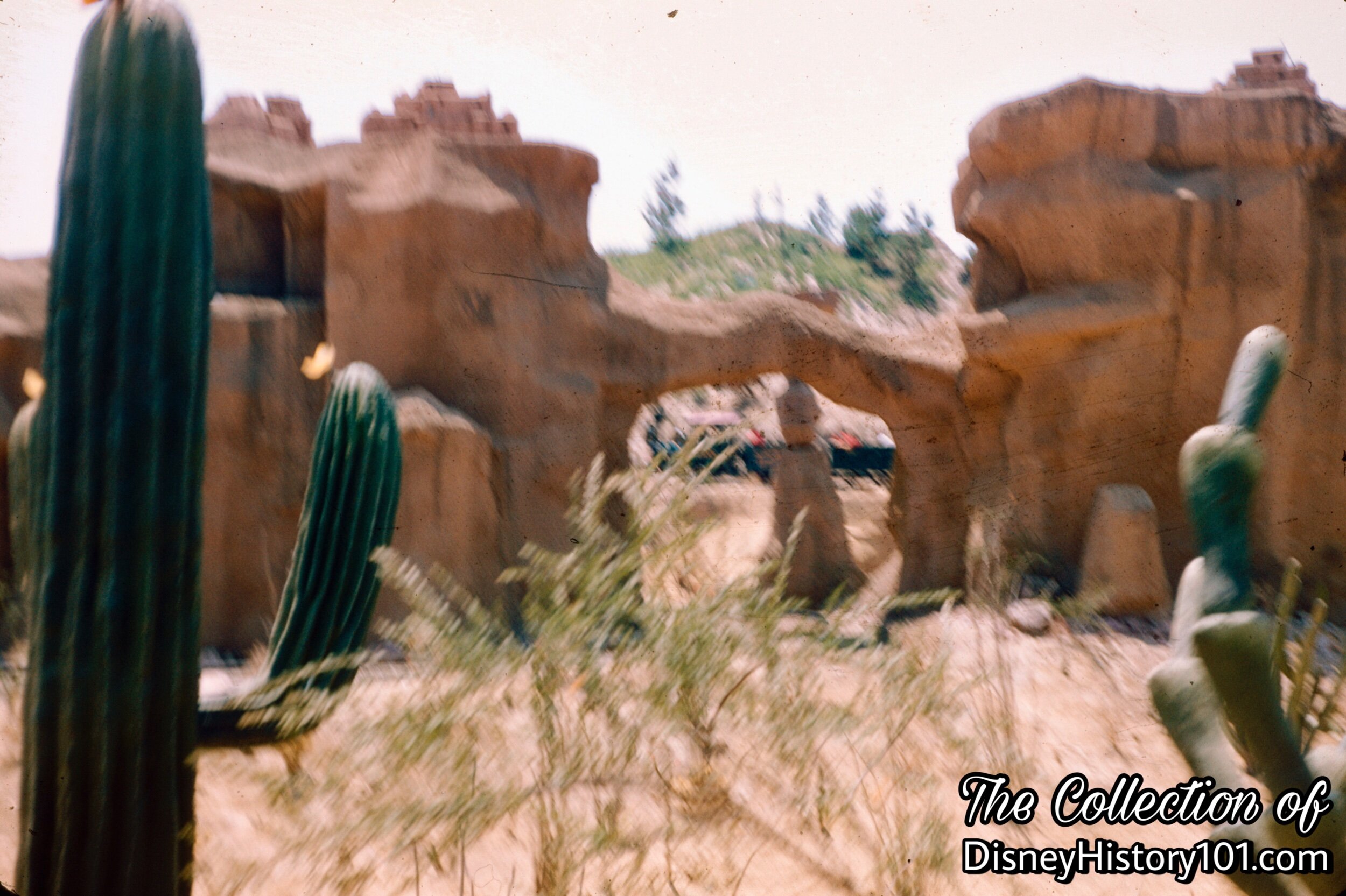
"Natural Window", Pueblo & Balancing Rock Canyon

"15 Panorama Views of The Magic Kingdom" Postcard Image, (c. 1959)
The Rainbow Mountain Mine Train chugs through the desert in this Rainbow Caverns Mine Train Panoramic Postcard Image. We can see Natural Window and Balancing Rock Canyon - two real mysteries of the desert!

Excerpt from Disneyland Holiday, Winter, 1957-58.
This short paragraph (published only months after the Rainbow Caverns Mine Train opened), describes what guests will encounter as they pass through the Rainbow Desert.
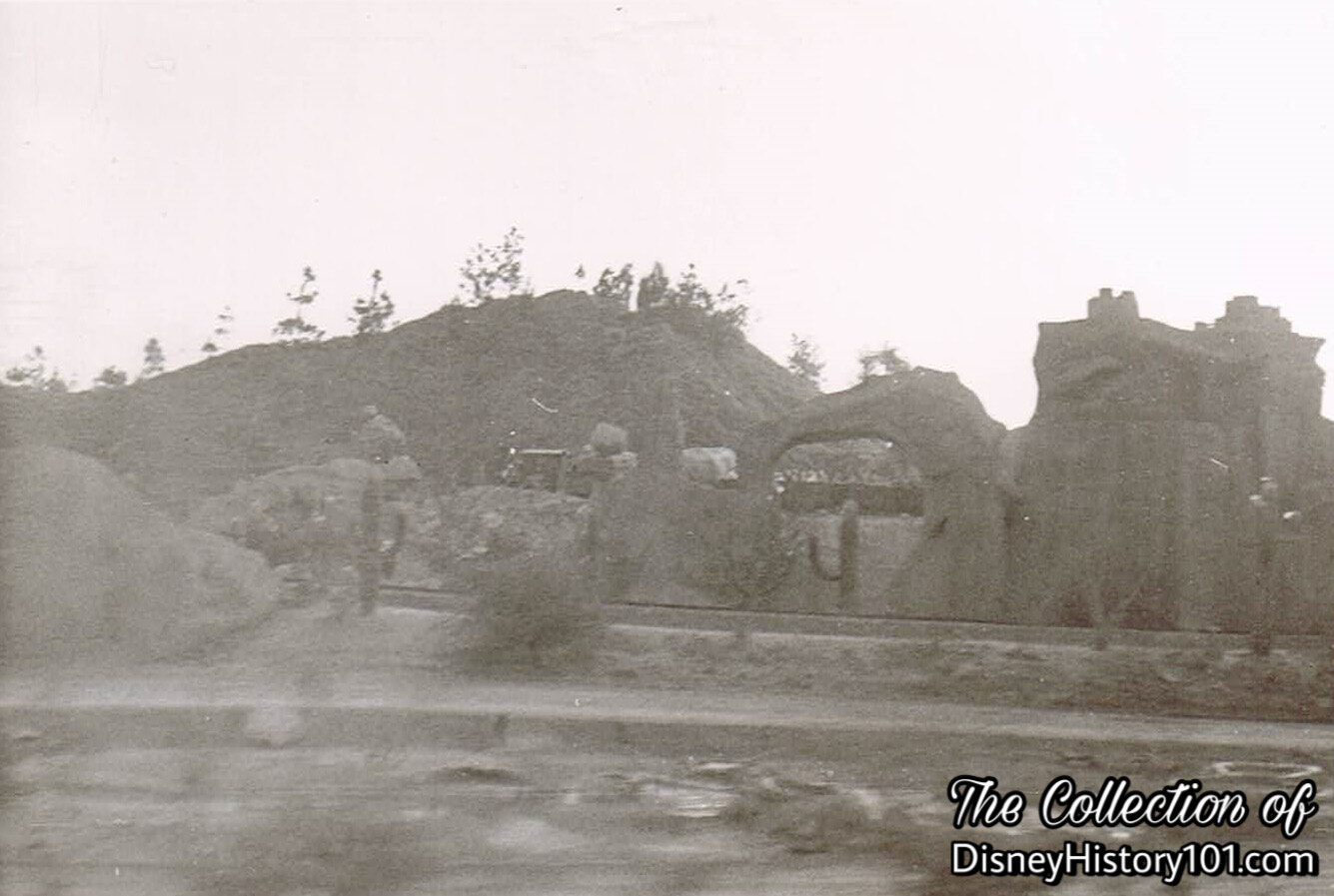
Painted Desert
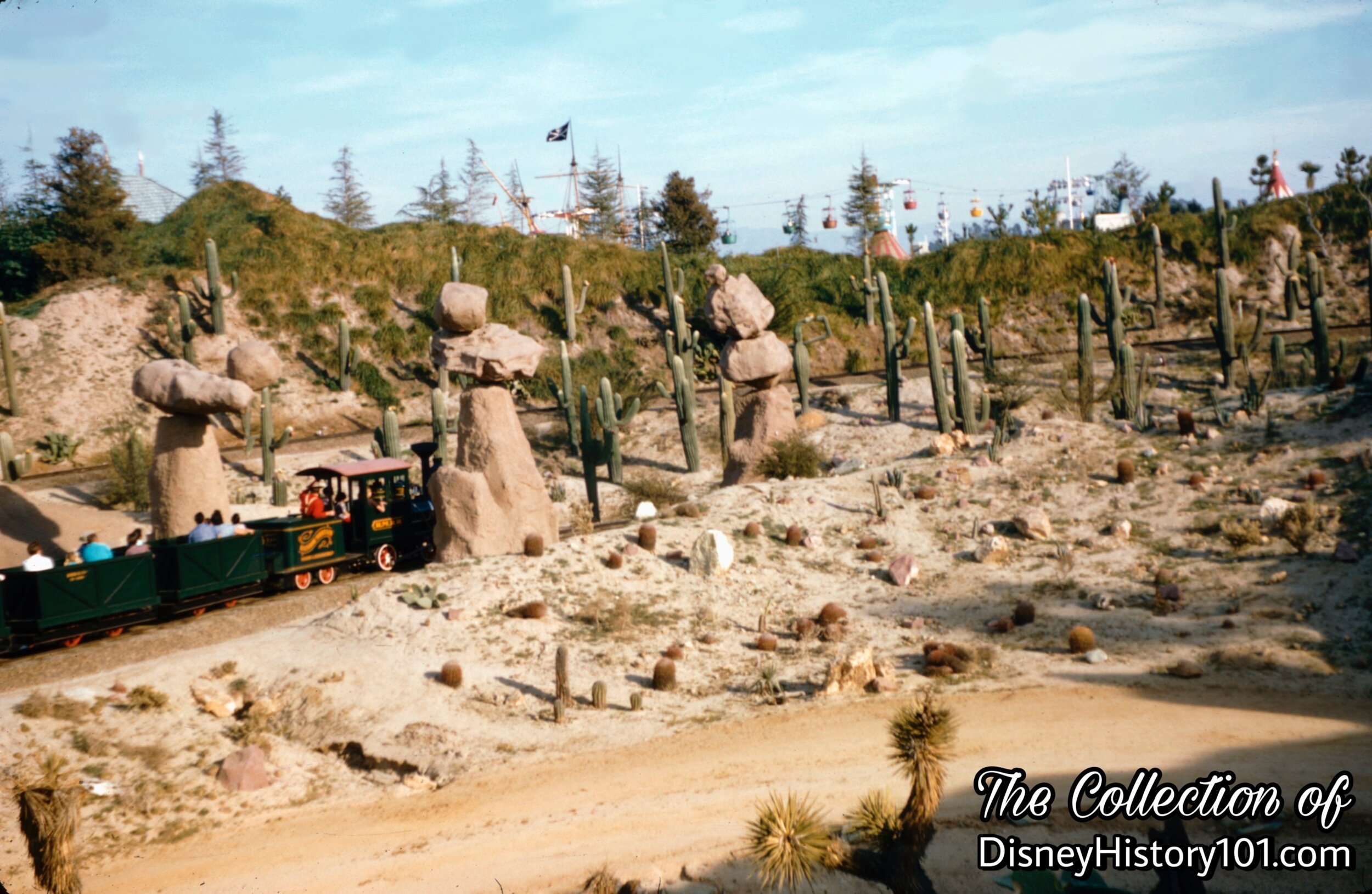
Balancing Rock Canyon
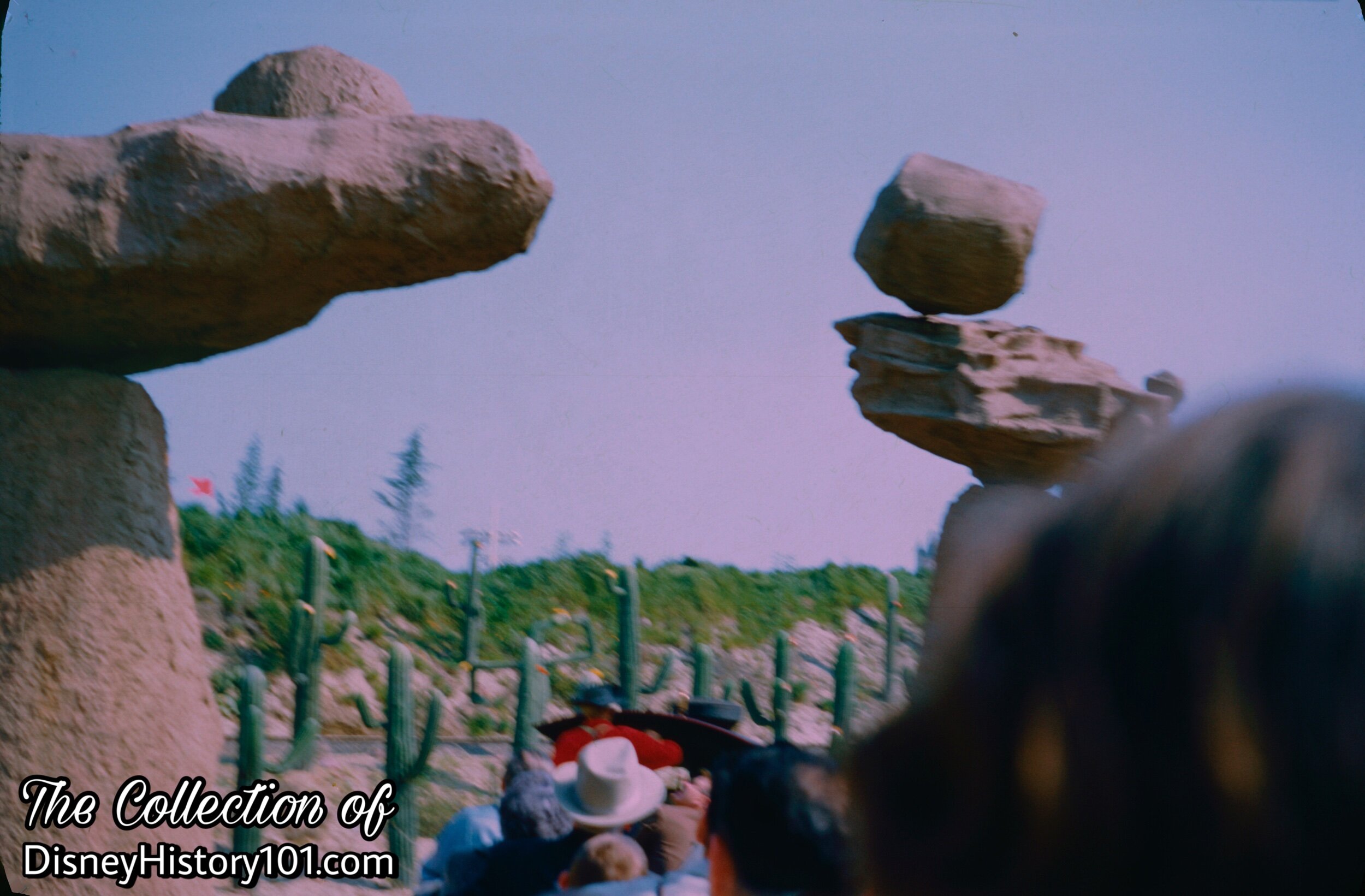
Balancing Rock Canyon, (1957)
It appears that the vibrations from our whistle have made“these rocks really ‘rock and roll’!” In reality, the sound from our train whistle has tripped a sound actuated switch and motors causing the rocks to tip wildly overhead!
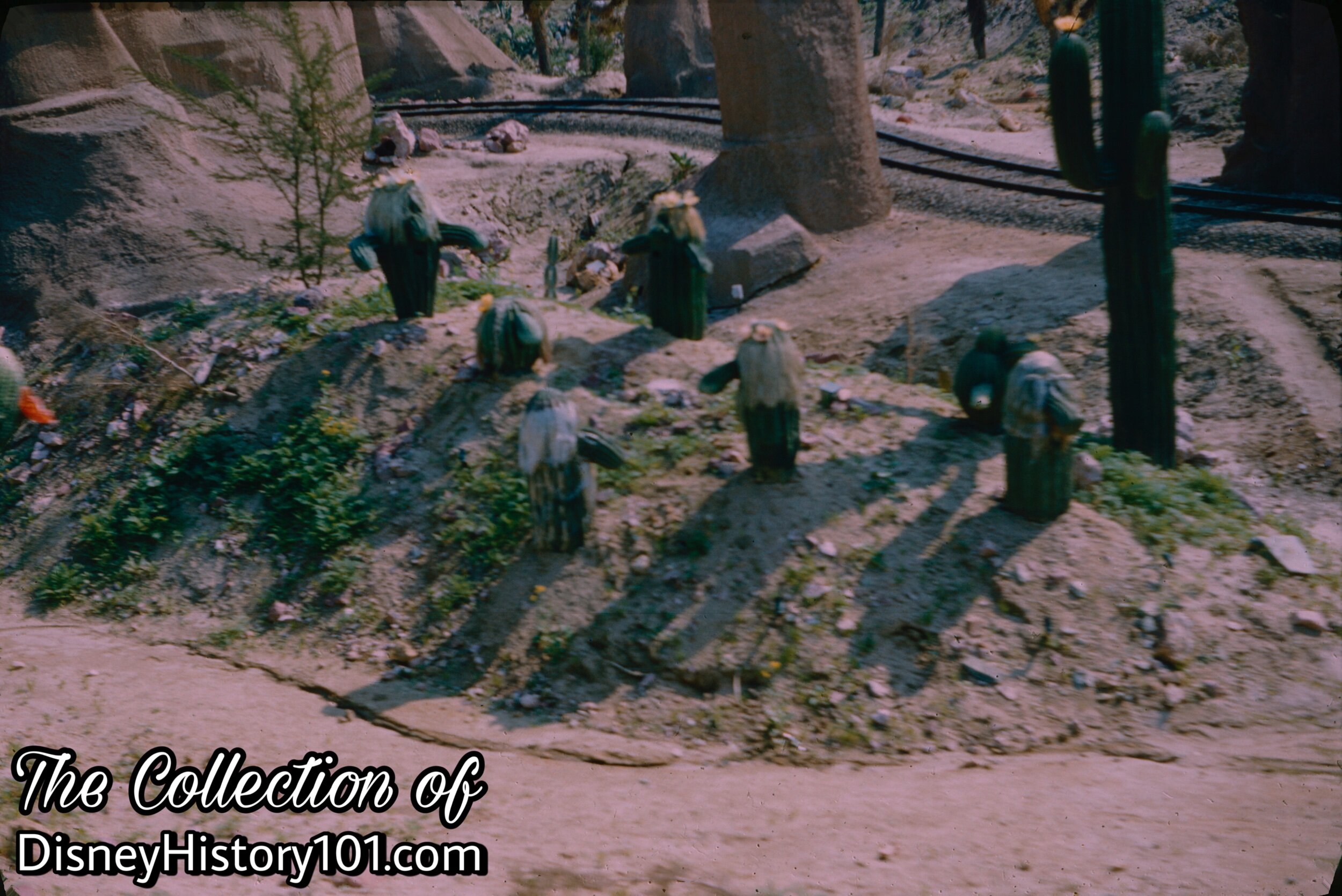
"The Seven Dwarfs" sculpted by Ken O'Brien, (c. 1957)
Sometimes the desert heat really gets to our guests…why, somebody even saw the Seven Dwarfs out here yesterday. Sometimes, the desert heat gets to these here cactus, and makes them see strange things - like dark green mine trains heading through the wilderness!
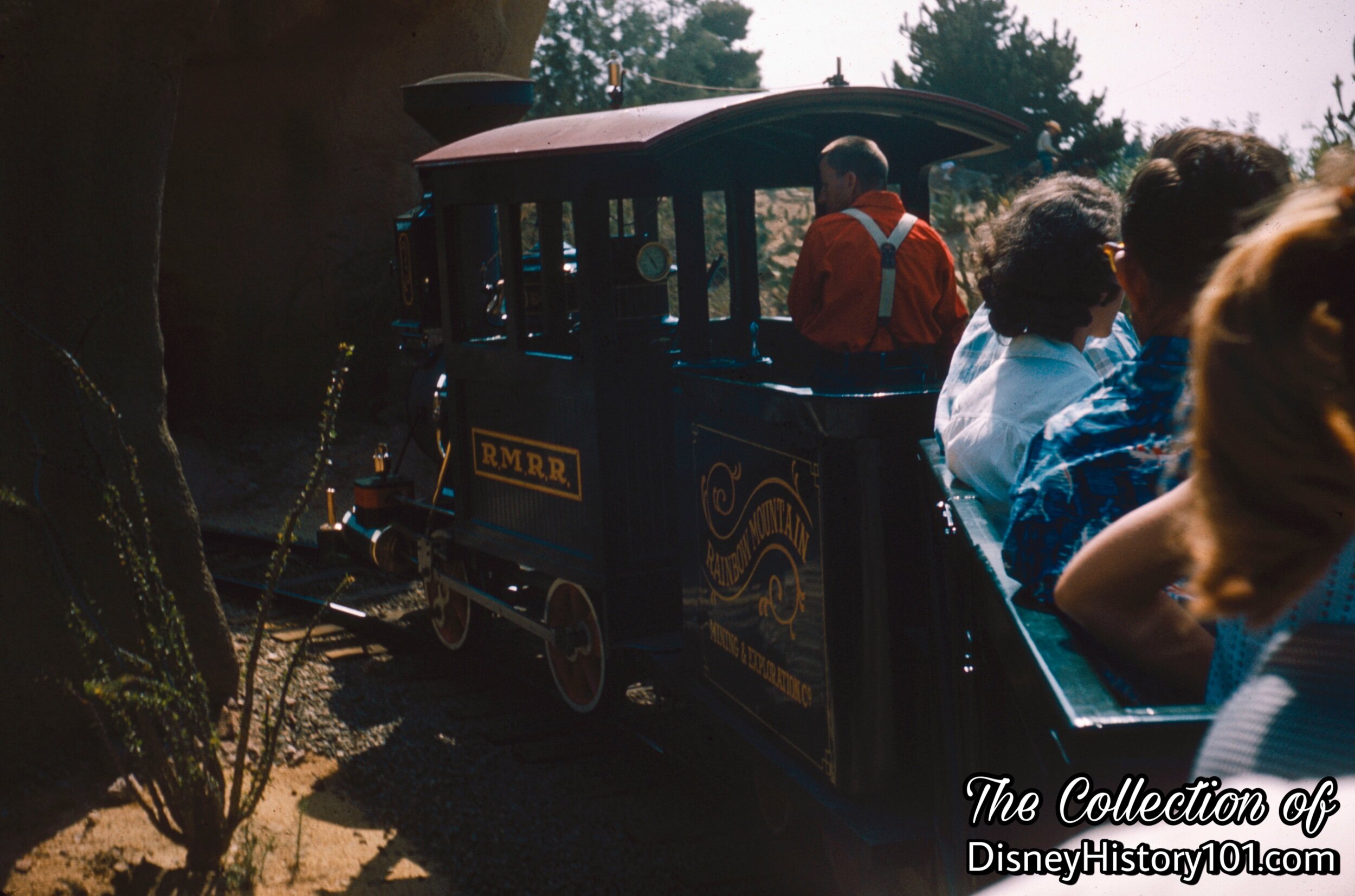
Rainbow Caverns Mine Train, (1959)
Get ready to head deep into the earth to explore the dazzling Rainbow Caverns! Multiple publications tantalized readers with details of the sights. The complimentary Disneyland News (published for June of 1956) briefly mentioned a multi-colored waterfall, stalactites and stalagmites on all sides, a Bottomless Pit, and a River of Gold. “The First Annual Report To Disneyland Lessees” (prepared 1956, by Disneyland Public Relations Division, Disneyland Inc.) described this portion of the “New Attractions” :
“Then, destination is reached. The train passes though a jagged fissure in the face of Rainbow Mountain itself and is quickly swallowed up in the tomb-like stillness of an abandoned mine. Bones and skeletons glowing in the unnaturally lit interior of the mine give evidence that others have tried this path - - and failed to survive the hazards. The tracks easily span a yawning chasm - - formerly the great barrier to the mine’s interior - - - and the train is now in the Rainbow Caverns. Underground river rush past, showing flecks of pure gold. Mineral formations in the walls give the interior a particular glow, exhibiting all the colors of the rainbow but strangely refracted without natural light. The train rushes on in the half-dark. Many colored waterfalls and cascading streams contribute to the effect of being deep in the heart of the earth. Suddenly, round a bend, a narrow shaft of light appears and the train rushes to meet it, ascending abruptly and once again into the pleasant daylight of Disneyland’s summer. Close by, the Mule Pack Ride, the Stage Coach and the Conestoga wagon rides will be boarding passengers for a more leisurely trip through the desert area.”
All of this dark ride portion of the adventure was housed in the 18,250 square foot Mine Train Building.
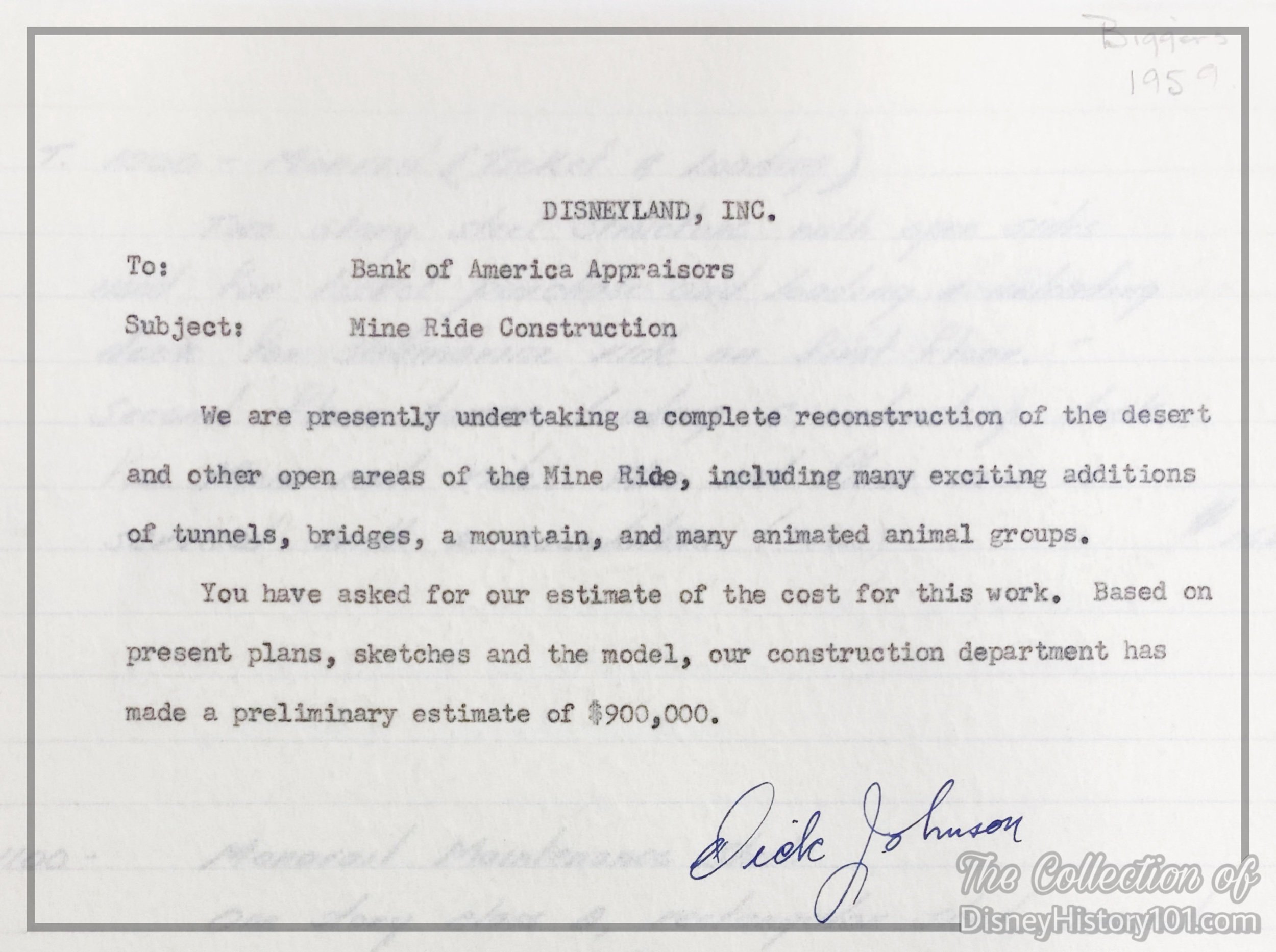
A letter accompanying a Bank of America appraisal indicated big changes, including the estimated cost of reconstruction to the Mine Ride.
By September 28, 1958, Disneyland, Inc. made approximately $389,181.00 of land improvements to the Rainbow Desert. That same year of 1958, an appraisal of the original ride structure valued it at $275,900 while the original equipment was valued at $91,600.
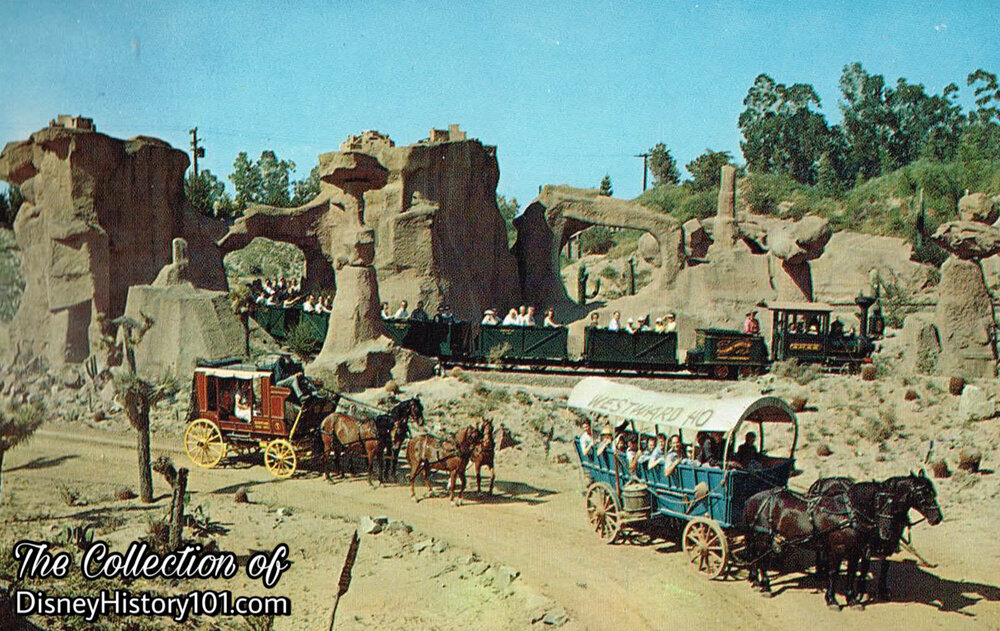
Rocky Gorge Postcard
By 1959, Joe Fowler was Vice President of Disneyland Operations Committee and Doc Lemmon of Disneyland Operations was overseeing Operators of Rides & Amusements (like the Midget Autopia), Livestock, Parking Lot, and Ticket Sellers. The Disneyland “C” Coupon of the era once equated the value of a ride aboard the Rainbow Caverns Mine Train with the alternate desert route of the Conestoga Wagons. However, an incident would occur that would result in the end of an era for the “three wonderful ways to enjoy” the Painted Desert!
According to one headline (published just after the incident), “Eleven [were] injured as horses bolted at Disneyland”. The same article continues : “Eleven persons including six children, suffered minor injuries Monday at Disneyland when the four-horse team of a stagecoach bolted. The injured were the driver and 10 of the 12 passengers in the stagecoach at the amusement park. Several were thrown to the ground when the stagecoach collapsed after its undercarriage was torn off by the wild horses. A Disneyland spokesman said the horses became frightened at the sound of the Park’s train whistle.”
A few months later, another syndicated article divulged Walt’s thoughts and feelings over what had occurred. “‘We had stagecoaches riding through the Painted Desert area’, he explained. And we had a few minor accidents on them. Nothing serious, but enough to worry me. We have a fine safety record at the Park, and I wanted to keep it that way. So I redid the desert to do away with the stagecoaches.”
With that, the final horse-drawn vehicle made its way along the dusty trails of Frontierland, on September 13th, 1959.


Mine Train Through Nature’s Wonderland (May 28th, 1960 * - January 2nd, 1977)
*Official opening ceremonies took place on June 12th, 1960. Some sources (i.e. “Disneyland Rides & Attractions and Attendance Report” Fiscal Year 1981) cite January 3rd, 1977.
During the 1958-59 winter season, over $6,000,000 of new rides and attractions debuted, including the Matterhorn Bobsled Ride, the Submarine Voyage, the Monorail, and extensive revisions in other rides adjacent to them. The drawing power of those spectacular new features accounted for a larger attendance trend during the summer and winter. So to prepare for the following summer, a major project commenced, re-designing the desert area in Frontierland to provide more exciting and higher capacity rides.
Beginning October 11th, 1959, Mine Train excursions through the Rainbow Mountain Mining & Exploration Co. briefly ceased for refurbishments that were well worth the wait! About this time, Walt Disney was quoted (in Wisdom magazine, published December 1959), “I have great love of animals and laughter.” Given this expression, it wasn't any surprise when (during the following year of 1960), a $1.8 million construction cost far exceeded the preliminary construction estimate of $900,000 given Bank of America appraisers in 1959. This amount brought tunnels, bridges, a mountain, and an unprecedented cast and show to the 7-acre (or, 14 of “nature’s half acres”) parcel of “North American wilderness” in Frontierland!
Joe Fowler (Disneyland Operations Committee) and Earl Vilmer oversaw the Construction & Maintenance division including Engineering, New Construction, Maintenance, and Janitorial related to the installation of the attraction.
Show design was heavily inspired by Walt Disney’s award-winning True-Life Adventures! According to “A University of Disneyland Guide For Nature’s Wonderland Hosts and Hostesses” : “No dress designer can duplicate the wardrobe of nature ; no prop designer or special effects man can do better than a meek imitation of nature’s own trees, rocks…waterfalls. It’s impossible to compete with the Aurora Borealis or a Pacific sunset for a backdrop. But in Nature’s Wonderland in Disneyland, people from around the world can enjoy nature as it is…or as it was…with accuracy and fidelity. To bring the beauty of drama of nature to mankind has been one of Walt Disney’s interests.” This Walt had previously effected through his True-Life Adventures series of theatrical films, where those animals were viewed on a screen.
Many of those films would become most influential to the show design of the Disneyland attraction! There was “In Beaver Valley” which had previously been awarded for Best Two-Reel Short Subject of 1950. On November 10, 1953, Walt released “The Living Desert,” the first film distributed by the new Buena Vista Distribution. The film won an award for Best Documentary Feature, 1953. Later at the 1954 Oscars (a year before the Opening day of Disneyland), Walt Disney & RKO Radio Productions’ “Bear Country” was awarded an Oscar for “Achievement in Two-Reel Short Subject, 1953” at the 26th Academy Awards Ceremony. Upon accepting one of his awards that day, Walt declared, “Well, I just wanna say on behalf of my staff (and especially the naturalist photographers who have played such a great part in making the nature films), ‘Many, many thanks!’” Soon, “the youngster who never saw an elk except in a parade or convention” would soon be “able to see Olympic Elk as he lived his life in Nature’s Wonderland,” at least according to the same aforementioned publication. This “composite True-Life Adventure… based on elements of four Disney Films - Beaver Valley, Bear Country, The Living Desert and The Olympic Elk,” would be the product of a great deal of Walt’s studio staff. [“Walt Disney Disneyland,” page 44, printed by Officine Grafiche Arnoldo Mondadori - Verona; first published 1964]
Walt Disney’s Imagineers knew their audience. About a year after Disneyland began its first day of operation, Herb Ryman continued to produce rough drawings detailing proposed Show additions to the island and shores of Frontierland’s “River Ride.” One particular (c. 1956) rough sketch produced in ink (on exhibit at The Walt Disney Family Museum, Gallery 9) lists natural scenic elements - “Semi-Submerged Logs”, “Dead Trees With Moss”, a “Cave Up High On Bank”, “Rock Strata Ledges”, “Some Cypress Swamp Area,” as well as “Animals” (like “Bear, Buffaloes, Deer, Wild Turkey, Grouse, etc., Goat, Bighorn”). Claude Coats (a WED Project Designer with a talent for color and styling) played a key role in the attraction’s development, according to his “Capsule Biography” prepared for WED Enterprises.
By now, “One of the most popular, and beautiful, attractions in the Park, the Mine Train journey through Nature’s Wonderland,…[was] based on elements of four Disney films, three of them Academy Award winners. In Beaver Valley, Bear Country, The Living Desert, and Olympic Elk, provided the inspiration for the seven-acre adventure,” according to Disney News (published Winter 1967-1968). Recreating something “natural” requires work similar to that of a movie studio. “A University of Disneyland Guide For Nature’s Wonderland Hosts and Hostesses” continues : “To recreate Nature’s Wonderland required the skills of the photographer, the naturalist, the artist, the landscape designer, the mechanic, the plumber, and many others.”
RockWork and hardscape was designed with much tooth (texture and rough surface). Then areas were landscaped.
“The Flora of Nature’s Wonderland”
For instance, a total of 156 species of plants, trees, and flora were imported into Nature’s Wonderland and placed by landscape architects Evans and Reeves, to generate authentic settings. Among these were palo verde trees, mesquite, joshua trees, and cactus. According to Vacationland magazine (published Summer, 1960), the result was a Western Mine Train that would take guests through “a faithful recreation of the forest regions of Wyoming, the deserts of Arizona and New Mexico, mountain terrain of Colorado and many other sections of western wilderness…”
One arid rock canyon in Nature's Wonderland averaged 110 degrees of heat with virtually no water. It was the perfect home for California juniper, Joshua tree, piñon pine and red-flowering ocotillo.
In addition, Walt had the telephones along the backdrop of Frontierland removed, paying the utility company to place the telephone poles underground.
This attraction would be (according to the very same c.1960 Vacationland), “populated by the natural inhabitants : an assortment of 50 separate varieties of bird, beast, and reptile, representing every specie of animal still roaming the North American continent.” The larger (and more varied) animal cast of 204 life-like animals (according to “The Disneyland Diary”), were first envisioned by character animator Marc Davis and then translated and developed into three dimensions by artist Bob Mattey (who helped build the terrifying “40-ton” squid which James Mason battled in “20,000 Leagues Under The Sea”), who would now help bring these animals to life using similar methods (and new ones).
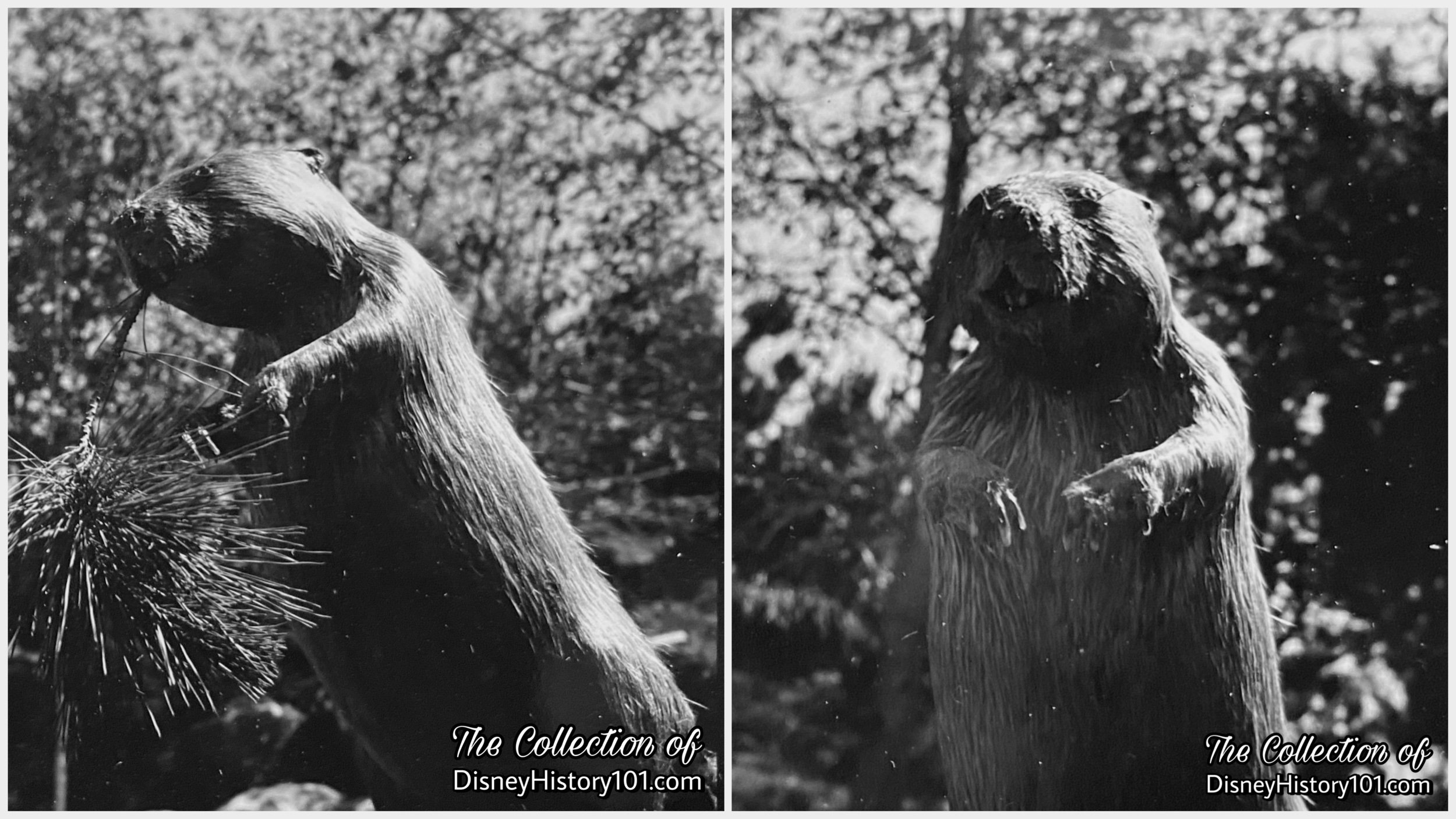
A Beaver simple figure.
“Audio-Animatronics”
Developed by WED Enterprises, this amazing system utilizes pneumatics hydraulics and electronics to animate human, animal, and other three-dimenstonal figures. Many Disneyland attractions feature Audio-Animatronics figures. “The term ‘Audio-Animatronics’ was first used to describe the bears and beavers in Nature's Wonderland.”
To accomplish this show, the attraction would employ Audio-Animatronics® - the Disney-designed system that combines sound, mechanics and electronics for three-dimensional animation. The (more than two hundred) “mechanical marvels” included representatives of : Coyote, Beavers (pictured above), Frogs, Ravens, Raccoon, Prairie Dogs, Blue Jays, Black Bears, Rainbow Trout, Side Winders, Meadowlark, American Eagles, Bobcats, Owl, Burrowing Owls, Hawk, Elk, Jack Rabbit, Antelope, Gila monster, Swallows, Robins, Road Runners, Lizard, Grazing Elk, Woodpeckers, Wild Pigs, Mountain Lions, Wild Turkey, Badgers, Skunk, Fox, Quail, Ferret, Armadillo, Rattlesnakes, and Desert Tortoise. By this time, WED Enterprises, Inc. (which later created designs and held patents for Audio-Animatronics) had come a long way in making their animals move. These animated figures were not as the sophisticated Tiki Room Birds, pirates and presidents that followed, but they did have varying degrees of animation - “one or two movements to many complex body actions.” Most of this movement was accomplished through “electronic hydraulic-pneumatic” technology combined with the early “cam-lever” technology. There were hidden well - “skins” or the ground hiding metal bases. There were cement rocks (which animals were bolted to), hiding the mechanisms and self-contained hydraulics systems. Fiber-glas rocks and trunks (with doors) housed animation electronics. Other animals in the water (as fish and bears), had timer controls and proximity switches to trigger their “swimming” animations.
According to Bob Thomas (of Associated Press), “all of these [were]… formed in plastic, stuffed with mechanical innards, covered with real skins treated for weathering.” Unlike true-life animals, many of these animated characters (i.e. the Bears, Battling Elk, Prong Horn Antelope, the Mountain Lion, and even the Balancing Rocks) now “ran on timers,” typically following the script, and acting on cue when all went well. These actors were costly - for instance the Bears alone cost $64,733, the total cost of all Sheep was $29,449, all the Gray Foxes cost $2,933, and the Raccoons cost $3,294 (to highlight the value of a few). As a sidelight, part of this expense included the high cost of natural skin coverings, (which were swiftly changed to synthetic skins around 1962).
By April of 1960, the total cost of the Show had reached $1,800,000. By June of 1963, the cost of the props, dressings, and “actors” involved in this particular enormous Disneyland show was divulged in one publication, at a total of $2,581,000 - surpassing “the original combined cost of the Statue of Liberty, Grant’s Tomb, and the original production of Ben Hur”. Due to the large audience at Disneyland, many of these were conveniently inspected by Walt Disney at his Walt Disney Studio in Burbank. You may recall seeing images of Walt and Bob Sewell inspecting Mountain Lions, or Walt and Wathel Rogers inspecting scaled-down models of animated elk during this time.
The DISNEYLAND ENGINEERING DEPARTMENT was the coordinating group working between the world's most unusual creative organization - WED - and the world's most unique maintenance organization. Disneyland engineers work closely with maintenance artisans and WED personnel, who are responsible for the show at Disneyland. A conventional routine directed engineer may become involved in a bear who isn't properly scratching his back or some other critter. The Disneyland welding department staff was capable of working on all types of metal and using all types of welding techniques. They had to be flexible, fast, and ingenious, with a specific skill in performing ten rush jobs at one time. The staff performed their surgical work on crabs, elephants, hippos, battling elks, drunken pirates, and dancing dolls in Small World.
Bud Washo remembered how Walt would even act out animation. “I remember working on the Painted Desert and we were talking about the bobcat on top of the big cactus. He would stand up there and lift his hands up like paws, and he said...I want it to go ARRGGG!..like that.”
“Disney's technicians have done well --- too well, in fact. The birds in Nature's Wonderland are so realistic that blackbirds (real ones) have been attacking ravens (animated variety) perched in the trees of Nature's Wonderland. Owls (Disney created) are being pecked into the repair shops by frustrated crows and blackbirds (live ones). And to top it off, a nest of baby red-tail hawks --- the realistic but unreal kind - so confused a mother bird flying overhead that she tried to deposit her own children's dinner down the throats of the young hawks! Wathel Rogers, a Disneyland animator, just shakes his head in puzzlement. ‘These migrating birds flying through Nature's Wonderland are a sight,’ he says, ‘They swoop down like dive bombers on the attack, sink their beaks into a raven's wing and take off as though someone had fed them a loaded worm. Then, from a tree nearby, they stare at the raven and try to figure out why he doesn't fight back!‘ The casualty report includes three ravens in Disneyland repair docks for shattered wings, an owl with a busted beak, and feathers all over the place. Live bird injuries have been restricted to wounded pride and broken spirits. Bill Martin, project director, indicates how complicated this situation may become. ‘The other day a bird landed on my head out here. When I brushed him off, he flapped away as though he had just seen a ghost move. I guess he thought I was animated too!!’”
Those “brass-trimmed” locomotives (“patterned after the gold and silver ore carriers of a century ago) also received a rehabilitation and a new coat of paint (or two).
The result was an “all-new” exactly nine-minute (no more, no less), 2,307-foot Mine Train Thru Nature’s Wonderland route through “faithful recreations of the forest regions of Wyoming, the deserts of Arizona, and New Mexico, mountain terrain of Colorado and many other sections of western wilderness….These are dominated by Disneyland’s second great mountain, ‘Cascade Peak’, visible from almost all Frontierland and easily recognized by its giant waterfalls that plummet from rocky ledges high on its granite slopes”, according to Art Linkletter’s own description. In addition, the little mining town of Rainbow Ridge also experienced a “boom” of expansion and development as far as the highest ridge! The “D” (and ultimately “E” ticket attraction) featured multiple dramatic animatronic vignettes of “life and landscape” recreated from five of Walt Disney’s greatest True-Life Adventure movies (four of these Academy Award-winning) - Beaver Valley, The Olympic Elk, Bear Country, The Living Desert, and The Vanishing Prairie. The new attraction (which contributed toward carrying the total Park investment to $34,500,000) was both exciting and educational! Even more, it was Walt’s intention that those reflecting on “the animal world” would acquire “a renewed sense of kinship with the earth and all its inhabitants.”
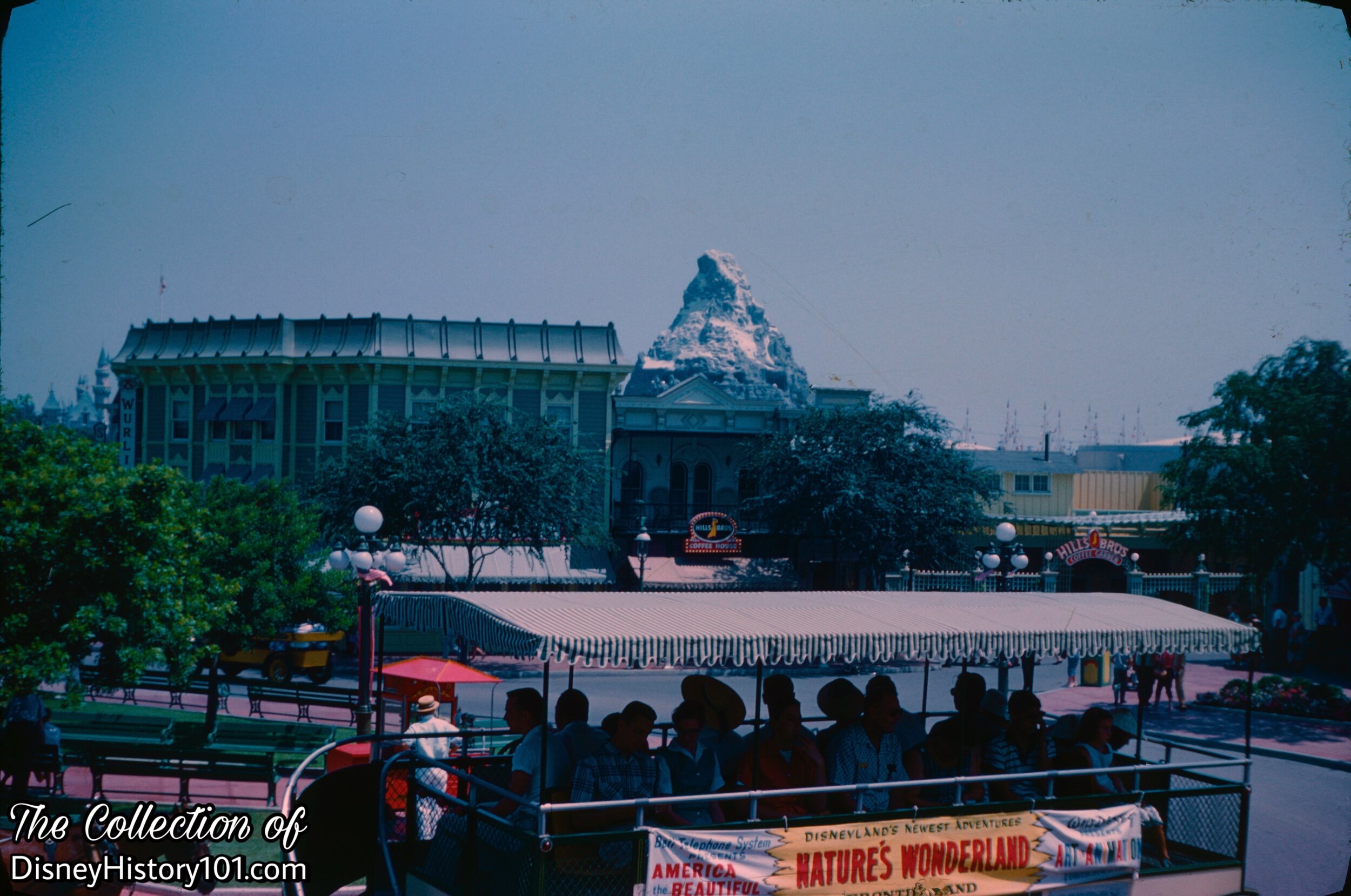
Omnibus in Town Square, 1960.
The Main Street Omnibus heralded the newest attraction of 1960 - the old-west adventure of the Mine Train Through Nature’s Wonderland!
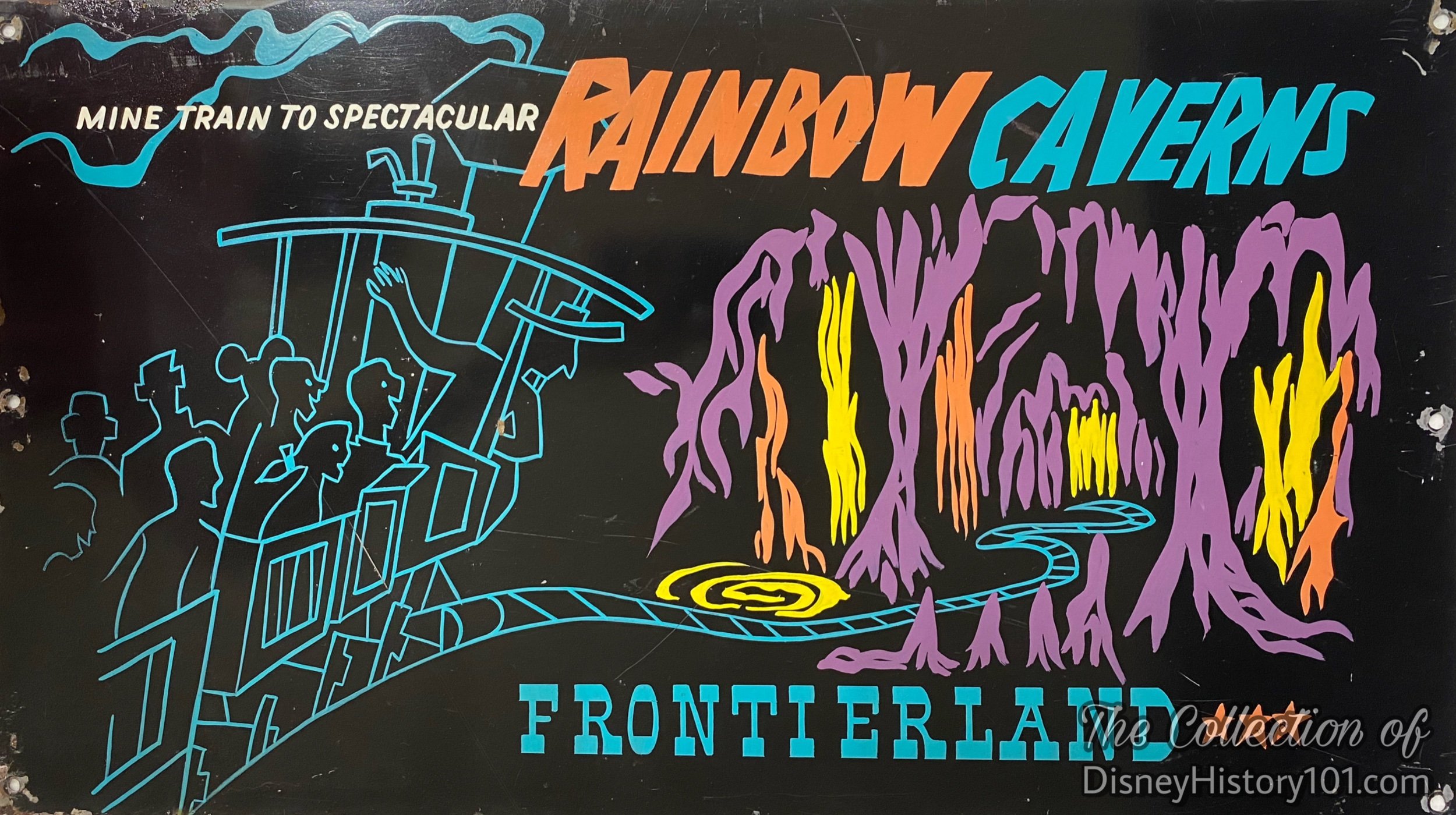
By 1960, the Guided Tour of Disneyland included a fascinating trip, via mine train, through Disneyland's newest adventure, Nature’s Wonderland.
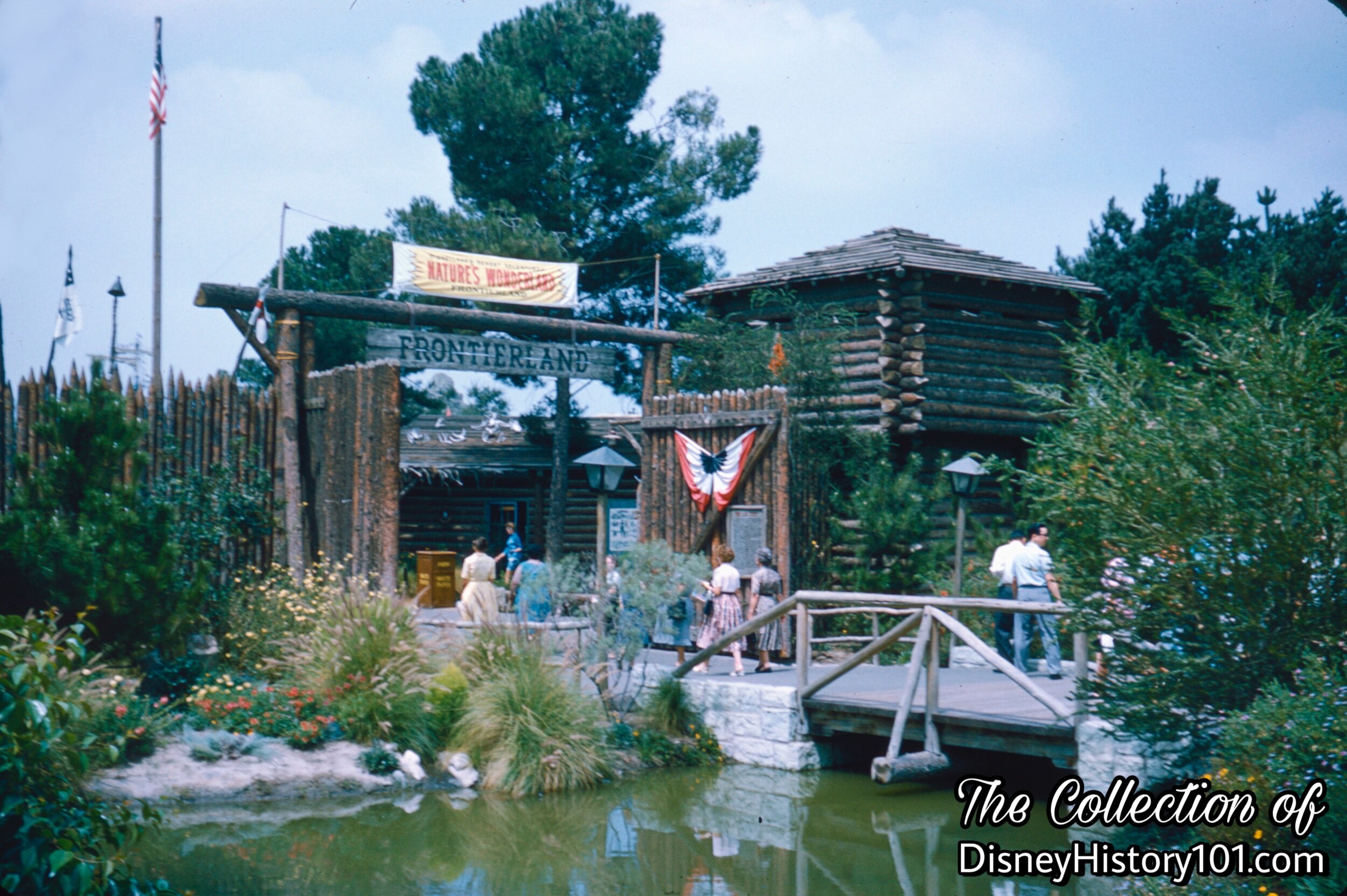
Frontierland Stockade, (1960)
The Mine Train Thru Nature’s Wonderland received much fanfare when it opened. The Frontierland Stockade celebrated Frontierland’s newest attraction with banners and bunting! All art work, posters, etc. were created by the Walt Disney Studios.
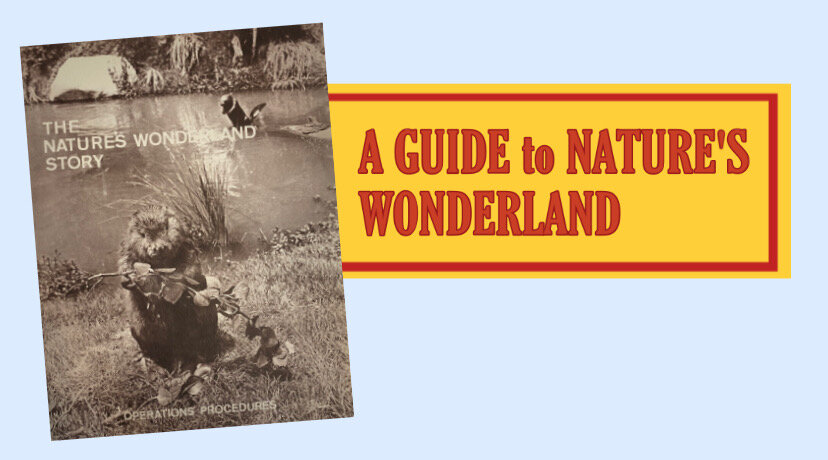
(Published by the “University of Disneyland,” 1964)
This Operating Guide/OG (approved by Dick Nunis), was created for the Ticket Sales Hostesses, Attraction Hosts and Operators, Engine Operators, Station Hosts, and Backstage Cast (of mechanics, electricians, craftsmen and others) of the Mine Train Thru Nature’s Wonderland! At seven acres and 2,307 lineal feet of track, this was Disneyland’s largest show at the time. To quote from the guide : “Now, it requires the many skills of the ‘backstage’ crew who maintain this attraction, and the ‘story telling’ skills of the ‘on stage’ crew to put on a ‘good show’.” From time to time, we’ll refer to this guide and “outline…the specific procedures for this attraction….to tell a good story.” We’re told, “your guests will appreciate it”.
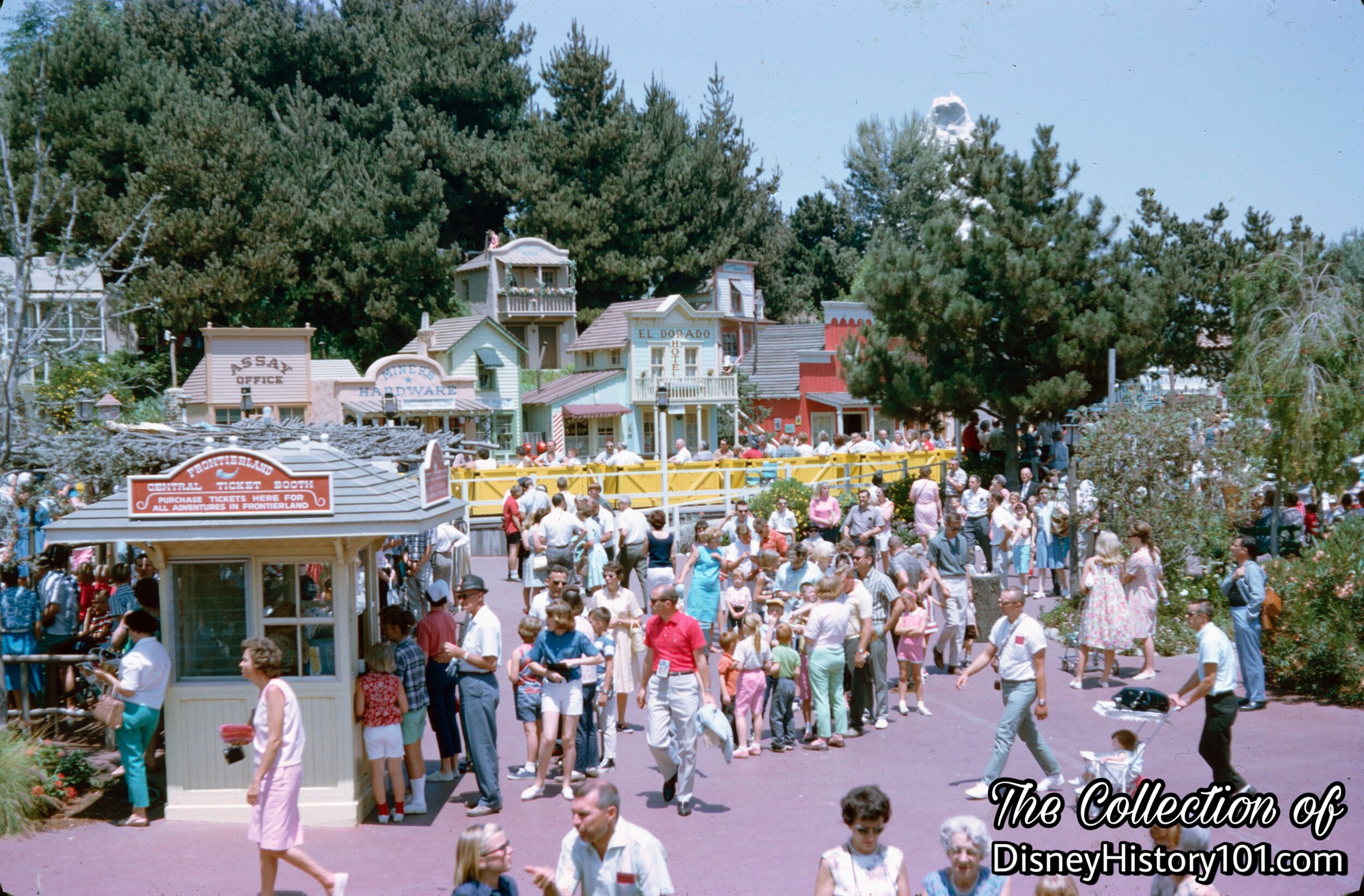
Rainbow Ridge, August, 1965.
Those trees behind the frontier town of Rainbow Ridge obscure the turn-of-the-century Main Street U.S.A. and Matterhorn mountain from guests. Note the Matterhorn in the following photo.
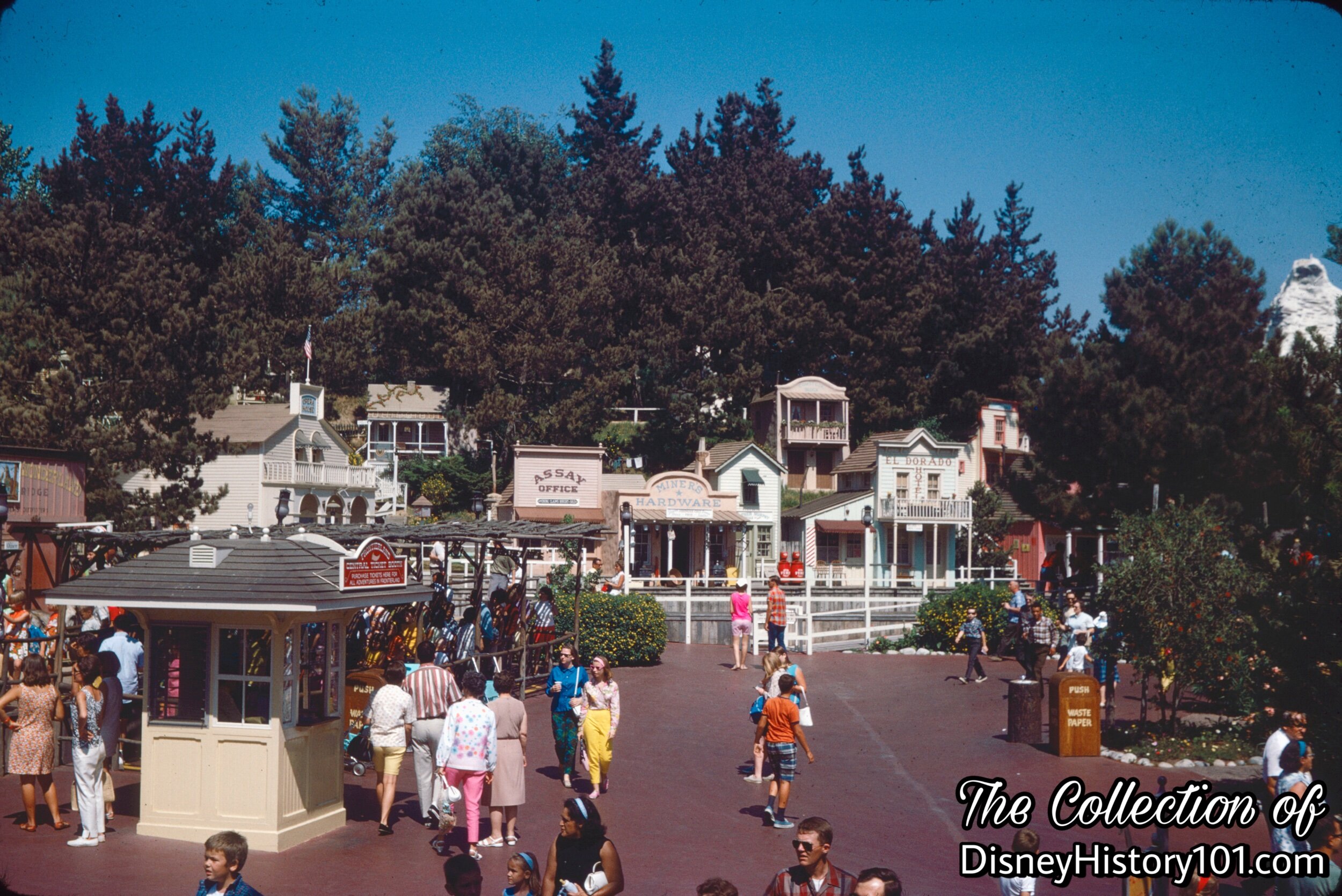
Rainbow Ridge, 1967.
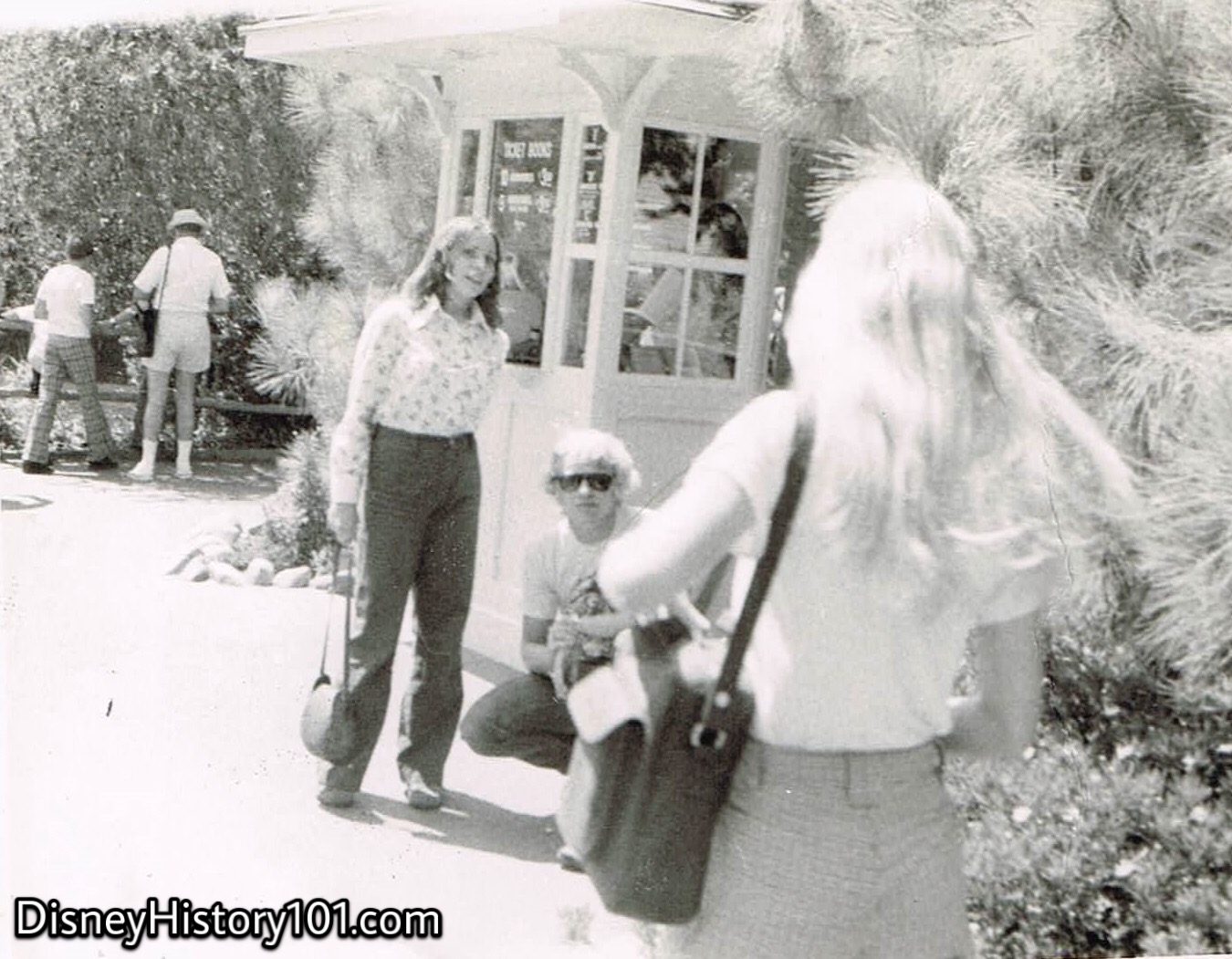
Frontierland Central Ticket Kiosk #1 (near Rainbow Ridge), 1975.
There were three ticket booths - FRONTIERLAND CENTRAL TICKET BOOTH #1 (FRITO AREA), FRONTIERLAND CENTRAL TICKET BOOTH #2 (BURRO AREA), and FRONTIERLAND CENTRAL TICKET BOOTH #3 (PLANTATION AREA). According to manuals (published, 1964), Ticket Sales Hostesses were (invariably) girls. These provided information for both the Mine Train Thru Nature’s Wonderland and the Mule Packs.
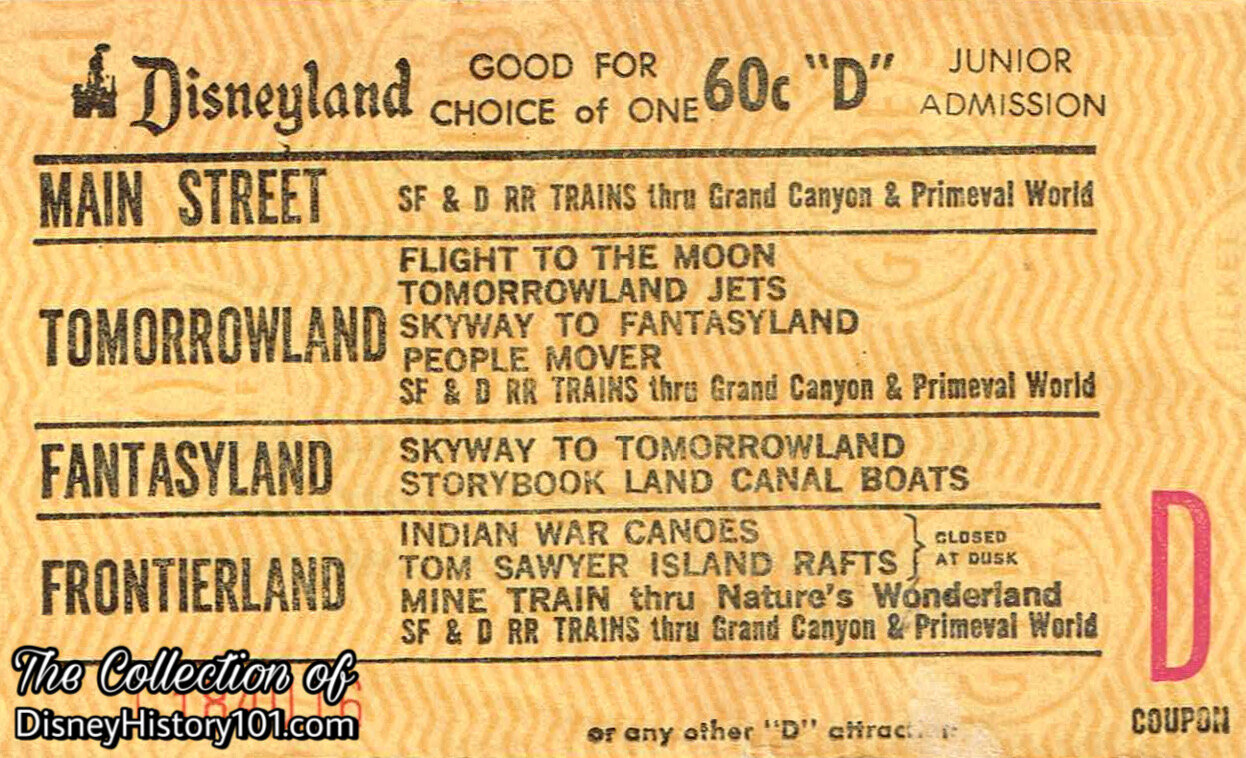
Disneyland “D” Coupon (Value 60¢)
In 1958, admission for passage aboard the Rainbow Caverns Mine Train was one “D” coupon, or 35 cents. In 1965, the cast of admission for a ride aboard the western mine train through Nature’s Wonderland, Rainbow Caverns, and much more, was exactly one “D” coupon, or 60¢.
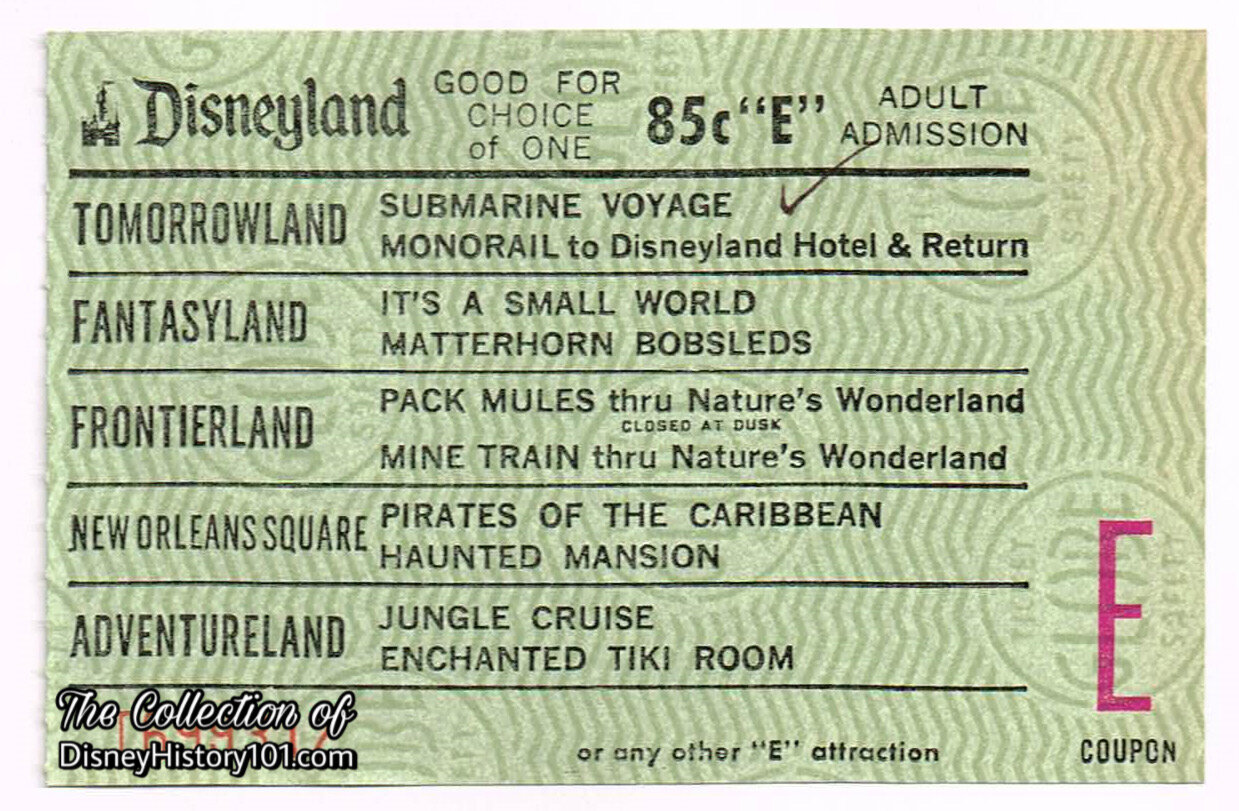
Disneyland “E” Coupon (Value 85¢)
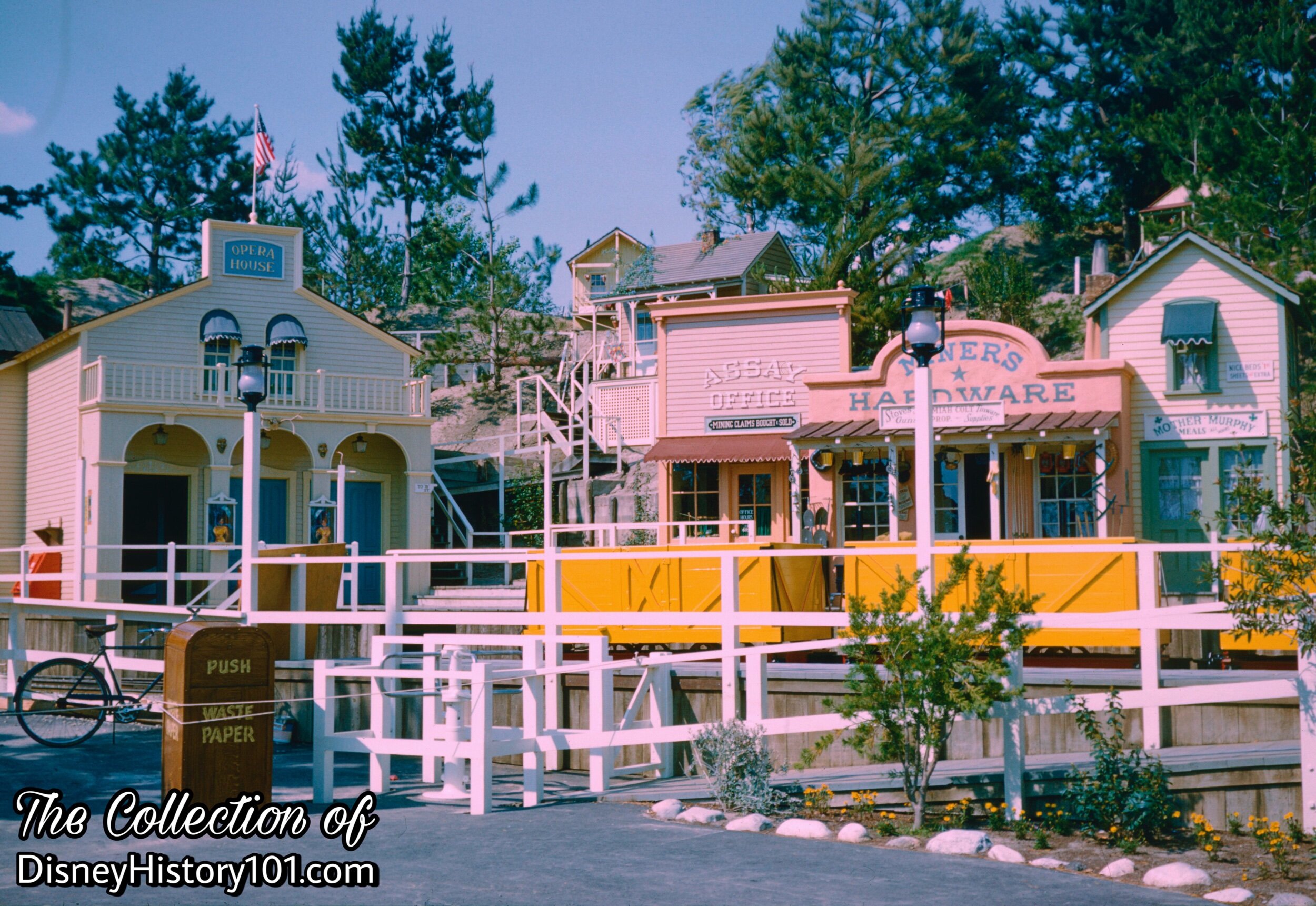
Rainbow Ridge, c. May, 1960.
Welcome to the “little” mining town of Rainbow Ridge! If’n ya want ta see just how small it is, just make yer way towards those buildings up in the hills. Walt Disney’s Imagineers employed “forced perspective” and landscaping techniques to give the town depth! Art Director Bill Martin generated many conceptual drawings of Rainbow Ridge.
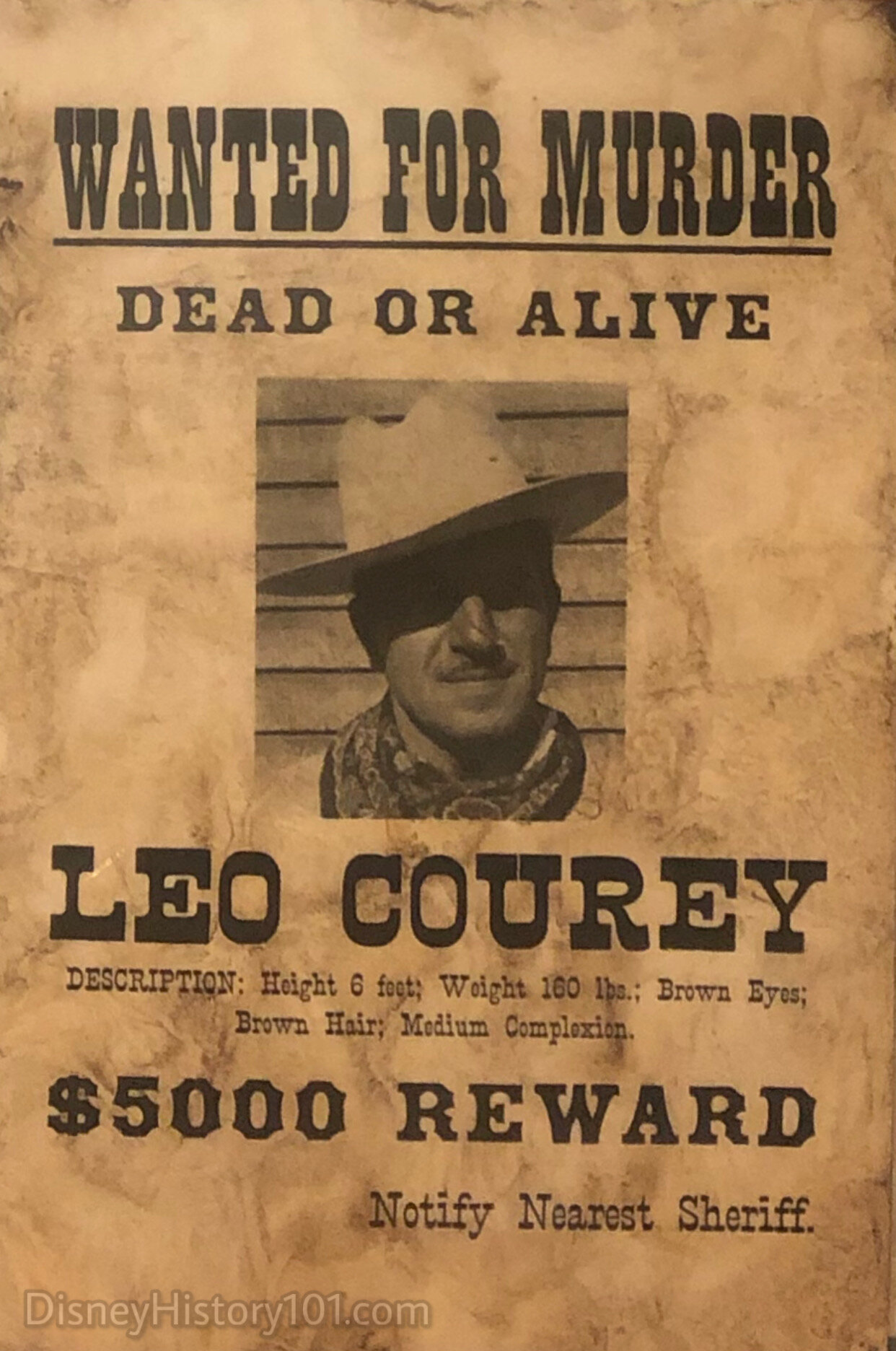
Rainbow Ridge Poster Prop, The Collection of James Keeline
“Audience Waiting Areas” are especially designed as part of the attraction to make the guest's time waiting in line as comfortable as possible. Before we head out into the Painted Desert, we pause to look at a few Wanted Posters (perhaps hung by resident U.S. Marshall Willard P. Bounds). Be on the lookout for more of these scoundrels around the town of Rainbow Ridge. Why, only a few moments ago, the local sheriff engaged in a stand off with the villainous Black Bart after he robbed the Golden Horseshoe’s receipts and took off on foot near the outskirts of Rainbow Ridge! Of course, real vintage wanted posters didn’t have photographs on them as this would have been problematic considering the printing process of the era.
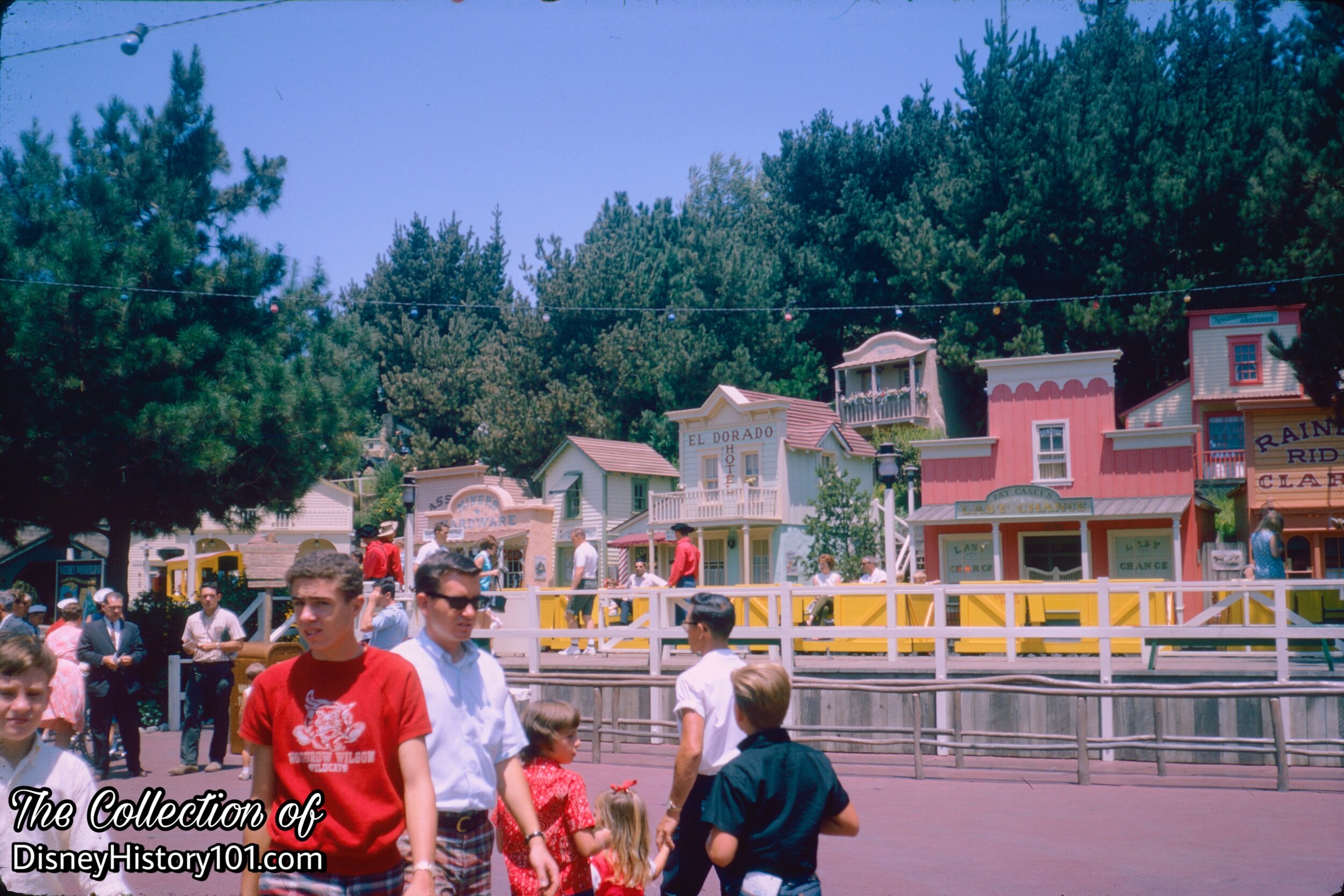
Rainbow Ridge, (August, 1966)
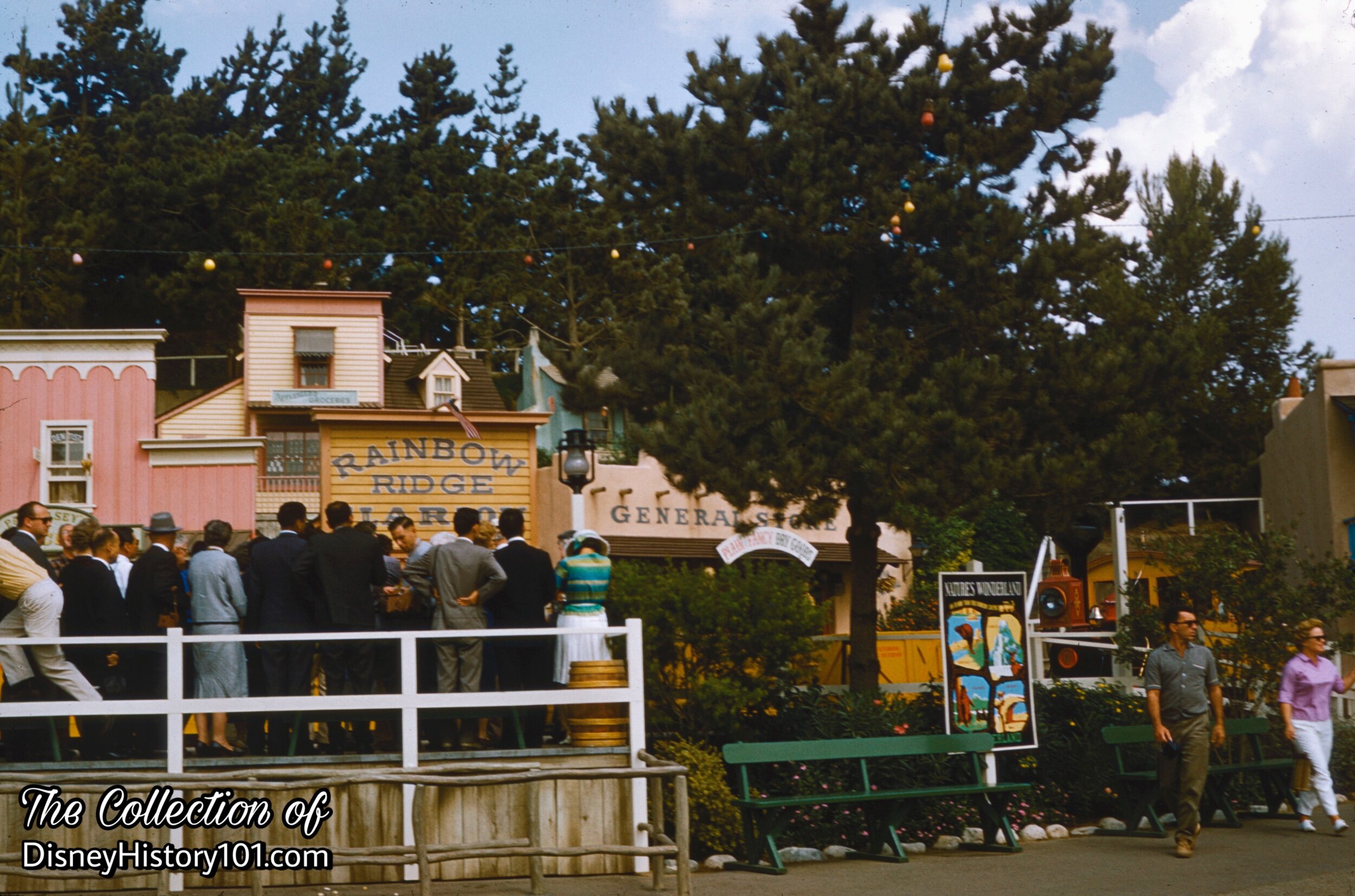
Rainbow Ridge, (1961)
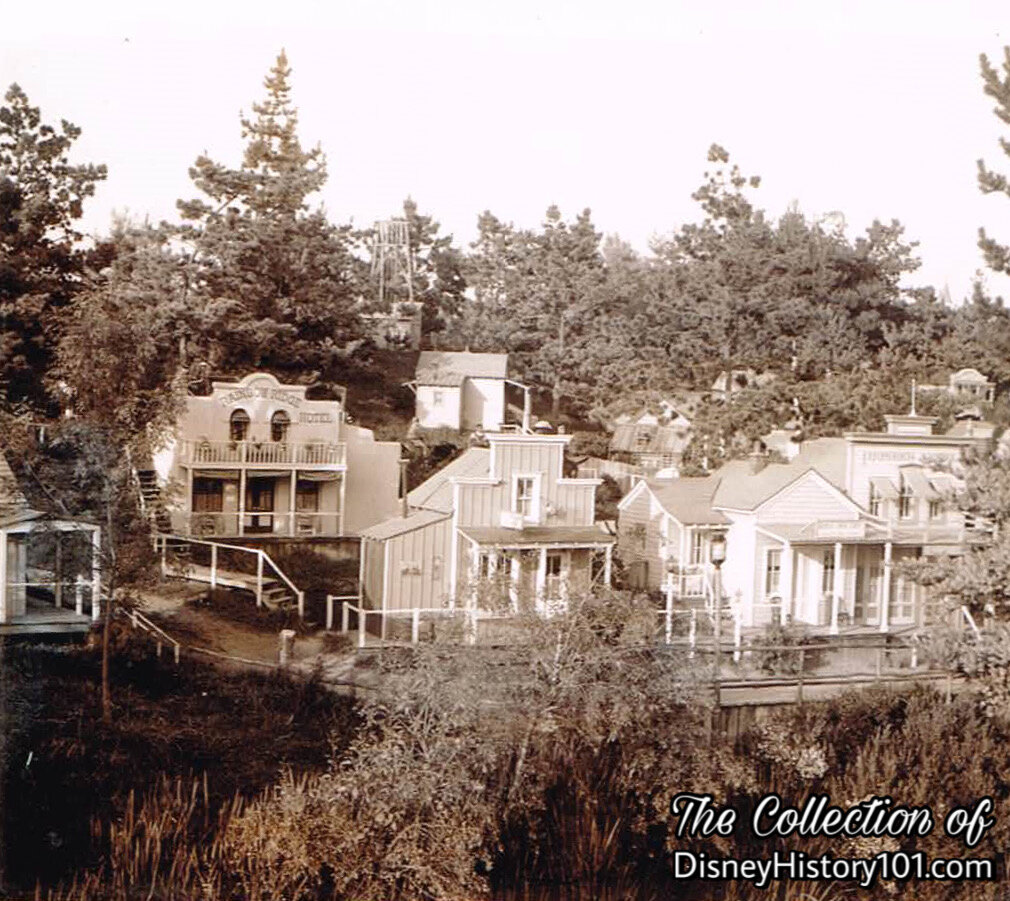
Rainbow Ridge
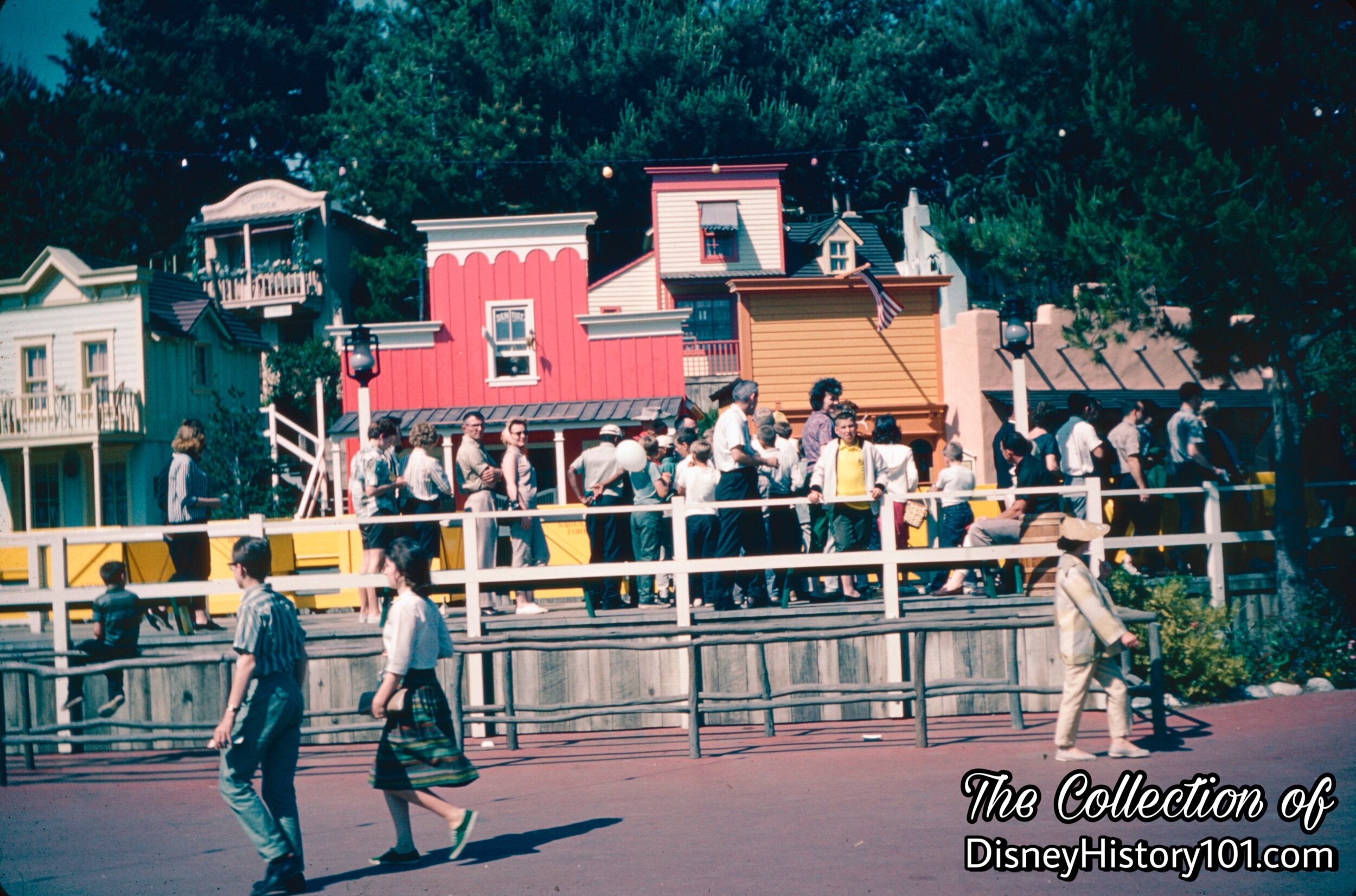
Rainbow Ridge, (Summer, 1966)
You’ll notice that nothing stops these little mine trains from running (not even a little minor refurbishment to the structures of Rainbow Ridge)!
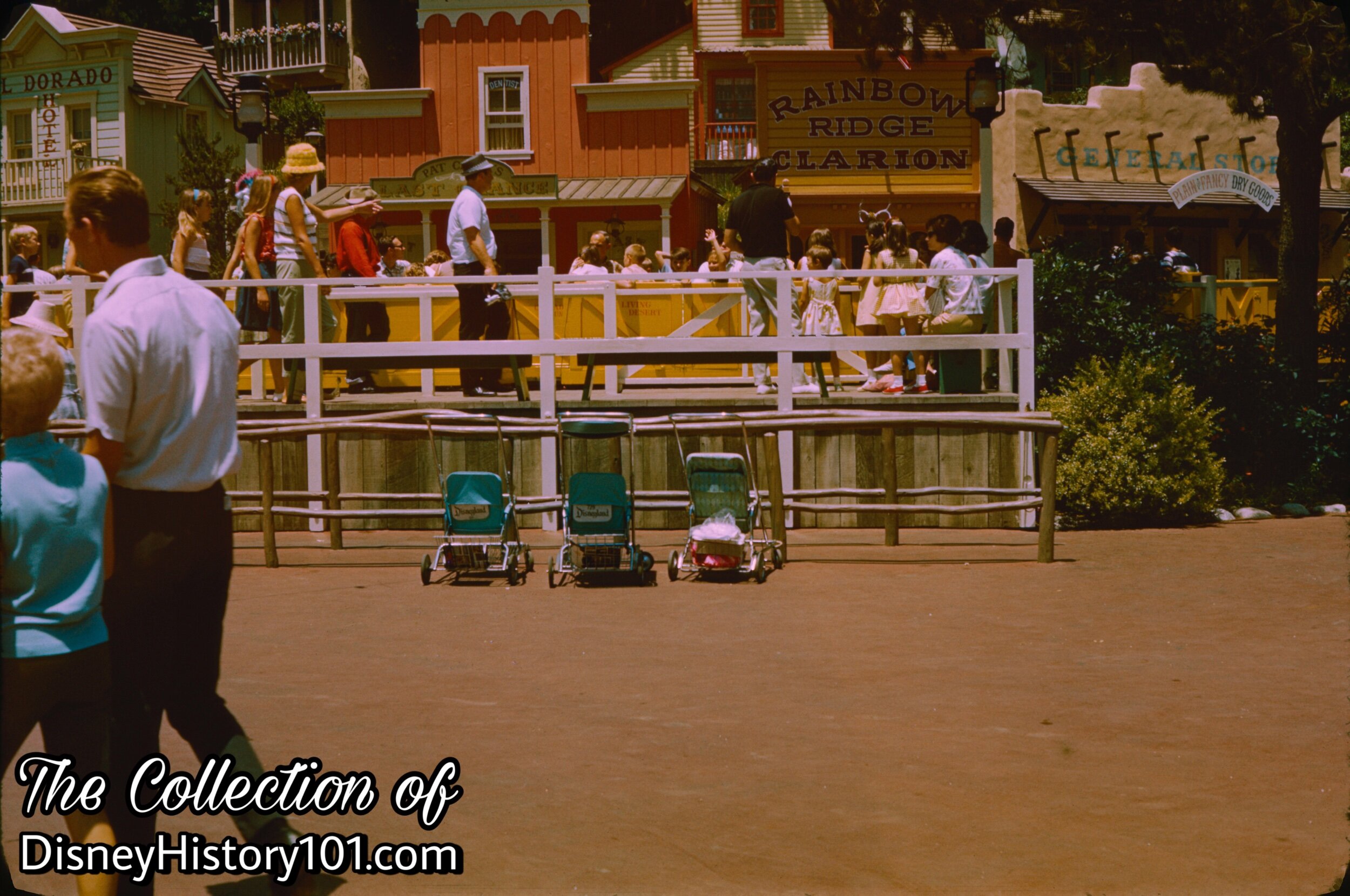
Rainbow Ridge, (July, 1966)
This is the last chance to stock up on supplies before heading out into the rugged wilderness.
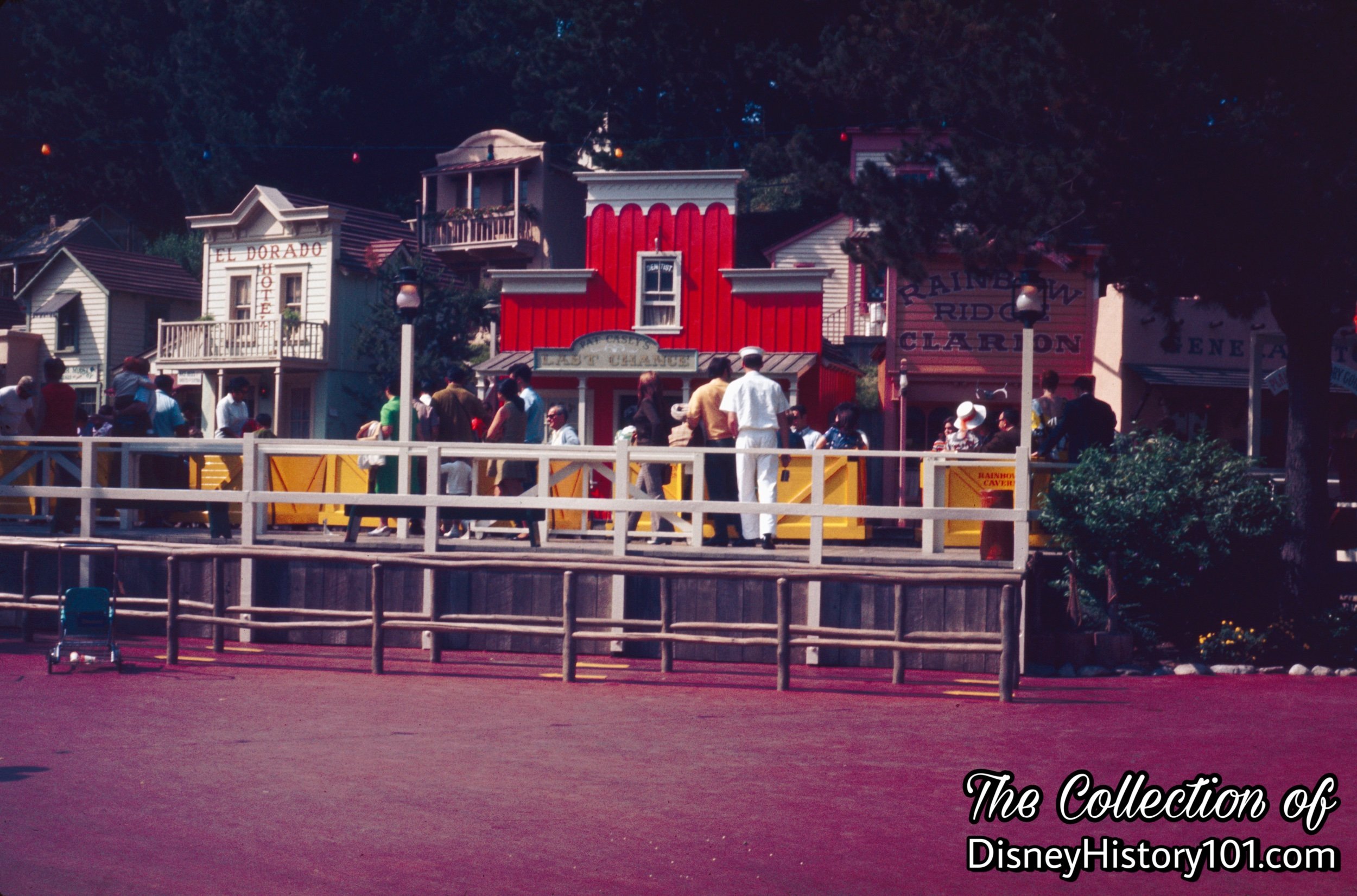
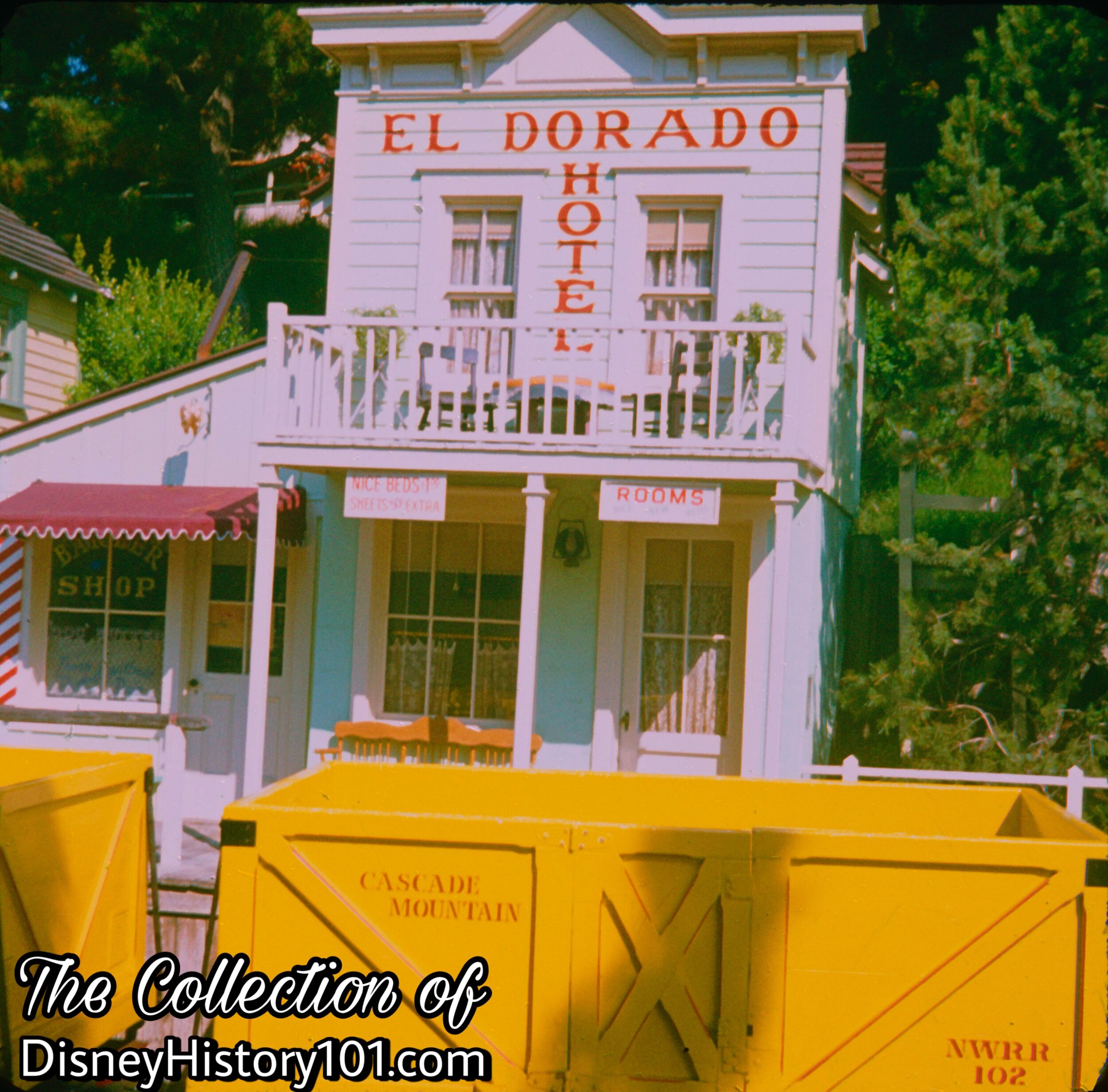
Rainbow Ridge
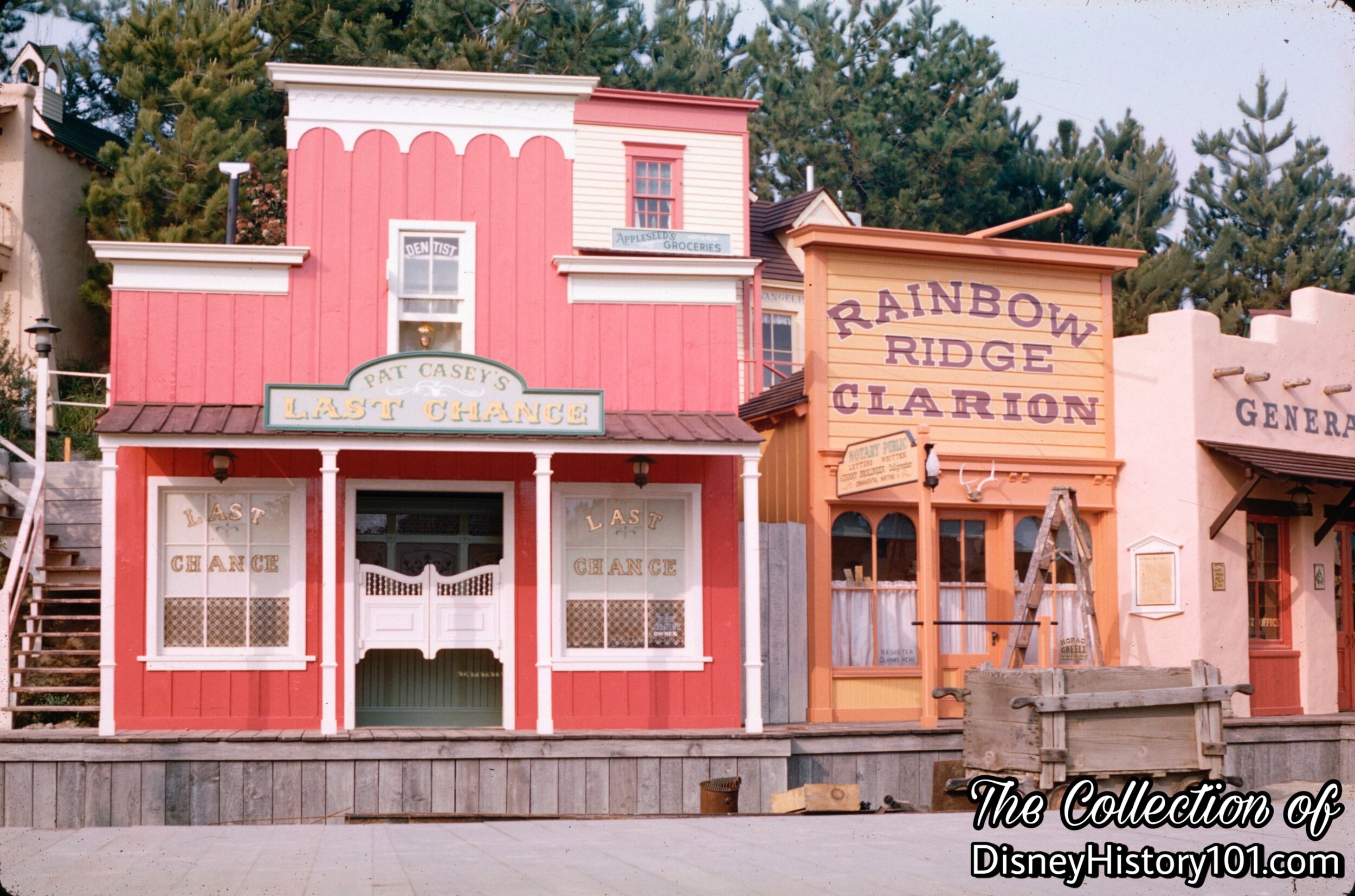
Rainbow Ridge, (1960)
The sounds of the lively Rainbow Ridge can be heard as we make our way through town.
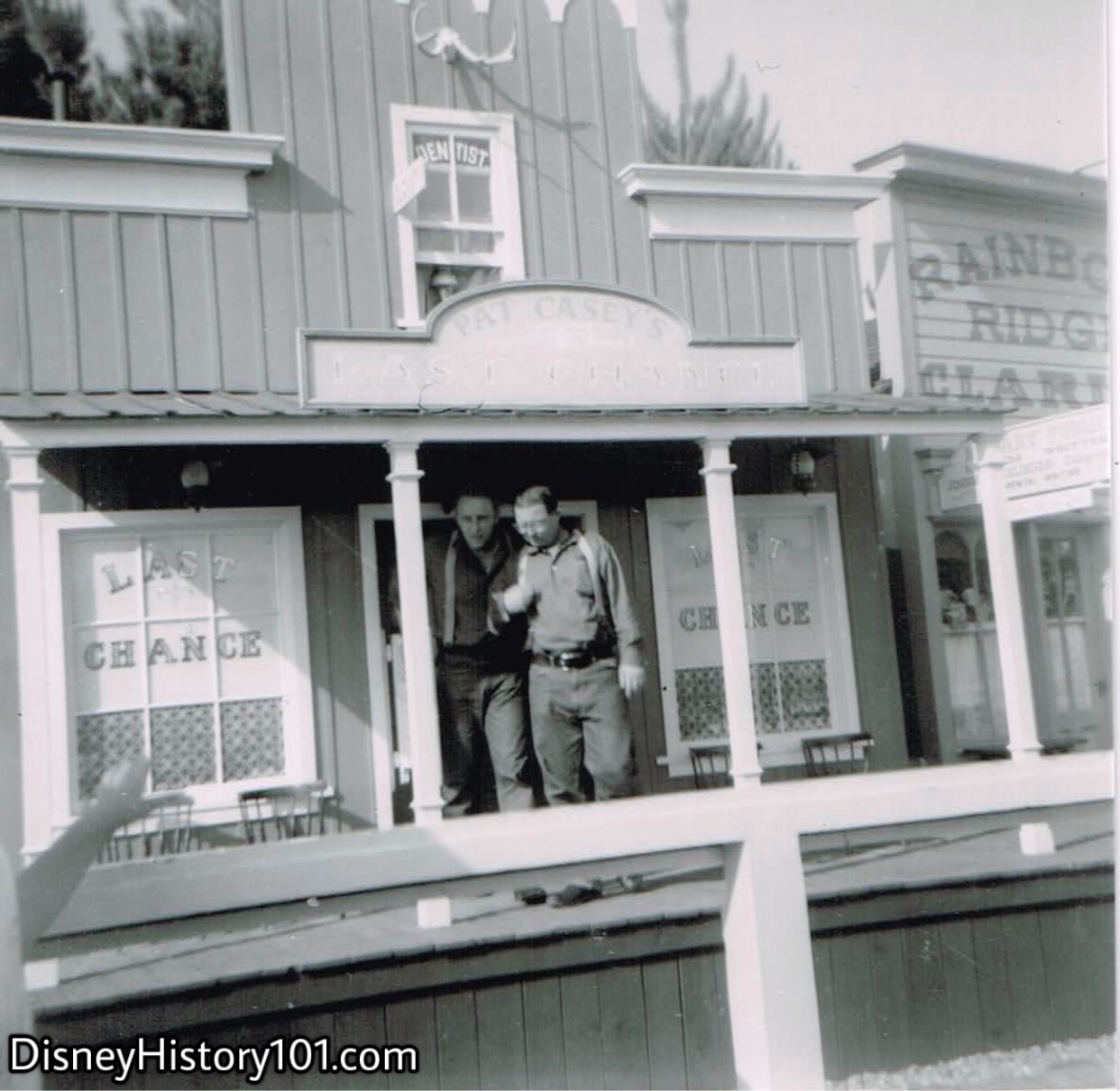
Rainbow Ridge
“Last Chance” for a couple of burly Mine Train engineers, before embarking on a routine excursion into Nature’s Wonderland!
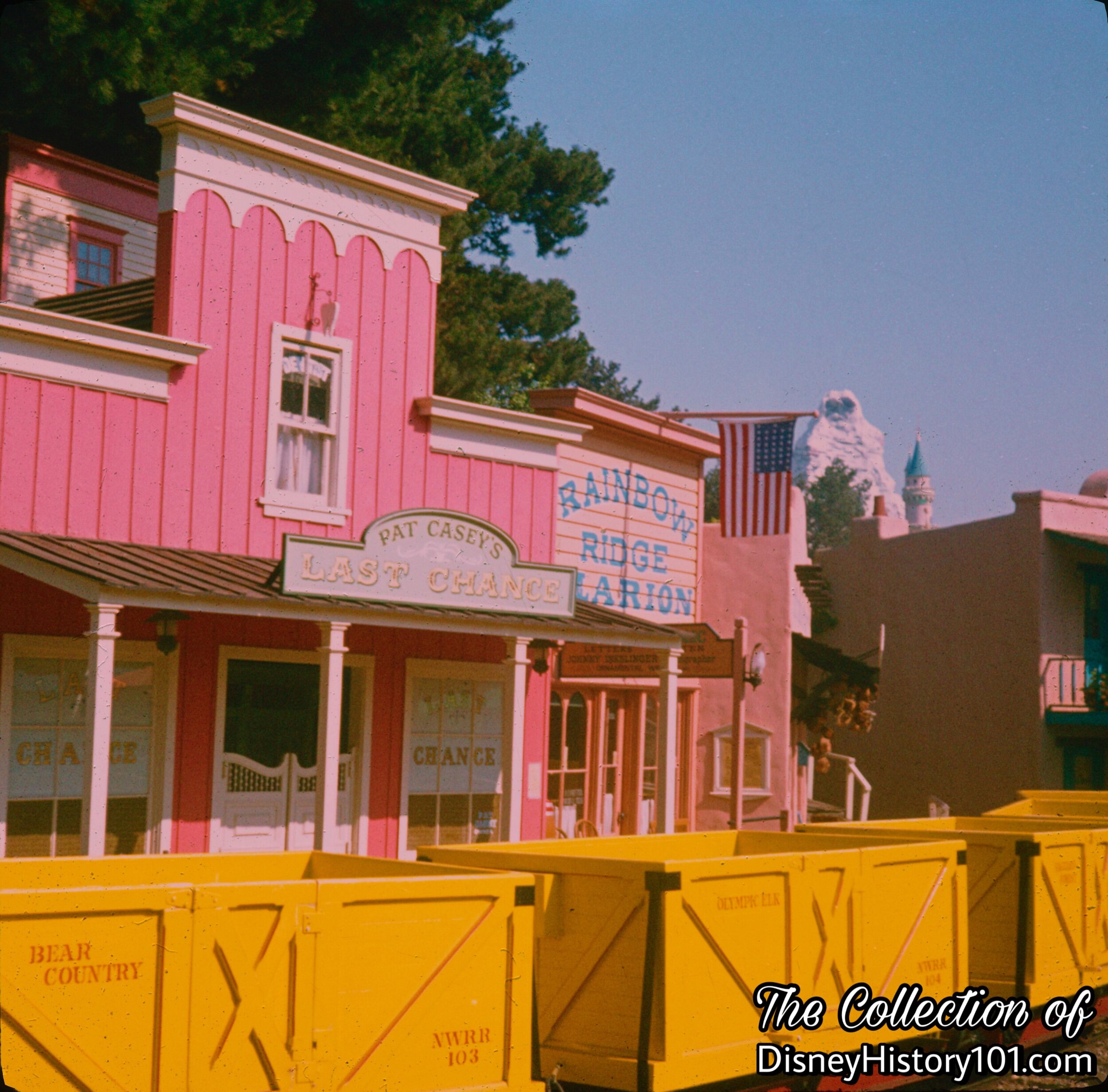
Rainbow Ridge
You can blame it on the Walt Disney Production. Like many Frontierland elements (like Pecos Bill and Slue Foot Sue), the look of Pat Casey’s Last Chance was partially derived from designs used in backgrounds created for the Pecos Bill segment of Melody Time (1948). As a final (and loyal) touch to set the Stage, 36-star flags hang around this little mining town!
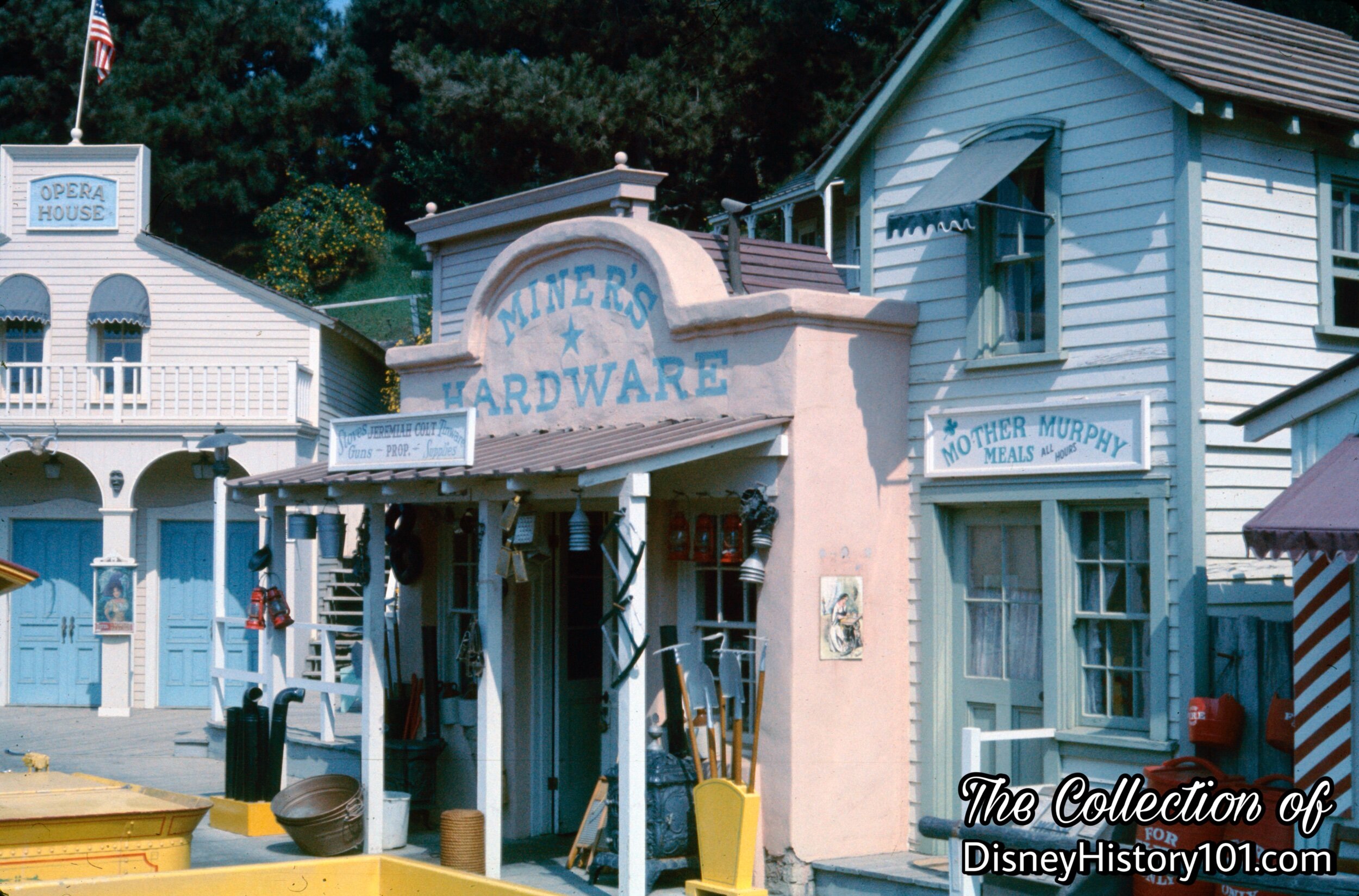
Rainbow Ridge
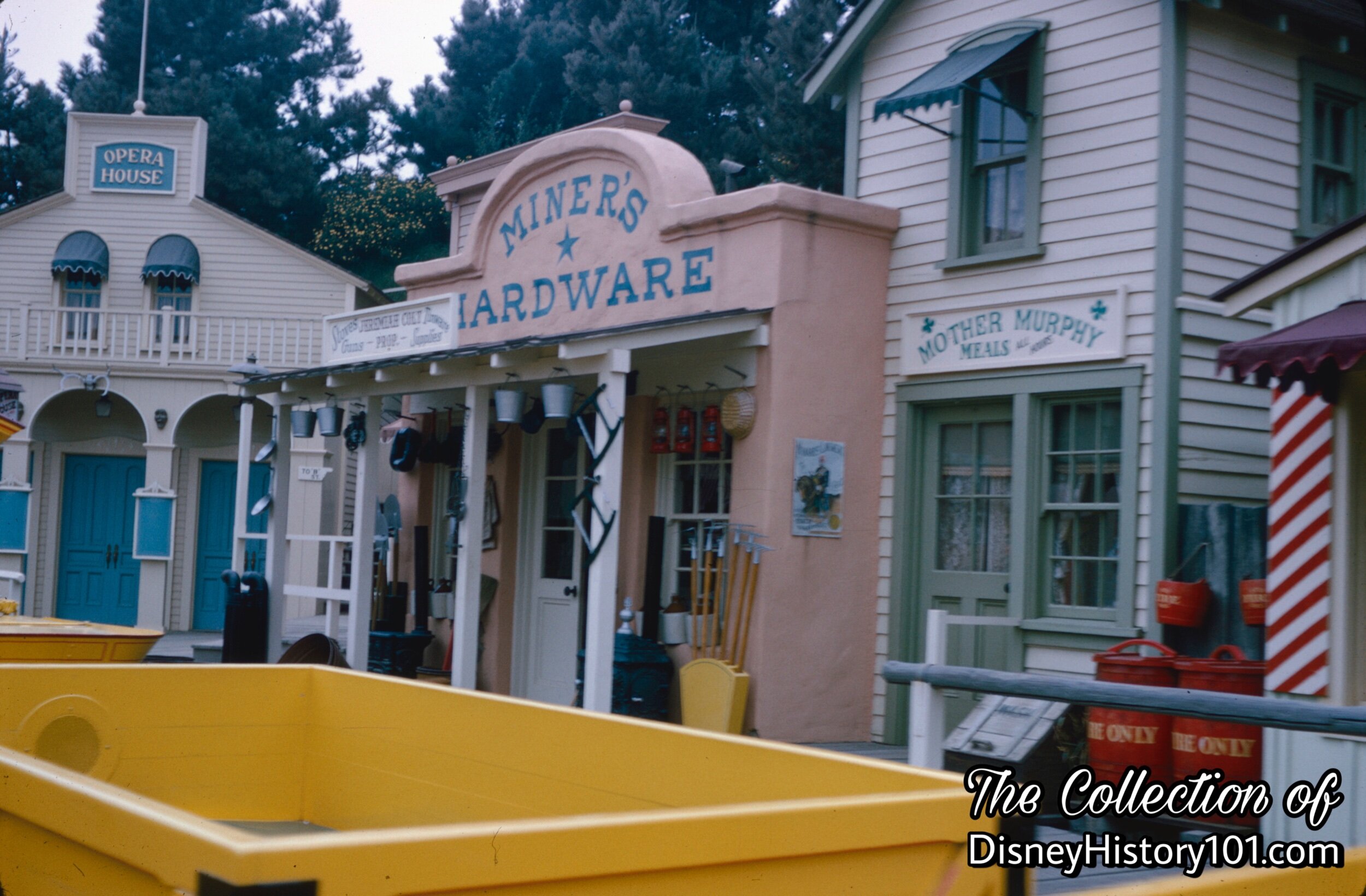
(1964)

Rainbow Ridge, (August, 1965)

Rainbow Ridge
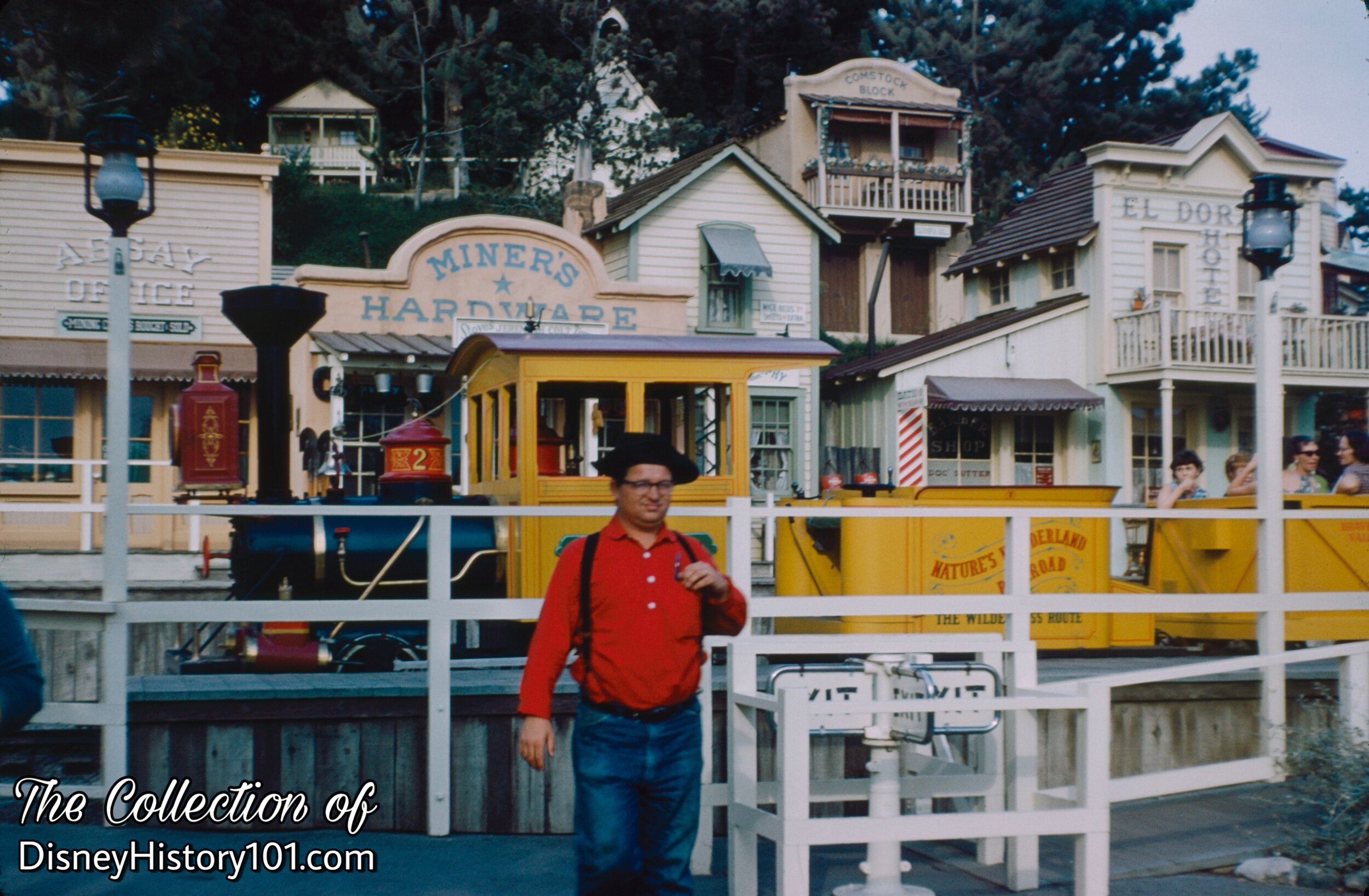
Frank Mc Nell at Rainbow Ridge, (October, 1961)
Before you come aboard, we’d like to introduce you to a very special Mine Train conductor Frank Mc Nell - an original and founding member of the Order of the Red Hankerchief - one of Disneyland’s oldest unsanctioned employee organizations! Thirty-six original members who operated the Mine Train Through Rainbow Caverns (like Ray Van de Warker) founded this organization during February of 1964. Many notable Disneylanders had a privileged part in the Mine Train rotation - the set order of operating positions established by the attraction's Working Lead. A total of 256 cast members would ultimately join (like George Kissinger, Clay Mitchell, John McCoy, and so many others). We just have one question - where’s Frank’s handkerchief?
Another distinguished title was that of “Most Mine Train Derailments”, a title held by Ron Dominguez (due to forgetting “to throw the switch”), according to accounts of Ray Van de Warker (to Disneyland LINE magazine, Vol. 25, No. 28). Ron Dominguez went from the Mine Train to the Director of Disneyland Operations.
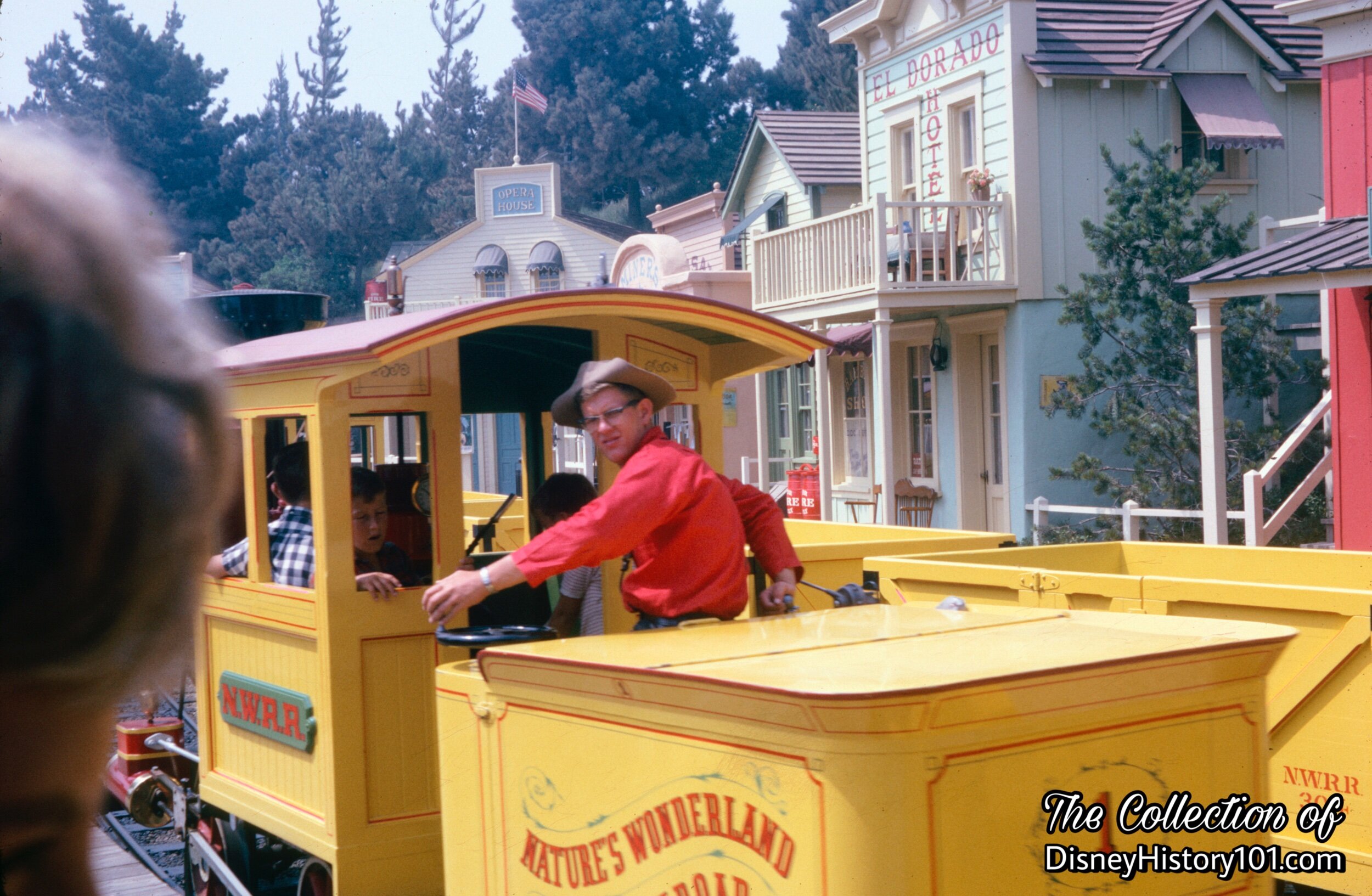
Mine Train Host and Operator at Rainbow Ridge
Many a Disneylander has operated a Mine Train, including Frank Block (c.1966; former Submarine Captain).
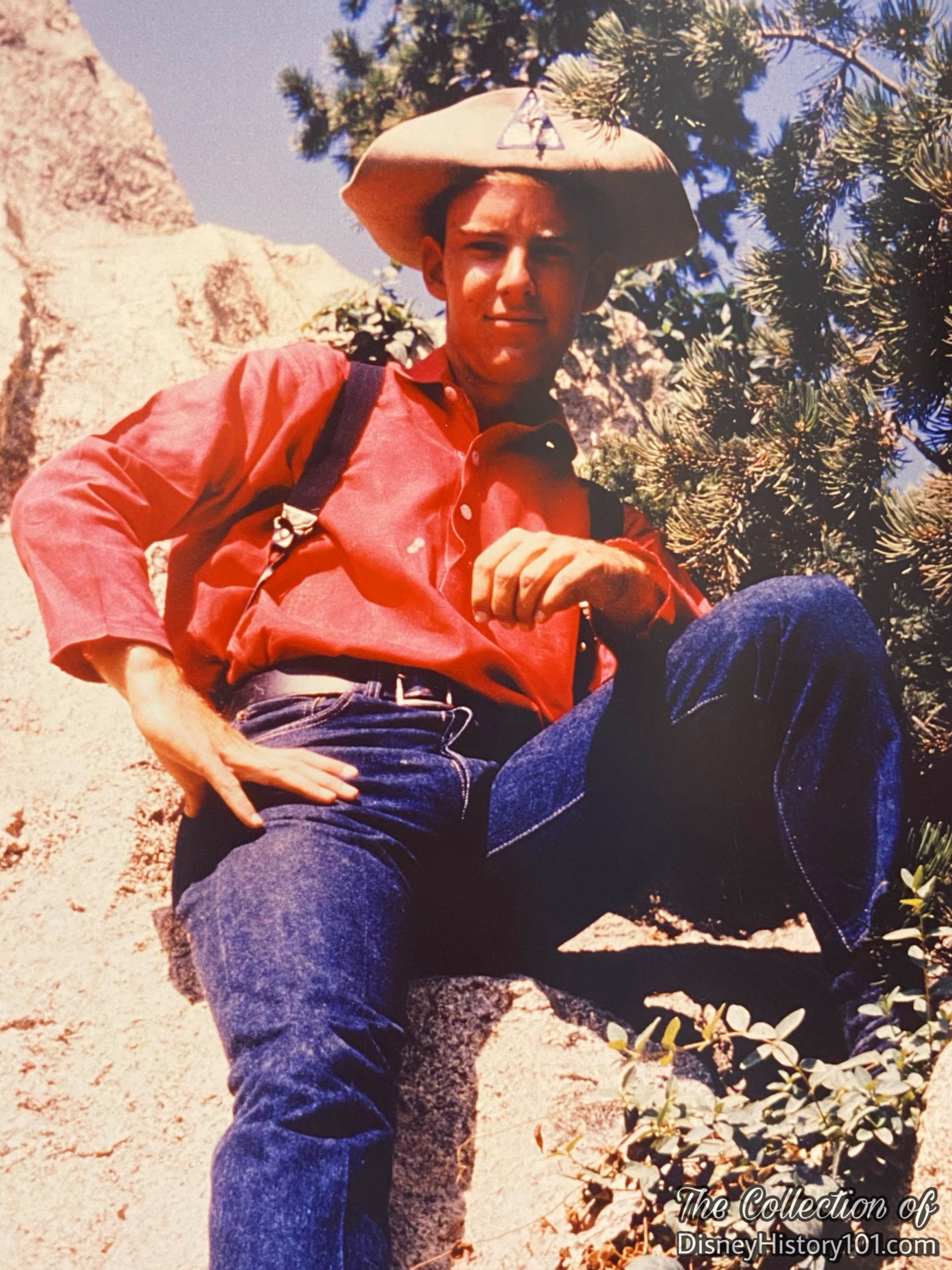
The Collection of Gary Fravel of Disney University.
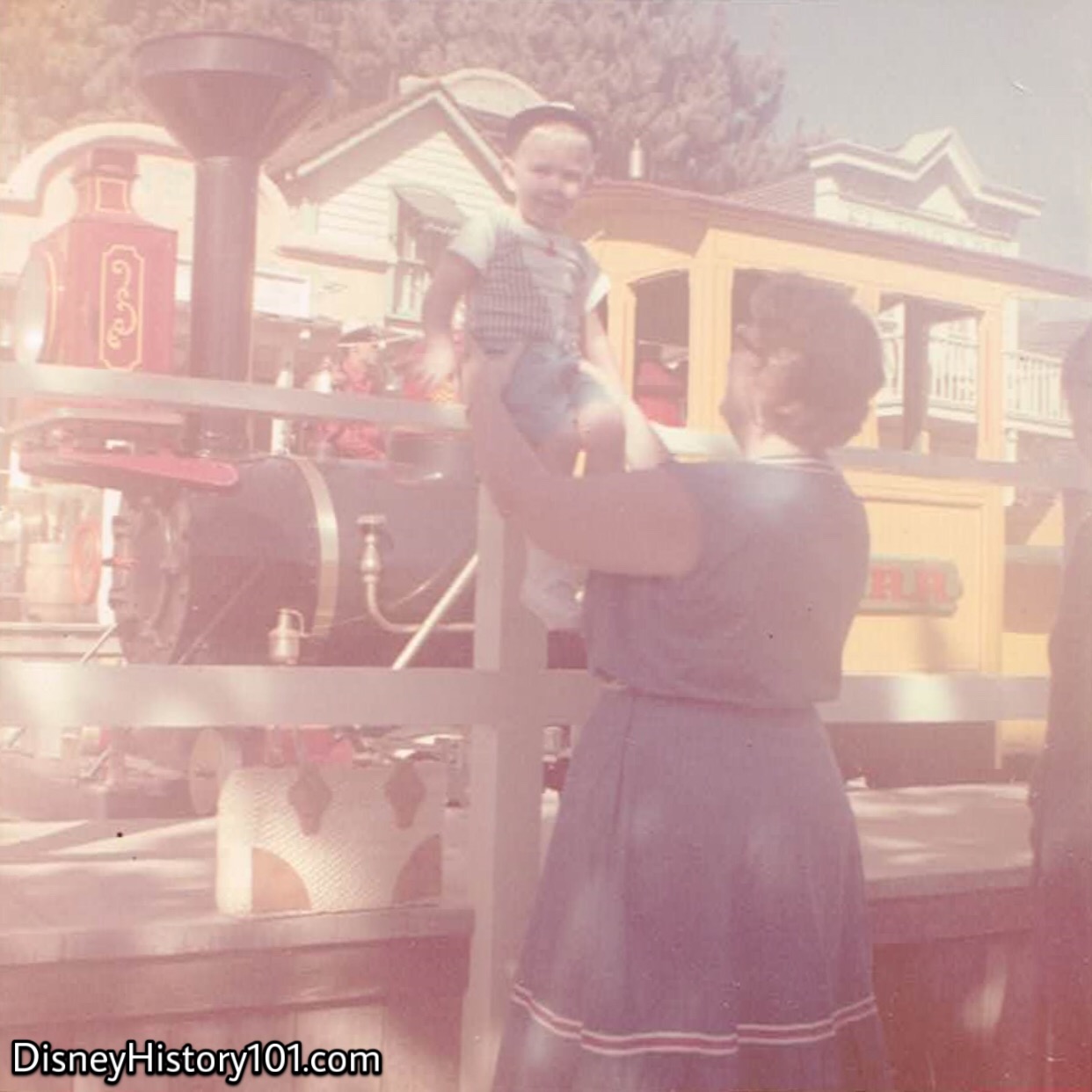
Rainbow Ridge
“As we head for the wilderness, a couple of suggestions - please stay seated at all times…”
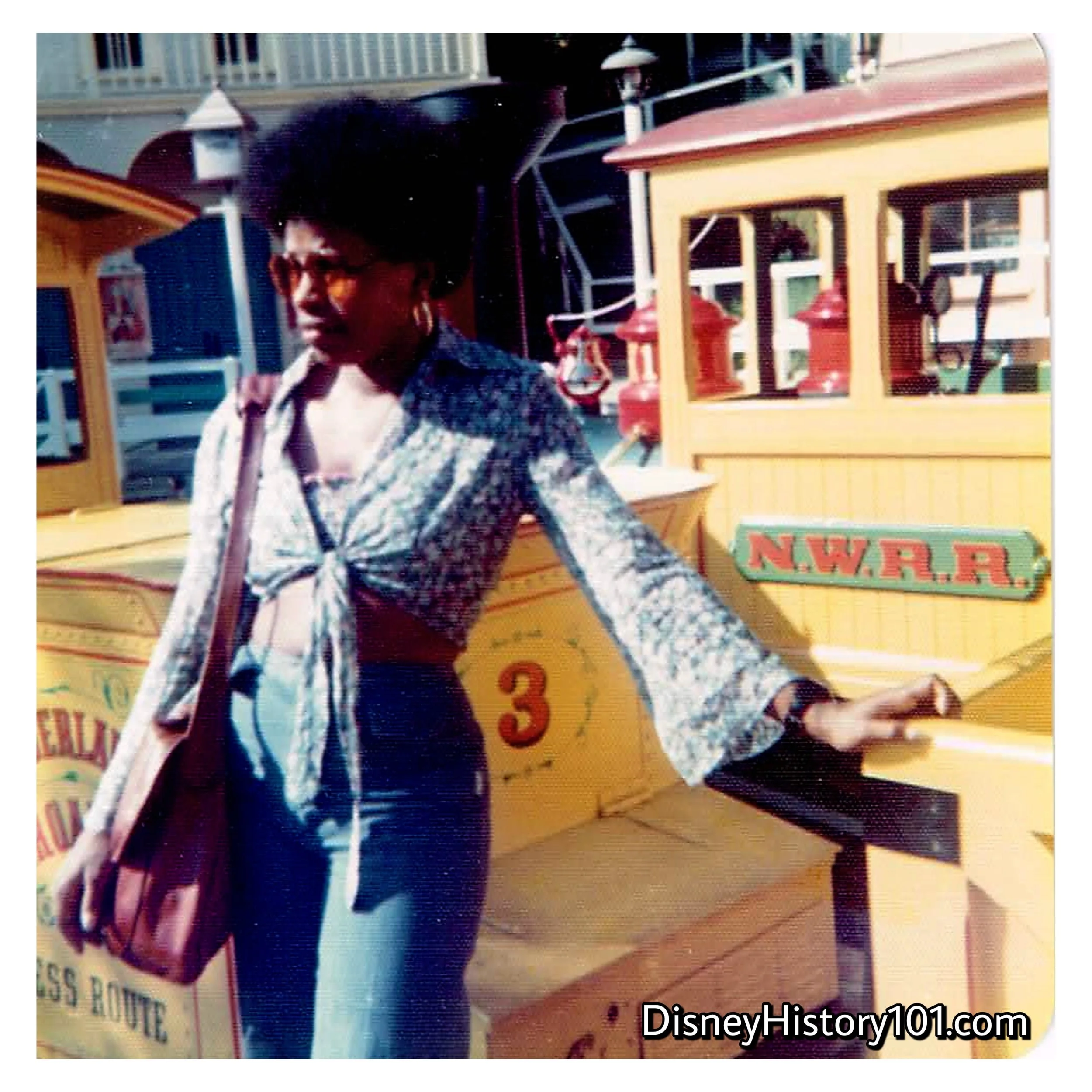
Rainbow Ridge
“…and [please] keep your hands and arms inside the train. The animals get mighty hungry. And uh, no smoking please, ‘cause we don’t want to start a forest fire.”
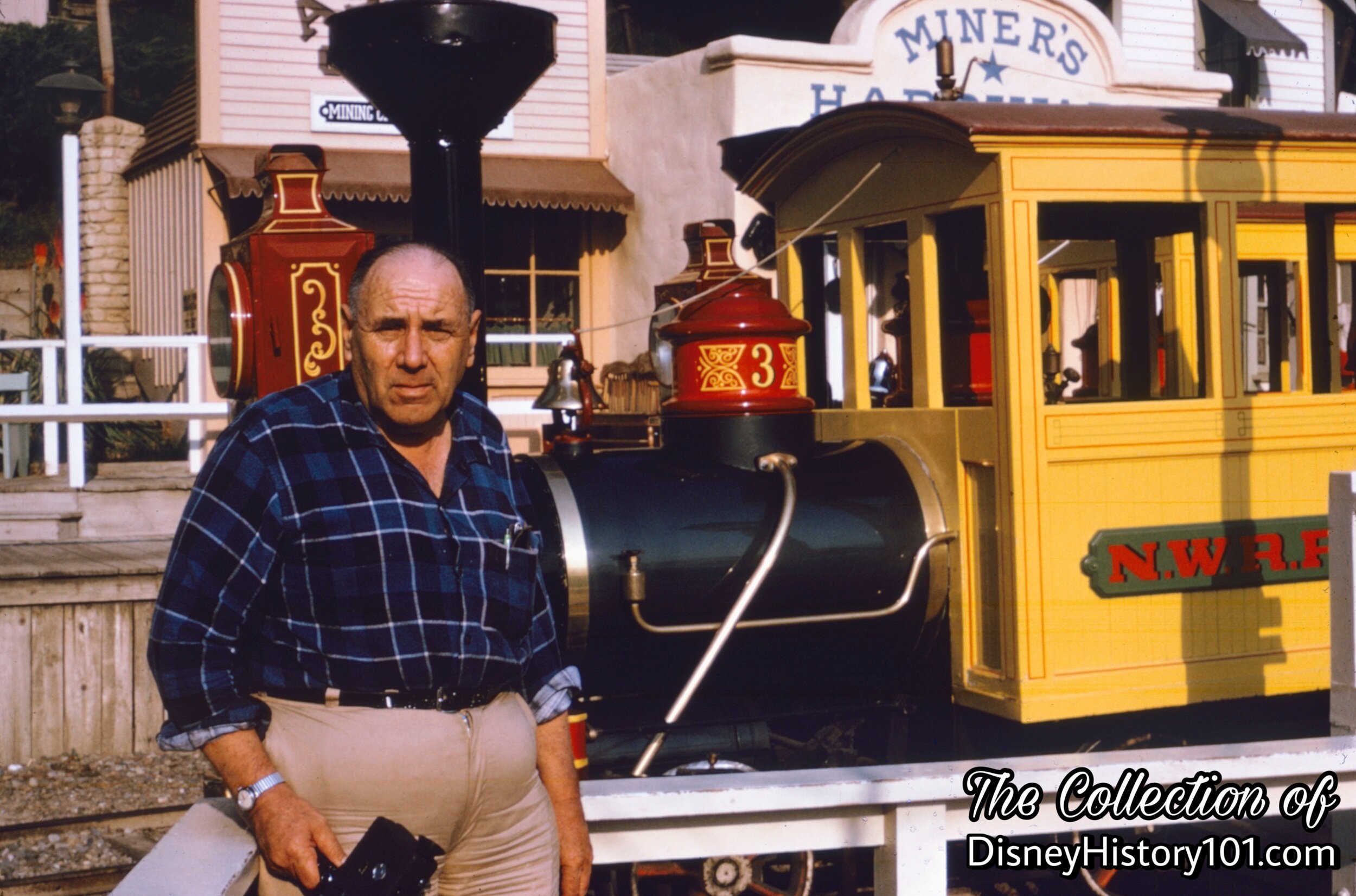
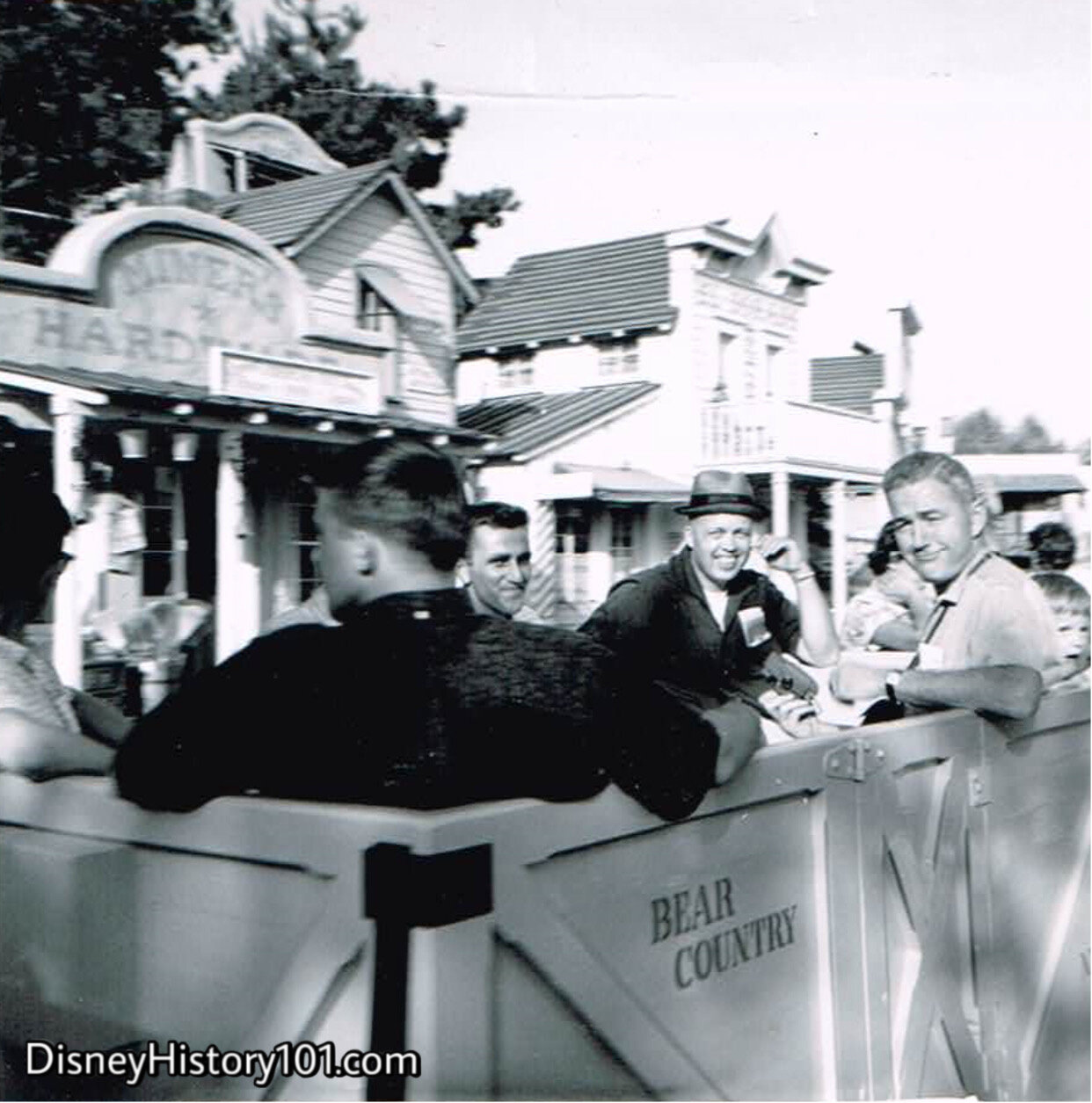
Rainbow Ridge
Guests are grouped, loaded, and (once aboard) the five gondola doors are safely “buttoned” closed. Once complete, the Ticket Receptionist hollers “All Aboard”, and a dispatch signal to the Engine Operator!
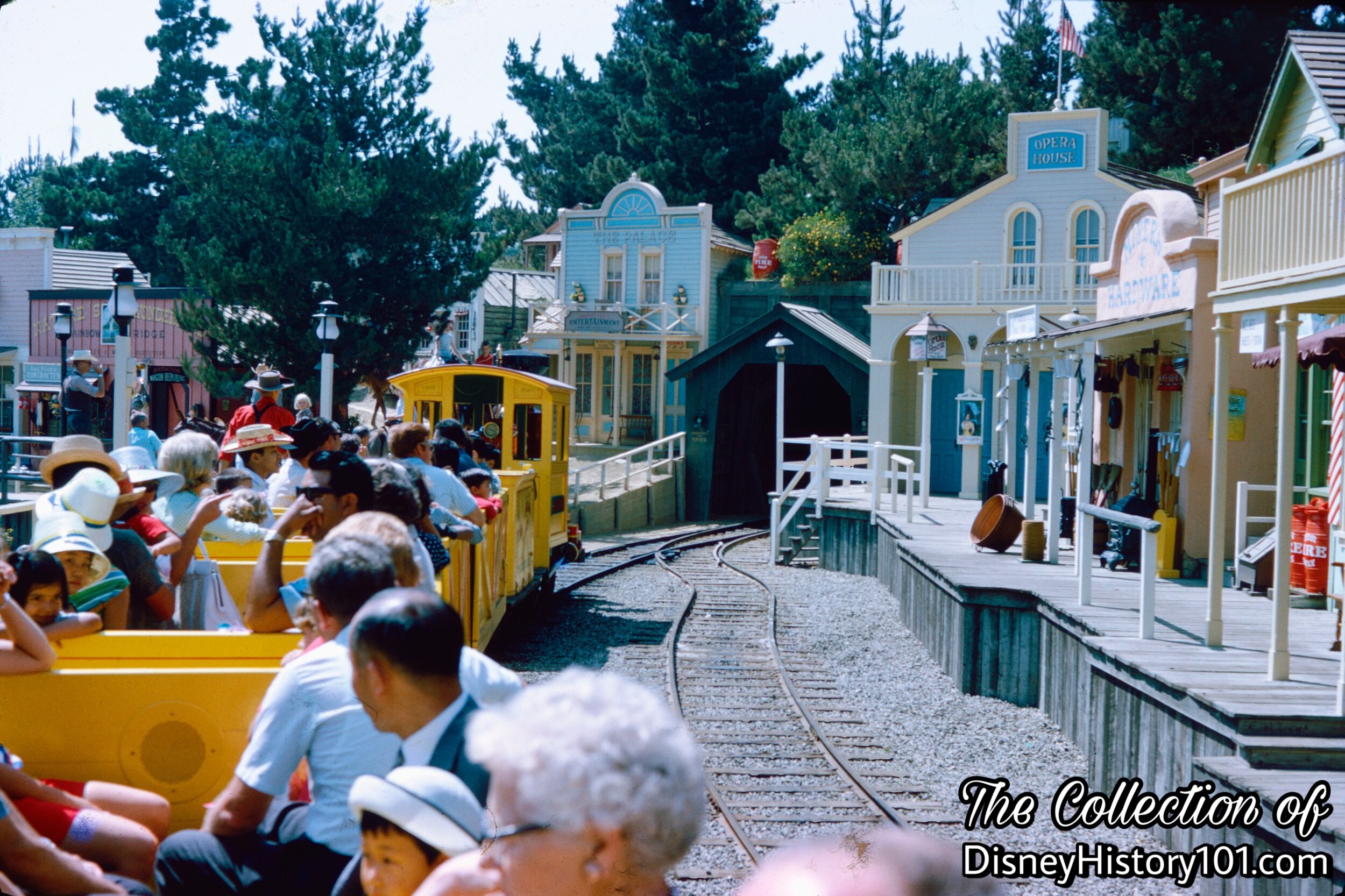
Rainbow Ridge, (August, 1965)
Now that each ten-passenger car is loaded to capacity, we’ll get on our way!
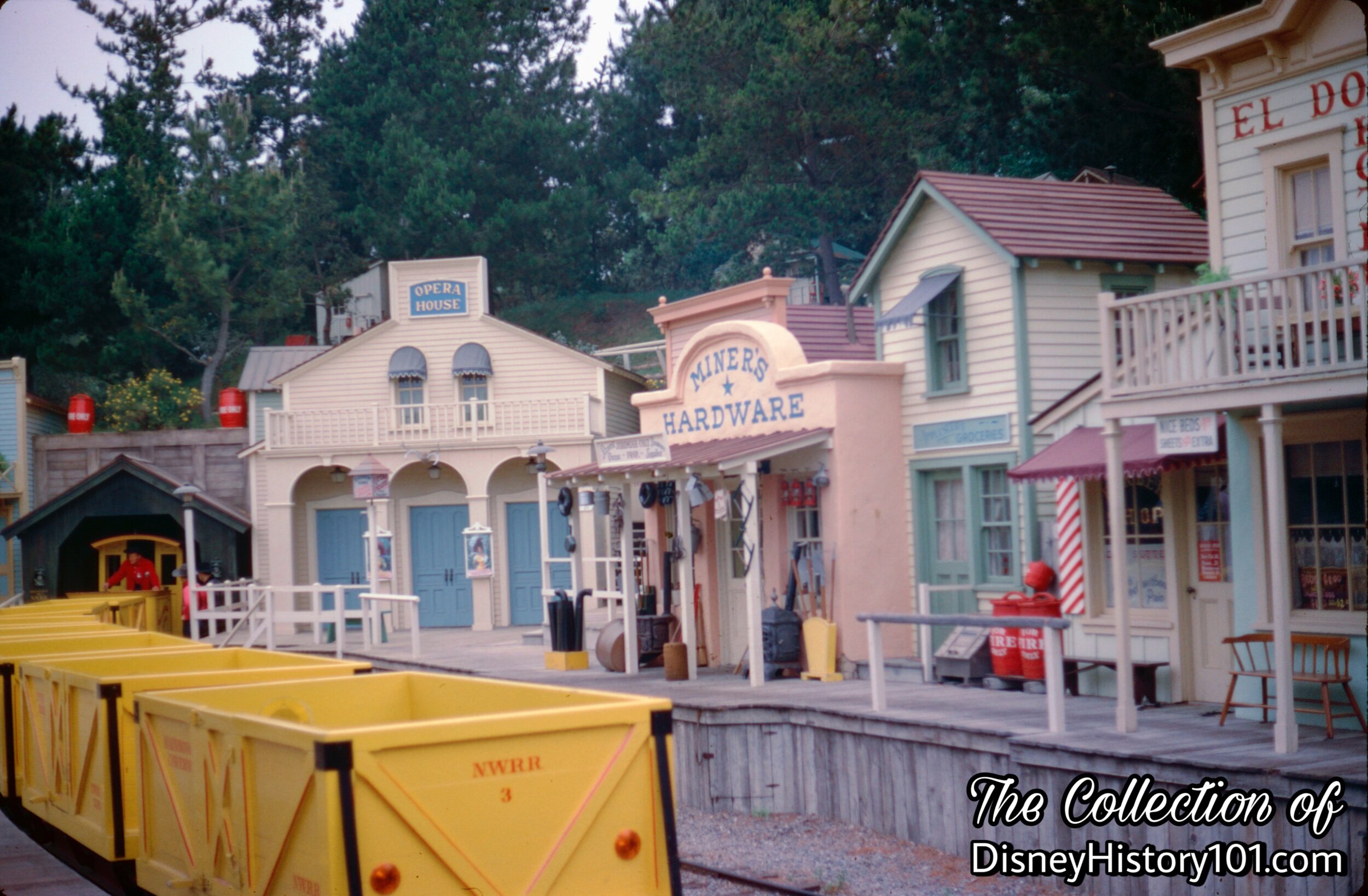
Rainbow Ridge
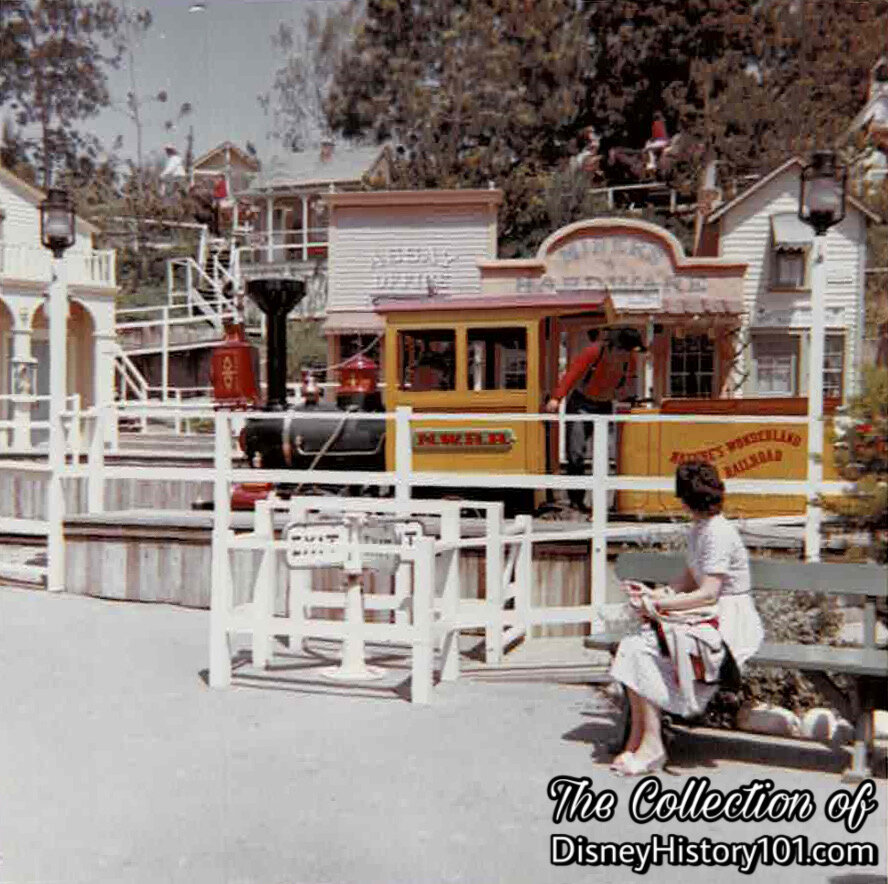
(April, 1963)
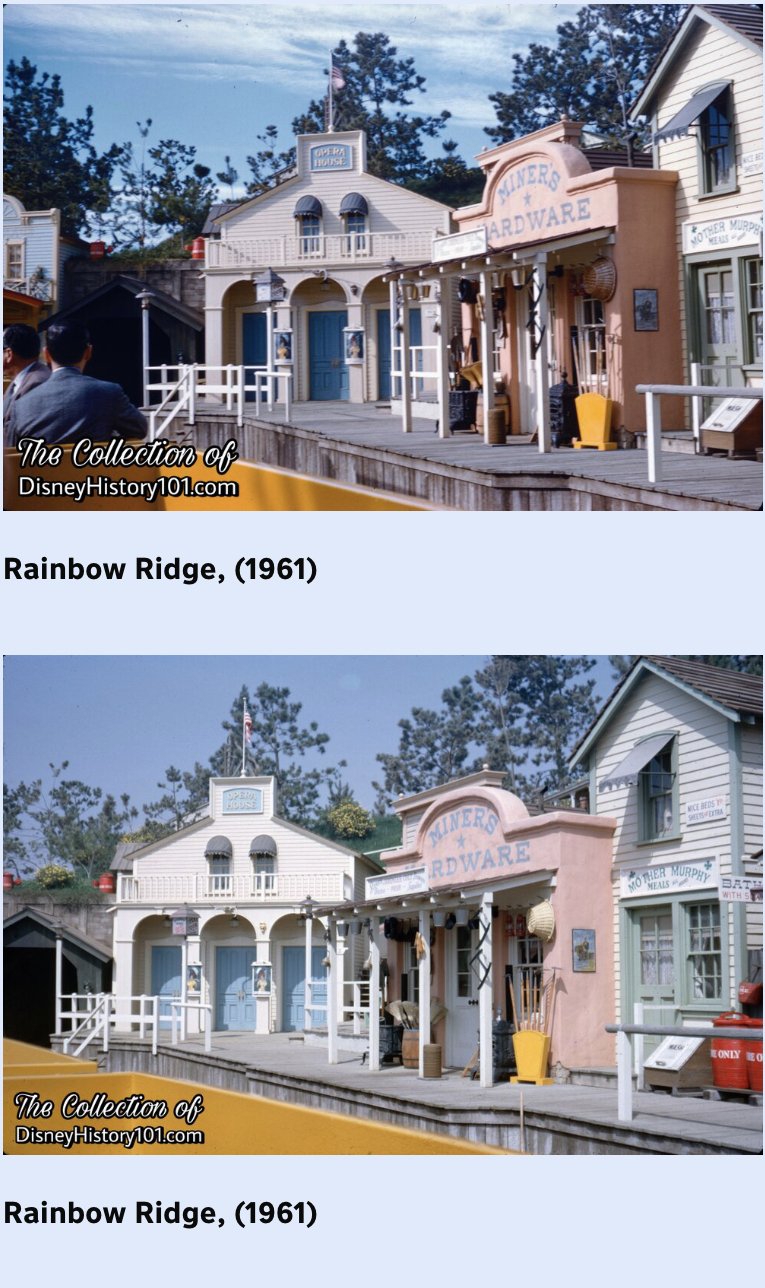
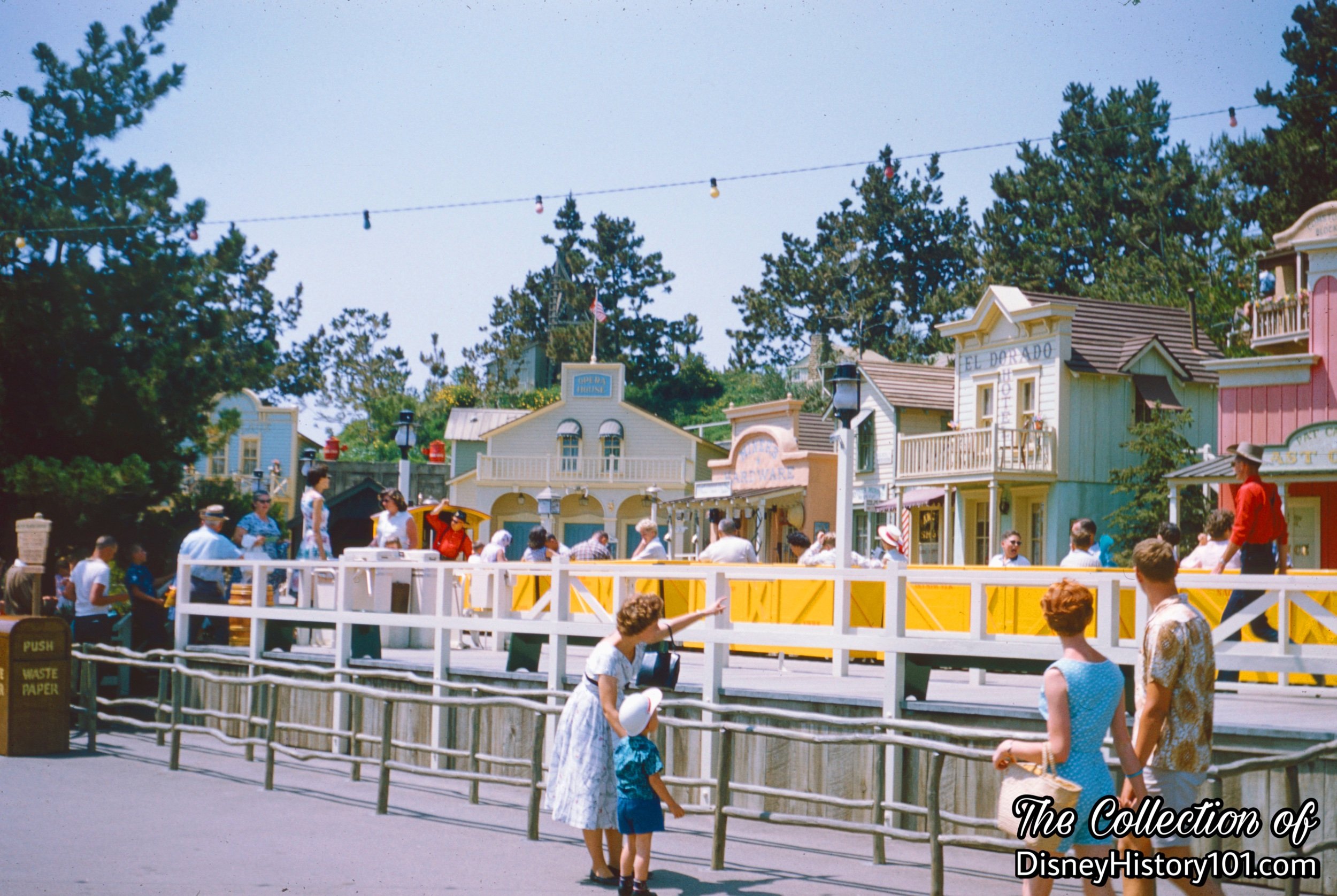
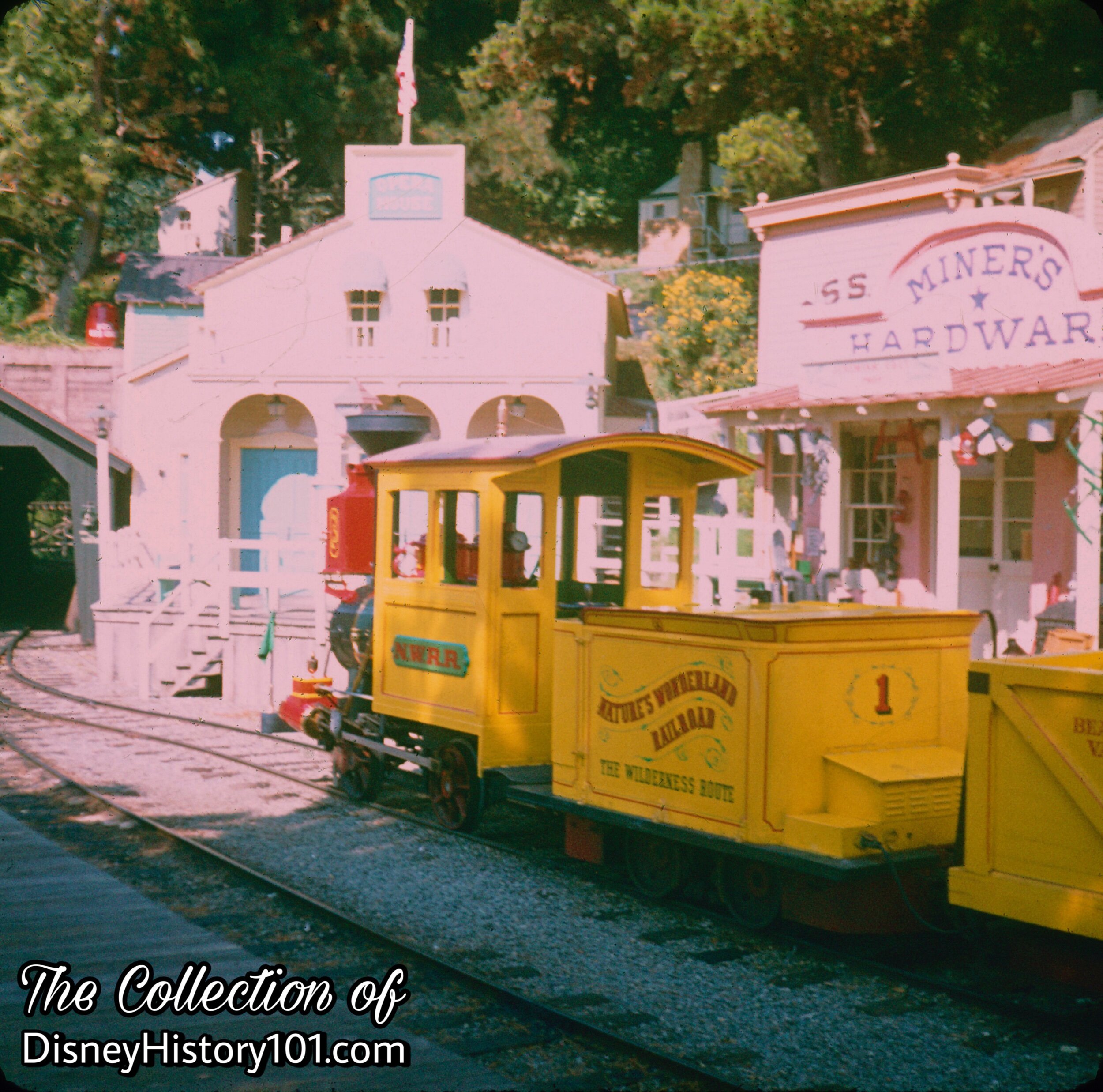
Rainbow Ridge and cycled out train.
This is the “Center Stage” of Nature’s Wonderland’s big show, the boarding and unloading area - a typical little California mining town of California’s “gold rush era”! Today, mine train engines and gondolas from this era are typically observed in the Northern California area, (of course) with the exception of Disneyland’s bright and shiny Mine Train Thru Nature’s Wonderland, in Southern California.
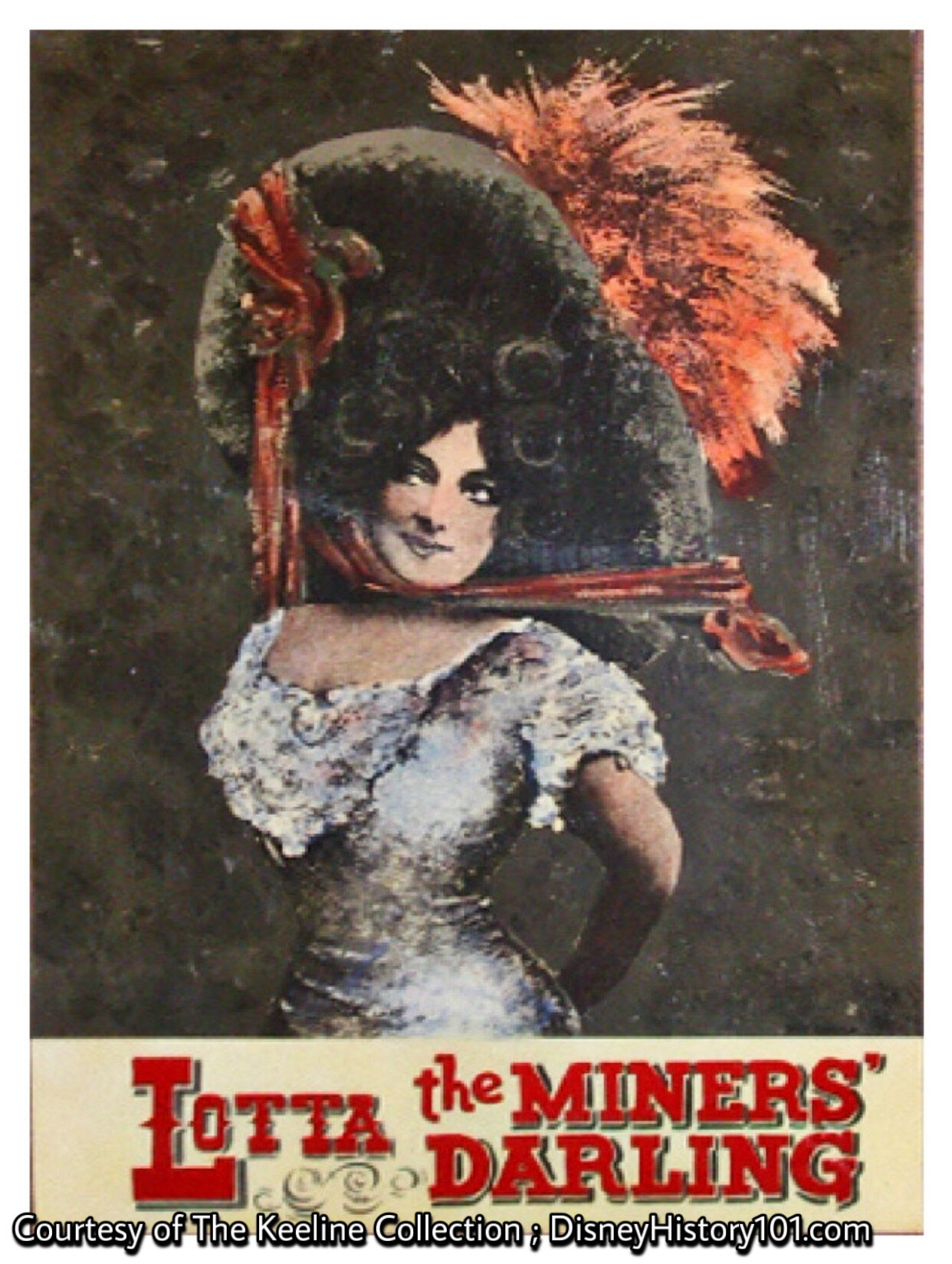
Rainbow Ridge Poster Prop, The Collection of James Keeline
While the Golden Horseshoe Saloon has Slue Foot Sue, “Lotta the Miner’s Darling” performs daily (for your entertainment) in Rainbow Ridge. In fact that’s her voice emanating from the Raintbow Ridge Opera House now!
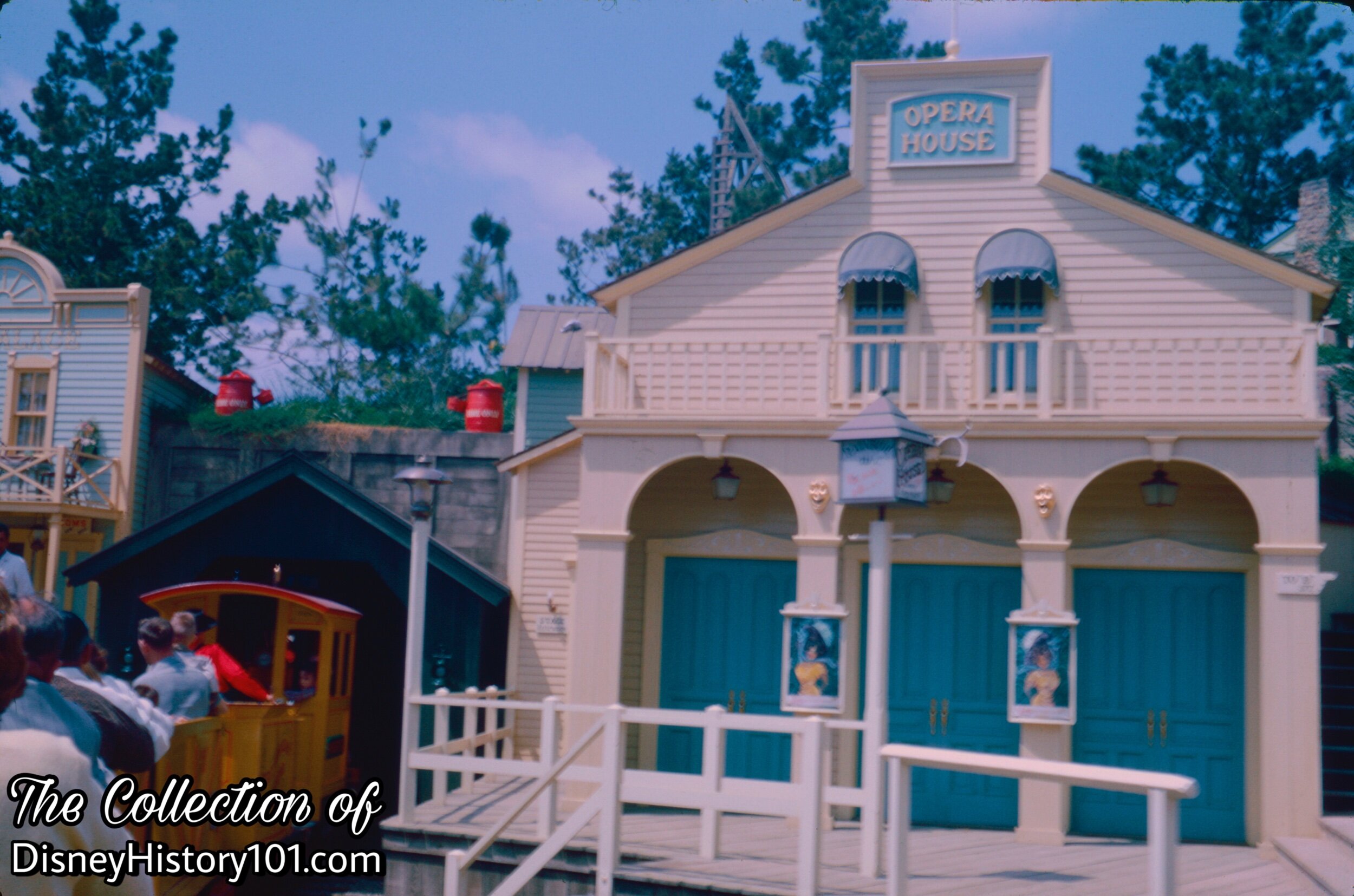
Rainbow Ridge Opera House, (April, 1961)
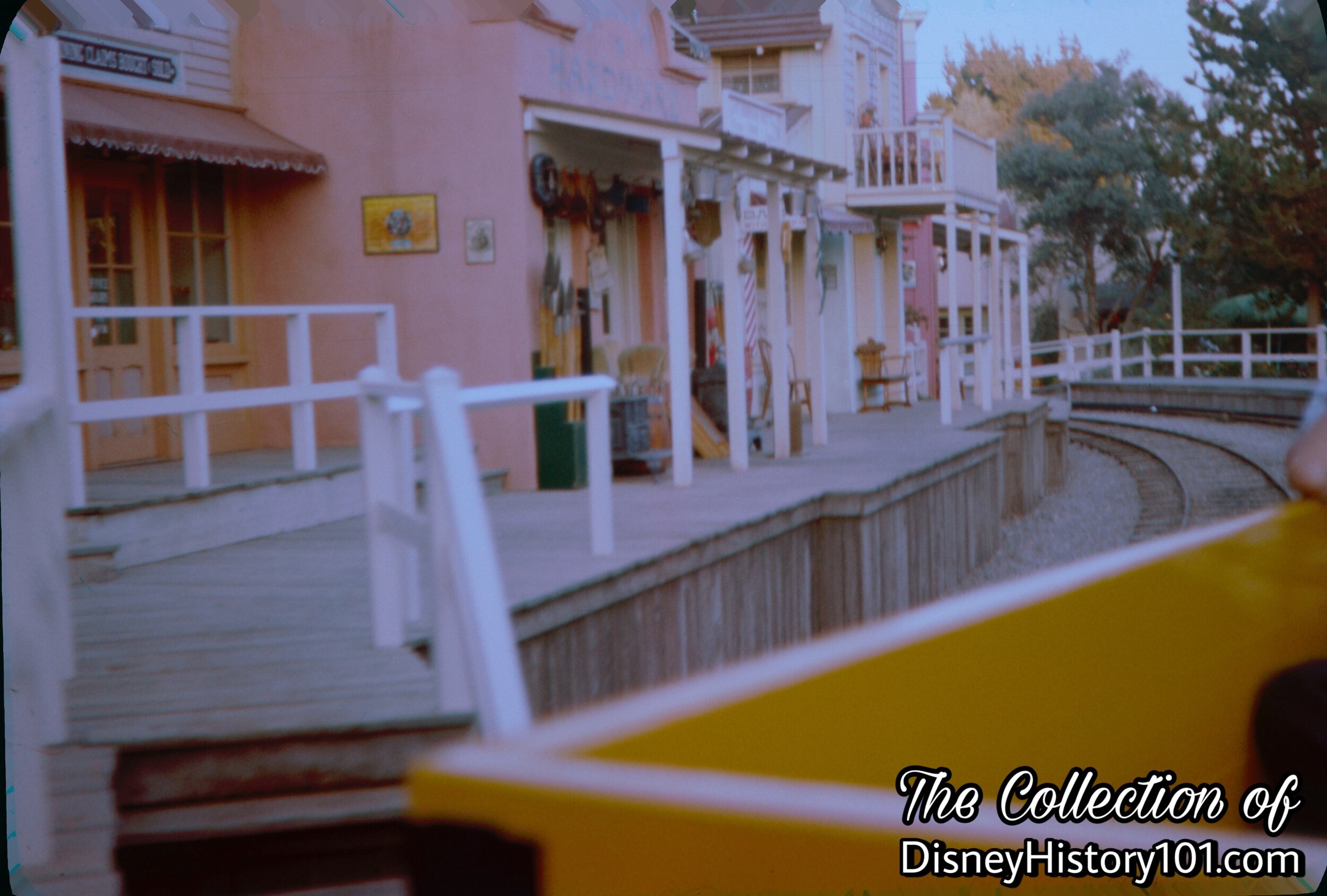
Rainbow Ridge
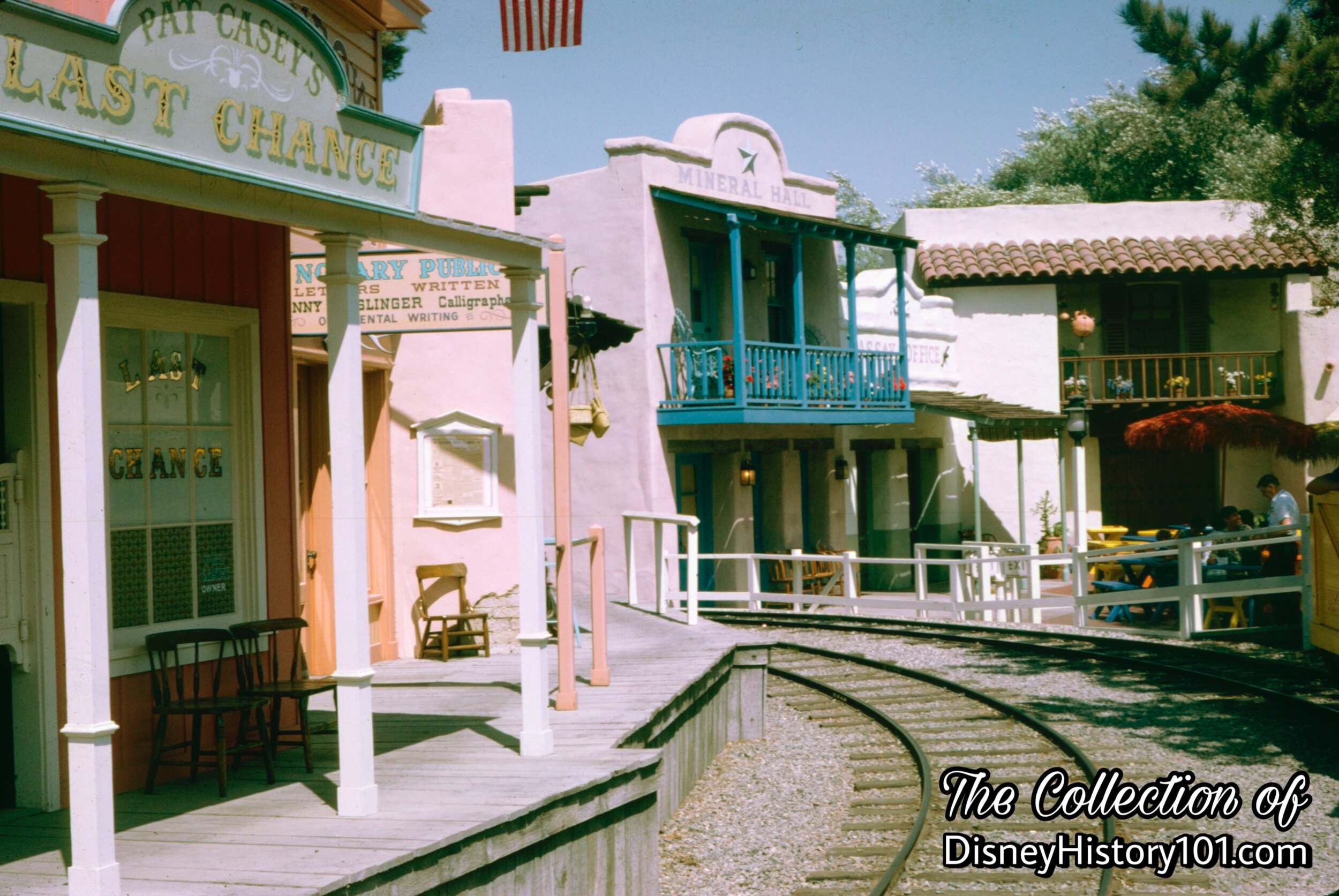
Rainbow Ridge
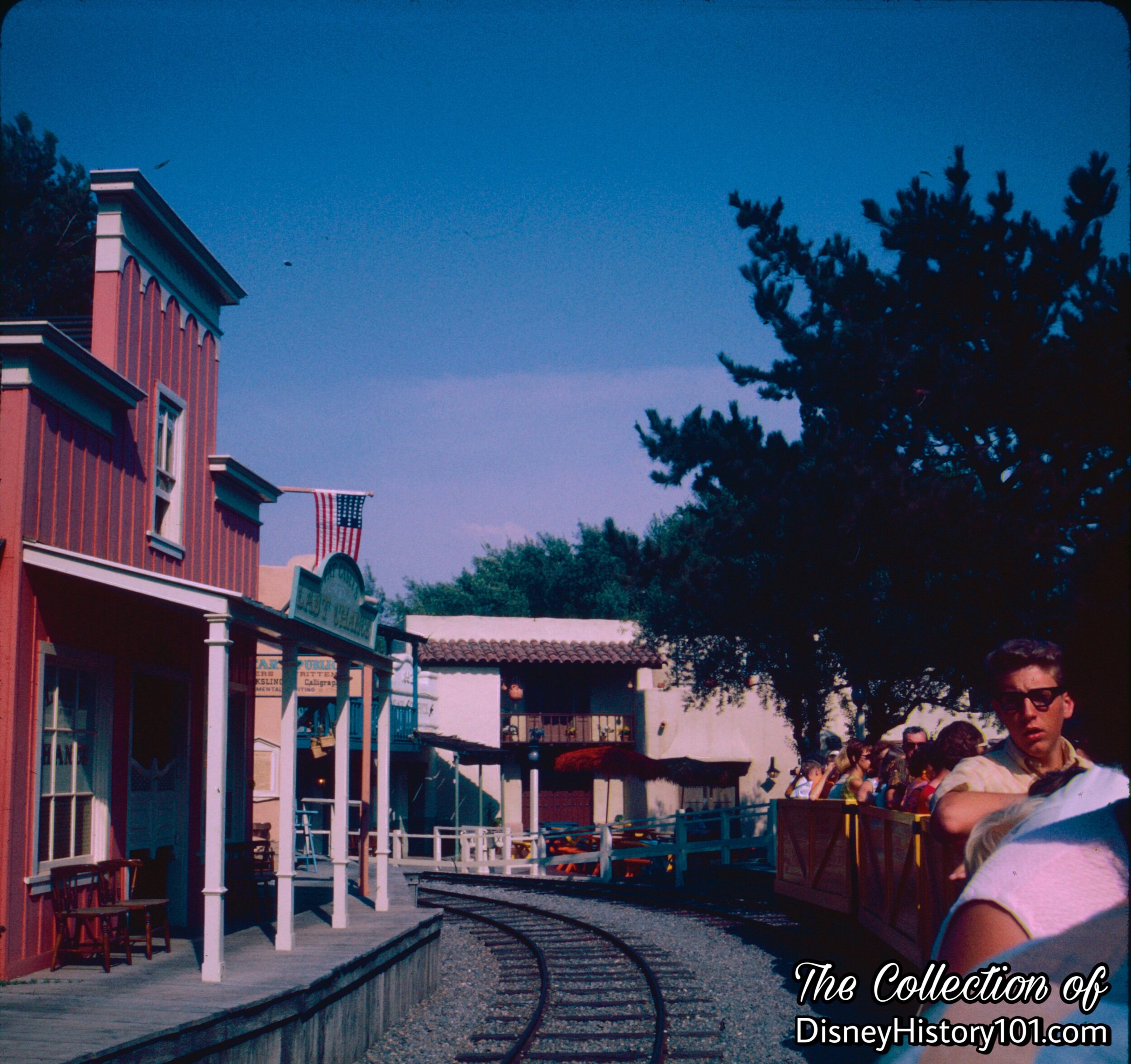
Rainbow Ridge, (1967)
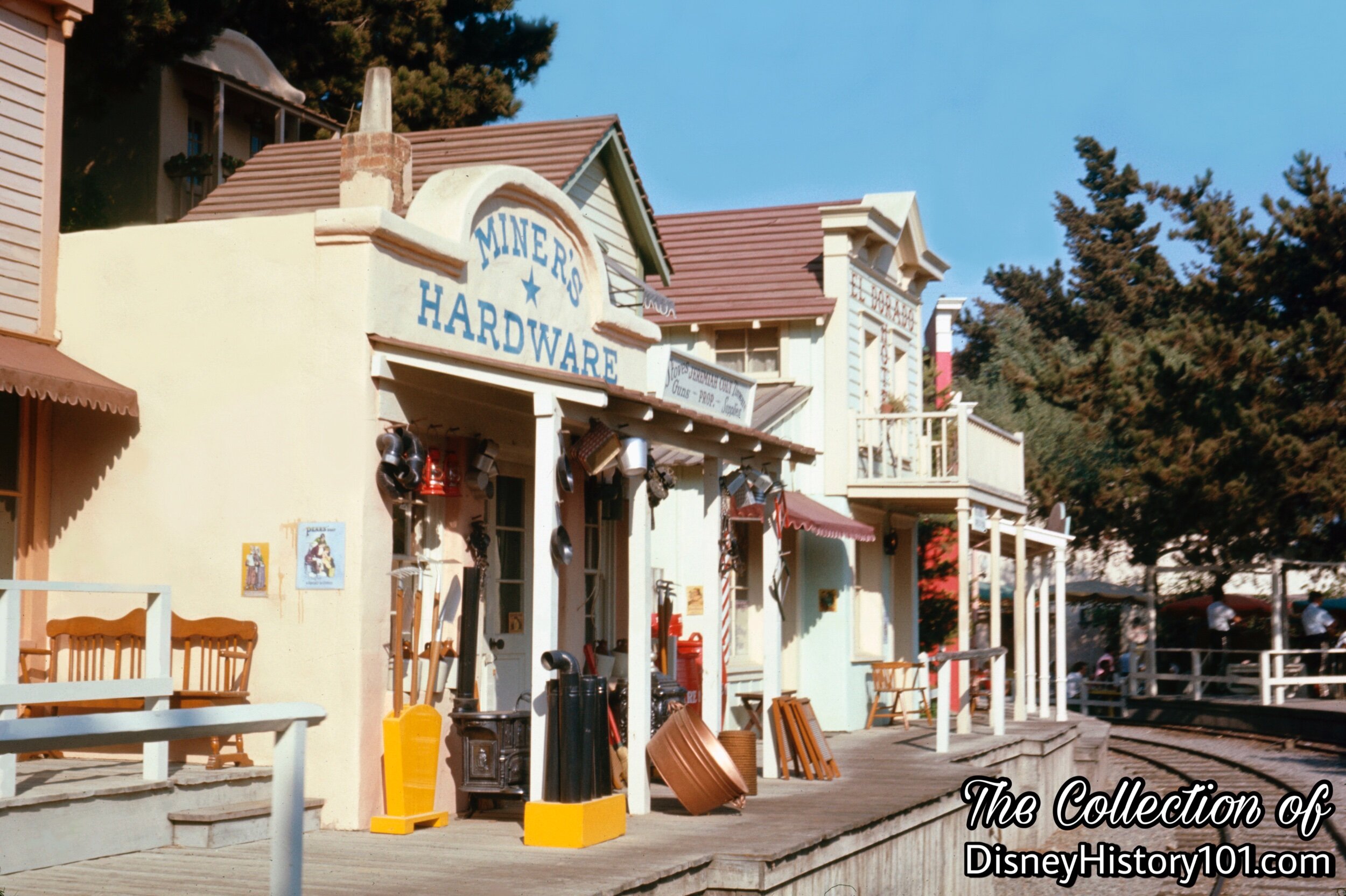
Rainbow Ridge
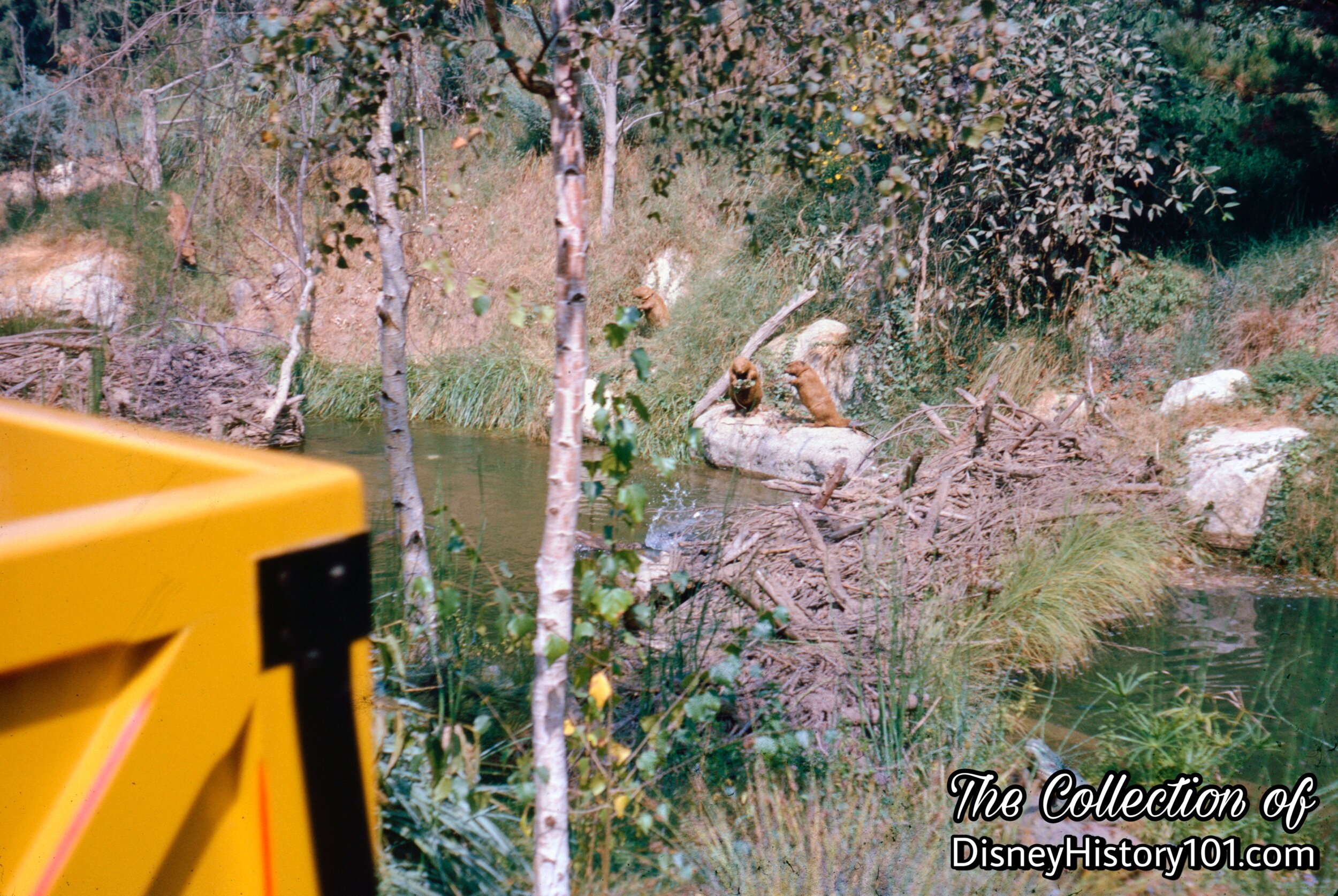
Beaver Valley Dam & Beavers, 1961
“As the passenger on the Nature's Wonderland Railroad emerges from the first tunnel on the mine ride, he sees beavers at work on their local dam project. Pine trees framing the scene are a mixture of Montereys from California and Aleppos from the Holy Land. The birch trees are from Europe, the cottonwoods from southwest United States. The mountain meadows of California supplied the thick stands of rushes found along the river. The other curious reed at the water's edge, known as "horsetail; is an old-time resident of the United States. It dates back about 40 million years, according to the paleontolo-gists. We also have native water primrose, which we inherited -it just crept out of the mud and joined us.” [Disneyland World of Flowers by Morgan Evans]
You may be wonderin’ who that little “rascal” is. “That little fellow…is one of your new friends in Nature’s Wonderland. No its not your foreman or supervisor ; its a Beaver, and he’s one of 200 of nature’s characters assigned to your stage,” according to Dick Nunis, Director of Operations. In fact, some 11 Beavers populate Nature’s Wonderland, turning heads, as they tug branches toward their dam, and dive in the water. Some of these show scenes were inspired by “In Beaver Valley,” 1951 Academy Award winning Best Two-Reel Subject of 1950.
You know, Walt Disney once said, “Animals have personalities like people and must be studied,” [Wisdom magazine, December, 1959]. “As we come out of this first tunnel, we’ll be entering Beaver Valley…”. It looks like these little fellows are “busy as a beaver”. Walt shared one observation and lesson he’d learned from the beaver this way: “Everyone needs deadlines. Even the beavers. They loaf around all summer, but when they are faced with the winter deadline, they work like fury. If we didn’t have deadlines, we’d stagnate.”
Speaking of deadlines, we’d better keep this scheduled train tour on the move.
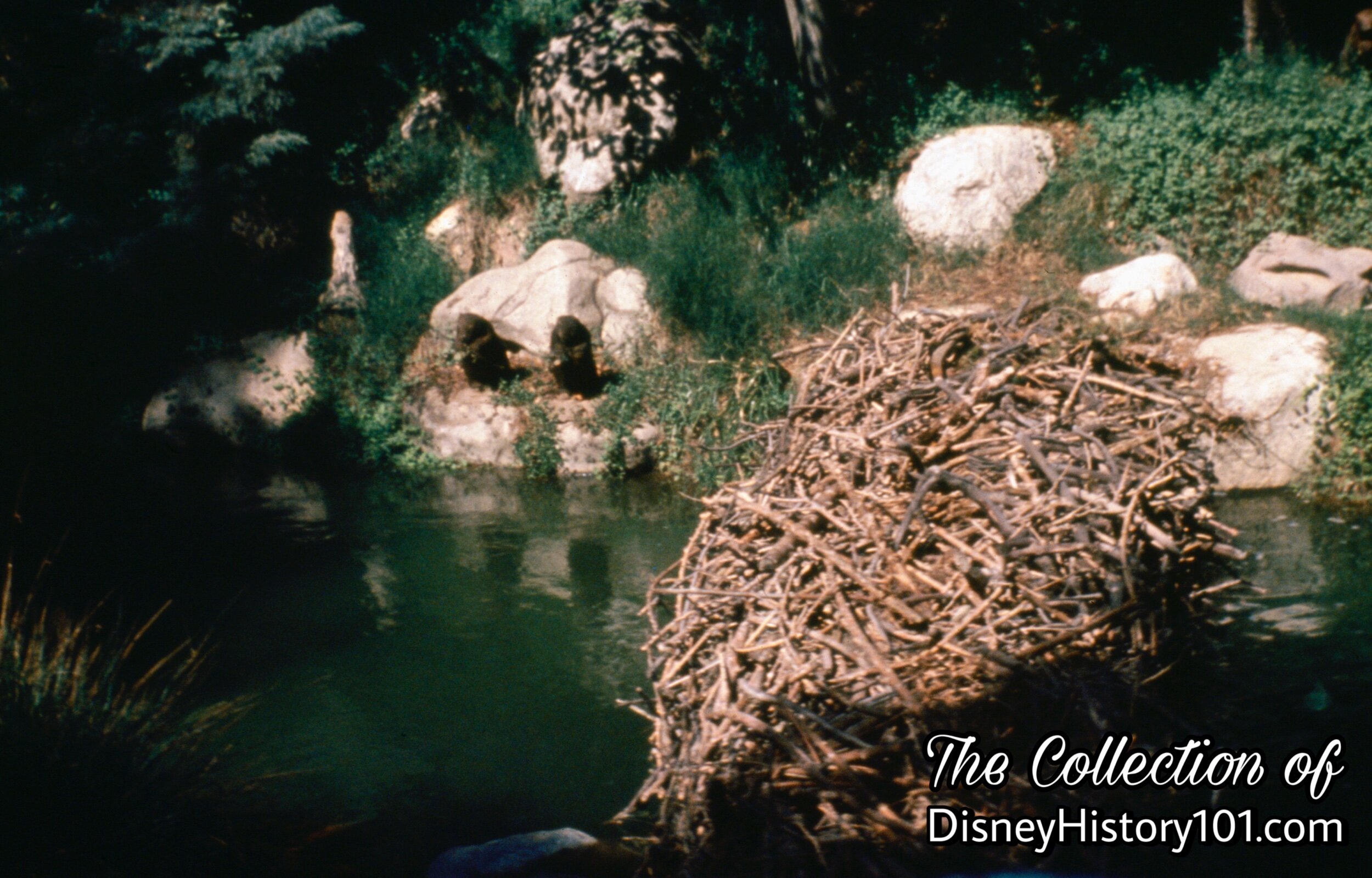
Beaver Valley & Dam
You know what sends these waters over the dam? In reality, a 65 horsepower pump produces more than 3,800 gallons of water over Beaver Valley waterways, per minute. Some of the effects are owed to the power of water. “Beavers building a dam…swimming, diving, and carrying branches to their home in life-like fashion, these beavers are moved along on underwater tracks by means of a water jet. The flow from the jet is kept constant, assuring a smooth swimming action, by a pressure-reducing valve which is hidden and partially submerged in the beaver dam”, according to one ServiSoft Exchange periodical.
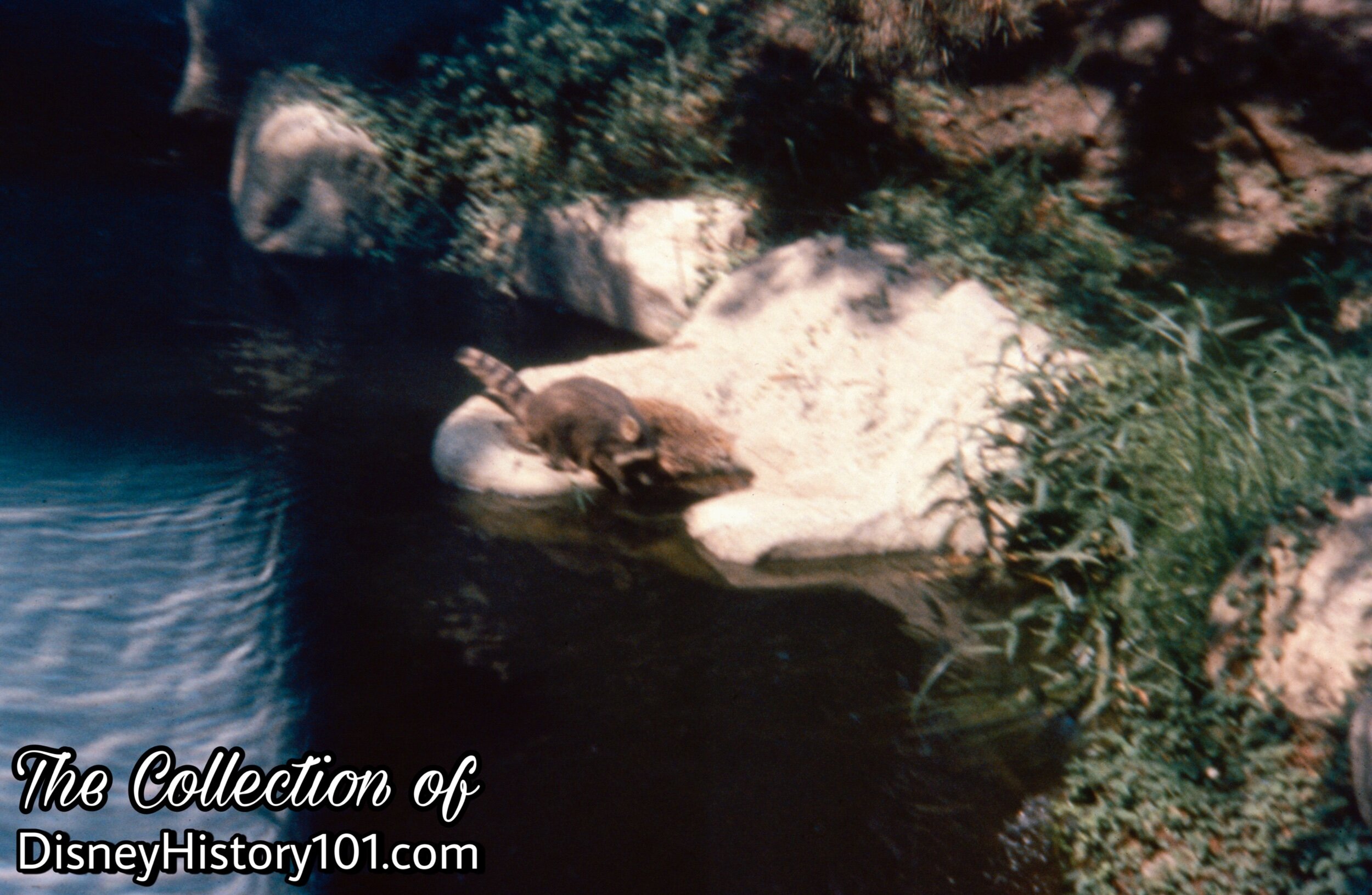
Racoons of Beaver Valley
Many year later, people would populate a trail running through this area, clear from Frontierland to Fantasyland. For now, it’s home to this little rascal.
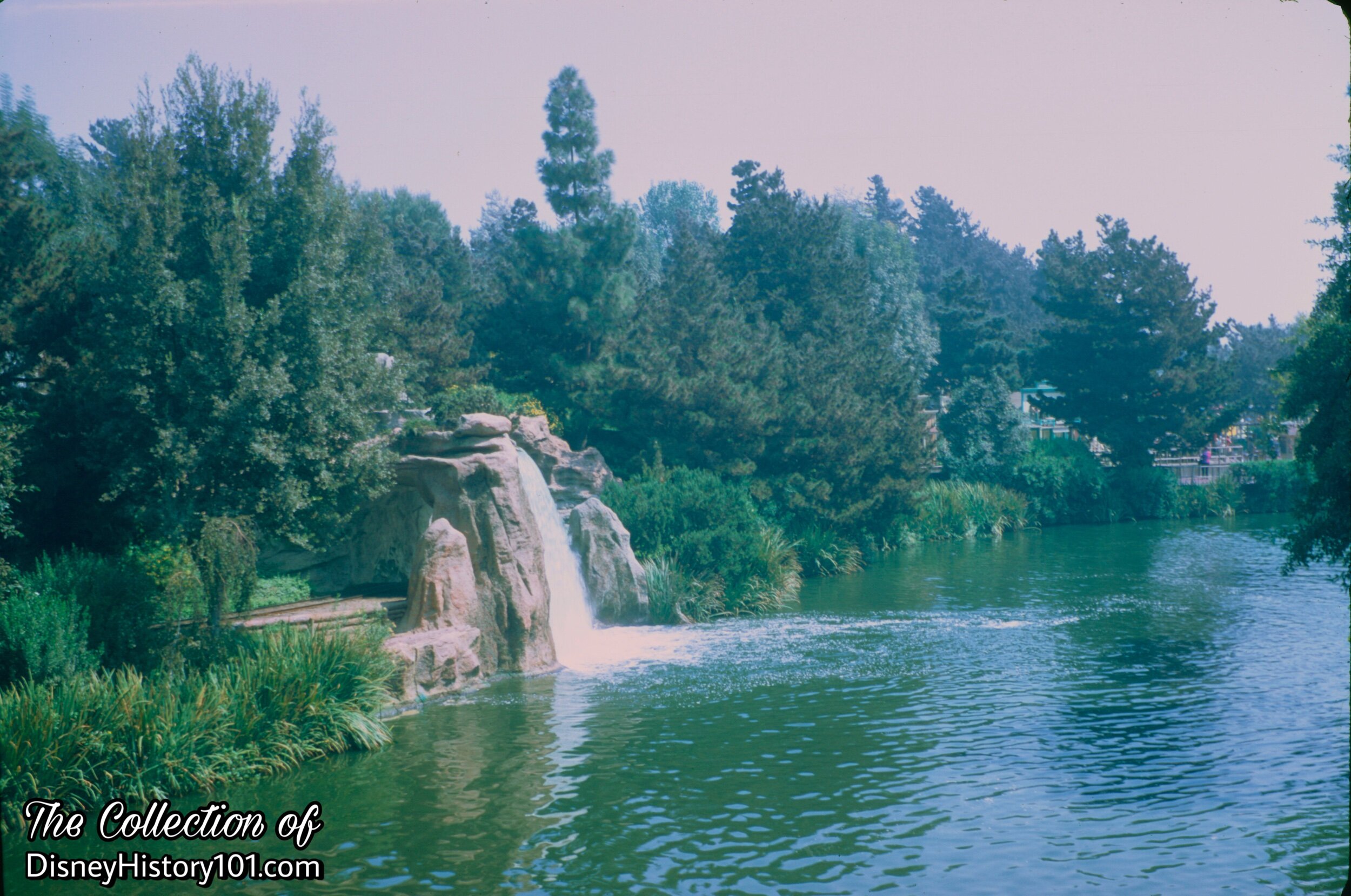
Big Thunder Falls, (c. September, 1970)
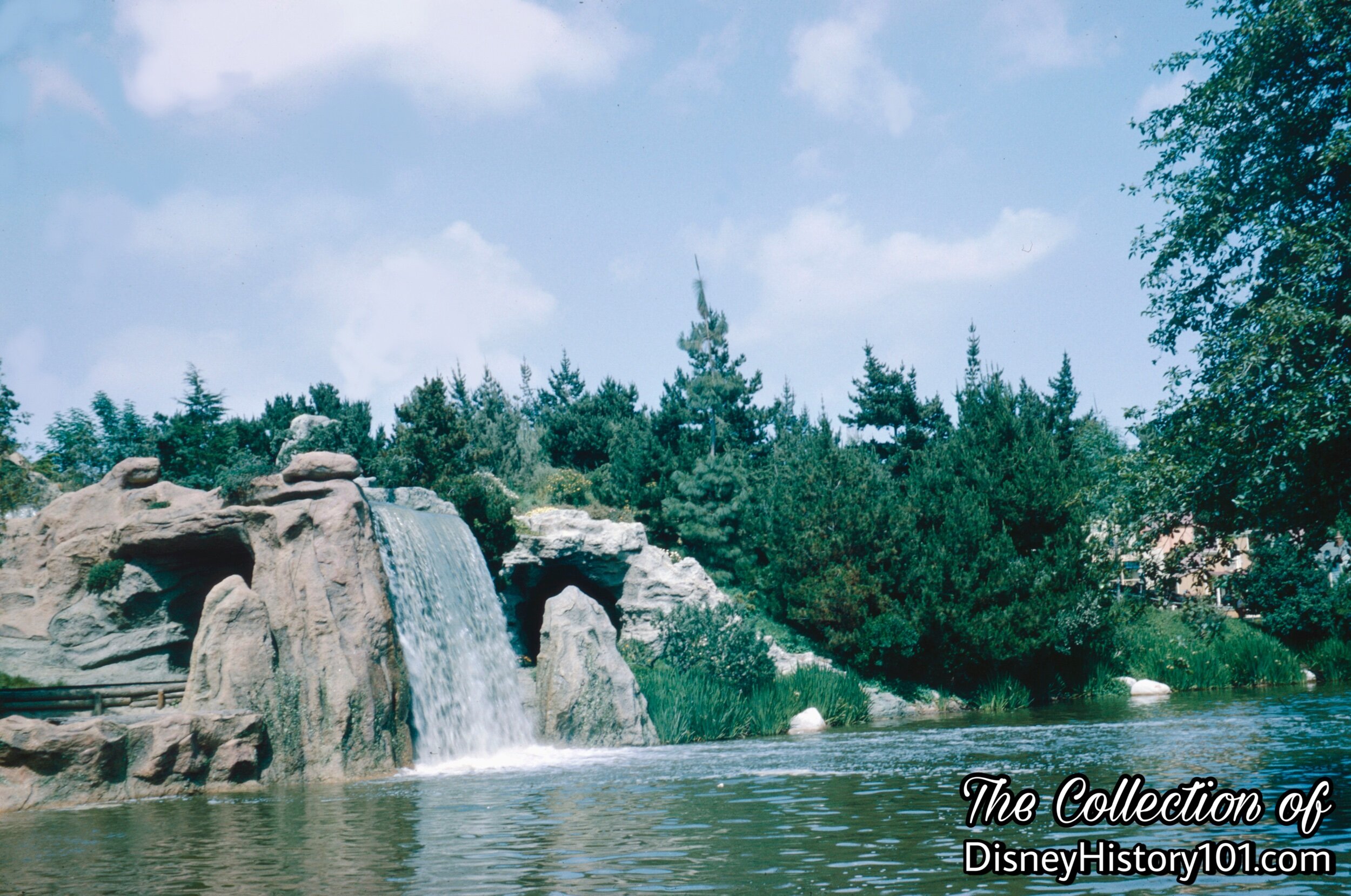
Big Thunder Falls
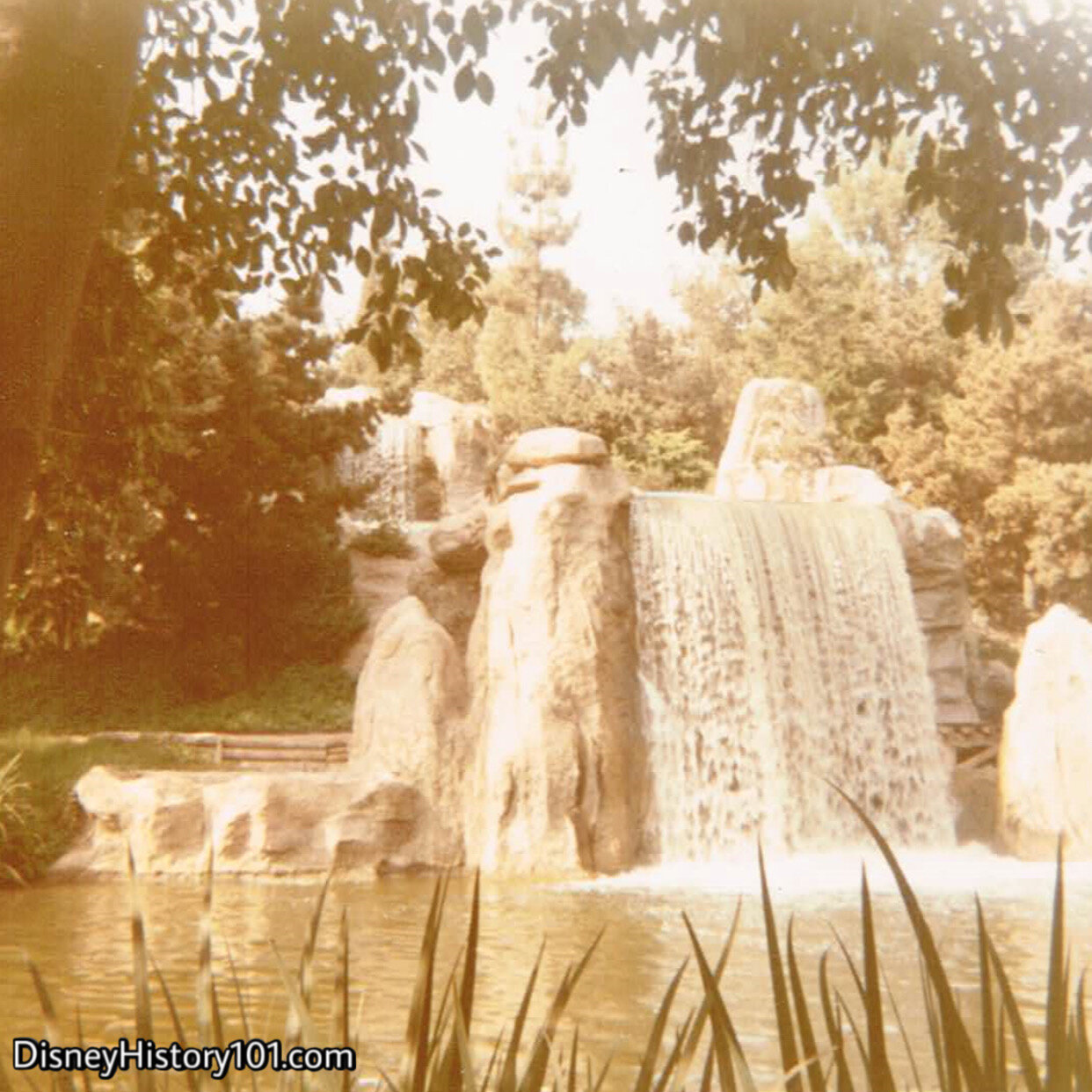
Big Thunder Falls
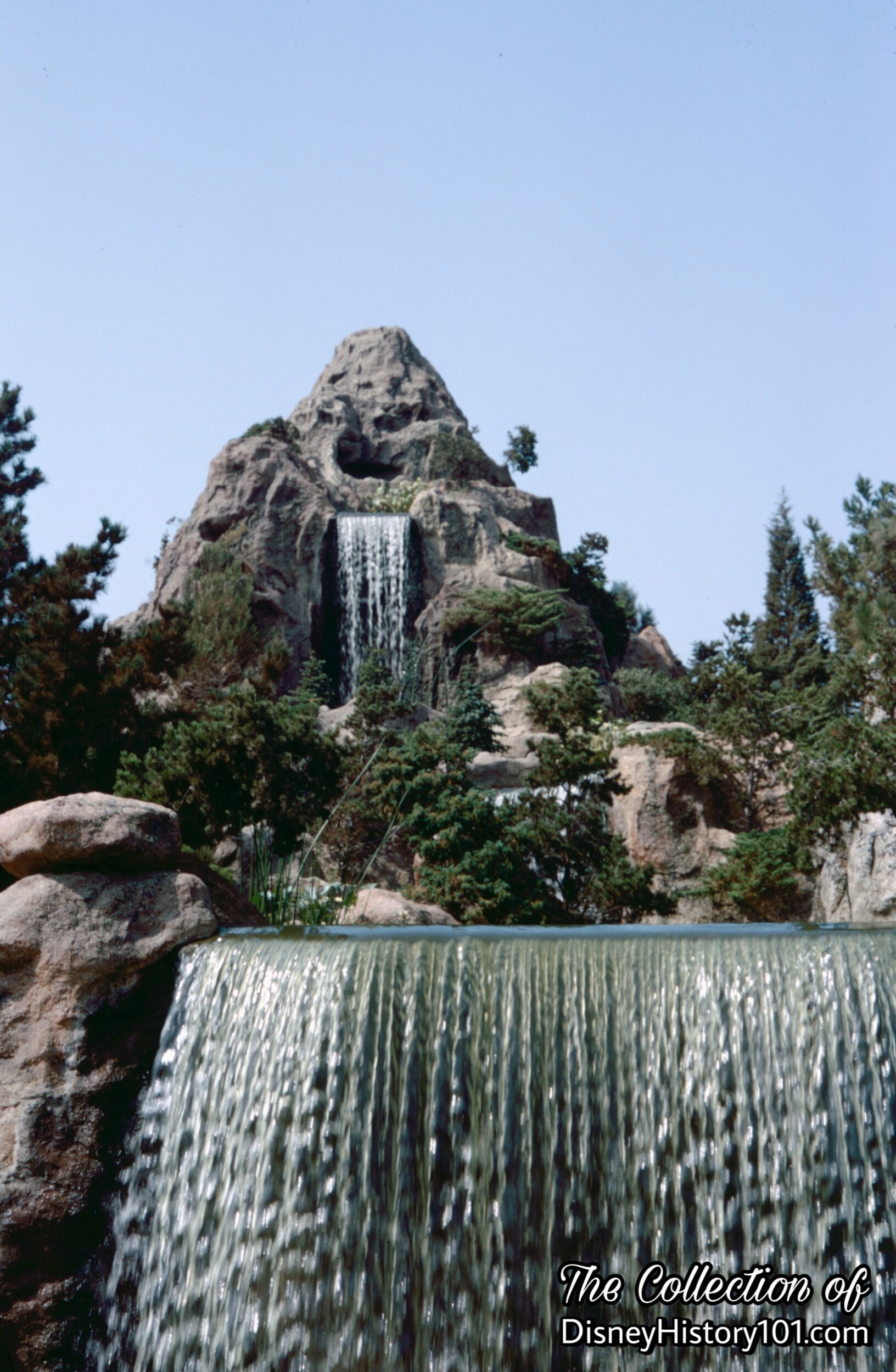
Cascade Peak and The Twin Sisters
Most of the rocks and the mountains in Disneyland were products of the Staff Shop.
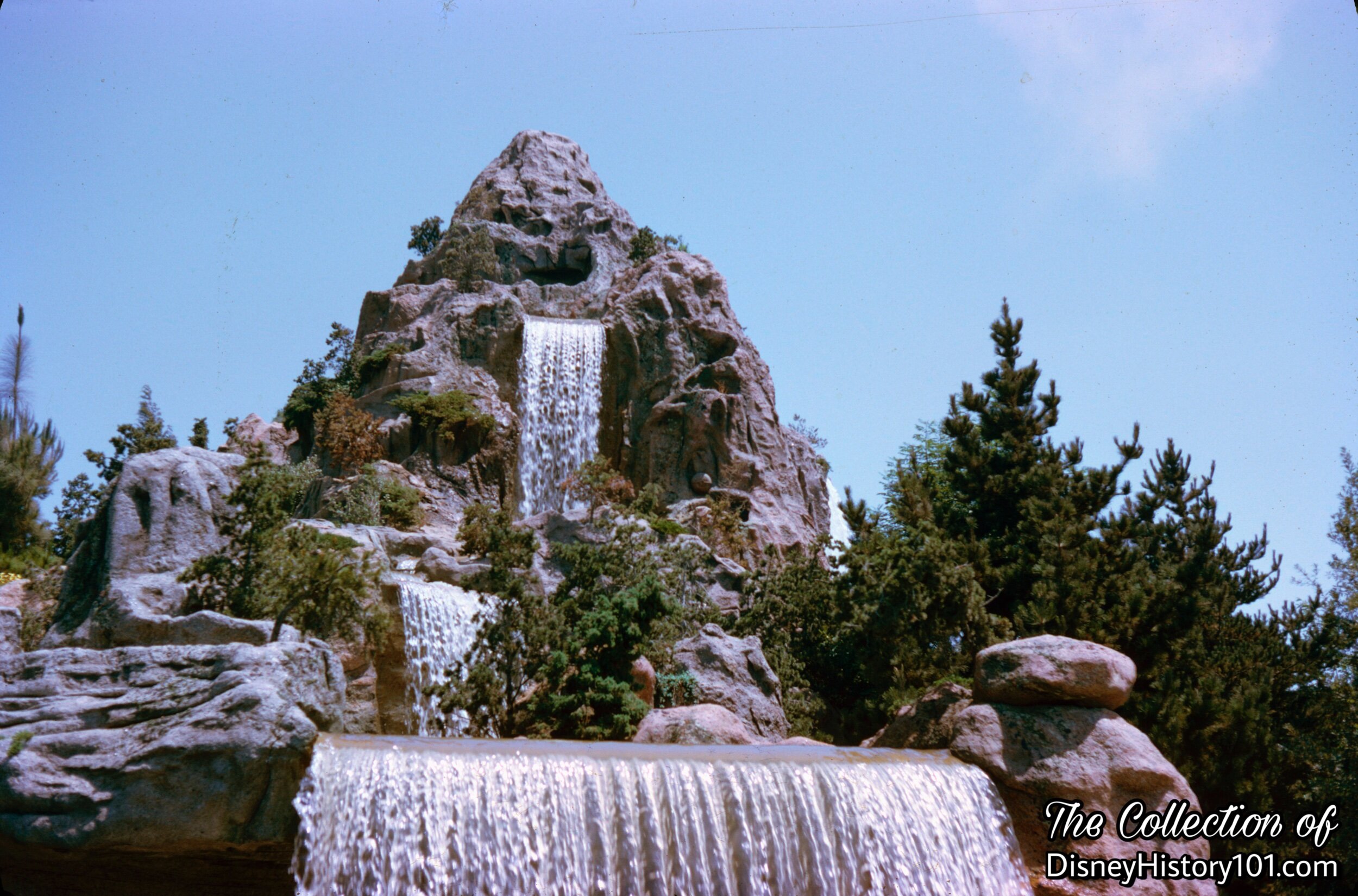
Cascade Peak and The Twin Sisters, (August, 1965)
By 1974, the falls would recycle some of the 11 million gallons of water that comprise the Rivers of America.

Big Thunder Falls

Big Thunder Falls, (August, 1965)
The Tunnel from Beaver Valley lets out onto the Rivers of America, where we began to round Cascade Peak, with its roaring waterfalls!
“Now, beyond these hills lies Nature’s Wonderland. Yer apt to see a whole lot a wildlife, so keep a real sharp “hunter’s eye” .
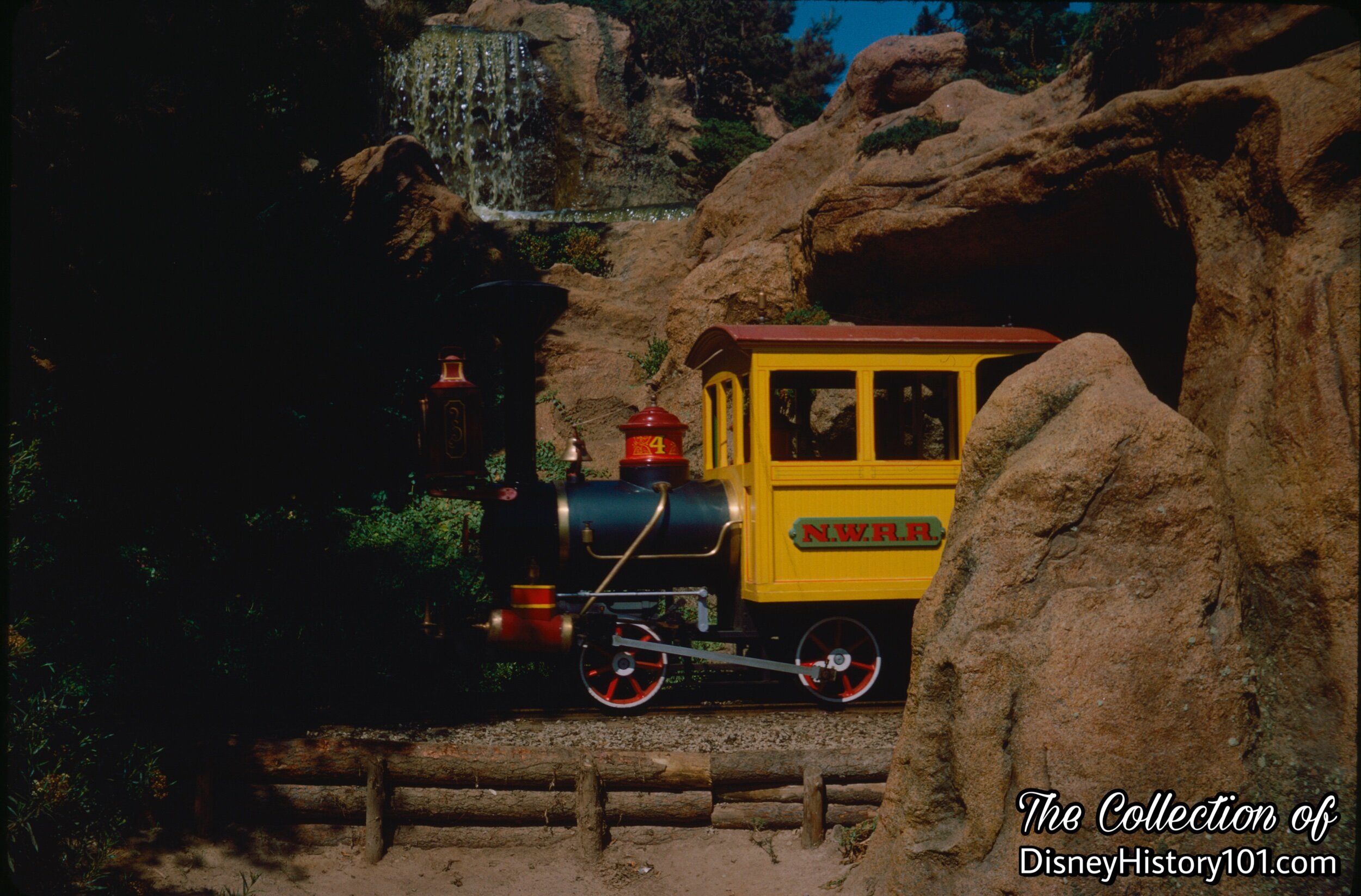
Big Thunder Falls, (1967)
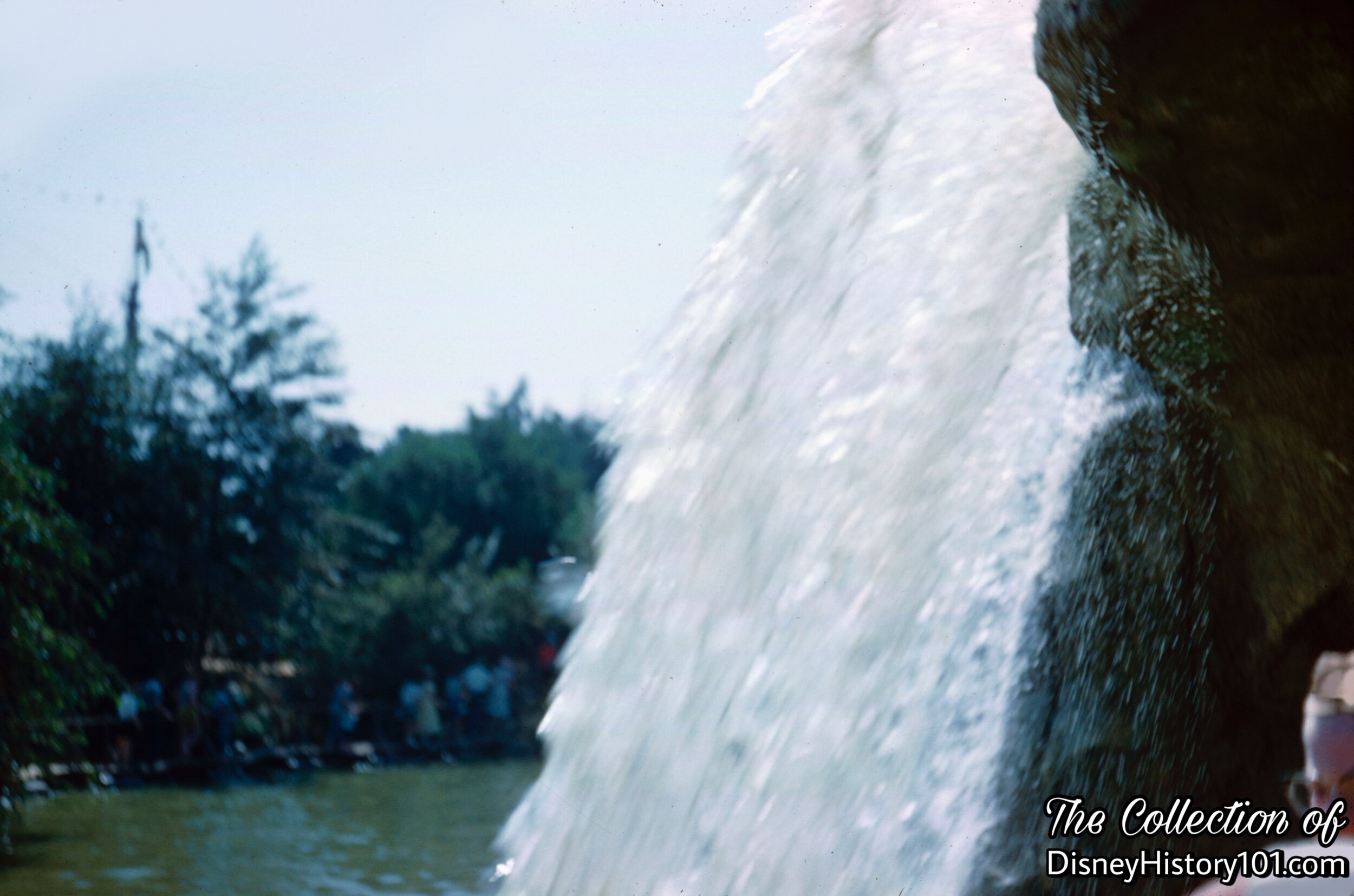
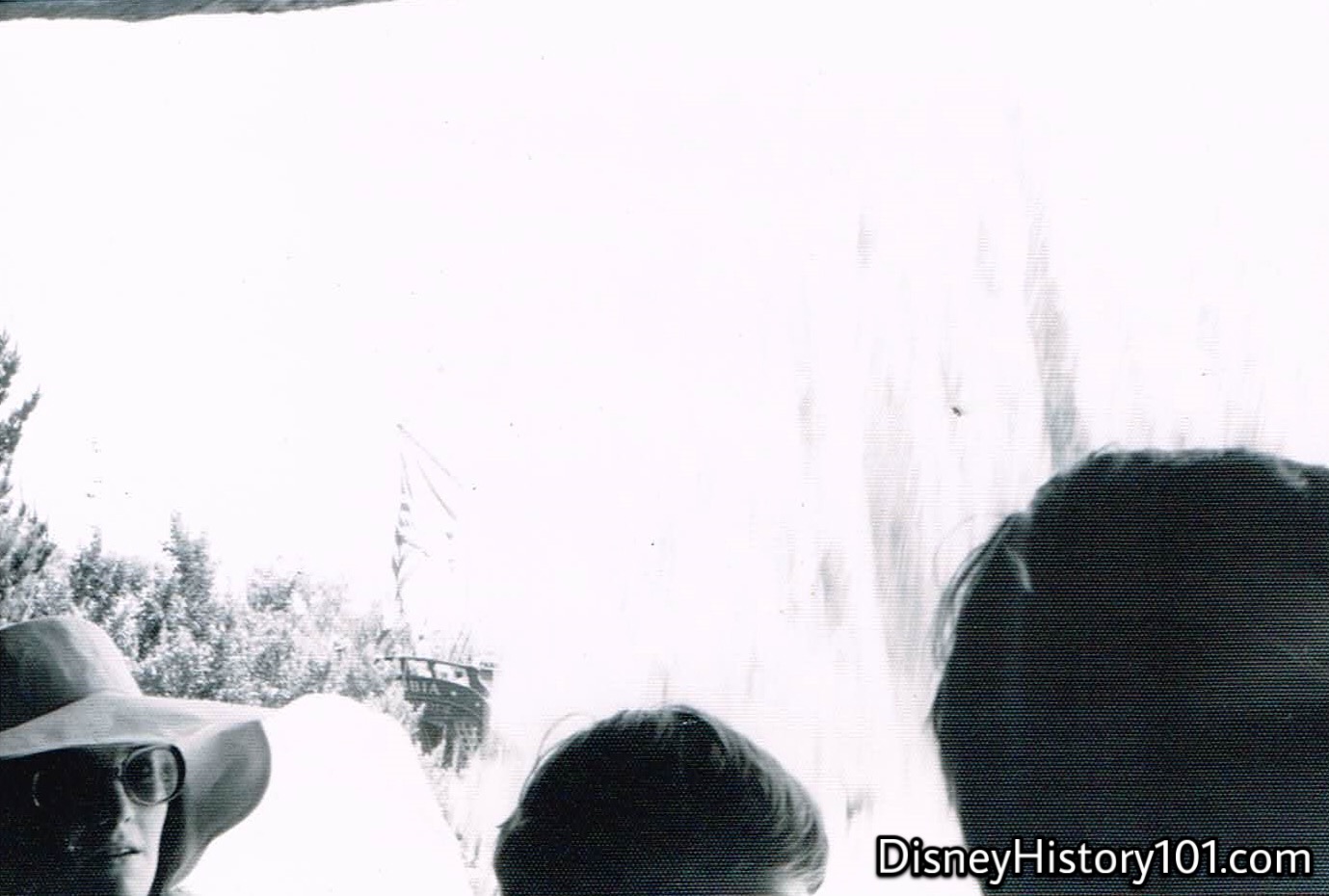
Big Thunder Falls, (1975)

Cascade Peak and The Twin Sisters, (c. November, 1960)
We’re heading towards Disneyland’s 75-foot-tall “second great mountain, ‘Cascade Peak’…easily recognized by the giant waterfalls that plummet from rocky ledges high on its granite slopes”, as described by Vacationland (Summer, 1960). “If ya never gone beneath a waterfall before, then get set cause we’re comin’ up on Big Thunder - the biggest falls in all these here parts!”
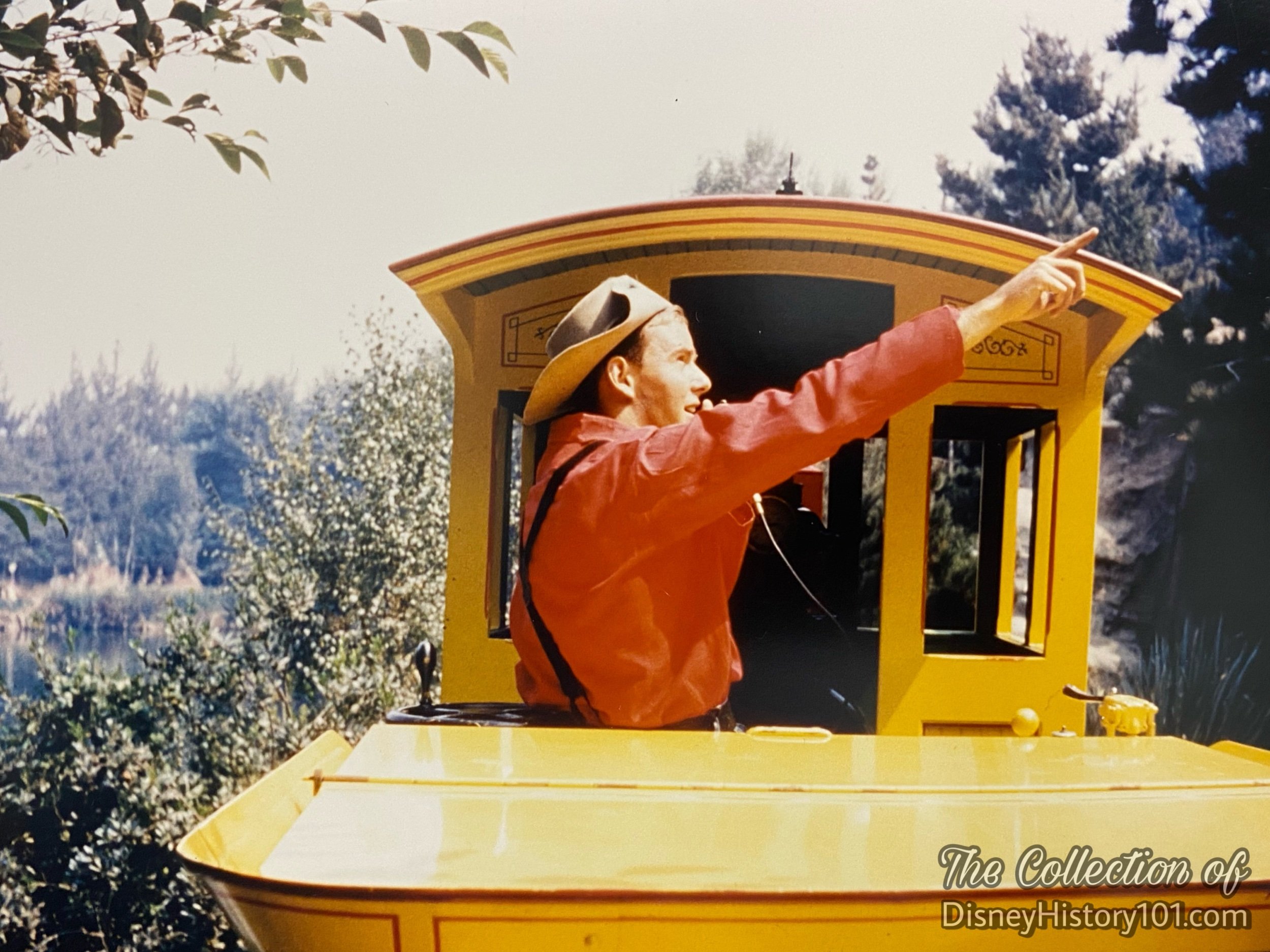
The Collection of Gary Fravel of Disney University.
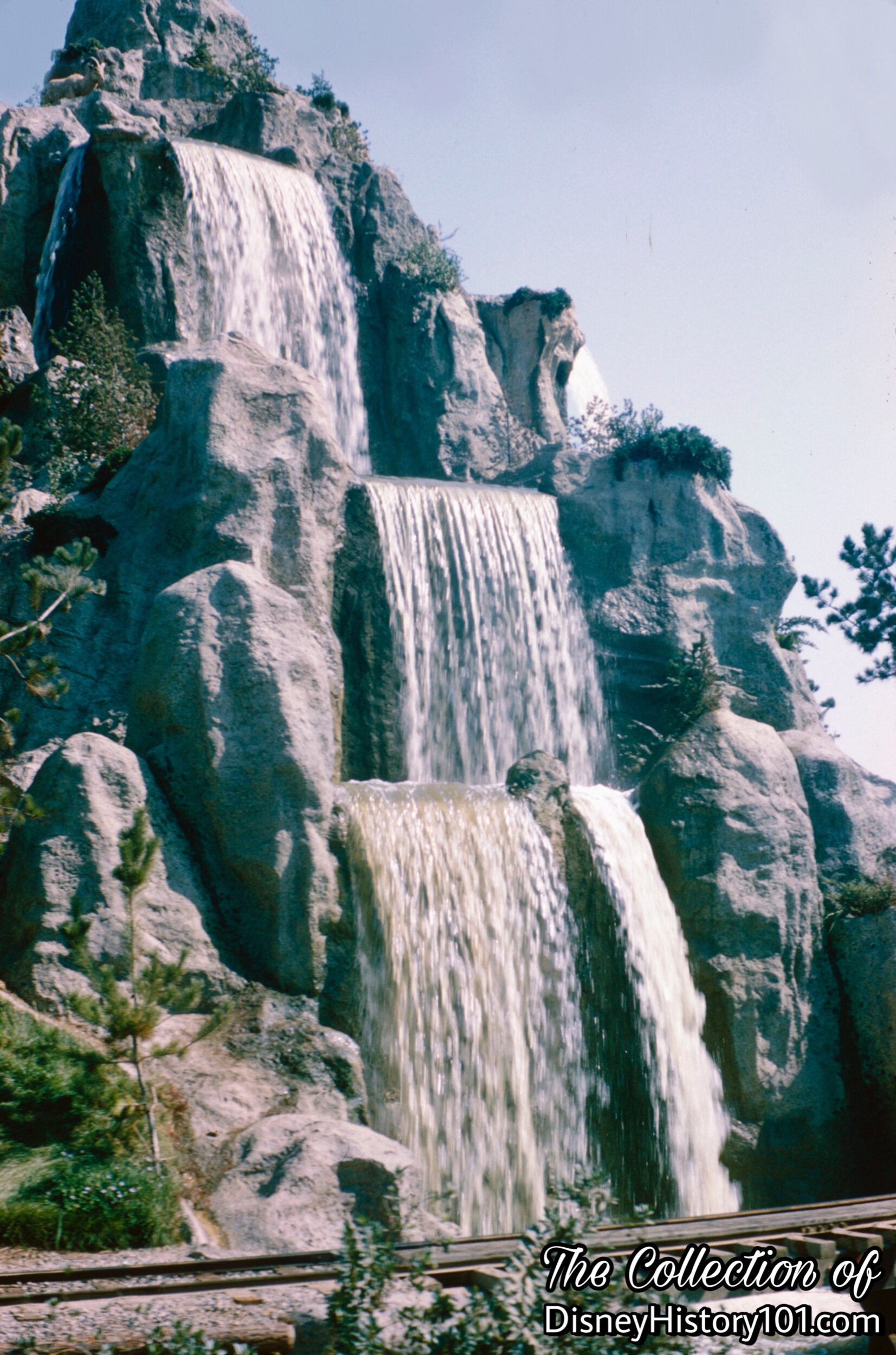
"Mountain Goat" on Cascade Peak
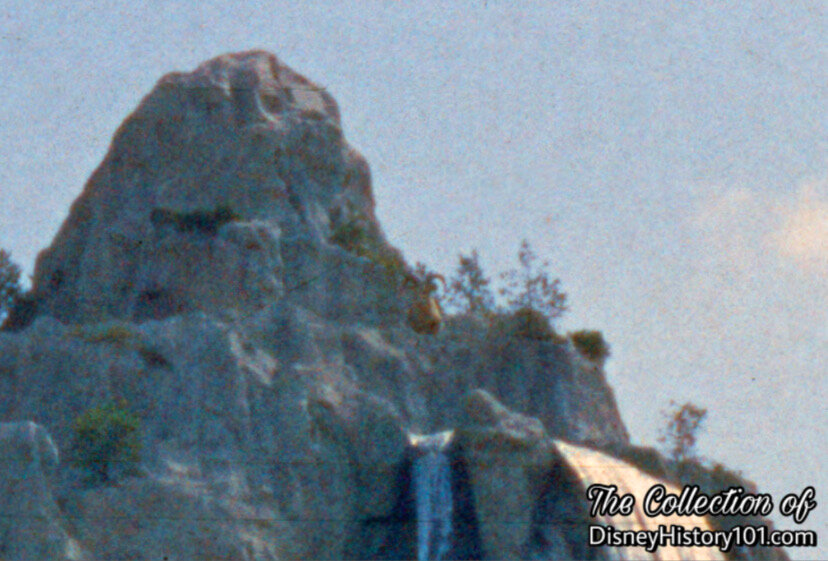
"Mountain Goat" on Cascade Peak

"Mountain Goat" on Cascade Peak RockWork, (December 2nd, 1960)
Keep a real sharp “hunters eye”, because you’re about to see one of the rarest Audio Animatronic creatures to ever set foot in Frontierland. We present the Mountain Goat near the top of the 75-foot RockWork of Cascade Mountain! The Mountain Goat had been spotted at the top of Cascade Peak, the Bounding Deer atop Rainbow Mountain over Beaver Valley, while the Bounding Big Horn Sheep were seen briefly along the Mule Train Trail in Beaver Valley). The Bounding Big Horn Sheep was even so prominently featured on the poster artwork for the Nature’s Wonderland Rail Road (which was modeled after the circa 1869 “Union Pacific Platte Valley Route Grand Opening” poster), which can be seen on the “Disneyland ‘60” handbills given to guests at the Main Gate! According to Bob Gurr’s True-Life tale, their bounding would spook the mule trains, so the Bounding Bighorn Sheep (atop Cascade Mountain), the three Bounding Deer (a buck, doe and fawn) at the top of Rainbow Mountain, as well as Mountain Goats would silently disappear within a month of the start of Mine Trains Thru Nature’s Wonderland. Similar precautions were taken by the Mine Train operators to not spook the mules with the bells or whistles.
“MATT LEIKER REALLY REMEMBERS SEEING SOMETHING ATOP CASCADE PEAK, c. 1990”
“Finally!!!! Something I have wondered about for over twenty years gets answered!!! When I was a trainer on Big Thunder Mountain Railroad in the early 90s I used to hop the fence with my trainees and take ‘em out to explore the mule trails. I would also take ‘em inside Cascade Peak and we’d climb the ladder and exit outside the top for the view. As soon as we would emerge there was a rusted base, and parts of a mechanical contraption that you can tell once held some sort of object that would move or rock back and forth. Vintage Disneyland photos and history are everywhere now but back in the pre-internet days of 1994 there was absolutely no place to find out what was once there. I sometimes marvel at that…how even while working at the park, there were really no sources for quality park history or people around who knew (or even cared) what much of the old stuff was. The best you could ever find were framed photos of old attractions adorning the walls of a scheduling office but even those were usually the same tired staged photos that were used and reused in the souvenir guide books through the years.
Anyway…I continued to wonder about this for years, always studying every old photo or postcard of the peak, looking for a sign of some animatronic, balancing rock or special effect that once existed up there. Over two decades passed with no luck but I remained absolutely sure that some show element used to exist up there. Finally, today the mystery question gets answered and confirmed!!!
Thank you.”
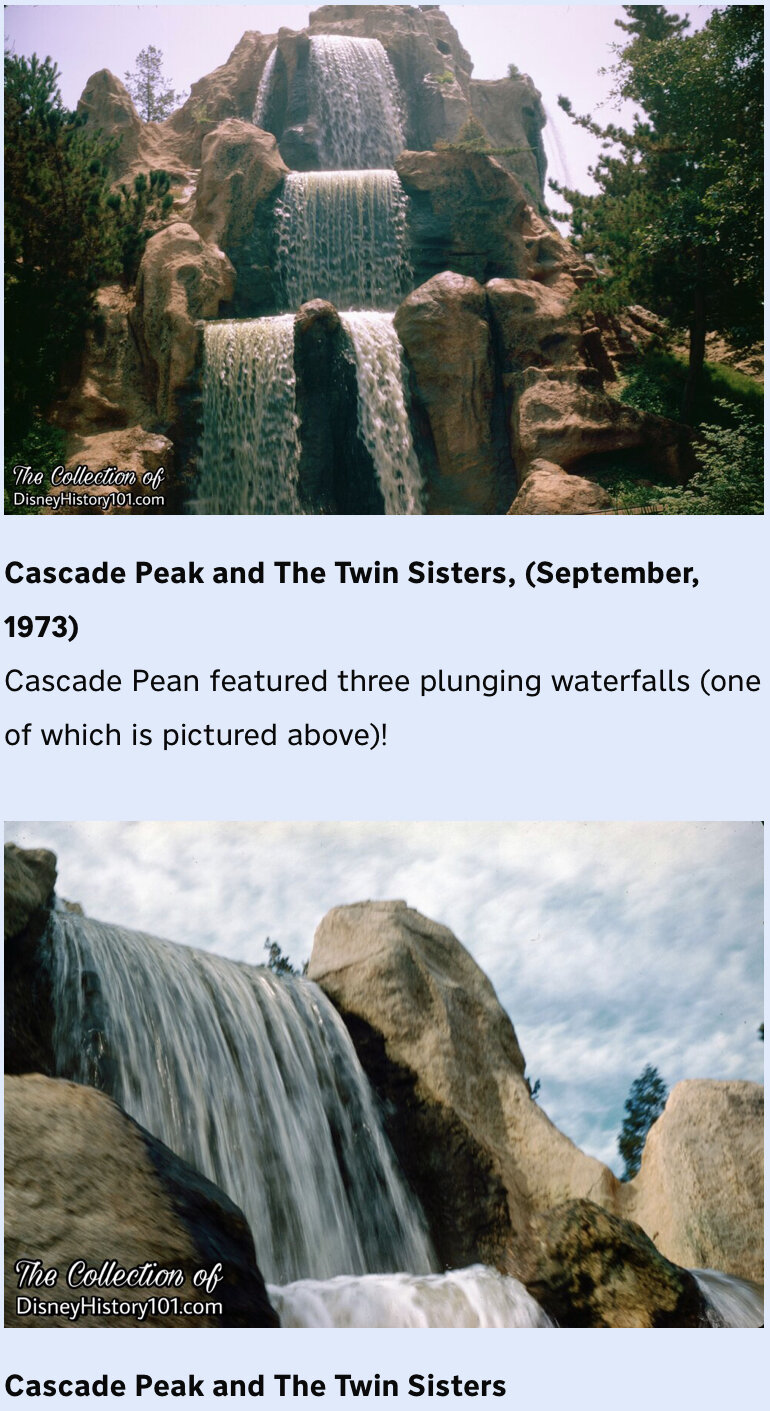
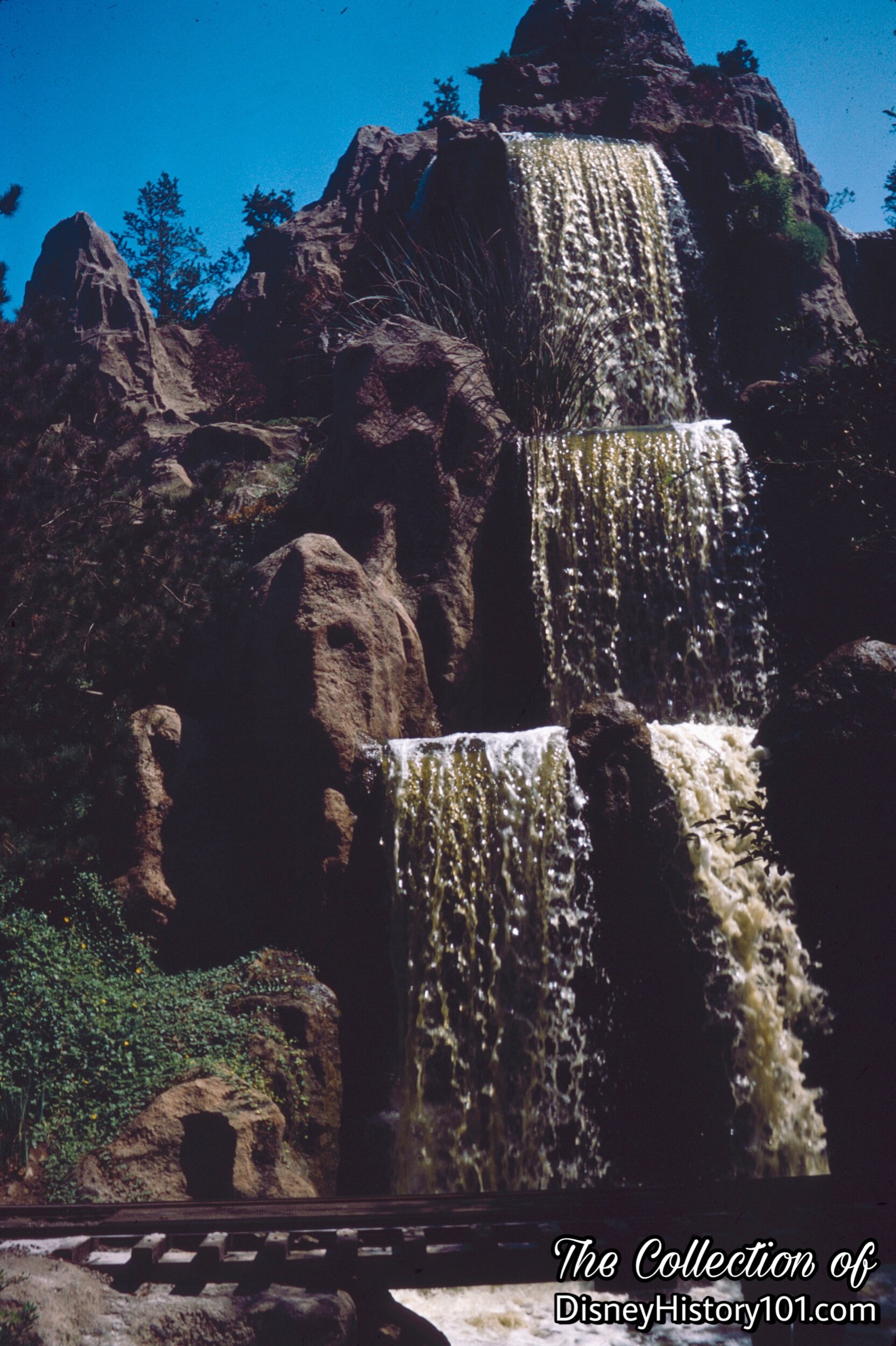
Cascade Peak and The Twin Sisters, (1967)
This “natural wonder” was actually a hollow seven story frame of wood and steel. Inside Cascade Mountain, are three pumps (totaling 510 horsepower) feeding 91 tons of water into pools and into the 11-million-gallon Rivers of America! You may be wonderin’ where all that water comes from, as it seems to spill forth endlessly. Well,… Disneyland actually has several wells on property. Coupled with a supply of city water, (some of which comes as far away as Parker Dam), this truly wonderful and “natural” scene is effected!
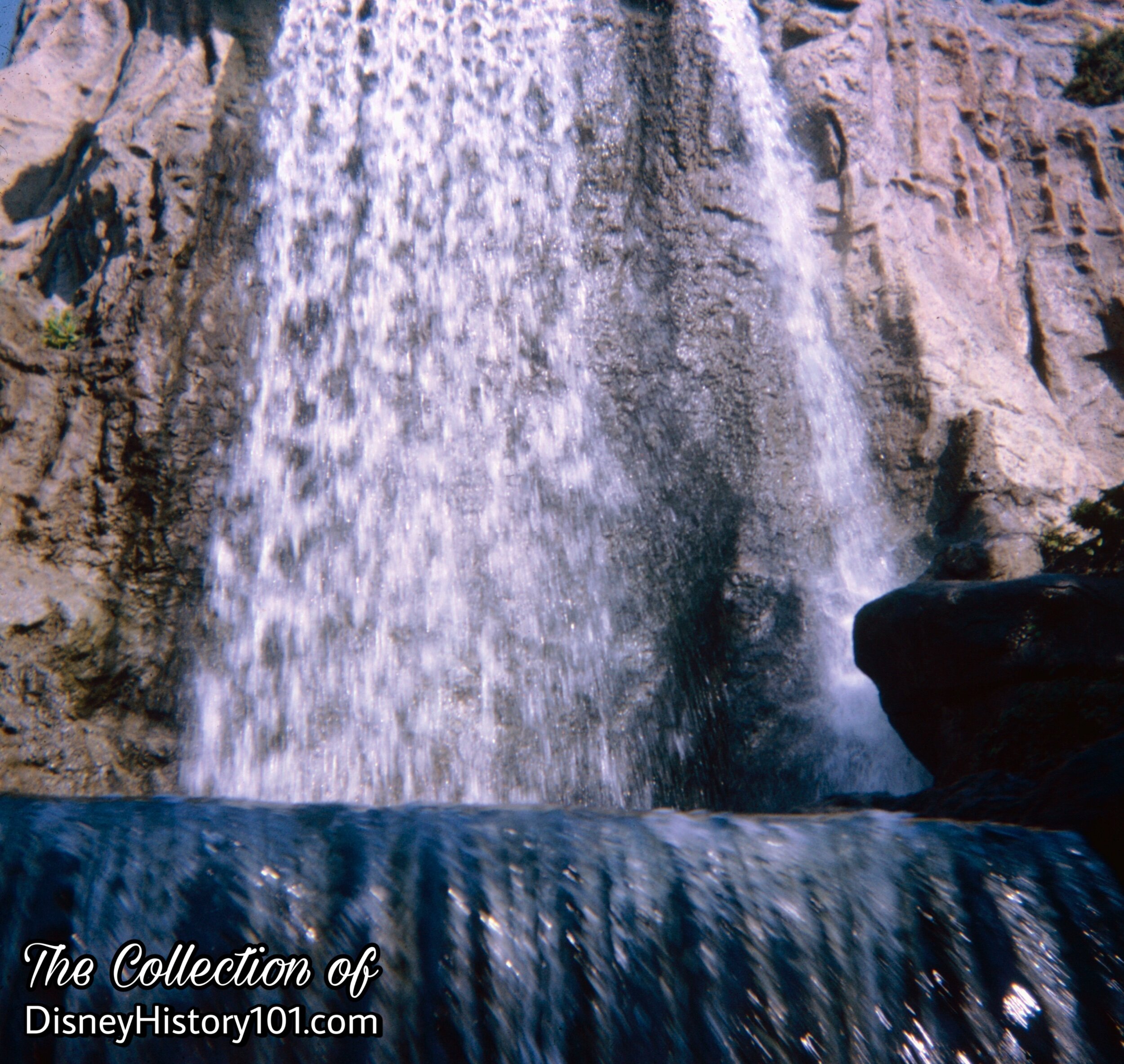
Cascade Peak and The Twin Sisters
“Them other two falls - they call The Twin Sisters. I recon that’s because they’re always babblin’!” The sheer sound of the rushing water masks the song of robins and jays in the nearby tree branches.
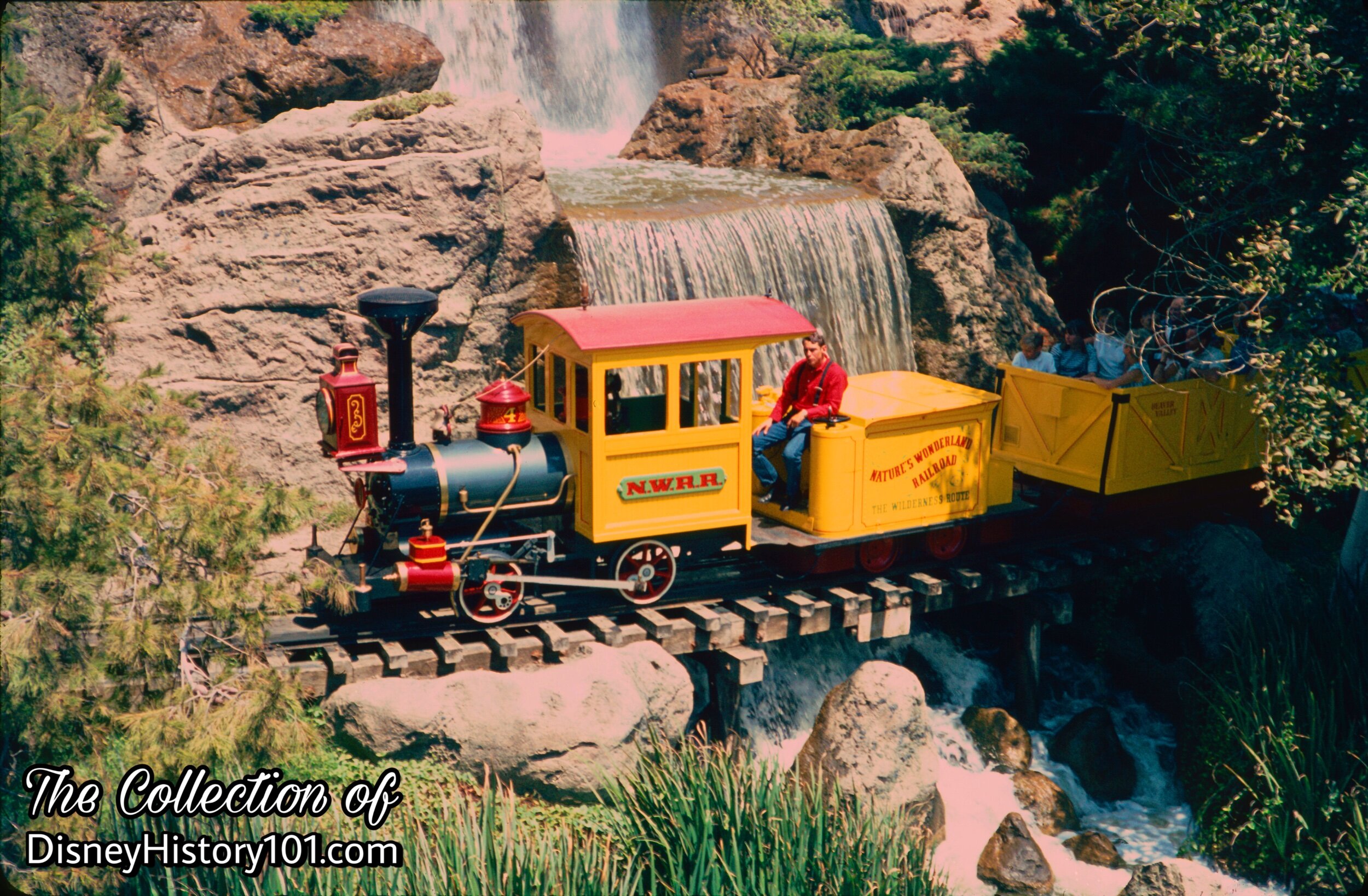
Cascade Peak and Trestle Over The Twin Sisters, (c. July, 1966)
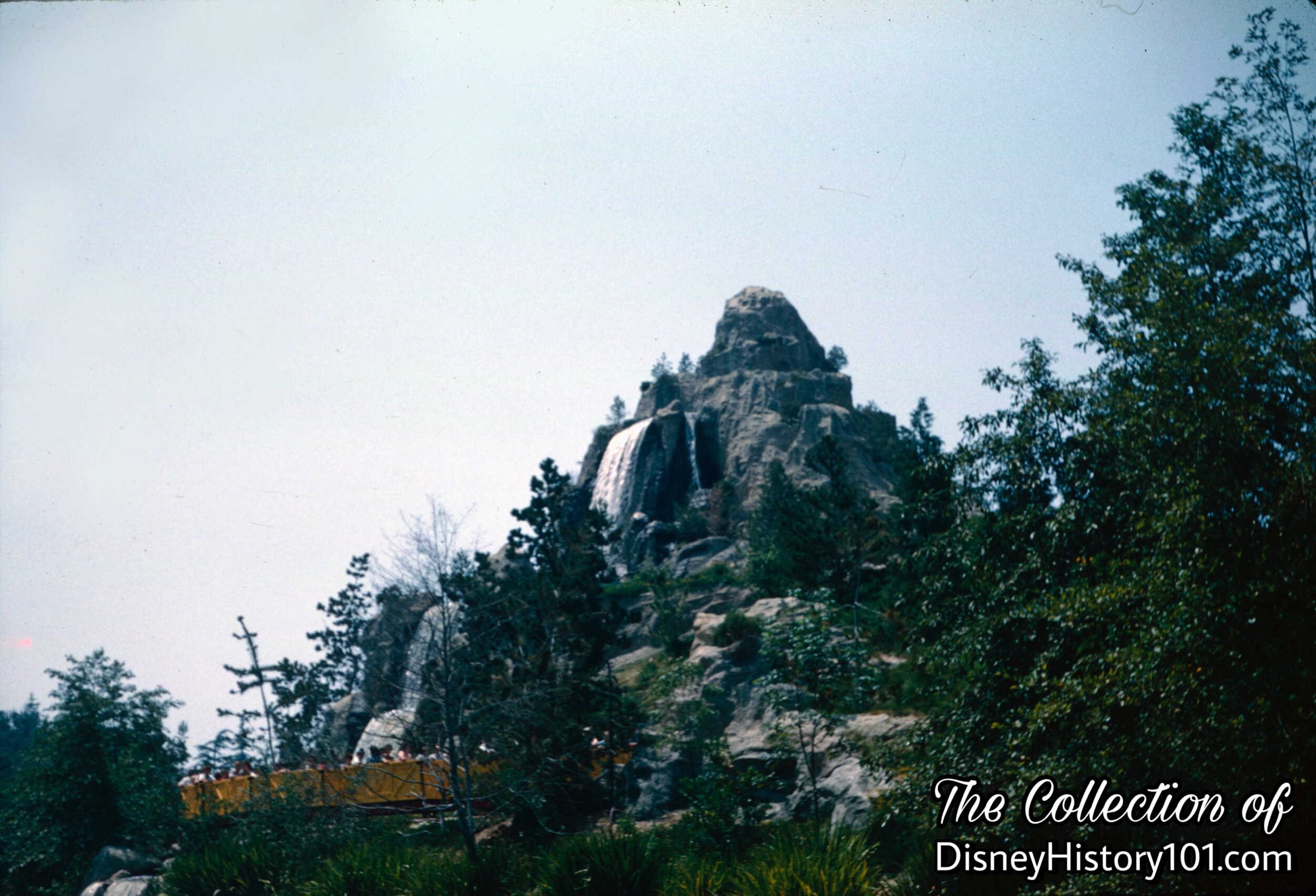
Cascade Peak and The Twin Sisters, (1961)
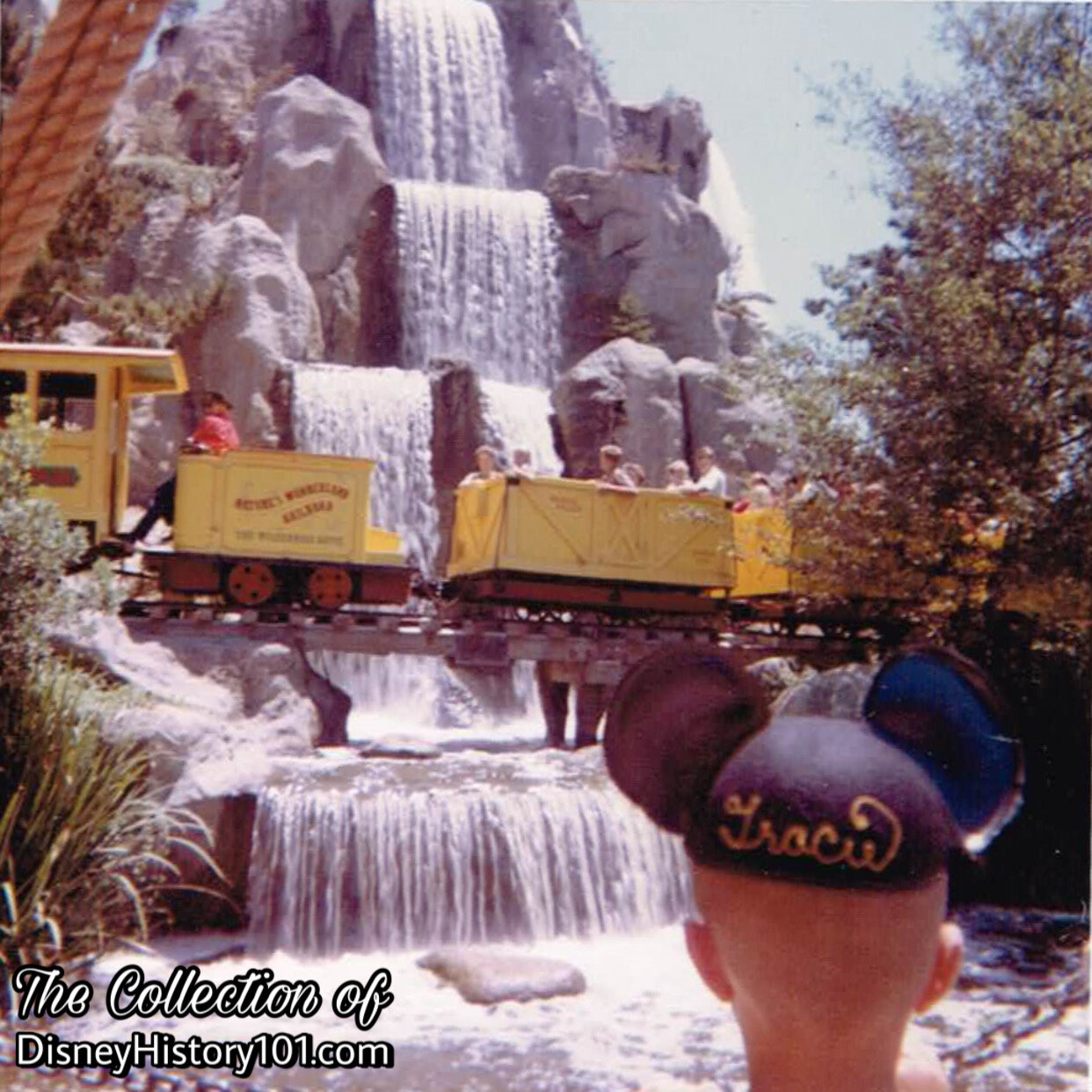
Cascade Peak and The Twin Sisters
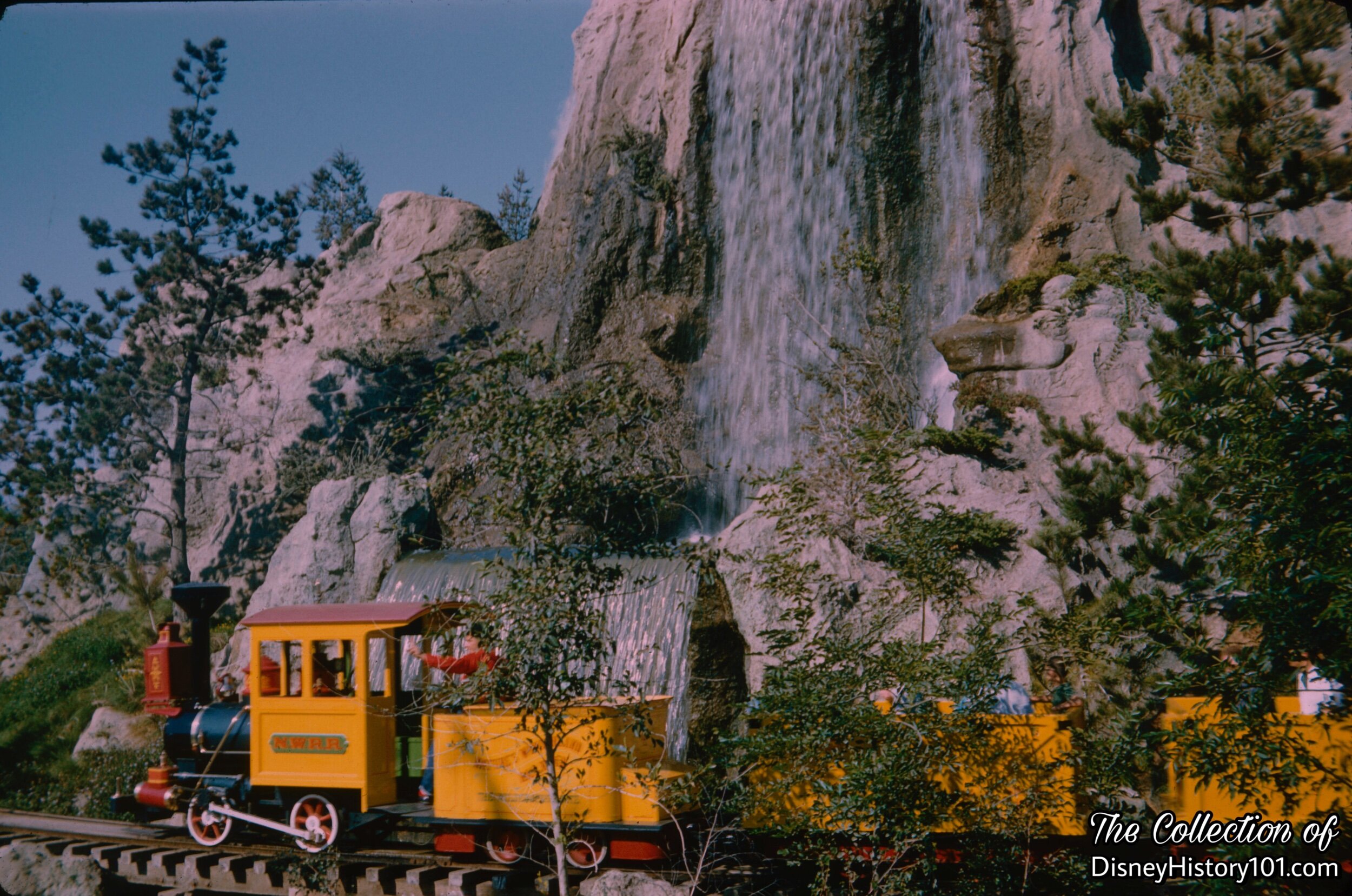
Cascade Peak and The Twin Sisters, (June, 1961)
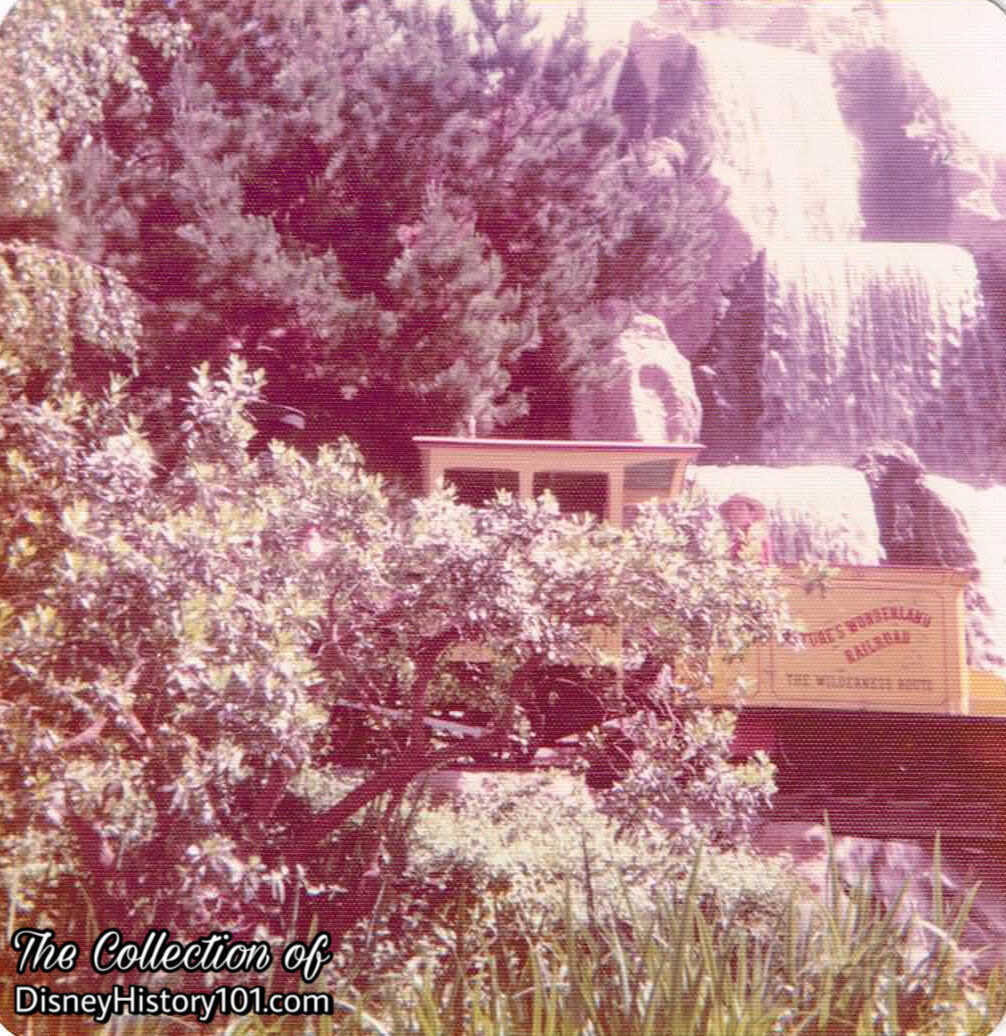
Cascade Peak and The Twin Sisters
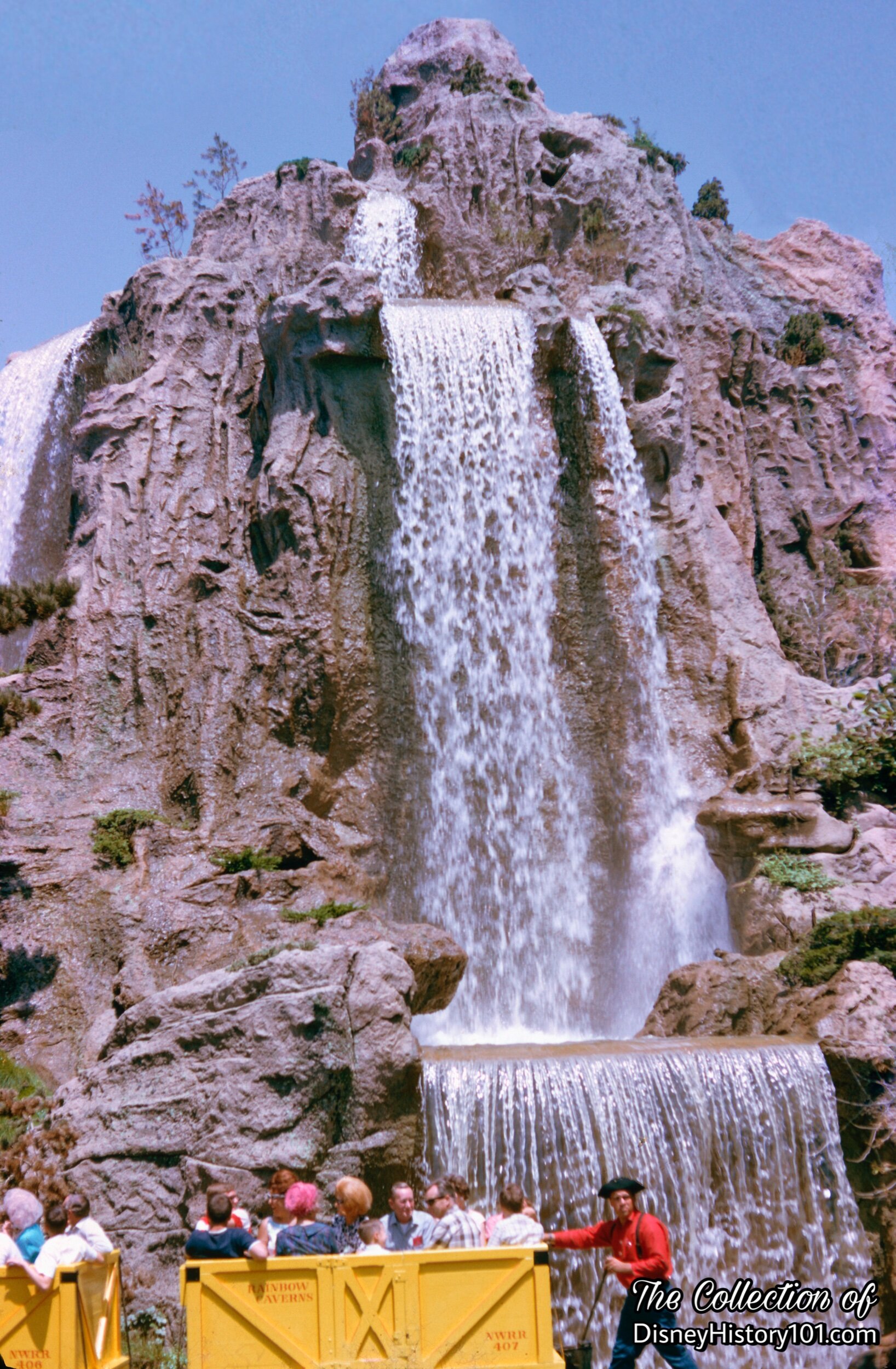
Cascade Peak RockWork, The Twin Sisters, and a possible “101” Mine Train, August, 1965.
It doesn’t look as if we’ve had a “breakdown”, so there’s no need to call Disneyland Operations or the Disneyland Maintenance Department (though this may ultimately end up in our Daily Maintenance Report). The Brakeman generally sits in the last car in case we need to bring the train to a halt.
Milo Rainey recalled standing on a little porch on the last car and giving a live spiel.
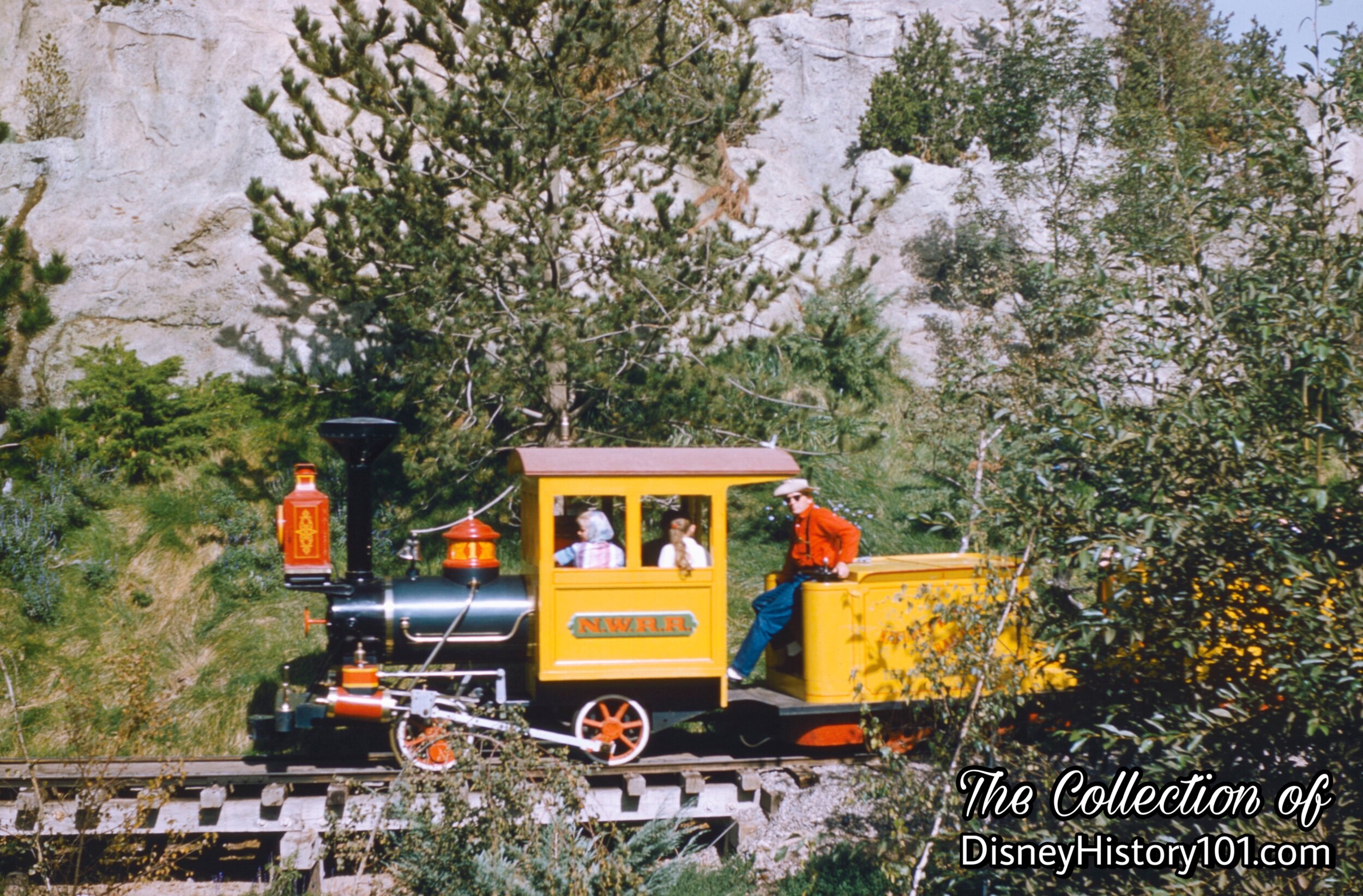
Mine Train Along The Rivers of America
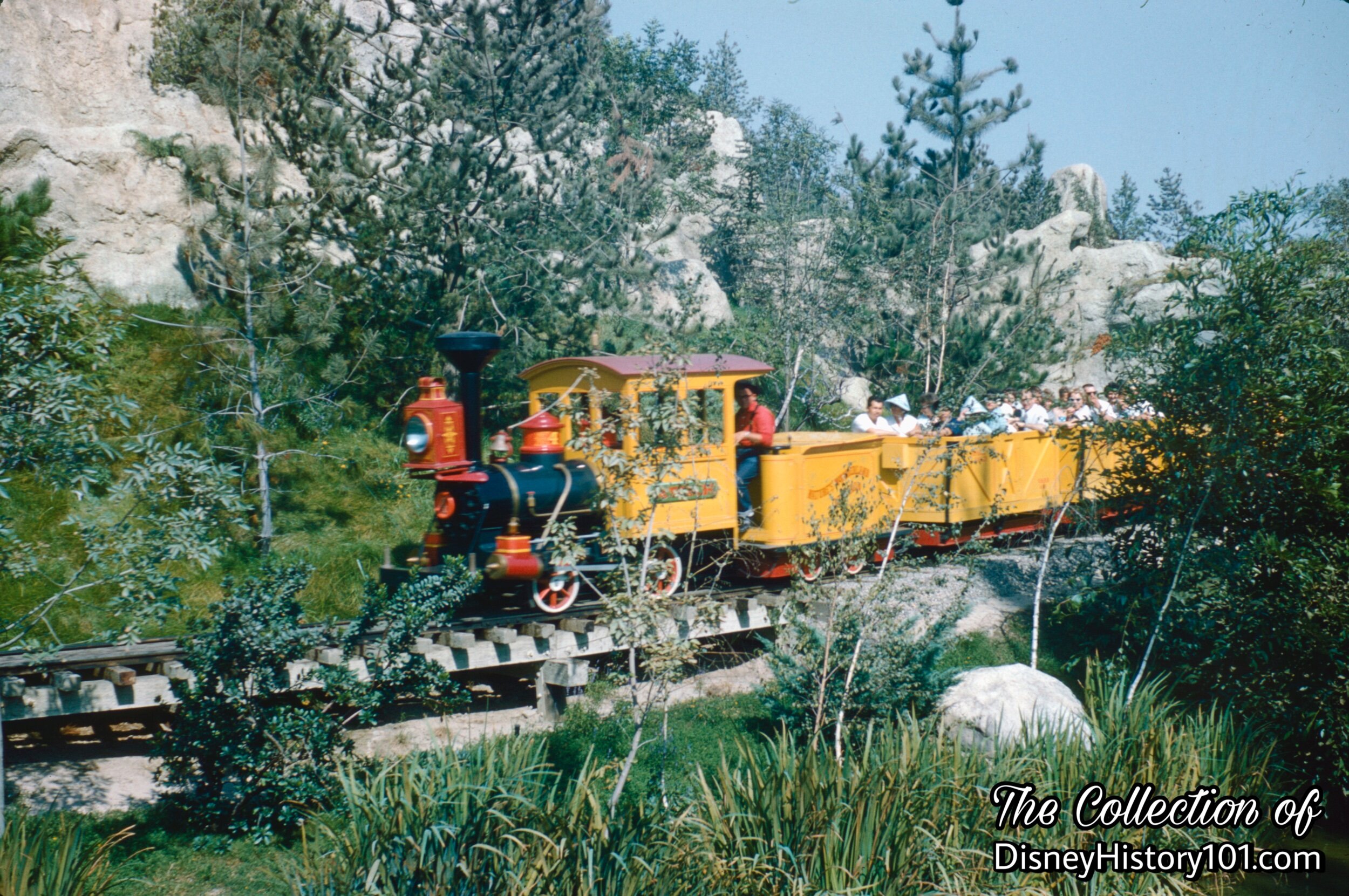
Mine Train Along The Rivers of America
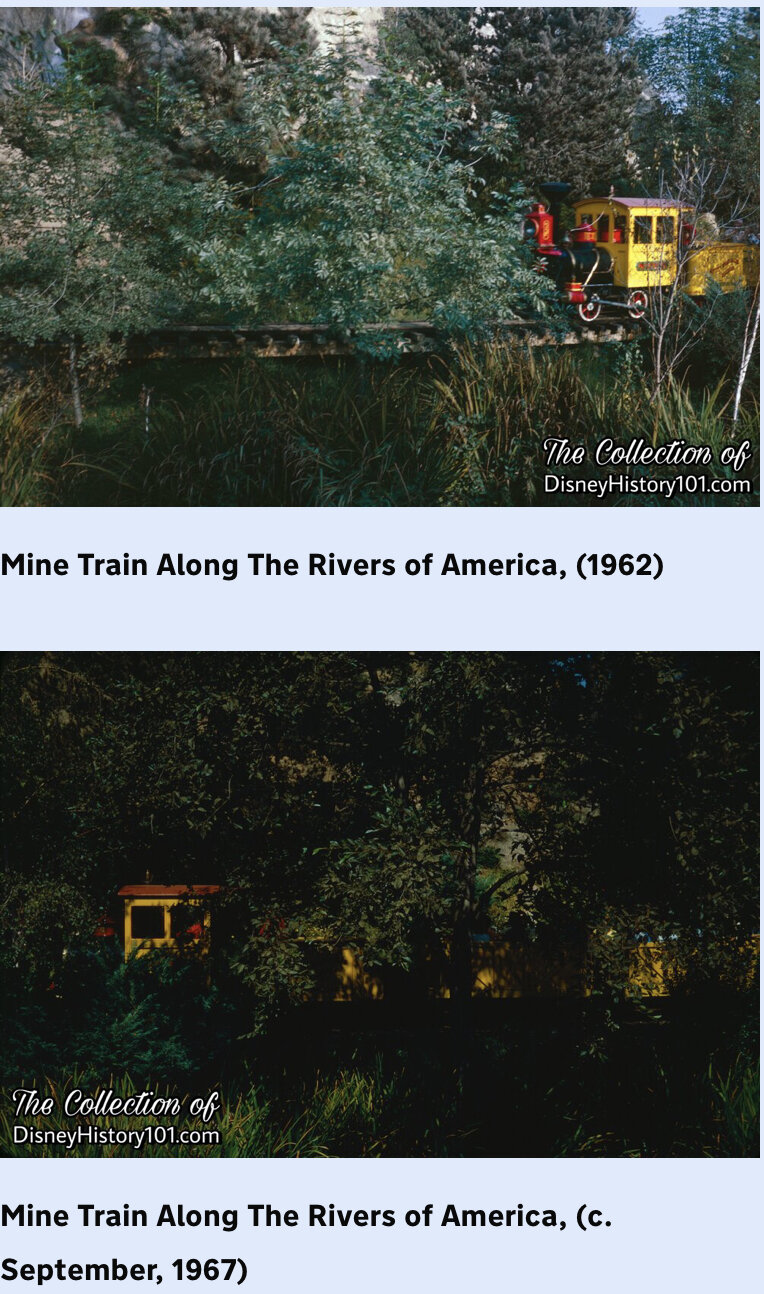
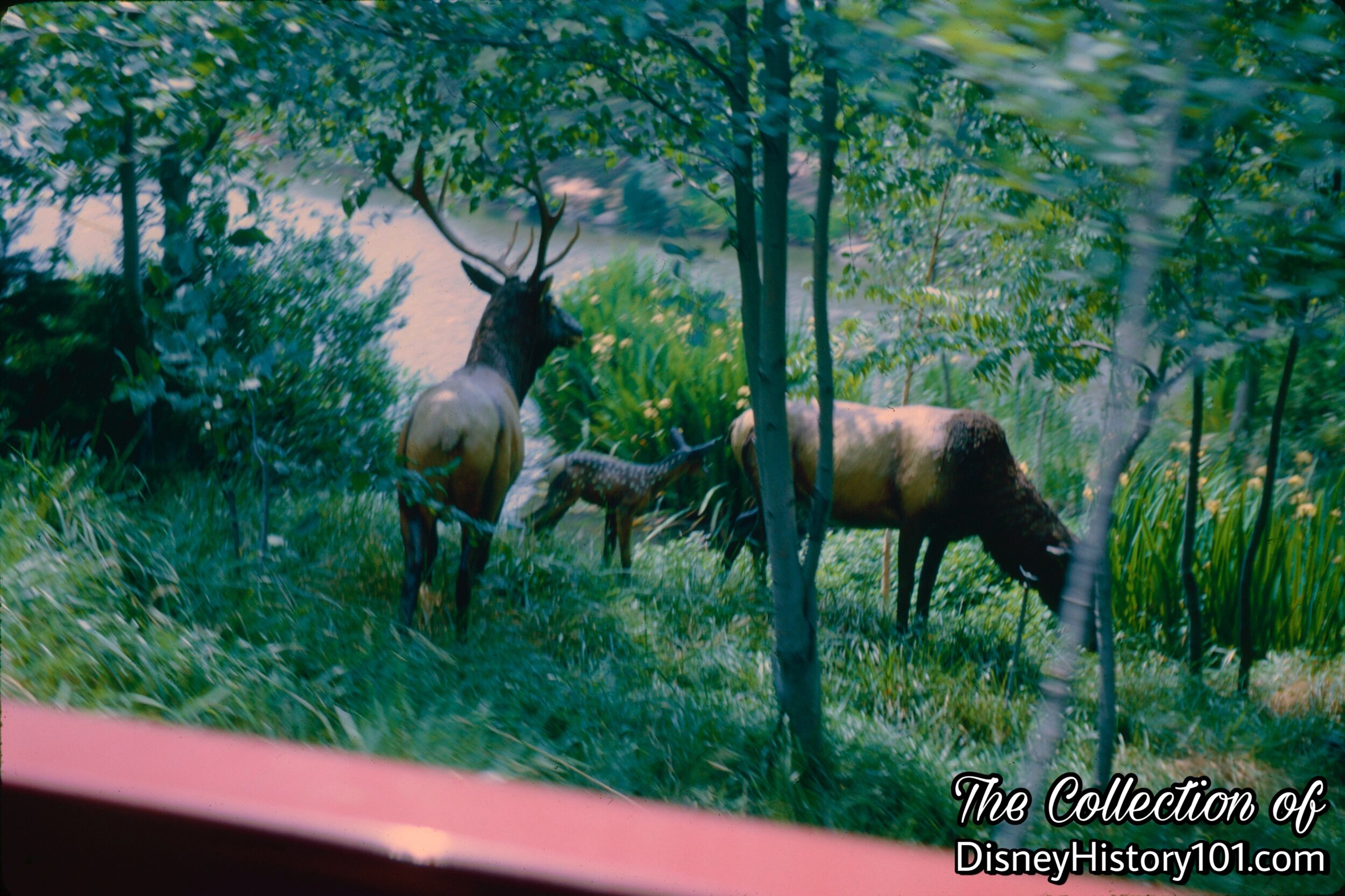
Deer Family Along The Rivers of America, (c. April, 1961)
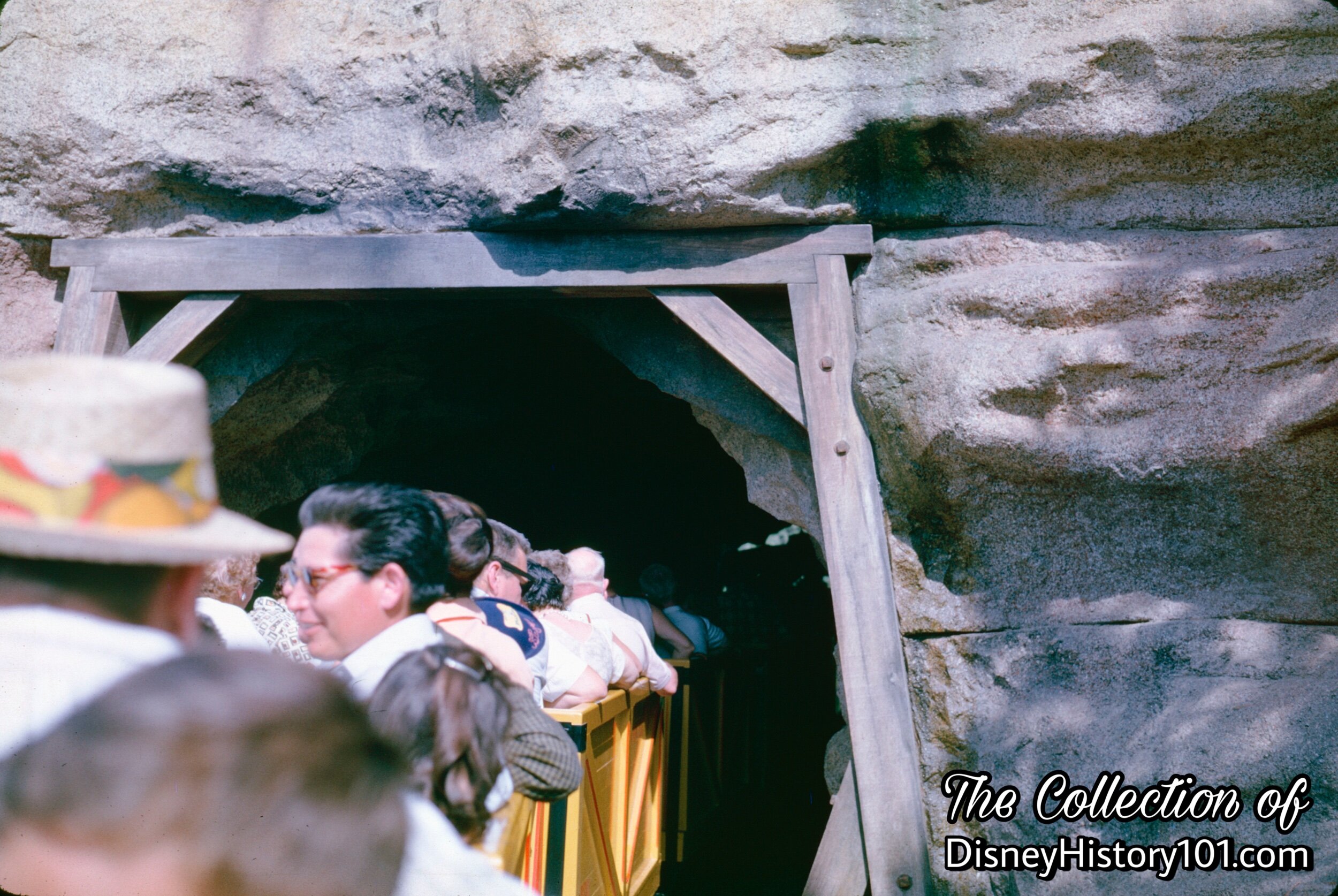
Tunnel to Bear Country
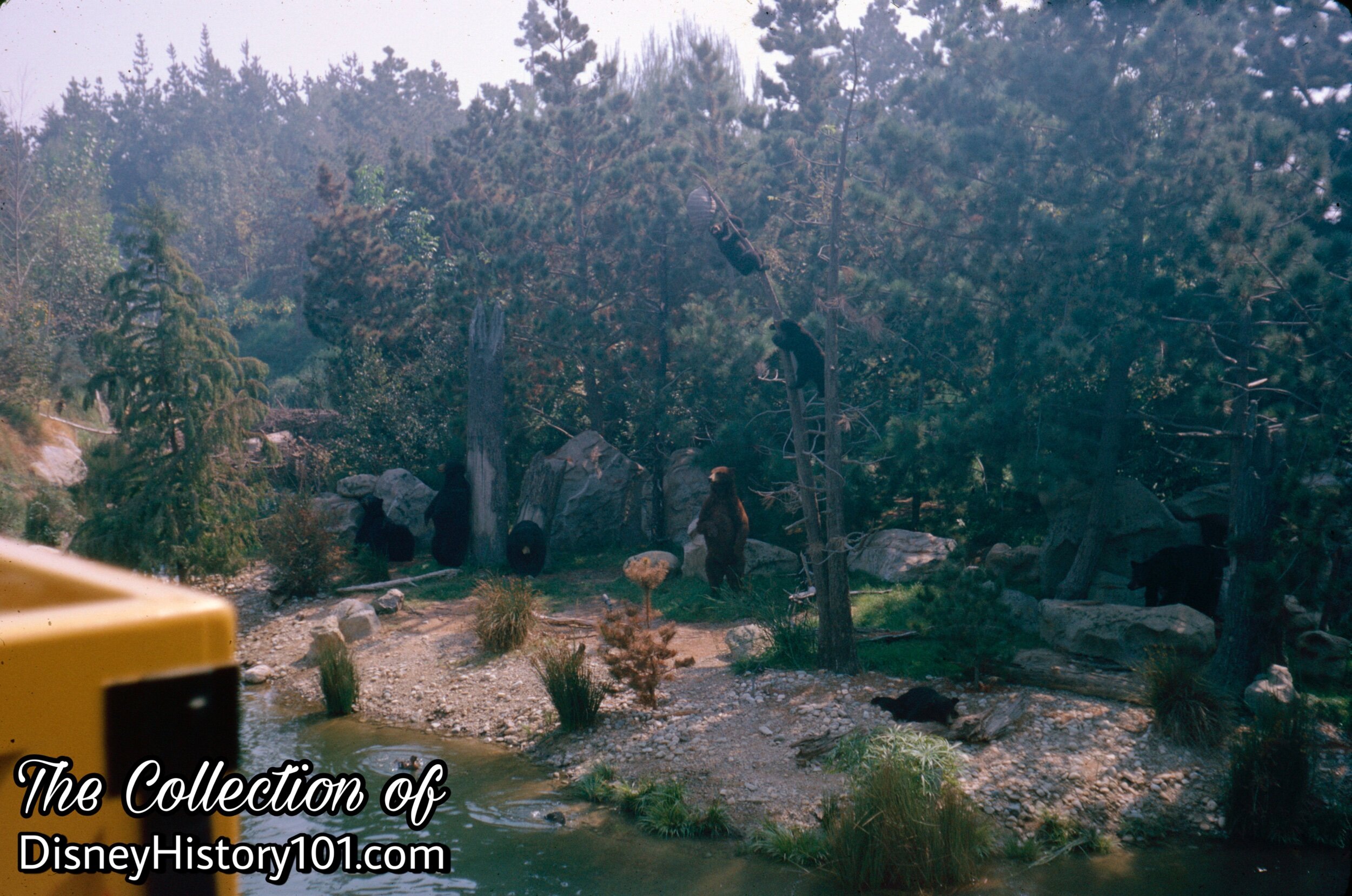
Bear Country, (1961)
“Y’know bears is one of the most playful animals there is…lazy too. All they want to do is lay around and scratch, fish, an’ swim. That is, when they ain’t sleepin’.” Here, twelve Bears and cubs swim, fish, eat, and relax around Bear Country! Just one question - which one is “King of the Grizzlies”?
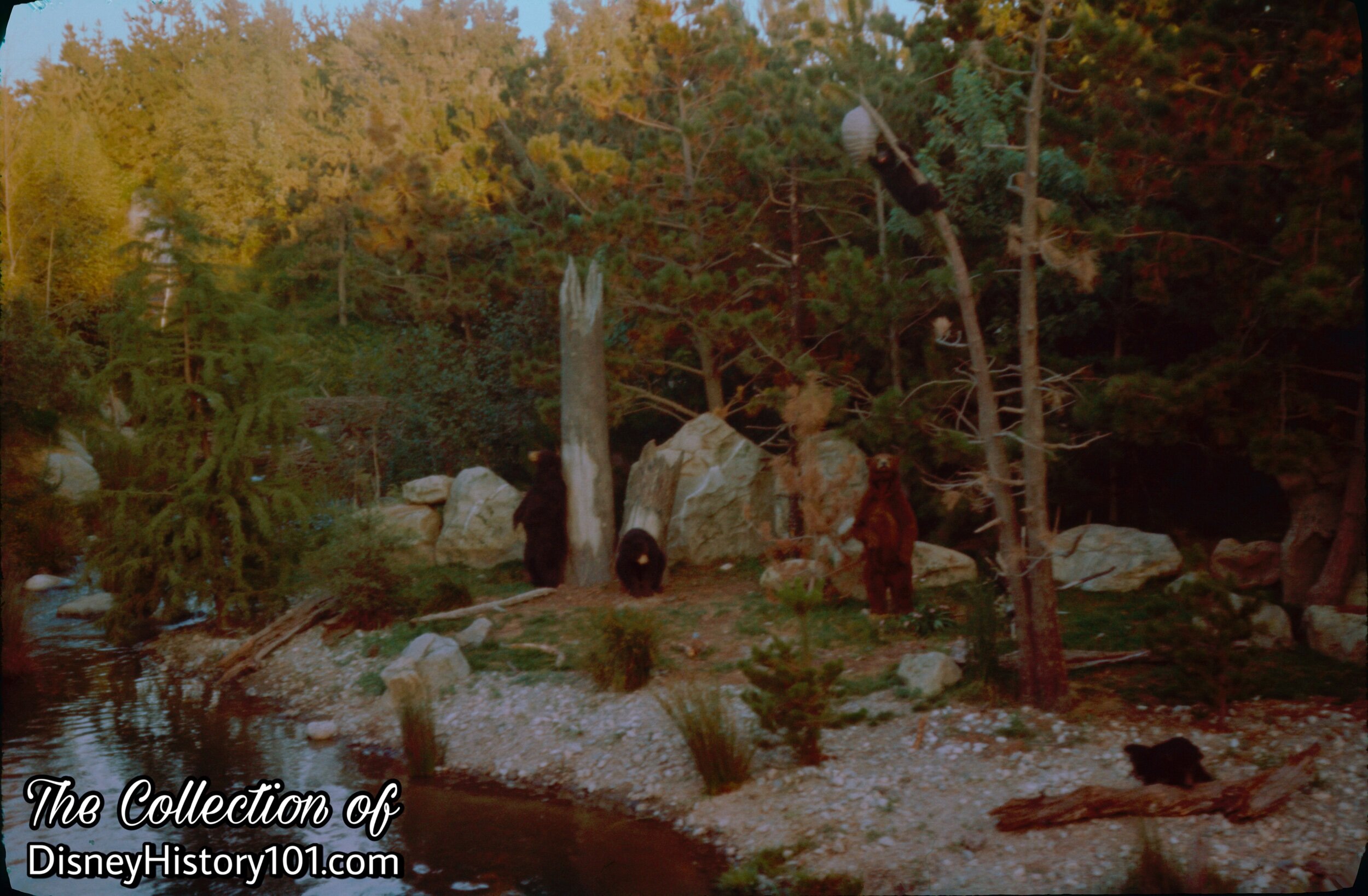
Bear Country
“We’re comin’ into Bear Country now folks, and while we’re crossin’ the ol’ tressle ya got ta sit real still. No tellin’ how long he’s gonna last.” Many of these “natural” vignettes were designed by Marc Davis (the same designer behind many of the Pirates of the Caribbean’s show scenes)!
If you look into the hills, you’ll notice just some of Nature’s Wonderland’s 156 different types of trees and other flora. Many of these were imported to Disneyland and placed under the direction of Landscaping employees Evans and Reeves.

Bear Country
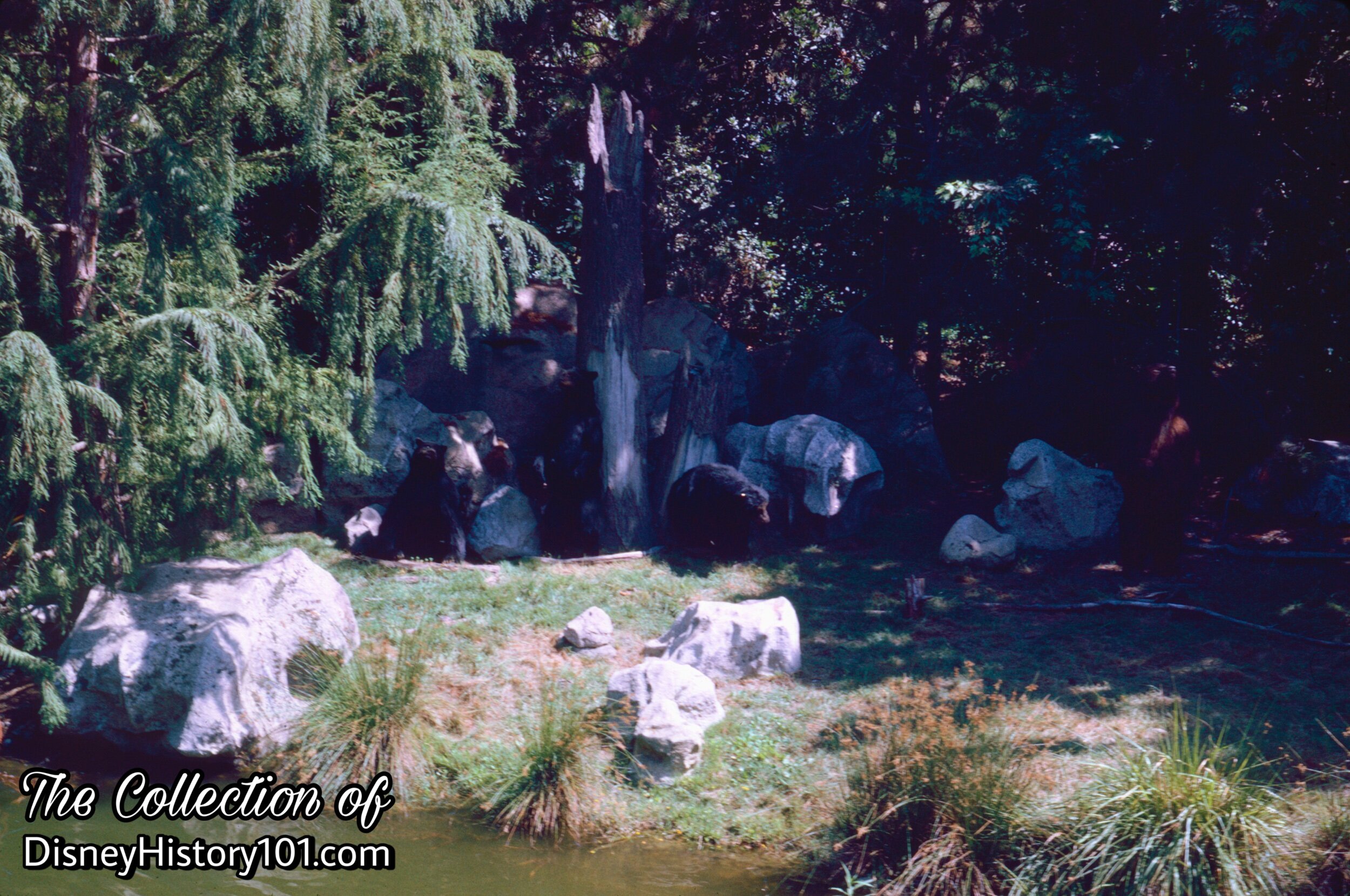
Bear Country
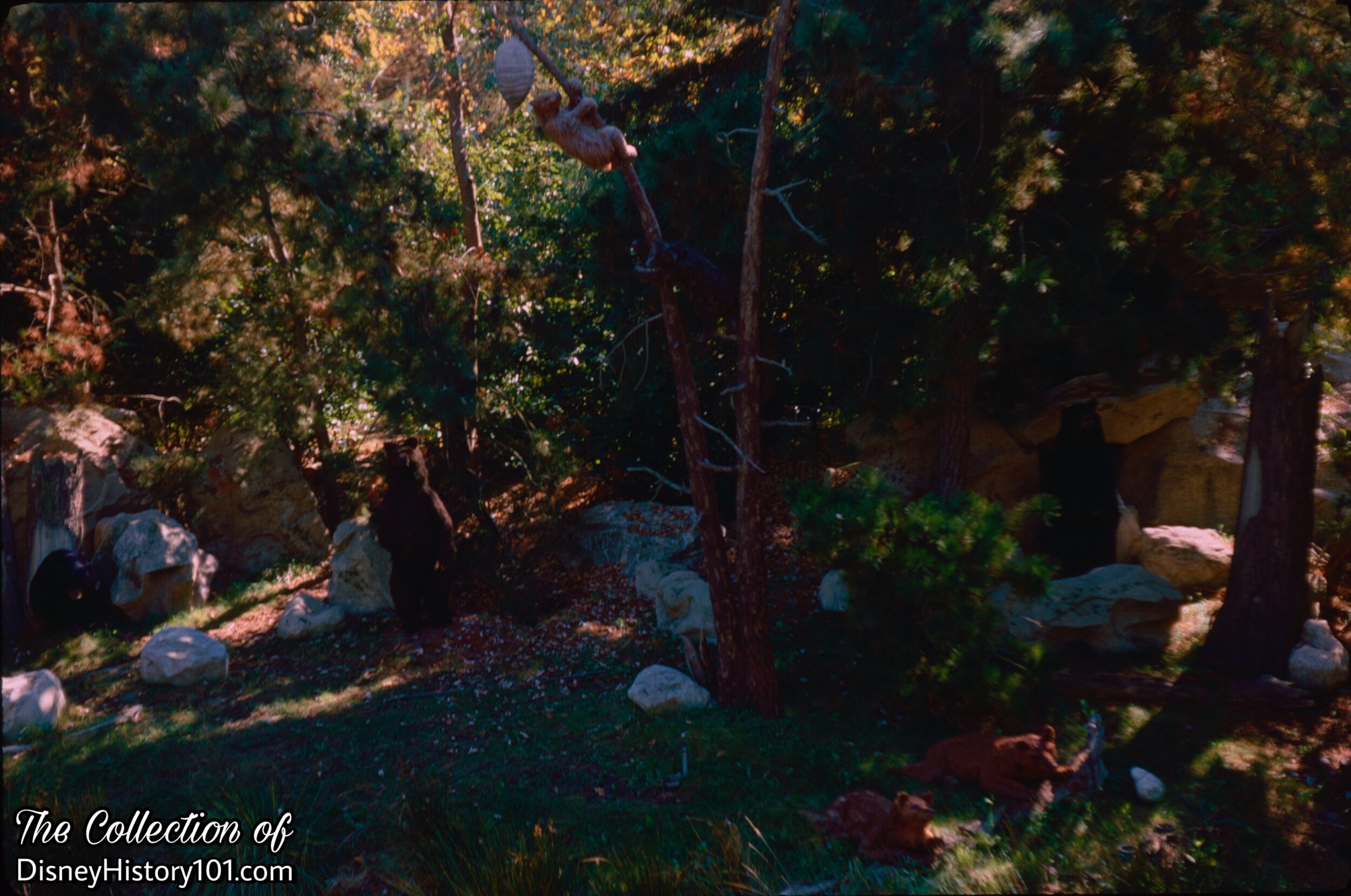
Bear Country, (November 2, 1969)
You may notice a number of rocks across the landscape, along your tour today. Many of those rocks were not manufactured at WED, but are “true-life” rocks, carefully selected, imported, and “installed under the direction of a WED Enterprises Art Director”.

Bear Country, (August, 1965)
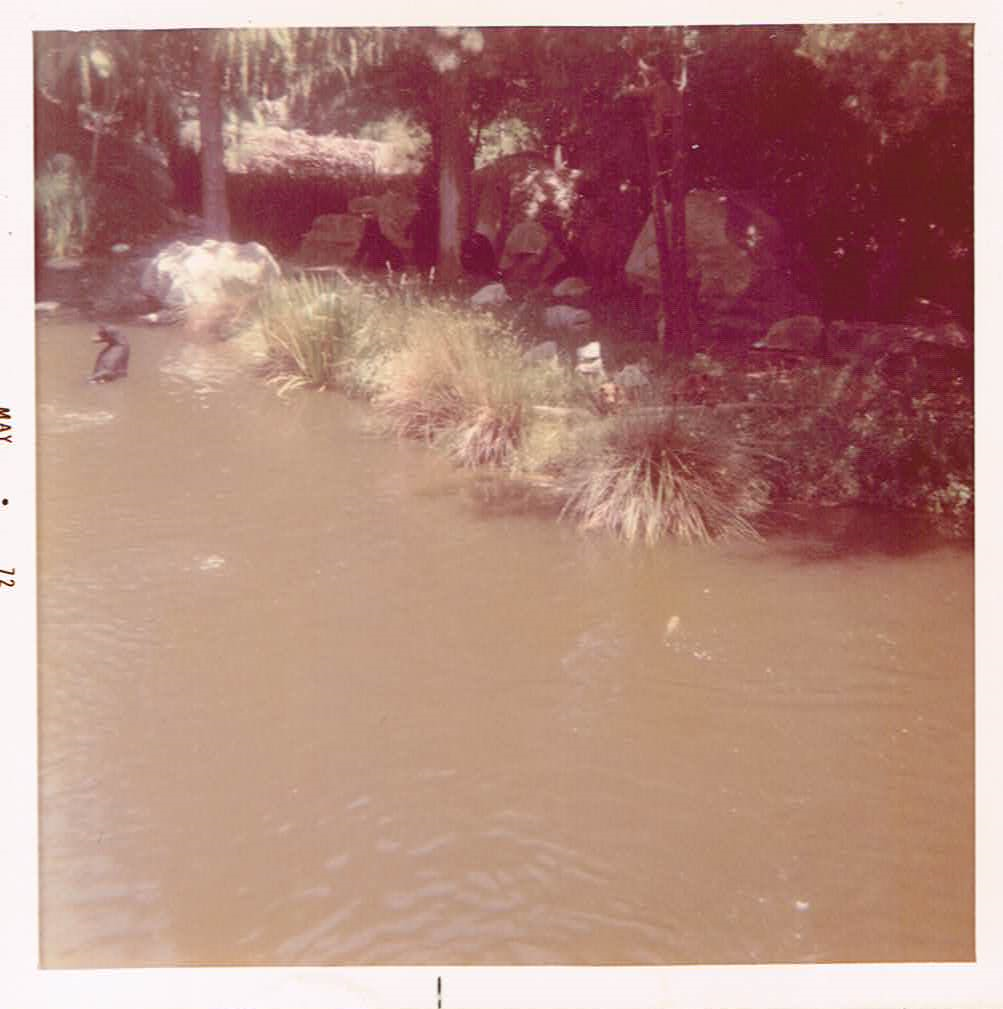
Bear Country, (1972)
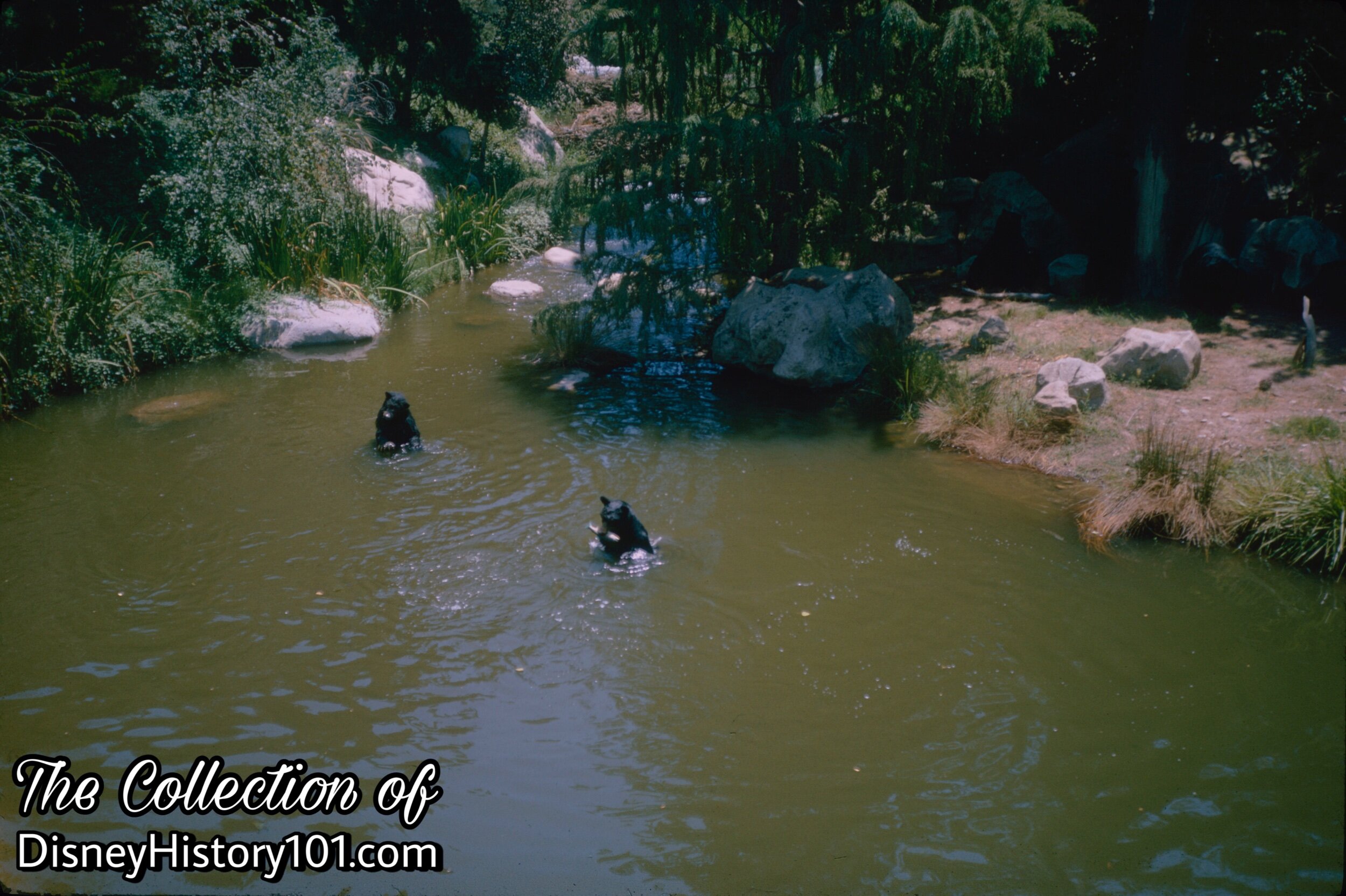
Bear River, Bear Country, (August, 1966)
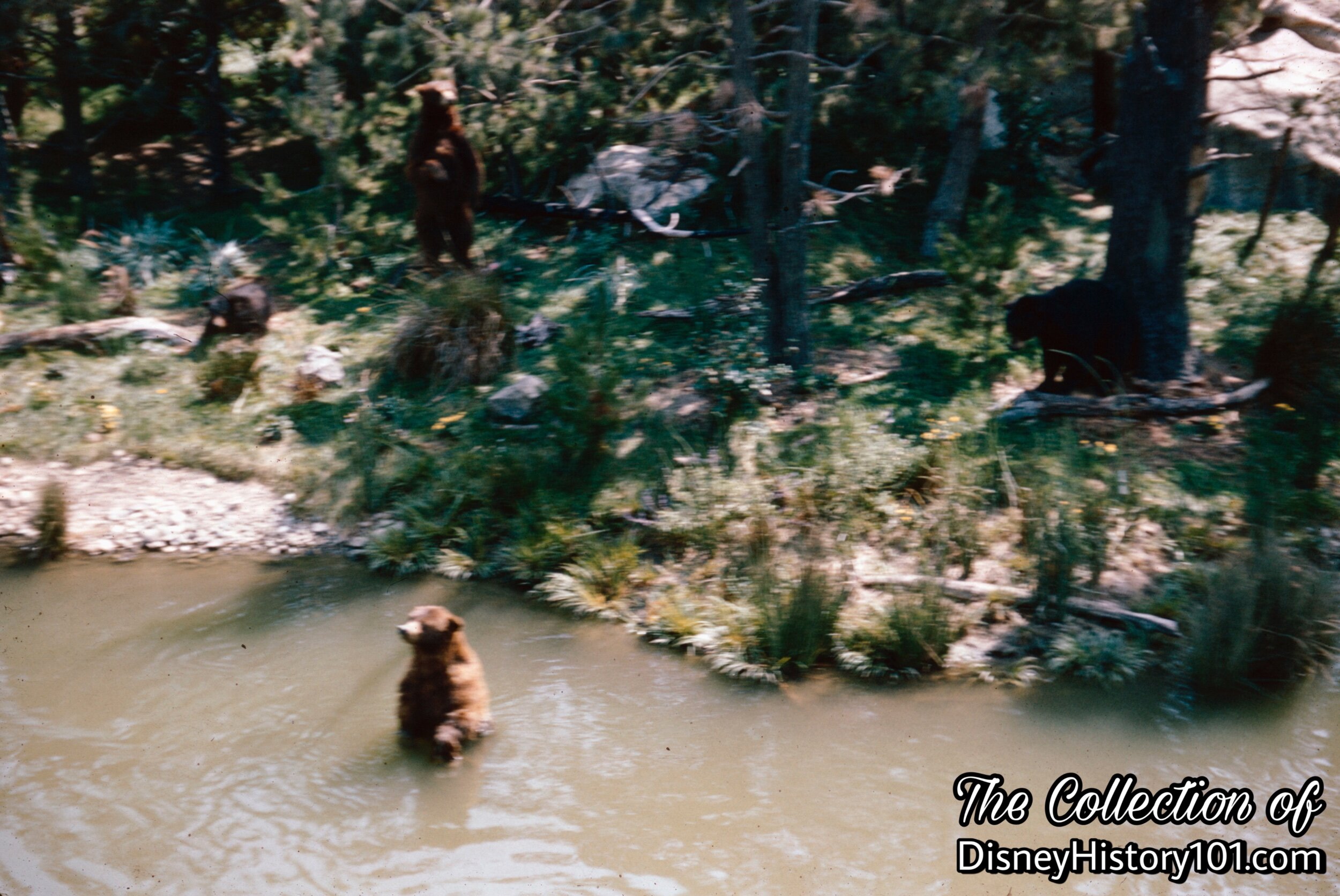
Bear Country, (1960)
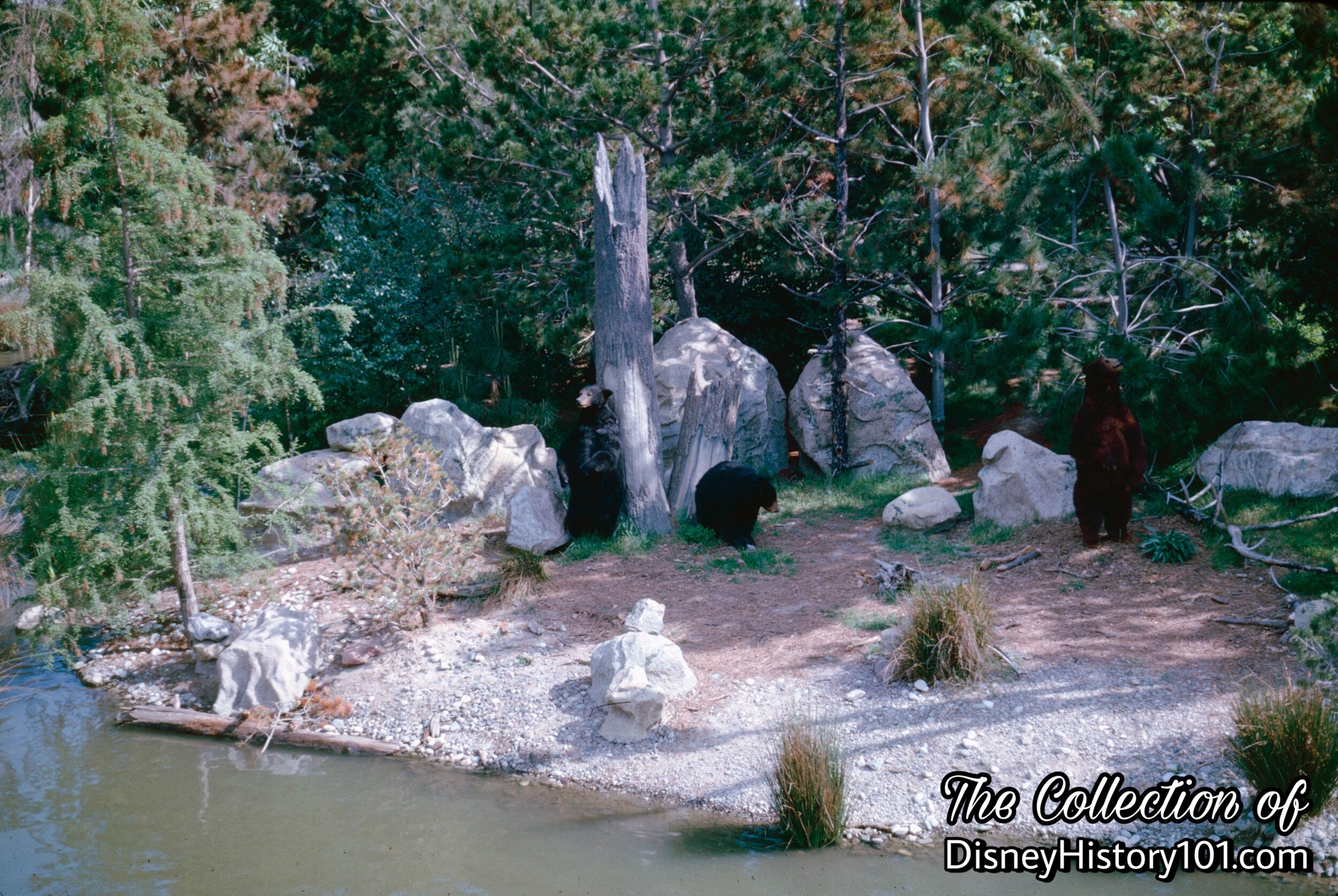
Bear Country
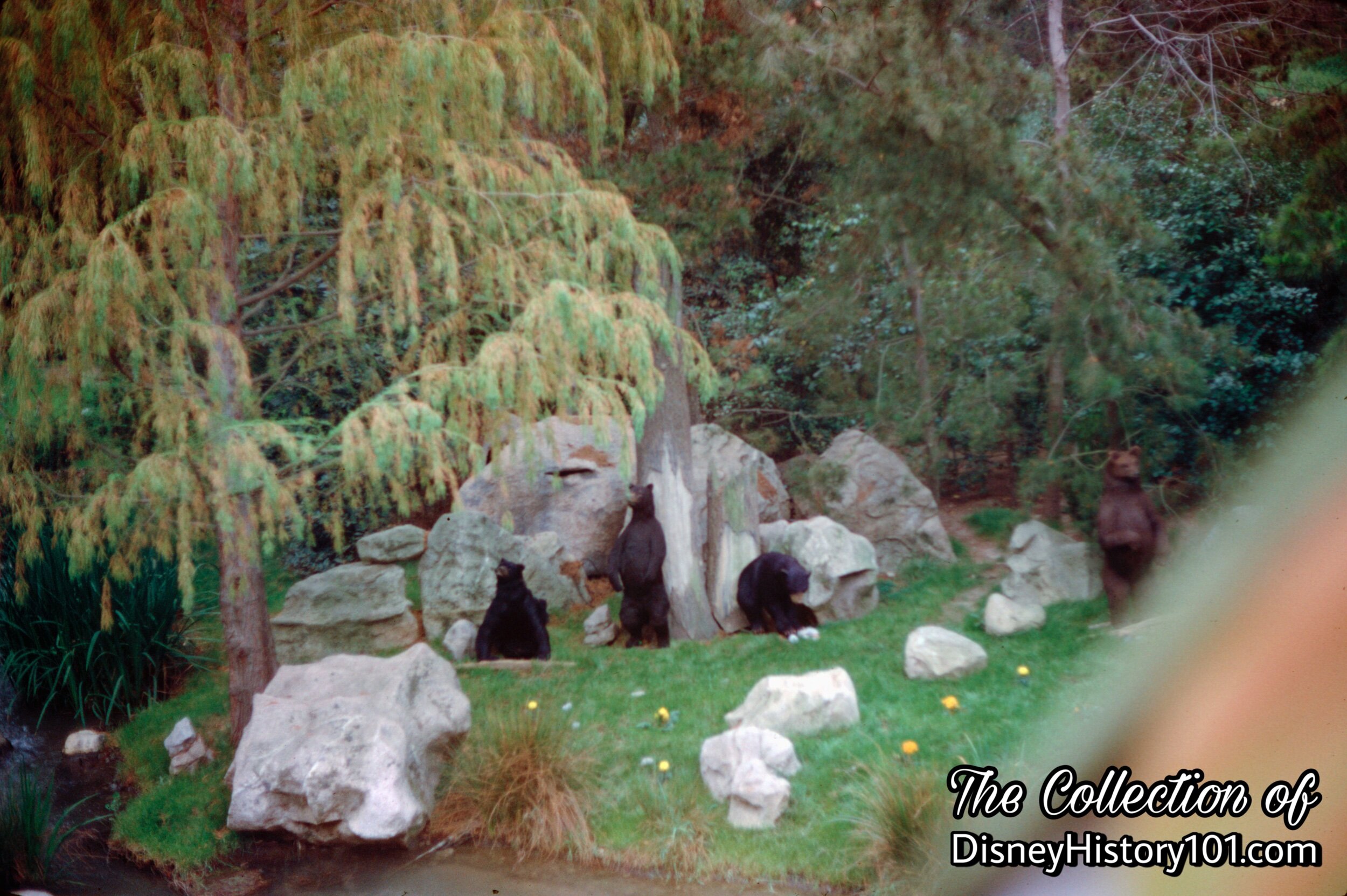
Bear Country

Bear Country, (April, 1968)
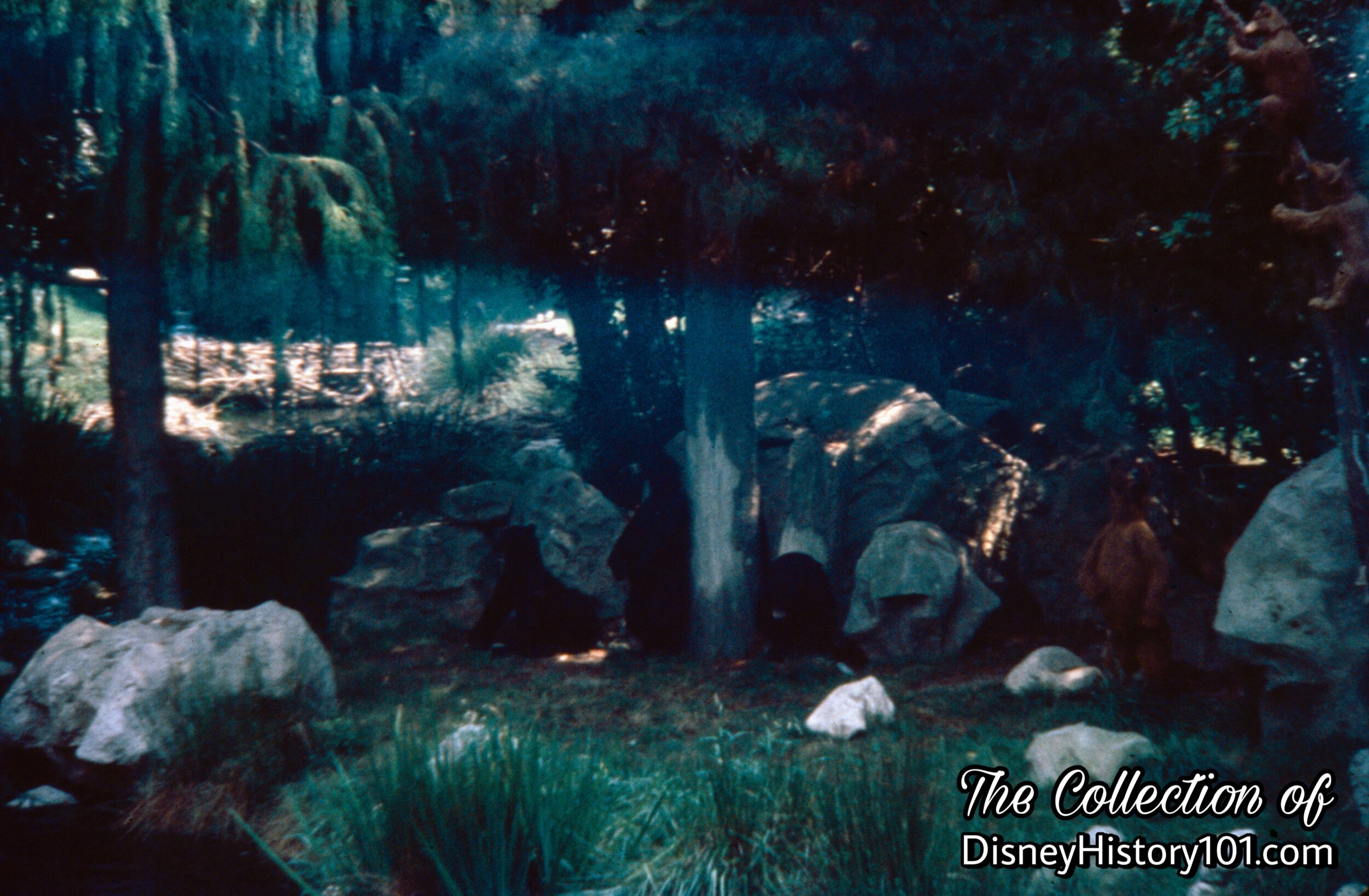
Bear Country
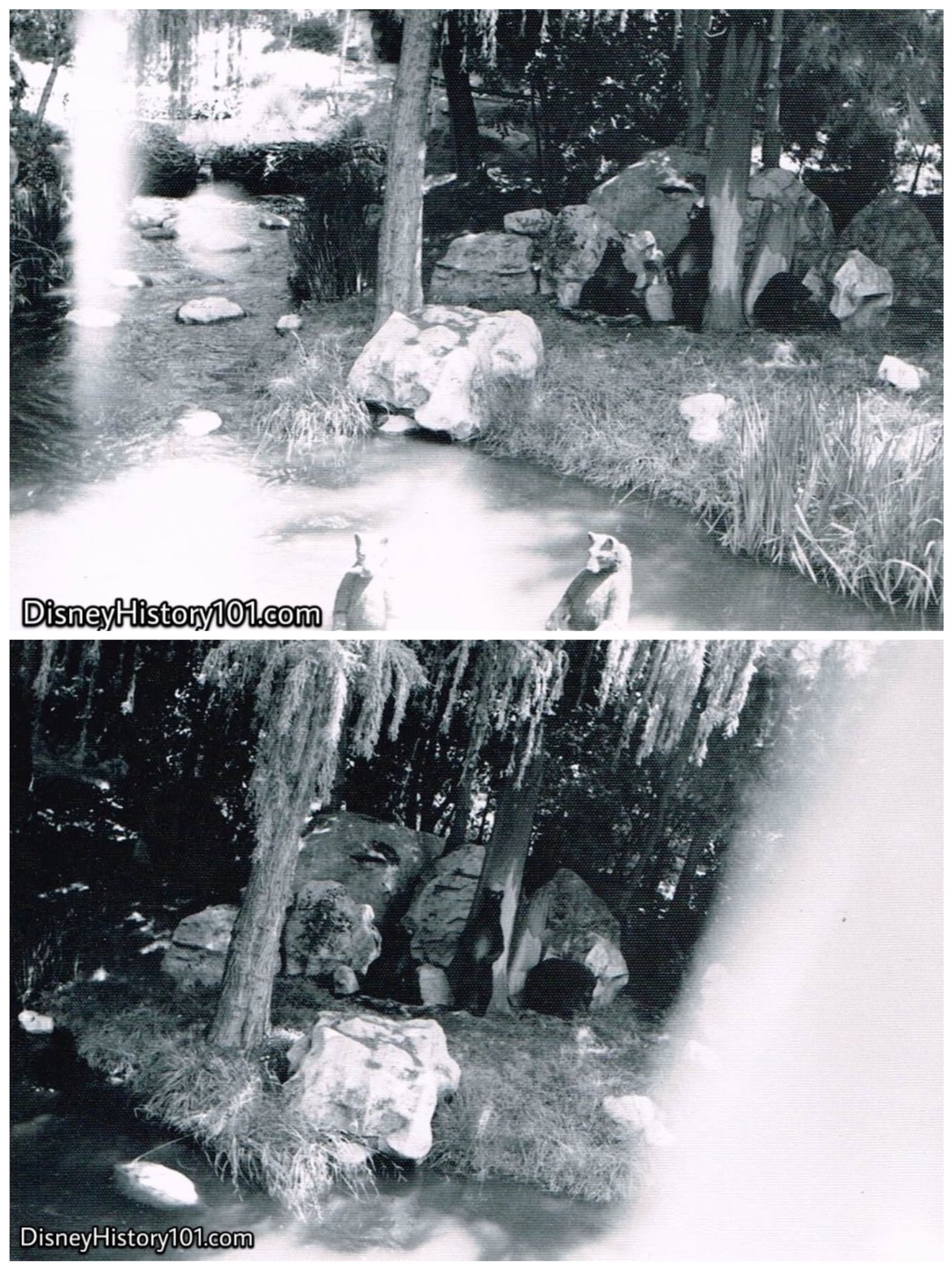
Bear Country, (1975)
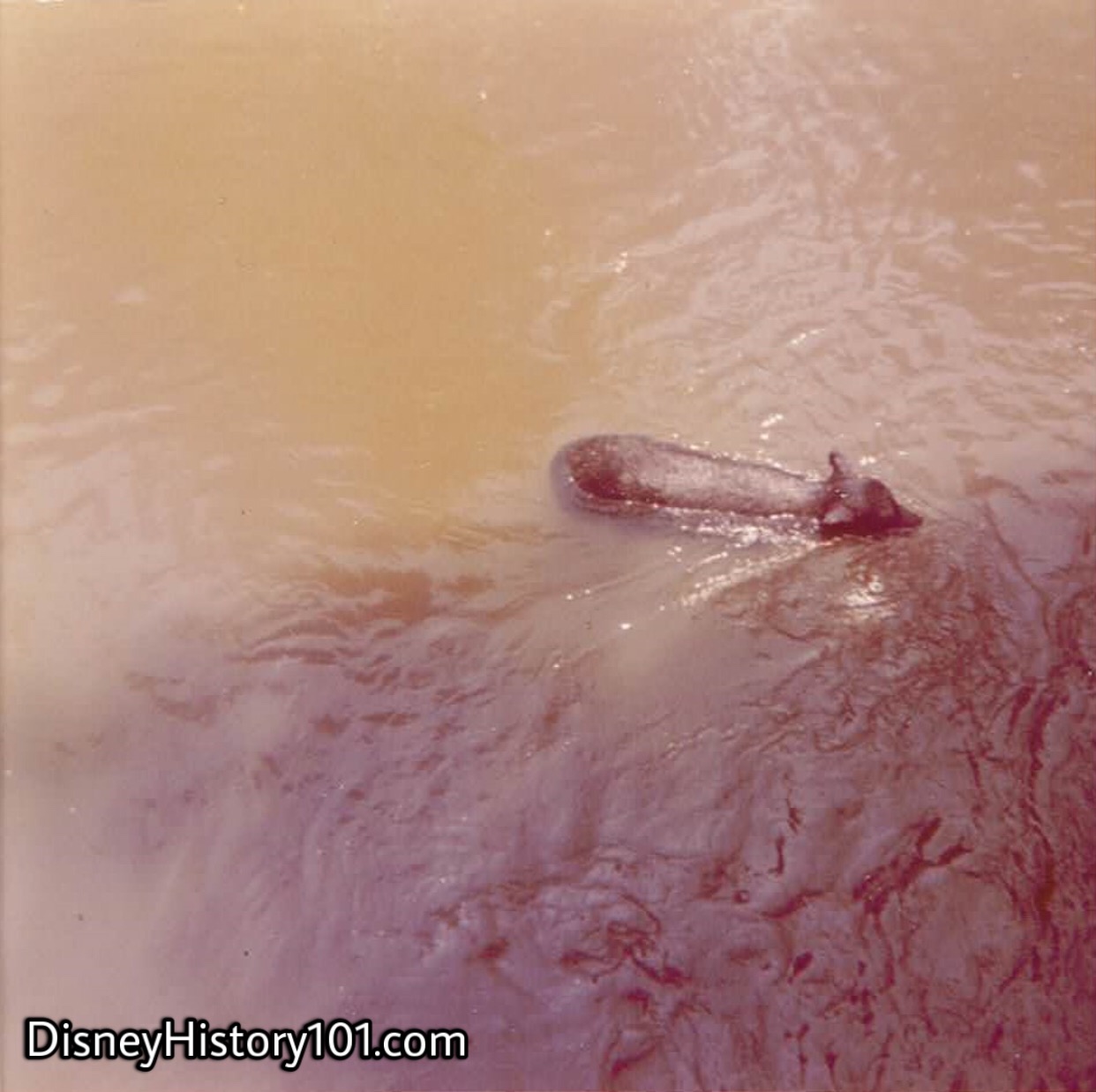
Bear Swimming in Bear River, Bear Country, (1972)
If you look off to the sides of the wooden trestle bridge, you’ll notice two swimming bears (one on each side of the Mine Train).
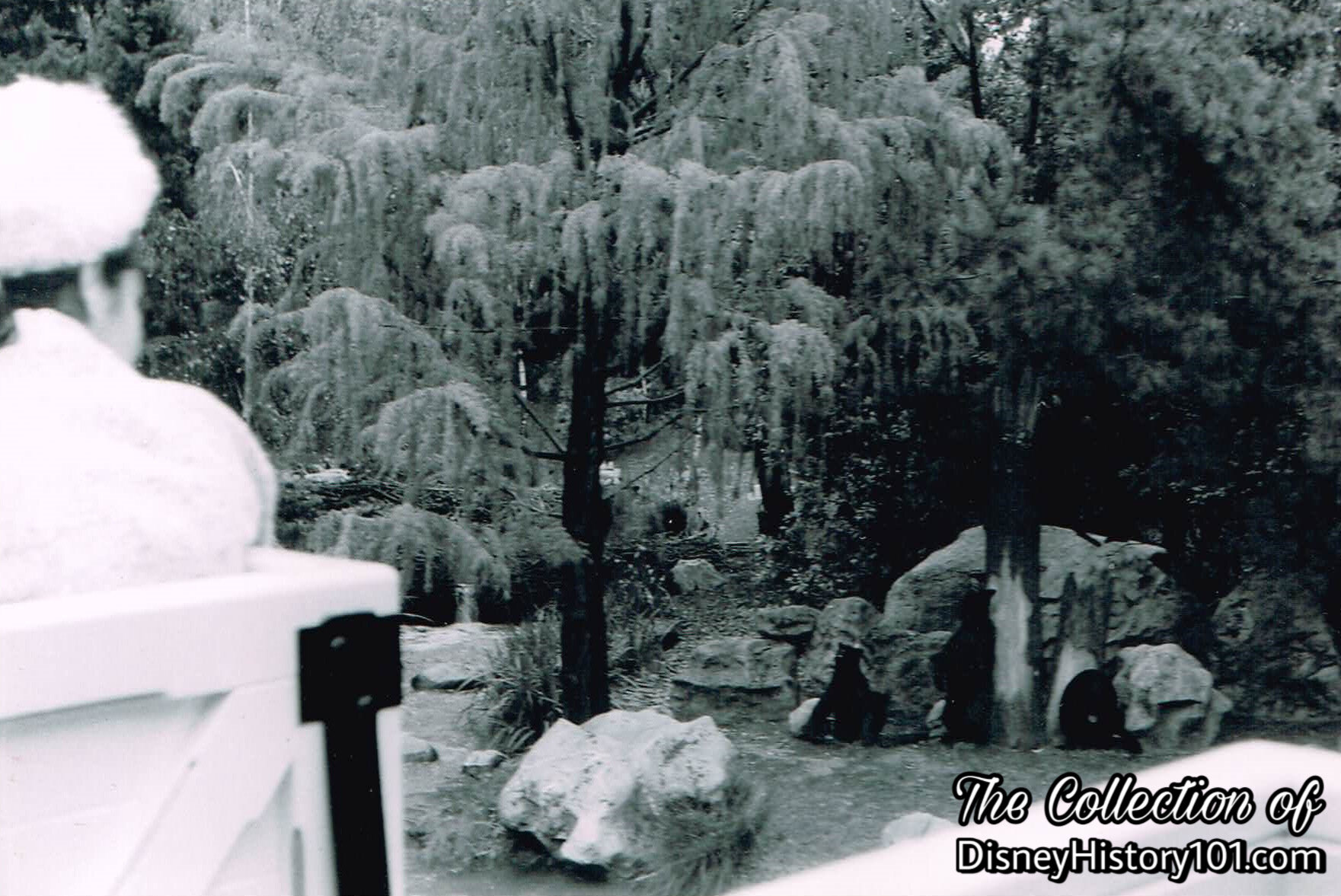
Bear Country
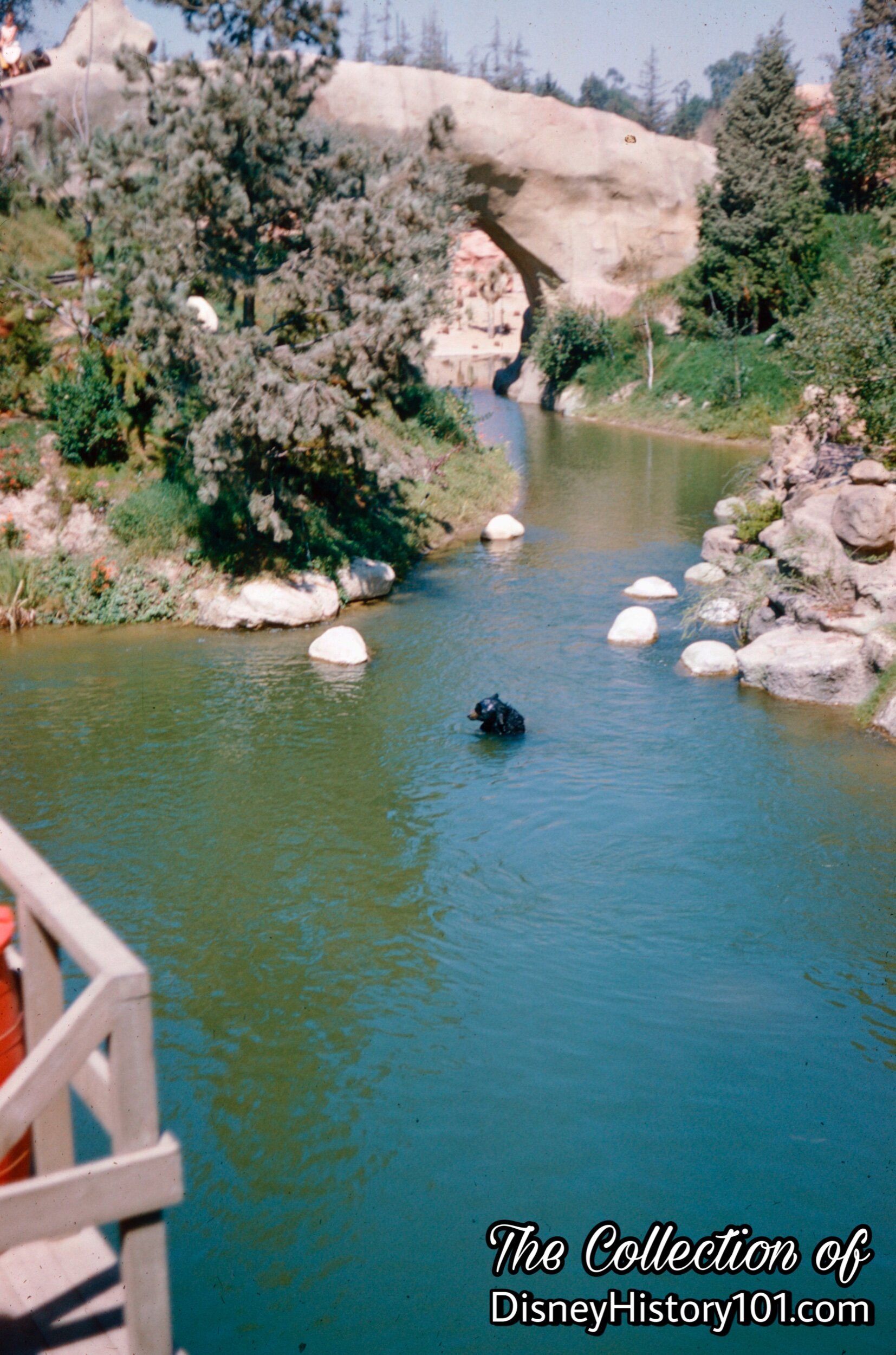
Bear Country, (October, 1960)
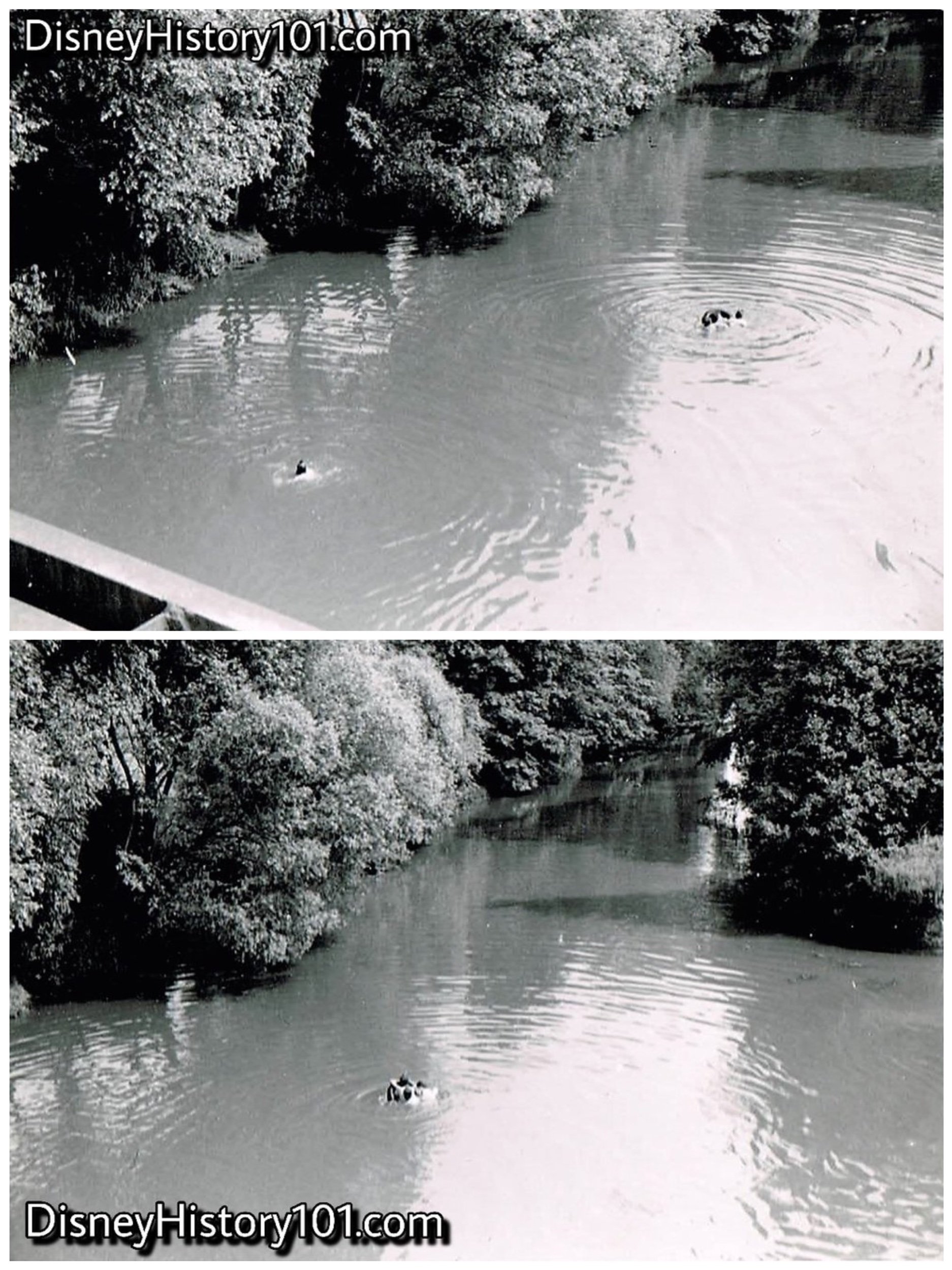
Jumping Fish in Bear River, Bear Country
This was the scene as the train passed along a timber trestle over Bear Country. Some of these same jumping fish still inhabit an area near Big Thunder Mountain.

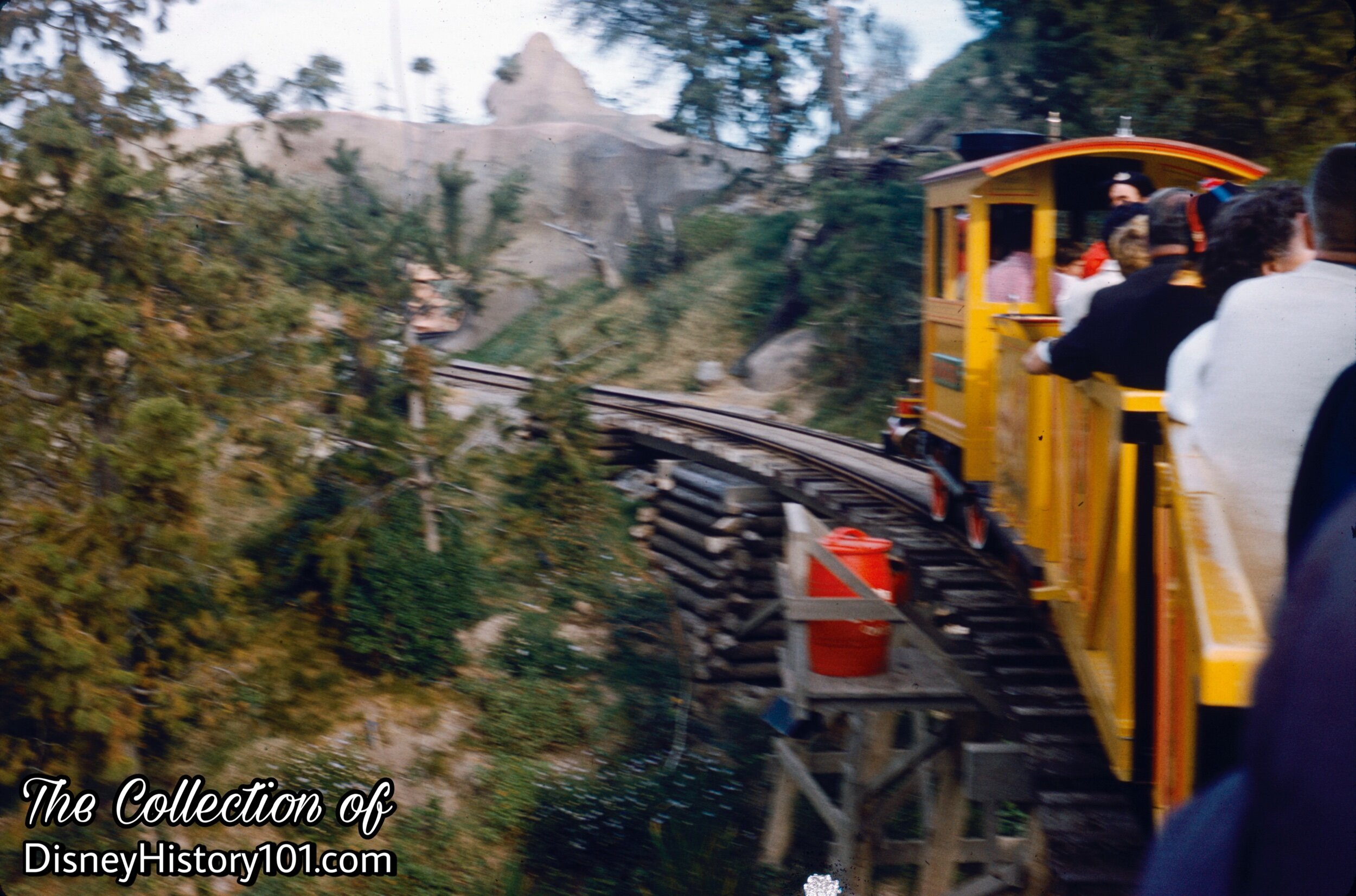
Bear Country Trestle Bridge Over Bear River, (1961)
As we get to the other side of the wooden trestle, we hear what appears to be the sound of branches breaking.
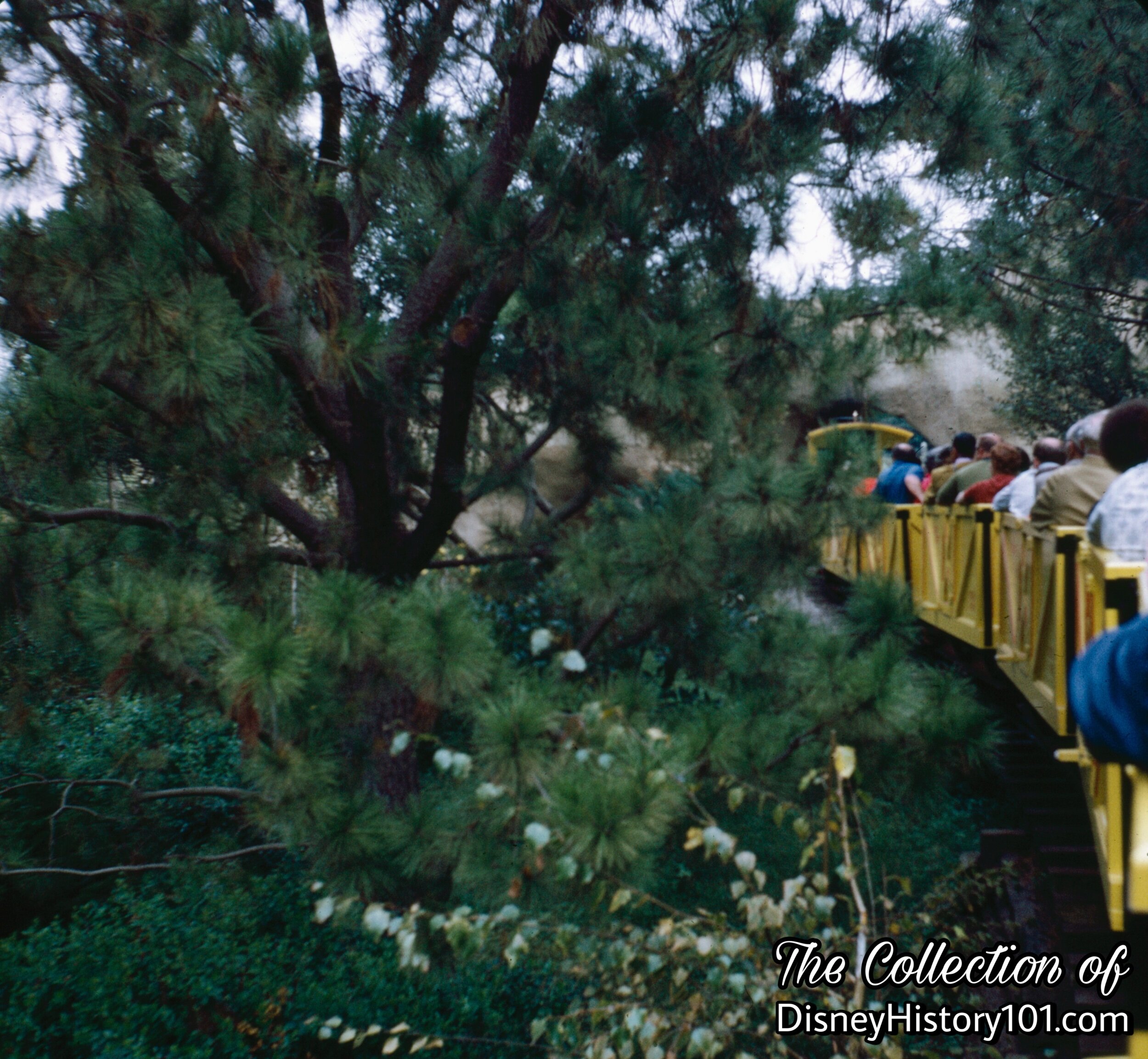
Bear Country Trestle Bridge Over Bear River
On the right, at the end of the trestle, we get quite a show!
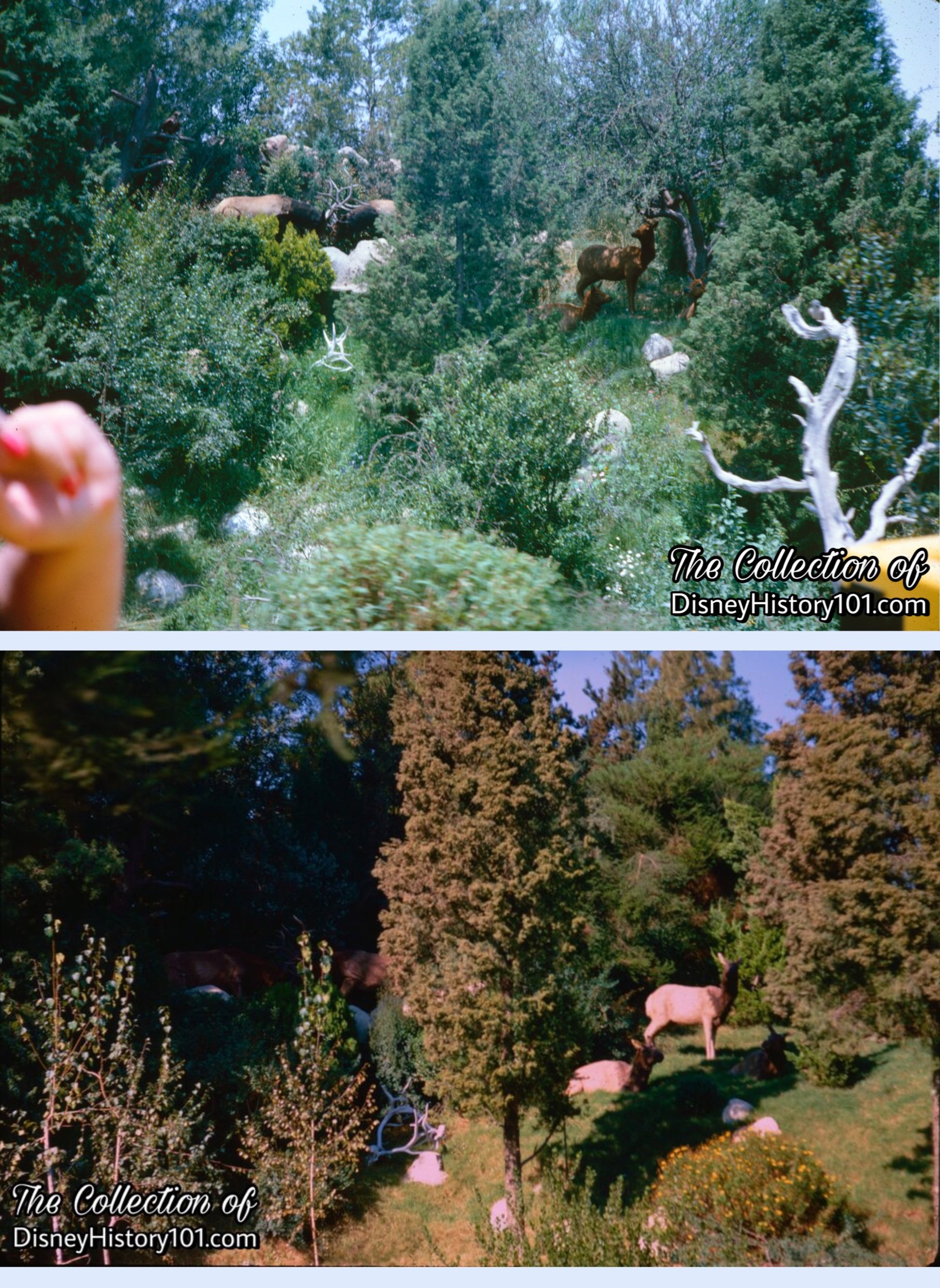
Battling Elk, (November 2nd, 1969)
“Y’know Nature’s Wonerland can be awful pretty but sometimes she can be a mighty rugged place ta live. Out here in the wilderness, the struggle for survival leaves only the strong and sometimes the lucky. Say, look on that bank across Bear Creek there - now there’s a real struggle for survival. Two stags are battlin’ for them Cow Elk.”
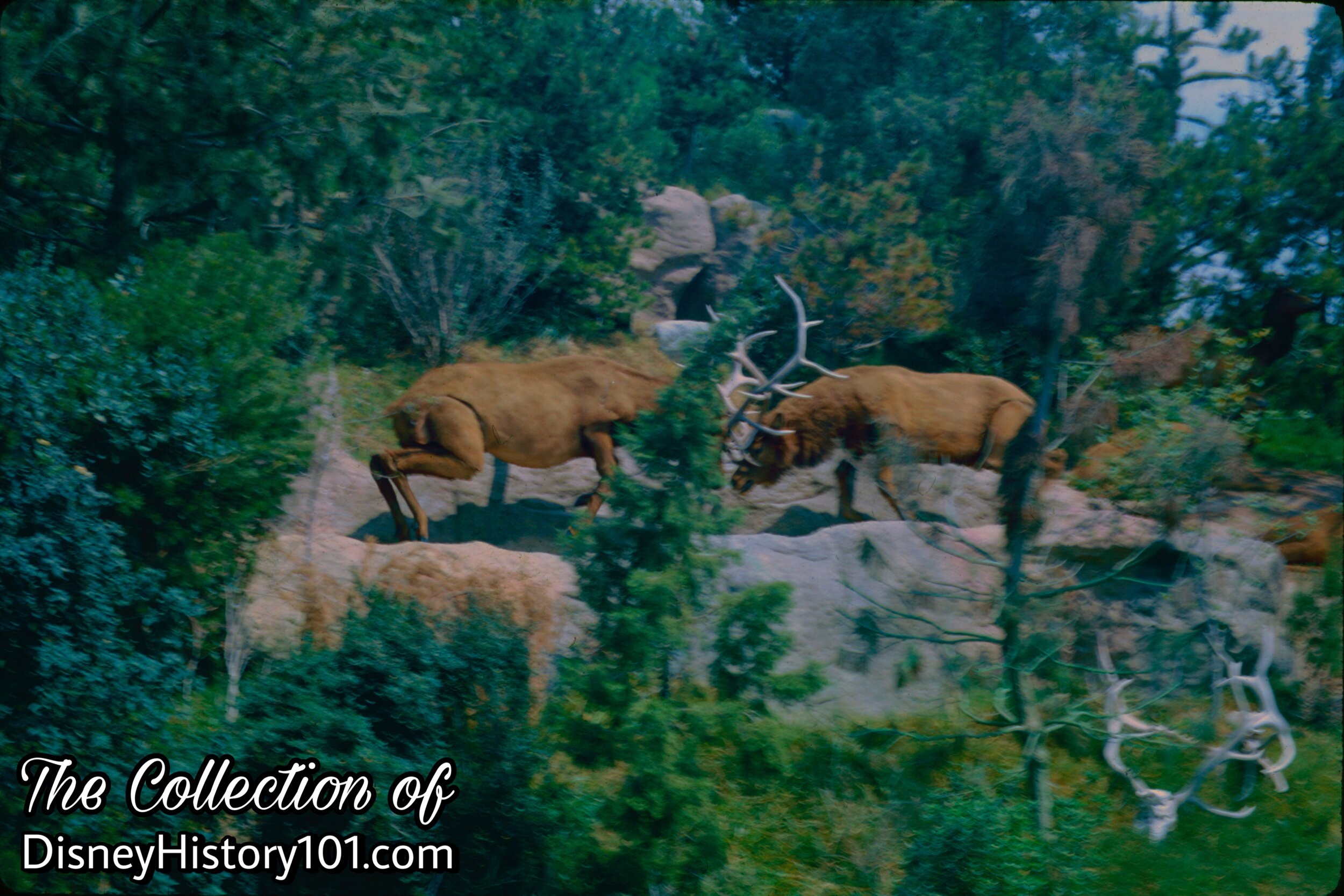
Battling Elk, (c. April, 1961)
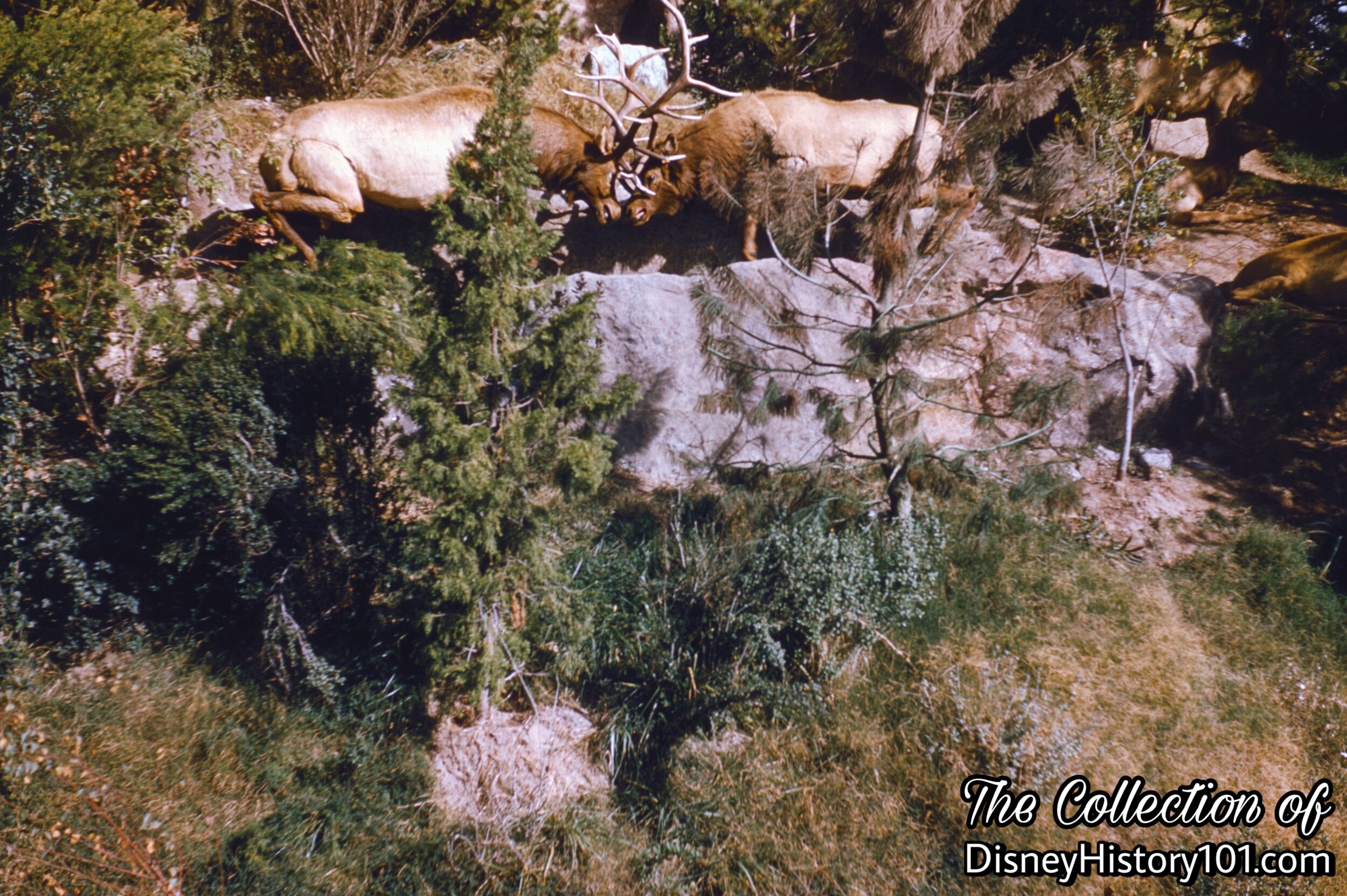
Battling Elk
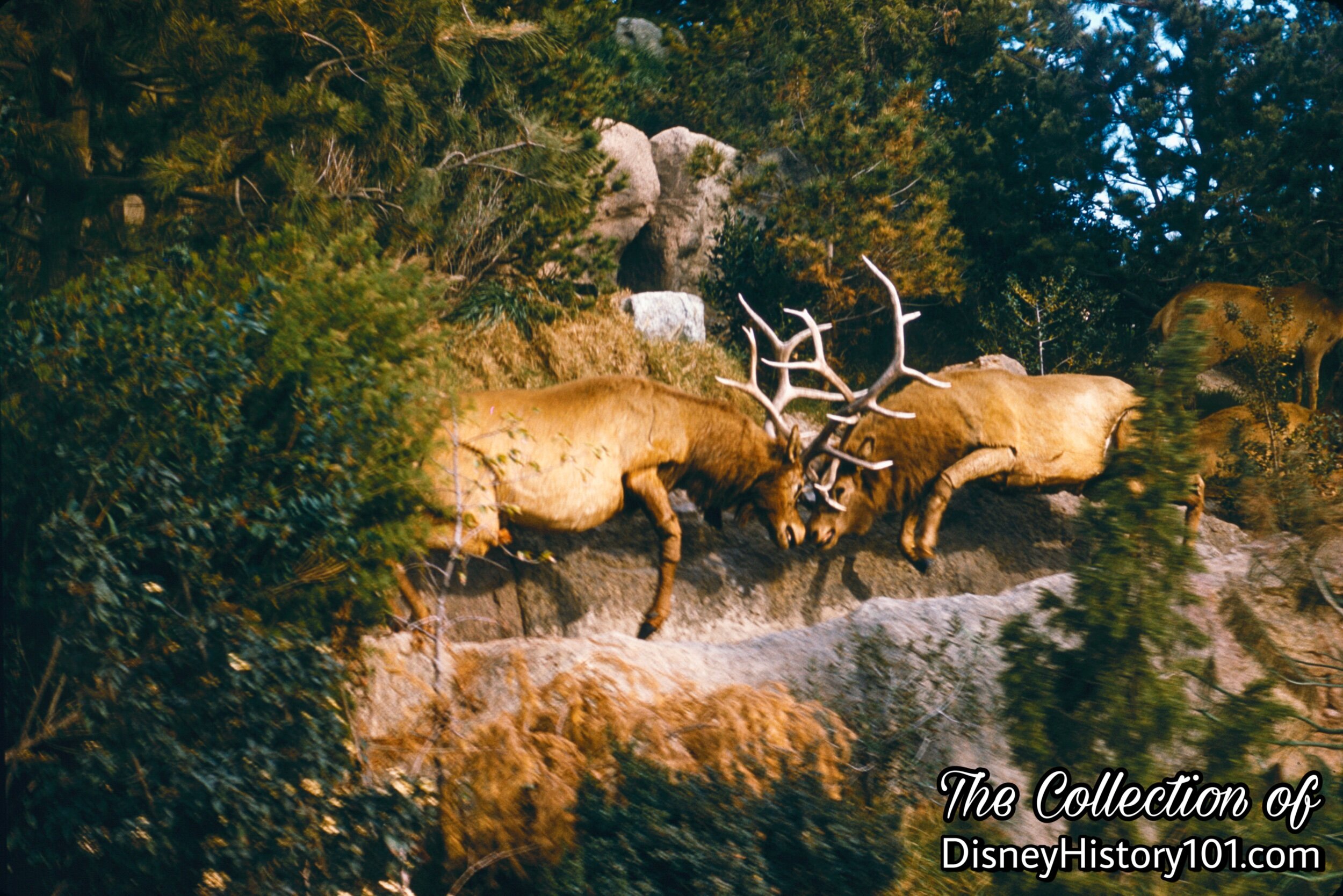
Battling Elk, (1961)
The battling Olympic Elk scene was derived loosely on an exciting scene in the 1952 RKO release The Olympic Elk - a True Life Adventure presented by Walt Disney Studios. Like most films of the True-Life Adventures series, The Olympic Elk “presented the strange facts about the world we live in”, and was directed by James Algar, produced by Ben Sharpsteen, with some script by Winston Hibler and others. Unlike Disneyland’s big show, the films were “photographed in their natural settings” and were “completely authentic, unstated, and unrehearsed” - or, so read the opening dialogue.
True-life Bull Elk maneuver harems of cow elk as they migrate and graze through meadow pastures and mountainsides. Challengers occasionally gather and ambitiously confront the herd of Bull Elk, where they engage in combat, and perchance become antler-locked.
Here at Disneyland, these six animated elk recreate the drama for passengers of mine trains. The Disneyland Welding Department would occasionally perform surgical work on the battling elks.

Deer Family, (December 2nd, 1960)
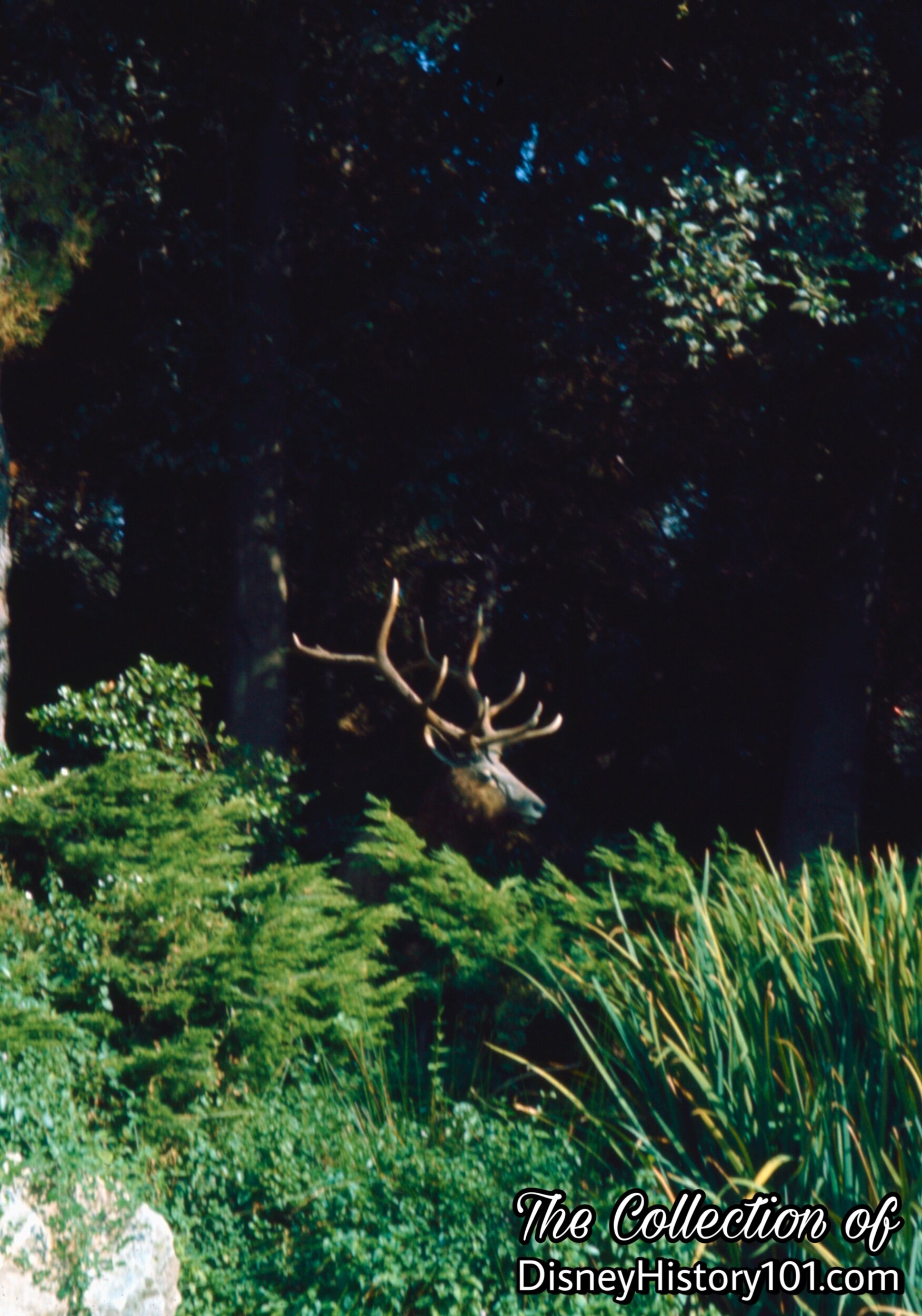
Battling Elk, (1968)
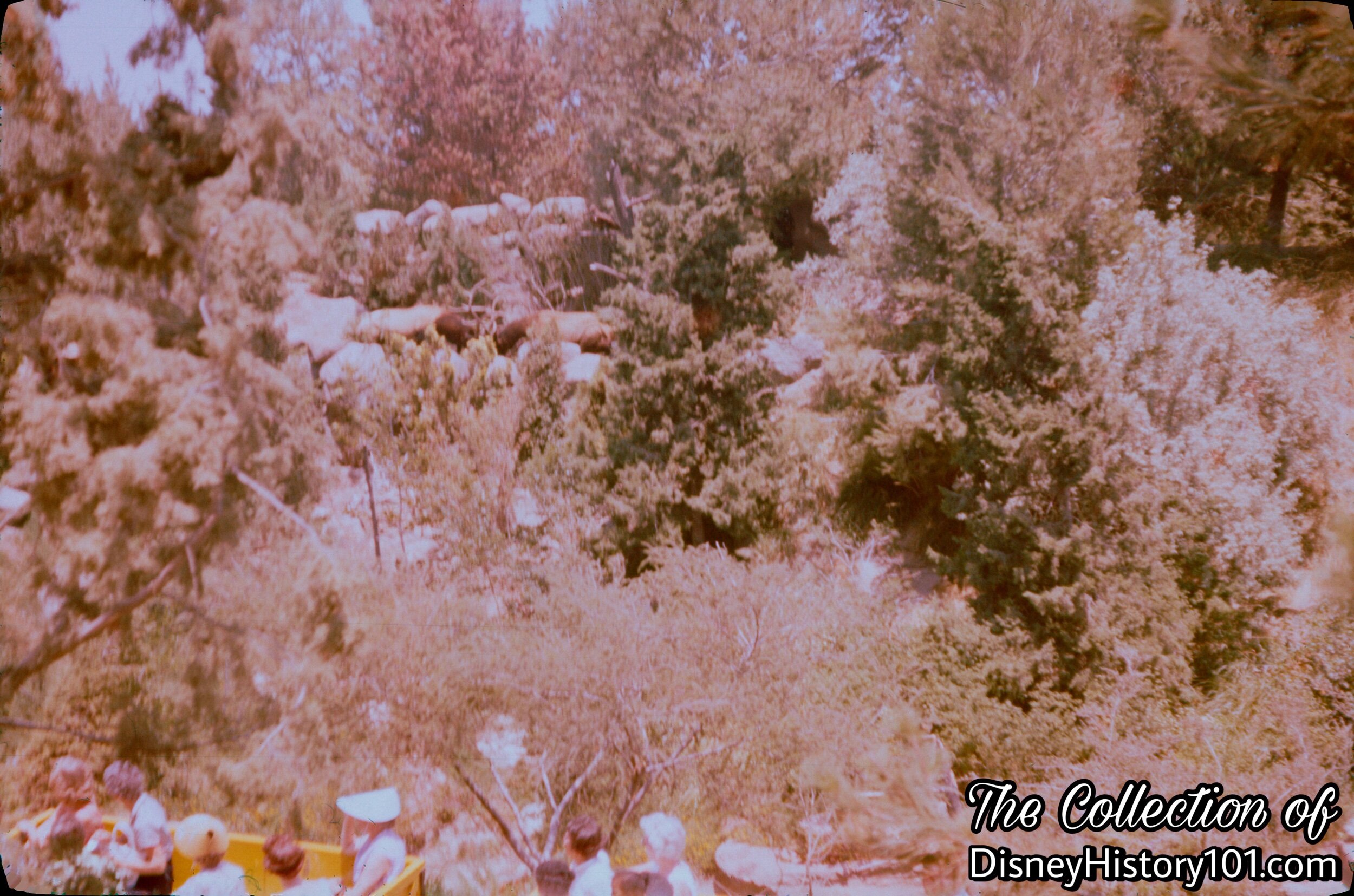
Battling Elk
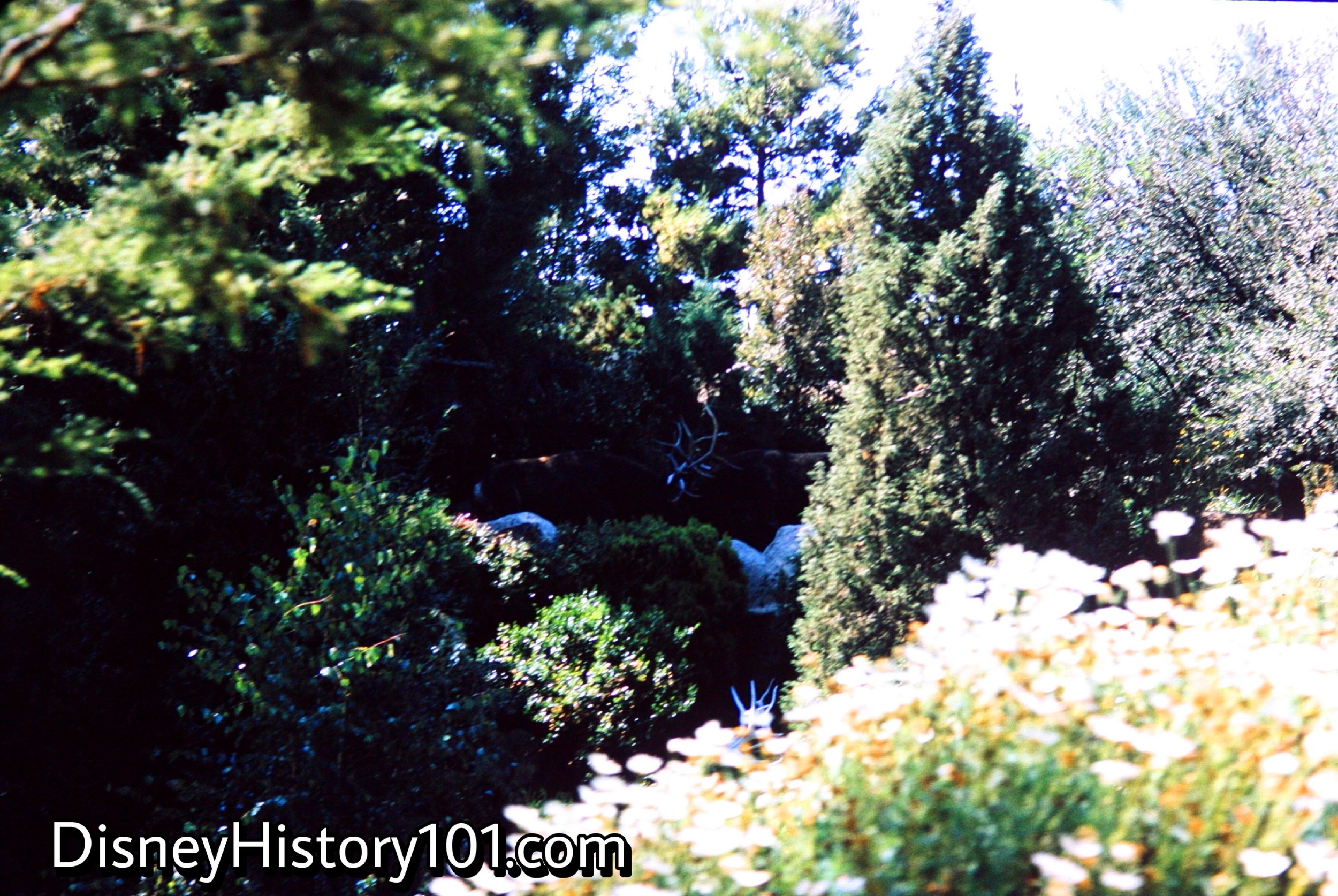
Battling Elk, (August, 1965)
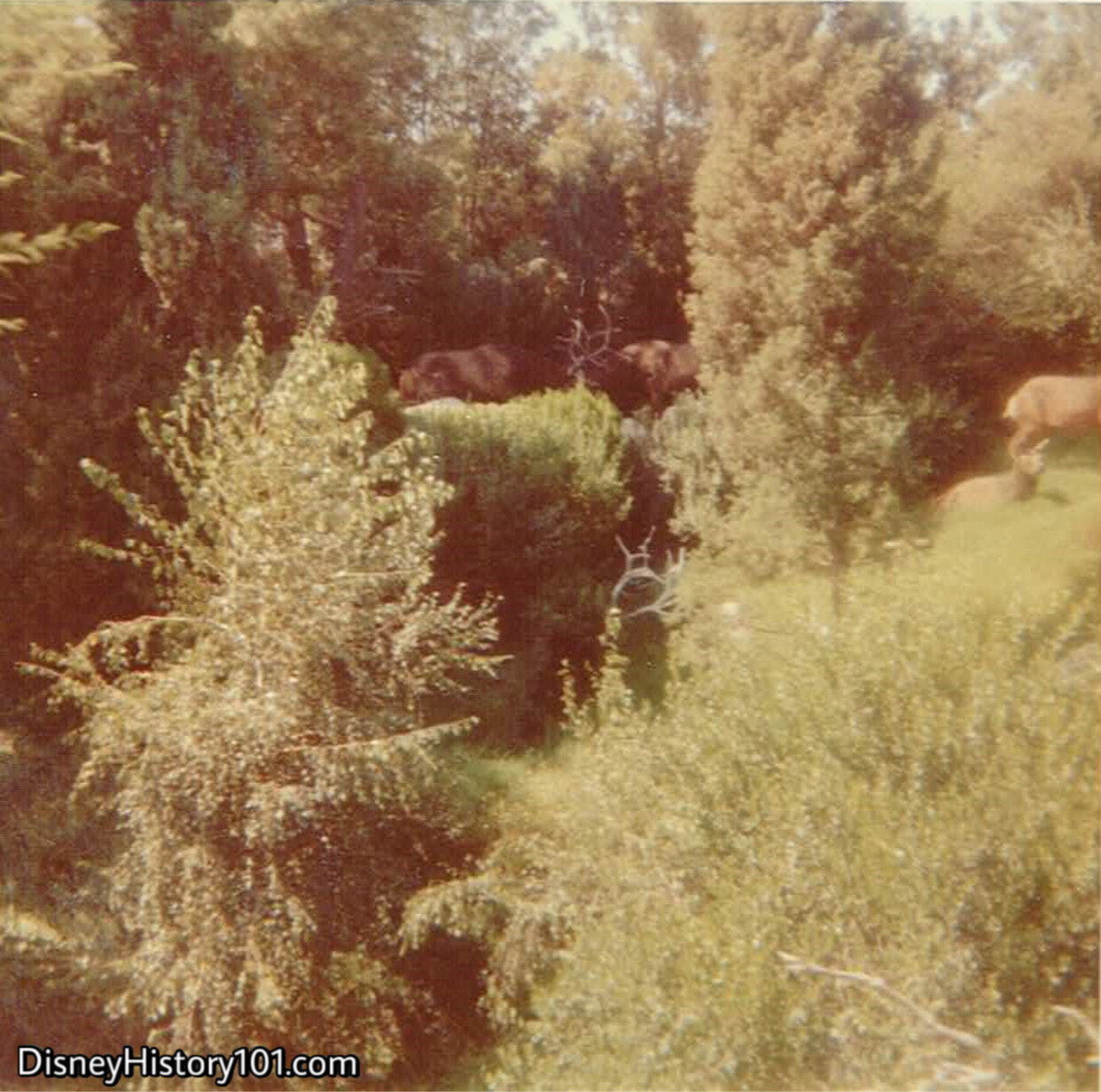
Battling Elk
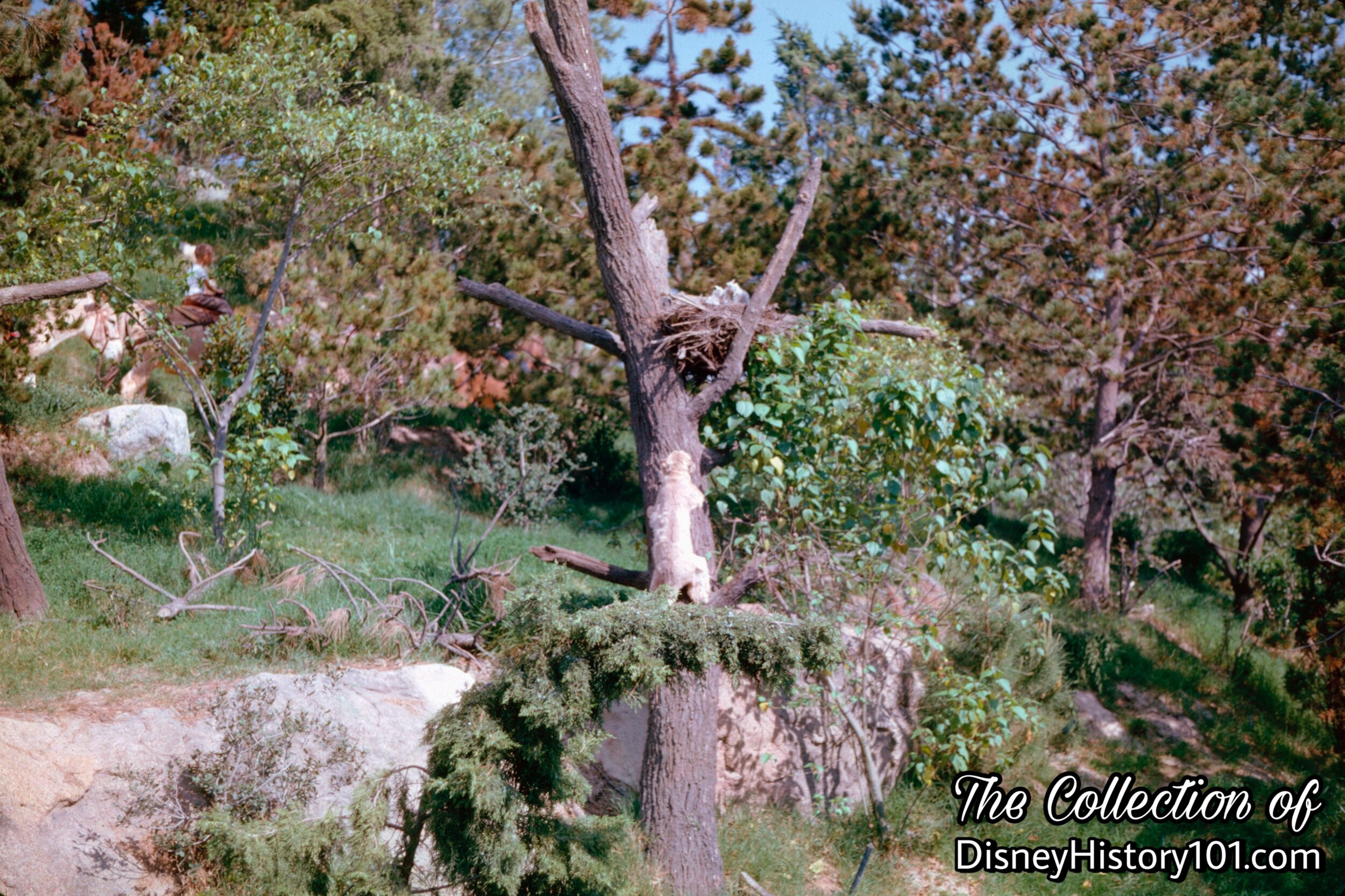
Red Tail Hawks and Bobcat
Ward Kimball would sure agree, that it is “tough to be a bird” in Nature’s Wonderland. A chorus sound of Meadow Larks, Mocking Birds, and Thrush can be heard in the distance as we come upon a sight - a hungry Bobcat attempting to ascend to the nest of a family of Red Tail Hawks!
Disneylander and “55er” John Gerlack recalled: “My job was to WAKE UP' the NATURE'S WONDERLAND birds. You see, their beak's mechanism would get rusty and they couldn't sing very well. I would hold the bird's beak open with one hand and with an eye dropper in the other hand, I would squirt some lubricating oil into the beak. Well, one Sunday, while I was at my bird waking chores, Walt slipped up silently and said, ‘How ya doin, Doc?’”
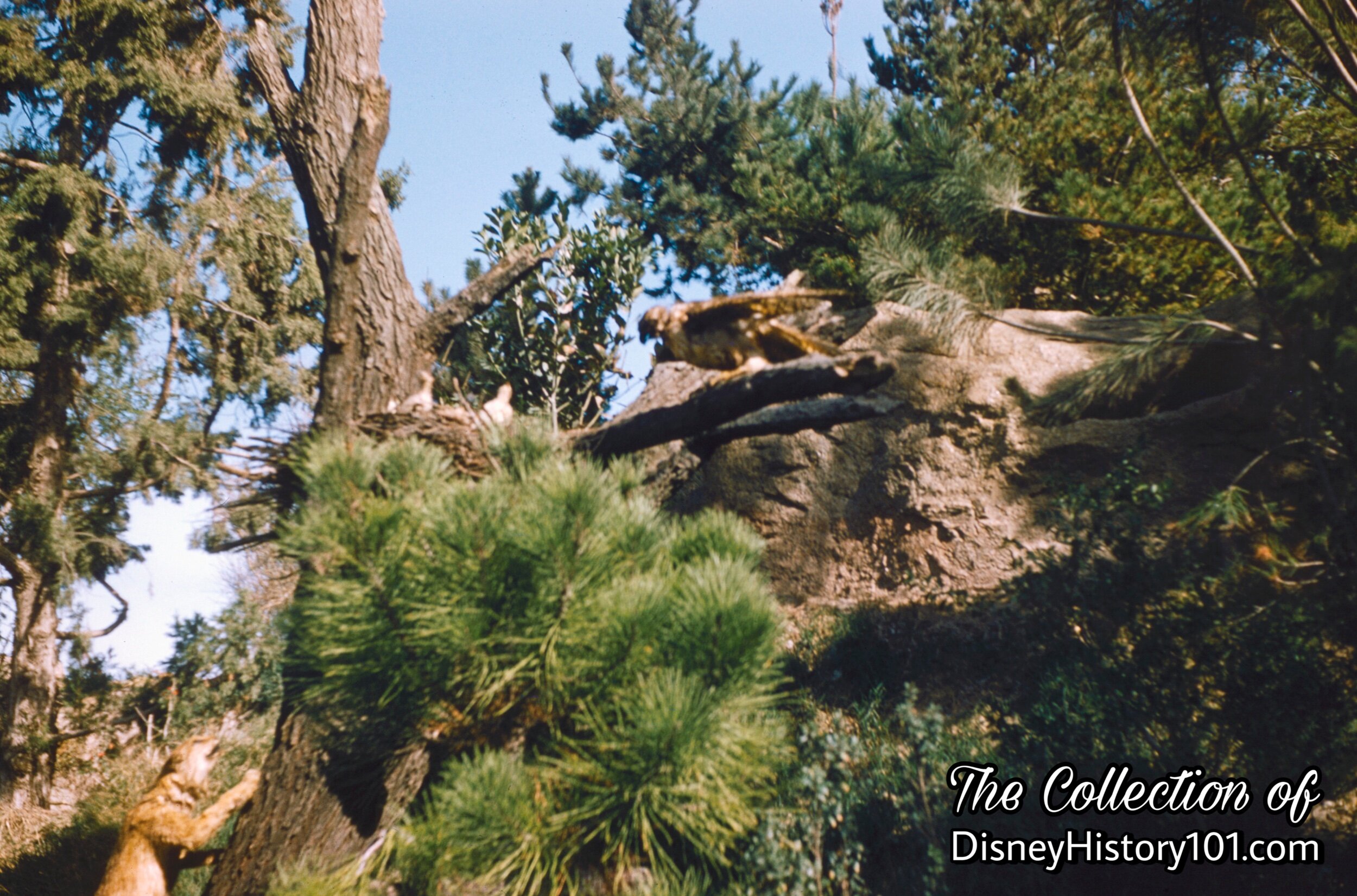
Red Tail Hawks and Bobcat
You may have heard the true-life tale of how the “nest of baby red-tail hawks (animated ones) so confused a mother hawk (real) that she tried to deposit dinner down their throats.” [Walt’s Animation Is Too Successful, Associated Press]
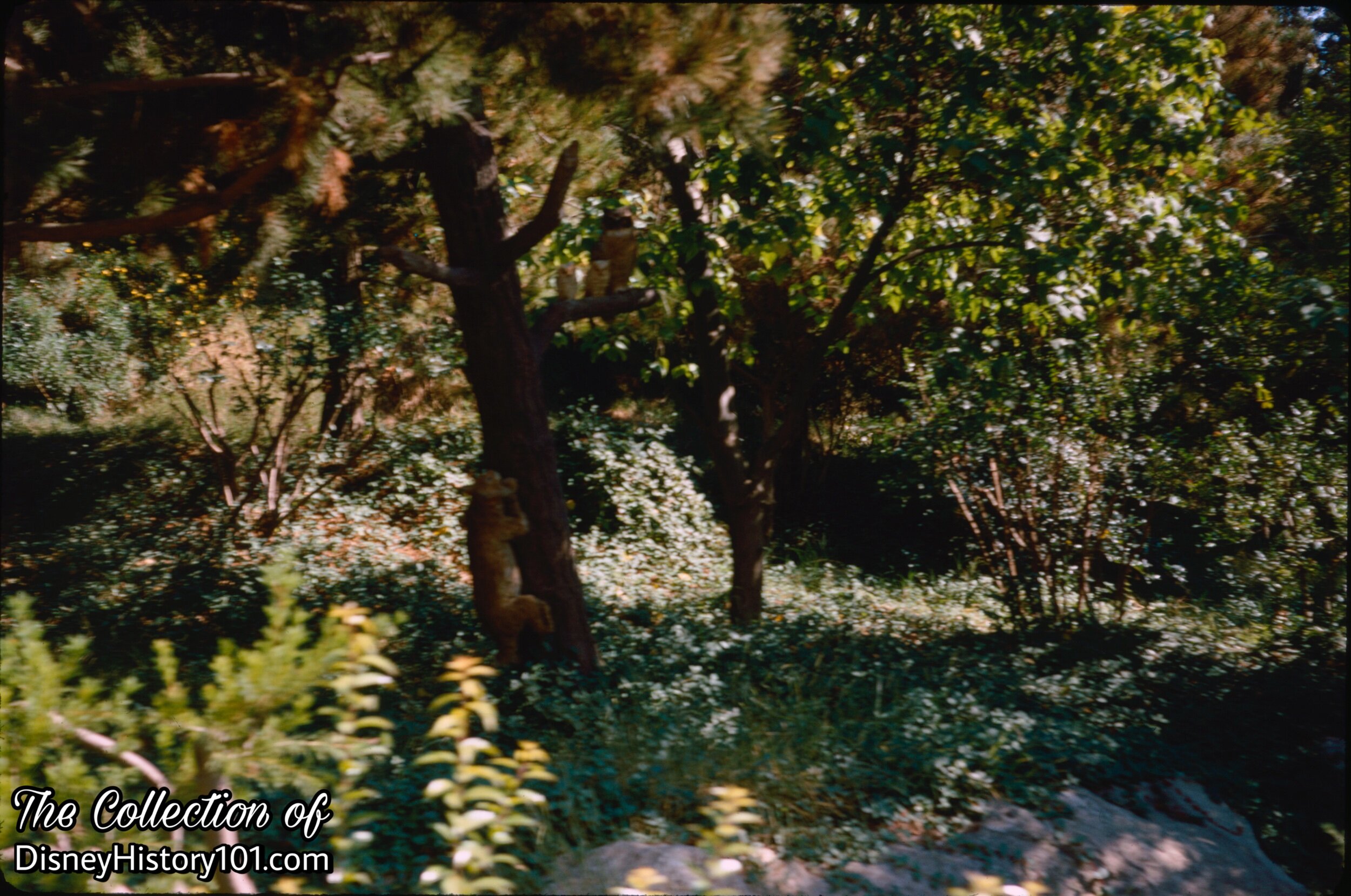
Owls and Bobcat, (November 2, 1969)
Not every animal character had a name, so I’ve decided to call the large bird “Hootsie the Owl.” You may have also heard another true-life account of how “Hootsie” and other owls around Nature’s Wonderland were “being pecked into the repair shops by frustrated but real crows and blackbirds.” This sort of thing was happening as far back as 1964, according to “Walt Disney Disneyland,” page 44, printed by Officine Grafiche Arnoldo Mondadori - Verona; first published 1964. It’s a fact that the Blackbirds have also been known to attack animated ravens around these Frontier parts. [Walt’s Animation Is Too Successful, Associated Press]
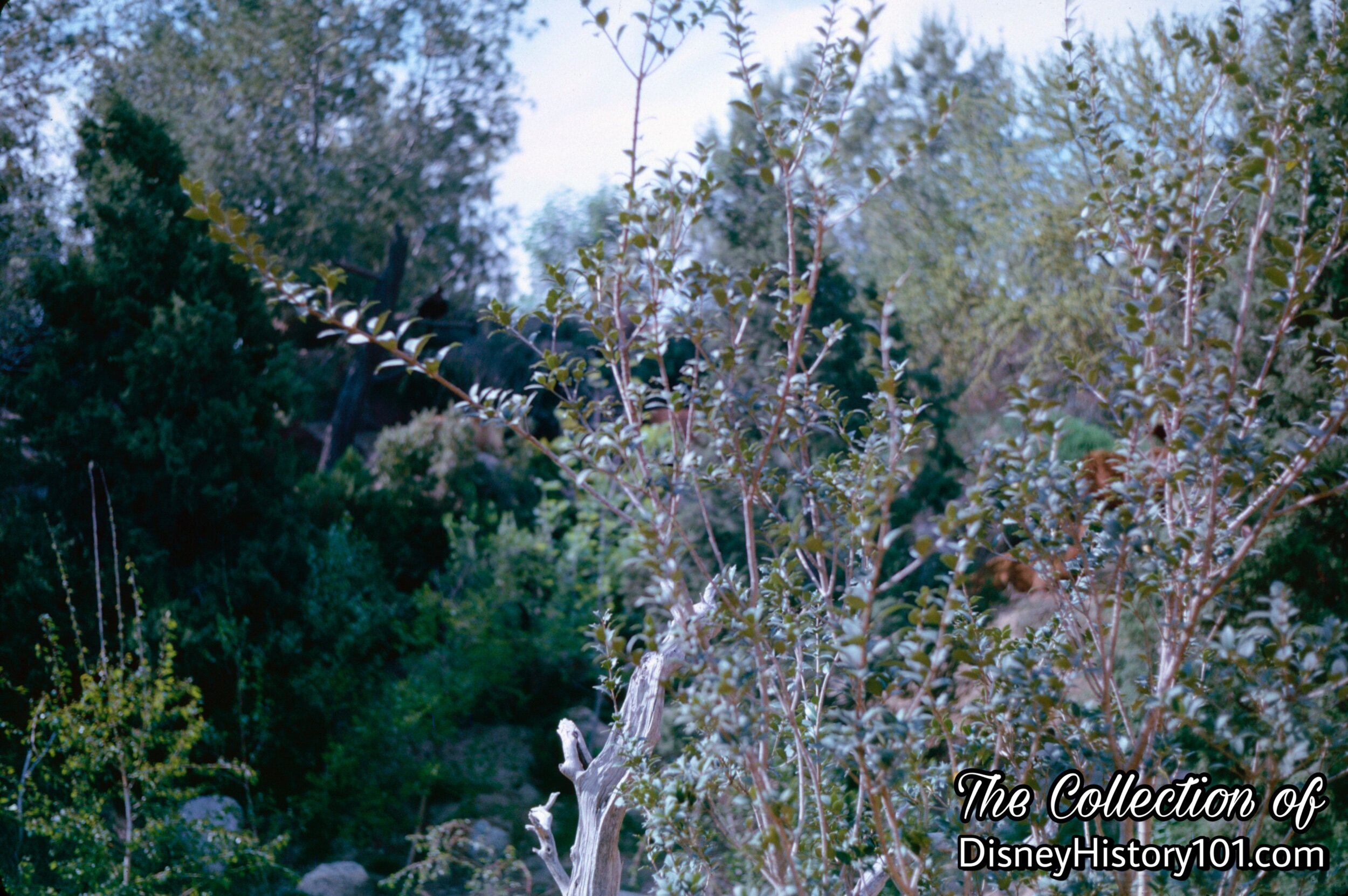
Bear Country
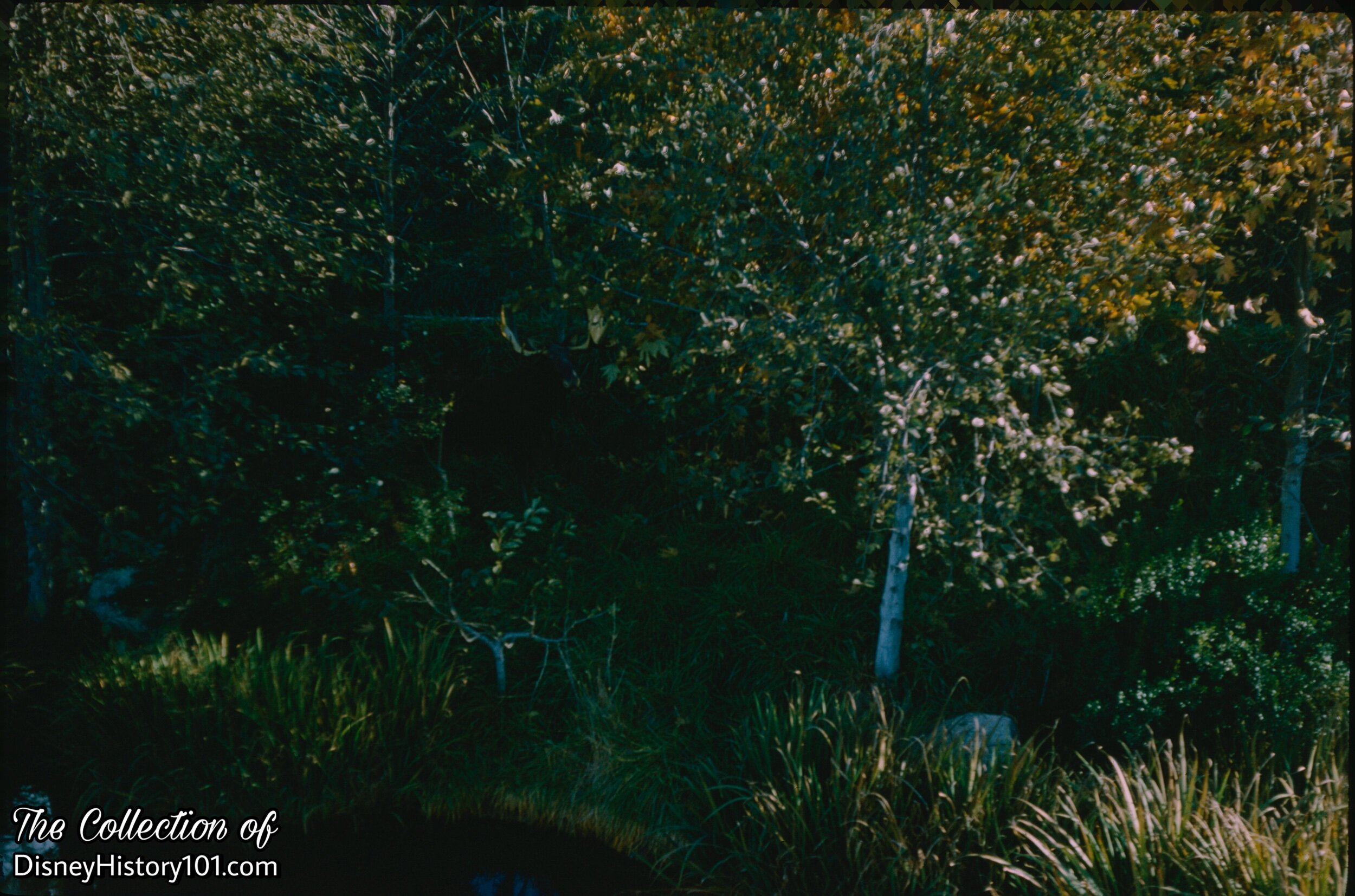
Bear Country, (December 2, 1960)
Moose in thicket.
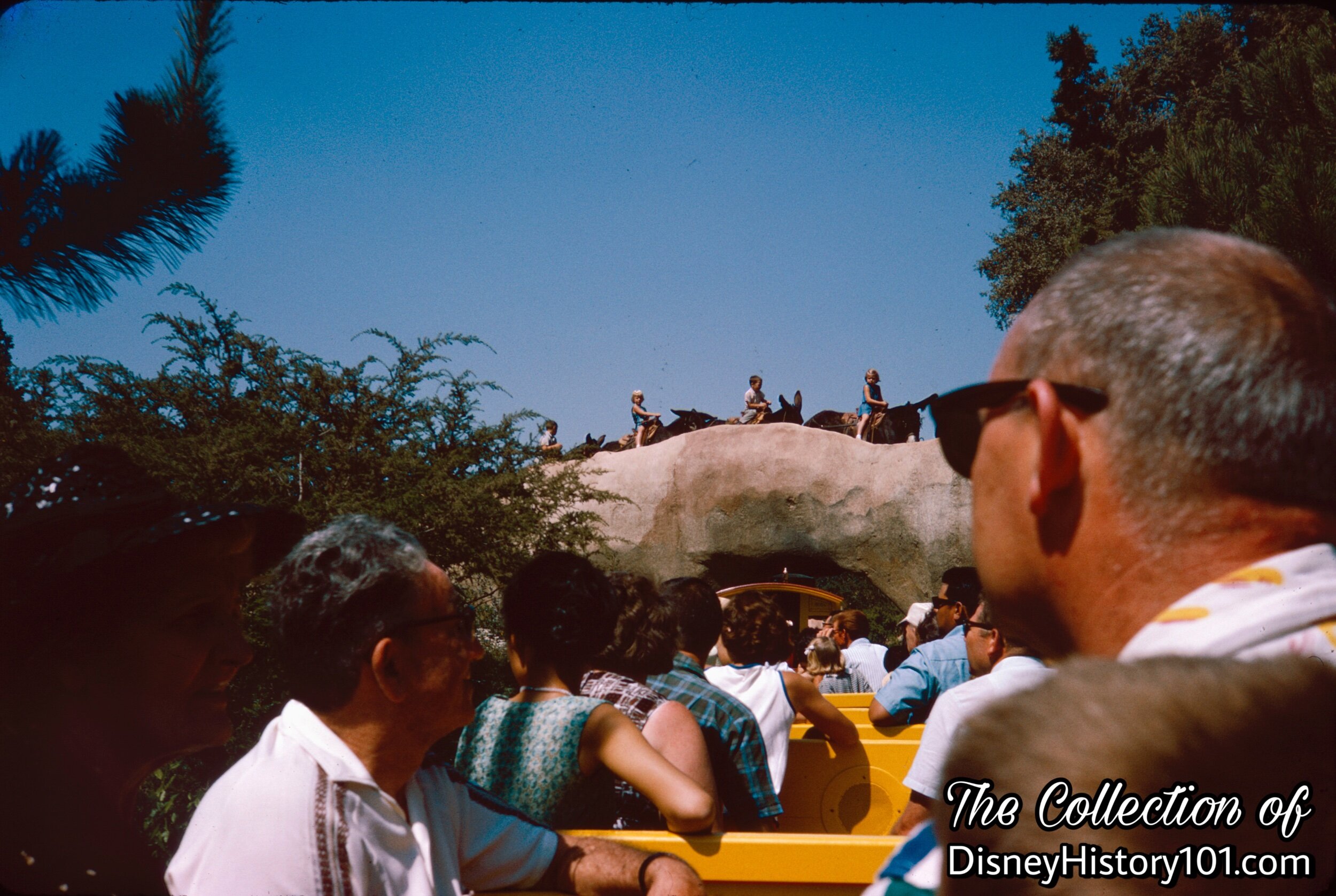
Natural Stone Arch Bridge, (August, 1965)
As we pass through ol’ Natural Arch Bridge, a passing Mule Train looks upon the great Living Desert down below. As we pass through Natural Arch Bridge, we’ll refrain from blowing our whistle or ringing the bell of the engine. We also ask our guests to maintain their silence. The reason, is so as not to disturb the mule train crossing overhead.
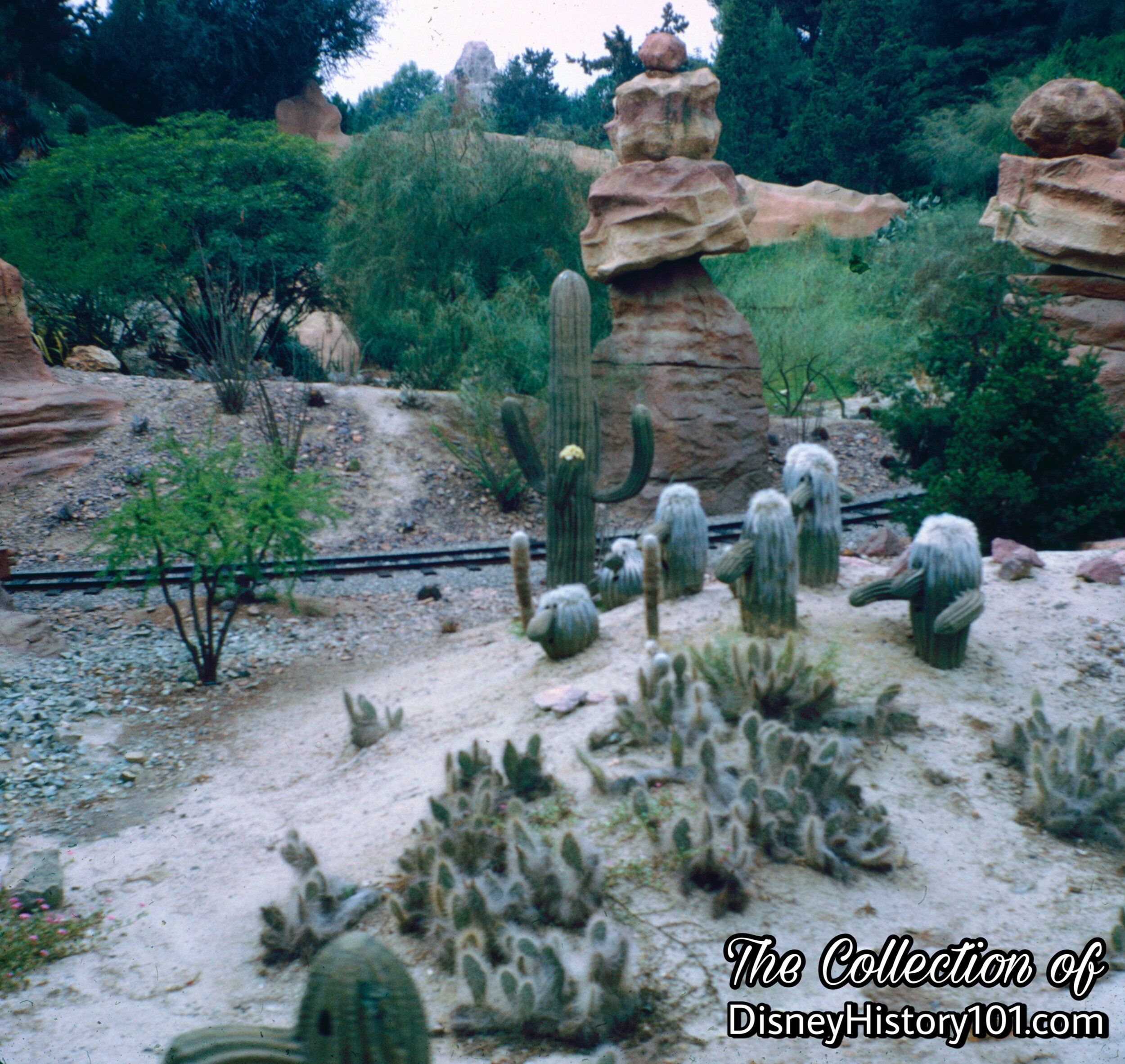
"The Seven Dwarfs"
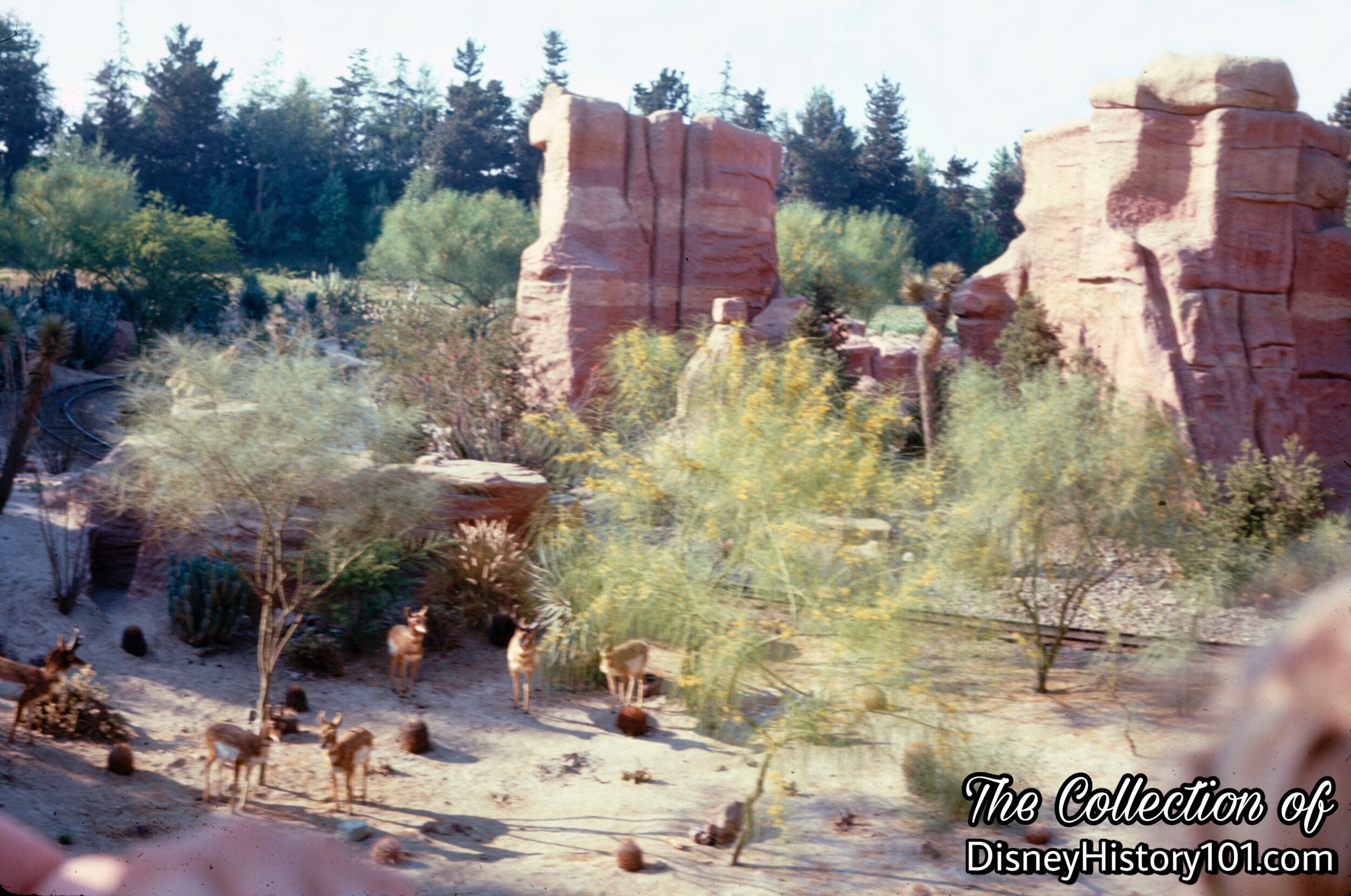
Prong Horn Antelope and Desert Deer
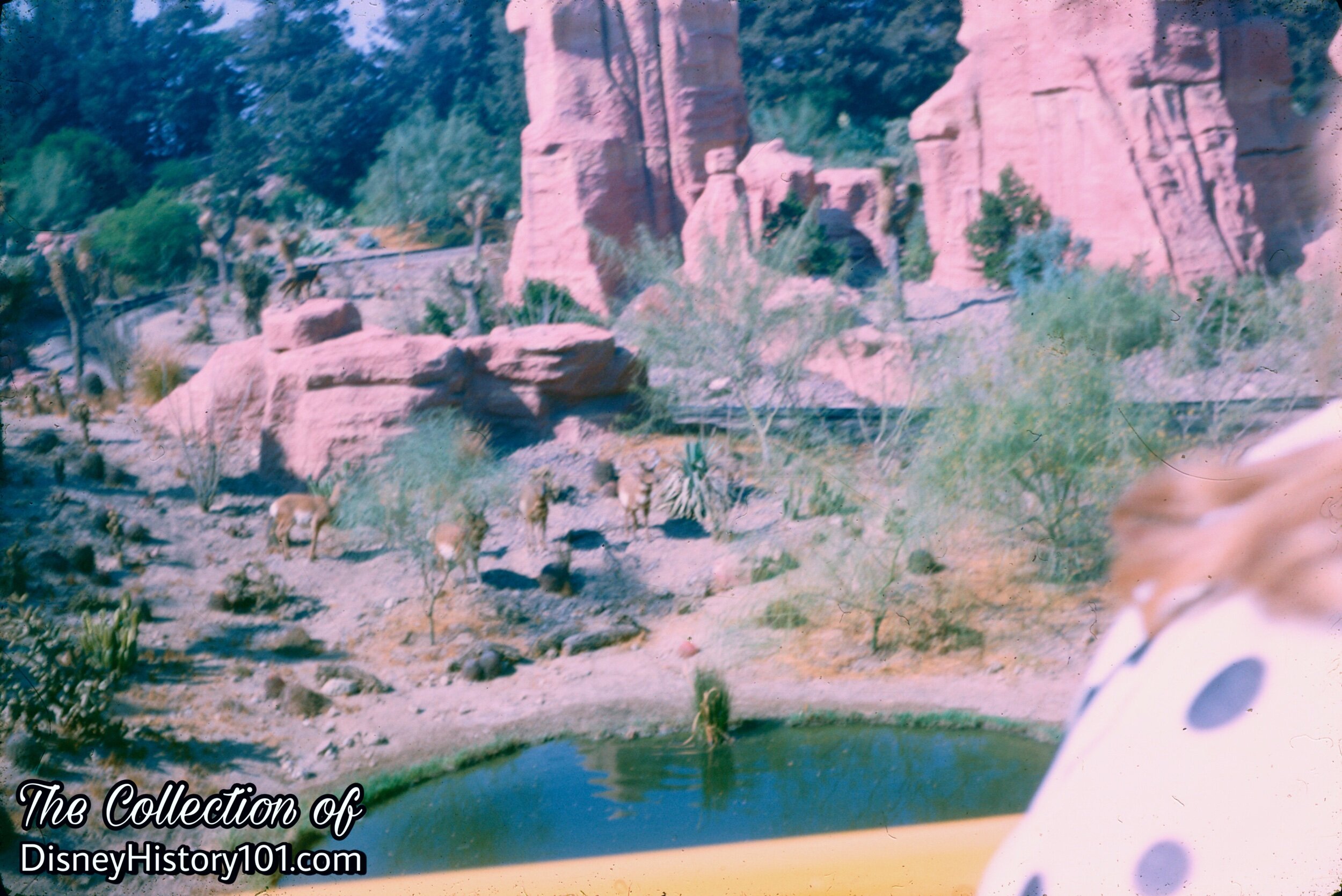
Prong Horn Antelope, Desert Deer, and Howling Coyote at Desert Pond, (November, 1964)
Y’know, the desert’s a dry place, and full of some pretty mean varmints. It looks as if a herd of Pronghorn Antelope have made their way toward Desert Pond - a water source in the Living Desert! But, they’re being followed.
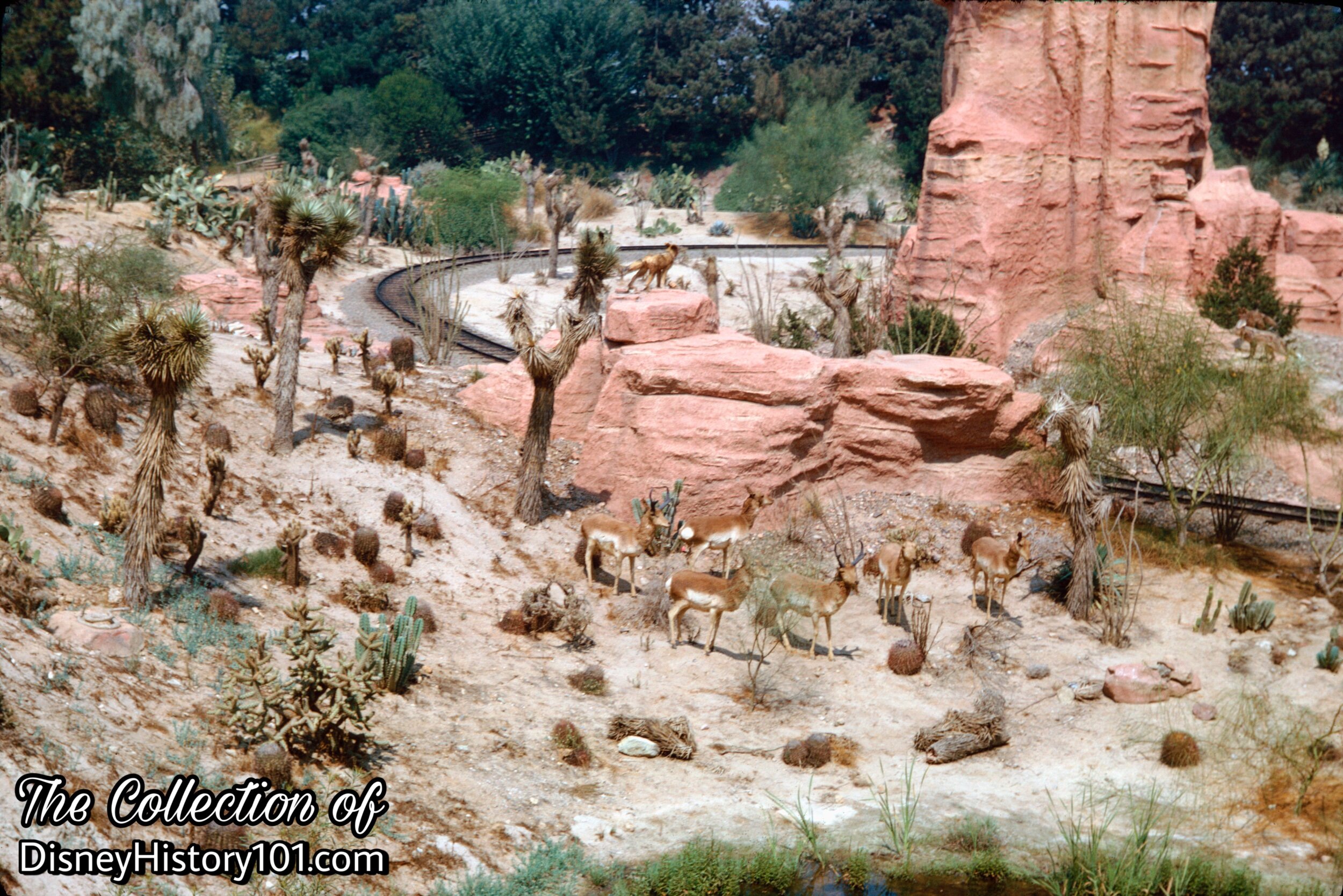
Prong Horn Antelope and Desert Deer

Prong Horn Antelope, Desert Deer, and Howling Coyote, (April, 1968)
“But the desert’s got her beauty too! The yeller streaks runnin’ through them sandstone cliffs are called Coconino. The red we call them supai.”

The Living Desert, (1960)
“A Living Desert must, in truth, appear as a living desert”, reads the forward of Disneyland World of Flowers (published 1965), by Morgan Evans. This area of the Painted Desert was modeled after the American Southwest with reddish rock, sandy plateaus, cactus, and Joshua Trees.
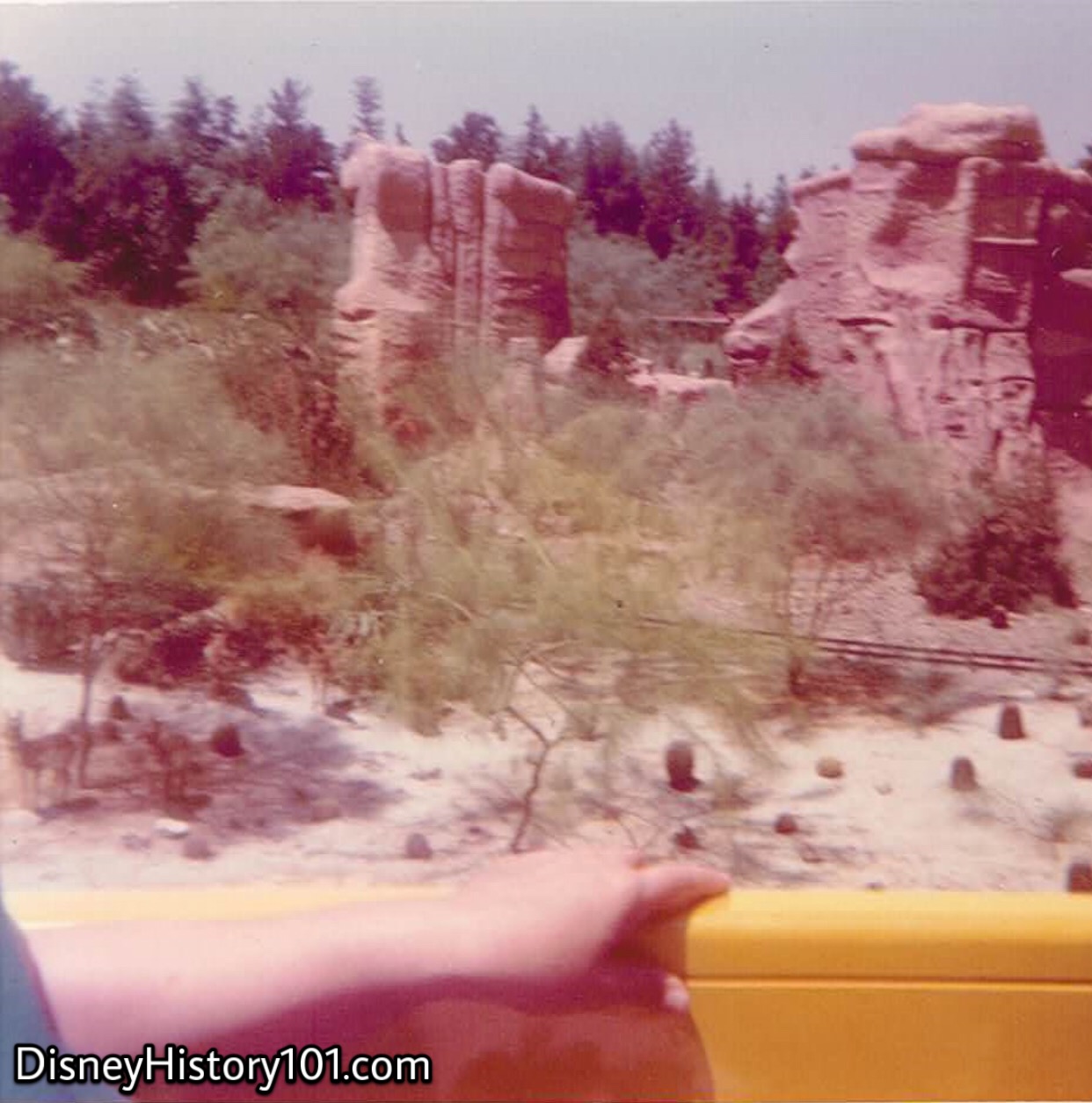
The Living Desert, (1972)
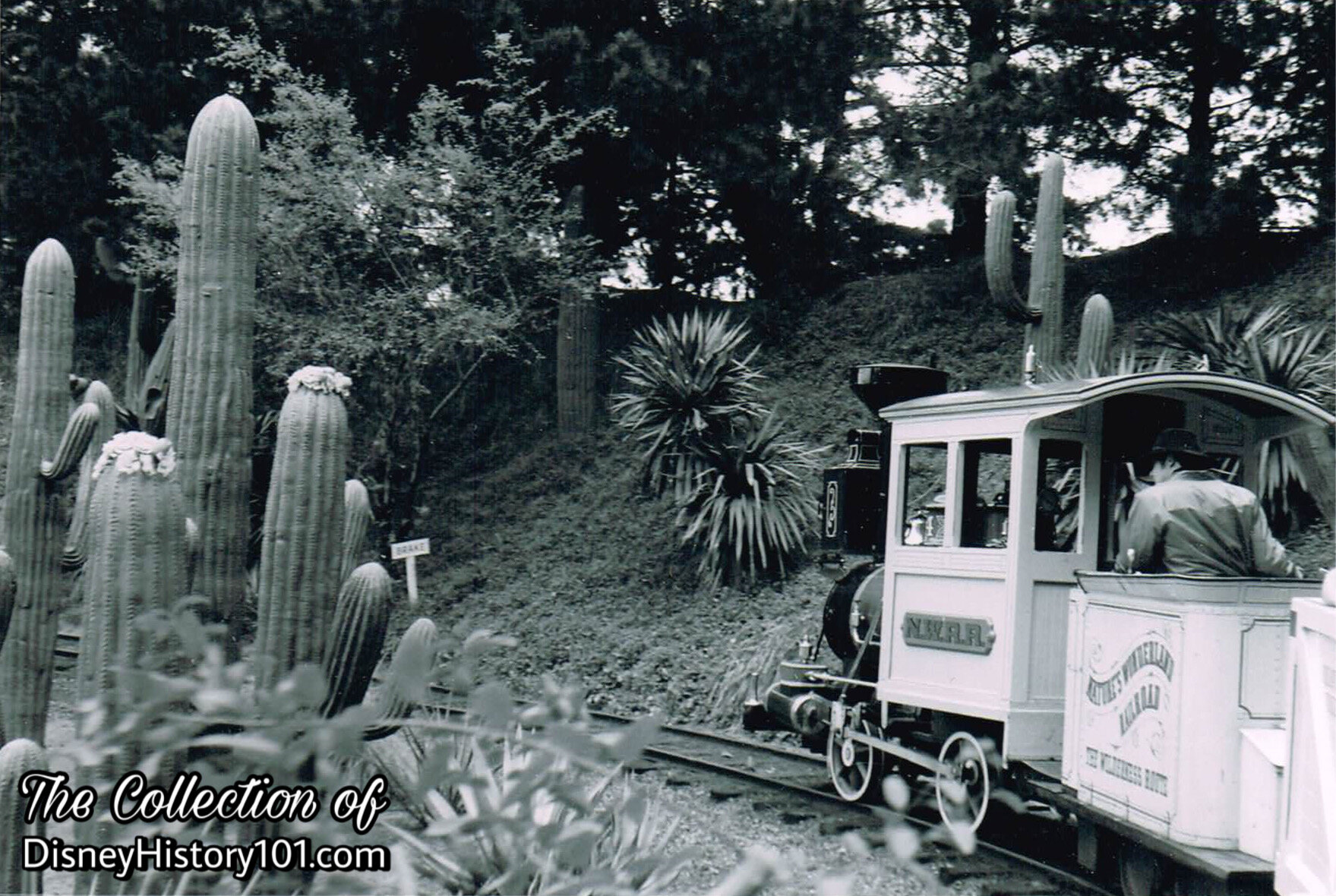
Saguaro Castus Forest
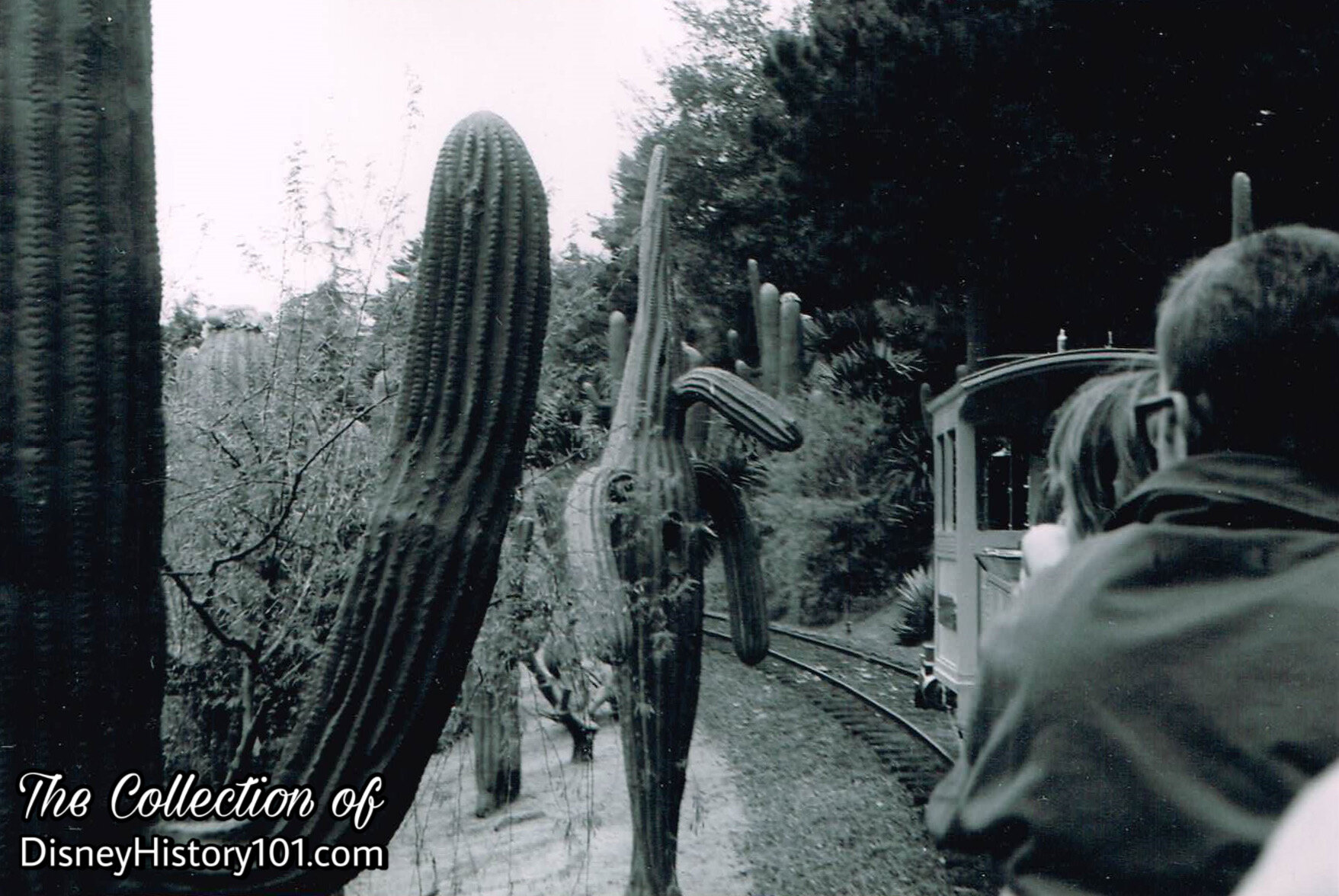
Saguaro Castus Forest
“The desert heat sometimes gets to ya, and makes these here cactus take on strange shapes like animals and sometimes even people.”
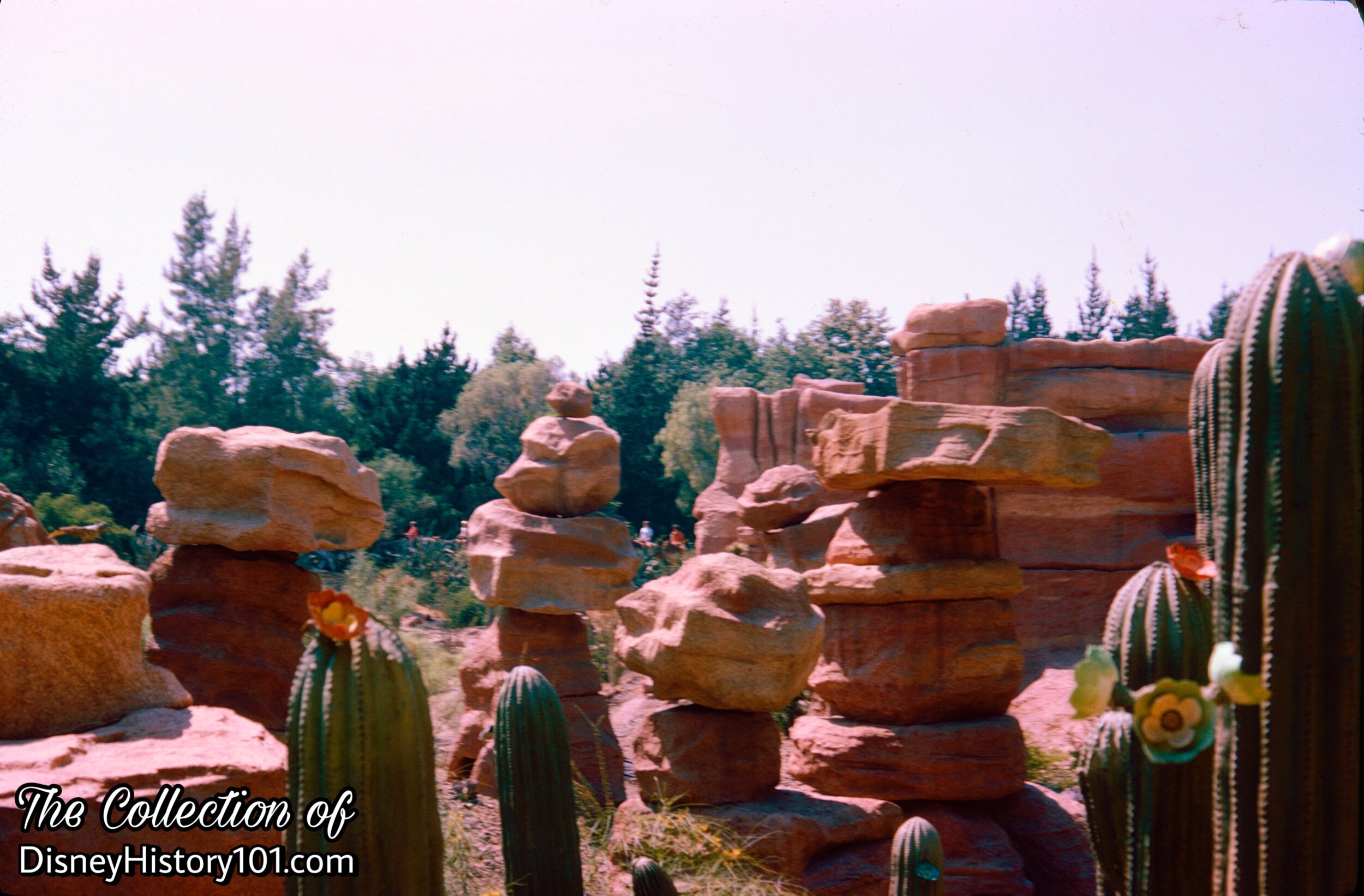
“The Desert Blooms” of the Saguaro Cactus Forest, (August, 1965)
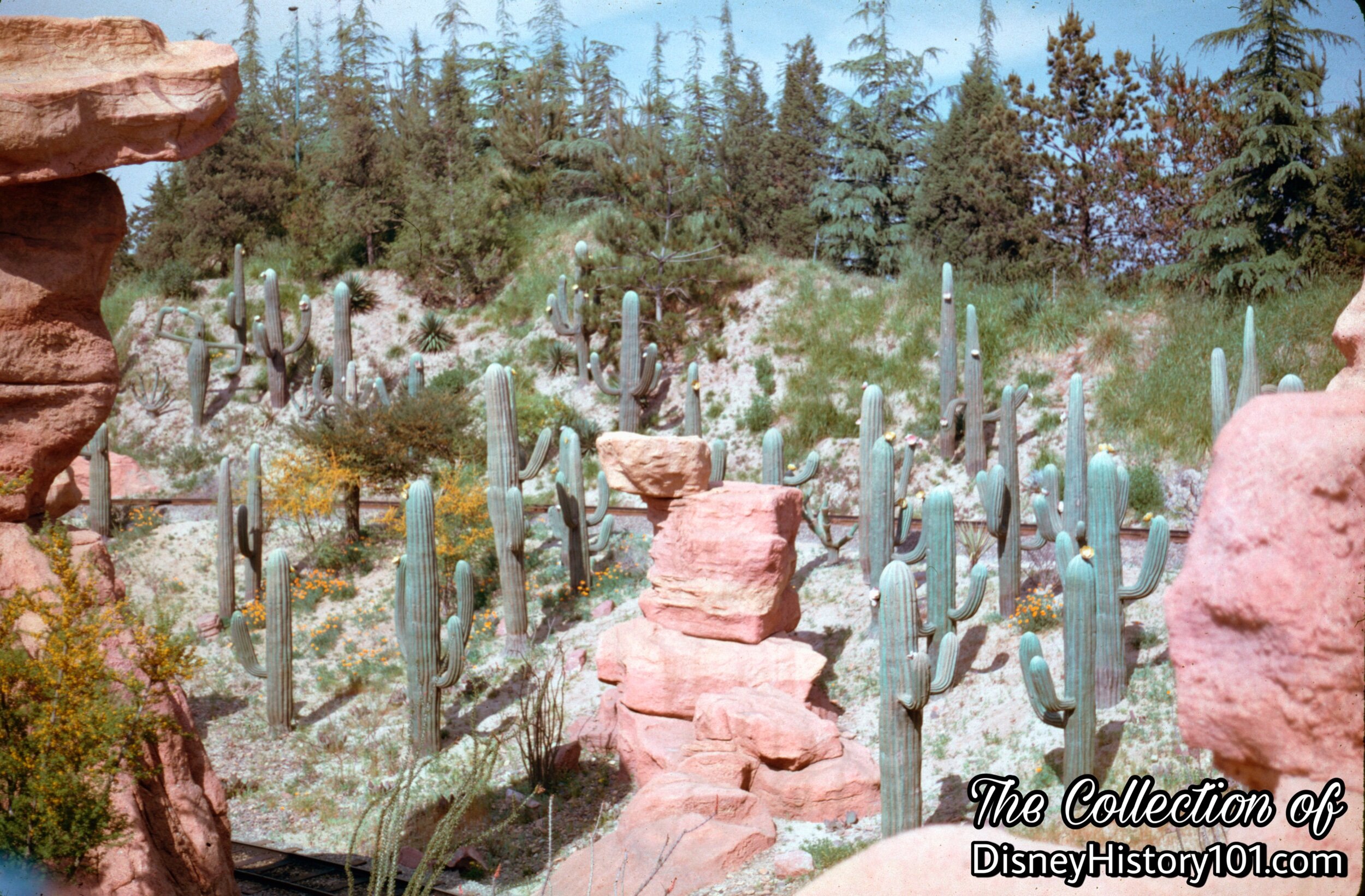
Saguaro Cactus Forest
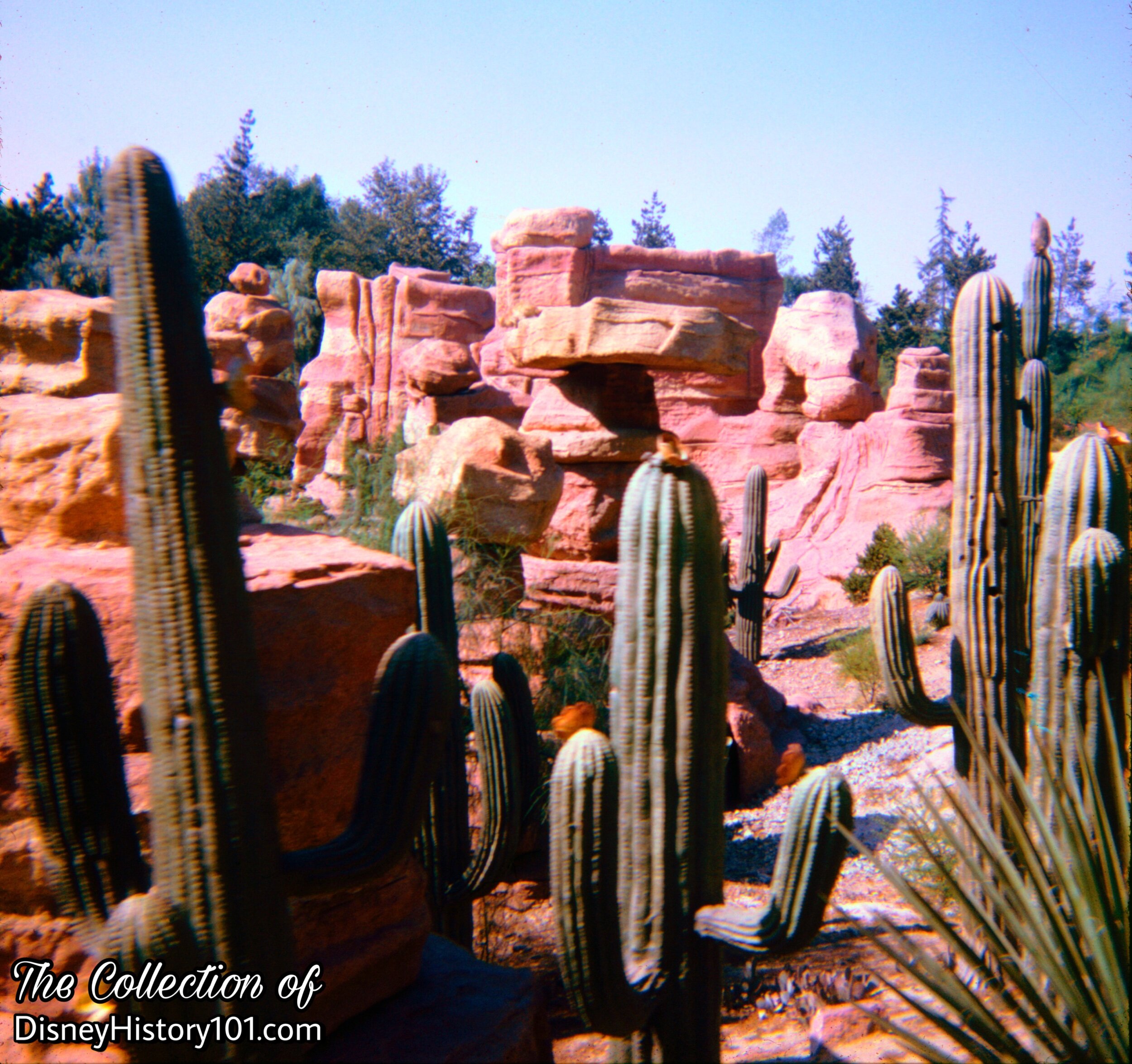
Saguaro Cactus Forest, (August, 1967)
“Now ahead of us folks, is a Giant Saguaro Cactus Forest!”
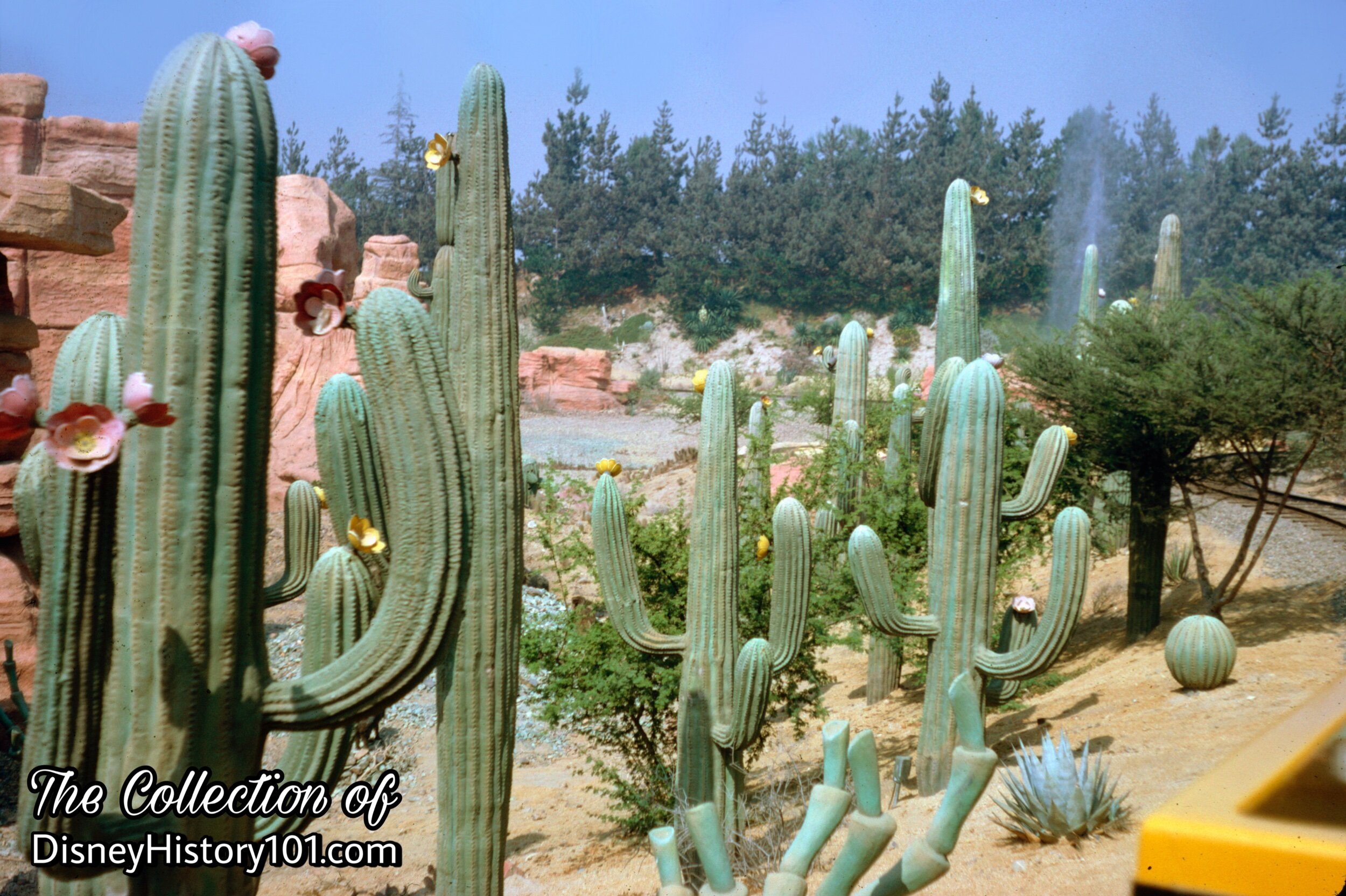
Saguaro Cactus Forest, (1961)
These colorful desert blooms stay fresh all year round!
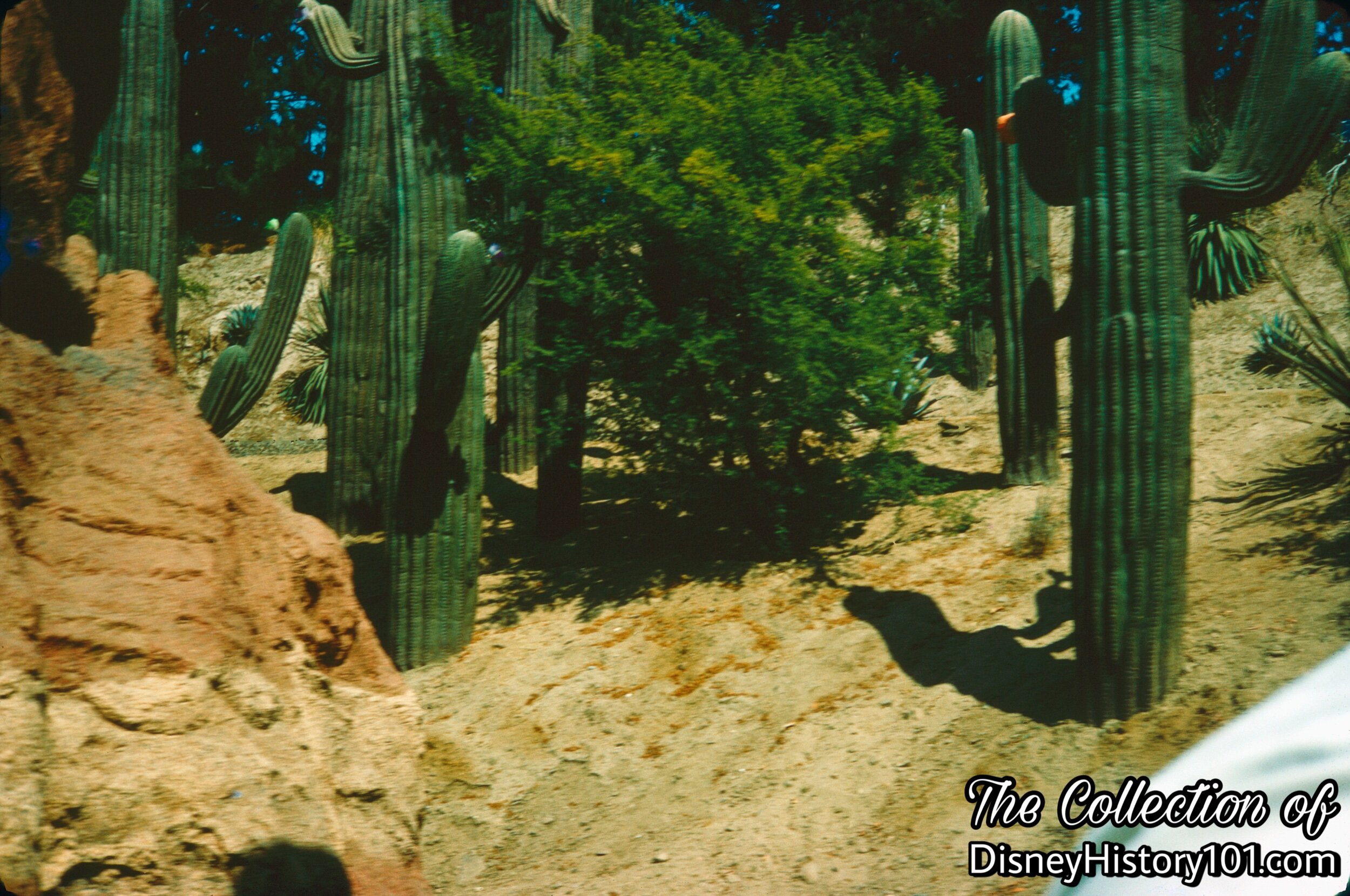
Saguaro Castus Forest & Woodpecker, (August, 1965)
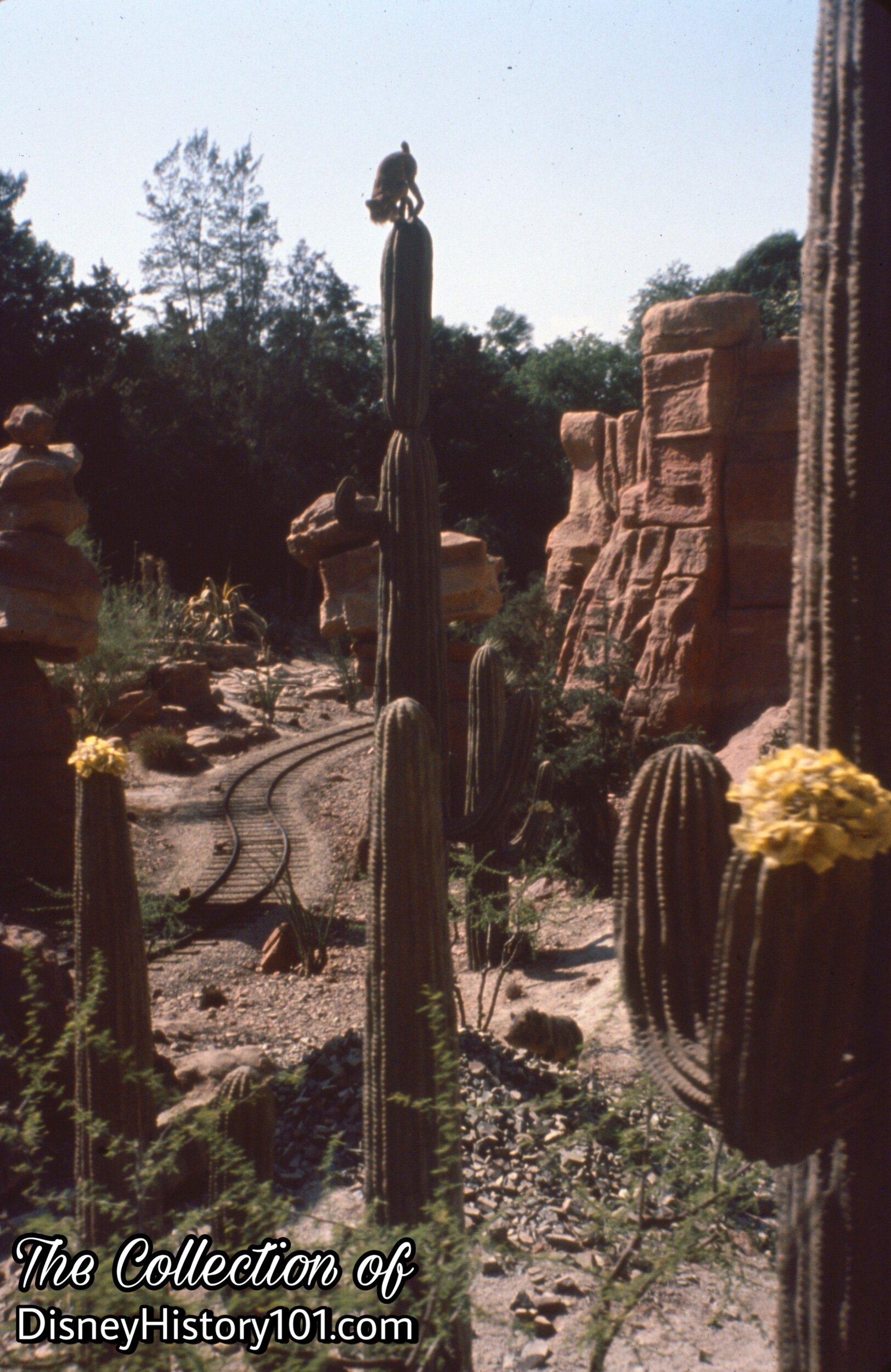
Treed Bobcat & Saguaro Cactus Forest
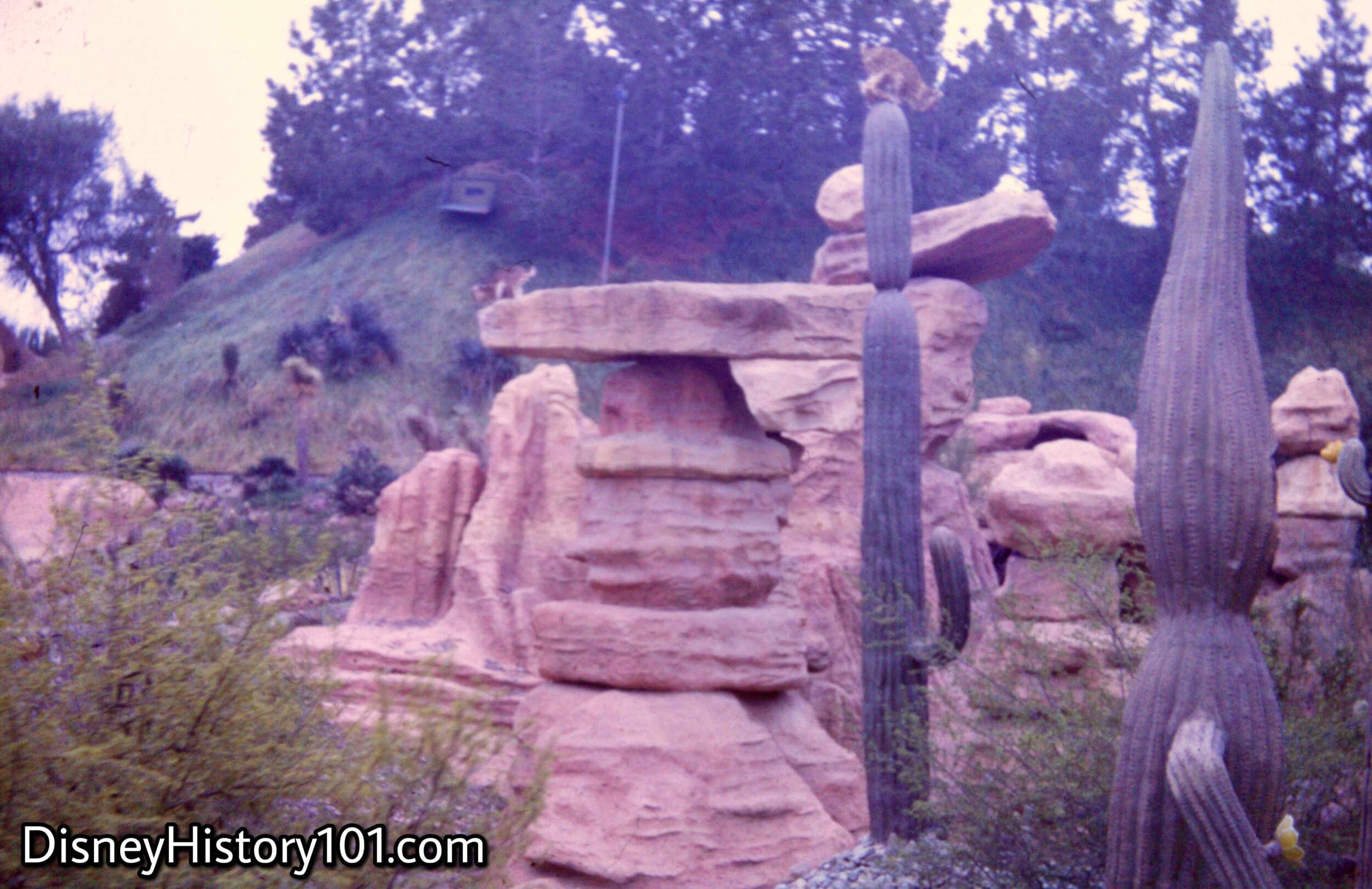
Saguaro Castus Forest, Balancing Rocks & Treed Bobcats, (1964)
This scene of a tweed bobcat atop a cactus was taken from Walt Disney’s Academy Award-winning “The Living Desert”.
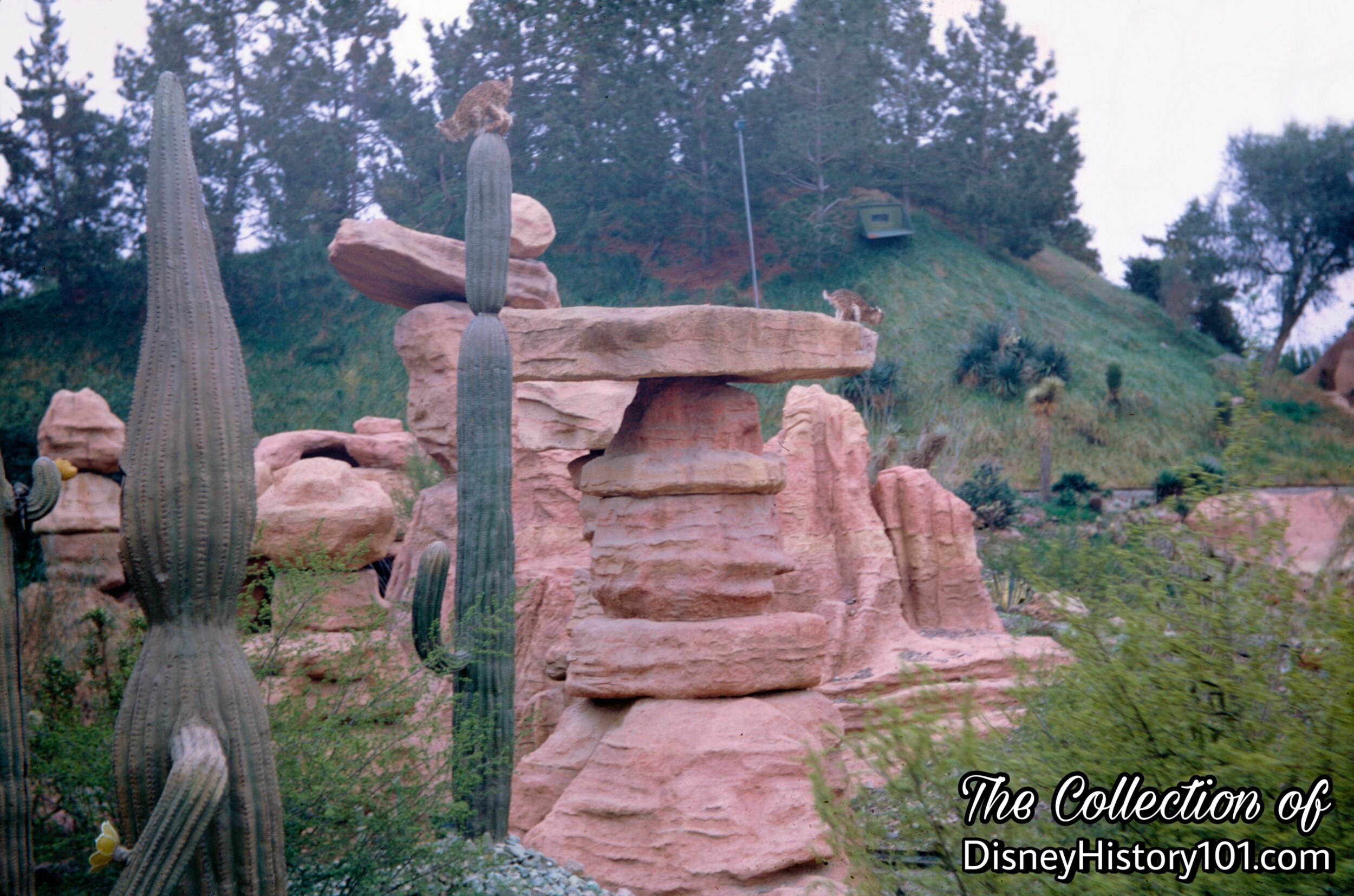
Treed Bobcats
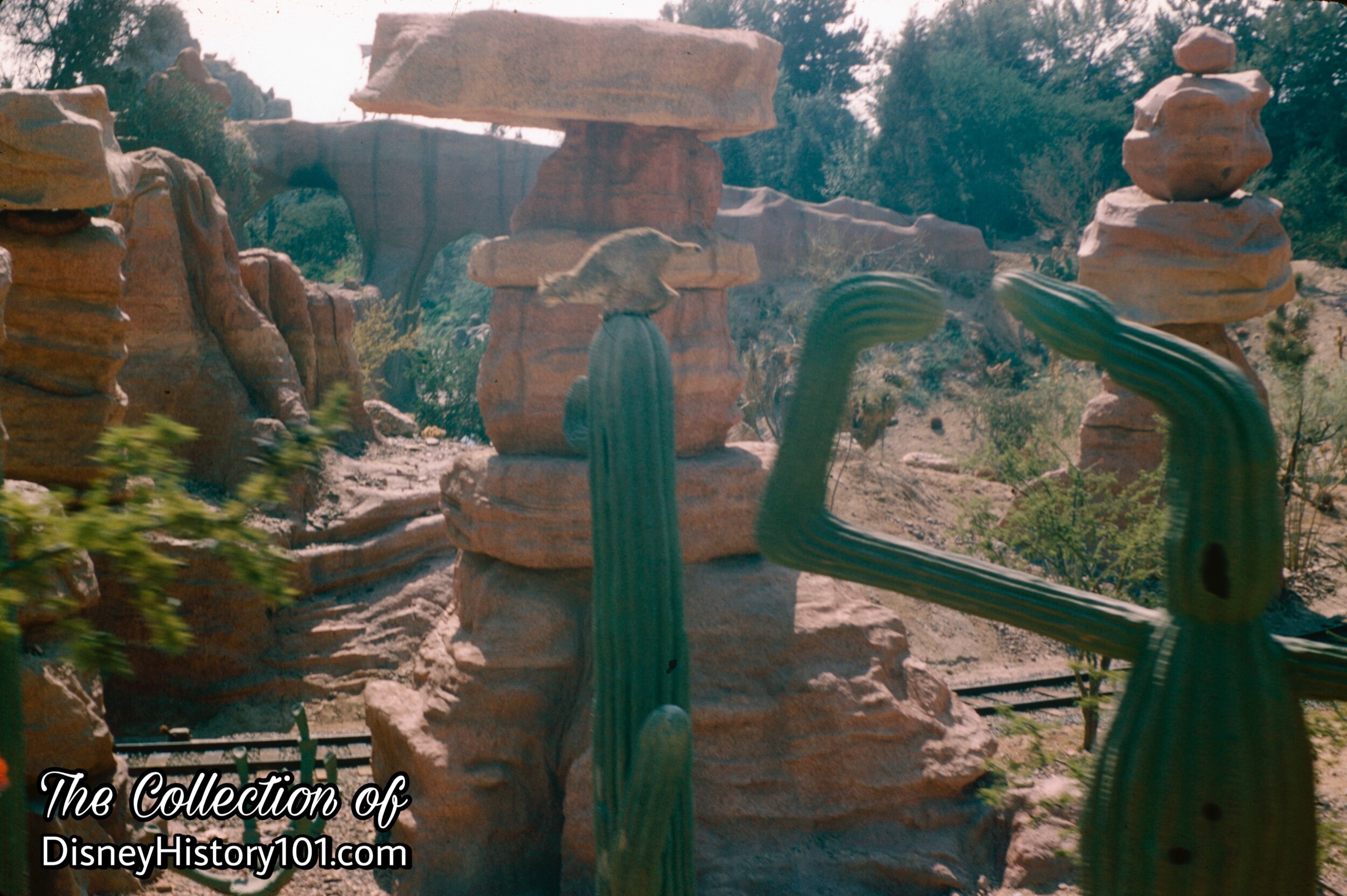
Treed Bobcat on Cactus
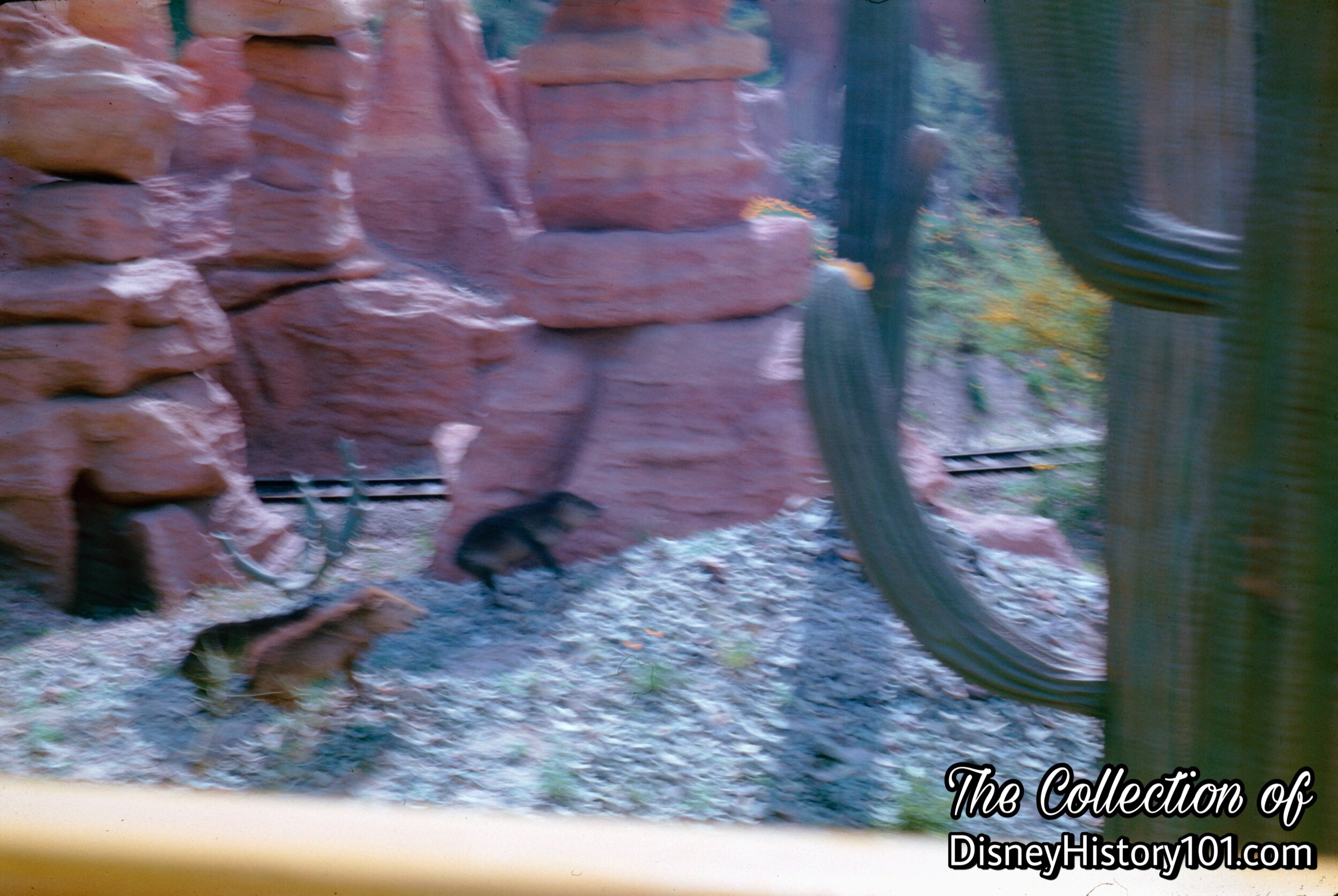
Peccary
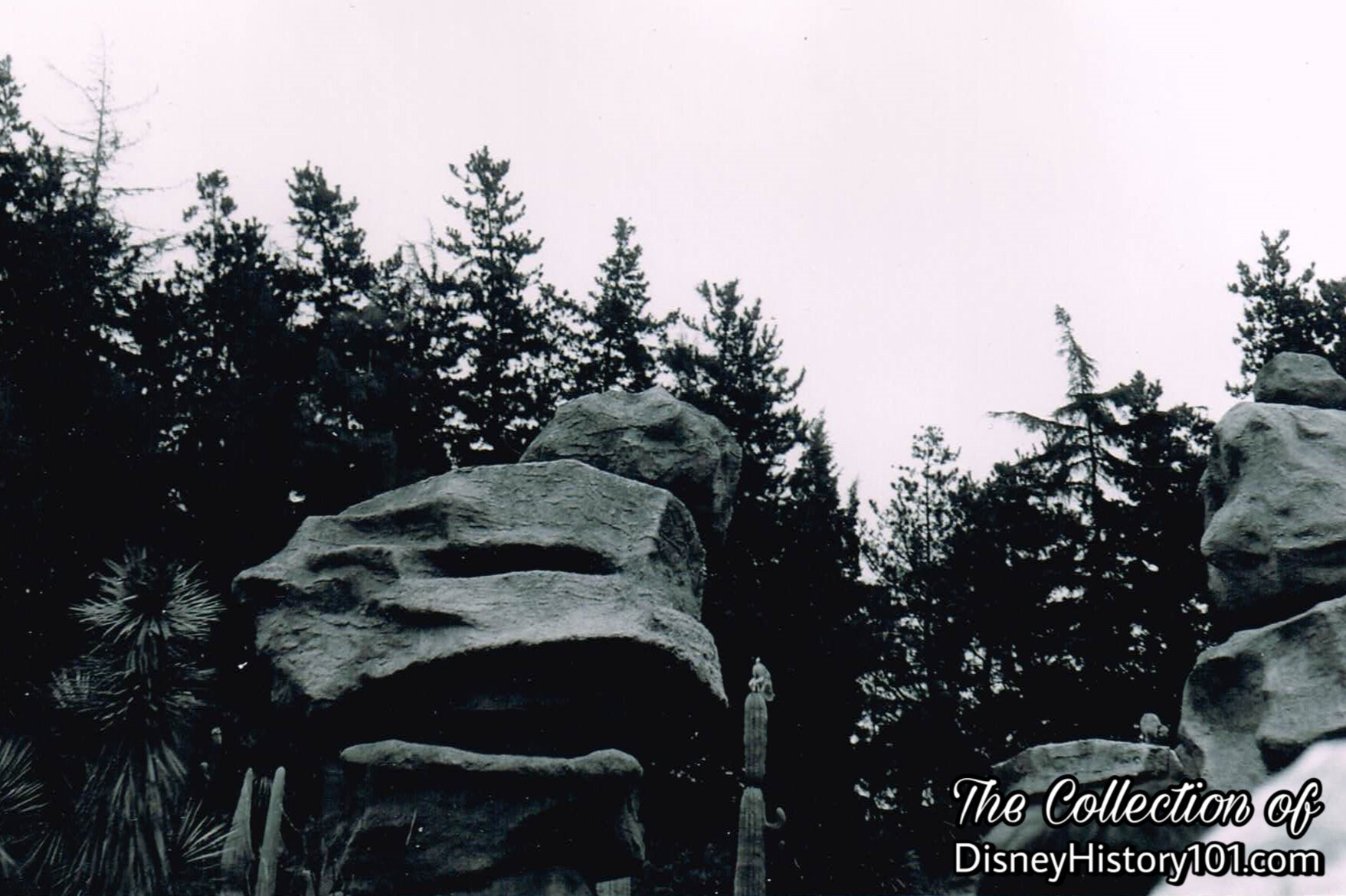
Balancing Rocks and Bobcat

Geyser Country & Bubbling ("Devil's Paint") Pots, The Living Desert, (1967)
Geyser Country features four geysers (including Old Unfaithful) that operate from an underwater deep well pump that pressurized air and water.

Bubbling ("Devil's Paint") Pots RockWork, c. April, 1961.
“A Real Mystery of the Desert”
“Say, ever hear of the Devil’s Paintpots? (You can see them off in the distance there.) REAL mystery of the desert - bubblin’ pots o’ mud in all kinds o’ colors”, (unless you read Popular Mechanics of November, 1957)!
These thermal fissures appear to throw bubbling, steaming multicolored lava up through the crust, only to be caught in cauldrons of yellow, rust, and blue, adding “a note of color” to the desert! According to conceptual artwork (published in Popular Mechanics, November of 1957), an underground air compressor sends air from a storage tank to a specially designed manifold (which releases varying amounts of air at intervals). It turned out that the actual device was much simpler - an air jet would release air into an submerged and inverted bucket. The large air bubble would become large enough, until it was ultimately released, creating this “real mystery of the desert”.
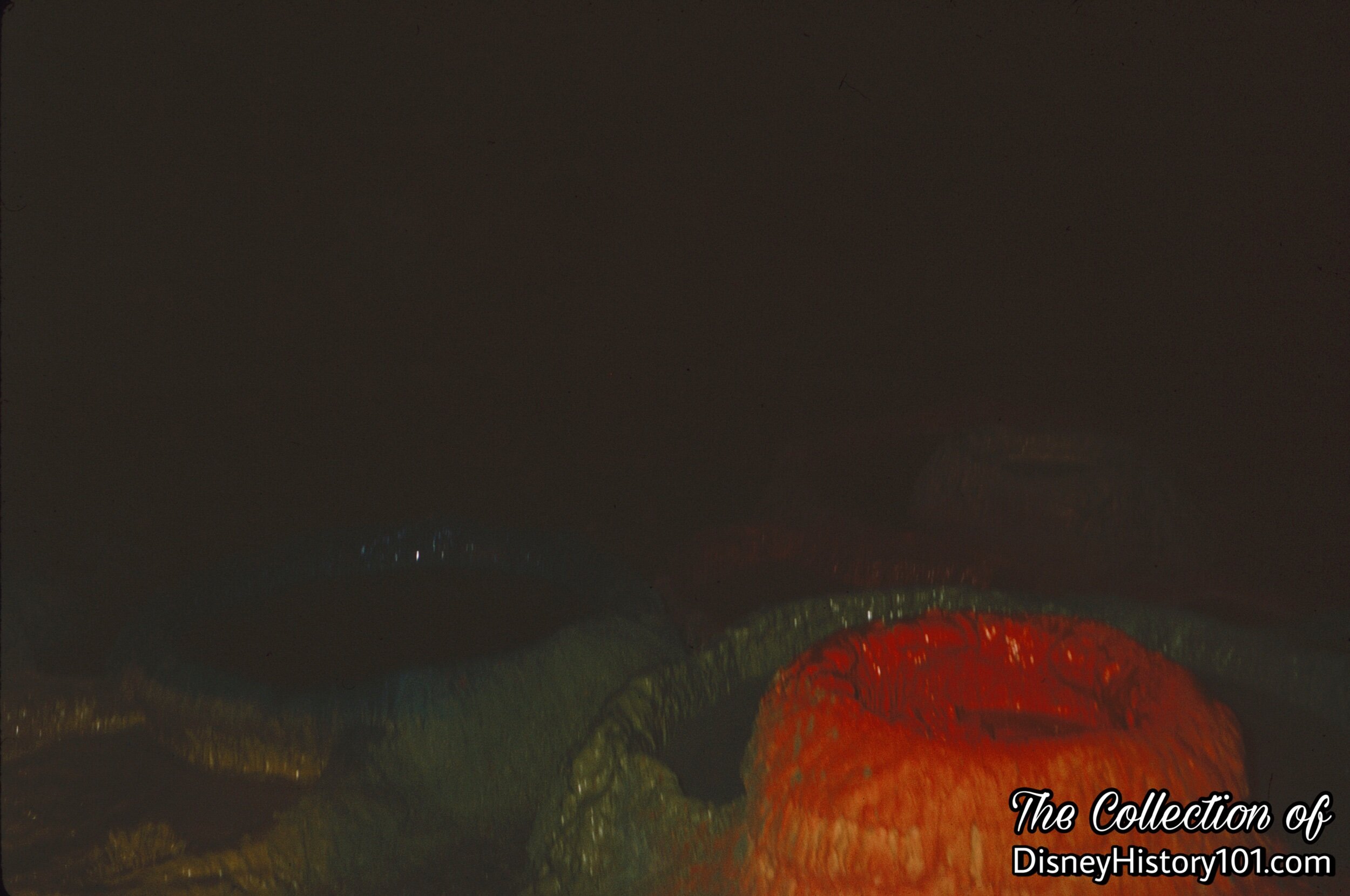
Bubbling ("Devil's Paint") Pots at Night
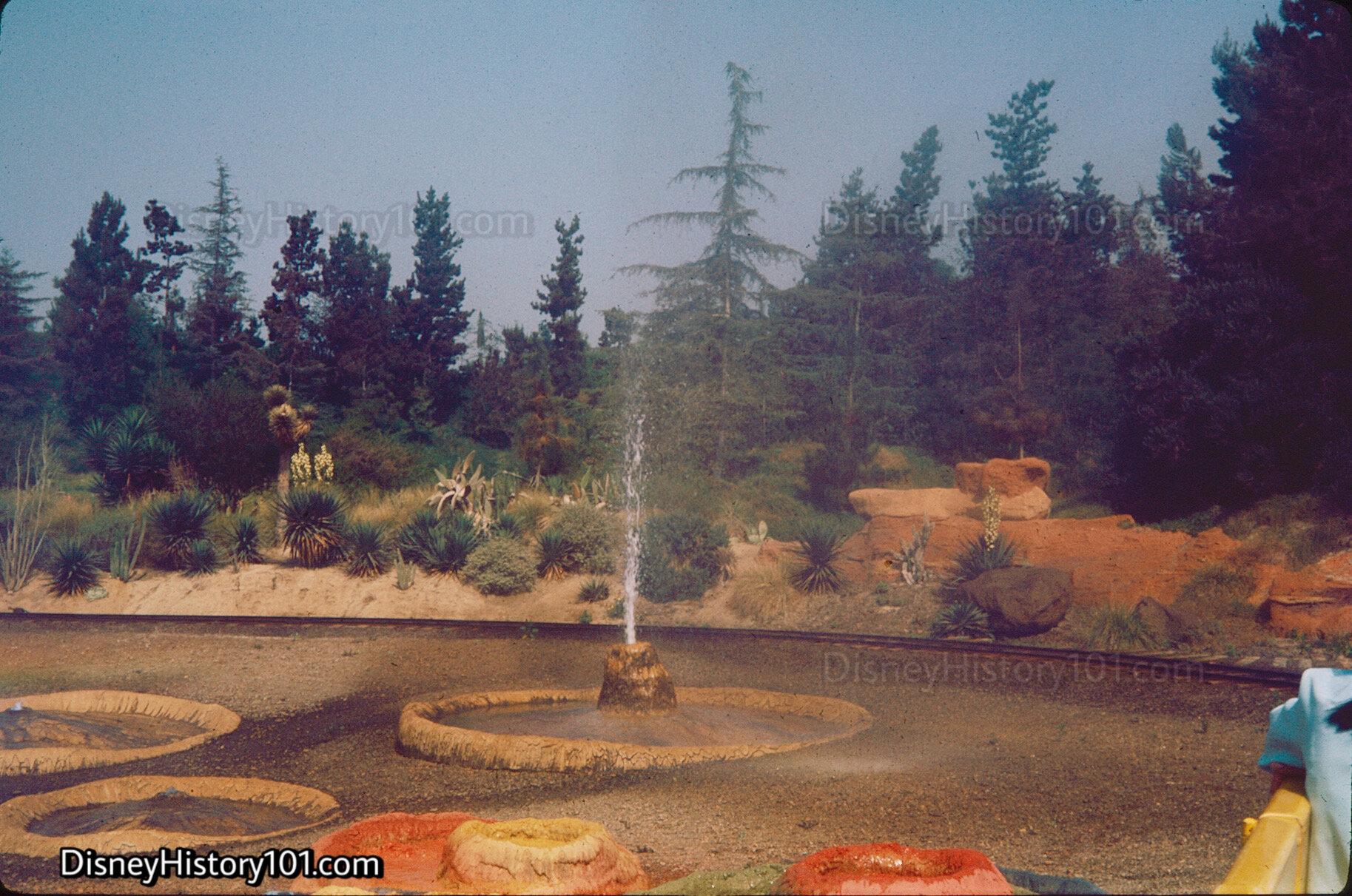
Old Unfaithful & Bubbling ("Devil's Paint") Pots, (October, 1968)
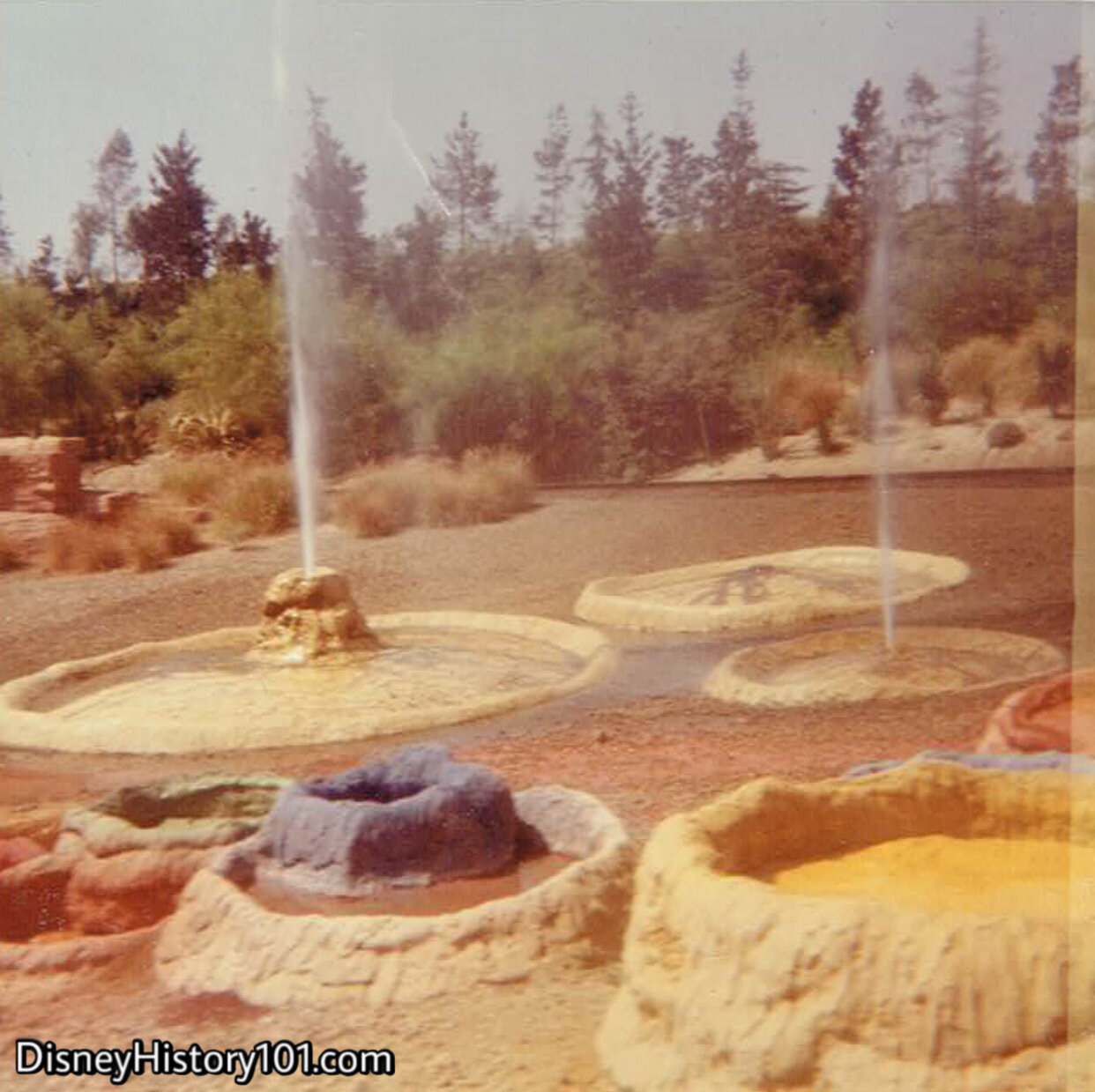
Old Unfaithful & Bubbling ("Devil's Paint") Pots
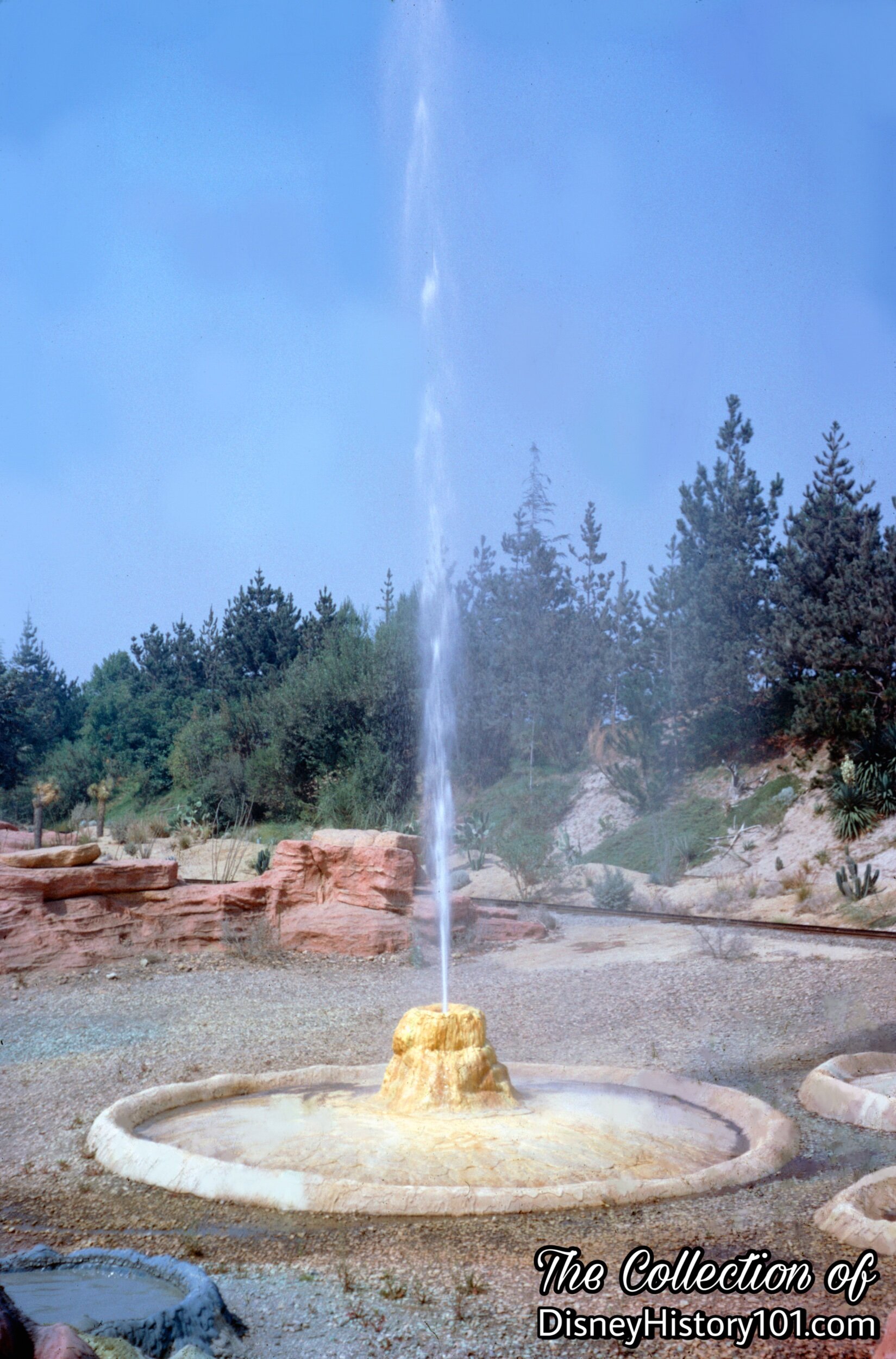
Old Unfaithful & Bubbling Pots, (1961)
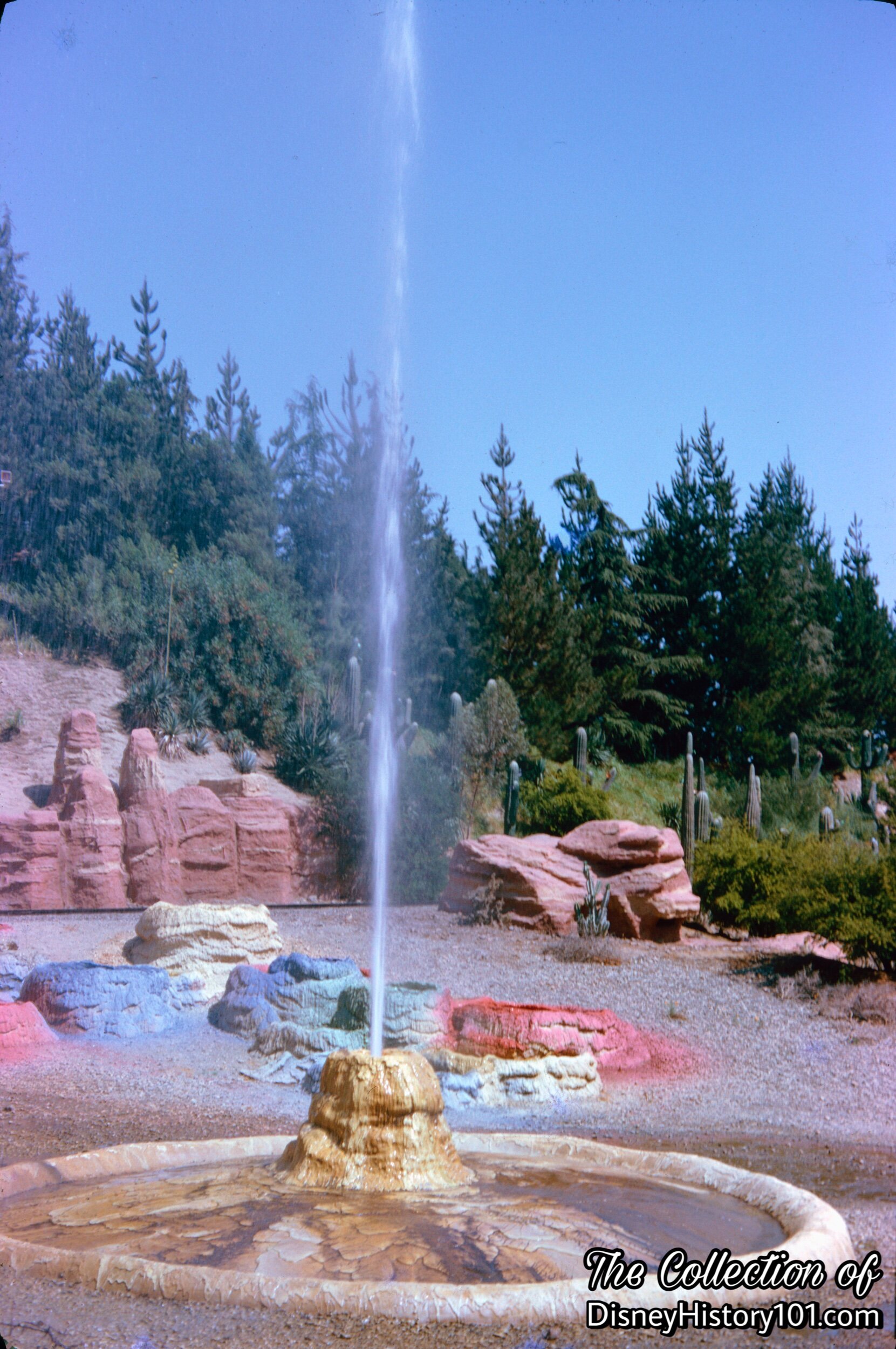
Old Unfaithful & Bubbling Pots, (August, 1965)
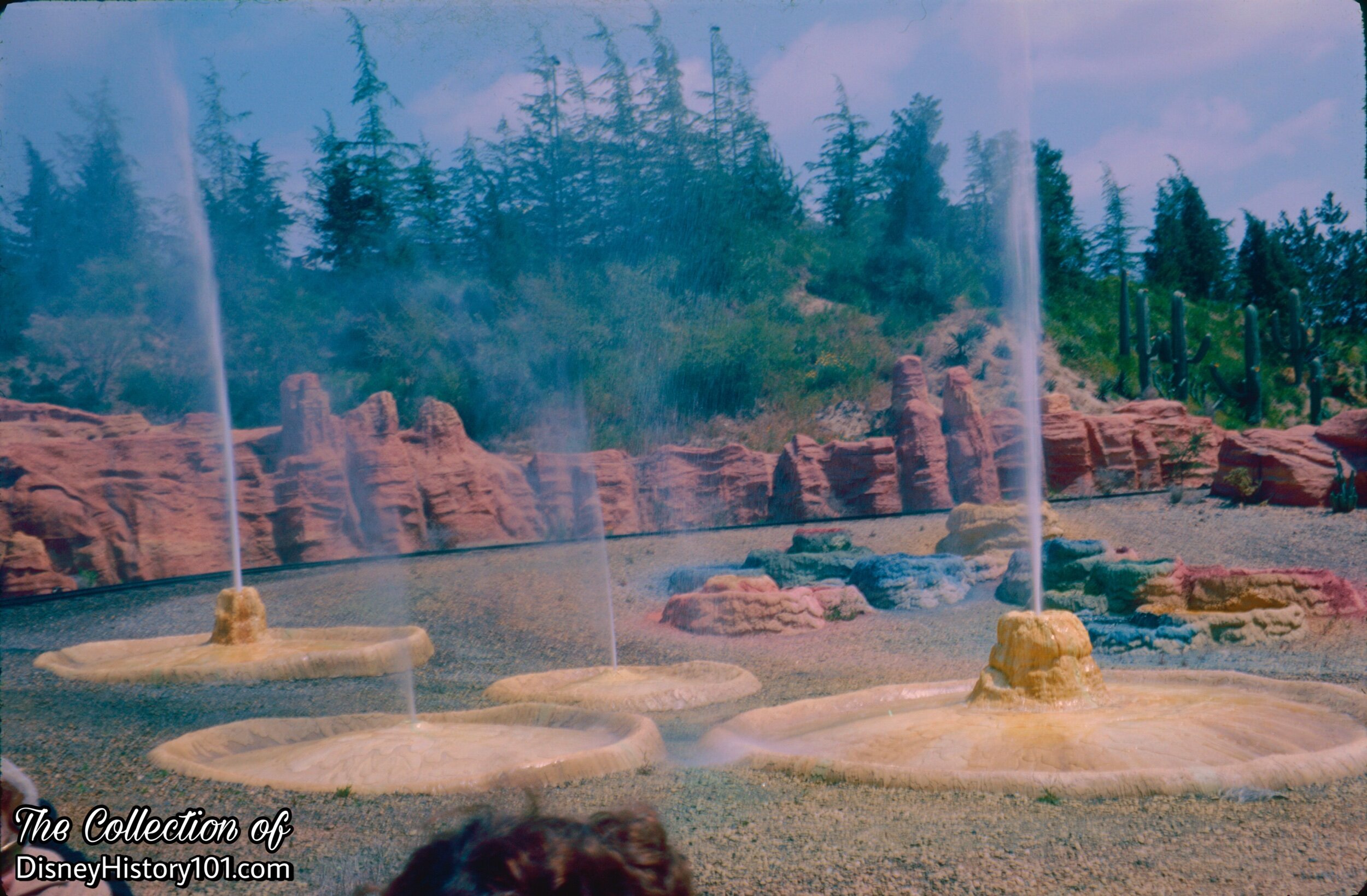
Old Unfaithful & Bubbling Pots, The Living Desert, (April, 1961)
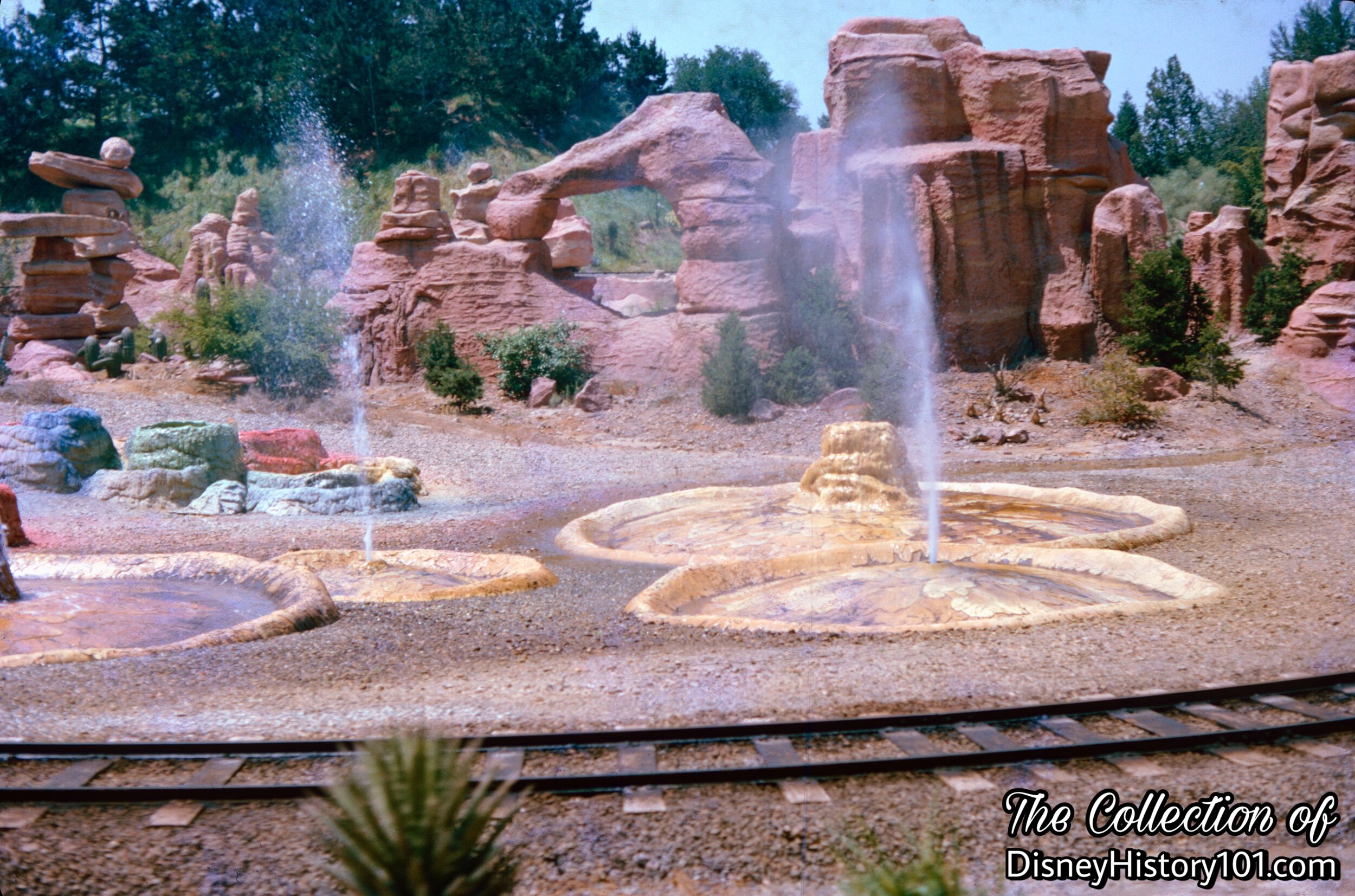
Old Unfaithful & Bubbling Pots, The Living Desert, (September, 1965)
Geyser Country features four geysers (including Old Unfaithful) that operate from an underwater deep well pump that pressurized air and water.
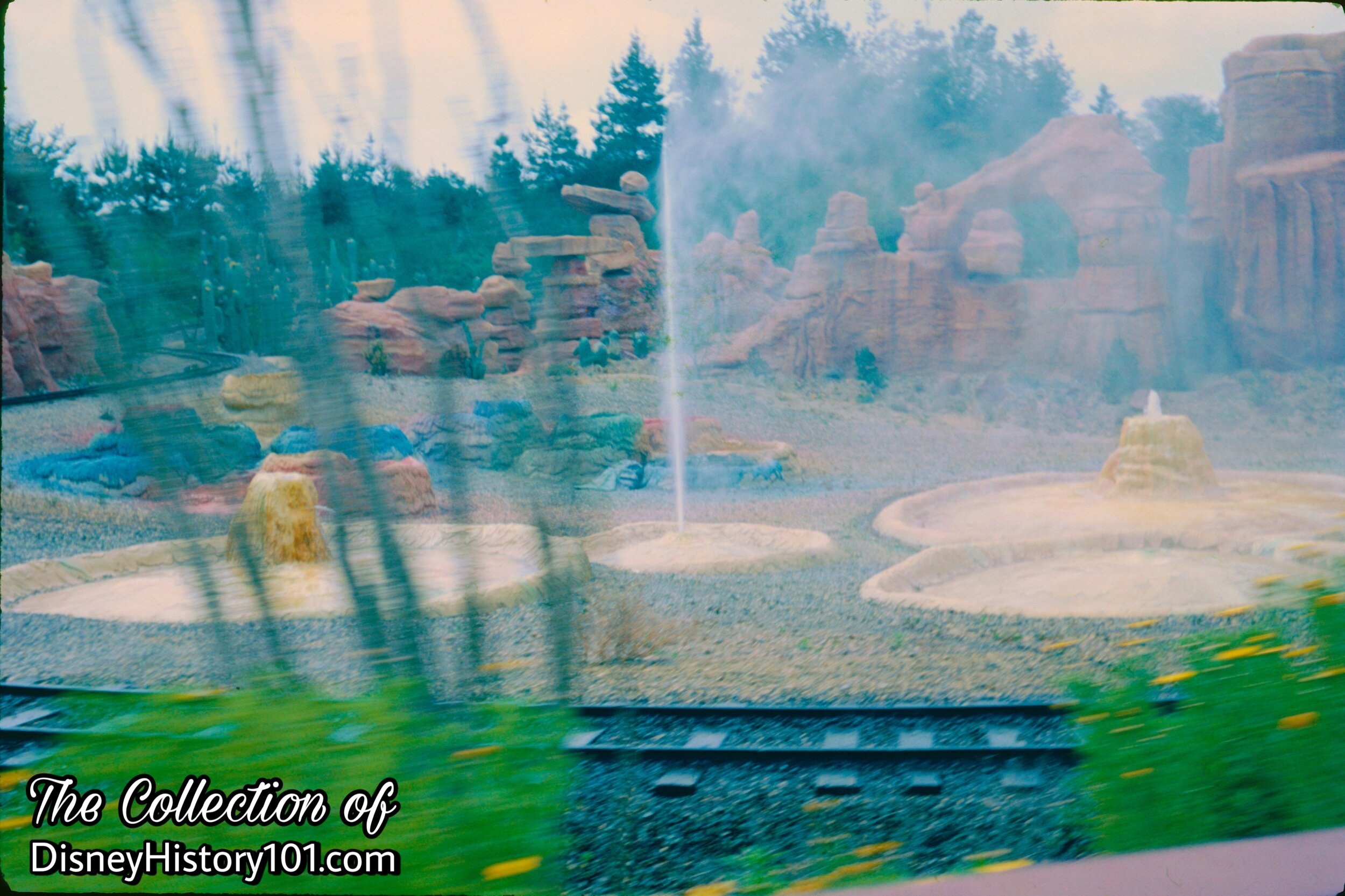
Old Unfaithful & Bubbling Pots, The Living Desert, (c. April, 1961)
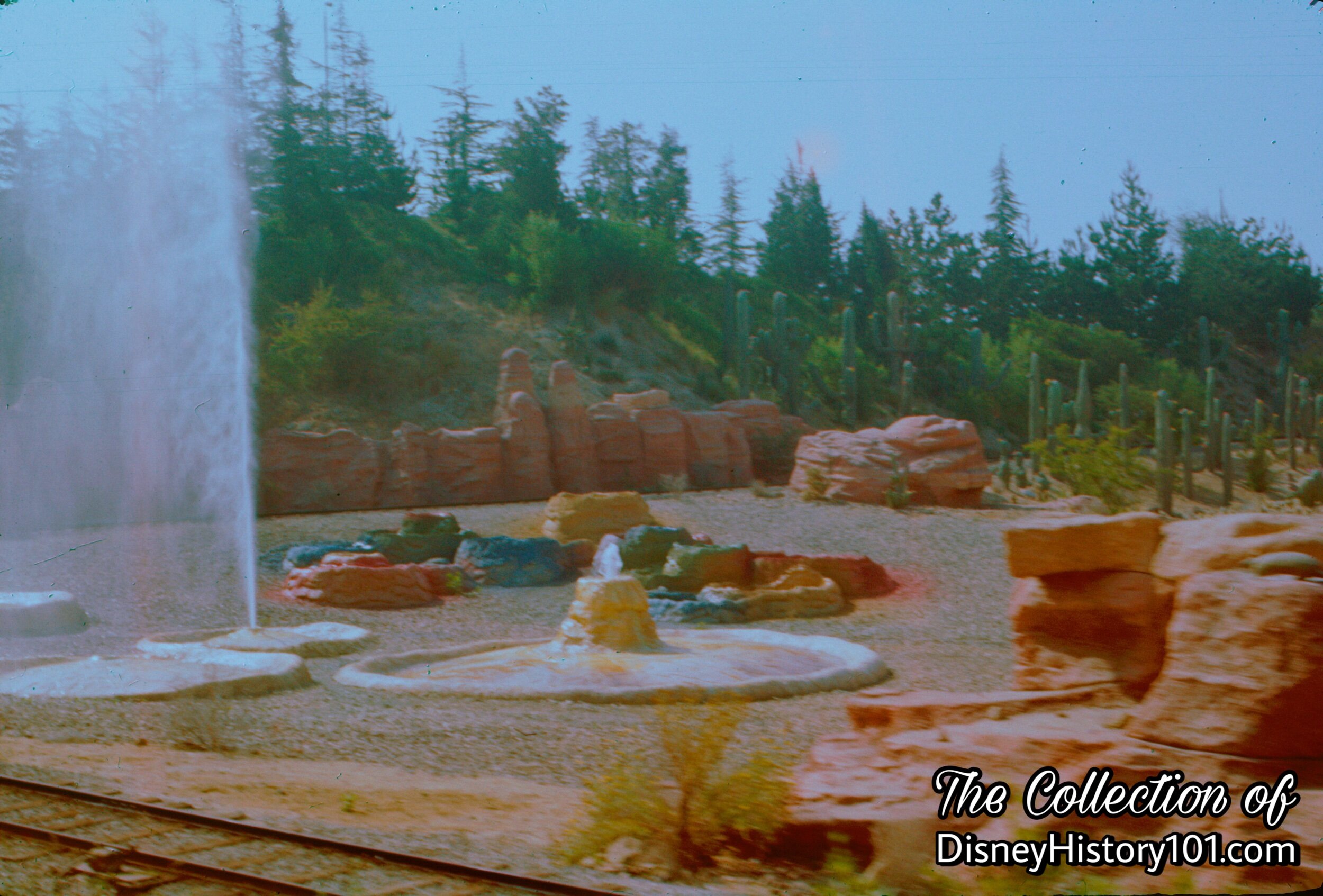
Old Unfaithful & Bubbling Pots
“This is ‘geyser country’ too. Uh, oh. ‘There she blows’. Sure glad ya all brought yer rain coats. But look out now. Ya never know when she’s gonna go off. That’s why they call ‘er “Ol’ Unfaithful. LOOK OUT NOW! You folks in them last cars be ready. She’s threatenin’ again.”
It looks as if the geyser’s subsiding from shooting 70-foot high streams of water into the air, giving us just enough time to escape!
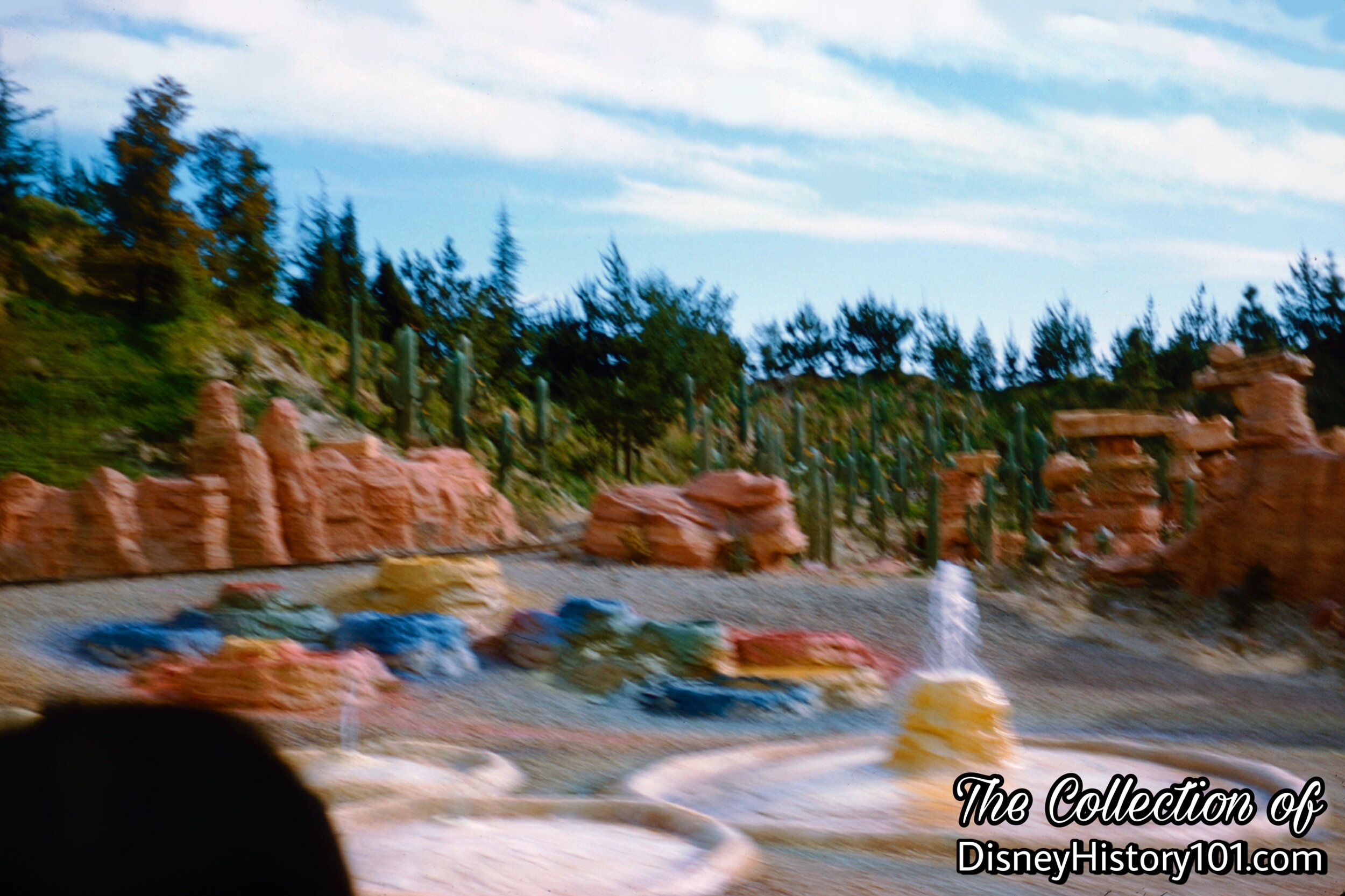
Old Unfaithful & Bubbling Pots
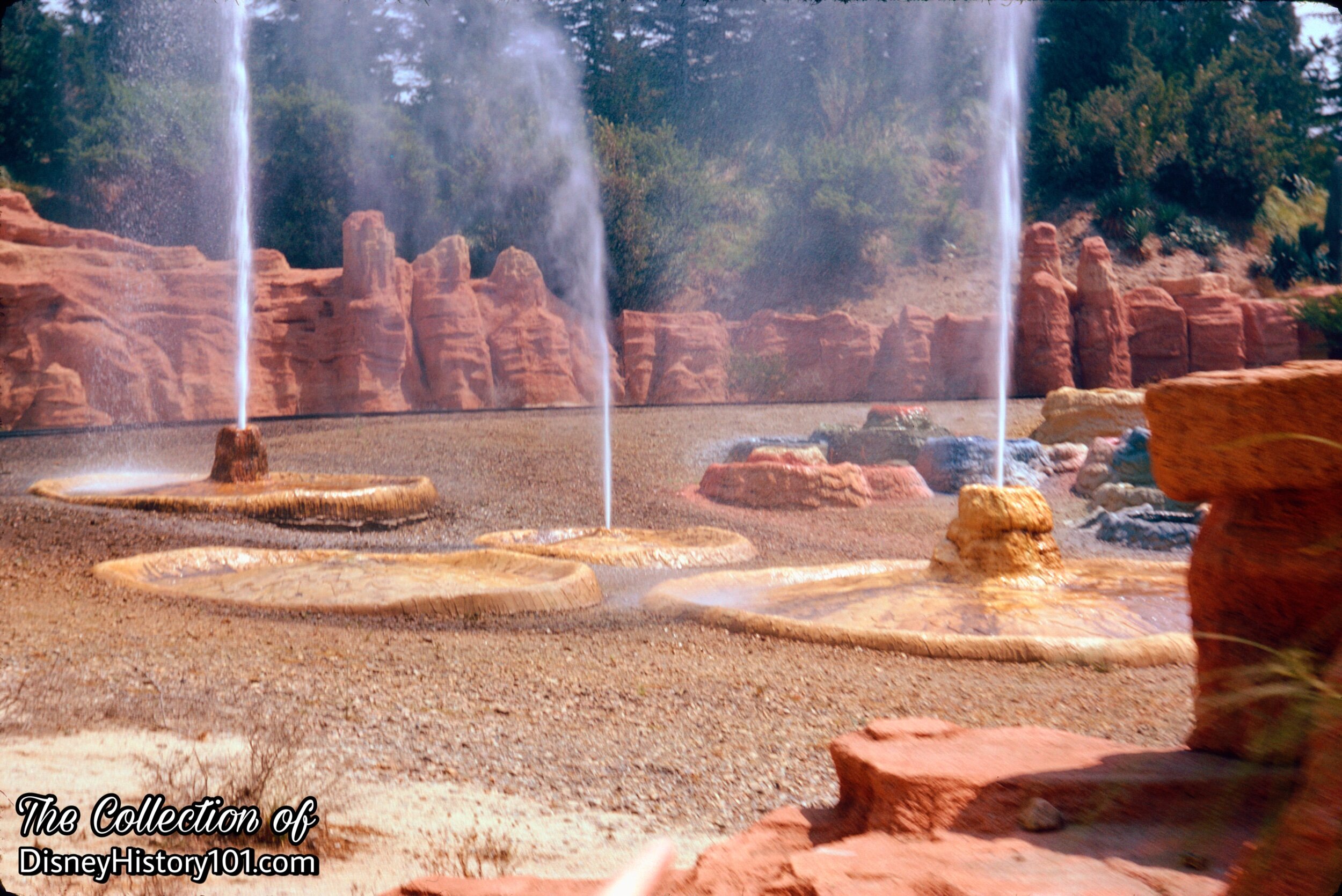
Old Unfaithful & Bubbling Pots
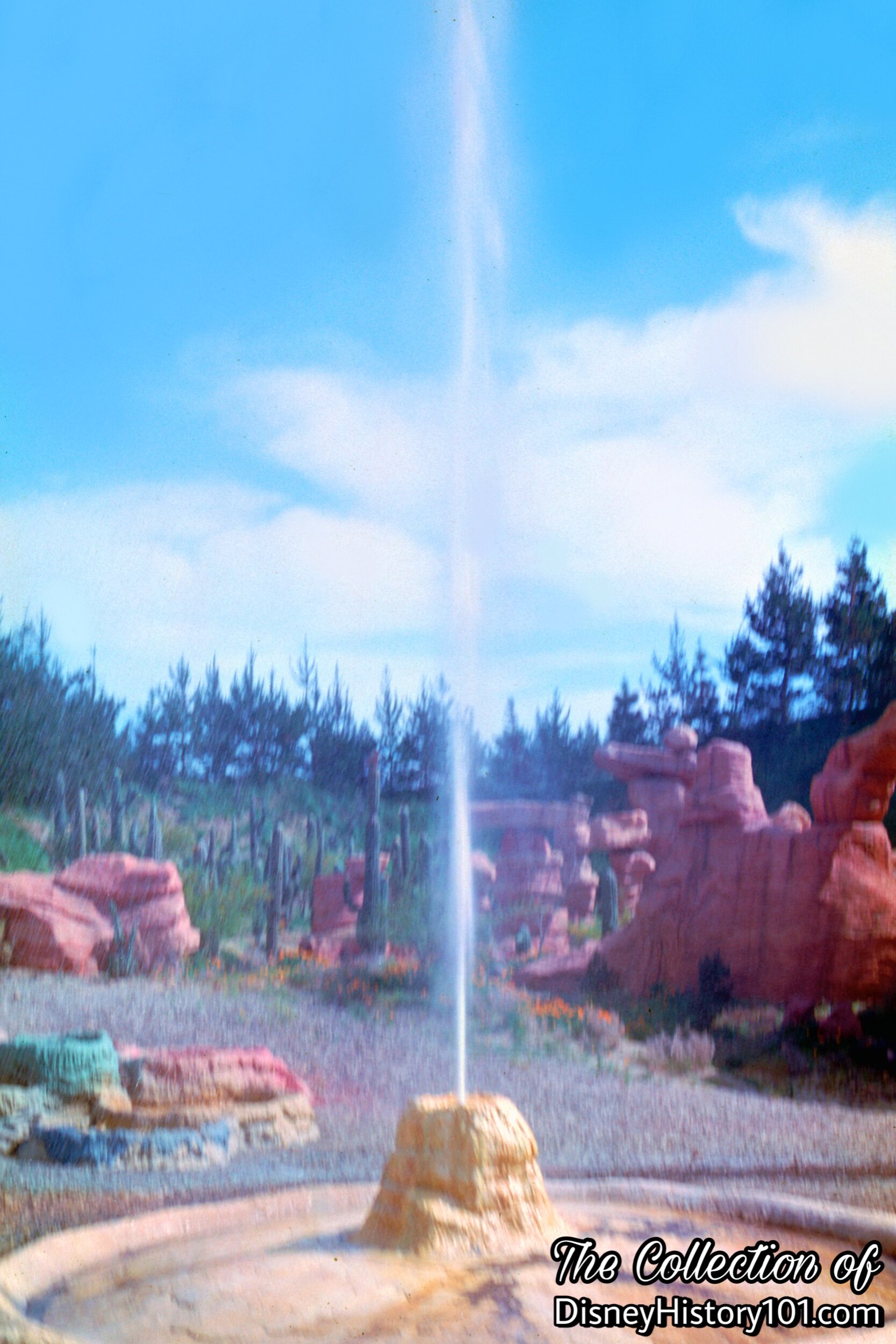
Old Unfaithful & Bubbling Pots
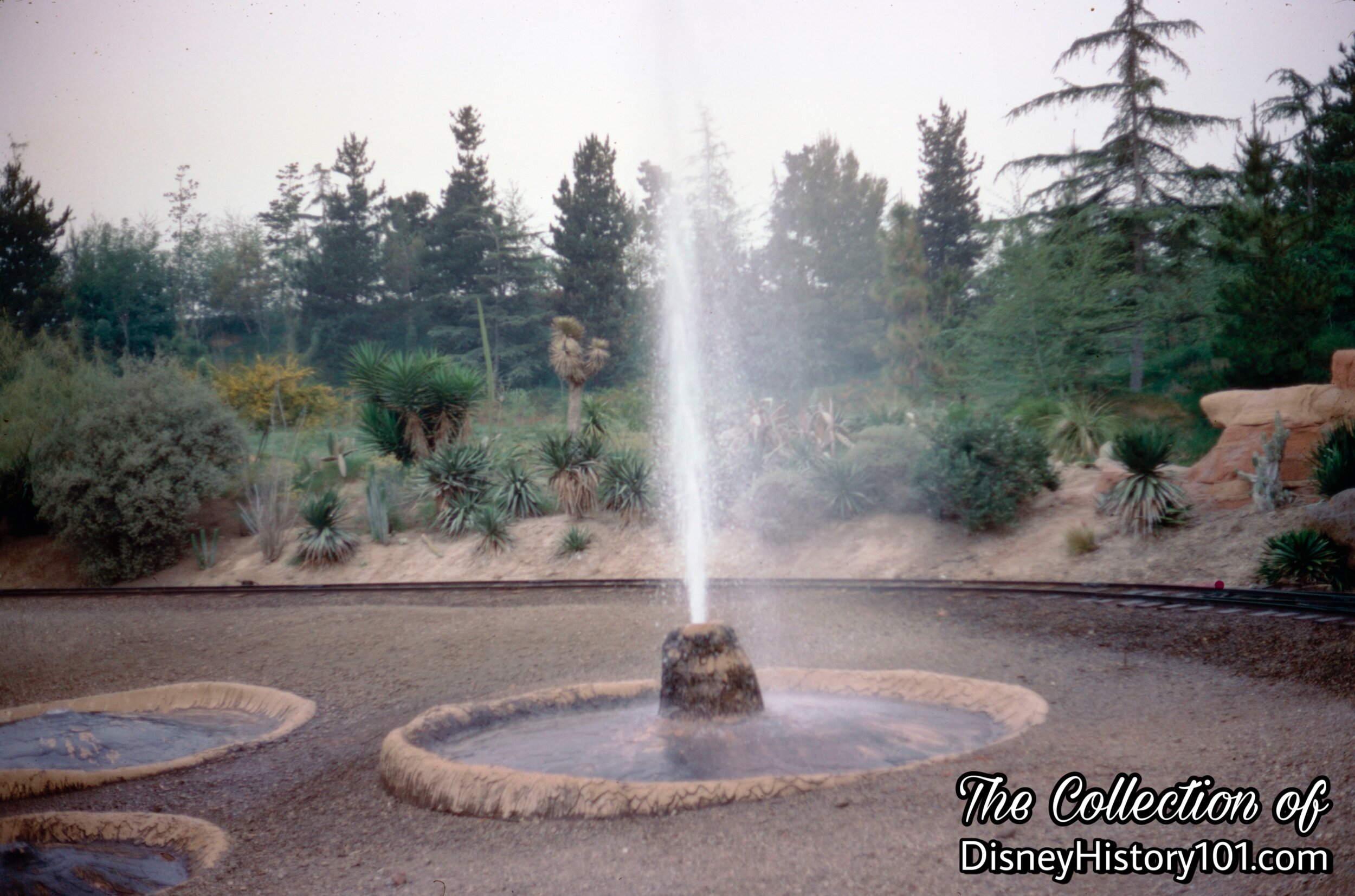
Old Unfaithful
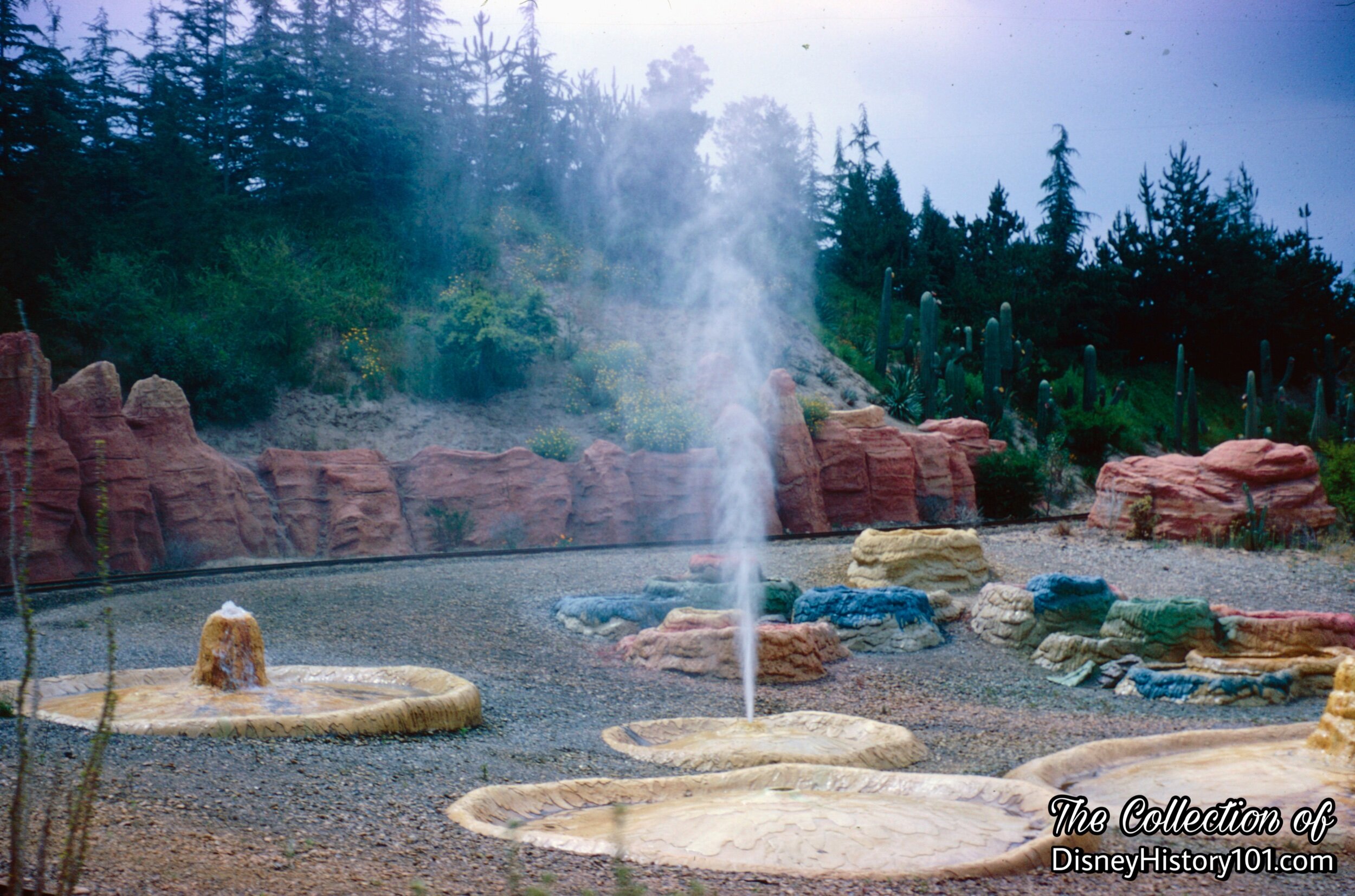
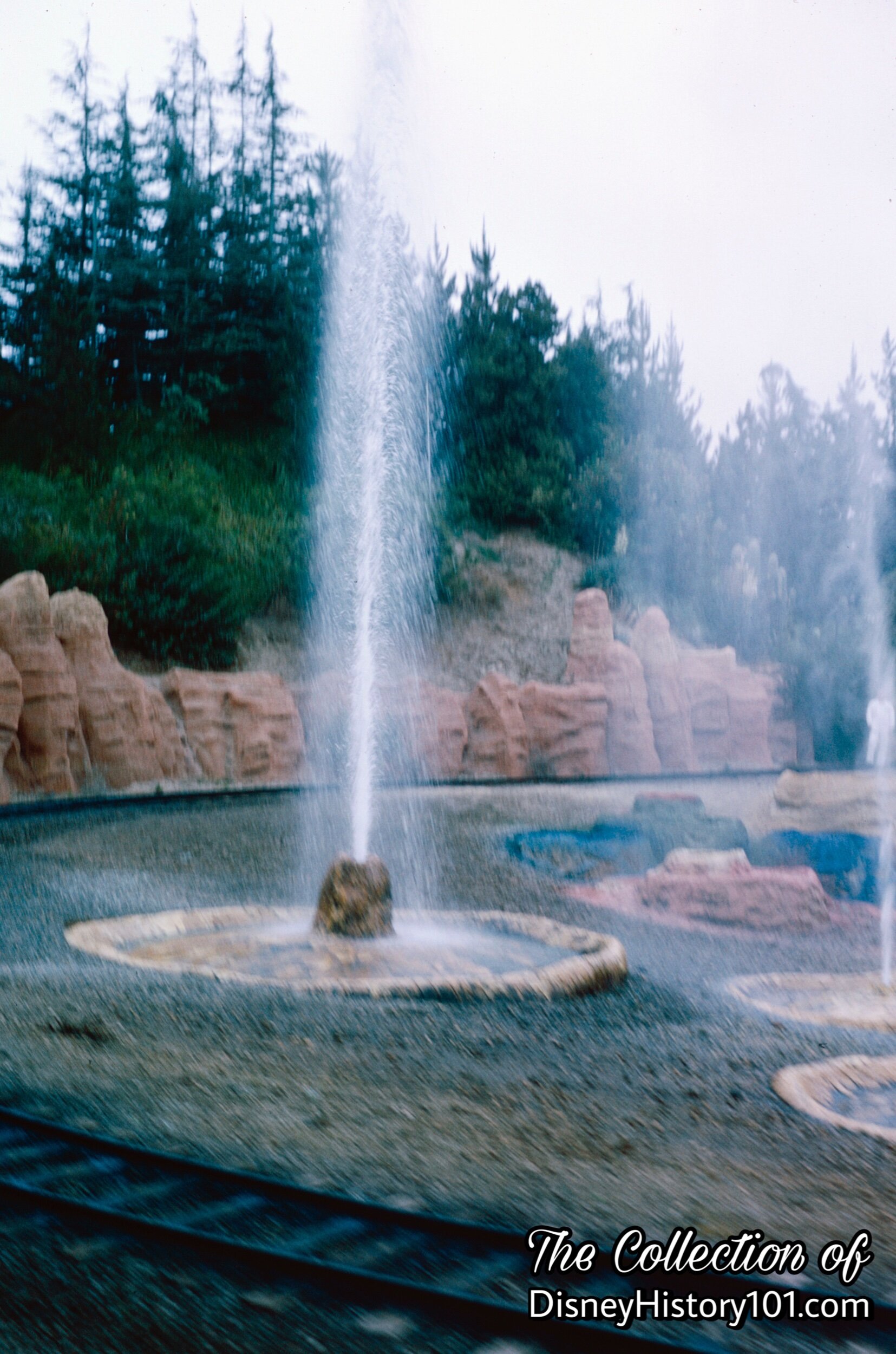
(1964)
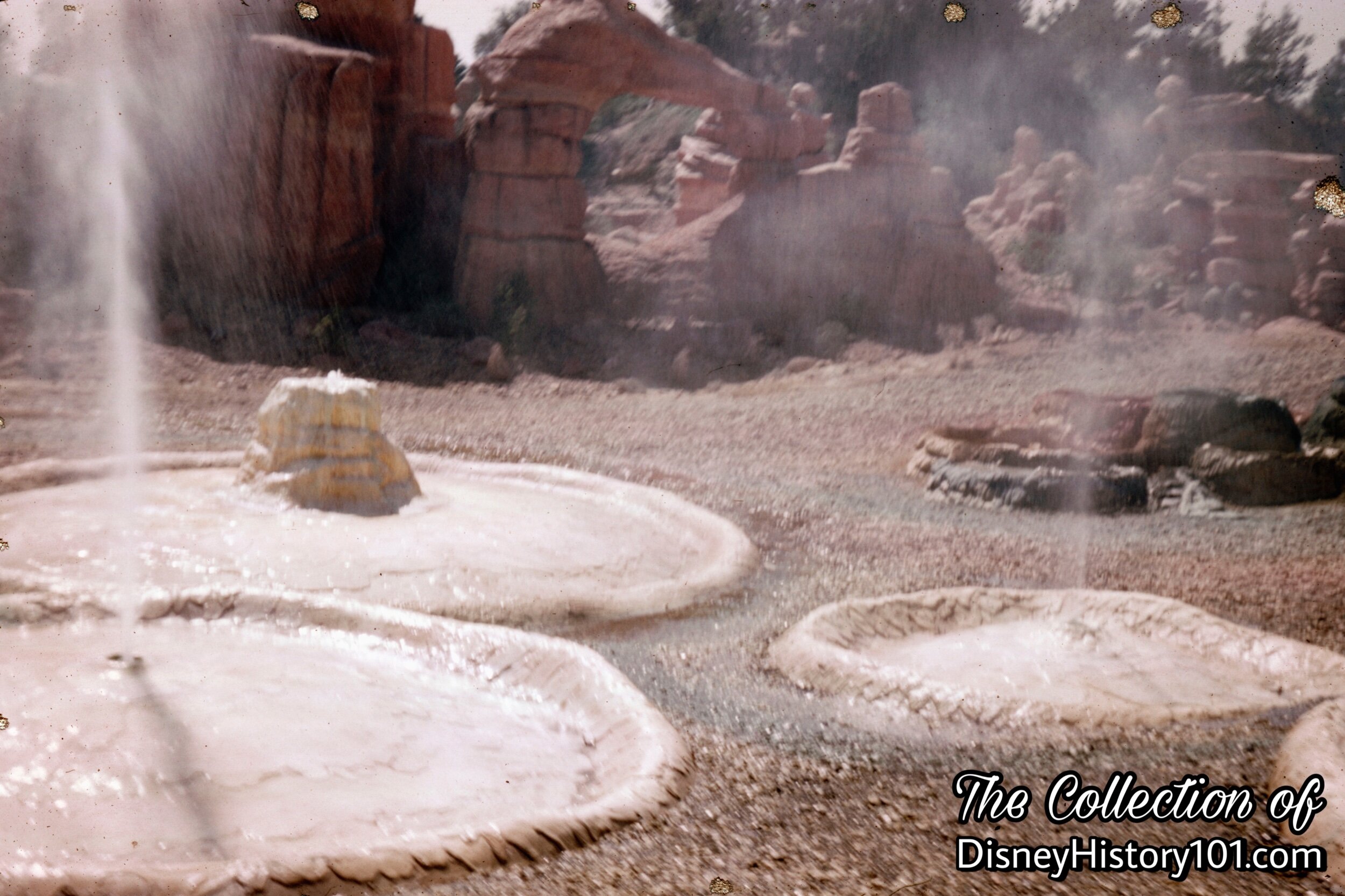
Old Unfaithful, (October, 1960)
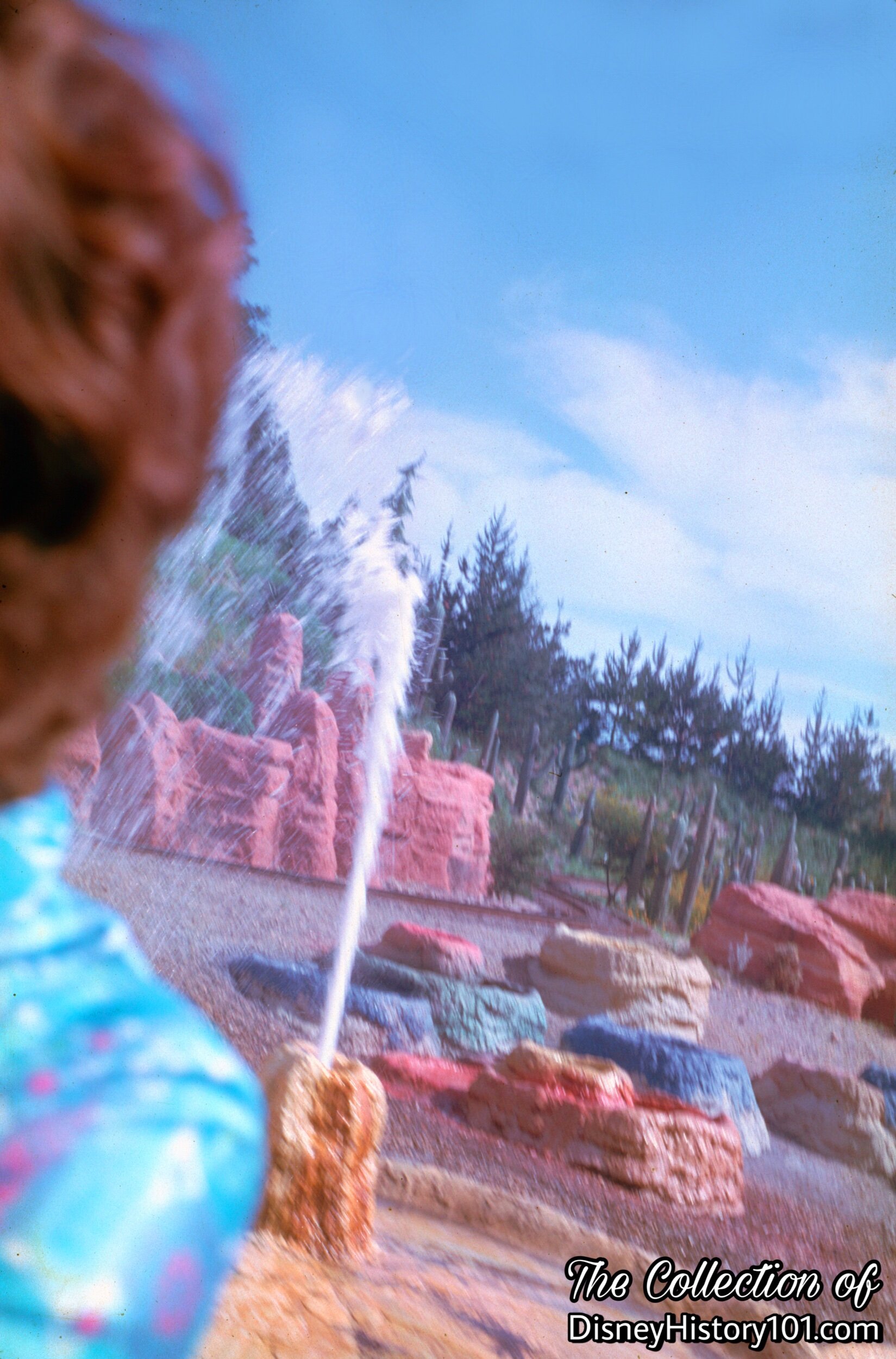
Old Unfaithful & Bubbling Pots
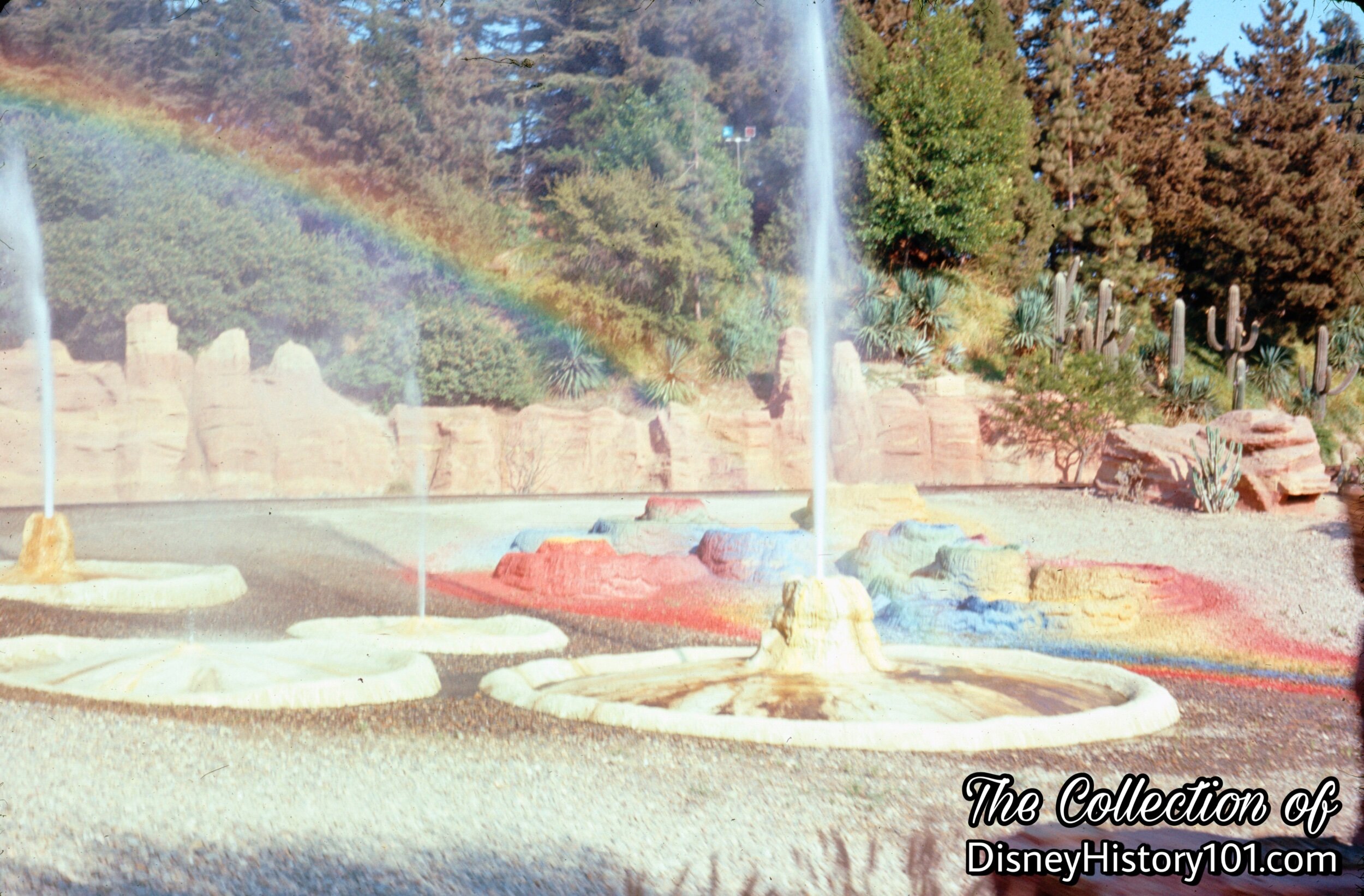
Old Unfaithful & Bubbling Pots
Apparently, rainbows weren’t just seen around the magnificent Rainbow Caverns. Sometimes the hydrogeological conditions of Geyser Country made momentary colorful displays for passengers of passing Mine Trains - rainbows!
Even long after these elements of Disneyland’s own “living desert” have vanished, there’s a rainbow at the end of the Disneyland “Geyser Country” story - a legacy. Decades later, yet another “Geyser Country” would be discovered along the railroad tracks of Euro Disney’s Frontierland! And then there’s Geyser Gulch (part of Grizzly Gulch at Hong Kong Disneyland), accidentally built on top of active geysers. Now it's a great place for water play and to get completely soaked!
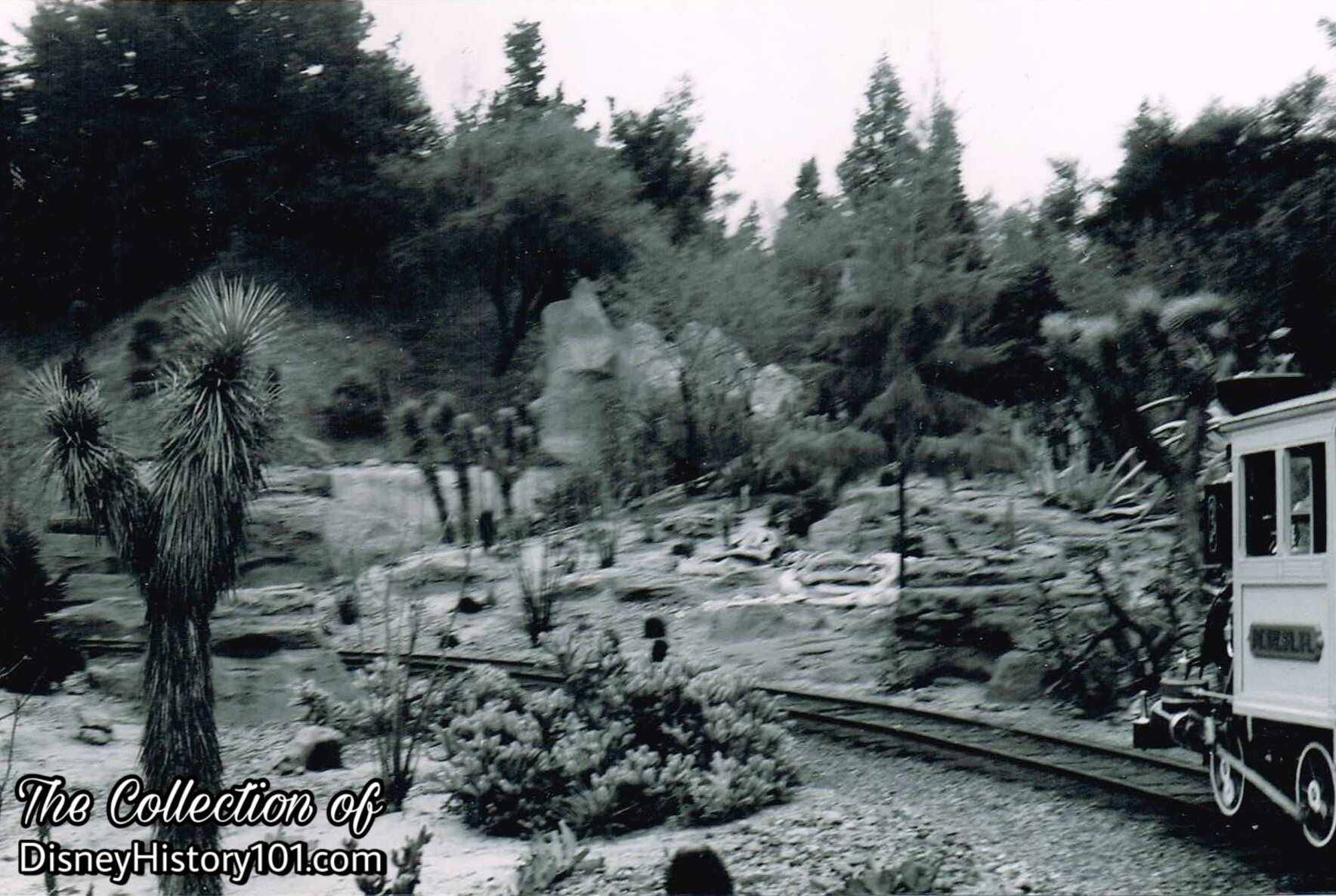
The Living Desert
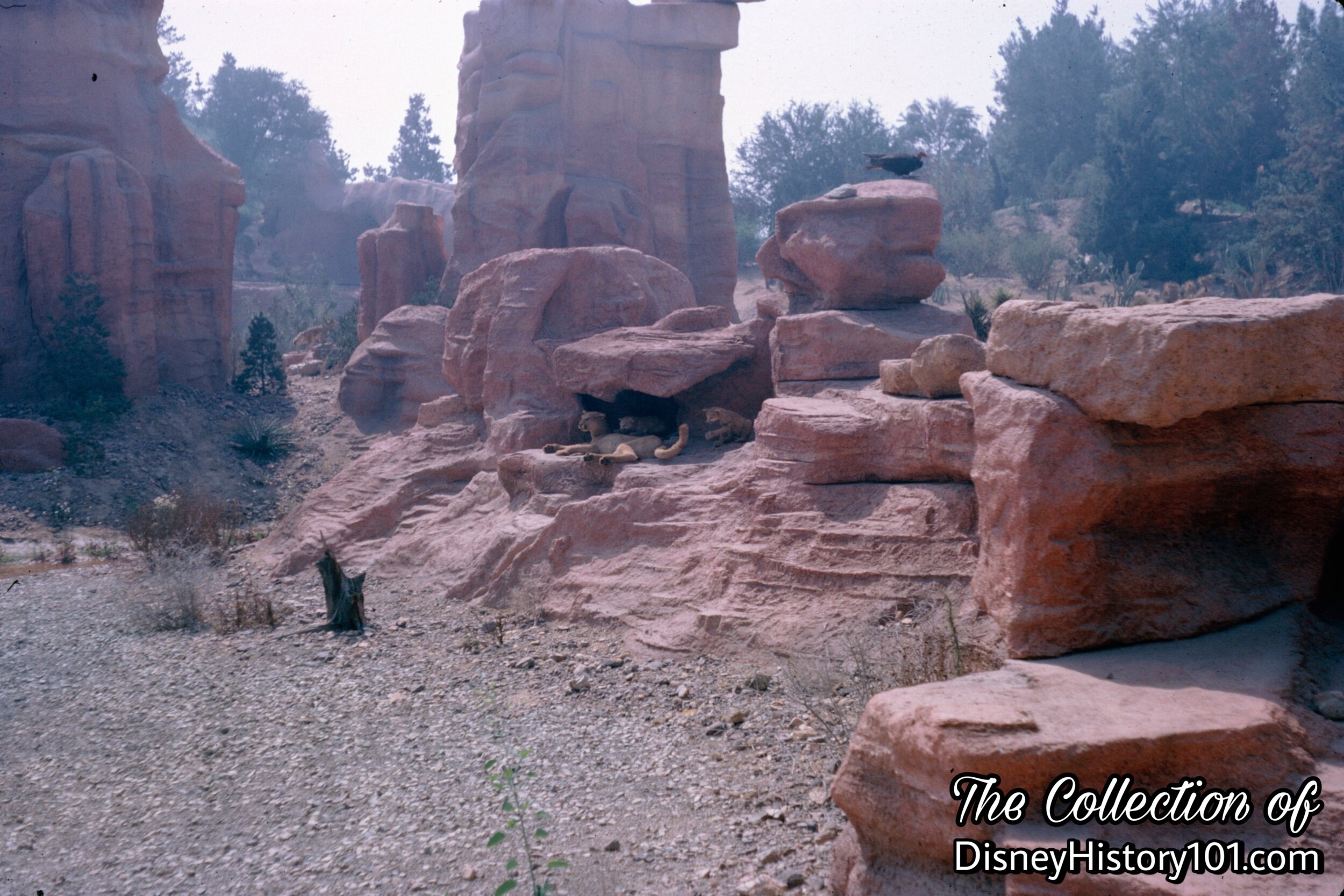
Mountain Lion with Cubs atop RockWork, 1961.
The sounds of the Canyon Wren echo through the rock formations.
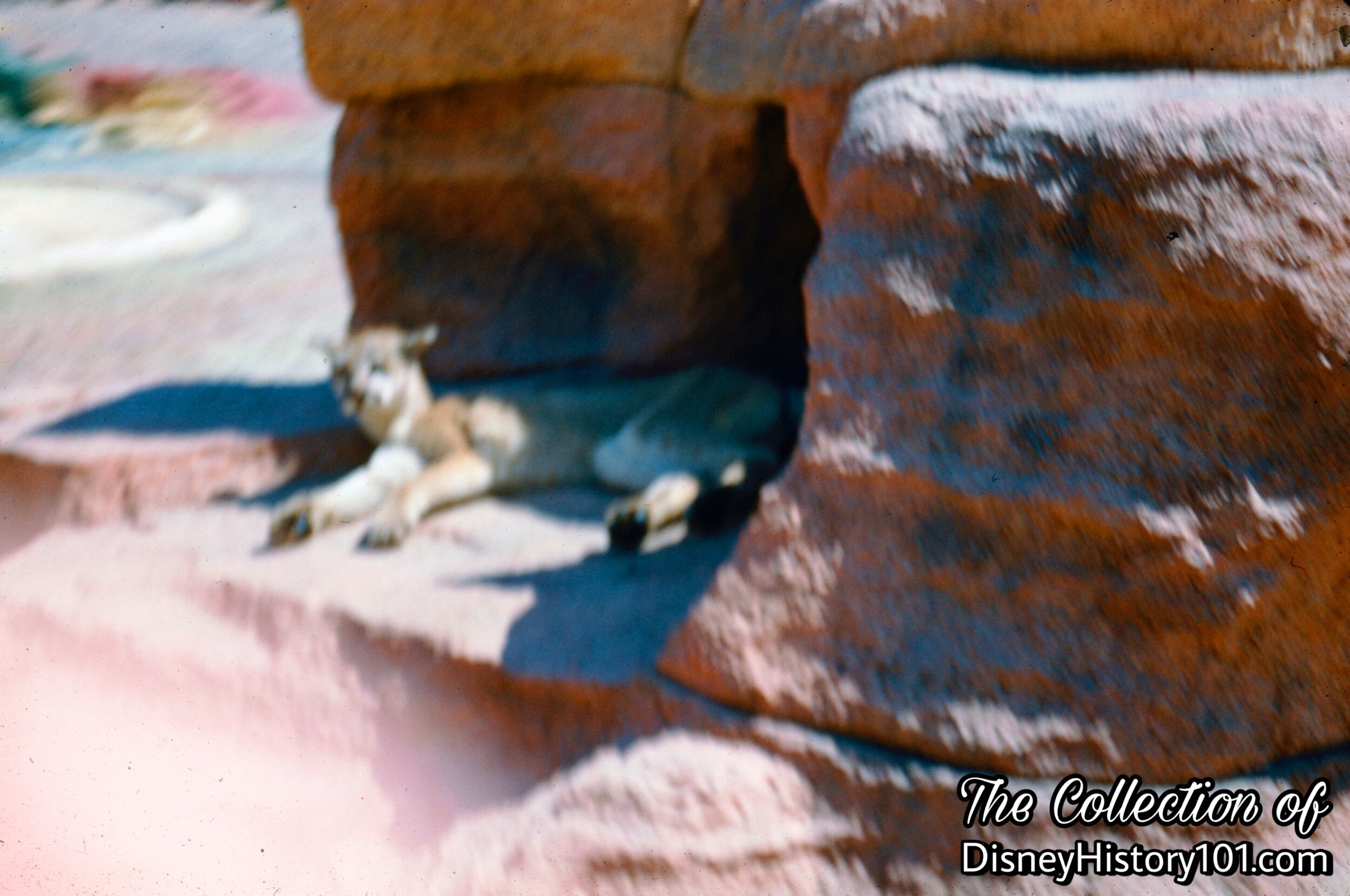
Mountain Lion
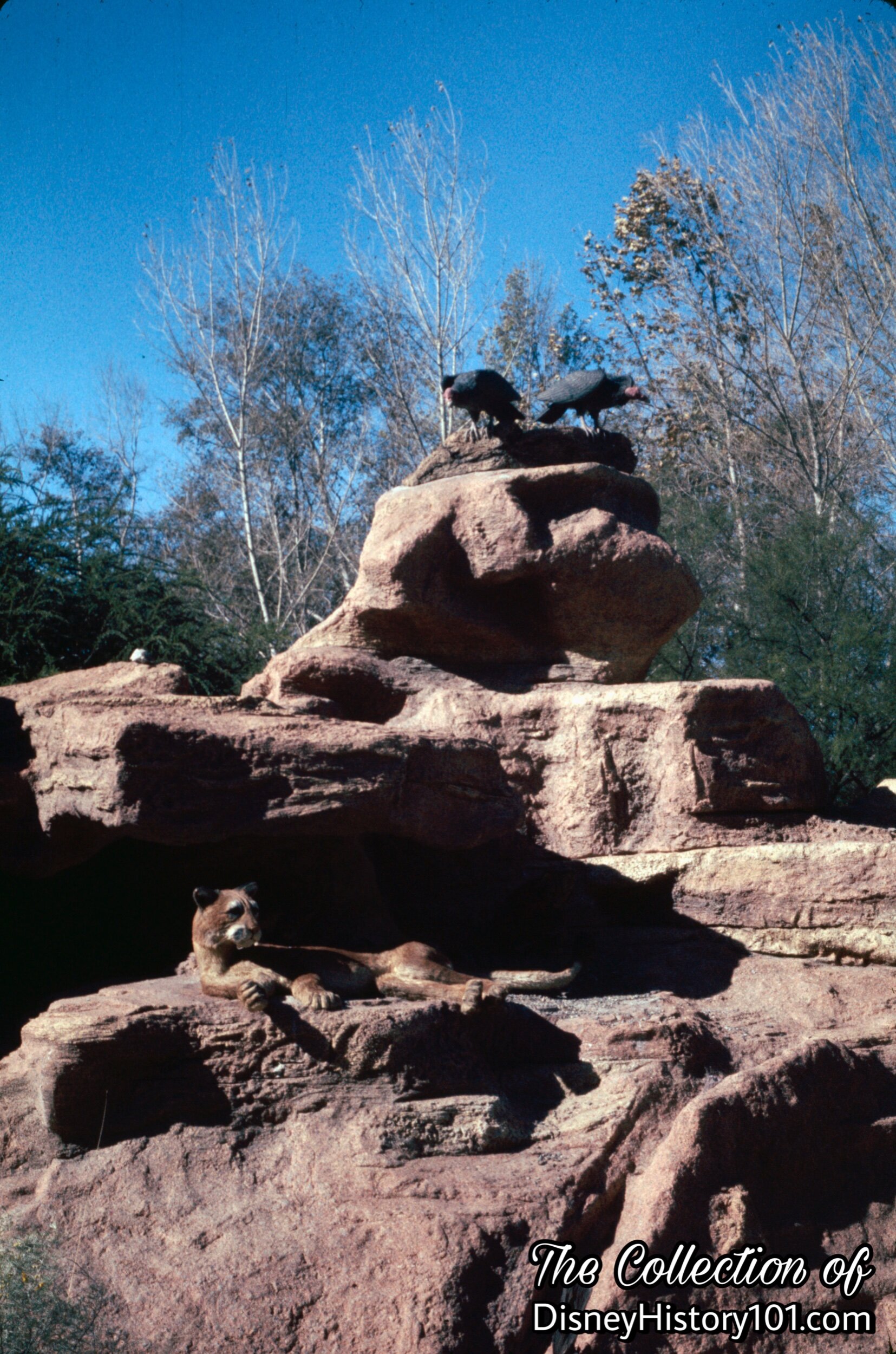
Mountain Lion & Vultures
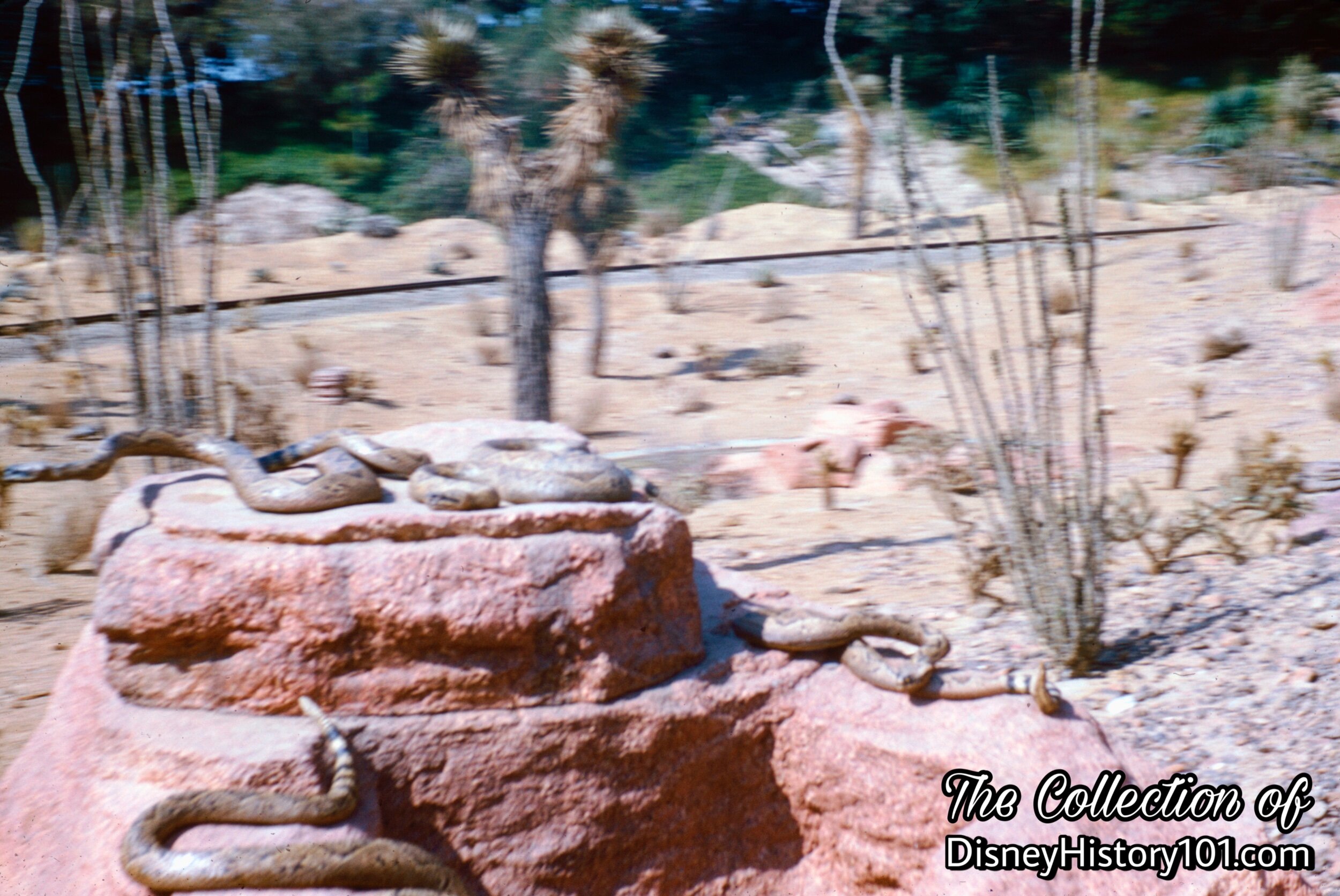
Rattlesnakes & Rattlesnake Gulch

Rattlesnakes & Rattlesnake Gulch
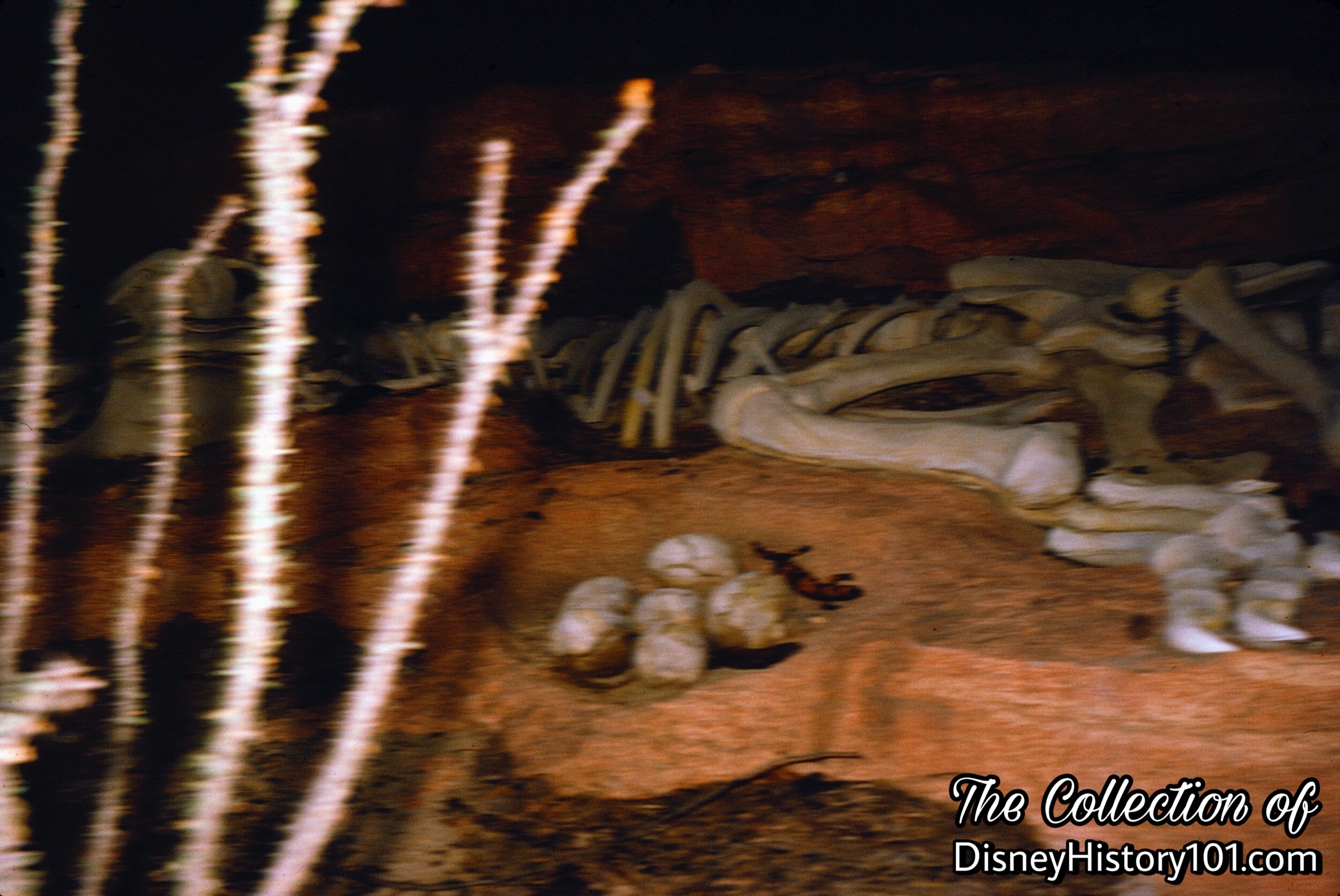
Dinosaur Fossils and Gila monsters at “Graveyard of the Dinosaurs”
In the early days, “20,000 year old dinosaur tracks near the trail” were observed by Stage Coach passengers (according to “New Frontiers at Disneyland”, published in Mickey Mouse Club Magazine, Vol. 1, No. 3, by Bobby Burgess. Eventually, this fossilized skeleton and nest of eggs were “discovered” by a team of miners. Many years later (and not far away), another dinosaur skeleton would be unearthed near a pool of water at the bottom of Dinosaur Gulch.
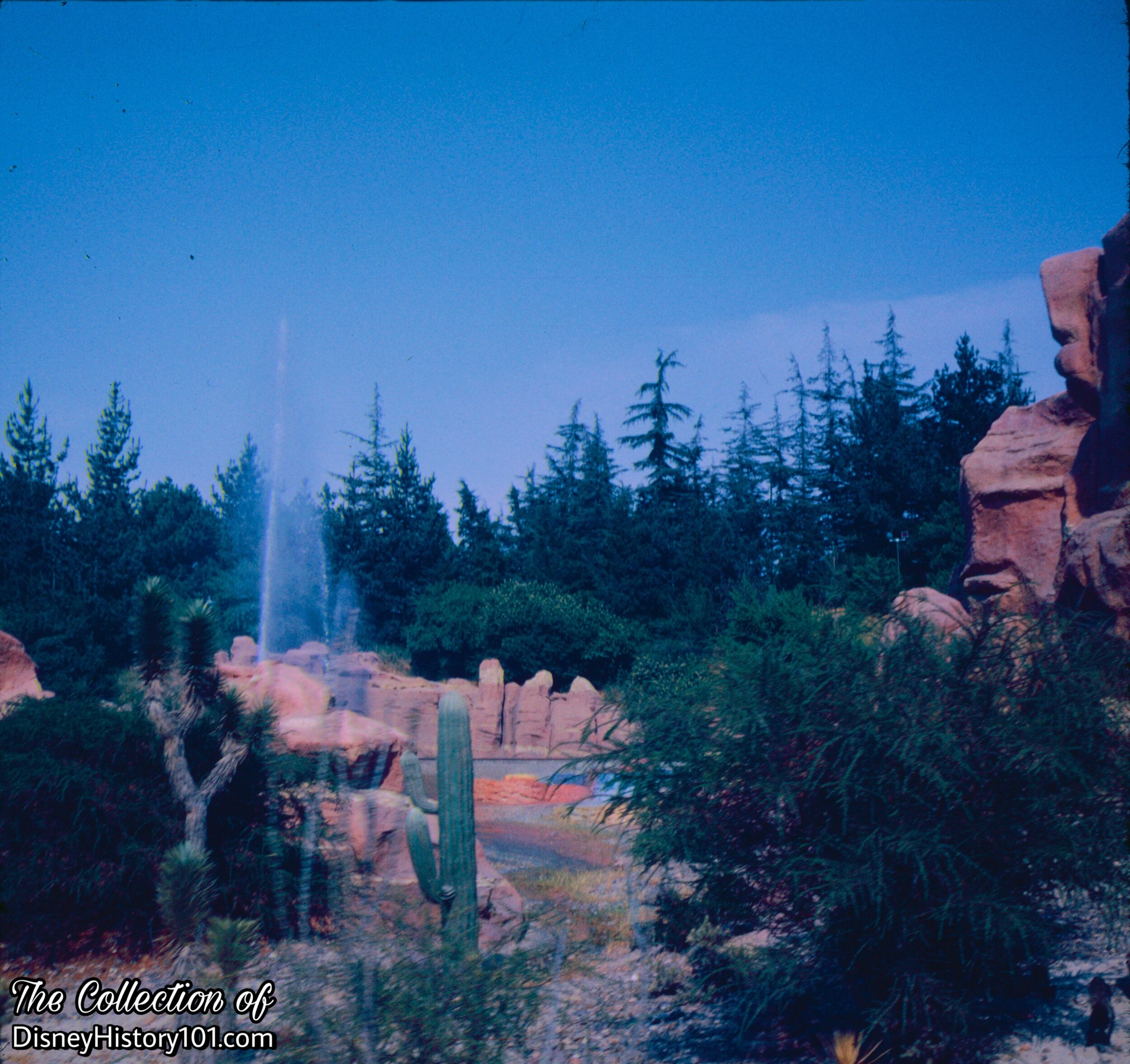
The Living Desert, (1967)
A last look back at those wondrous “Devil’s Paintpots”!
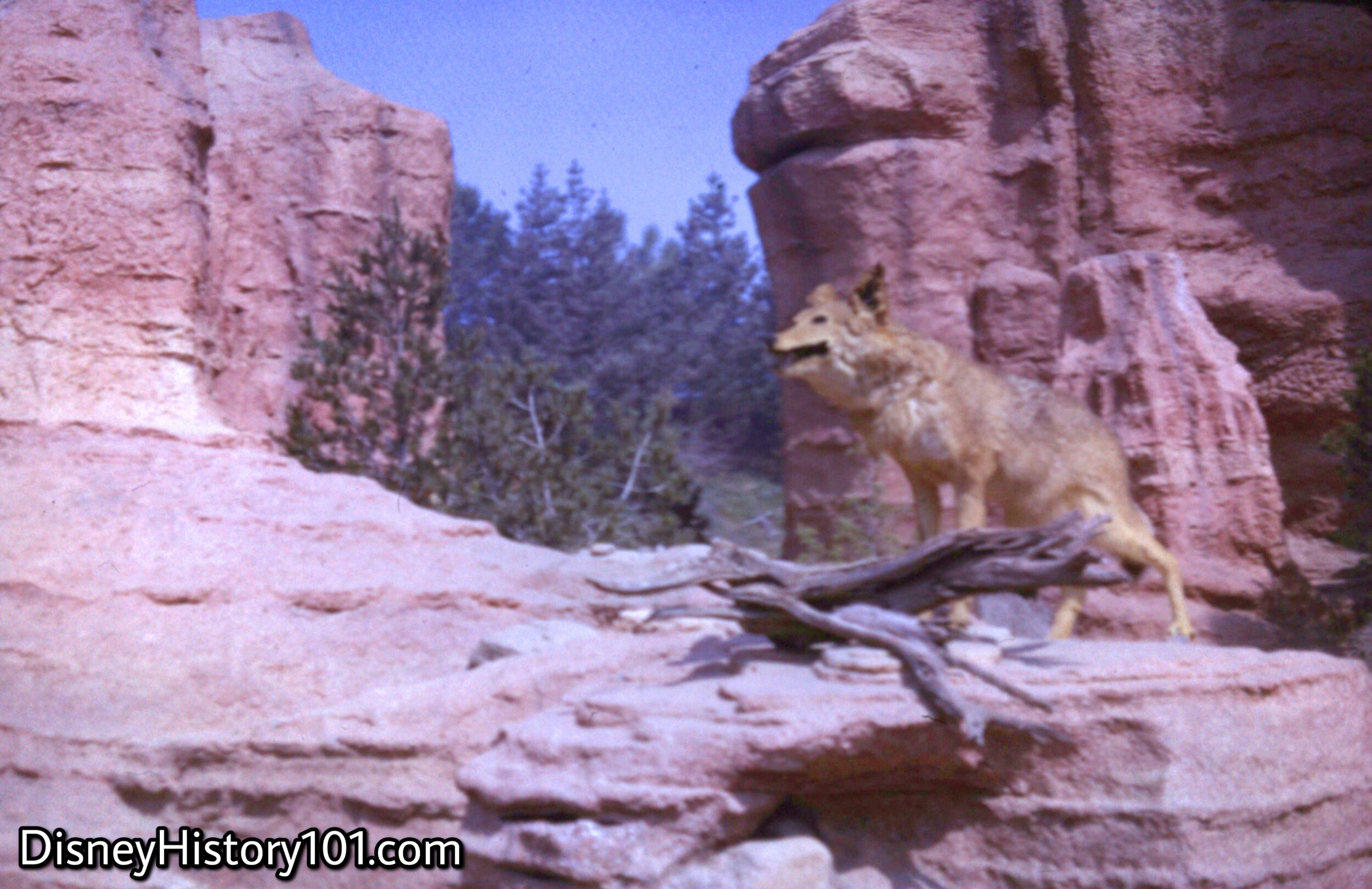
Coyote Rock, (1965)
We first encountered one Coyote in Beaver Valley and one Coyote near that den of Mountain Lions. Now, like a scene out of Walt Disney’s True-Life Adventure “The Vanishing Prairie”, six coyotes “howl” and “yip” from the top of a mesa called Coyote Rock. Many years later, the sound of Coyotes would be heard around a place called Coyote Canyon.
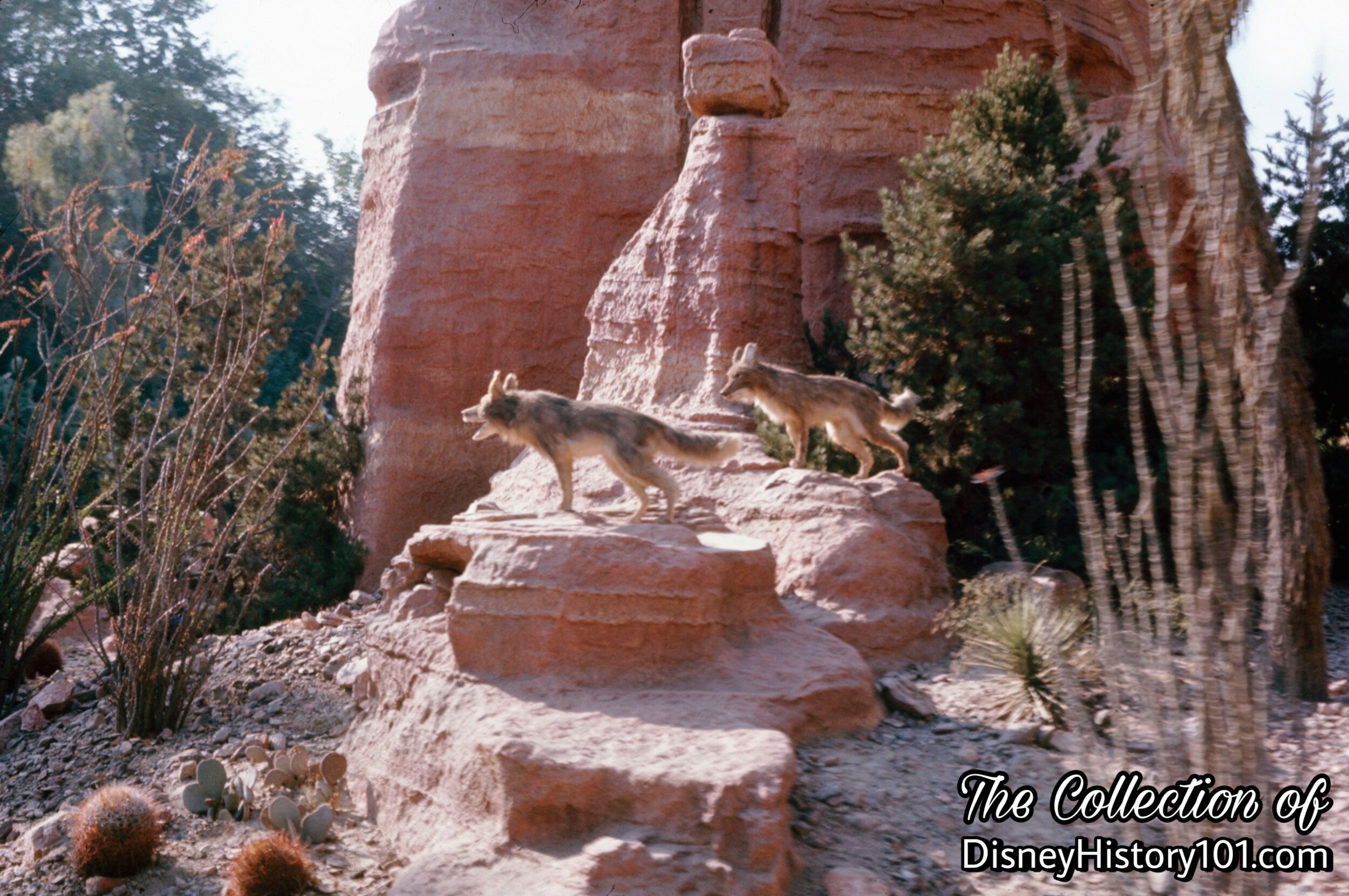
Coyote Rock
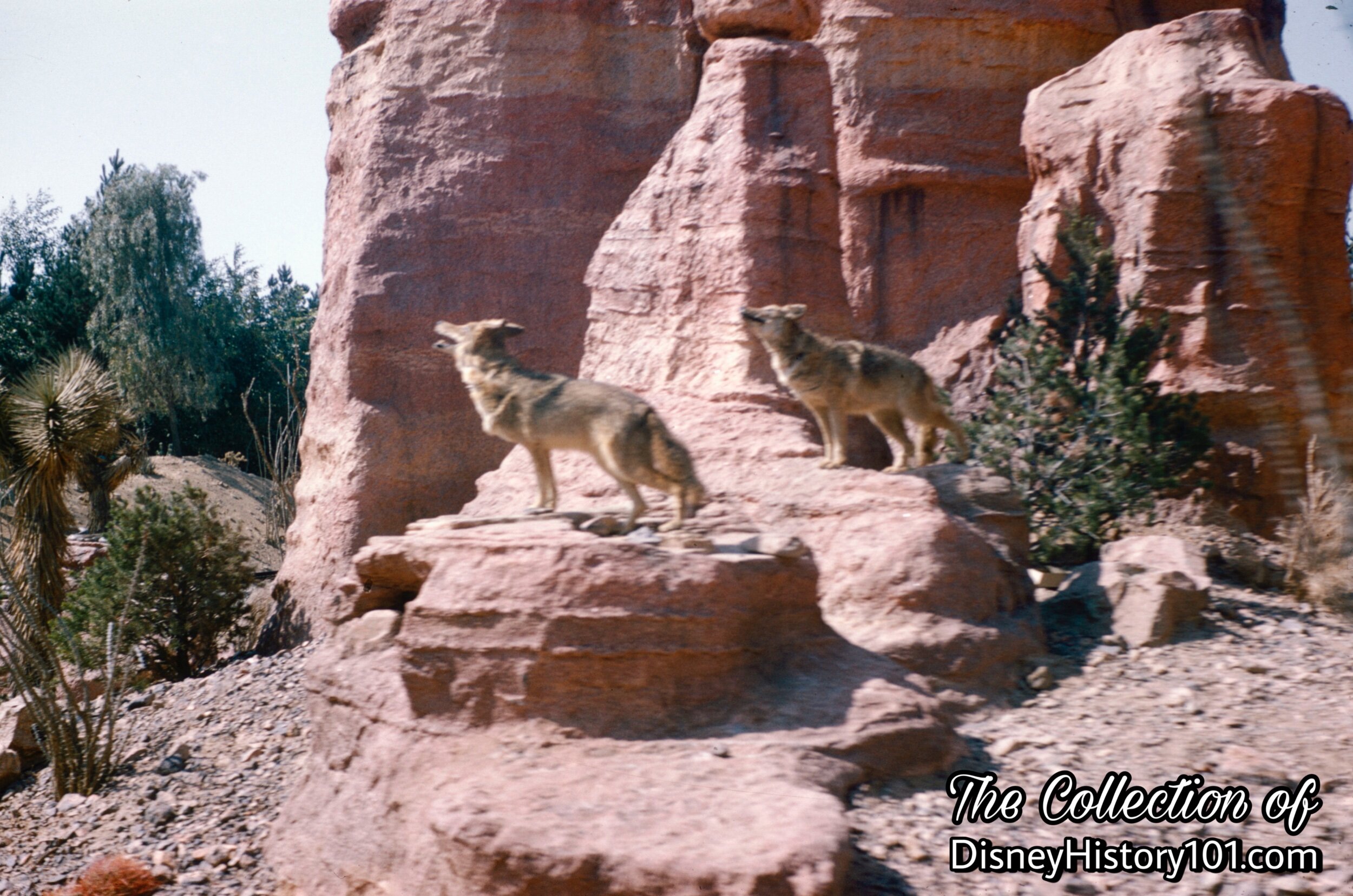
Coyote Rock
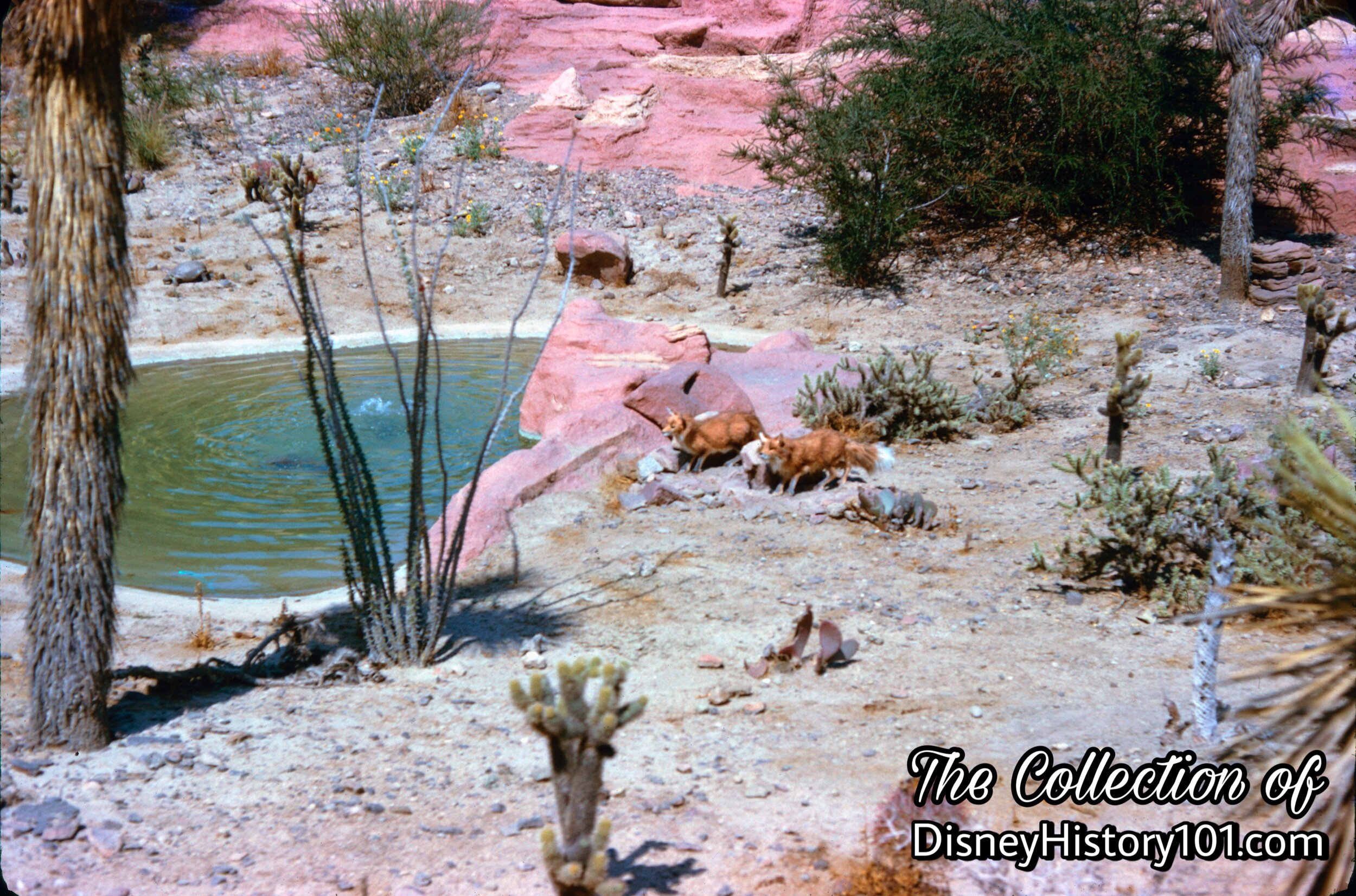
Kit Fox & Water Hole, (August, 1965)
A few kit fox have found the Watering Hole. This seems to be a popular place for Kit Foxes, Jack Rabbits, Tortoise, and Badgers to gather.
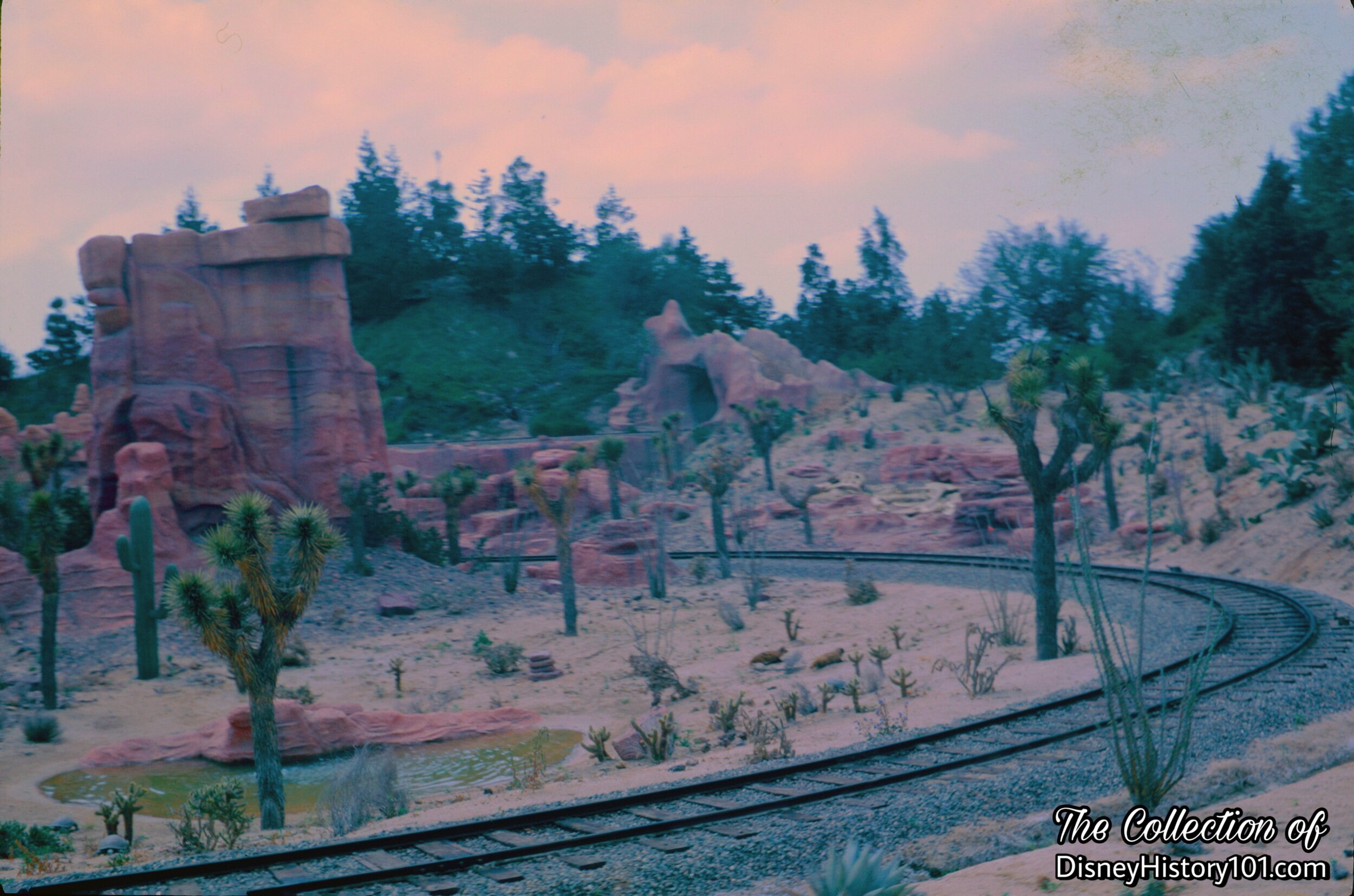
(April, 1961)
We carefully pass by Rattlesnake Gulch (on the right), we can see a number of beasts and critters (on the left), including tortoises and badgers, who have made their way to the Watering Hole, and are now sunning themselves on the sun-baked terrain of the Living Desert!
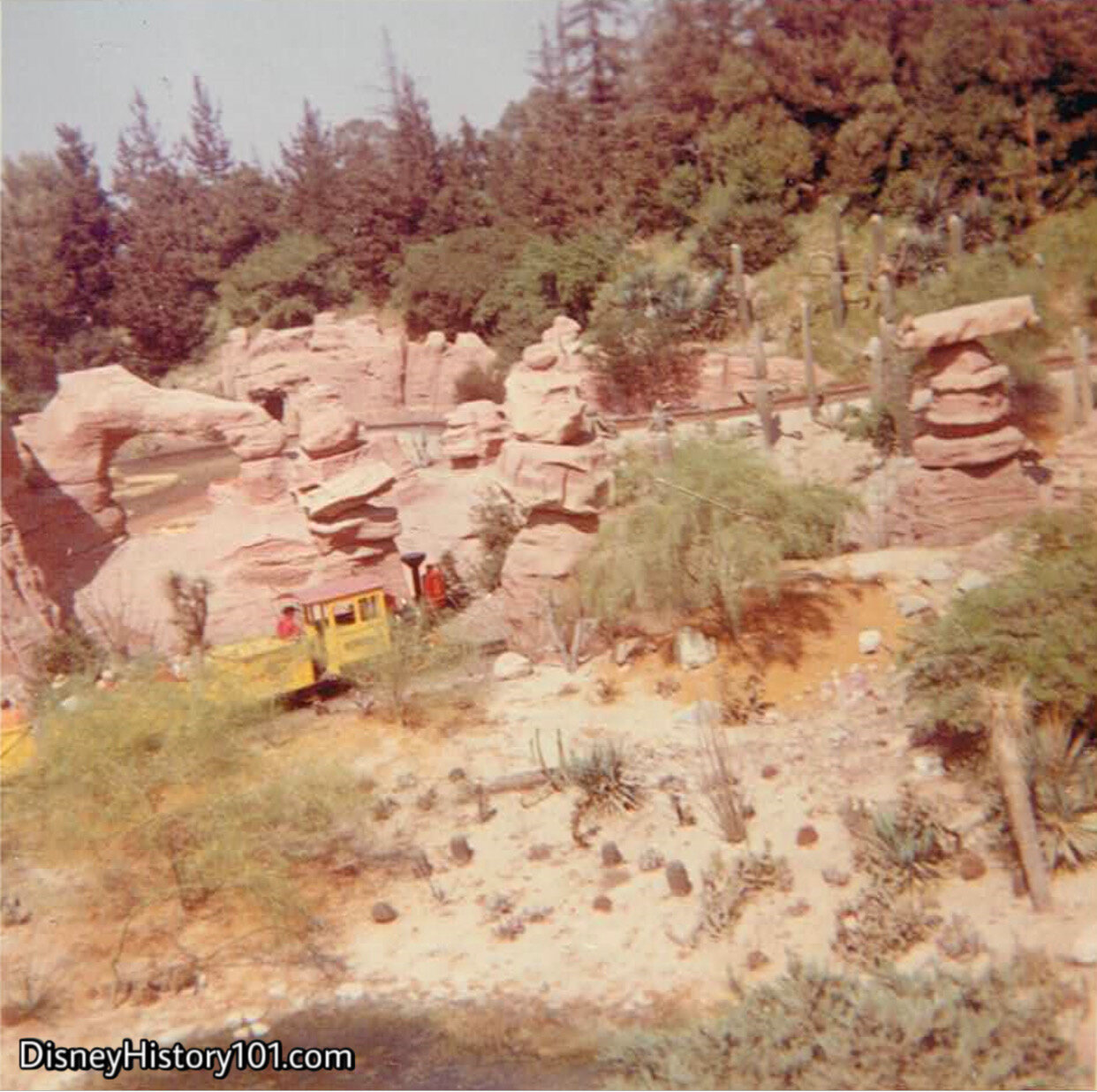
Balancing Rock Canyon
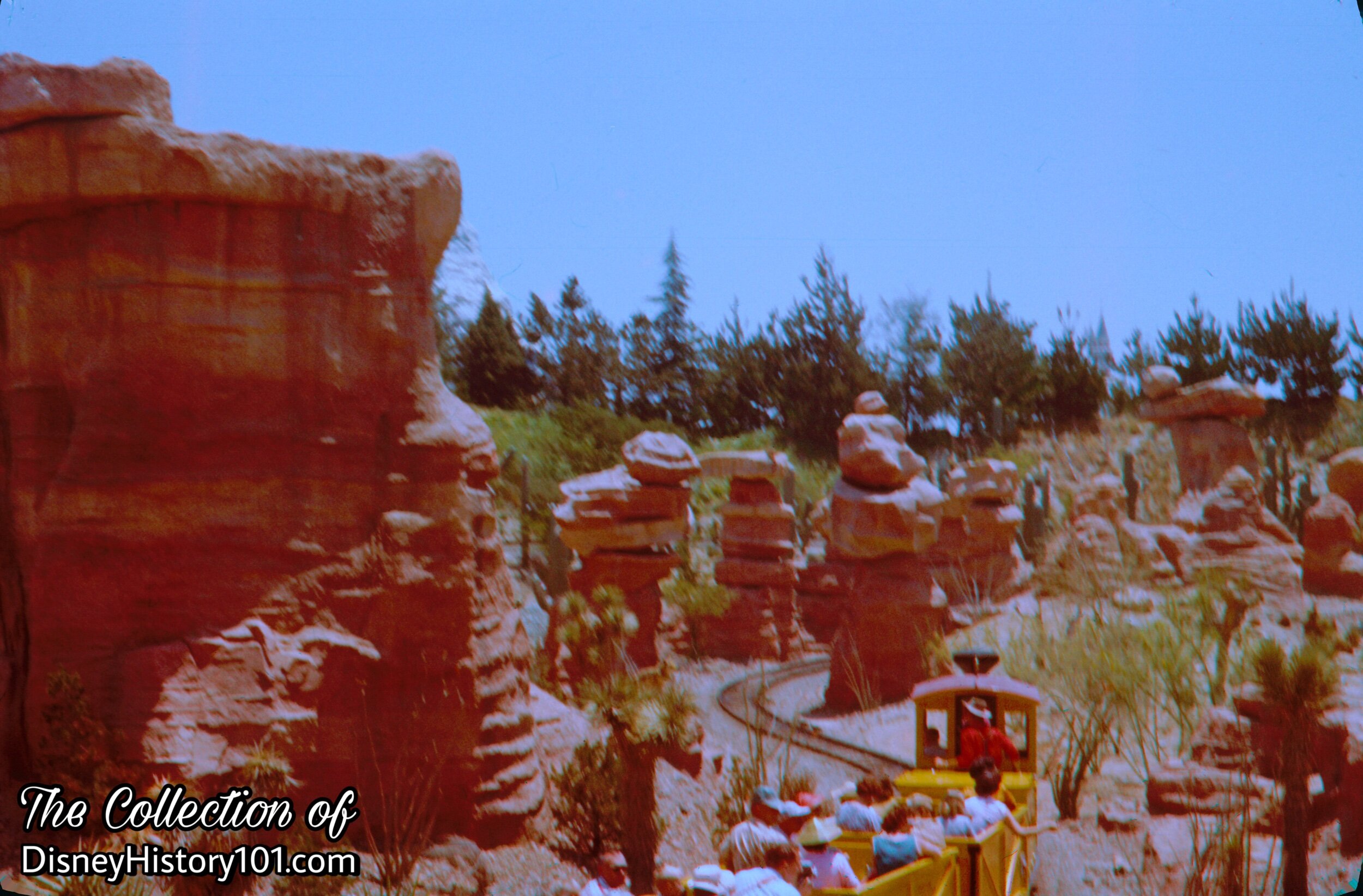
Balancing Rock Canyon, (Late 1950s/Early 1960s)
“Look out, they’re startin’ to tumble!”
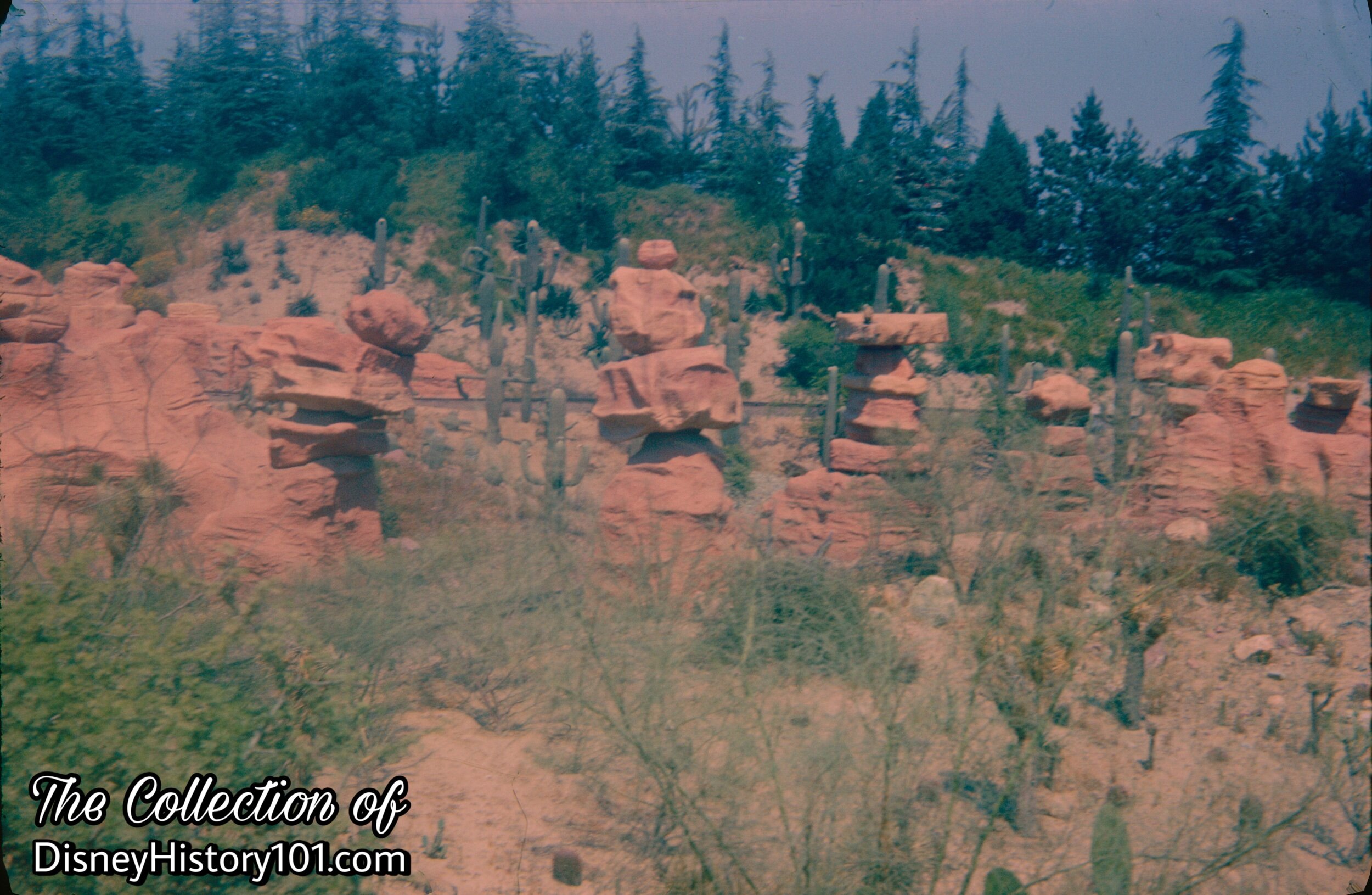
Balancing Rock Canyon, (August, 1962)
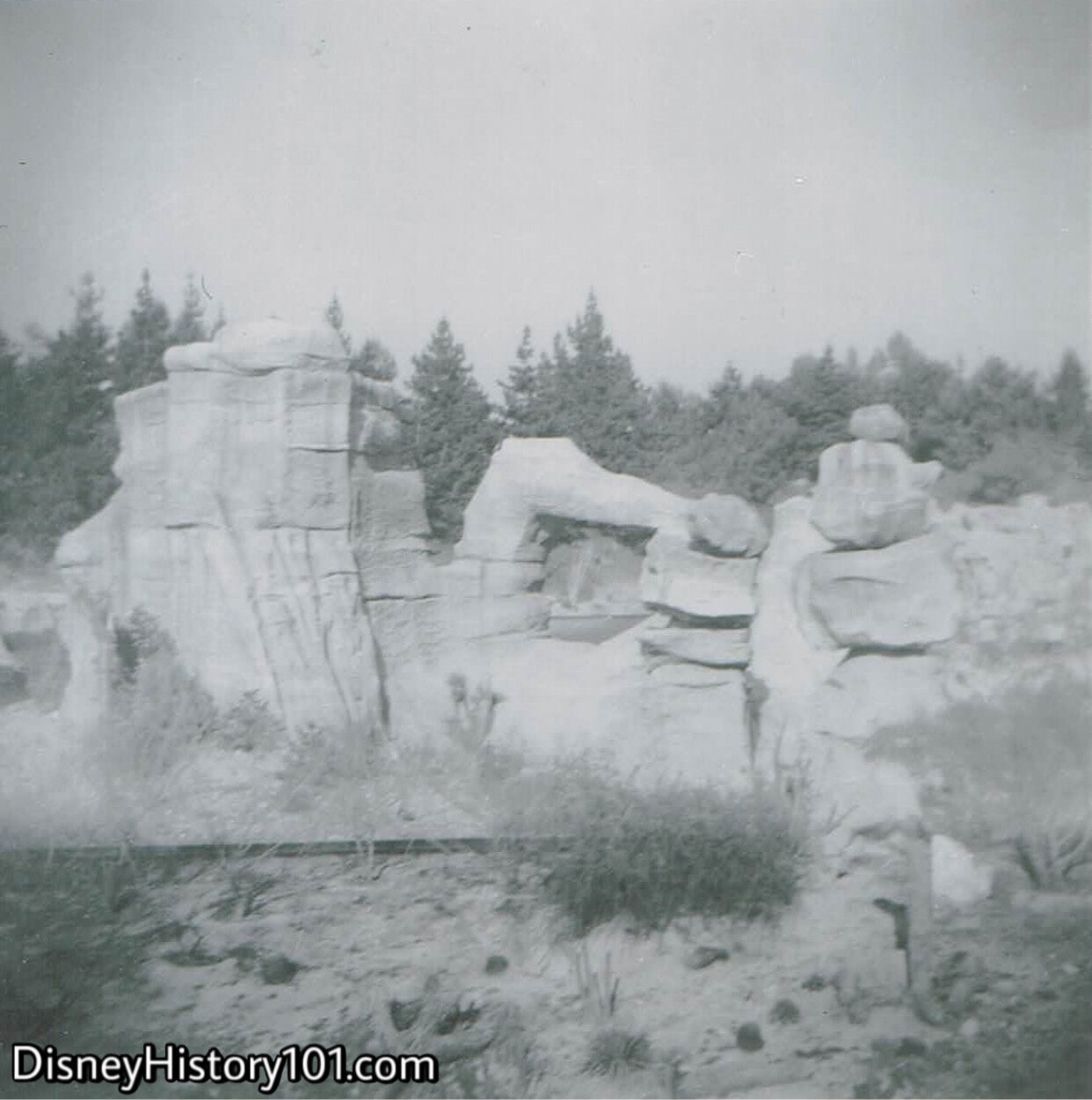
Natural Stone Arch, The Living Desert
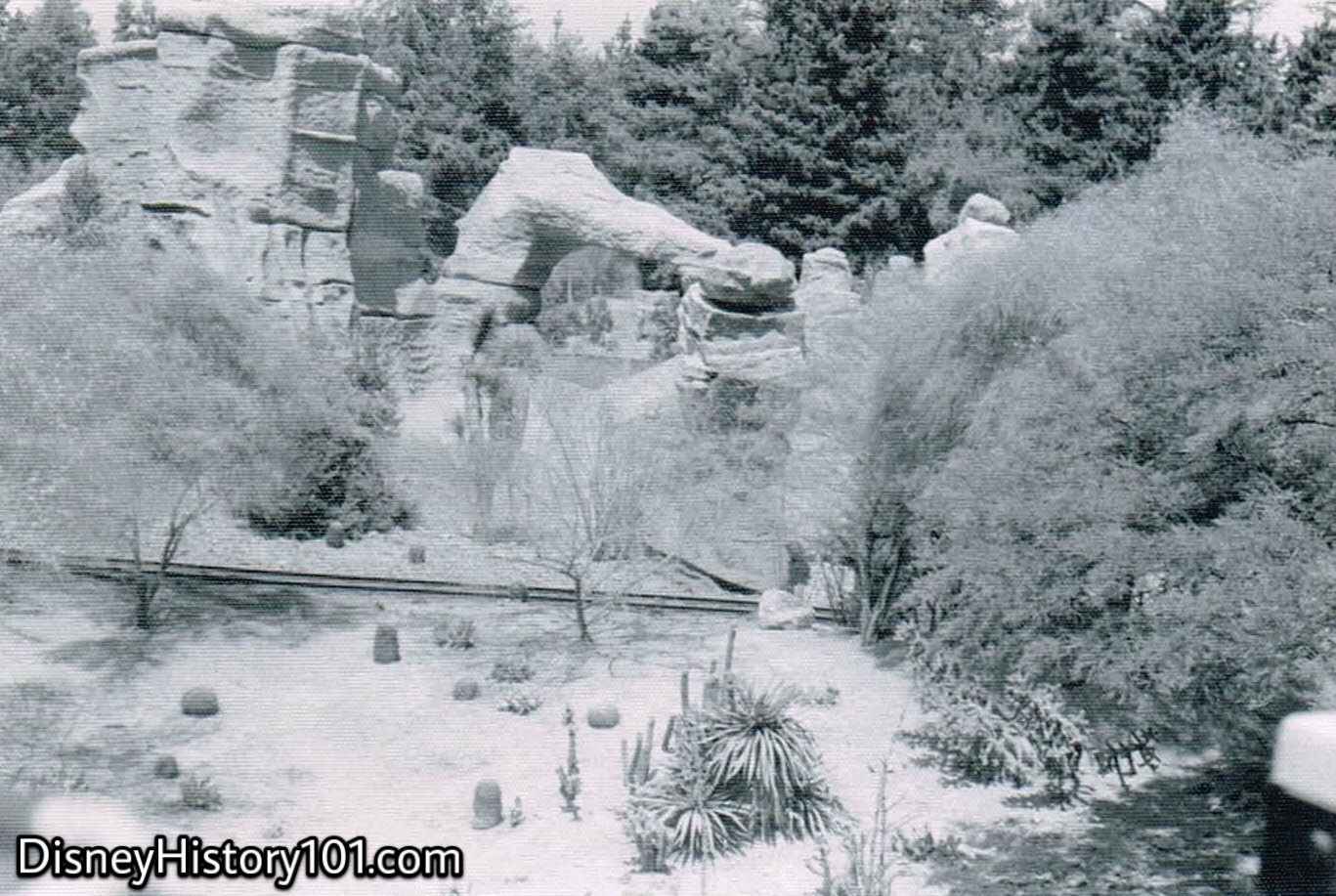
Natural Stone Arch, The Living Desert, (1975)
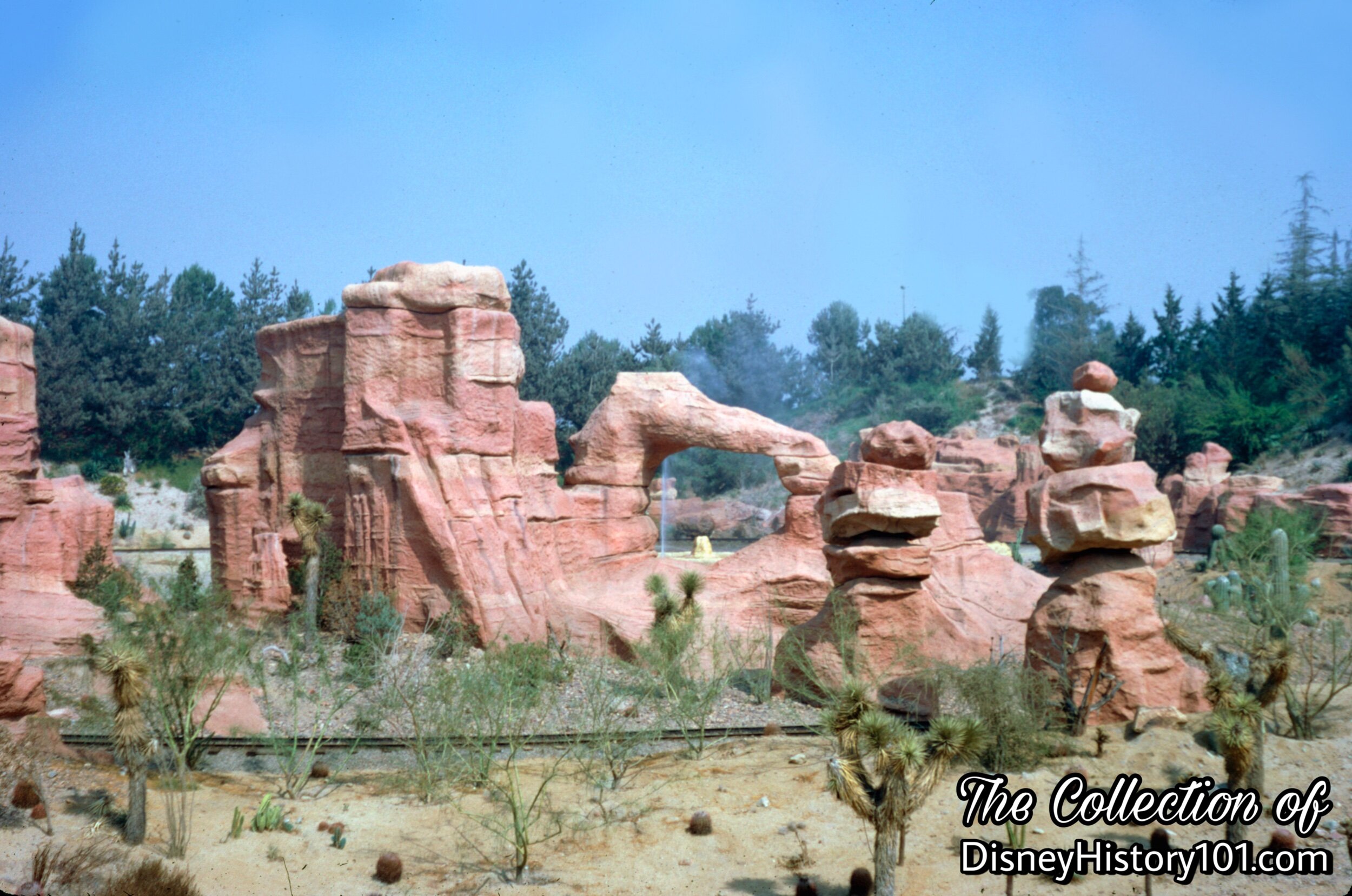
Natural Stone Arch, The Living Desert
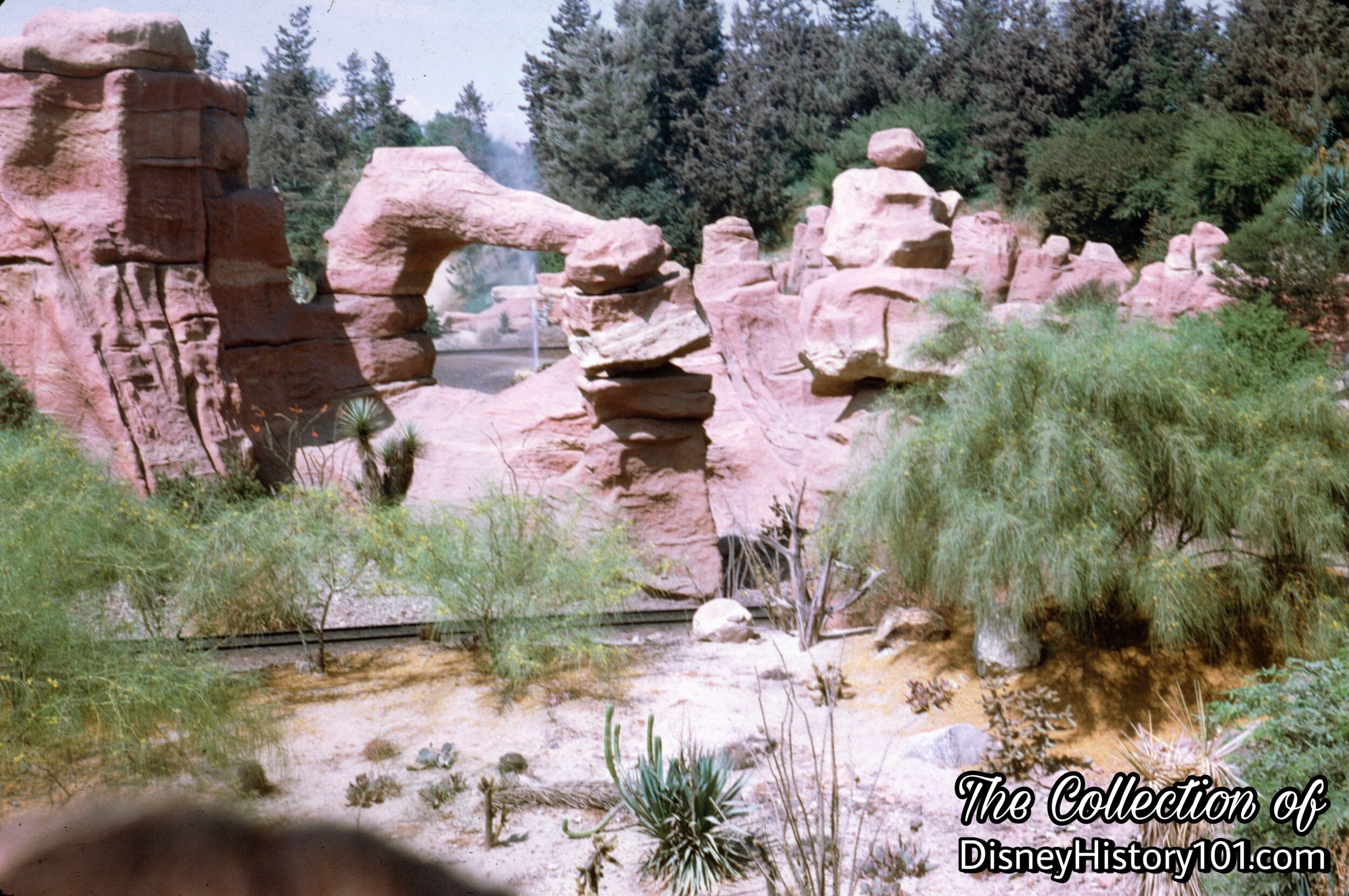
Natural Stone Arch, The Living Desert
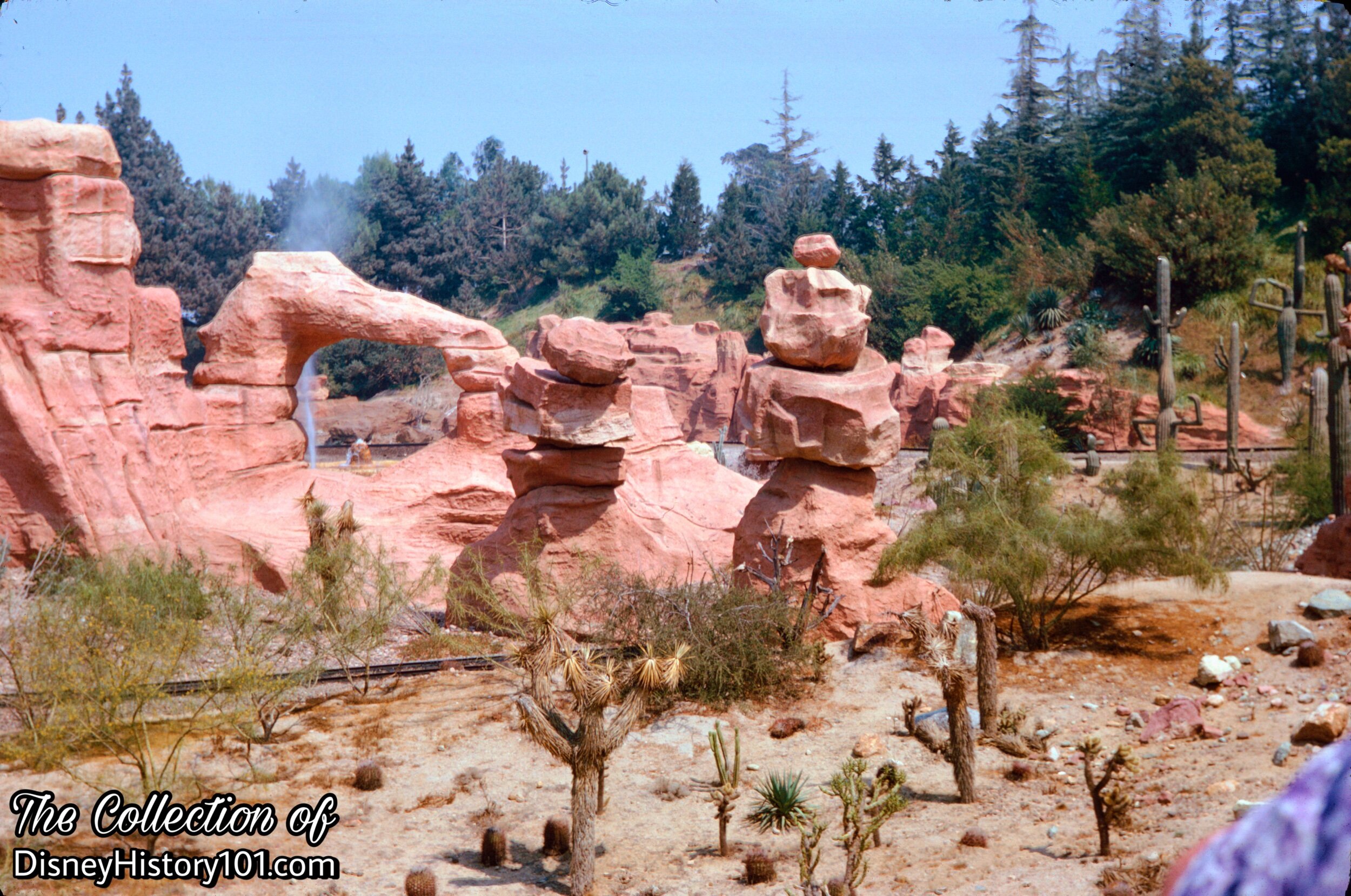
Natural Stone Arch, The Living Desert
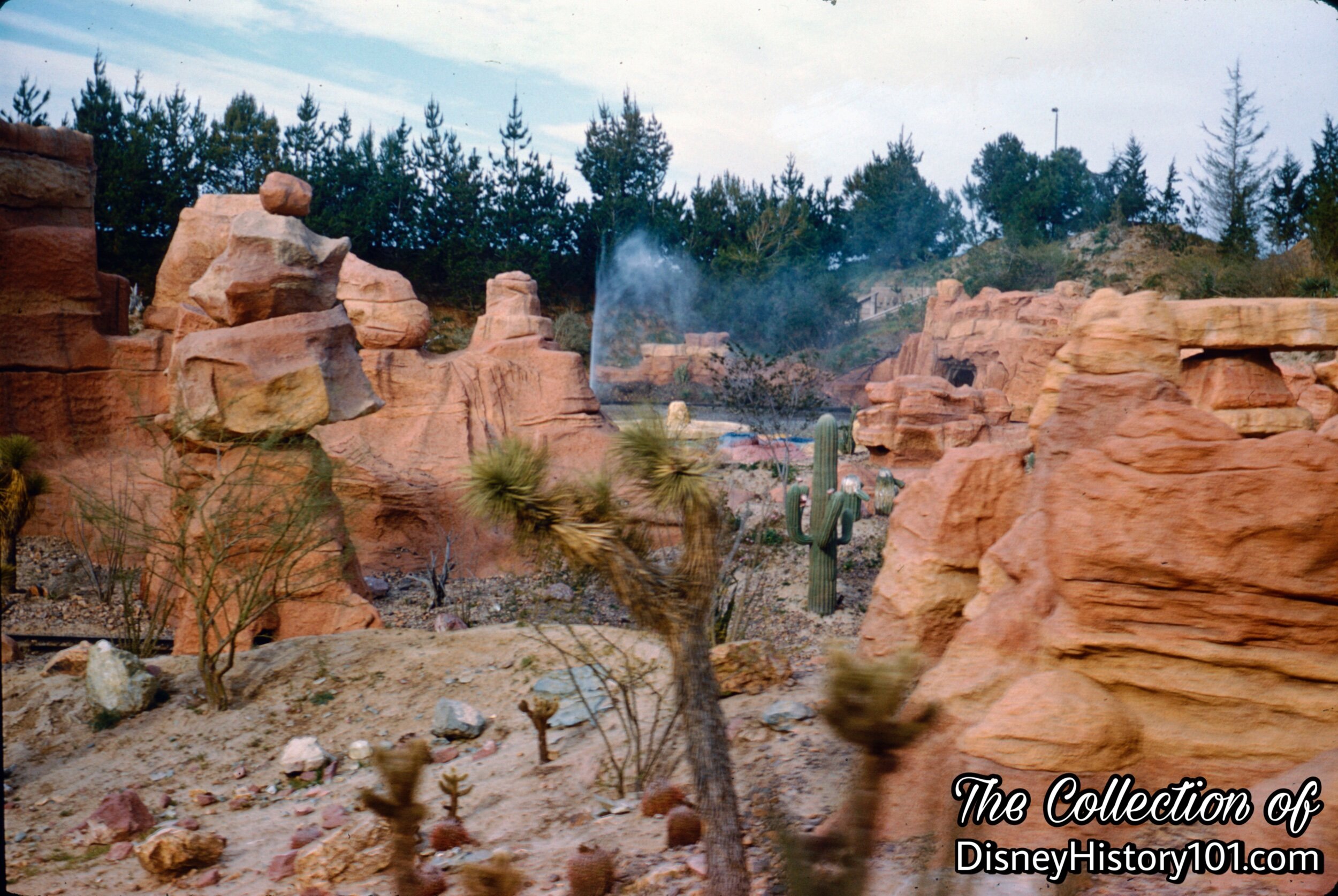
Natural Stone Arch, The Living Desert
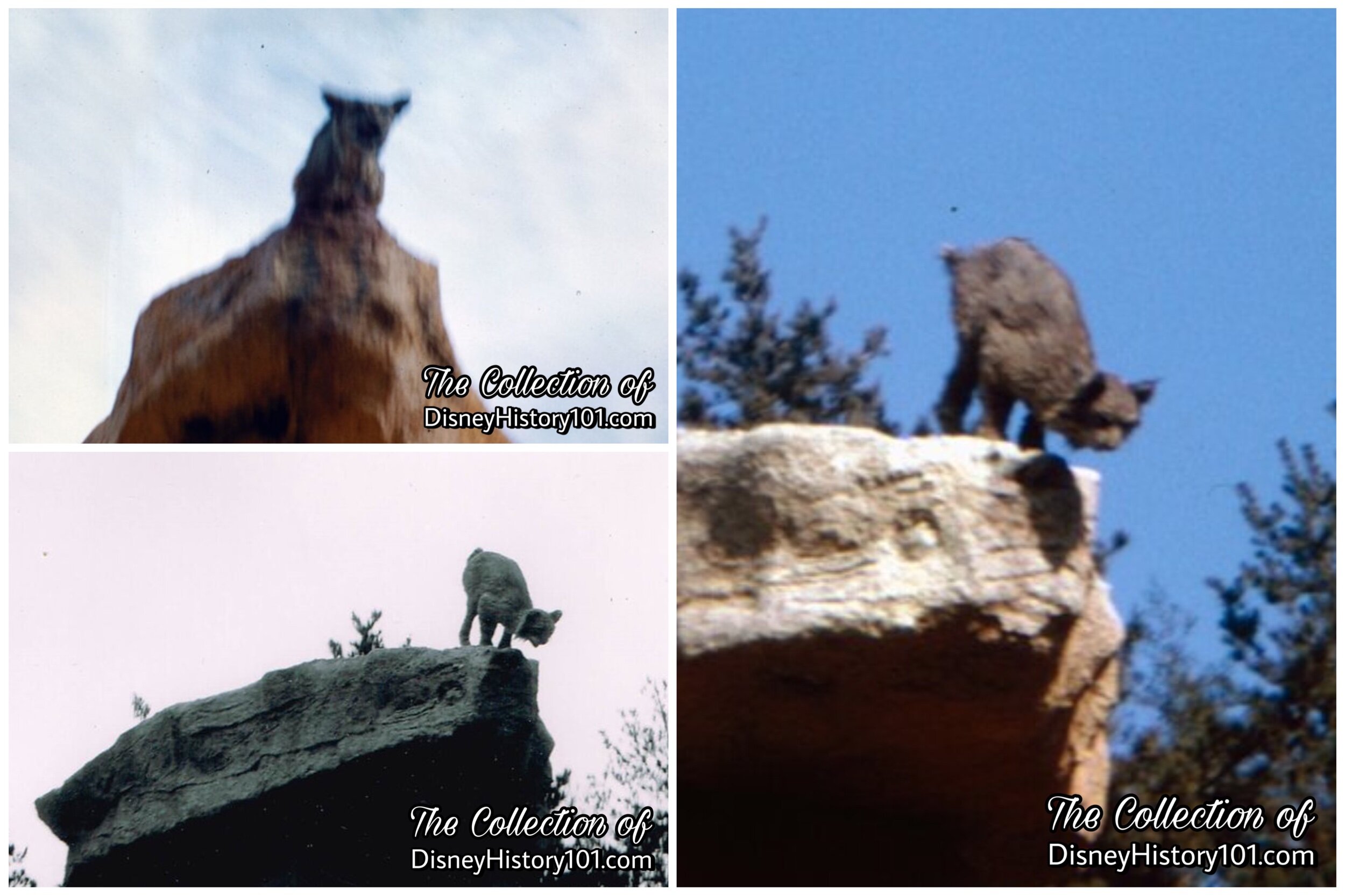
Bobcat on balancing Rock
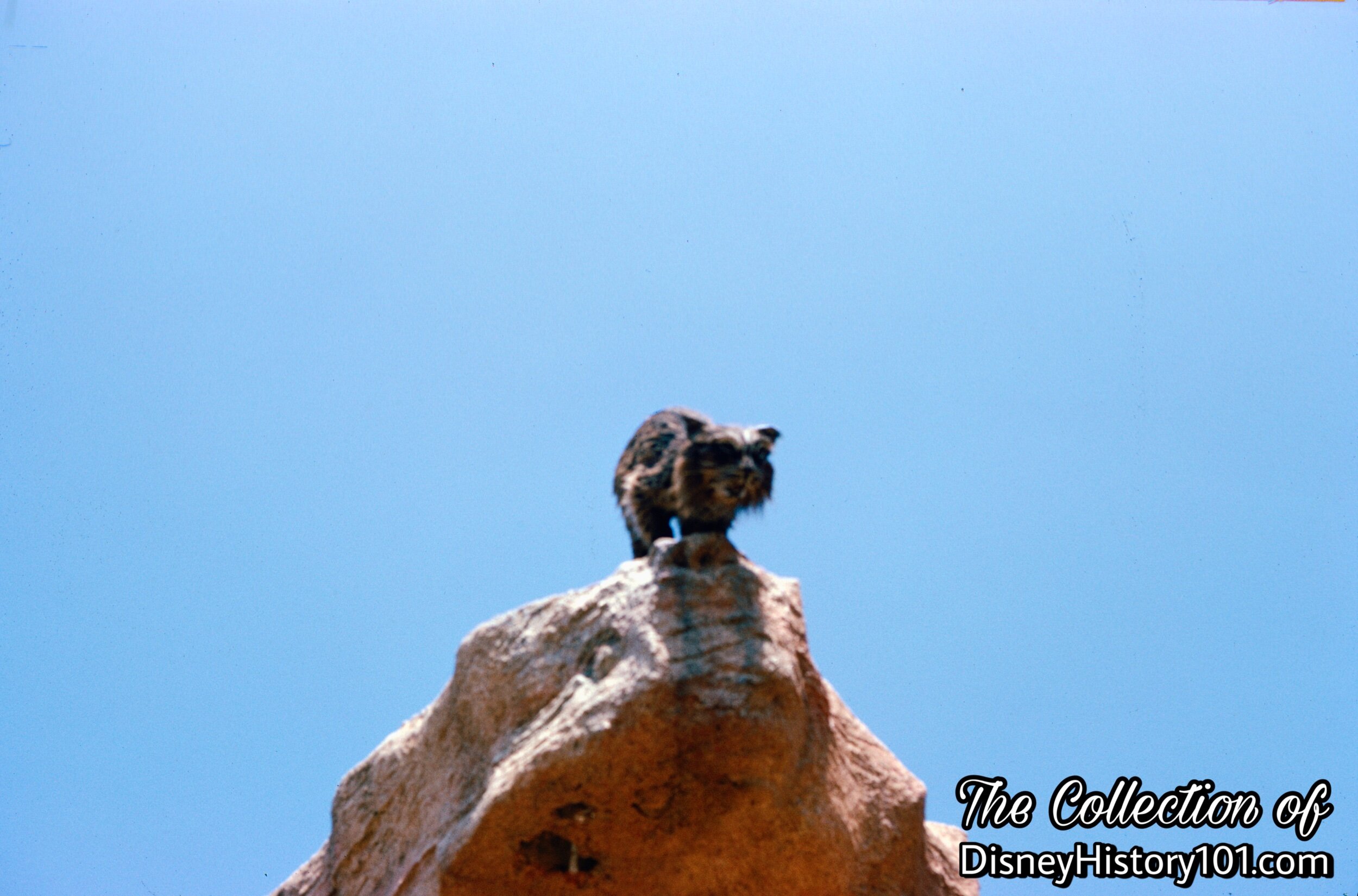
Bobcat on balancing Rock, (August, 1965)
“Watch that wildcat, lady!…”
“Glad he stayed up there. We’ve known these critters to take on a full-grown deer, more than ten times their size in weight.”
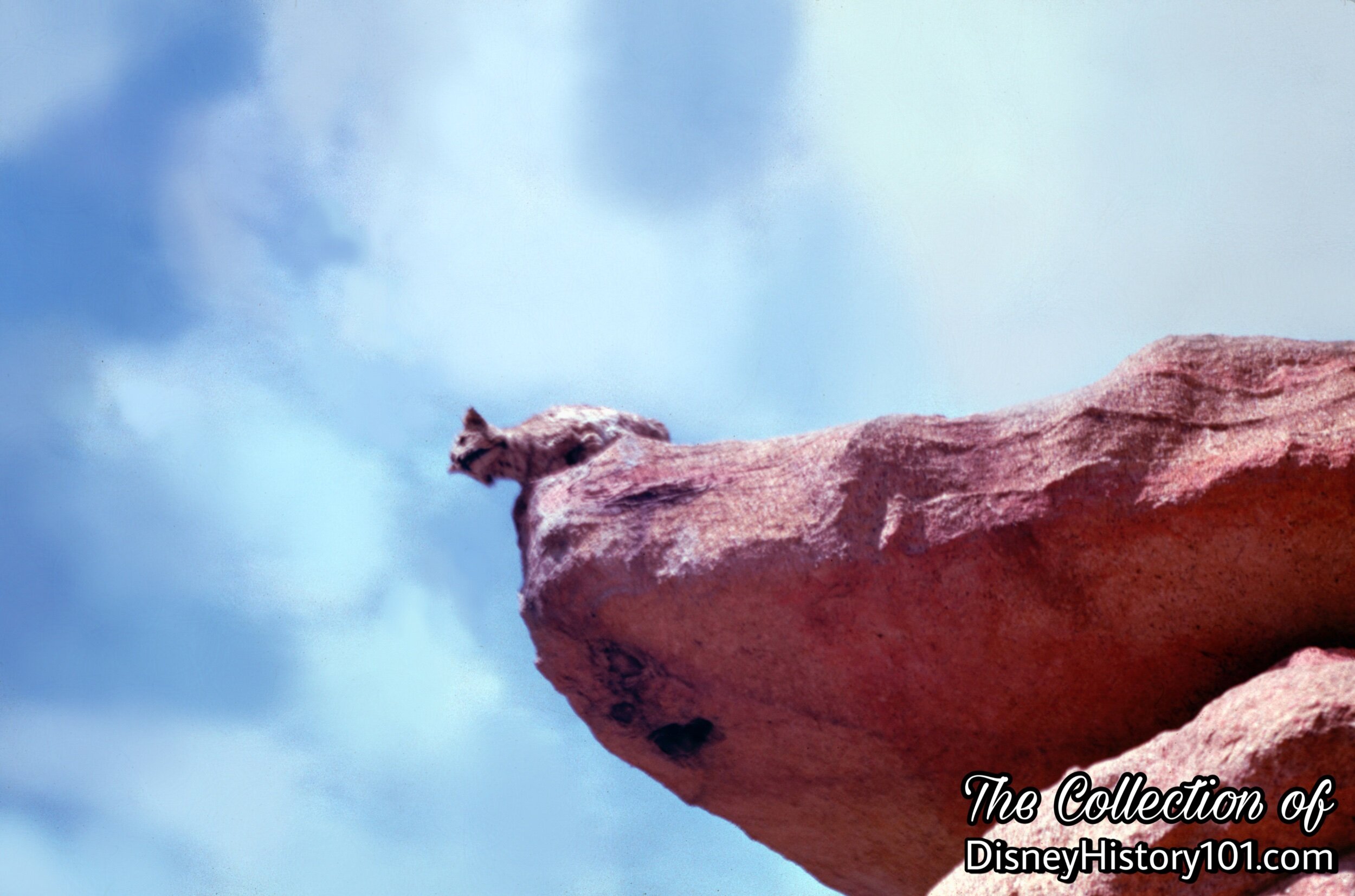
Bobcat on balancing RockWork
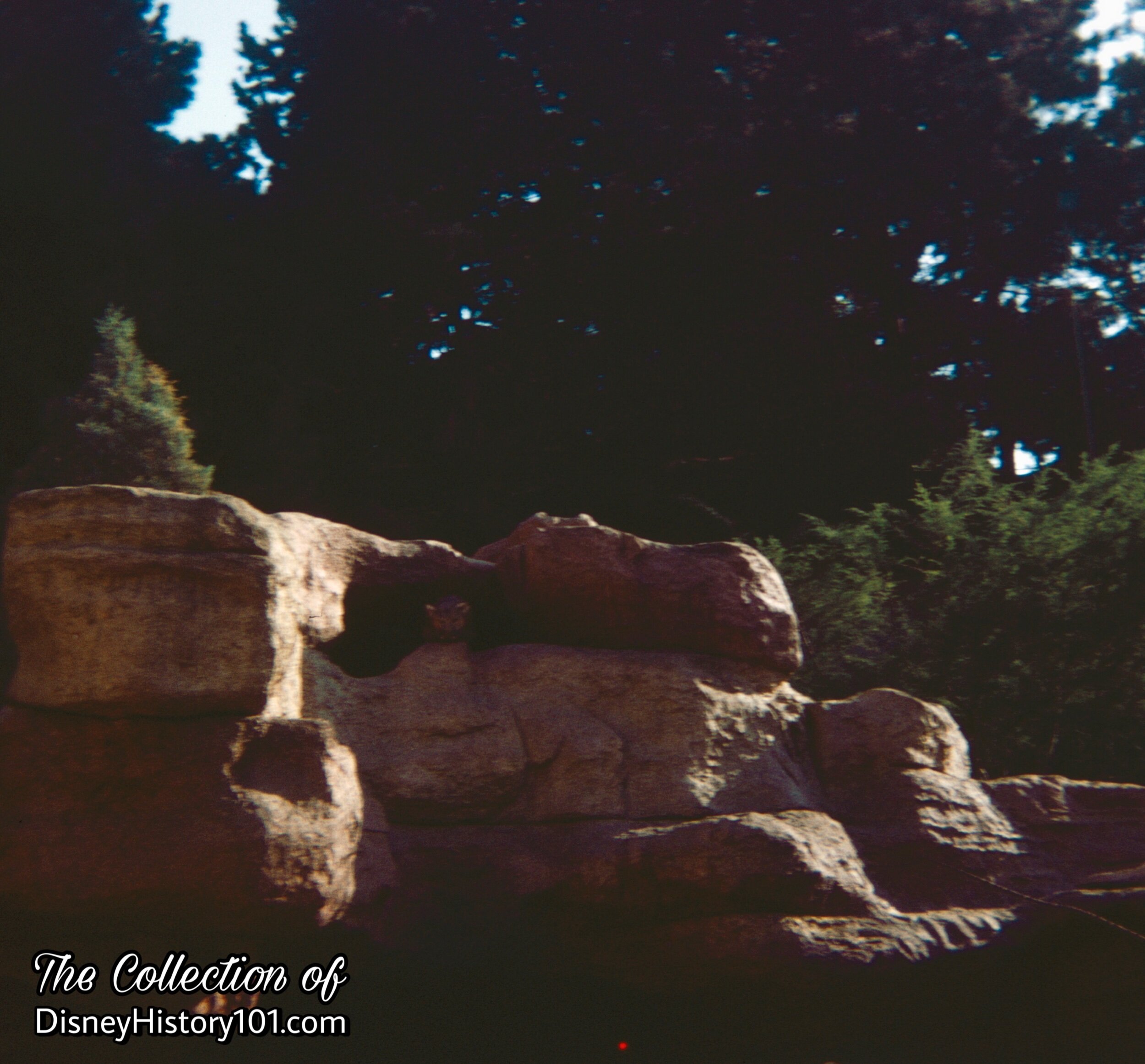
Rainbow Caverns Entrance and Mountain Lion
I’ve seen some four Mountain Lions in all of Nature’s Wonderland. It looks as if one lonesome Mountain Lion (or, “cougar” near the geysers) may have tracked us to the tunnel. Some Disneyland Cast Members around these Frontier parts have gone to naming him, “Charlie.”
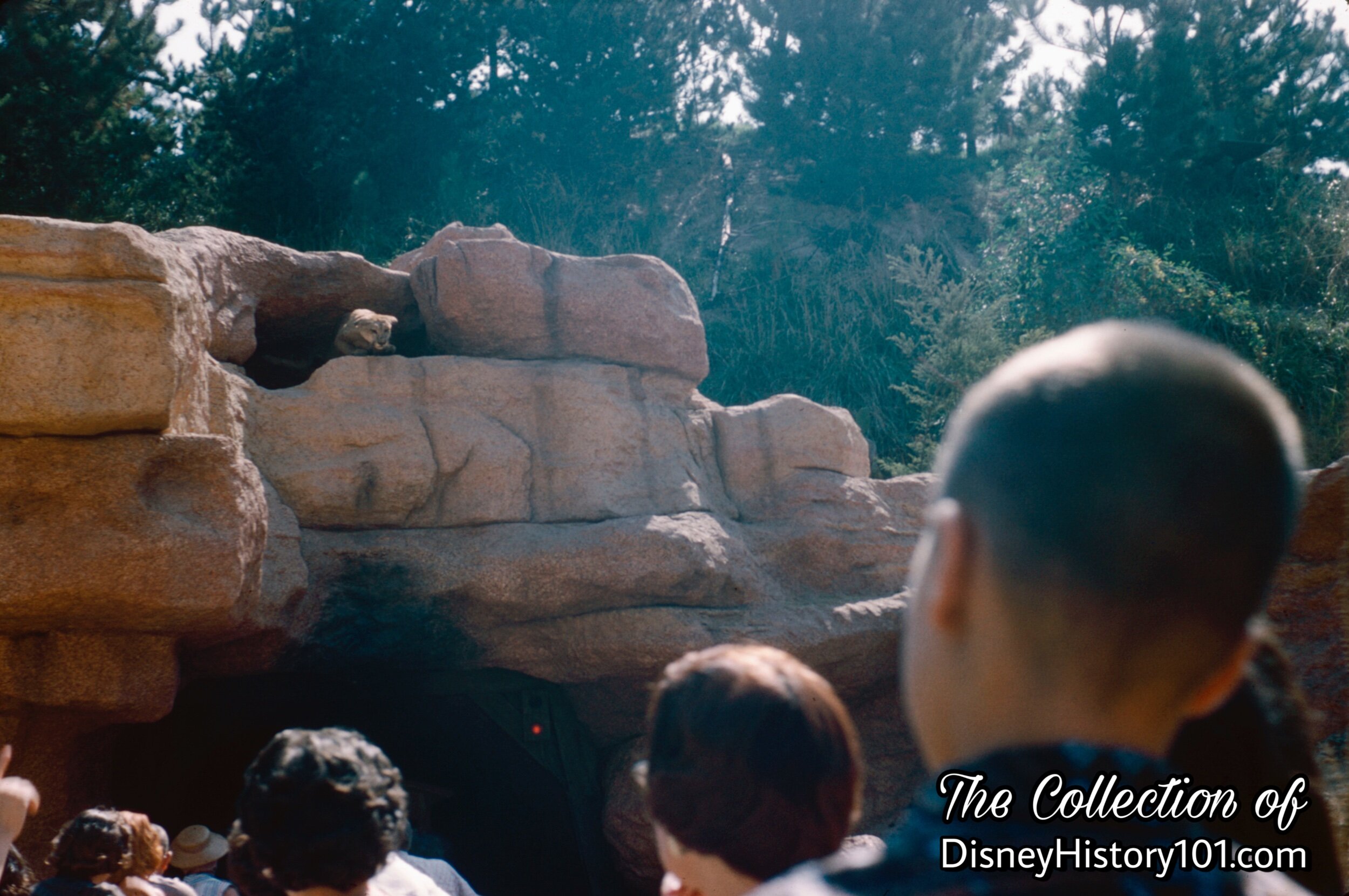
Rainbow Caverns Entrance and Mountain Lion
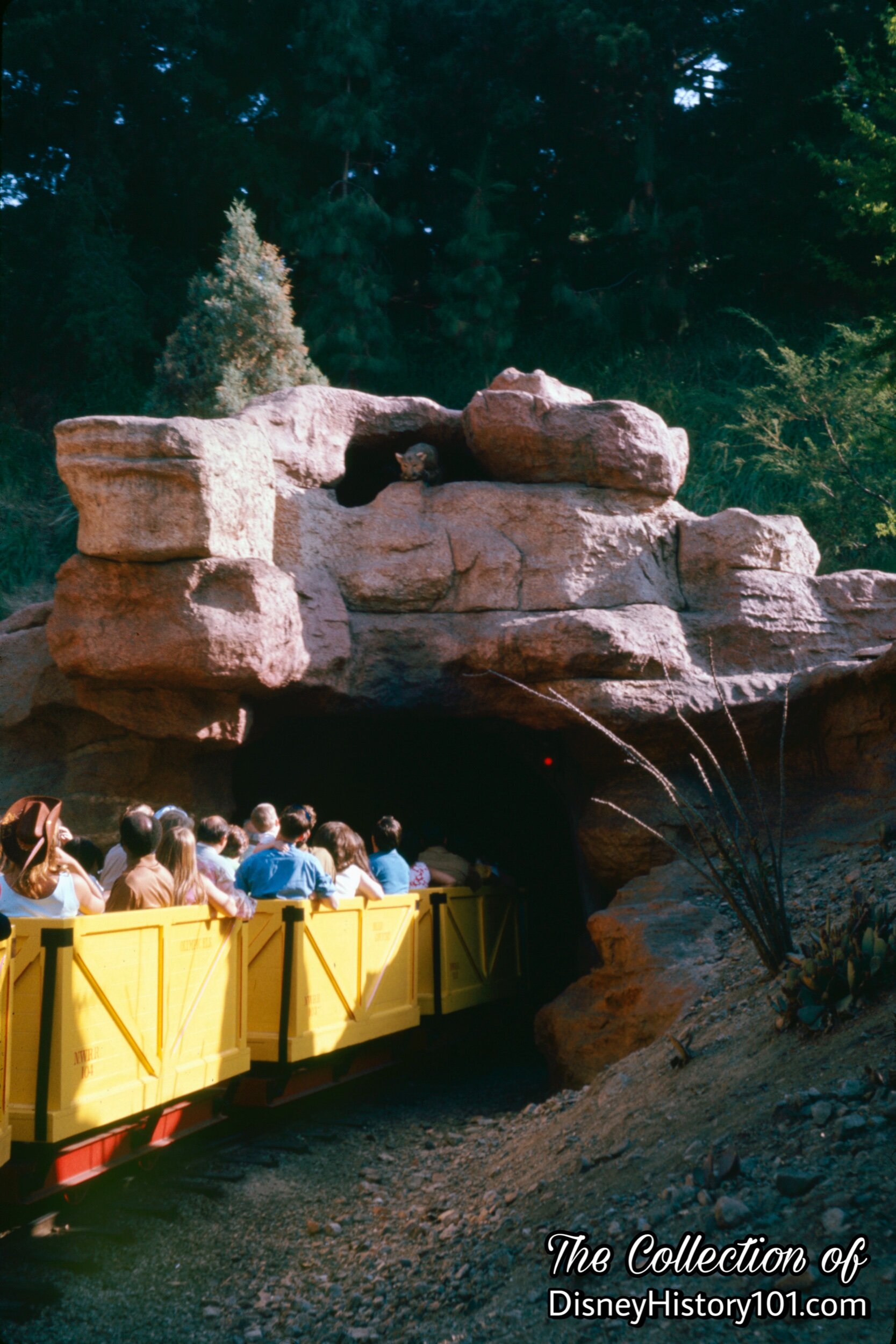
Rainbow Caverns RockWork, Entrance, and Mountain Lion
Well, it looks like we got the green signal to proceed inside the Rainbow Caverns. We’ll blow our whistle to alert any workmen or others who may be traversing the silver and gold lined caverns. Along our route, we’ll “pass bones and skeletons glowing in the natural light of the abandoned old mine, and cross a yawing chasm that once barred further exploration”, according to “News From Disneyland” (a press release document, published 1956). In the earlier years of the Rainbow Caverns, there was a many colored waterfall which “tumbles from great height in the Cavern’s weirdly lit interior to splash at the foot of the track right of way… the ‘Bottomless Pit’ and ‘River of Gold’ are other sights of the Rainbow Caverns,” according to The Disneyland News (Vol. 1, No. 12 ; June of 1956). Now guests had the opportunity to see other formations - Bridal Veil Falls, Paint Pot Falls, Red Devil Falls, Angel Falls, Geyser Grotto, Dance of the Seven Sisters, Rainbow Falls, and the Witches Cauldron.
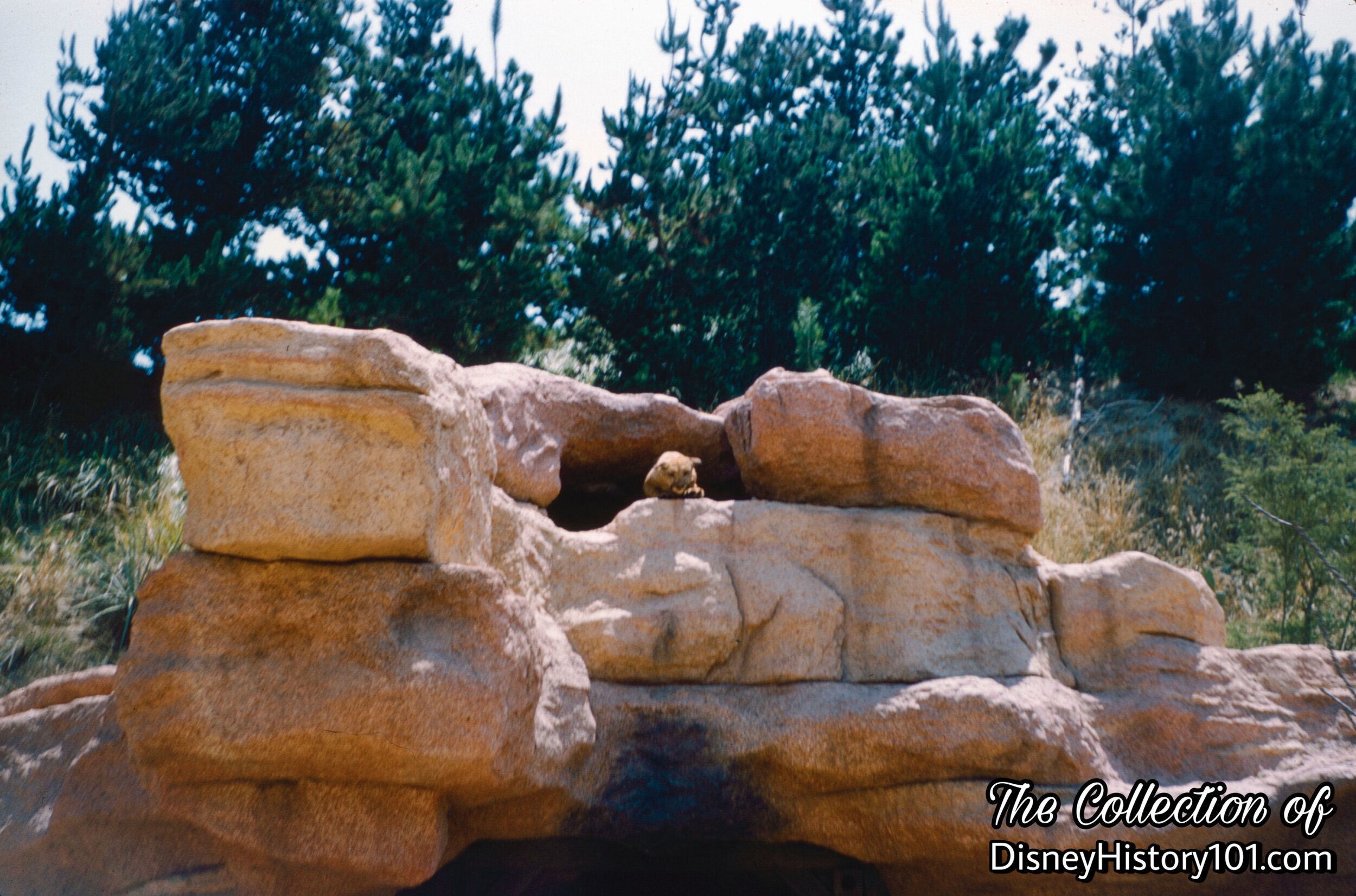
Rainbow Caverns Entrance and Mountain Lion
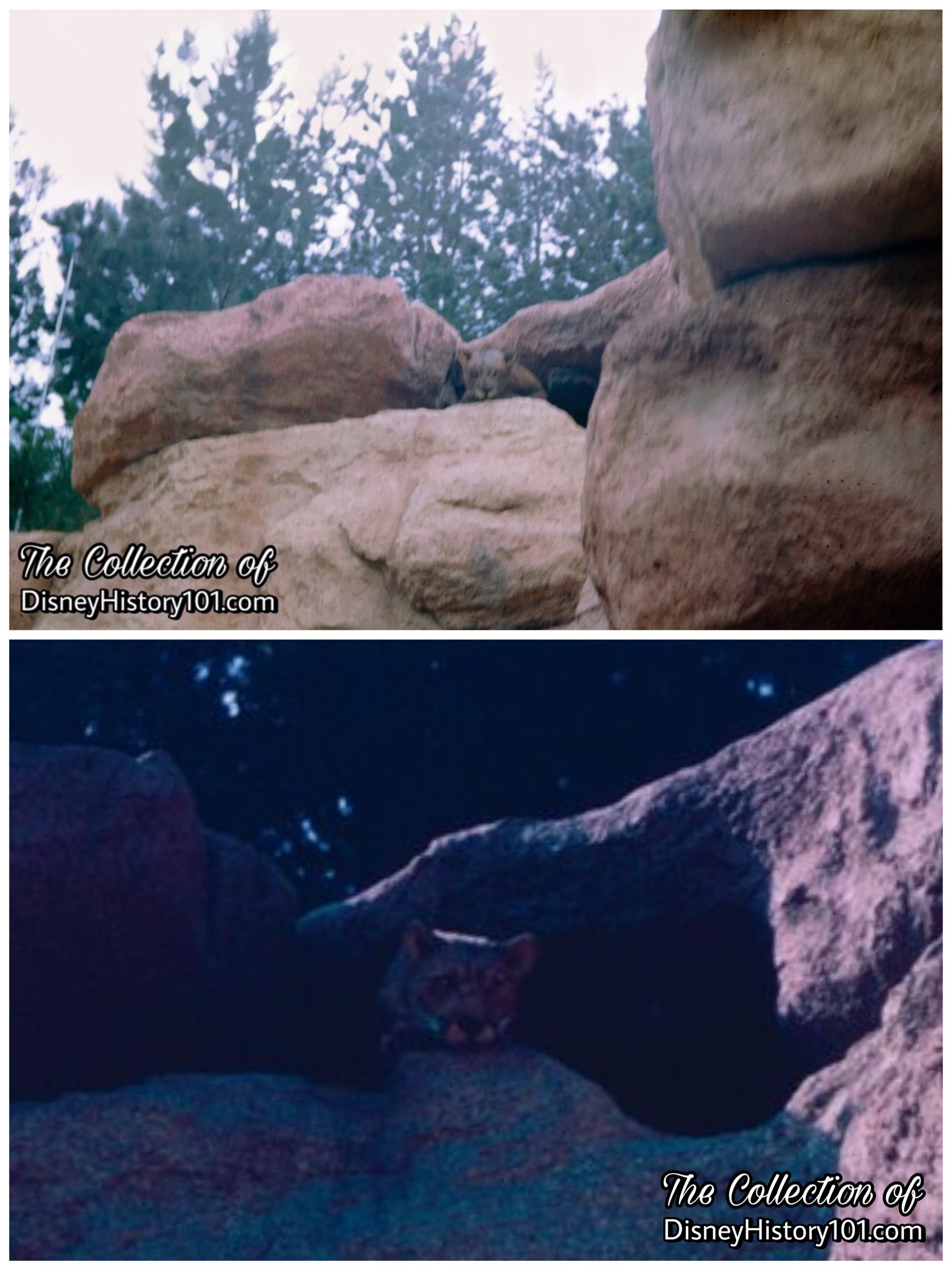
Mountain Lion, 1964 (top) and 1967 (bottom).
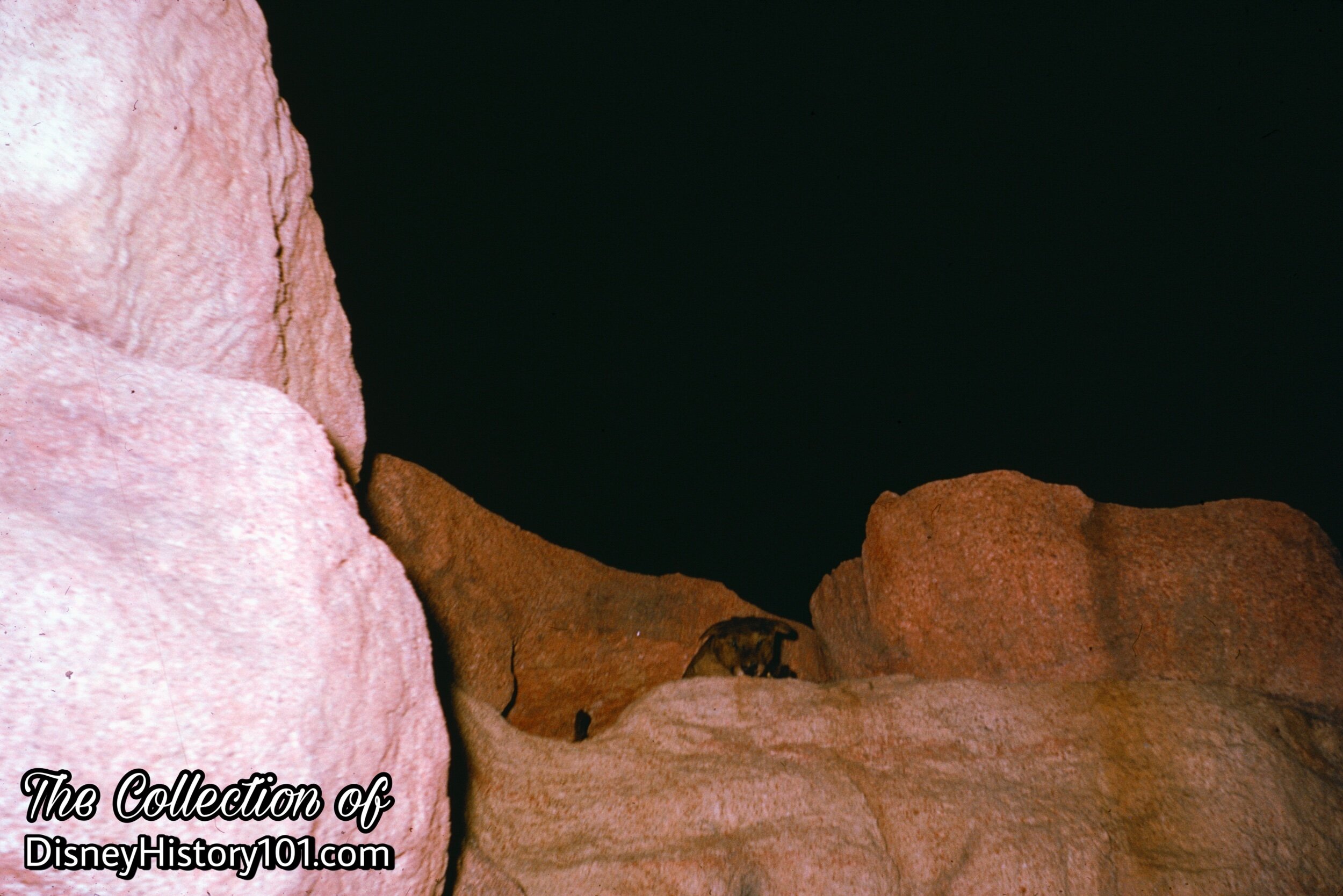
Mountain Lion
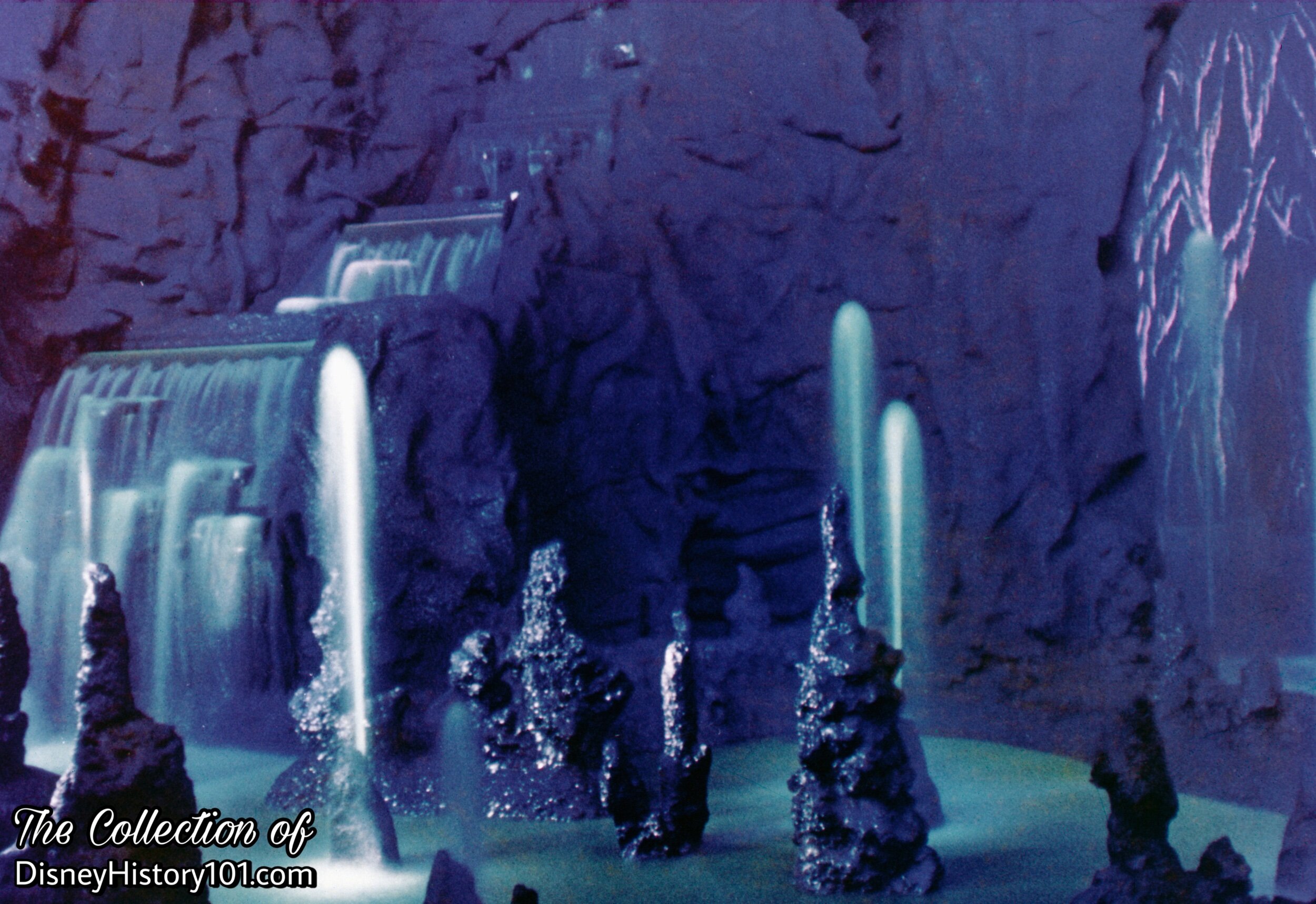
Rainbow Caverns RockWork
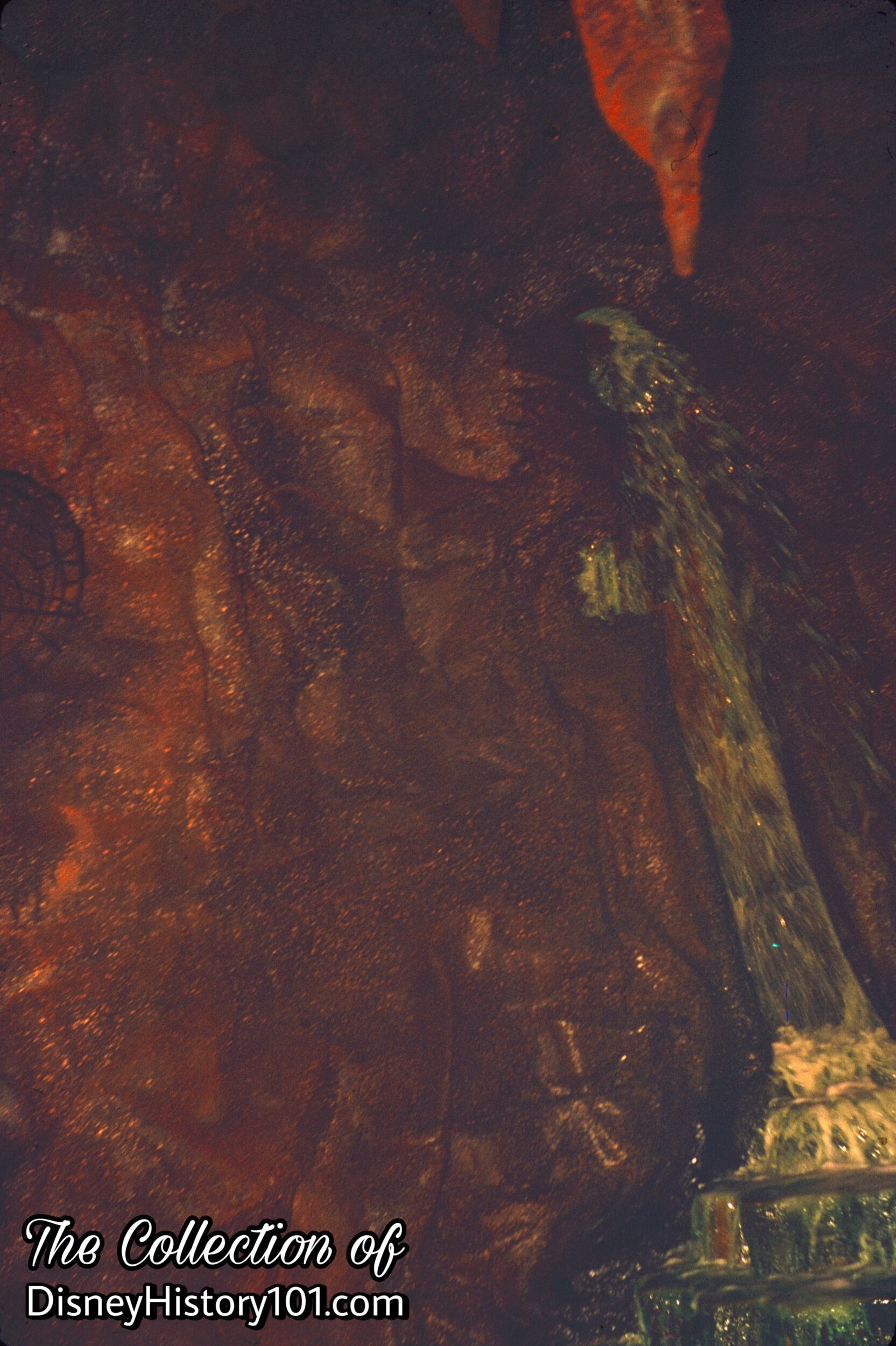
Rainbow Caverns RockWork
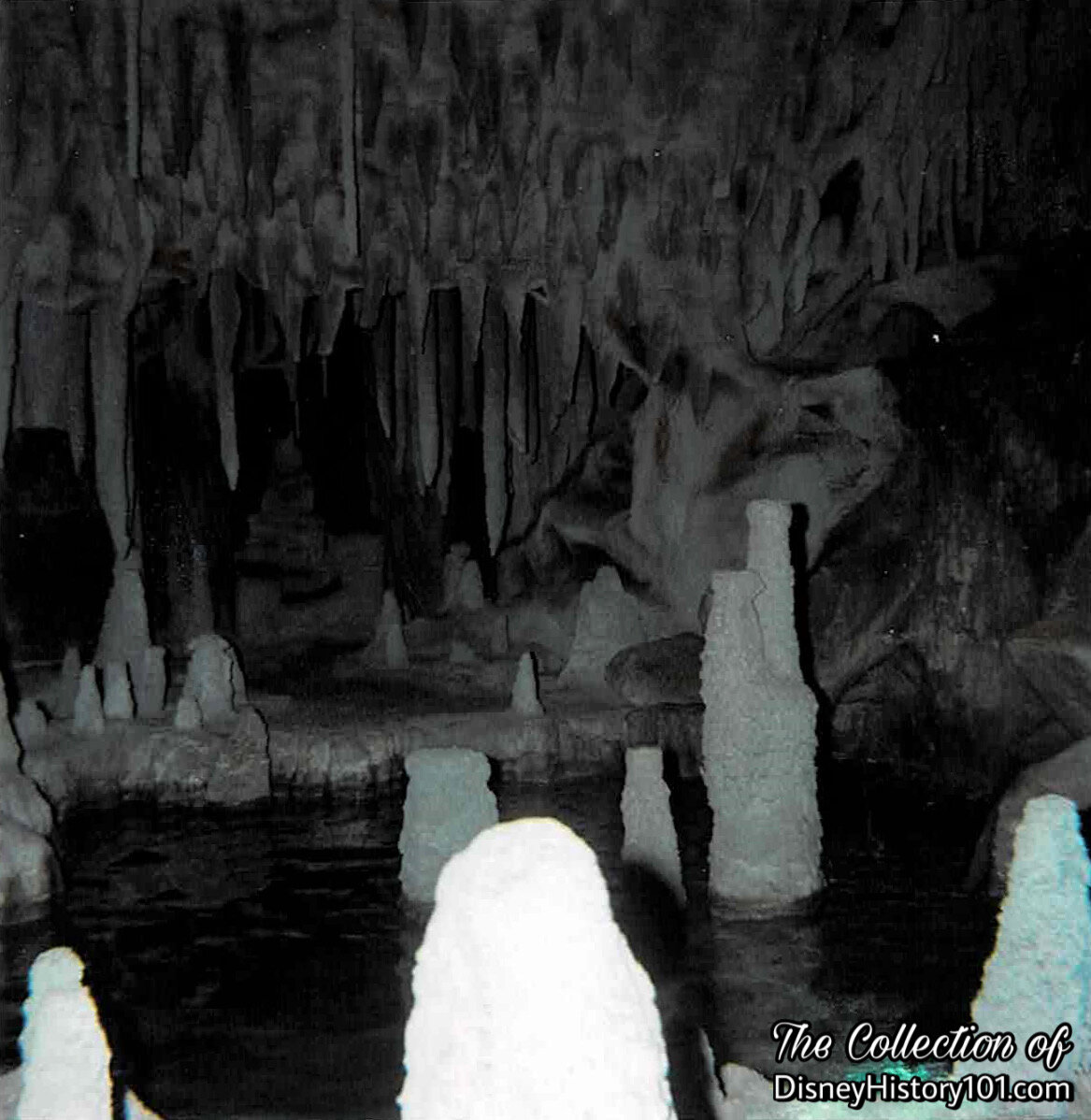
Rainbow Caverns
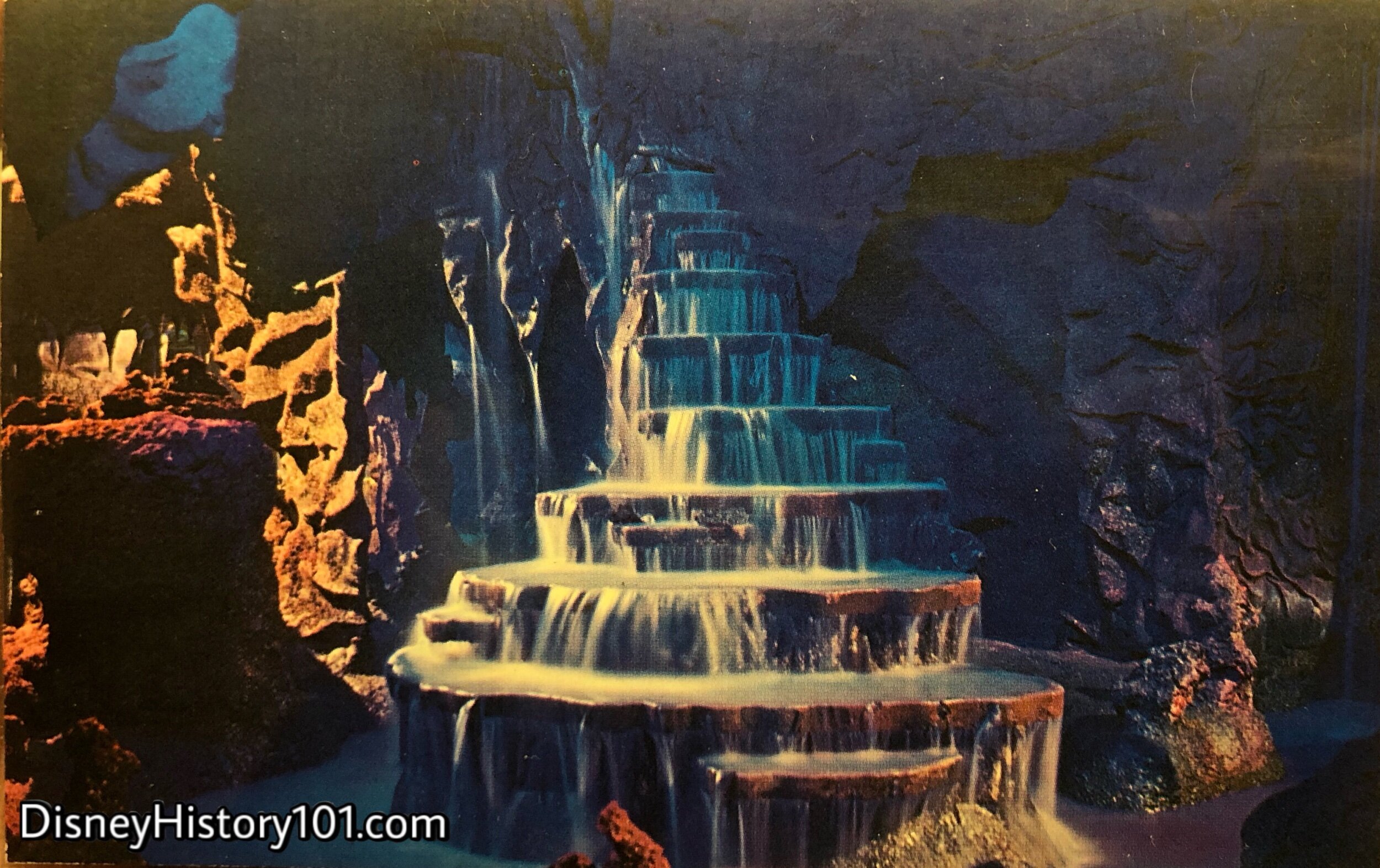
Staircase Falls, as prominently featured on a souvenir postcard.
“The Rainbow Ridge mine train tunnels deep into the beautiful Rainbow Caverns where surging waterfalls and multi-colored stalactites and stalagmites are viewed in breathtaking splendor.”
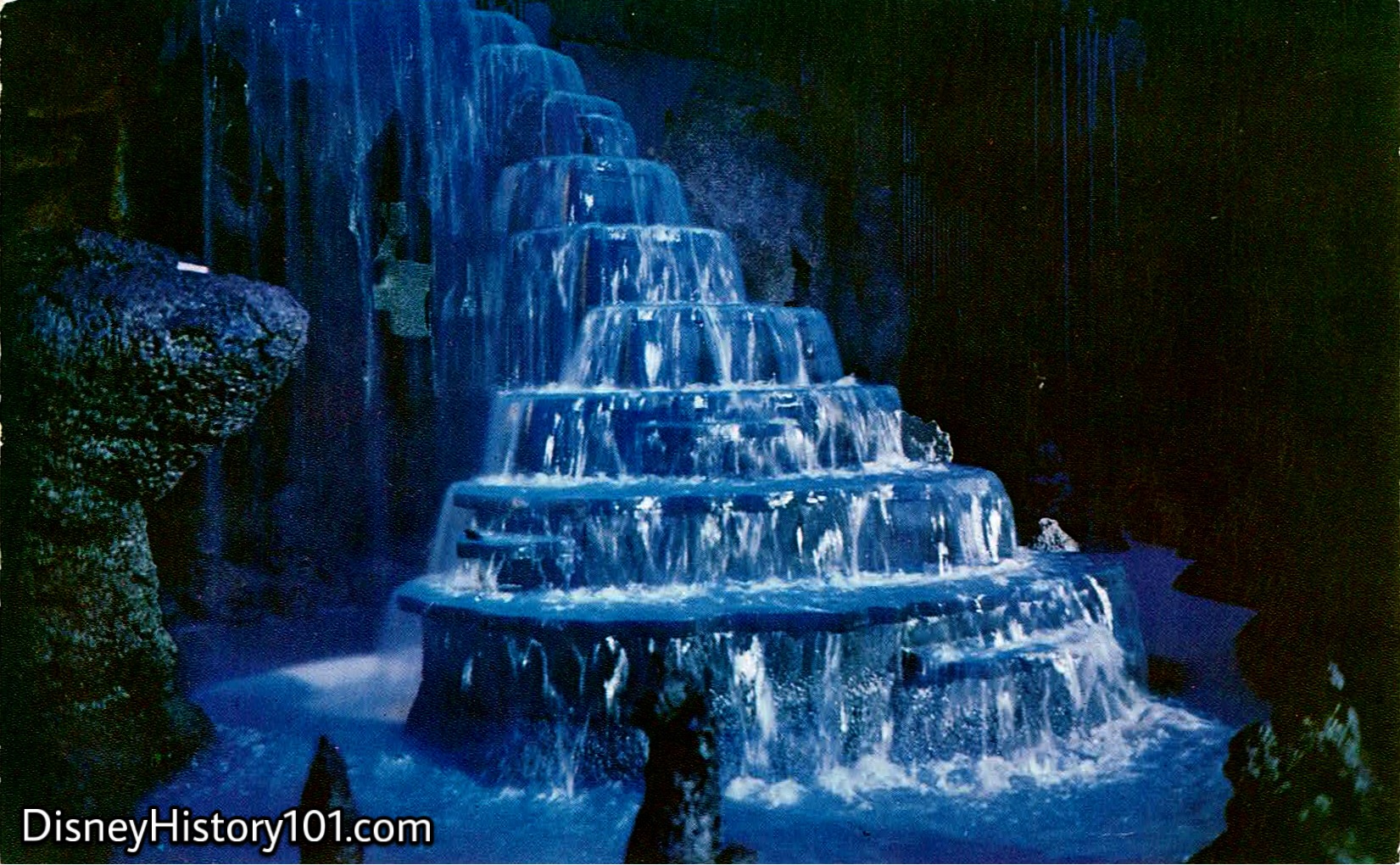
Rainbow Caverns Staircase Falls Rockwork, as prominently featured on a souvenir postcard.
“The Rainbow Caverns”
“Now we’re going deep into the earth to view the dazzlin’ Rainbow Caverns. You’ll see giant stalagmites, stalactites ‘n colorful falls on ever side. Say, if yuh look real careful, you’ll see Geyser Grotto ‘n even the Witches Cauldron…!”
According to Disney News (Spring, 1985), “A designs challenge posed by the addition of the Mine Trains through Rainbow Caverns’ became a springboard to one of Disney’s creative axioms. After winding through the desert terrain, the ol’ prospector’s train was to end up in a cavern of multicolored waterfalls, iridescent pools and geysers.” The original Rainbow Caverns featured all sorts of “true-life-like” formations. There was the golden Bridal Veil Falls, Red Devil Falls (red water pouring over rocks shaped like a devil), the Witches Cauldron… (which had red water falling over rocks shaped like an old witch, and then into a bubbling pot below), Paint Pot Falls, Geyser Grotto (spelled “Gyser Grotto” on a directional sign in the Caverns), and the falls of the Dance of the Seven Sisters (which gave the appearance of women dancing).
All the “Cavern Building” dark ride features were created by Claude Coats with schematics (like elevations) drafted by Sydney Louis Lev. The Second Edition of “Disneyland - The Nickel Tour” preserves images of Claude’s colorful concepts and developmental designs on pages 133 & 134. “Claude first set out designing a series of caverns, set deep in the mountain. He began by using an interesting asset the Disney Studios still had lying around... some leftover set pieces previously used in Walt's live-action feature film, 20,000 Leagues Under the Sea. (The rest of the sets wound up in Tomorrowland.) … Claude employed a crew of carpenters for several weeks, nailing up lumber and welding metal, turning the random set pieces into believable caverns. Before long they would be reincarnated as a part of Disneyland history.”
Of course the most spectacular of these water features was the multicolored Rainbow Falls - a magical effect that did not come about by some mere “happy accident.”
“‘I was trying to work out a rainbow-colored waterfall for the Mine Train ride,’” said artist designer Claude Coats. “‘I thought I had the thing working pretty good.’” At this time, Walt “called on a noted scientist to determine if it could be done.” This scientist’s name was Heinz Haber, a colleague of Werner Von Braun’s, and he proceeded to prove that the waters would splash together, and “within a week all of the colors would turn to gray,” according to Disney News (published Winter 1967-1968). Claude continued, “I told Walt what Heinz said about the rainbow waterfall being impossible to bring off. He just winked at me and said: ‘It’s kind of fun to do the impossible.’ So I started working about twice as hard and figured out a way to make it work.” [“Insights” by Steven Hulett ; “Disneyland 25” Advertising Supplement, January 20, 1980] The attraction with its show-stopping pinnacle opened within months, and guests could spot six vibrant colors! Some of this success can be attributed to Walt Disney who had formed a habit of always “exploring new paths and experimenting with new technologies.” It was said that “Walt, who seldom turned away from a challenge, merely impressed upon his staff, ‘its kinda fun to do the impossible,’” according to Disney News (Spring, 1985).
Yes, “approximately 270,000 gallons of water per hour are circulated to create the seven multi-colored waterfalls seen in the Rainbow Caverns in Frontierland. This is at a 40 foot head,” according to “A Complete Guide To Disneyland,” published 1957. This was so impressive that the first eight Tour Guides were given a Backstage Tour of the various pumps and dye processes to help them understand how the colors were maintained. Those colors truly never faded and this was further proven by the comments recorded in publications. For instance, three years later (during the summer of 1960), “new lighting and creations in color and unusual formations of stalagmites and stalactites have been added to the seven multi-hued underground waterfalls which cascade into boiling pools,” according to Vacationland, (Summer, 1960). Two years after that, the Guide Tour Script (1962) added : “It might interest you to know that the colored waterfalls are created through the use of fluorescent dyes in the water and black light. An elaborate … [six-pump] system [which] circulates over 43,000 gallons of water per hour.”
In 1963, the author of one sanctioned “Disneyland” publication referred to the creation of the effect (on the eve of another rehabilitation) stating: “Seemingly ‘impossible’ things are done as a matter of course at Disneyland. As an art director explains, the scientist who claimed that the design for Rainbow Caverns was not possible was absolutely right. But with a little persistence and ingenuity, a lot of baffles to separate the streams of colored water, and a lot more luck, the impossible project turned out to be feasible. And so, seven years after it was first opened at Disneyland, Rainbow Caverns is under-going extensive changes. Walt Disney has decided to make the underground attraction even more spectacular. And, while he is at it, he may add a color or two.”
Finally, ultraviolet lamps were used in the attraction to give a glowing effect to the fluorescent paint. These new Show Quality enhancing fluorescent effects were so impressive, that scientist Edmund A. Braun drew attention to them in his book “Black Light Creates Fascinating Fluorescence” (published 1968) : “World-famous Disneyland makes use of fluorescence in its ‘dark’ rides…Disneyland’s Mine Ride also uses black light and fluorescence to great advantage.” By 1974, one quart of ultraviolet paint was still being used to keep the color balance just right, according to Cal Harnetiaux (Disneyland Paint Department). It is clear that by that time, the rainbow of colors hadn’t become one “authentic water-color gray” but continued to be distinct.
Nightly these pools and fountains were cleaned.
Now, if guests could actually explore the “backside” of the magnificent Rainbow Caverns, they would discover several necessary areas, including various pumps on the Fantayland side, a Mine Train Storage Area, the Machine Shop, Sub Station No. 4, and even Disneyland Offices.
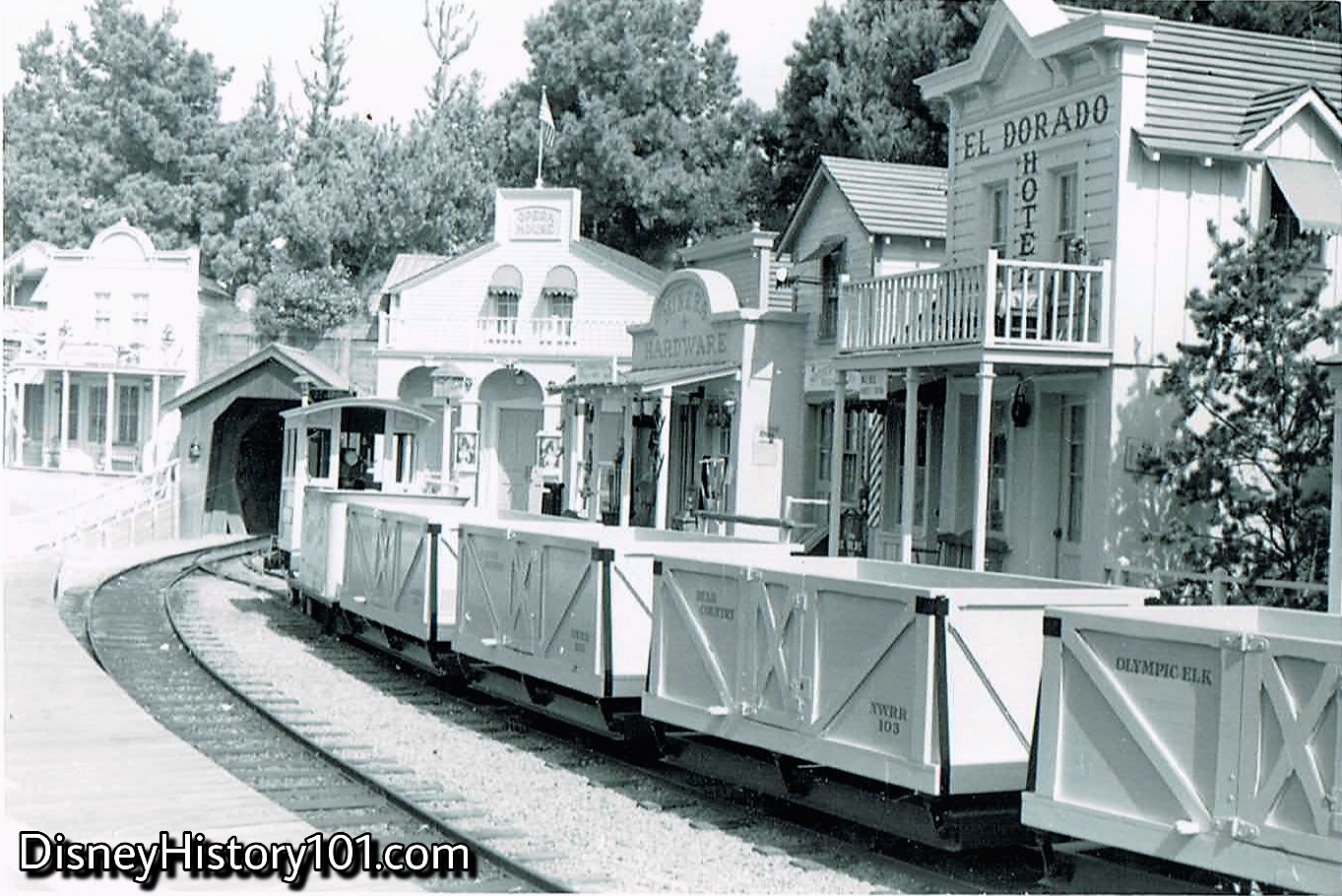
Rainbow Ridge, (November, 1963)
“Well…I see we’re comin’ back to Rainbow Ridge again.”
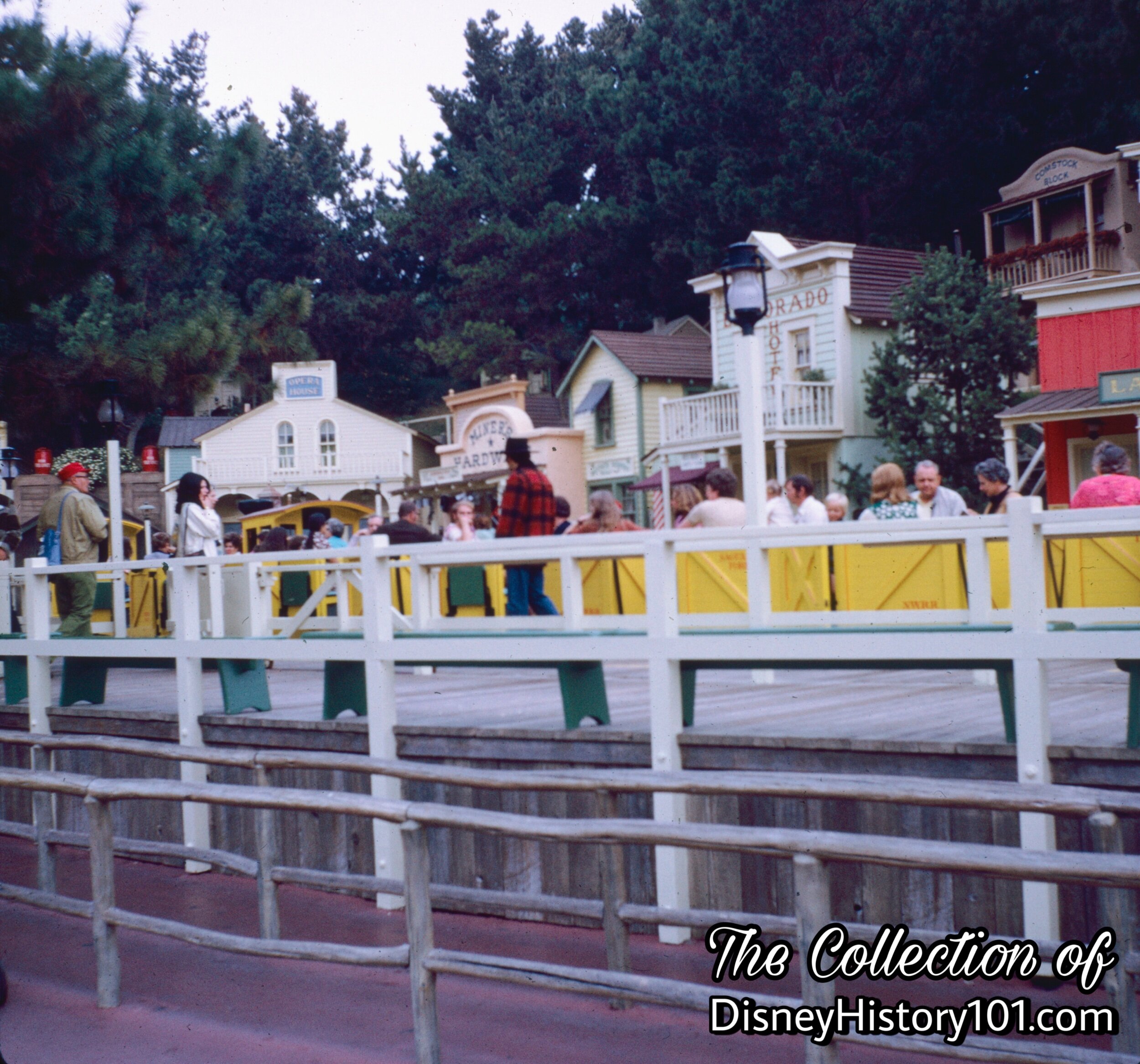
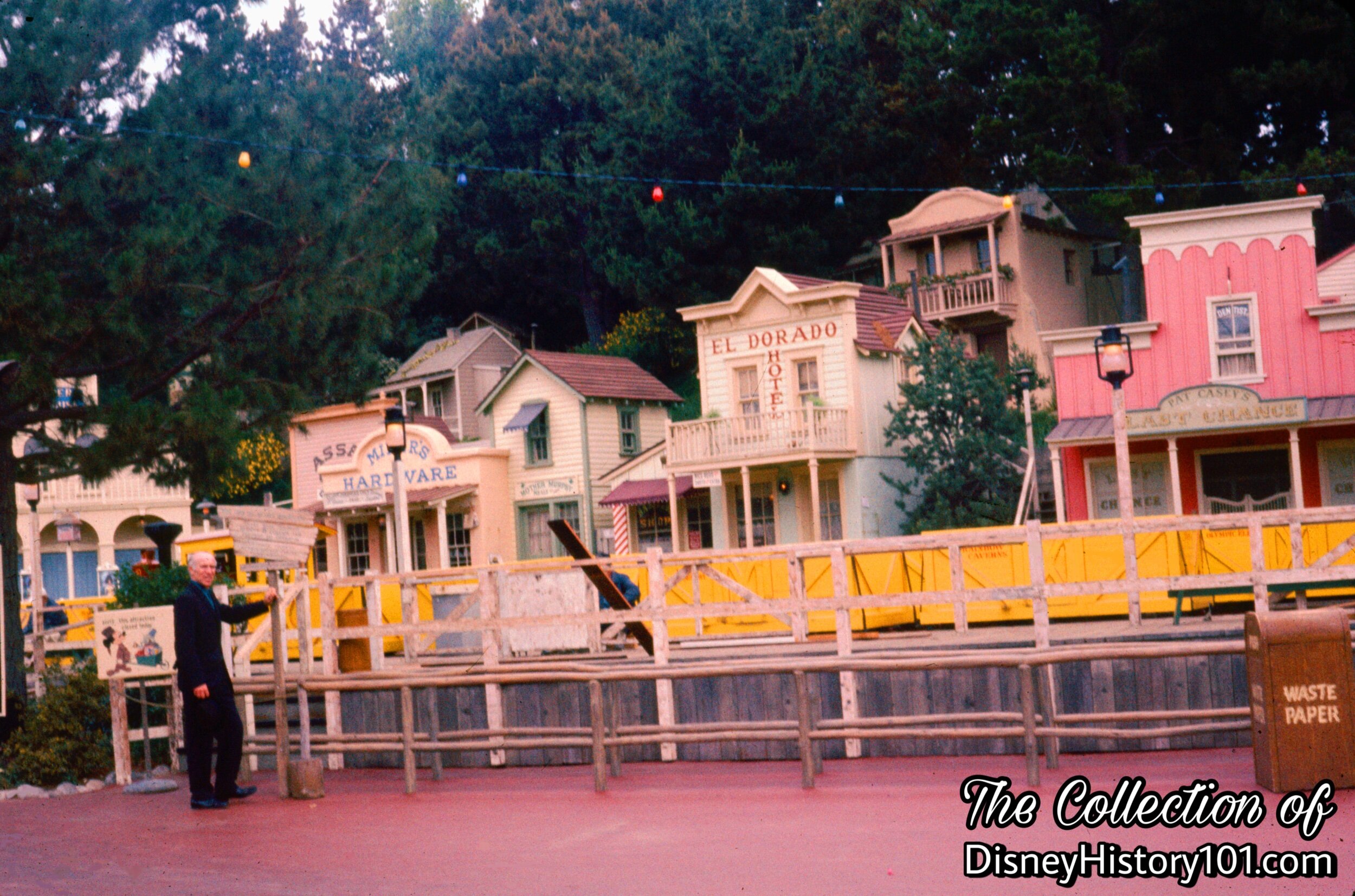
Rainbow Ridge Under Rehabilitation
Regular rehabilitations led to freshly repainted trains and even a new platform (pictured above, c. 1966).
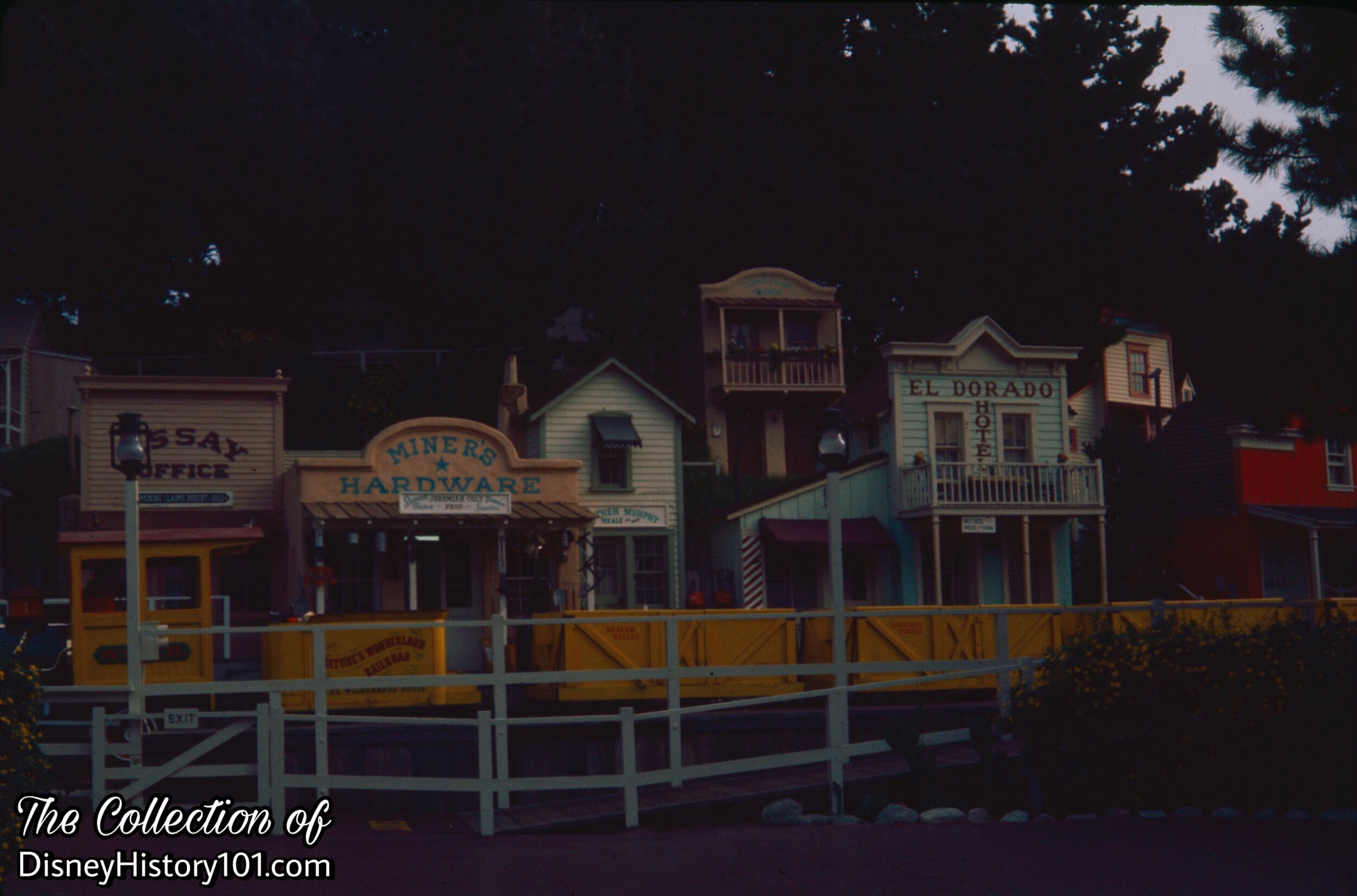
Rainbow Ridge, (October, 1968)
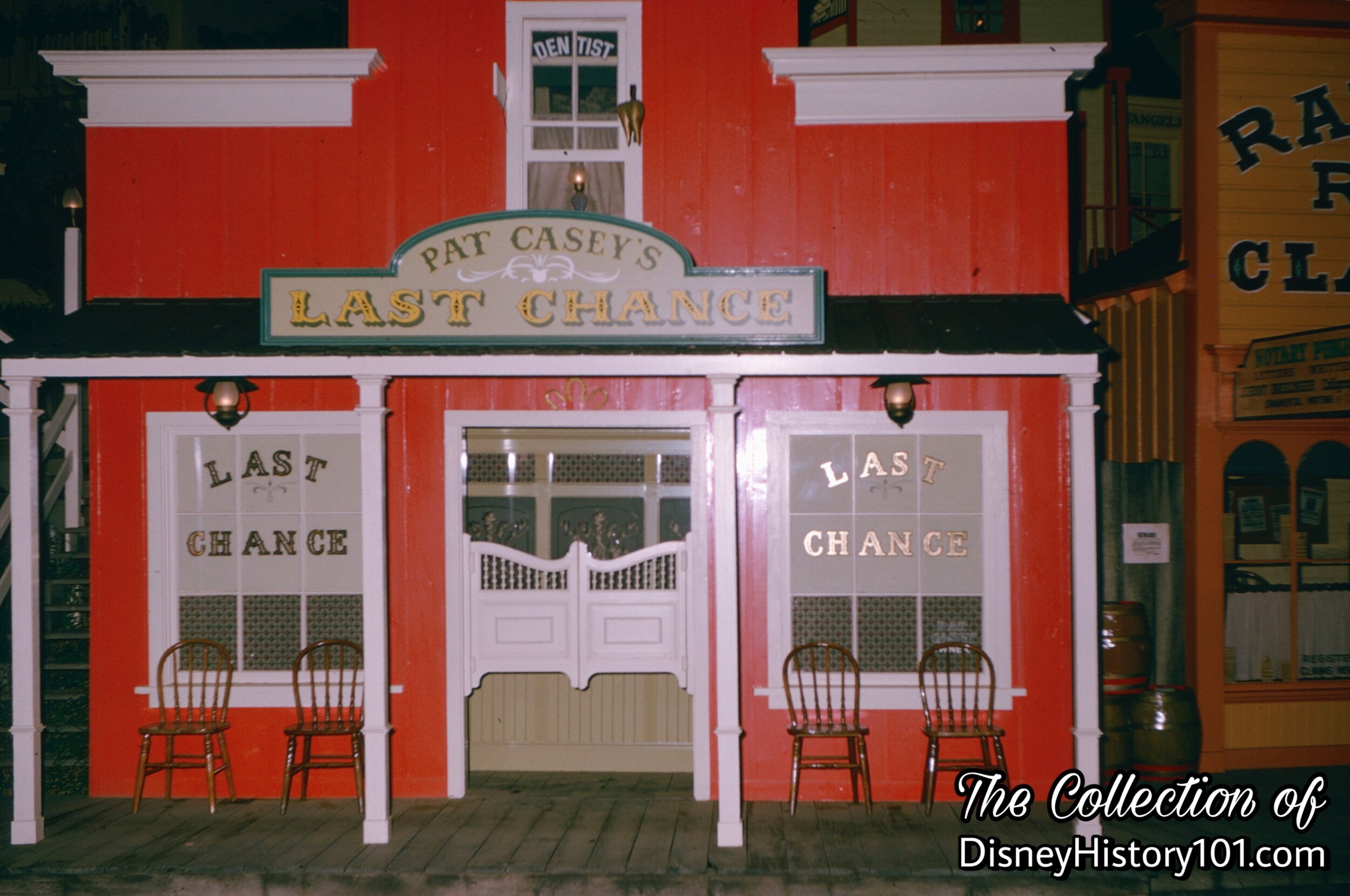
Rainbow Ridge
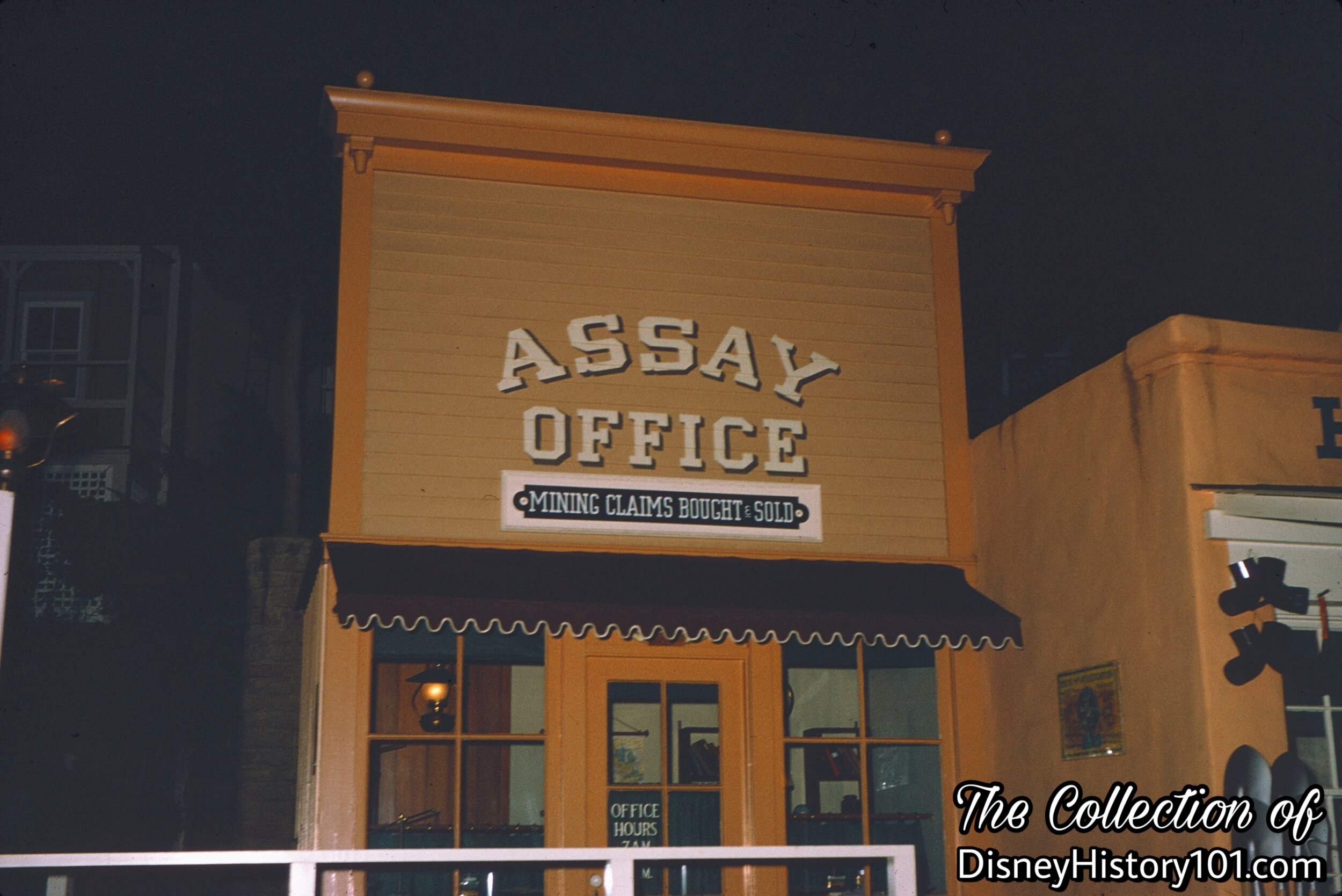
Rainbow Ridge
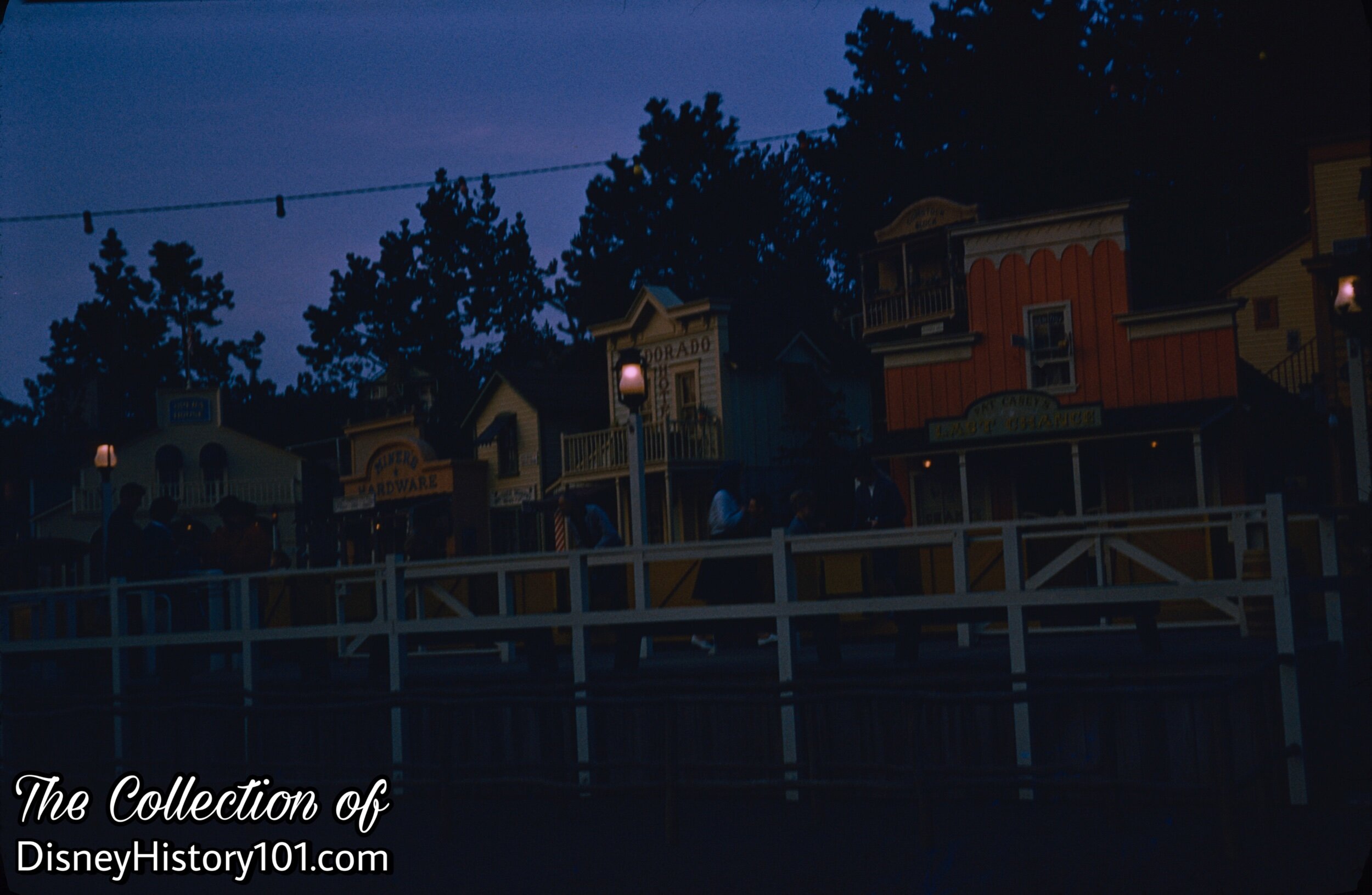
Rainbow Ridge, (December 11, 1960)
It looks like the sun is setting over the town of Rainbow Ridge and Natures Wonderland. Y’know, dusk is one o’ the best times to spot critters in their natural habitat!
Character lighting was themed to enhance the overall appearance and complement the interior, such as a chandelier or kerosene lamp. These add to the show, but don't necessarily create enough illumination for operation.
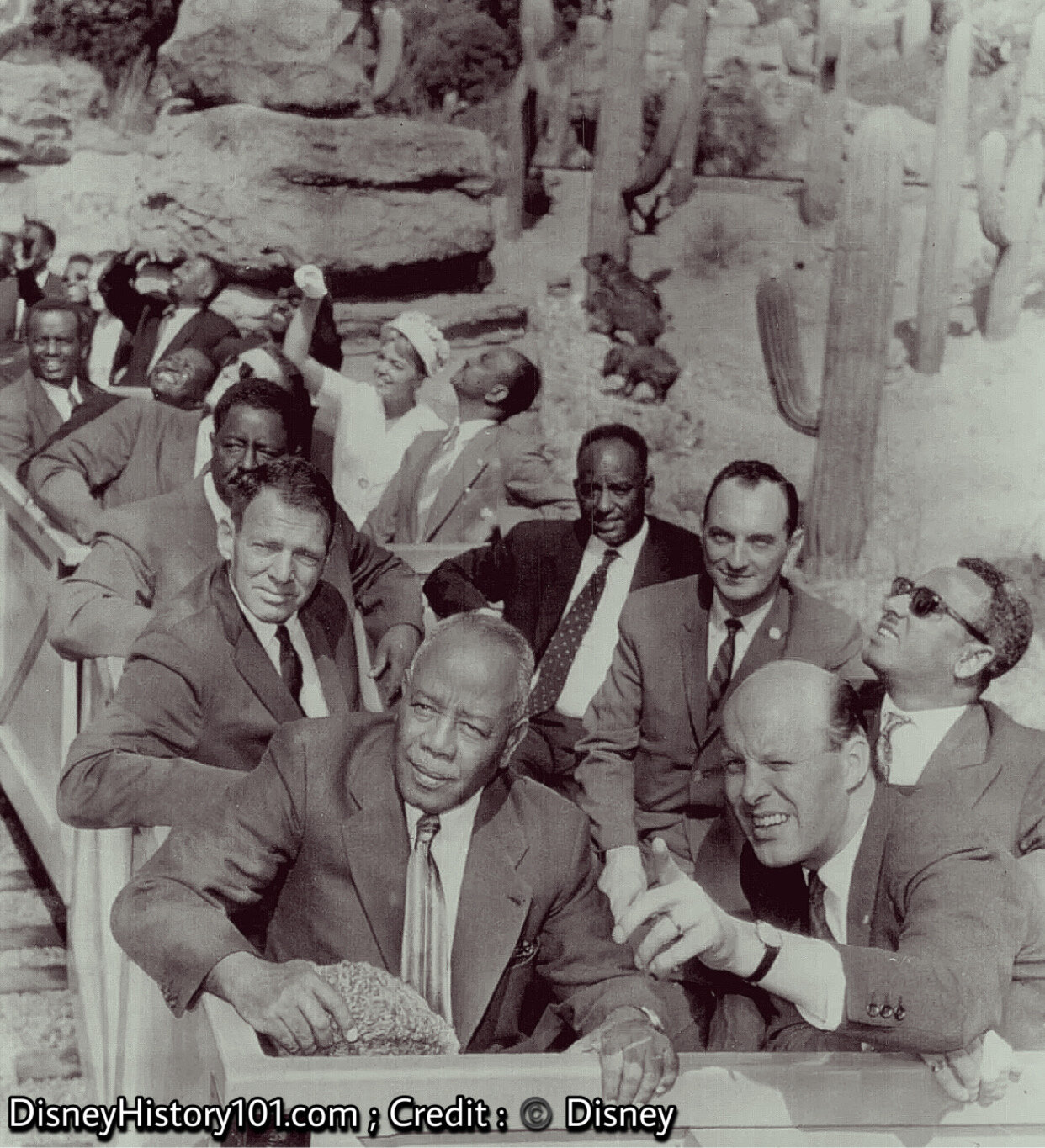
Balancing Rock Canyon
Quite a few notable events occurred around the town of Rainbow Ridge and Nature’s Wonderland. First, Frontierland personality Black Bart usually attempted to escape into the outskirts of Rainbow Ridge before being foiled by the local law enforcement. The latter was part of a concept (popularized through World’s Fairs, like Expo ‘67), which Walt pioneered since Disneyland’s earliest days - entertaining queue lines with live performers. Fantasyland had its life-size characters, both Adventureland and Tomorrowland had their live musical entertainment, and Frontierland had its gunfighters near the town of Rainbow Ridge! The area also served as a “set” of sorts, home to a Character experience or meet and greet with Black Bart, the Sheriff, and other “Gunfighters.”
“Walt Disney’s Guide to Disneyland” books (published for 1960) contained inserts advertising the new adventure. As the Mine Train Through Nature’s Wonderland was one adventure often included along Disneyland Guided Tours and V.I.P. Guided Tours of Disneyland, many notable guests recall experiencing this adventure!
The first President of Sudan visited Disneyland (on October 8th, 1961). “As a pack of Peccaries move though the Living Desert (in the background), President Ferik Ibrahim Abboud (left foreground) and his party look at the sights in show, from the Mine Train ride at Disneyland. Showing Abboud the points of interest is Henning Bodenhoff (right foreground) of Disneyland’s staff.”
(Credit : UPI Telephoto)

Tony Curtis’ hilarious adventures in Disneyland; Copyright © 1962, Universal International
Occasionally the town of Rainbow Ridge was utilized as a stage for filming (but more commonly) performances. On Wednesday afternoon (March 21,1962), Ben Harris “met with the Universal Pictures Survey Group and conducted them on a three hour tour of the Park in preparation for [their] forthcoming film.” Owning to this, both a Mine Train and the town of Rainbow Ridge can briefly be seen in the memorable and comedic chase scene of “40 Pounds of Trouble”, starring Tony Curtis (released 1962). Pictured above, Tony Curtis removes a mushroom costume near the Mine Train Through Nature’s Wonderland Queue.
The Mad Mountain Ramblers performed from a stage set up in this area during Grad Nite 1964. During the summer of 1966, Hearts and Flowers performed near the Mine Train from 1:00 PM - 8:00 PM.
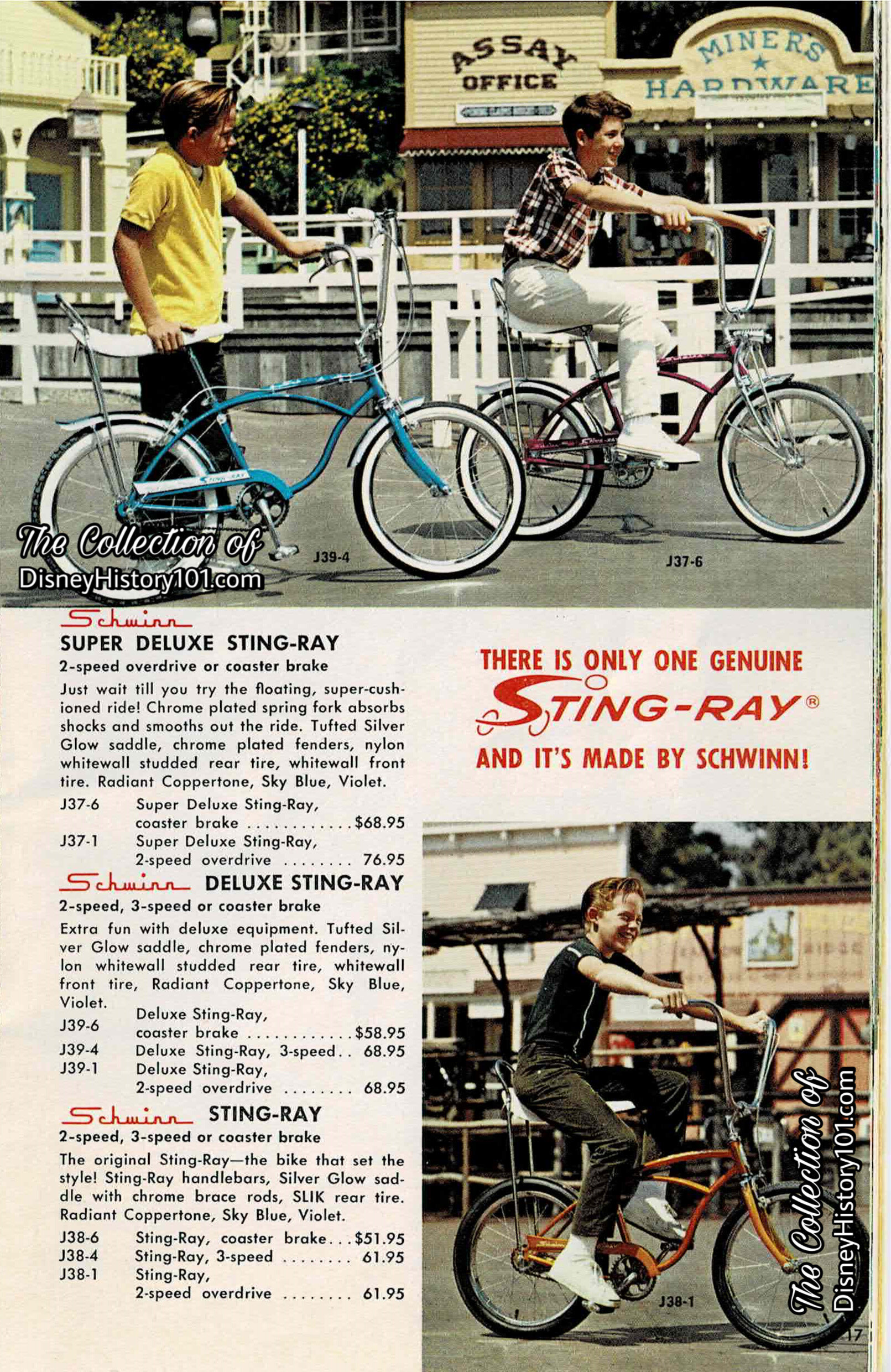
“Schwinn Takes A Trip To Disneyland” Catalogue Excerpt, (1966)
“Maintenance”
Since the beginning, the Four Keys of the DISNEYLAND Show (operating priorities in presenting the DISNEYLAND Show) have been present - Courtesy, Safety, Show, and Efficiency. Guided by these Four Keys, are Walt Disney Imagineers, who are always seeking out new magical opportunities to increase the efficiency, safety, and showquality of Disneyland adventures.
“55er” Jim Harman remembered “l used to fight gophers in Nature's Wonderland At that time, the sound speakers were hidden in false rocks and the gophers would fill the speakers in with earth. They sent me into combat with the critters… I remember how, during the course of a season, the ants would eat the real fur off of the birds and animals.” During rainy seasons, the animals were covered to protect their fur and feathers.
In the name of the overall Park Show Quality, many rehabilitations kept Rainbow Ridge, and all of Nature’s Wonderland looking like a true-life adventure. For instance, Bob Johnson (who began working as the Park’s taxidermist under Bud Washo around 1960) made “the rounds of his 230 animals in Frontierland,” according to Backstage Disneyland (Fall of 1965). The same article continues : “In other scenes Bob has added a domestic touch by creating three baby skunks and two baby owls and placing them next to their adopted parents. Bob is also good at improvising. The plastic claws on the black bear broke repeatedly on the bottom of the stream as the bear scooped for fish. Bob solved the problem by designing a set of rubber claws.” Bob even rehabilitated the most difficult to recover - “the two diving bears” which “bob up and down and turn from side to side. The skin must have enough slack to allow movement yet not look too shabby.”
Owning to the maintenance and rehabilitations, Disneyland (and the Mine Trains) have occasionally been utilized as a backdrop for many advertising campaigns made for television and publications (like magazines and newspapers). For instance, during September of 1962, Max Stewart, Larry Clemmons, and Art Crookshank (of the Walt Disney Studio) filmed and shot scenery from a Mine Train for Studio Production #3185. In their “minutes” they described their shoot this way : “We moved to the Mine Train Loading Dock. The Mine Train was held up (8) minutes. We loaded two Mine Trains, backed them up into the Rainbow Caverns and cued them non-stop through the loading dock.”
About two years later, during July of 1964 (and in the name of Show Quality, before it was so-named), Bob Matheison (of the Customer Relations Division) was studying an area near the Mine Train and coming up with “a recommendation as to whether… [Disneyland] should have musicians there on Friday and Saturday evenings, within budget.” About one year later, photographs for the “Schwinn Takes A Trip To Disneyland” catalogue (including this one pictured above, where the town of Rainbow Ridge used as a background for the new Schwinn Fastback Sting-Ray models) were both shot at Disneyland during the Disneyland Tencennial celebration of 1965.
By 1964, the character of the 11th hole of The Magic Kingdom Golf Course of the Disneyland Hotel Golf Centre was still themed after the Painted Desert.
From April 30 to May 25, 1973 the Mine Ride was closed for a 4-week rehabilitation.
From late 1974 through early 1975, Marc Davis and George McGinnis worked on several proposals for the addition of an earthquake sequence for the Mine Train Thru Nature’s Wonderland in which the locomotive would detach from the train and its cars of passengers would “run away”, passing molten lava, a disturbed owl and a panicked bear. But they never got around to developing this concept further.
At least one Mine Train was used to carry Karen and Richard Carpenter during the filming of several scenes for their “Mr. Postman” music video released in 1975.
But by 1977, it was time to say “goodbye” and bid “farewell” to the two acres surrounding Rainbow Ridge as we knew it. The town of Rainbow Ridge disappeared from the hills overlooking Frontierland some time in 1977, when construction began, of the soon-to-be-iconic Big Thunder Mountain - ‘the wildest ride in the wilderness!’ Most of the buildings were temporarily moved to the Backstage, in order to be redeveloped for their relocation to Thunder Ridge. Some (like the Panhandle Hotel and the Big Thunder Epitaph) were present in 1956, and went on to exist for several decades.
Maintenance salvage and tree boxing began around March of 1977, to “determine those elements of scenery and animation which can be saved from Nature’s Wonderland and put to future use.” Any critters that could be salvaged needed to be cleared out by May, when major demolition was scheduled to begin. [Disneyland LINE, February 24, 1977] Some simple figures and static figures (like coyotes, desert deer and marmots) were preserved, or repurposed, while a few that could not be moved, were either paved over or left in the river.
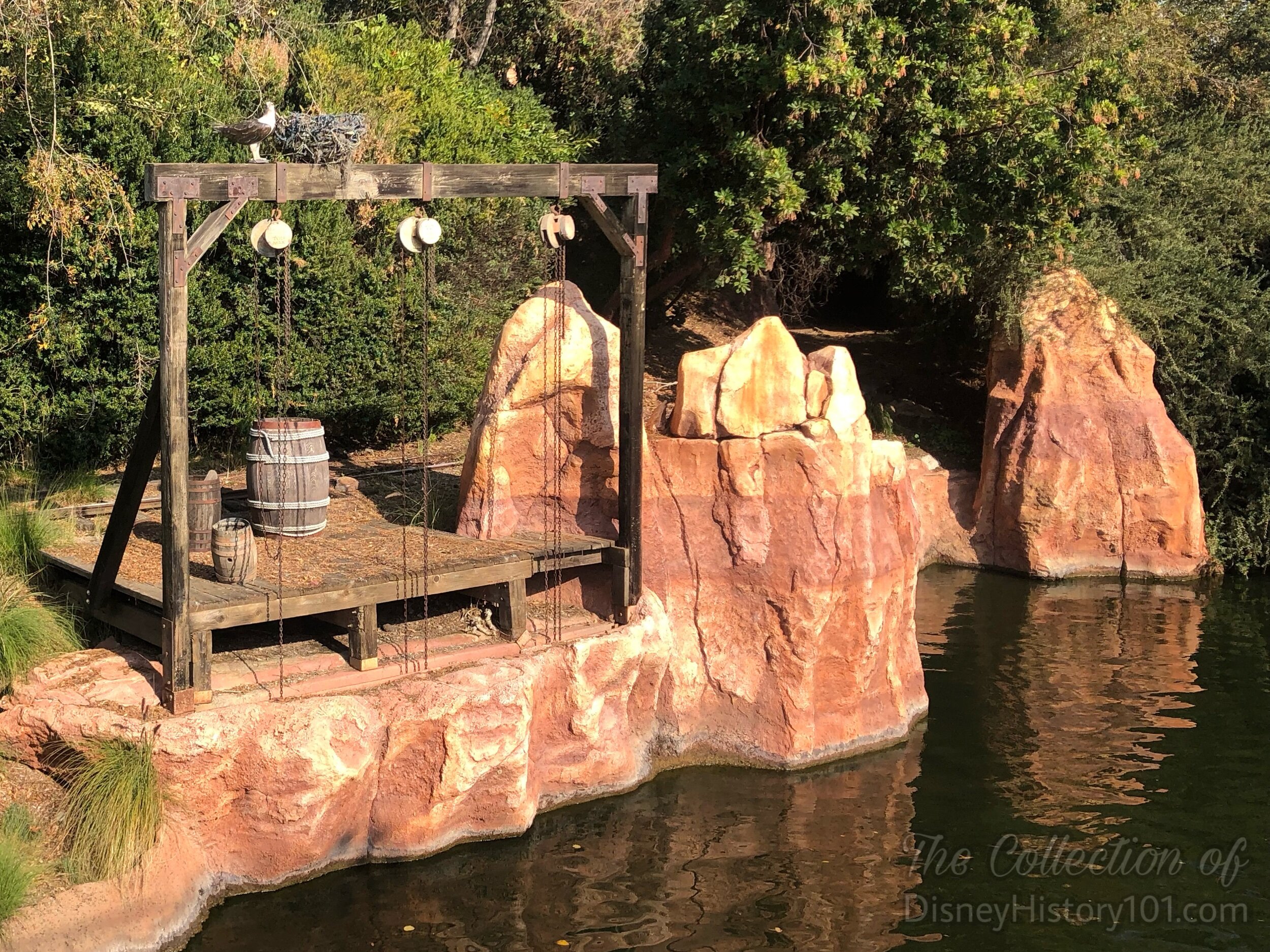
Big Thunder Falls RockWork (the present)
Some descendants of Nature’s Wonderland still populate parts of Frontierland. For instance, “the legend of lobo” lives on near Big Thunder Mountain. Last (but not least), thanks to the c.1984 Imagineered renderings of Gene Johnson, at least one old Mine Train (the victim of a land slide) sat abandoned on tracks along the Rivers of America, where it became home to quite a few “playful marmots” from about 1985 to 2010. A 1984 report revealed that the Mine Ride Cars weighed 2,200 lbs. while the Mine Ride power unit weighed 9,600 lbs.
You may recall once purchasing a print of Gene’s concept through The Disney Gallery.
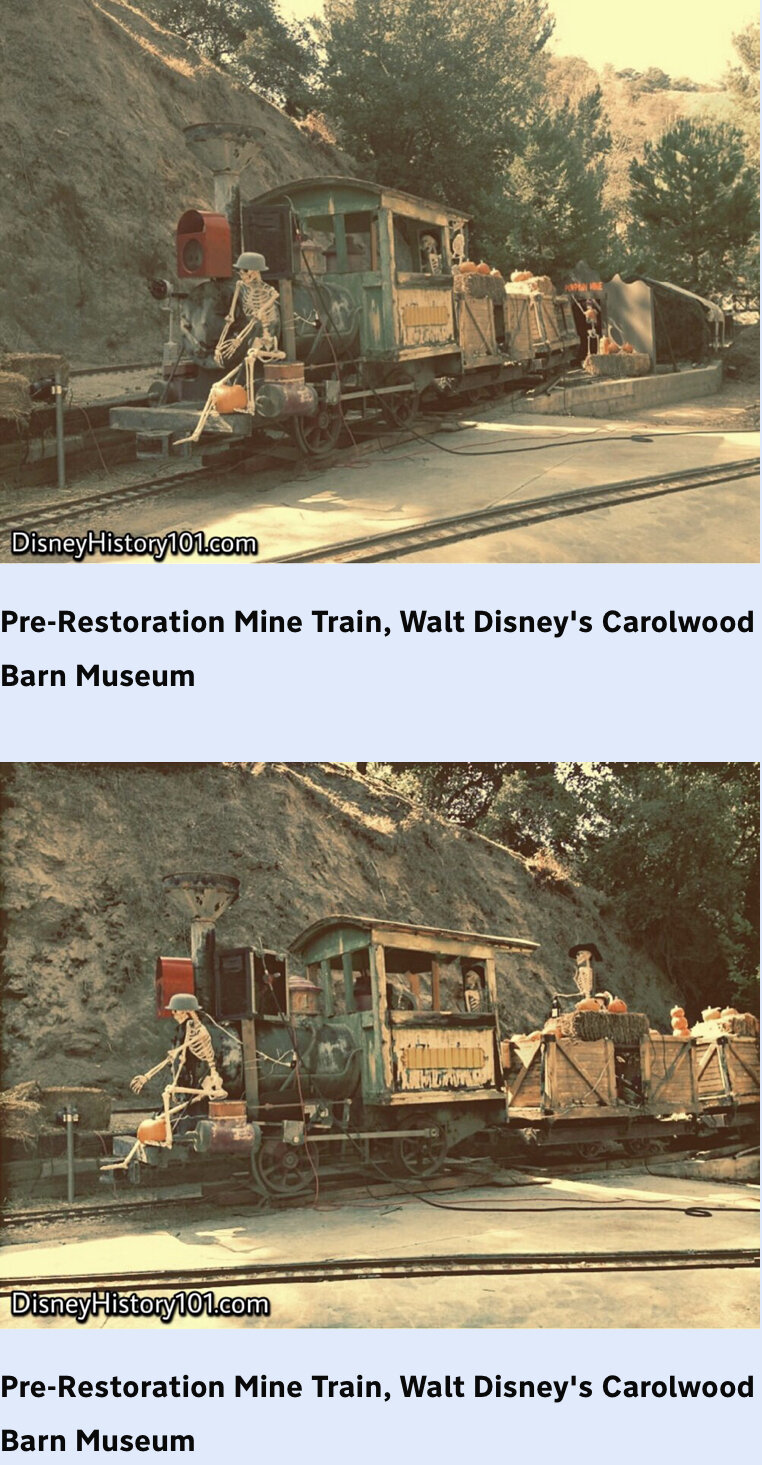
We’ve heard of some strange happenings…stories of an abandoned old mine train vanishing from tracks along the Rivers of America (some time in 2010), and reappearing some 35 miles away in Griffith Park, California (during 2015)!
After some negotiations and an agreement between the Walt Disney Company and the Carolwood Foundation and Carolwood Pacific Historical Society (which is known for its preservative nature toward train-related Walt Disney artifacts), the Mine Train locomotive, tender, and gondolas disappeared yet again (but this time for careful rehabilitation). In May of 2019, former Orange County Register contributor Mark Eades wrote a wonderful sneak preview of the Mine Train locomotive, tender, and gondola, as well as an update on the “Disneyland Mine Train Restoration Under Way” [which can be read by visiting the LINK HERE].
Finally (in 2019), one of the gondolas was unveiled through a limited engagement held at the MUZEO Museum and Cultural Center in Anaheim (another fine institution which perseveres some Disneyland history in relation to the story of Orange County)!
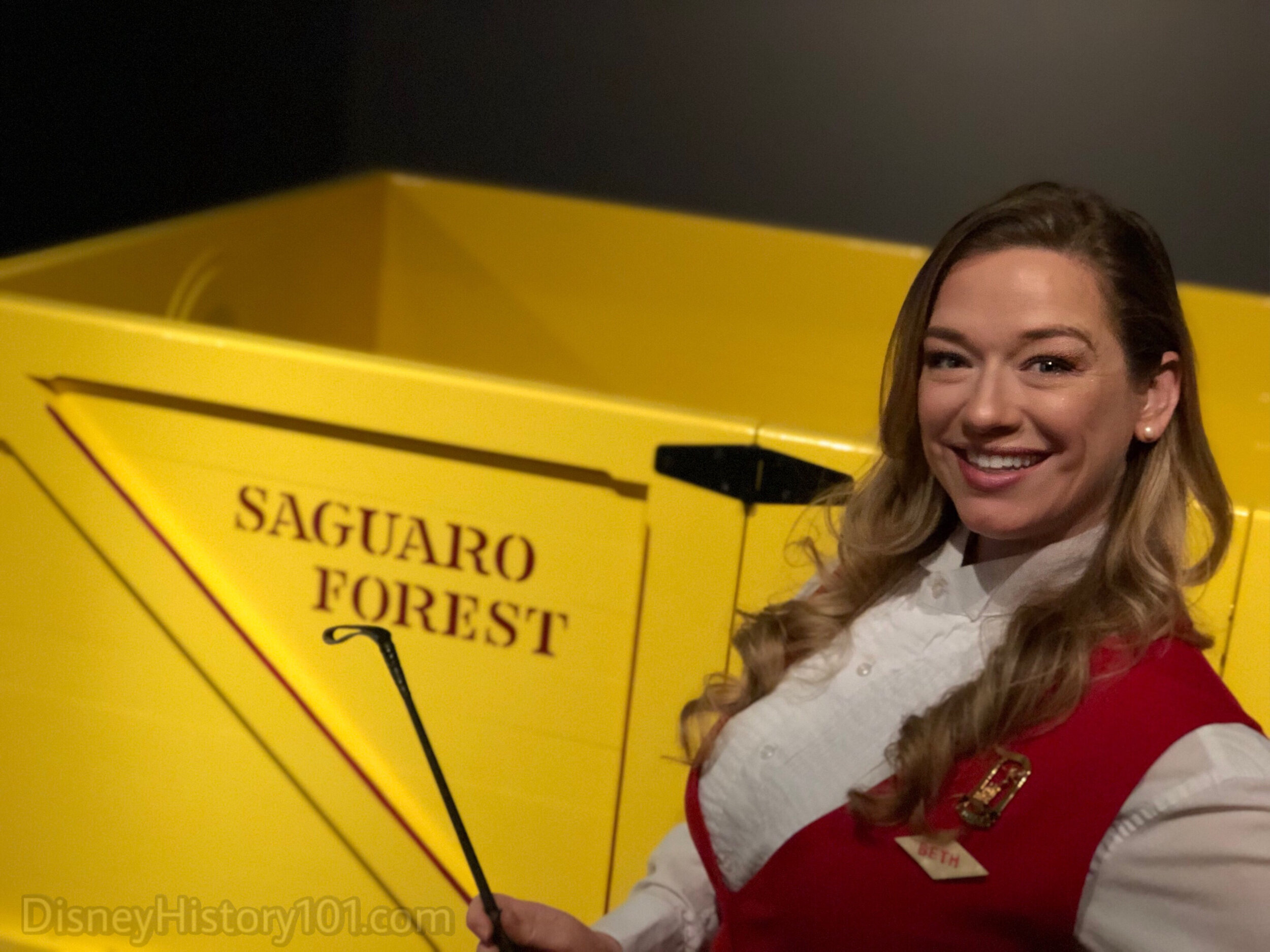
2019, Unveiling of a refurbished Nature's Wonderland Railroad Mine Train MUZEO Express

2019, Unveiling of a refurbished Nature's Wonderland Railroad Mine Train MUZEO Express
A designation has been applied to one of the two cars being restored - SAGUARO FOREST! What will the other cars designation be?
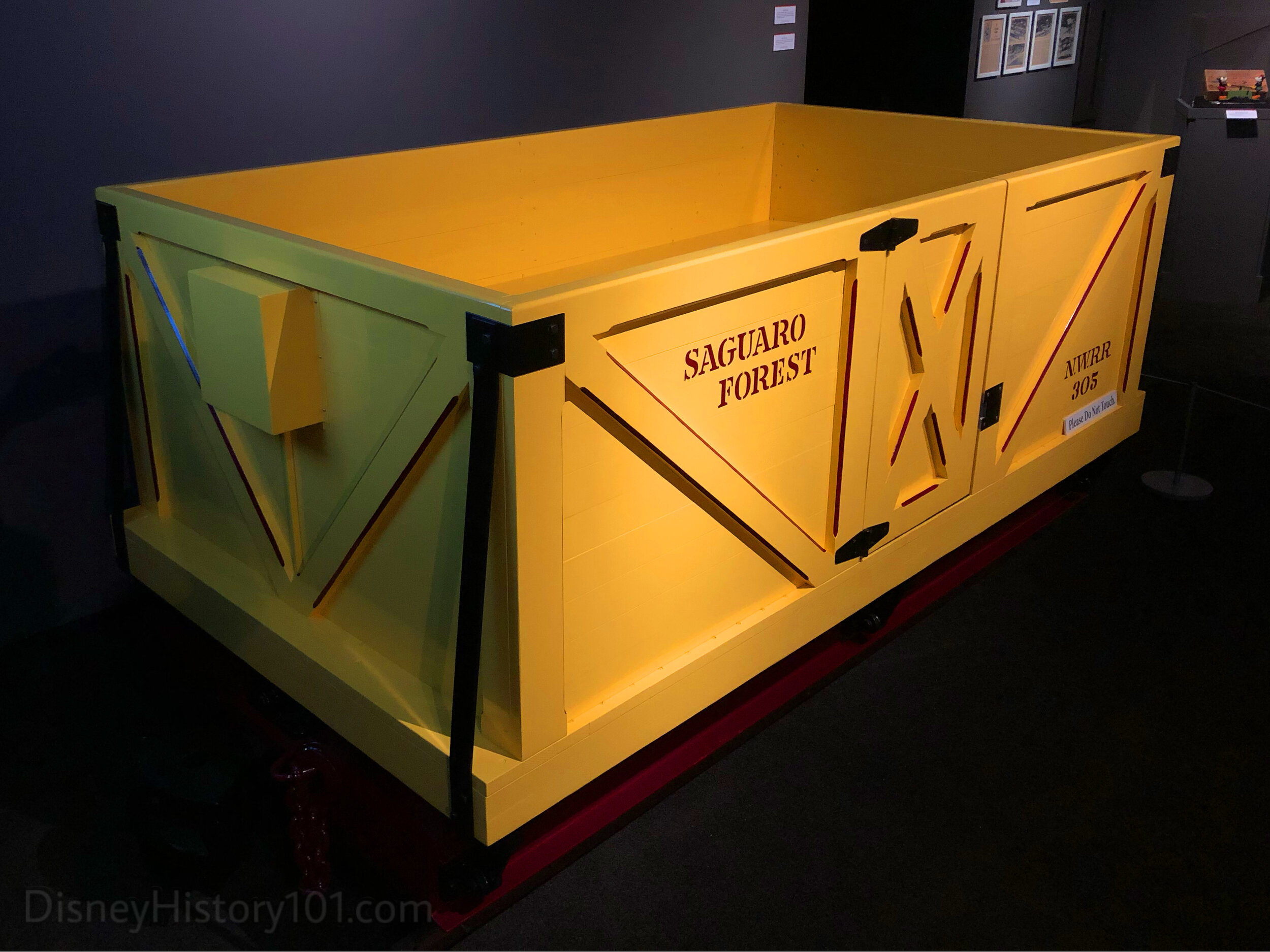
2019, Unveiling of a refurbished Nature's Wonderland Railroad Mine Train MUZEO Express
We’re looking at one of the “Mine Train Through Natures Wonderland” gondolas restored by TLJ Construction, Incorporated in Burbank, California. This much anticipated preview comes courtesy of The MUZEO museum (in Anaheim), and the Carolwood Foundation. According to curators : “this mine car was one of seven passenger cars coupled to Locomotive #1 on the Nature’s Wonderland Railroad.”
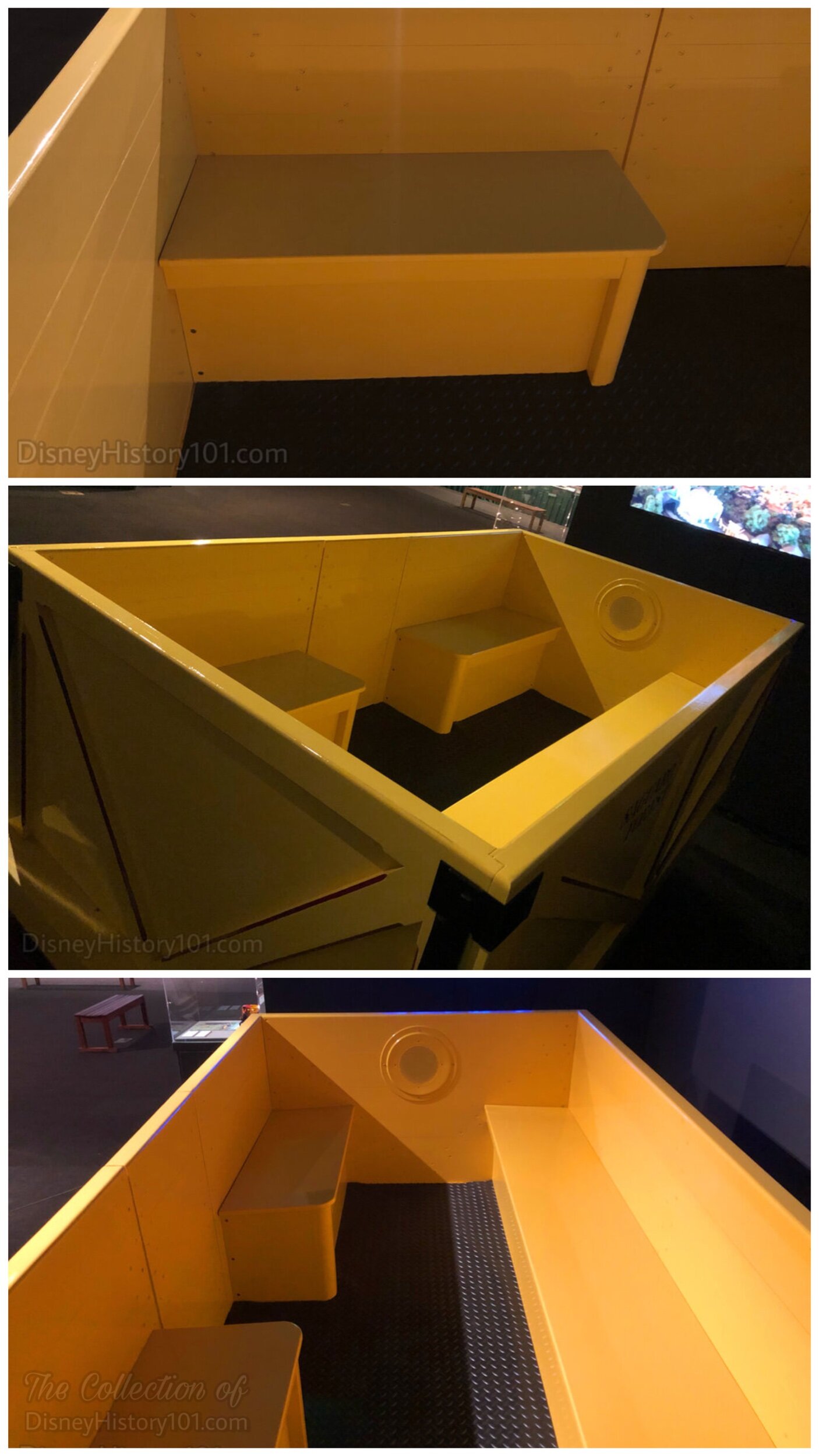
2019, Unveiling of a refurbished Nature's Wonderland Railroad Mine Train MUZEO Express
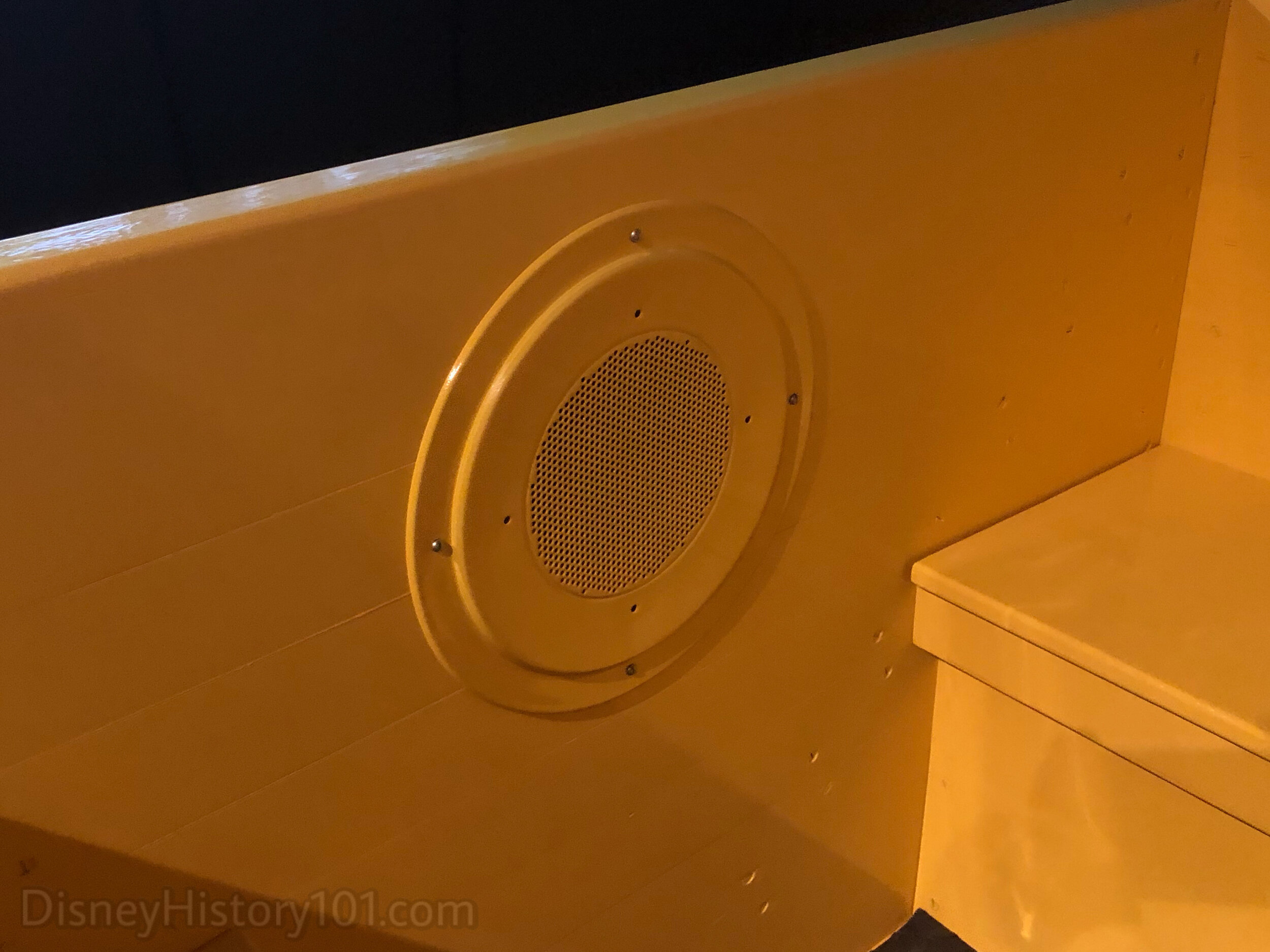
2019, Unveiling of a refurbished Nature's Wonderland Railroad Mine Train MUZEO Express
Will this speaker eventually broadcast a version of the pre-recorded spiel? Only time will tell.
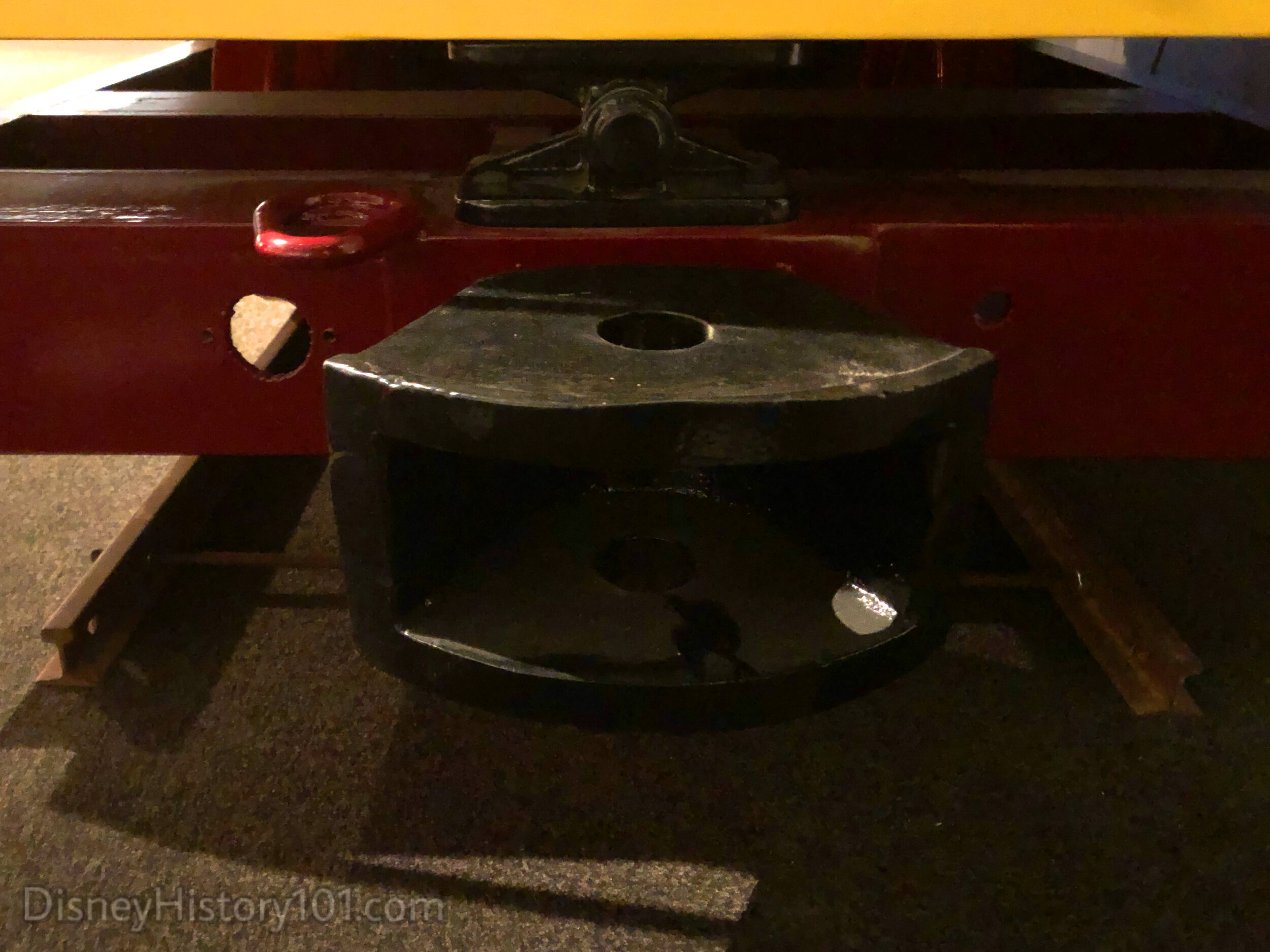
2019, Unveiling of a refurbished Nature's Wonderland Railroad Mine Train MUZEO Express
Many of the original metallic parts (like this coupler), were the first parts to be cleaned up and restored to their former glory.
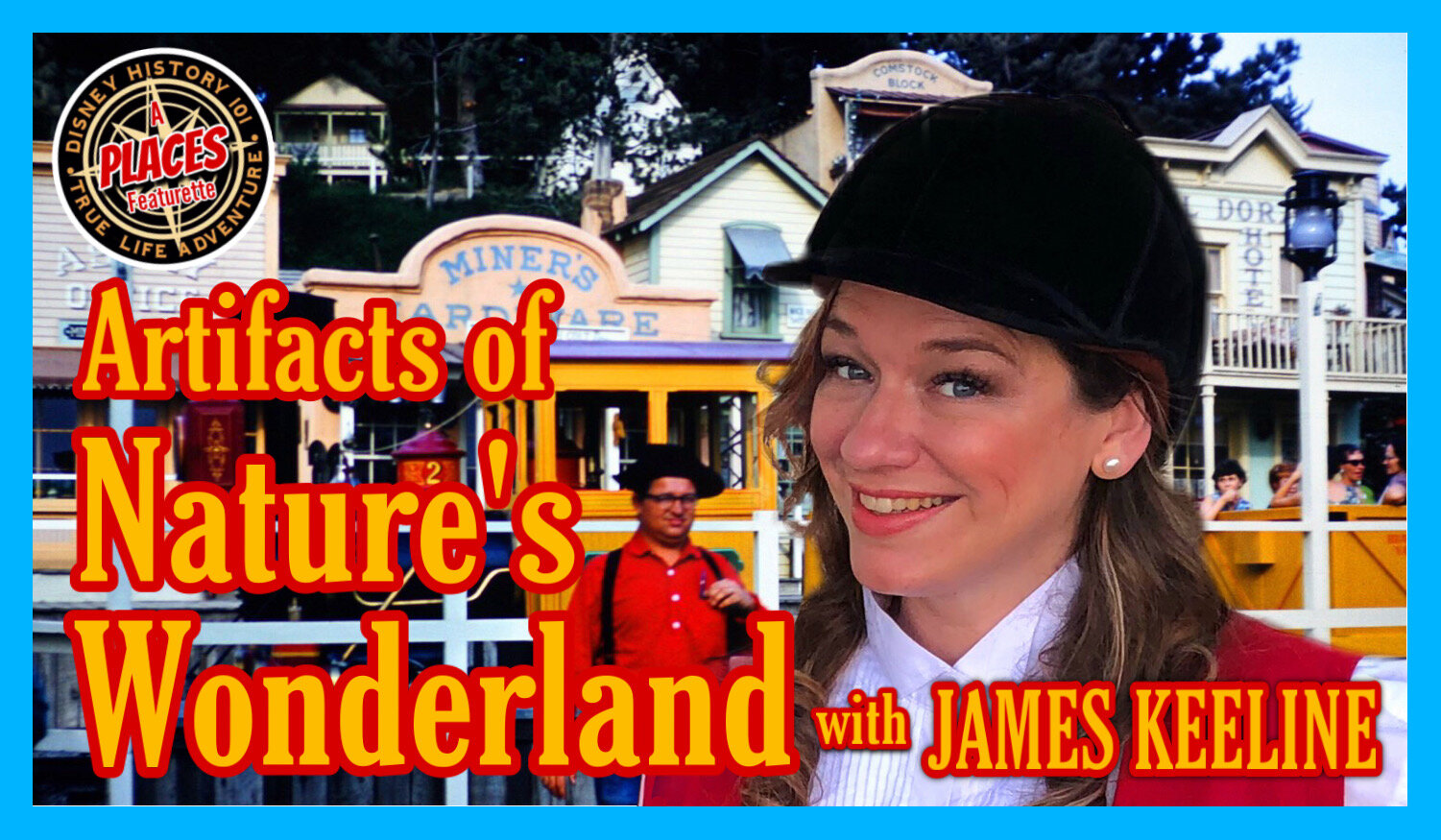
"EPISODE 4 - ARTIFACTS OF NATURE'S WONDERLAND"
Here, Mine Train enthusiast and historian James Keeline shares a few artifacts from the mining town of Rainbow Ridge, and “a tale of two critters” that once inhabited the desert-scape of the Painted Desert!
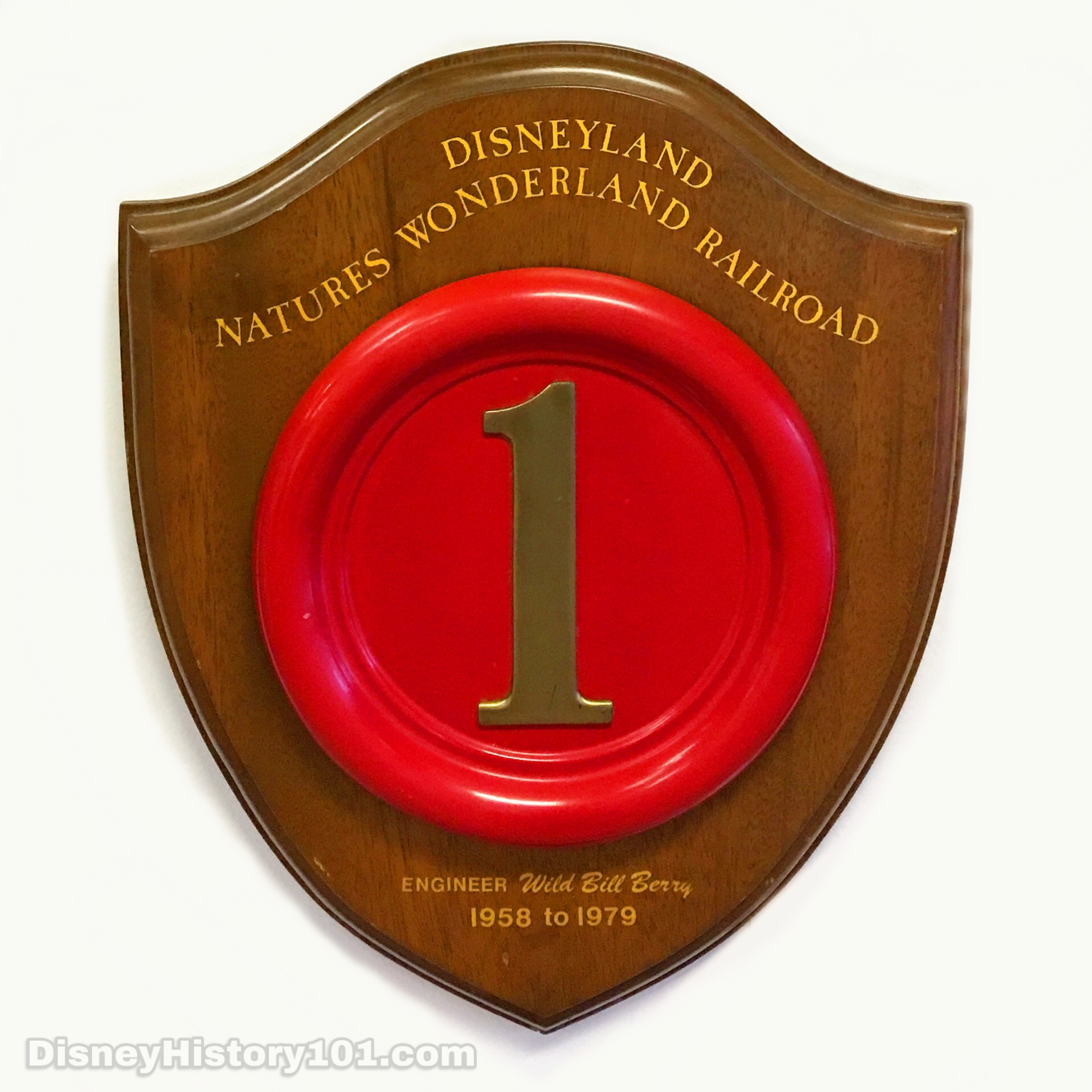
Engine No. 1 Mine Train Plate “Order of the Red Handkerchief” Plaque
Upon retirement, replica engine plates were made into plaques. These plaques were given to members of the Order of the Red Handkerchief. This particular plaque was bestowed upon “Wild Bill” Berry, an engineer who operated engines from 1958, right up to the attraction’s close in 1979!
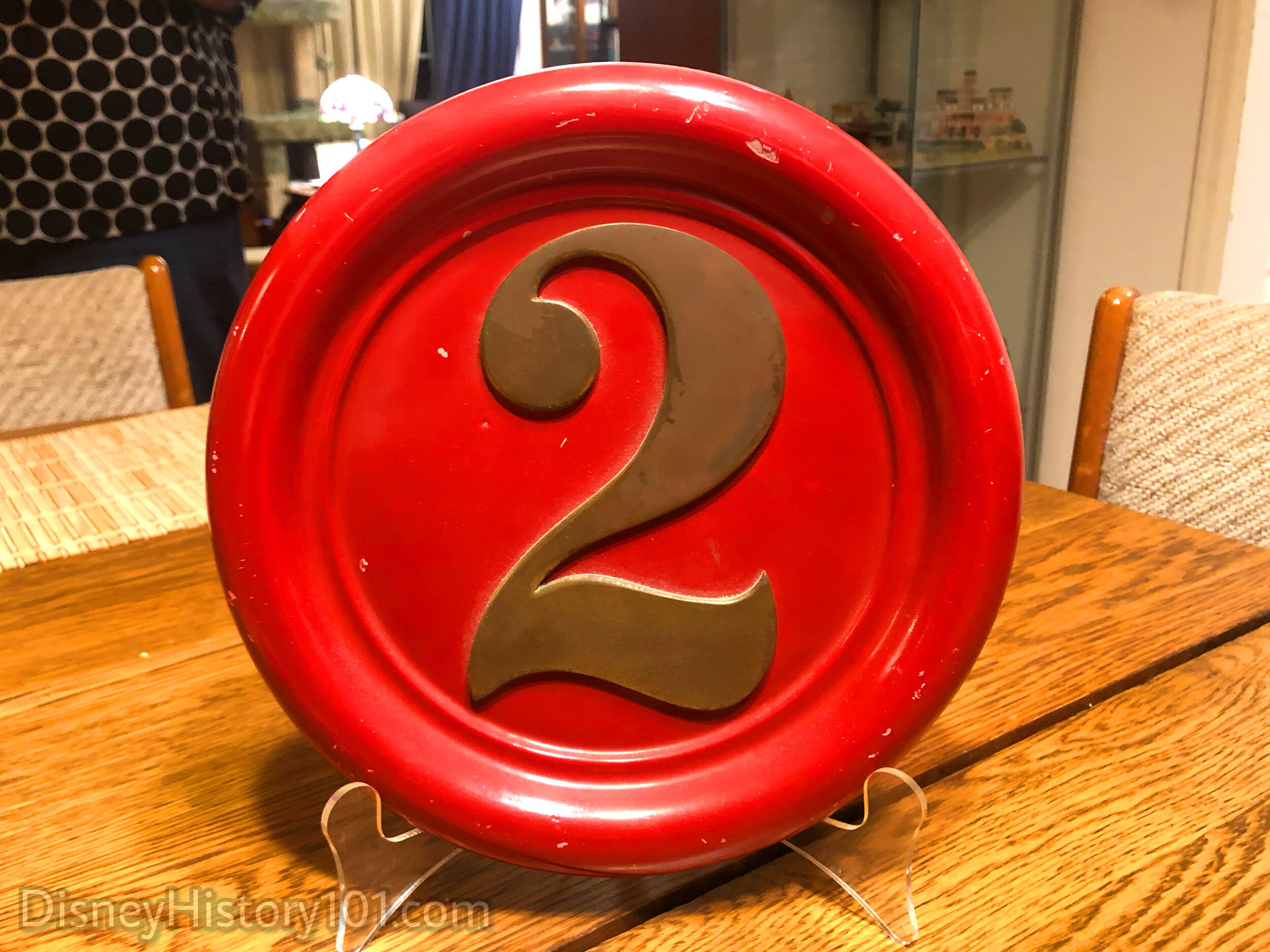
Engine No. 2 Mine Train Plate (c. 1960-1977), The Collection of James Keeline
This is actually one of four Number Plates, from the Rainbow Mining & Exploration Company era (of green-colored mine trains). The trains of that era were 3, 4, and 5, and this Number Plate is actually No.5 repurposed into Plate No.2.
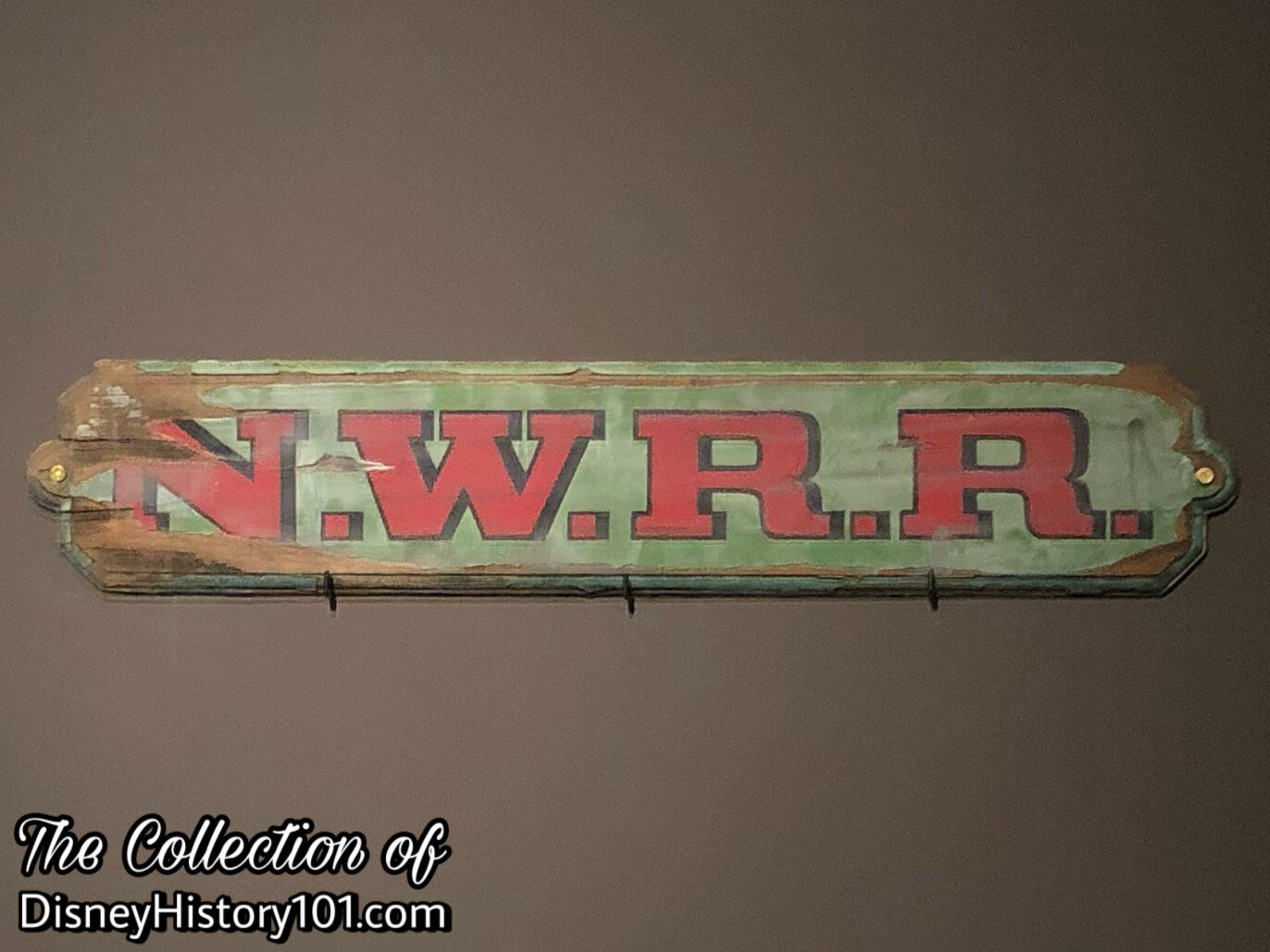
Nature’s Wonderland Railroad Sign
(Property of the Walt Disney Archives ; On loan from Walt Disney’s Carolwood Barn)
According to curators : “The Nature’s Wonderland Railroad sign is originally from Locomotive #1 of the Mine Train Through Nature’s Wonderland, which ceased operations in 1977 and was later replaced by Big Thunder Mountain Railroad.”

